
Aftershocks: Pandemic Politics and the End of the Old International Order
by
Colin Kahl
and
Thomas Wright
Published 23 Aug 2021
“Coronavirus: Prime Minister Boris Johnson Tests Positive,” BBC, March 27, 2020, https://www.bbc.com/news/uk-52060791; “What’s Gone Wrong with Covid-19 Testing in Britain,” The Economist, April 4, 2020, https://www.economist.com/britain/2020/04/04/whats-gone-wrong-with-covid-19-testing-in-britain; Andrew MacAskill, “UK Defends Coronavirus Response After Reuters Investigation,” Reuters, April 9, 2020, https://www.reuters.com/article/us-health-coronavirus-britain-modelling/uk-defends-coronavirus-response-after-reuters-investigation-idUSKCN21R33D. 70. Colin Dwyer, “Boris Johnson: U.K. Is ‘Past the Peak’ of Its Coronavirus Outbreak,” NPR, April 30, 2020, https://www.npr.org/sections/coronavirus-live-updates/2020/04/30/848496099/boris-johnson-u-k-is-past-the-peak-of-its-coronavirus-outbreak. 71. “Coronavirus: Boris Johnson Says UK Is Past the Peak of Outbreak,” BBC, April 30, 2020, https://www.bbc.com/news/uk-52493500; “In England, Reopening Has Not Been the Disaster Many Feared,” The Economist, September 3, 2020, https://www.economist.com/britain/2020/09/03/in-england-reopening-has-not-been-the-disaster-many-feared; James Gallagher, “Coronavirus: Oxford Vaccine Triggers Immune Response,” BBC, July 20, 2020, https://www.bbc.com/news/uk-53469839; Alistair Smout, “First Human Trial of Oxford Coronavirus Vaccine Shows Promise,” Reuters, July 20, 2020, https://www.reuters.com/article/us-health-coronavirus-oxford-vaccine/first-human-trial-of-oxford-coronavirus-vaccine-shows-promise-idUSKCN24L1MP. 72.
…
See Chapter 7 for more details. 9. “Europe Needs New Measures to Tackle Coronavirus Threat: Italian President,” Reuters, March 27, 2020, https://www.reuters.com/article/us-health-coronavirus-eu-italy/europe-needs-new-measures-to-tackle-coronavirus-threat-italian-president-idUSKBN21E36G. 10. “Germany Bans Export of Medical Protection Gear Due to Coronavirus,” Reuters, March 4, 2020, https://www.reuters.com/article/health-coronavirus-germany-exports/germany-bans-export-of-medical-protection-gear-due-to-coronavirus-idUSL8N2AX3D9. 11. “French Mayor Defends Smurf Rally After Outcry over Virus,” France 24, March 10, 2020, https://www.france24.com/en/20200310-french-mayor-defends-smurf-rally-after-outcry-over-virus; Antonia Noori Farzan, “‘We Must Not Stop Living’: French Mayor Defends Smurf Rally That Drew Thousands amid Coronavirus Fears,” Washington Post, March 11, 2020, https://www.washingtonpost.com/nation/2020/03/11/smurf-coronavirus-france/. 12.
…
Hiromi Murakami, “Resolved: Japan’s Response to Covid-19 Is Prudent,” CSIS, May 20, 2020, https://www.csis.org/analysis/resolved-japans-response-covid-19-prudent; “Avoid the Three Cs,” Prime Minister’s Office of Japan, https://www.mhlw.go.jp/content/10900000/000619576.pdf; Motoko Rich, Hisako Ueno, and Makiko Inoue, “Japan Declared a Coronavirus Emergency. Is It Too Late?,” New York Times, April 16, 2020, https://www.nytimes.com/2020/04/07/world/asia/japan-coronavirus-emergency.html. 47. William Sposato, “Japan’s Halfhearted Coronavirus Measures Are Working Anyway,” Foreign Policy, May 14, 2020, https://foreignpolicy.com/2020/05/14/japan-coronavirus-pandemic-lockdown-testing/; Lawrence Repeta, “The Coronavirus and Japan’s Constitution,” Japan Times, April 14, 2020, https://www.japantimes.co.jp/opinion/2020/04/14/commentary/japan-commentary/coronavirus-japans-constitution/; Mari Yamaguchi, “Japan’s State of Emergency Is No Lockdown.

Uncontrolled Spread: Why COVID-19 Crushed Us and How We Can Defeat the Next Pandemic
by
Scott Gottlieb
Published 20 Sep 2021
Chinese Scientist at the Center of COVID-19 Origin Theories Speaks Out,” Science, June 24, 2021; and Zeynep Tufekci, “Where Did the Coronavirus Come From? What We Already Know Is Troubling.,” New York Times, June 25, 2021. 13.Xing-Yi Ge et al., “Isolation and Characterization of a Bat SARS-Like Coronavirus That Uses the ACE2 Receptor,” Nature 503 (2013): 535–8. 14.Xing-Lou Yang et al., “Isolation and Characterization of a Novel Bat Coronavirus Closely Related to the Direct Progenitor of Severe Acute Respiratory Syndrome Coronavirus,” Journal of Virology 90, no. 6 (2016). 15.Hongying Li et al., “Human-Animal Interactions and Bat Coronavirus Spillover Potential among Rural Residents in Southern China,” Biosafety and Health 1, no. 2 (2019): 84–90. 16.Ning Wang et al., “Serological Evidence of Bat SARS-Related Coronavirus Infection in Humans, China,” Virologica Sinica 33, no. 1 (2018): 104–7. 17.Christophe Fraser et al., “Factors That Make an Infectious Disease Outbreak Controllable,” Proceedings of the National Academy of Sciences 101, no. 16 (2004): 6146–51. 18.Scott Gottlieb, “The Casualties That Never Arrived,” British Medical Journal 323, no. 7314 (2001): 654. 19.Keith Bradsher and Liz Alderman, “The World Needs Masks.
…
Osterholm and Mark Olshaker, Deadliest Enemy (New York: Little, Brown Spark, 2017). 14.Ibid; and Laura-Isobel McCall, Jair Siqueira-Neto, and James McKerrow, “Location, Location, Location: Five Facts About Tissue Tropism and Pathogenesis,” PLOS Pathogology 12, no. 5 (2016): e1005519. 15.Ulrich Spengler and Jacob Nattermann, “Immunopathogenesis in Hepatitis C Virus Cirrhosis,” Clinical Science 112, no. 3 (2007): 141–55. 16.Jennifer Tisoncik et al., “Into the Eye of the Cytokine Storm,” Microbiology and Molecular Biology Review 76, no. 1 (2012): 16–32; and Alison George, “Cytokine Storm: An Overreaction to the Body’s Immune System,” New Scientist. 17.Yu et al., “In Depth: How Early Coronavirus Signs Were Spotted and Throttled.” 18.Ibid. 19.Ibid; and Jon Cohen, “Mining Coronavirus Genomes for Clues to the Outbreak’s Origins,” Science, January 31, 2020. 20.Edward Wong, Julian E. Barnes, and Zolan Kanno-Youngs, “Local Officials in China Hid Coronavirus Dangers From Beijing, U.S. Agencies Find,” New York Times, September 17, 2020. 21.Yu et al., “In Depth: How Early Coronavirus Signs Were Spotted and Throttled.” 22.Kristin Huang, “Coronavirus: Wuhan Doctor Says Officials Muzzled Her for Sharing Report on WeChat,” South China Morning Post, March 11, 2020. 23.Reporters Without Borders, “Whistleblowing Doctor Missing After Criticizing Beijing’s Coronavirus Censorship,” April 14, 2020. 24.Jianxing Tan, “新冠肺炎"吹哨人"李文亮:真相最重要” [“Covid-19 “Whistleblower” Li Wenliang: the Truth is Most Important”], Caixin, January 31, 2020. 25.Lin Zehong, “‘Whistleblower’ of Wuhan Pneumonia: I Knew It Could Be ‘Person-to-Person’ Three Weeks Ago,” United Daily News, January 31, 2020. 26.Michelle Chan, “Beijing Urges Calm over Mysterious Virus Ahead of Lunar New Year,” Nikkei Asia, January 8, 2020. 27.Chan, “Beijing Urges Calm over Mysterious Virus Ahead of Lunar New Year.” 28.Jeff Kao and Mia Shuang Li, “How China Built a Twitter Propaganda Machine Then Let It Loose on Coronavirus,” ProPublica, March 26, 2020. 29.Masashi Crete-Nishihata et al., “Censored Contagion II: A Timeline of Information Control on Chinese Social Media during COVID-19,” Citizen Lab, August 25, 2020. 30.On December 30, the health commission sent an “urgent notice” to all hospitals about the existence of “pneumonia of unclear cause”—but omitted any mention of SARS or a coronavirus.
…
Withdrawal from the World Health Organization,” Politico, May 29, 2020. 13.Susan Jakes, “Beijing Hoodwinks WHO Inspectors,” Time, April 18, 2003. 14.Wright, “The Plague Year.” 15.Mackenzie, The Pandemic That Never Should Have Happened. 16.Nicholas King, “The Scale Politics of Emerging Diseases,” Osiris 19, (2004): 62–76. 17.Will Feuer, “World Health Organization to Send Delegation to China to Help Combat Coronavirus Outbreak,” CNBC, January 28, 2020. Chapter 4: The Outbreak We Didn’t Want to See 1.Michelle L. Holshue et al., “First Case of 2019 Novel Coronavirus in the United States,” New England Journal of Medicine 382 (2020): 929–36. 2.Peter Robison, Dina Bass, and Robert Langreth, “Seattle’s Patient Zero Spread Coronavirus Despite Ebola-Style Lockdown,” Bloomberg Businessweek, March 10, 2020. 3.Holshue et al., “First Case of 2019 Novel Coronavirus in the United States.” 4.Robert Costa and Philip Rucker, “Woodward Book: Trump Says He Knew Coronavirus Was ‘Deadly’ and Worse than the Flu While Intentionally Misleading Americans,” Washington Post, September 9, 2020. 5.Wright, “The Plague Year.” 6.University of Washington Medicine, “Paul S.
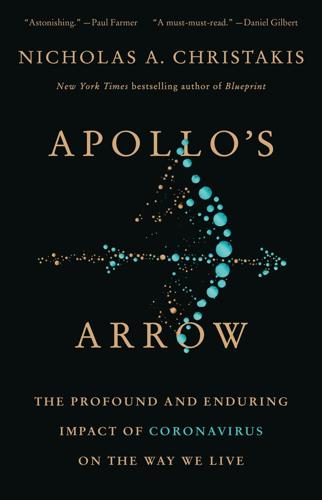
Apollo's Arrow: The Profound and Enduring Impact of Coronavirus on the Way We Live
by
Nicholas A. Christakis
Published 27 Oct 2020
Myers, “The Army Corps of Engineers Has Two or Three Weeks to Get Thousands of New Hospital Beds Up and Running,” Military Times, March 27, 2020. 112 J. McKinley, “New York City Region Is Now the Epicenter of the Coronavirus Pandemic,” New York Times, March 22, 2020. 113 Ibid. 114 H. Cooper et al., “Coronavirus Hot Spots Emerging Near New York City,” New York Times, April 5, 2020. 115 M. Bryant, “New York Veterinarians Give Ventilators to ‘War Effort’ against Coronavirus,” The Guardian, April 2, 2020. 116 C. Campanile and K. Sheehy, “NY Issues Do-Not-Resuscitate Guideline for Cardiac Patients amid Coronavirus,” New York Post, April 21, 2020. 117 L. Widdicombe, “The Coronavirus Pandemic Peaks in New York’s Hospitals,” The New Yorker, April 15, 2020. 118 M.
…
Mosher, “Don’t Buy China’s Story: The Coronavirus May Have Leaked from a Lab,” New York Post, February 22, 2020. 70 A. Stevenson, “Senator Tom Cotton Repeats Fringe Theory of Coronavirus Origins,” New York Times, February 17, 2020. 71 Anonymous, “Coronavirus: Trump Stands by China Lab Origin Theory for Virus,” BBC, May 1, 2020. 72 K.G. Andersen et al., “The Proximal Origin of SARS-CoV-2,” Nature Medicine 2020; 26: 450–455; P. Zhou et al, “A Pneumonia Outbreak Associated with a New Coronavirus of Probable Bat Origin,” Nature 2020; 579: 270–273. 73 S. Andrew, “Nearly 30% in the US Believe a Coronavirus Theory That’s Almost Certainly Not True,” CNN, April 13, 2020; W.
…
Reals, “Chinese Doctor Was Warned to Keep Quiet After Sounding the Alarm on Coronavirus,” CBS News, February 4, 2020. 18 K. Elmer, “Coronavirus: Wuhan Police Apologise to Family of Whistle-Blowing Doctor Li Wenliang,” South China Morning Post, March 19, 2020. 19 C. Buckley, “Chinese Doctor, Silenced After Warning of Outbreak, Dies from Coronavirus,” New York Times, February 6, 2020; Anonymous, “China Identifies 14 Hubei Frontline Workers, Including Li Wenliang, as Martyrs,” Global Times, April 2, 2020. 20 C. Huang et al., “Clinical Features of Patients Infected with 2019 Novel Coronavirus in Wuhan, China,” The Lancet 2020; 395: 497–506. 21 M.H.
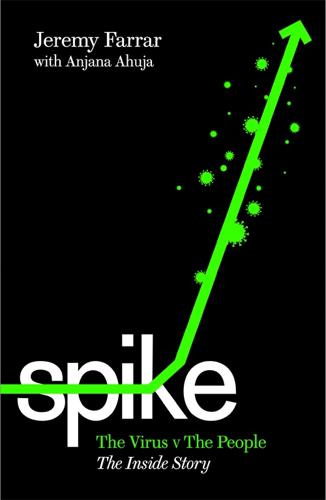
Spike: The Virus vs The People - The Inside Story
by
Jeremy Farrar
and
Anjana Ahuja
Published 15 Jan 2021
Rather than DNA, some viruses are made from RNA, such as SARS-CoV-2 and Ebola. SAGE Scientific Advisory Group for Emergencies SARS SARS stands for ‘severe acute respiratory syndrome’, a serious disease caused by the coronavirus SARS-CoV-1. SARS-CoV-1 The coronavirus that causes SARS. It is closely related to SARS-CoV-2. SARS-CoV-2 The coronavirus that causes Covid-19. Previously known as WN-CoV (or Wuhan coronavirus) and 2019-nCoV (or novel coronavirus 2019). spike protein Sometimes called the S protein, it appears as thorn-like protrusions on the surface of the SARS-CoV-2 virus. These ‘spikes’ unpick the locks of human cells to start the infection process and hijack the cell’s own replication machinery so that it begins making new copies of the virus.
…
This variant is, as of June 2021, the most mutated form of SARS-CoV-2 ever documented, with 31 mutations compared to the ancestral Wuhan virus (sometimes called the wild-type virus) first seen in December 2019. Among those 31 changes are 11 mutations in the spike protein of the coronavirus, again including E484K. The three travellers picked up in Luanda came from Tanzania, where coronavirus has raged largely unchecked thanks to a leader in denial. John Magafuli, Tanzania’s president, consistently denied that coronavirus was a threat to his country. An outlier among African nations, Tanzania stopped reporting coronavirus infections and deaths to the WHO in May 2020, and even refused an offer of vaccines from COVAX. Magafuli claimed that his countrymen enjoyed God’s protection, despite senior churchmen urging Tanzanians to take the virus seriously.
…
Philosophical Transactions of the Royal Society B: Biological Sciences, 372(1721), 26 May 2017. www.ncbi.nlm.nih.gov/pmc/articles/PMC5394645/ p. 39 ‘The Ebola PHEIC in 2019 …’ ‘Ebola Outbreak in the Democratic Republic of the CongoDeclared a Public Health Emergency of International Concern’. www.who.int/news/item/17-07-2019-ebola-outbreak-in-the-democratic-republic-of-the-congo-declared-a-public-health-emergency-of-international-concern p. 40 ‘And then came a dramatic update…” Lily Kuo, ‘Coronavirus: Panic and Anger in Wuhan as China Orders City into Lockdown’. Guardian. www.theguardian.com/world/2020/jan/23/coronavirus-panic-and-anger-in-wuhan-as-china-orders-city-into-lockdown p. 42 ‘I appeared at a press conference at Davos …’ ‘Press Conference: Coronavirus (COVID-19)/DAVOS 2020’. YouTube. www.youtube.com/watch?v=BDQtXzu6z08 p. 43 ‘His company had quietly picked up the genetic sequence …’ ‘Moderna Announces First Participant Dosed in NIH-led Phase 1 Study of mRNA Vaccine (mRNA-1273) Against Novel Coronavirus’. Moderna. https://investors.modernatx.com/news-releases/news-release-details/moderna-announces-first-participant-dosed-nih-led-phase-1-study p. 44 ‘He was referring to a 2007 study on how 43 US cities …’ Howard Markel et al., ‘Nonpharmaceutical Interventions Implemented by US Cities During the 1918-1919 Influenza Pandemic’.

Shutdown: How COVID Shook the World's Economy
by
Adam Tooze
Published 15 Nov 2021
Horobin, et al., “Committee to Save World Is a No-Show, Pushing Economy to Brink,” Bloomberg, March 13, 2020. 30. “Coronavirus: Iran Cover-up of Deaths Revealed by Data Leak,” BBC, August 3, 2020. 31. J. Horowitz, “The Lost Days That Made Bergamo a Coronavirus Tragedy,” New York Times, November 29, 2020. 32. M. Johnson, “Italy Quarantines Northern Towns in Coronavirus Outbreak,” Financial Times, February 23, 2020. 33. Herszenhorn and Wheaton, “How Europe Failed the Coronavirus Test.” 34. Elder, “Markets Not Live, Monday 24th February 2020.” 35. Martin, “Markets Face Fresh Jolt of Coronavirus Nerves.” 36. C. Smith and C. Henderson, “US 10-Year Treasury Yield Nears Record Low,” Financial Times, February 24, 2020. 37.
…
Anderson, “In Brazil, Jair Bolsonaro, Trump’s Close Ally, Dangerously Downplays the Coronavirus Risk,” New Yorker, April 1, 2020. P. Asmann, “What Does Coronavirus Mean for Criminal Governance in Latin America,” InSight Crime, March 31, 2020. 42. McGraw and Oprysko, “Inside the White House During ‘15 Days to Slow the Spread.’ ” 43. V. Chandrashekhar, “1.3 Billion People. A 21-Day Lockdown. Can India Curb the Coronavirus?” Science, March 31, 2020. 44. Chandrashekhar, “1.3 Billion People. A 21-Day Lockdown. Can India Curb the Coronavirus?” 45. K. Komireddi, “Modi’s India Isn’t Prepared for the Coronavirus,” Foreign Policy, April 10, 2020. 46.
…
Weinland, “Chinese Developers Hit by Coronavirus Sales Ban,” Financial Times, February 15, 2020. 20. A. J. He, Y. Shi, and H. Liu, “Crisis Governance, Chinese Style: Distinctive Features of China’s Response to the Covid-19 Pandemic,” Policy Design and Practice 3, no. 3 (2020): 242–58. 21. R. Zhong and P. Mozur, “To Tame Coronavirus, Mao-Style Social Control Blankets China,” New York Times, February 15, 2020. 22. R. McGregor, “China’s Deep State: The Communist Party and the Coronavirus,” Lowy Institute, July 23, 2020. 23. D. Weinland, “Chinese Villages Build Barricades to Keep Coronavirus at Bay,” Financial Times, February 7, 2020. 24.
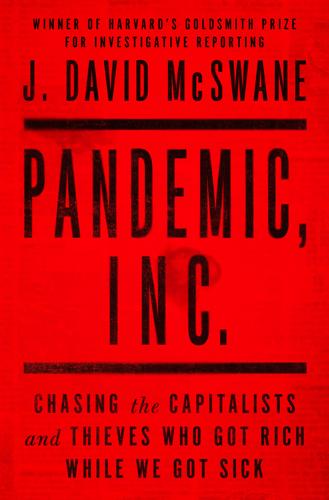
Pandemic, Inc.: Chasing the Capitalists and Thieves Who Got Rich While We Got Sick
by
J. David McSwane
Published 11 Apr 2022
In Italy, just weeks after Angelo Amante, “Update 2—Italy Declares Coronavirus Emergency after First Two Cases Confirmed,” Reuters, January 31, 2020, https://www.reuters.com/article/china-health-italy/update-2-italy-declares-coronavirus-emergency-after-first-two-cases-confirmed-idUSL8N2A02S1. On February 23, just after 9 a.m. “In His Own Words: Trump and the Coronavirus,” Reuters, October 2, 2020, https://www.reuters.com/article/uk-health-coronavirus-usa-trump-comments/in-his-own-words-trump-and-the-coronavirus-idUKKBN26N0VF. “The Coronavirus is very much under control” Morgan Chalfant, “Trump Asserts Coronavirus ‘Under Control’ as Stocks Plunge,” The Hill, February 24, 2020, https://thehill.com/homenews/administration/484408-trump-asserts-coronavirus-under-control-as-stocks-plunge.
…
Rashbaum, “A Car Salesman, a Macedonian Ex-Minister and a $45 Million Mask Scheme,” New York Times, May 26, 2020, https://www.nytimes.com/2020/05/26/nyregion/coronavirus-fraud-masks-new-york.html. The city’s first COVID death “A COVID-19 Day of Remembrance,” NYC.gov, March 14, 2021, https://www1.nyc.gov/assets/covidmemorial/. And in just two weeks Kif Leswing, “New York City Death Toll Passes 1,000, Coronavirus Expected to Cripple US Auto Sales,” CNBC, April 1, 2020, https://www.cnbc.com/2020/03/31/coronavirus-latest-updates.html. In a press briefing that day PIX11 Web Team, “Latest Coronavirus Updates in New York: Wednesday, April 1, 2020,” PIX11, April 1, 2020, https://pix11.com/news/coronavirus/latest-coronavirus-updates-in-new-york-wednesday-april-1-2020/.
…
Into a Gunfight with a Box of Tissues He downplayed the virus Katie Cox, “President Trump Thinks Coronavirus Will ‘Miraculously’ Go Away When the Weather Warms Up,” WRTV, February 12, 2020, https://www.wrtv.com/news/national-politics/president-trump-thinks-coronavirus-will-miraculously-go-away-when-the-weather-warms-up. the World Health Organization coined the name “Naming the Coronavirus Disease (COVID-19) and the Virus That Causes It,” World Health Organization, February 11, 2020, https://www.who.int/emergencies/diseases/novel-coronavirus-2019/technical-guidance/naming-the-coronavirus-disease-(covid-2019)-and-the-virus-that-causes-it. He said the risk was “relatively low” “Straight from the Source: Experts Discuss Novel Coronavirus: Aspen Ideas,” Aspen Ideas Festival, February 12, 2020, https://www.aspenideas.org/podcasts/straight-from-the-source-experts-discuss-novel-coronavirus.

Failures of State: The Inside Story of Britain's Battle With Coronavirus
by
Jonathan Calvert
and
George Arbuthnott
Published 18 Mar 2021
‘UK has plans to deal with pandemic causing up to 315,000 deaths’, Guardian, 6 March 2020. 2. ‘Coronavirus: Did the government get it wrong?’, Dispatches, Channel 4, 3 June 2020. 3. Ibid. 8: Herd Immunity 1. ‘Boris Johnson heckled during visit to flood-hit Bewdley’, The Times, 8 March 2020. 2. ‘Coronavirus: Did the government get it wrong?’, Dispatches, Channel 4, 3 June 2020. 3. Ibid. 4. ‘Coronavirus: Care home residents could be “cocooned”’, BBC News, 11 March 2020. 5. ‘Haunted, exhausted and under attack as coronavirus death toll doubles’, The Sunday Times, 15 March 2020. 6. ‘Coronavirus: Did the government get it wrong?’
…
‘Special Report: Into the fog – How Britain lost track of the coronavirus’, Reuters, 29 June 2020. 8. ‘Rory Stewart interview: Deploy the army to combat coronavirus’, Joe, 12 March 2020. 9. ‘Coronavirus: Did the government get it wrong?’, Dispatches, Channel 4, 3 June 2020. 10. Ibid. 11. Ibid. 12. ‘How the alarm went off too late in Britain’s virus response’, Bloomberg, 24 April 2020. 9: Dither 1. ‘Public request to take stronger measures of social distancing across the UK with immediate effect’, 14 March 2020. 2. ‘Inside Westminster’s coronavirus blame game’, Financial Times, 16 July 2020. 3. ‘Coronavirus: Did the government get it wrong?’
…
‘How the future PM, Boris Johnson, and NHS boss, Simon Stevens, formed an unlikely bond at Oxford’, Telegraph, 7 August 2019. 5. ‘Coronavirus: Did the government get it wrong?’, Dispatches, Channel 4, 3 June 2020. 6. Ibid. 7. Ibid. 8. Ibid. 10: Disaster 1. ‘Coronavirus crisis: Sickness, fear and now isolation for Boris Johnson’, The Sunday Times, 29 March 2020. 2. ‘NHS staff feel like “cannon fodder” over lack of coronavirus protection’, Guardian, 22 March 2020. 3. ‘“No surprise” Boris Johnson got coronavirus when he failed to “practise what he preached”, scientists say’, Evening Standard, 28 March 2020. 4. ‘Coronavirus: Doctors “told not to discuss PPE shortages”’, BBC News, 15 May 2020. 5.
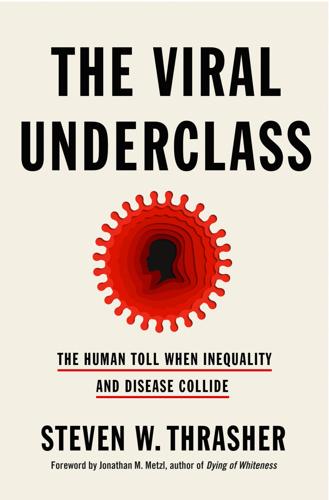
The Viral Underclass: The Human Toll When Inequality and Disease Collide
by
Steven W. Thrasher
Published 1 Aug 2022
on January 20, 2020: Victor Cha, “A Timeline of South Korea’s Response to COVID-19,” Center for Strategic and International Studies, March 27, 2020, https://www.csis.org/analysis/timeline-south-koreas-response-covid-19; “CDC Museum COVID-19 Timeline,” time line, CDC, August 14, 2021, https://www.cdc.gov/museum/timeline/covid19.html#:~:text=January%2020%2C%202020%20CDC,18%20in%20Washington%20state. 909 daily cases on February 29: Hyonhee Shin, “South Korea Reports Fewest New Coronavirus Cases Since February 29 Peak,” Reuters, March 22, 2020, https://www.reuters.com/article/us-health-coronavirus-southkorea-toll/south-korea-reports-fewest-new-coronavirus-cases-since-february-29-peak-idUSKBN21A043. 13,000 confirmed cases: “South Korea Coronavirus Cases,” graph, Worldometer, n.d., https://www.worldometers.info/coronavirus/country/south-korea/. 130,000 confirmed deaths: “Coronavirus Disease 2019 (COVID-19) Cases in the US,” CDC, https://covid.cdc.gov/covid-data-tracker/#cases_casesper100klast7days.
…
: Black Lives Matter Protestors Confront Clinton at South Carolina Fundraiser,” Salon, February 25, 2016, https://www.salon.com/2016/02/25/im_not_a_superpredator_hillary_black_lives_matter_protestors_crash_clinton_south_carolina_fundraiser/. New York Times’s coronavirus tracker: “Coronavirus in the U.S.: Latest Map and Case Count,” graph, New York Times, last modified January 14, 2021, https://drive.google.com/file/d/12YyqzSOp5H8TnCsZ8QWqQl3crCui0Yc3/view?usp=sharing and https://www.nytimes.com/interactive/2020/us/coronavirus-us-cases.html#hotspots. Democratic governor Gavin Newsom: “Coronavirus in the U.S.: Latest Map and Case Count,” New York Times, https://www.nytimes.com/interactive/2020/us/coronavirus-us-cases.html#hotspots. firefighters to smother such blazes: Dale Kasler et al., “Can California Handle This Many Wildfires at Once?
…
culture that is deeply homophobic: Patrick Strudwick, “LGBTQ People Have Become the New Scapegoats for the Coronavirus,” BuzzFeed, May 13, 2020, https://www.buzzfeed.com/patrickstrudwick/coronavirus-lgbtq-scapegoats-south-korea-uganda-hungary. was infectious or gay: Victoria Kim, “One of South Korea’s Most Reviled Criminal Defendants: A College Student with Covid Who Lied to Contact Tracers,” Los Angeles Times, August 28, 2020, https://www.latimes.com/world-nation/story/2020–08–28/jailed-for-a-coronavirus-lie-south-korea-brings-the-hammer-down-on-coronavirus-prosecutions. two additional years in prison: Josh Smith, “S Korean Accused of Lying to Covid-19 Investigators Sent to Jail,” Al Jazeera, October 8, 2020, https://www.aljazeera.com/news/2020/10/8/s-korean-accused-of-lying-to-covid-19-investigators-sent-to-jail.
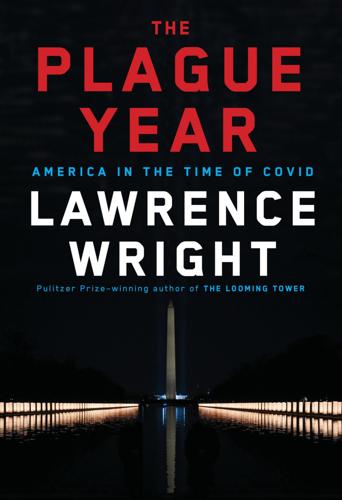
The Plague Year: America in the Time of Covid
by
Lawrence Wright
Published 7 Jun 2021
To their credit, Shi and Daszak have been warning for years that new pandemics could emerge from the bat caves of southern China. However, Shi has downplayed the likelihood that the miners who died in 2012 were infected by a coronavirus, claiming that they were sickened by a fungus that caused pneumonia. And yet her own lab had discovered the coronavirus antibodies in the miners. The doctor who treated them listed the probable cause of death as a SARS-like coronavirus from a horseshoe bat. * * * — There is another scenario that might account for the precocious adaptability of the coronavirus in humans. There is an experiment called “gain of function.” Suppose you have an animal virus that is potentially deadly but not yet contagious in humans.
…
in more than fifty years: Transcript for CDC Media Telebriefing: Update on 2019 Novel Coronavirus (2019-nCoV), Jan. 31, 2020. “The best way”: Bill Chappell, “Coronavirus: CDC Puts Americans Who Left Wuhan Into ‘Unprecedented’ 14-Day Quarantine,” NPR, Jan. 31, 2020. 6. “IT’S COMING TO YOU” “the fastest we’ve ever”: Rebecca Ballhaus and Stephanie Armour, “Health Chief’s Early Missteps Set Back Coronavirus Response,” Wall Street Journal, April 22, 2020. Azar denies the quote. German test: Peter Whoriskey and Neena Satija, “Coronavirus: German company developed 1.4m tests in six weeks while US production stalled,” Independent, Mar. 17, 2020.
…
fewer than 500: Julie Steenhuysen, Andrew Hay, and Brad Brooks, “Mixed messages, test delays hamper U.S. coronavirus response,” Reuters, Feb. 27, 2020. 1.6 million per week: “Scoop: Lab for coronavirus test kits may have been contaminated,” Axios, March 1, 2020. “filthy”: Interview with FDA officials. Sheila Kaplan, “C.D.C. Labs Were Contaminated, Delaying Coronavirus Testing, Officials Say,” New York Times, May 7, 2020. “When Dr. Stenzel”: FDA: “Regulatory history of CDC’s molecular diagnostic test for SARS-CoV-2,” draft, Dec. 1, 2020. Biogen: Sarah Kaplan and Chris Mooney, “Genetic data show how a single superspreading event sent coronavirus across Massachusetts and the nation,” Washington Post, Aug. 25, 2020; Emma Brown, “A look inside coronavirus preparations at a major U.S. hospital,” Washington Post, March 9, 2020; “Second Presumptive Positive Case Identified by Massachusetts State Laboratory,” Massachusetts Department of Health, March 5, 2020.
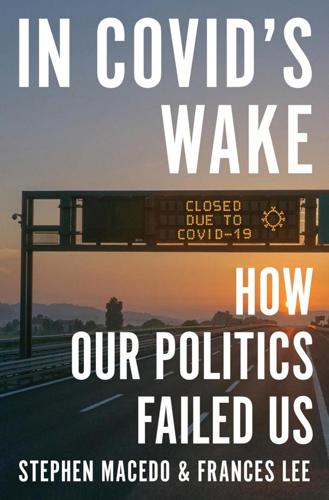
In Covid's Wake: How Our Politics Failed Us
by
Stephen Macedo
and
Frances Lee
Published 10 Mar 2025
Scott Gottlieb, Caitlin Rivers, Mark McClellan, Lauren Silvis, and Crystal Watson, Na tional Coronavirus Response: A Road Map to Reopening, American Enterprise Institute, March 29, 2020, https://www.aei.org/wp-content/uploads/2020/03/National-Coronavirus-Response-a -Road-Map-to-Recovering-2.pdf?x85095. 115. Gottlieb et al., National Coronavirus Response, 1. 116. Gottlieb et al., National Coronavirus Response, 2. 117. Gottlieb et al., National Coronavirus Response, 8. 118. Gottlieb et al., National Coronavirus Response, 5. 119. Gottlieb et al., National Coronavirus Response, 8. 120. Divya Siddarth, Marie-Laure Charpignon, Dean Foster, Kazumi Hoshino, Sham Kakade, John C.
…
: Shocking Video Shows Body Bags Being Forklifted into Lorry in New York,” video, The Telegraph, March 31, 2020, https://w ww.youtube.com/watch?v= p T7I _dYxMjI. 6. Harlan and Pitrelli, “As Coronavirus Cases Grow.” 7. Winfield, “Not a Wave.” 8. Robert Verity, Lucy C. Okell, Ilaria Dorigatti, Peter Winskill, Charles Whittaker, Natsuko Imai et al., “Estimates of the Severity of Coronavirus Disease 2019: A Model-Based Analysis,” The Lancet 20 (6, 2020): 669–77, table 1. 9. Alasdair Sandford, “Coronavirus: Half of Humanity Now on Lockdown as 90 Countries Call for Confinement,” Euronews, April 2, 2020, https://www.euronews.com/2020/0 4/02 /coronavirus-in-europe-spain-s- d eath-toll-hits-10-0 00-after-record-950-n ew-deaths-in-24-hou. 10.
…
“Remarks by President Trump, Vice President Pence, and Members of the Coronavirus Task Force in Press Briefing,” White H ouse, March 16, 2020, https://trumpwhitehouse.archives .gov /b riefings -s tatements /remarks -p resident -t rump -v ice -p resident -p ence -m embers -coronavirus-task-force-press-briefing-3/. not e s to ch a p t er 3 315 74. Dan Mangan, “Trump Issues ‘Coronavirus Guidelines’ for Next 15 Days to Slow Pandemic,” CNBC. com, March 16, 2020, https://www.cnbc.com/2020/03/16/trumps-coronavirus -guidelines-for-next-15-days-to-slow-pandemic.html.

Breathtaking: Inside the NHS in a Time of Pandemic
by
Rachel Clarke
Published 26 Jan 2021
Archer, B., ‘Boris Johnson braves coronavirus outbreak with pregnant fiancée to support England’, Daily Express, 8 March 2020. Peston, R., ‘British government wants UK to acquire coronavirus “herd immunity” ’, ITV News, 12 March 2020. Hunt, J., quoted in ‘Coronavirus: UK measures defended after criticism’, BBC News, 13 March 2020. ‘Has the Government Failed the NHS?’ BBC Panorama, 8 April 2020. A Long Deep Breath Bostridge, M., Florence Nightingale: The Woman and Her Legend (London: Penguin, 2020). Horton, R., ‘Scientists have been sounding the alarm on coronavirus for months. Why did Britain fail to act?’
…
Hunter, D., et al., ‘Covid-19 and the Stiff Upper Lip – The Pandemic Response in the United Kingdom’, New England Journal of Medicine, 16 April 2020. Dunhill, L., ‘Critical care unit overwhelmed by coronavirus patients’, Health Service Journal, 20 March 2020. Jones, D., https://twitter.com/WelshGasDoc/status/1241083898999771137, 20 March 2020. Campbell, D., et al., ‘London hospitals struggle to cope with coronavirus surge’, Guardian, 20 March 2020. Hopson, C., ‘Confronting coronavirus in the NHS: The story so far’, NHS Providers, 15 April 2020. Cook, T., ‘I’m an ICU doctor. The NHS isn’t ready for the coronavirus crisis’, Guardian, 3 March 2020. COVID-19 Hospital Discharge Service Requirements, HM Government, 19 March 2020.
…
In medicine, a name is the first step towards controlling the menace of a new threat to life, even if all that is really achieved is a linguistic illusion of control. The WHO assigns the newest member of the coronavirus family the name SARS-CoV-2, which stands for ‘severe acute respiratory syndrome coronavirus 2.’ The infectious disease to which the virus gives rise is itself termed, with equal blandness, COVID-19, which refers to ‘coronavirus disease 2019’. These are uninspiring monikers – and deliberately so. Medical history is littered with examples of disease names that inadvertently insult or stigmatise people, places or animals.

How to Survive a Pandemic
by
Michael Greger, M.D., FACLM
Receptor recognition by the novel coronavirus from Wuhan: an analysis based on decade-long structural studies of SARS coronavirus. J Virol. 94(7):e00127–20. https://doi.org/10.1128/JVI.00127-20. 42. Wan Y, Shang J, Graham R, Baric RS, Li F. 2020. Receptor recognition by the novel coronavirus from Wuhan: an analysis based on decade-long structural studies of SARS coronavirus. J Virol. 94(7):e00127–20. https://doi.org/10.1128/JVI.00127-20. 43. Hu B, Zeng LP, Yang XL, Ge XY, Zhang W, Li B, Xie JZ, Shen XR, Zhang YZ, Wang N, et al. 2017. Discovery of a rich gene pool of bat SARS-related coronaviruses provides new insights into the origin of SARS coronavirus. PLoS Pathog. 13(11):e1006698. https://doi.org/10.1371/journal.ppat.1006698. 44.
…
Six weeks into the 2019 coronavirus disease (COVID-19) outbreak—it is time to consider strategies to impede the emergence of new zoonotic infections. Chin Med J (Engl). [accessed 2020 Mar 28]. https://doi.org/10.1097/CM9.0000000000000760. 87. Westcott B, Deng S. 2020 Mar 5. China has made eating wild animals illegal after the coronavirus outbreak. But ending the trade won’t be easy. CNN; [accessed 2020 Apr 8]. https://www.cnn.com/2020/03/05/asia/china-coronavirus-wildlife-consumption-ban-intl-hnk/index.html. 88. Loeb J. 2020. China bans sale of wildlife following coronavirus. Vet Record. 186(5):144–145. http://dx.doi.org/10.1136/vr.m495. 89.
…
[accessed 2020 Mar 31]. https://www.who.int/dg/speeches/detail/who-director-general-s-opening-remarks-at-the-media-briefing-on-covid-19—16-march-2020. 2678. Normile D. 2020 Mar 17. Coronavirus cases have dropped sharply in South Korea. What’s the secret to its success? Science. [accessed 2020 Mar 31]. https://doi.org/10.1126/science.abb7566. 2679. Khazan O. 2020 Mar 13. The 4 key reasons the U.S. is so behind on coronavirus testing. The Atlantic. [accessed 2020 Mar 31]; https://www.theatlantic.com/health/archive/2020/03/why-coronavirus-testing-us-so-delayed/607954/. 2680. Meyer R, Madrigal AC. 2020 Mar 6. Exclusive: the strongest evidence yet that America is botching coronavirus testing. The Atlantic. [accessed 2020 Mar 31]; https://www.theatlantic.com/health/archive/2020/03/how-many-americans-have-been-tested-coronavirus/607597/. 2681.
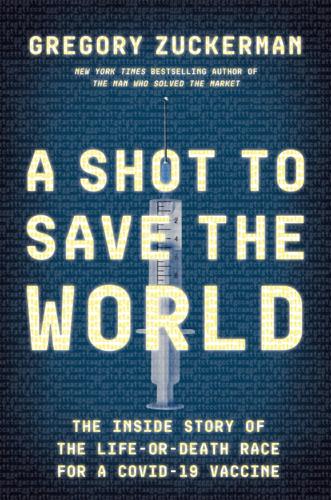
A Shot to Save the World: The Inside Story of the Life-Or-Death Race for a COVID-19 Vaccine
by
Gregory Zuckerman
Published 25 Oct 2021
World Health Organization, “WHO Coronavirus (COVID-19) Dashboard,” July 29, 2021, https://covid19.who.int/. 2. Julie Bosman, “A Ripple Effect of Loss: U.S. Covid Deaths Approach 500,000,” New York Times, February 21, 2021, https://www.nytimes.com/2021/02/21/us/coronavirus-deaths-us-half-a-million.html. 3. Thalia Beaty, Eugene Garcia, and Lisa Marie Pane, “U.S. Tops 4,000 Daily Deaths from Coronavirus for 1st Time,” Associated Press, January 8, 2021, https://apnews.com/article/us-coronavirus-death-4000-daily-16c1f136921c7e98ec83289942322ee4. 4. Carl Zimmer, “The Secret Life of a Coronavirus,” New York Times, February 26, 2021, https://www.nytimes.com/2021/02/26/opinion/sunday/coronavirus-alive-dead.html. 5.
…
Brianna Abbott and Stephanie Armour, “CDC Warns It Expects Coronovirus to Spread in U.S.,” Wall Street Journal, February 25, 2020, https://www.wsj.com/articles/cdc-warns-it-expects-coronavirus-to-spread-in-u-s-11582653829. 14. Brianna Abbott, “Test Kits for Novel Coronavirus Hit a Snag in the U.S.,” Wall Street Journal, February 13, 2020, https://www.wsj.com/articles/test-kits-for-novel-coronavirus-hit-a-snag-in-the-u-s-11581565817. 15. Mike Esterl, “Flu Pandemic Is Declared—First Time in 41 Years,” Wall Street Journal, June 12, 2009, https://www.wsj.com/articles/SB124471165680705709; Jeremy Brown, “What Past Crises Tell Us About the Coronavirus,” Wall Street Journal, January 31, 2020, https://www.wsj.com/articles/what-past-crises-tell-us-about-the-coronavirus-11580403056.
…
Mike Esterl, “Flu Pandemic Is Declared—First Time in 41 Years,” Wall Street Journal, June 12, 2009, https://www.wsj.com/articles/SB124471165680705709; Jeremy Brown, “What Past Crises Tell Us About the Coronavirus,” Wall Street Journal, January 31, 2020, https://www.wsj.com/articles/what-past-crises-tell-us-about-the-coronavirus-11580403056. CHAPTER FIFTEEN 1. Leslie Brody, “Covid-19’s ‘Patient Zero’ in New York: What Life Is Like for the New Rochelle Lawyer,” Wall Street Journal, March 5, 2021, https://www.wsj.com/articles/covid-19s-patient-zero-what-life-is-like-for-the-new-york-lawyer-11614686401. 2. Gina Kolata, “How the Coronavirus Short-Circuits the Immune System,” New York Times, June 26, 2020, https://www.nytimes.com/2020/06/26/health/coronavirus-immune-system.html. 3. Pam Belluck, “What Does the Coronavirus Do to the Body?” New York Times, March 26, 2020, https://www.nytimes.com/article/coronavirus-body-symptoms.html. 4.
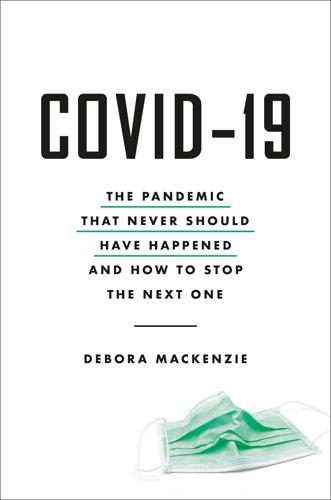
Covid-19: The Pandemic That Never Should Have Happened and How to Stop the Next One
by
Debora MacKenzie
Published 13 Jul 2020
Authorities later… enforced: Josephine Ma and Zhuang Pinghui, “5 million left Wuhan before lockdown, 1,000 new coronavirus cases expected in city,” South China Morning Post, January 26, 2020, www.scmp.com/news/china/society/article/3047720/chinese-premier-li-keqiang-head-coronavirus-crisis-team-outbreak. 23. Chris Dye… the 23rd: Huaiyu Tian, et al., “An investigation of transmission control measures during the first 50 days of the COVID-19 epidemic in China,” Science, March 31, 2020, doi.org/10.1126/science.abb6105. 24. My first… global: Debora MacKenzie, “New coronavirus looks set to cause a pandemic—how do we control it?” January 29, 2020, www.newscientist.com/article/2231864-new-coronavirus-looks-set-to-cause-a-pandemic-how-do-we-control-it. 25.
…
The quote is slightly different in its other iteration from October 1960. 3. Covid-19… November 2019: Josephine Ma, “Coronavirus: China’s first confirmed Covid-19 case traced back to November 17.” 4. Secrecy… Tufekci: Zeynep Tufekci, “How the coronavirus revealed authoritarianism’s fatal flaw,” The Atlantic, February 22, 2020, www.theatlantic.com/technology/archive/2020/02/coronavirus-and-blindness-authoritarianism/606922. 5. by January 20th… China: James Kynge, Sun Yu, and Tom Hancock, “Coronavirus: the cost of China’s public health cover-up.” 6. I wrote… funding: Debora MacKenzie, “Can we afford not to track deadly viruses?”
…
Yet many… hit: Mike Stobbe, “Health official says US missed some chances to slow virus,” Associated Press, May 1, 2020, apnews.com/a758f05f337736e93dd0c280deff9b10. 13. The virus is… for war: Gary P. Pisano, Raffaella Sadun, and Michele Zanini, “Lessons from Italy’s response to coronavirus,” Harvard Business Review, March 27, 2020, hbr.org/2020/03/lessons-from-italys-response-to-coronavirus. 14. Some experts… meltdown too: Adam Tooze, “How coronavirus almost brought down the global financial system,” Guardian, April 14, 2020, www.theguardian.com/business/2020/apr/14/how-coronavirus-almost-brought-down-the-global-financial-system. 15. shut down… ever known: Christopher J. Fettweis, “Unipolarity, hegemony, and the new peace,” Security Studies 26, no. 3 (August 2017): 423–51, doi.org/10.1080/09636412.2017.1306394. 16.

Deadly Quiet City: True Stories From Wuhan
by
Murong Xuecun
Published 7 Mar 2023
A kind old doctor tells them, ‘The whole building is full of novel coronavirus patients. Your father probably has TB but that’s not immediately fatal. The novel coronavirus is much more dangerous because it would be over in a few days if he were infected. Best take him home.’ Later, Liu Xiaoxiao learns that the doctor was not telling the truth, because on an upper floor in the hospital is a secret ward that admits patients with illnesses like Liu Shiyu’s. As he carries his father out of the hospital, he thinks: ‘Maybe it would be better if my father really had the novel coronavirus, because at least then he would be looked after.’
…
A pre-print of an article released by scientists in Guangzhou and Wuhan concludes that it’s unlikely the virus got into humans from the seafood market: ‘In summary, somebody was entangled with the evolution of 2019-nCoV coronavirus. In addition to origins of natural recombination and intermediate host, the killer coronavirus probably originated from a laboratory in Wuhan.’ The article is quickly removed. Xi announces the fast-tracking of a new law for ‘biosecurity at laboratories’ specifically targeting the use of biological agents that ‘may harm national security’. The next day, the Chinese Ministry of Science and Technology publishes a new directive strengthening biosecurity in labs that ‘handle advanced viruses like the novel coronavirus’. A thorough study by twenty-seven Chinese scientists is published in The Lancet re-examining forty-one cases admitted to hospital in the early stages of the outbreak, confirming that fourteen of them – including the first person diagnosed with SARS-CoV-2 on 1 December – had no contact with the seafood market and lived a long way from it.
…
It followed the eviction of hundreds of Africans from hotels and apartments after online rumours that they were spreading coronavirus. African ambassadors in Beijing band together to write a letter to China’s foreign ministry: ‘The singling out of Africans for compulsory testing and quarantine, in our view, has no scientific or logical basis and amounts to racism towards Africans in China.’ By 16 April, global infections exceed two million, with at least 130,000 deaths. Countries are calling on China to pay for damages arising from the coronavirus. Australian Foreign Minister Marise Payne calls for an independent global review of the origin and early handling of the coronavirus outbreak. Beijing sternly rejects Australia’s proposal, saying the idea disrespects ‘the Chinese people’s tremendous efforts and sacrifices’.
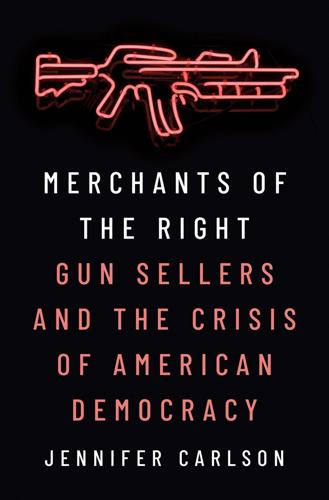
Merchants of the Right: Gun Sellers and the Crisis of American Democracy
by
Jennifer Carlson
Published 2 May 2023
Rather, he’s an adherent to a nimbler style of conspiracism—an agile skepticism that approached the coronavirus pandemic as a frustrating blend of fact and fiction. Unlike a stereotypical conspiracy theorist, most gun sellers were apprehensive about dismissing coronavirus as an all-out hoax. Instead, they disclosed earnest ambivalence as they tried to make sense of the virus. Because I wanted to understand the extent to which they accepted the mainstream messaging surrounding coronavirus, I directly asked gun sellers about claims that coronavirus was a hoax. They equivocated. Richard, a white gun seller in California, told me: “I think it’s really overblown.
…
Political partisanship, as Pew noted in 2019, “continues to be the dividing line in the American public’s political attitudes, far surpassing differences by age, race and ethnicity, gender, educational attainment, religious affiliation or other factors.”1 By 2019, Democrats (79%, up 18% from early 2016) and Republicans (83%, up 14%) had given each other increasingly “cold” or “very cold” ratings on a feeling thermometer developed by Pew; the majority of Republicans see Democrats as closed-minded, unpatriotic, and immoral, while three-quarters of Democrats see Republicans as particularly closed-minded.2 Strikingly, 79 percent of Americans believe we have little trust in one another.3 Consider partisanship in the context of the coronavirus pandemic. Setting itself apart globally as a viral hotspot, the United States has also distinguished itself as the most divided country among advanced economies4 with regard to public opinion about its government’s response to coronavirus. Republicans’ (but not Democrats’) concerns about getting coronavirus, having to be hospitalized, or spreading coronavirus to others5 dropped dramatically over the course of 2020. These differences in concern translated into everyday behavior,6 with Republicans much more at ease in attending crowded parties, indoor sporting events, eating at a restaurant, or spending time with friends and family inside their homes.
…
I tell them [sarcastically], ‘this is common sense gun control, isn’t it?’ ” Coronavirus—and the social, economic, and political precarity that followed in 2020—opened up the floodgates of American firearm demand. Many found that they suddenly needed a gun, but few—at least when I talked to Robert—really knew how to make sense of it all. For his part, Robert fit coronavirus into his broader skepticism surrounding American politics. He blithely moved from questioning whether 9/11 was an “inside job” to wondering whether coronavirus came from a “Wuhan lab” with “an American scientist, American backers, American funding.”
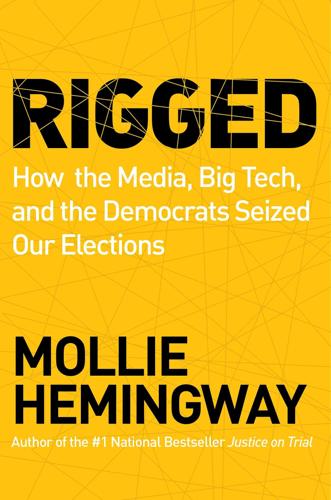
Rigged: How the Media, Big Tech, and the Democrats Seized Our Elections
by
Mollie Hemingway
Published 11 Oct 2021
Bill D’Agostino, “Study: Trump-Bashing Takes Up Majority of CNN’s Coronavirus Coverage,” NewsBusters, February 28, 2020, https://www.newsbusters.org/blogs/nb/bill-dagostino/2020/02/28/study-trump-bashing-takes-majority-cnns-coronavirus-coverage. 166. Peter Hessler, “How China Controlled the Coronavirus,” New Yorker, August 10, 2020, https://www.newyorker.com/magazine/2020/08/17/how-china-controlled-the-coronavirus. 167. Alexander Nazaryan, “ ‘They Know How to Keep People Alive’: Why China’s Coronavirus Response Is Better Than You Think,” Yahoo, March 13, 2020, https://www.yahoo.com/lifestyle/they-know-how-to-keep-people-alive-why-chinas-coronavirus-response-is-better-than-you-think-211702070.html. 168. Steven Lee Myers and Alissa J. Rubin, “Its Coronavirus Cases Dwindling, China Turns Focus Outward,” New York Times, March 18, 2020, https://www.nytimes.com/2020/03/18/world/asia/coronavirus-china-aid.html. 169.
…
Tyrone Beason, “Bernie Sanders and Joe Biden Spring to the Finish in Michigan Primary amid Coronavirus Crisis,” Los Angeles Times, March 9, 2020, https://www.latimes.com/politics/story/2020-03-09/sanders-biden-michigan-sprint-to-the-finish. 13. Scott Neuman, “Tom Hanks, Wife Rita Wilson Test Positive for Coronavirus,” National Public Radio, March 12, 2020, https://www.npr.org/2020/03/12/814807838/tom-hanks-wife-rita-wilson-test-positive-for-coronavirus; Jabari Young, “NBA Suspends Season Indefinitely after Utah Jazz Player Tests Positive for Coronavirus,” CNBC, March 12, 2020, https://www.cnbc.com/2020/03/12/coronavirus-nba-suspends-season-after-player-tests-positive.html; Taylore Telford and Thomas Heath, “U.S.
…
Airports for 2019 Novel Coronavirus,” Centers for Disease Control, January 17, 2020, https://www.cdc.gov/media/releases/2020/p0117-coronavirus-screening.html#:~:text=Starting%20January%2017%2C%202020%2C%20travelers,Los%20Angeles%20(LAX)%20airports. 108. Elizabeth Cohen, “Vaccine for New Chinese Coronavirus in the Works,” CNN, January 20, 2020, https://www.cnn.com/2020/01/20/health/coronavirus-nih-vaccine-development/index.html. 109. “CDC Emergency Operations Center Activations,” CDC, n.d., https://emergency.cdc.gov/recentincidents/. 110. Rebecca Ballhaus, “Trump Announces Coronavirus Taskforce,” Wall Street Journal, January 29, 2020, https://www.wsj.com/articles/trump-announces-coronavirus-task-force-11580359187. 111.
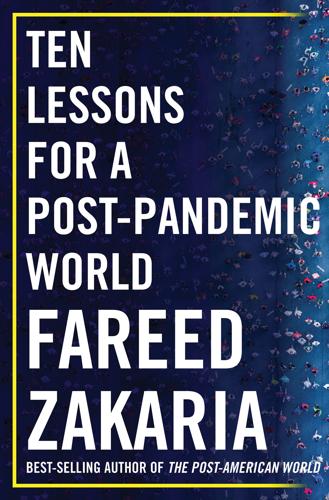
Ten Lessons for a Post-Pandemic World
by
Fareed Zakaria
Published 5 Oct 2020
,” Politico, March 30, 2020, https://www.politico.com/news/2020/03/30/coronavirus-masks-trump-administration-156327. 30 faulty test kits: Eric Lipton et al., “The C.D.C. Waited ‘Its Entire Existence’ for This Moment. What Went Wrong?,” New York Times, June 3, 2020. 30 “Not the United States”: Selena Simmons-Duffin, “As States Reopen, Do They Have the Workforce They Need to Stop Coronavirus Outbreaks?,” NPR, June 18, 2020. 32 750 million people: Raymond Zhong and Paul Mozur, “To Tame Coronavirus, Mao-Style Social Control Blankets China,” New York Times, February 15, 2020, https://www.nytimes.com/2020/02/15/business/china-coronavirus-lockdown.html. 32 built two new hospitals: Lingling Wei, “China’s Coronavirus Response Toughens State Control and Weakens the Private Market,” Wall Street Journal, March 18, 2020. 32 restricting the publication: Nectar Gan, Caitlin Hu, and Ivan Watson, “Beijing Tightens Grip over Coronavirus Research, amid US-China Row on Virus Origin,” CNN, April 16, 2020, https://www.cnn.com/2020/04/12/asia/china-coronavirus-research-restrictions-intl-hnk/index.html. 33 dictatorships often mishandle: “Diseases Like Covid-19 Are Deadlier in Non-Democracies,” Economist, February 18, 2020. 33 respond to famines better: Amartya Sen, Development as Freedom (New York: Anchor, 1999), 16. 33 over $6 trillion: Andrew Van Dam, “The U.S.
…
Some countries locked down fully, while others—using their own epidemiologists and models—did not. What should we make of all this? The reality is that science does not yield one simple answer, especially not with a new phenomenon like the coronavirus. Fauci, the head of the National Institute of Allergy and Infectious Diseases, came to a reasonable conclusion given the initial evidence. Many scientists at first believed that the coronavirus was not a significant danger—but everyone was making quick judgments with little data. The novel coronavirus was just that, novel. Its transmission rates and lethality remained unclear. As the evidence changed, Fauci and others changed their minds. This is normal.
…
,” NPR, June 18, 2020. 32 750 million people: Raymond Zhong and Paul Mozur, “To Tame Coronavirus, Mao-Style Social Control Blankets China,” New York Times, February 15, 2020, https://www.nytimes.com/2020/02/15/business/china-coronavirus-lockdown.html. 32 built two new hospitals: Lingling Wei, “China’s Coronavirus Response Toughens State Control and Weakens the Private Market,” Wall Street Journal, March 18, 2020. 32 restricting the publication: Nectar Gan, Caitlin Hu, and Ivan Watson, “Beijing Tightens Grip over Coronavirus Research, amid US-China Row on Virus Origin,” CNN, April 16, 2020, https://www.cnn.com/2020/04/12/asia/china-coronavirus-research-restrictions-intl-hnk/index.html. 33 dictatorships often mishandle: “Diseases Like Covid-19 Are Deadlier in Non-Democracies,” Economist, February 18, 2020. 33 respond to famines better: Amartya Sen, Development as Freedom (New York: Anchor, 1999), 16. 33 over $6 trillion: Andrew Van Dam, “The U.S.
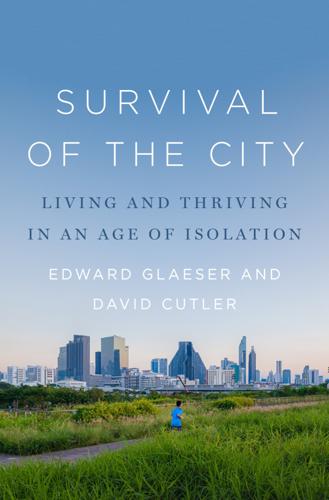
The Survival of the City: Human Flourishing in an Age of Isolation
by
Edward Glaeser
and
David Cutler
Published 14 Sep 2021
Ardern and Bloomfield did: Cheng, “Covid 19 Coronavirus: Prime Minister Jacinda Ardern’s D-Day Decision Already Made for Her.” Visits to sit-down restaurants: Glaeser et al., “Learning from Deregulation.” 100,000 COVID-19 cases by June 22: “Florida Coronavirus Map and Case Count,” The New York Times. on June 26: Tisch et al., “Florida Suspends Drinking at Bars.” grown to 250,000: “Florida Coronavirus Map and Case Count.” on July 6: Selig and Vazquez, “Miami-Dade Closing Indoor Dining amid Coronavirus Spike; Gyms Can Now Stay Open.” half a million Floridians: “Florida Coronavirus Map and Case Count.”
…
“Contamination at CDC Lab Delayed Rollout of Coronavirus Tests.” The Washington Post, April 18, 2020. www.washingtonpost.com/investigations/contamination-at-cdc-lab-delayed-rollout-of-coronavirus-tests/2020/04/18/fd7d3824-7139-11ea-aa80-c2470c6b2034_story.html. Wilson, Chris. “These Graphs Show How COVID-19 Is Ravaging New York City’s Low-Income Neighborhoods.” Time, April 15, 2020. https://time.com/5821212/coronavirus-low-income-communities. Wilson, Michael. “Coronavirus in N.Y.C.: Eerie Streetscapes Are Stripped of Commerce.” The New York Times, March 21, 2020. www.nytimes.com/2020/03/21/nyregion/coronavirus-empty-nyc.html.
…
Accessed December 26, 2020. www.who.int/westernpacific/news/feature-stories/detail/new-zealand-takes-early-and-hard-action-to-tackle-covid-19. ———. “Novel Coronavirus—China.” January 12, 2020. www.who.int/csr/don/12-january-2020-novel-coronavirus-china/en. ———. “Novel Coronavirus—Thailand (Ex-China).” Accessed January 17, 2021. www.who.int/csr/don/14-january-2020-novel-coronavirus-thailand-ex-china/en. ——— (@WHO). “Preliminary investigations conducted by the Chinese authorities have found no clear evidence of human-to-human transmission of the novel #coronavirus (2019-nCoV) identified in #Wuhan, #China.” Twitter, January 14, 2020, 6:18 a.m. https://twitter.com/WHO/status/1217043229427761152. ———.
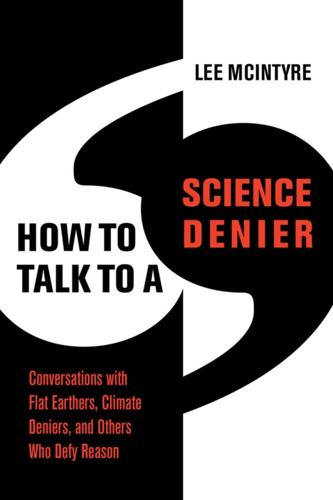
How to Talk to a Science Denier: Conversations With Flat Earthers, Climate Deniers, and Others Who Defy Reason
by
Lee McIntyre
Published 14 Sep 2021
Emma Reynolds, “Some Anti-vaxxers Are Changing Their Minds Because of the Coronavirus Pandemic,” CNN, April 20, 2020, https://www.cnn.com/2020/04/20/health/anti-vaxxers-coronavirus-intl/index.html; Jon Henley, “Coronavirus Causing Some Anti-vaxxers to Waver, Experts Say,” Guardian, April 21, 2020, https://www.theguardian.com/world/2020/apr/21/anti-vaccination-community-divided-how-respond-to-coronavirus-pandemic; Victoria Waldersee, “Could the New Coronavirus Weaken ‘Anti-vaxxers’?” Reuters, April 11, 2020, https://www.reuters.com/article/us-health-coronavirus-antivax/could-the-new-coronavirus-weaken-anti-vaxxers-idUSKCN21T089. 4 Close Encounters with Climate Change Climate change denial represents the biggest, most important case of science denial in our time.
…
Emma Reynolds, “Some Anti-vaxxers Are Changing Their Minds because of the Coronavirus Pandemic,” CNN, April 20, 2020, https://www.cnn.com/2020/04/20/health/anti-vaxxers-coronavirus-intl/index.html; Jon Henley, “Coronavirus Causing Some Anti-vaxxers to Waver, Experts Say,” Guardian, April 21, 2020, https://www.theguardian.com/world/2020/apr/21/anti-vaccination-community-divided-how-respond-to-coronavirus-pandemic; Victoria Waldersee, “Could the New Coronavirus Weaken ‘Anti-vaxxers’?” Reuters, April 11, 2020, https://www.reuters.com/article/us-health-coronavirus-antivax/could-the-new-coronavirus-weaken-anti-vaxxers-idUSKCN21T089. 18. Andrew E. Kramer, “Russia Sets Mass Vaccinations for October After Shortened Trial,” New York Times, August 2, 2020, https://www.nytimes.com/2020/08/02/world/europe/russia-trials-vaccine-October.html. 19.
…
An even more fine-grained analysis has revealed that there was a correlation between specific Fox News programming and the prevalence of coronavirus cases and deaths. Zack Beauchamp, “A Disturbing New Study Suggests Sean Hannity’s Show Helped Spread the Coronavirus,” Vox, April 22, 2020, https://www.vox.com/policy-and-politics/2020/4/22/21229360/coronavirus-covid-19-fox-news-sean-hannity-misinformation-death. 13. Dan Diamond and Nahal Toosi, “Trump Team Failed to Follow NSC’s Pandemic Playbook,” Politico, March 25, 2020, https://www.politico.com/news/2020/03/25/trump-coronavirus-national-security-council-149285. 14. Sharon LaFraniere et al., “Scientists Worry About Political Influence over Coronavirus Vaccine Project,” New York Times, August 2, 2020, https://www.nytimes.com/2020/08/02/us/politics/coronavirus-vaccine.html 15.
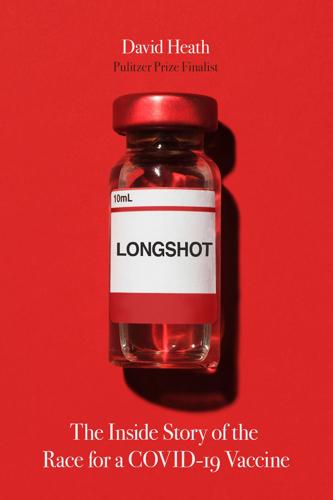
Longshot
by
David Heath
Published 18 Jan 2022
Robert Costa and Philip Rucker, “Woodward Book: Trump Says He Knew Coronavirus Was ‘Deadly’ and Worse than the Flu while Intentionally Misleading Americans,” Washington Post, September 9, 2020, https://www.washingtonpost.com/politics/bob-woodward-rage-book-trump/2020/09/09/0368fe3c-efd2-11ea-b4bc-3a2098fc73d4_story.html. 5. Rob Stein, “NIH Lab Races to Create Coronavirus Vaccine in Record Time,” NPR, February 21, 2020, https://www.npr.org/2020/02/21/808016544/nih-lab-races-to-create-coronavirus-vaccine-in-record-time. 6. Will Feuer and Kevin Stankiewicz, “CDC to Test More Suspected Cases of Coronavirus after Revising Guidelines,” CNBC, February 27, 2020, https://www.cnbc.com/2020/02/27/cdc-to-test-more-suspected-cases-of-coronavirus-after-revising-guidelines.html. 7. Matthew Herper, “He Experienced a Severe Reaction to Moderna’s Covid-19 Vaccine Candidate.
…
“Initial analysis shows it is about 73% identical to SARS… Closest relative when blasting the whole genome is a SARS-like CoV called ZC45.” In short, it was a novel strain of coronavirus. The closest match had been identified in February 2017 from a bat.1 Graham had already suspected it was a coronavirus. But he was more interested in another bit of data. The genetic code also revealed the virus’s Achilles’ heel—the precise makeup of the so-called spike protein on its surface. Block that protein and you can render the virus harmless. Graham, who was deputy director of the National Institutes of Health’s Vaccine Research Center, knew exactly what to do. After two previous novel coronavirus outbreaks—SARS in 2003 and MERS in 2012—Graham had spent years getting prepared for the next novel strain.
…
He kept testing the samples with some help from another laboratory for more possible viruses but kept getting negative results. Finally, he tested it himself for coronavirus, and the results came back positive. He immediately assumed it was SARS, the novel coronavirus that spread from China in 2003 with a fatality rate of 15%. But surprisingly, the PCR test for SARS was negative. He did the PCR test several more times, just to make sure. He could hardly believe he had discovered a novel strain of coronavirus. He also didn’t think anyone would believe a small laboratory in a Saudi hospital. And if it were true, he was afraid he might lose his intellectual property rights if another laboratory tested it.
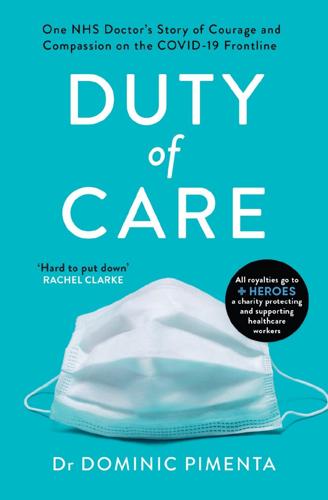
Duty of Care: One NHS Doctor's Story of the Covid-19 Crisis
by
Dr Dominic Pimenta
Published 2 Sep 2020
Should we test her for coronavirus? I ask myself and decide yes. On the way back with the machine, I ask the nurses to collect a viral swab for the usual viruses, and another one for coronavirus. They aren’t sure how to do a swab for coronavirus. I suppose no one here has done it, and I don’t know if there’s a special bottle. I call microbiology. There’s no answer. Then I try virology, and after 12 rings, I get through to a registrar. “Yes?” “I was just wondering if we could test a patient up on the heart ward for coronavirus?” “Any travel?” “No, but . . . ” “Any coronavirus contacts?” “No, but . . . ” “She doesn’t meet the criteria.
…
That sixth patient never arrived and, fortunately, all of the five survived, but even that short run gave me a now all-too-familiar sinking feeling, as if we were being overrun. Five years ago, I saw the only other serious possible coronavirus patient I’d ever seen. She was a young lady, just off the plane from Qatar, who was feverish and barely able to breathe. She had suspected MERS (Middle East Respiratory Syndrome), a cousin of the coronavirus we’re now facing. A few years before that we’d had SARS (Severe Acute Respiratory Syndrome, also a type of coronavirus) scares when we were travelling in Bali. But these incidents simply became touchstones of interest, isolated cases and potential diagnoses to learn from.
…
The last thing we should be doing is discouraging people from identifying to health professionals that they have suspected coronavirus and hiding them in the community. I tweet along these lines on one of my commutes to work, a brisk chilly run to the station and then 30 minutes down the Piccadilly line. Swiping through my Twitter feed, something catches my eye. In the replies I find a recurring theme, with people dismissing coronavirus entirely as “just flu” and declaring everything else “media hysteria”. Up until that point I haven’t really looked hard at the research around the “Wuhan coronavirus”. Trying to catch the tube Wi-Fi, I spend the journey trawling the literature, trying to answer the question: is it worse than everyday annual flu?

Essential: How the Pandemic Transformed the Long Fight for Worker Justice
by
Jamie K. McCallum
Published 15 Nov 2022
Meagan Flynn, “They Lived in a Factory for 28 Days to Make Millions of Pounds of Raw PPE Materials to Help Fight Coronavirus,” Washington Post, April 23, 2020, www.washingtonpost.com/nation/2020/04/23/factory-masks-coronavirus-ppe/. 10. Katie Ferrari, “GE Workers Protest, Demand to Make Ventilators,” Labor Notes, April 13, 2020, https://labornotes.org/blogs/2020/04/ge-workers-protest-demand-make-ventilators. 11. Sarah Kliff et al., “There Aren’t Enough Ventilators to Cope with the Coronavirus,” New York Times, March 18, 2020, www.nytimes.com/2020/03/18/business/coronavirus-ventilator-shortage.html. 12. Yelena Dzhanova, “Trump Compelled These Companies to Make Critical Supplies, but Most of Them Were Already Doing It,” CNBC, April 3, 2020, www.cnbc.com/2020/04/03/coronavirus-trump-used-defense-production-act-on-these-companies-so-far.html. 13.
…
It Was Still a Success,” Vox, May 1, 2020, www.vox.com/recode/2020/5/1/21244151/may-day-strike-amazon-instacart-target-success-turnout-fedex-protest-essential-workers-chris-smalls; Michael Sainato, “Strikes Erupt as US Essential Workers Demand Protection amid Pandemic,” Guardian, May 19, 2020, www.theguardian.com/world/2020/may/19/strikes-erupt-us -essential-workers-demand-better-protection-amid-pandemic; Bridget Read, “Every Food and Delivery Strike Happening over Coronavirus,” The Cut, May 27, 2020, www.thecut.com/2020/05/whole-foods-amazon-mcdonalds-among-coronavirus-strikes.html; Daniel A. Medina, “As Amazon, Walmart, and Others Profit amid Coronavirus Crisis, Their Essential Workers Plan Unprecedented Strike,” The Intercept, April 28, 2020, https://theintercept.com/2020/04/28/coronavirus-may-1-strike-sickout-amazon-target-whole -foods/. 16. Tanya Modersitzki, “Perdue Farms Employees Walk Out After No Wage Increase amid COVID-19,” 41NBC News/WMGT-DT, March 23, 2020, www.41nbc.com/perdue-farms-employees-strike-no-wage-increase-amid-covid-19/. 17.
…
So bans on social gatherings, such as holiday and birthday parties, were among the most effective ways to limit coronavirus transmission.20 Yet, as the epidemiologist Justin Feldman notes, whites demonstrated they were the most likely to attend social gatherings, but they were among the least likely to contract the coronavirus.21 Boisterous invocations to social distancing bled easily into Facebook filters and Twitter hashtags like #staythefuckhome, messages that were amplified by dishonest political elites. In a November 2020 press conference, then governor of New York Andrew Cuomo placed the blame for a coronavirus surge on individual failings.22 “If you’re socially distant, and you wore a mask, and you were smart, none of this would be a problem.

Covid by Numbers
by
David Spiegelhalter
and
Anthony Masters
Published 28 Oct 2021
A multi-country online survey (conducted by DS’s colleagues)fn1 asked people how reliable they considered the six claims in Table 20–1, which shows the proportion in the UK thinking each claim was more reliable than not.9 Claim % rating the claim more reliable than not The coronavirus was bioengineered in a military lab in Wuhan. 25% Being able to hold your breath for 10 seconds or more without coughing or discomfort is a good self-check test for whether you have the coronavirus 17% The coronavirus is part of a global effort to enforce mandatory vaccination. 15% Gargling salt water or lemon juice reduces the risk of infection from Coronavirus 11% The new 5G network may be making us more susceptible to the virus 9% Breathing in hot air through your mouth and nose (e.g. from a hair dryer) kills the coronavirus as it can only live in cool places. 7% Table 20–1 Proportion of 2,200 UK respondents rating each claim as more reliable than not (rating 5,6 or 7 on a scale running from ‘1: very unreliable’ to ‘7: very reliable’).
…
1. https://www.genome.gov/about-genomics/fact-sheets/Polymerase-Chain-Reaction-Fact-Sheet 2. https://assets.publishing.service.gov.uk/government/uploads/system/uploads/attachment_data/file/926410/Understanding_Cycle_Threshold__Ct__iN_SARS-CoV-2_RT-PCR_.pdf 3. https://www.thelancet.com/journals/lanmic/article/PIIS2666-5247(20)30172-5/fulltext 4. https://www.medrxiv.org/content/10.1101/2020.07.10.20150524v1 5. https://www.medrxiv.org/content/10.1101/2020.10.25.20219048v2 6. https://www.medrxiv.org/content/10.1101/2020.10.25.20219048v2 7. https://www.gov.uk/government/publications/sars-cov-2-rna-testing-assurance-of-positive-results-during-periods-of-low-prevalence/assurance-of-sars-cov-2-rna-positive-results-during-periods-of-low-prevalence 8. https://www.ncbi.nlm.nih.gov/pmc/articles/PMC4986465/ 9. https://www.thelancet.com/journals/lanpub/article/PIIS2468-2667(20)30282-6/fulltext 10. https://www.medrxiv.org/content/10.1101/2020.10.25.20219048v2 11. https://www.cochranelibrary.com/cdsr/doi/10.1002/14651858.CD013705.pub2/epdf/abstract 12. https://www.gov.uk/government/publications/lateral-flow-device-specificity-in-phase-4-post-marketing-surveillance 13. https://www.huffingtonpost.co.uk/entry/false-positives-coronavirus_uk_5f686da4c5b6de79b677e909 CHAPTER 6: HOW MANY CASES HAVE BEEN FOUND? 1. https://ourworldindata.org/explorers/coronavirus-data-explorer 2. https://www.bbc.co.uk/news/world-africa-54603689 3. https://www.gov.uk/government/publications/weekly-statistics-for-nhs-test-and-trace-england-29-april-to-5-may-2021 4. https://coronavirus.data.gov.uk/details/testing?areaType=nation&areaName=England 5. https://ourworldindata.org/coronavirus-testing 6. https://www.gov.uk/government/publications/sars-cov-2-rna-testing-assurance-of-positive-results-during-periods-of-low-prevalence/assurance-of-sars-cov-2-rna-positive-results-during-periods-of-low-prevalence 7. https://coronavirus.data.gov.uk/details/about-data#england CHAPTER 7: HOW MANY PEOPLE HAVE BEEN INFECTED WITH SARS-COV-2?
…
1. https://www.gov.uk/government/news/ventilator-challenge-hailed-a-success-as-uk-production-finishes 2. https://www.icnarc.org/Our-Audit/Audits/Cmp/Reports 3. https://coronavirusexplained.ukri.org/en/article/vdt0008/ 4. https://www.thelancet.com/journals/eclinm/article/PIIS2589-5370(20)30323-0/fulltext 5. https://www.thelancet.com/journals/lanres/article/PIIS2213-2600(20)30581-6/fulltext 6. https://royalpapworth.nhs.uk/our-hospital/latest-news/ECMO-COVID19-coronavirus 7. https://www.timesofisrael.com/madagascar-president-claims-country-develops-herbal-tea-remedy-for-coronavirus/ 8. https://www.chicagotribune.com/coronavirus/ct-nw-trump-white-house-sunlight-heat-fight-virus-20200424-7dnhtyxltvdazkp24mybuefmou-story.html 9. https://www.thelancet.com/journals/lancet/article/PIIS0140-6736(20)31958-9/fulltext 10. https://www.bbc.co.uk/news/world-us-canada-53911565 11. https://www.recoverytrial.net/ 12. https://www.ncbi.nlm.nih.gov/pmc/articles/PMC7383595/ 13. https://www.england.nhs.uk/2021/03/covid-treatment-developed-in-the-nhs-saves-a-million-lives/ 14. https://www.thelancet.com/journals/lancet/article/PIIS0140-6736(21)00676-0/fulltext 15. https://www.nejm.org/doi/full/10.1056/NEJMoa2022926 16. https://www.thelancet.com/journals/lancet/article/PIIS0140-6736(21)00897-7/fulltext 17. https://www.health.harvard.edu/diseases-and-conditions/treatments-for-covid-19 18. https://www.fda.gov/consumers/consumer-updates/why-you-should-not-use-ivermectin-treat-or-prevent-covid-19 CHAPTER 11: HOW MANY PEOPLE HAVE DIED FROM COVID-19?

The Code Breaker: Jennifer Doudna, Gene Editing, and the Future of the Human Race
by
Walter Isaacson
Published 9 Mar 2021
Boburg et al., “Inside the Coronavirus Testing Failure”; David Willman, “Contamination at CDC Lab Delayed Rollout of Coronavirus Tests,” Washington Post, Apr. 18, 2020. 4. JoNel Aleccia, “How Intrepid Lab Sleuths Ramped Up Tests as Coronavirus Closed In,” Kaiser Health News, Mar. 16, 2020. 5. Julia Ioffe, “The Infuriating Story of How the Government Stalled Coronavirus Testing,” GQ, Mar. 16, 2020; Boburg et al., “Inside the Coronavirus Testing Failure.” Greninger’s email to a friend is in the excellent Washington Post reconstruction. 6. Boburg et al., “Inside the Coronavirus Testing Failure”; Patrick Boyle, “Coronavirus Testing: How Academic Medical Labs Are Stepping Up to Fill a Void,” AAMC, Mar. 12, 2020. 7. Author’s interview with Eric Lander; Leah Eisenstadt, “How Broad Institute Converted a Clinical Processing Lab into a Large-Scale COVID-19 Testing Facility in a Matter of Days,” Broad Communications, Mar. 27, 2020.
…
Shawn Boburg, Robert O’Harrow Jr., Neena Satija, and Amy Goldstein, “Inside the Coronavirus Testing Failure,” Washington Post, Apr. 3, 2020; Robert Baird, “What Went Wrong with Coronavirus Testing in the U.S.,” New Yorker, Mar. 16, 2020; Michael Shear, Abby Goodnough, Sheila Kaplan, Sheri Fink, Katie Thomas, and Noah Weiland, “The Lost Month: How a Failure to Test Blinded the U.S. to COVID-19,” New York Times, Mar. 28, 2020. 2. Kary Mullis, “The Unusual Origin of the Polymerase Chain Reaction,” Scientific American, Apr. 1990. 3. Boburg et al., “Inside the Coronavirus Testing Failure”; David Willman, “Contamination at CDC Lab Delayed Rollout of Coronavirus Tests,” Washington Post, Apr. 18, 2020. 4.
…
That meeting, which is the one described in the introduction of this book, was at 2 p.m. on Friday, March 13—the day after Doudna and her husband made their predawn drive to Fresno to retrieve their son from his robotics competition. SARS-CoV-2 The rapidly spreading new coronavirus had by then been given an official name: severe acute respiratory syndrome coronavirus 2, or SARS-CoV-2. It was so named because it was similar in its symptoms to the SARS coronavirus that spread out of China in 2003, infecting more than eight thousand people worldwide. The disease caused by the new virus was named COVID-19. Viruses are deceptively simple little capsules of bad news.I They are just a tiny bit of genetic material, either DNA or RNA, inside a protein shell.
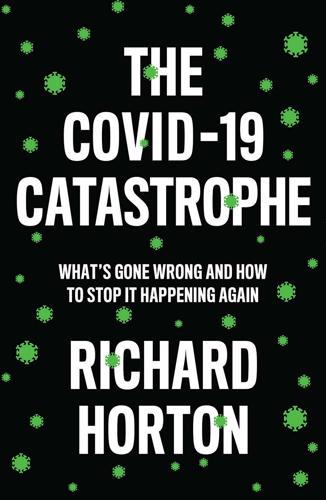
The COVID-19 Catastrophe: What's Gone Wrong and How to Stop It Happening Again
by
Richard Horton
Published 31 May 2020
Four human coronaviruses cause only mild to moderate symptoms – NL63 (identified in the Netherlands in 2004), HKU1 (discovered in Hong Kong in 2005) and OC43 and 229E (both major causes of the common cold). But two coronaviruses pose much more serious threats to human health – Severe Acute Respiratory Syndrome coronavirus (SARS-CoV-1) and Middle-East Respiratory Syndrome coronavirus (MERS-CoV). Could the virus discovered in Wuhan be a seventh and also more dangerous type of coronavirus? The genetic code of the novel virus was quickly sequenced. Comparisons with existing viral genomes showed that it was closely related to a bat SARS-like strain. Those four letters – S-A-R-S – struck fear and not a little panic into Chinese health officials when the news arrived in Beijing.
…
Kucharski et al., Early dynamics of transmission and control of COVID-19, Lancet Infectious Diseases, 11 March 2020. 6. Novel Coronavirus Pneumonia Emergency Response Epidemiology Team, The epidemiological characteristics of an outbreak of 2019 novel coronavirus diseases (COVID-19) – China 2020, China CDC Weekly, 2/8 (2020): 113–22. 7. Kiesha Prem et al., The effect of control strategies to reduce social mixing on outcomes of COVID-19 epidemic in Wuhan, China, Lancet Public Health, 25 March 2020. 8. Benjamin J. Cowling et al., Impact assessment of non-pharmaceutical interventions against coronavirus disease 2019 and influenza in Hong Kong, The Lancet, 17 April 2020. 9.
…
Because we can’t afford to fail again. We may not have a second chance. Notes 1. Chaolin Huang et al., Clinical features of patients infected with 2019 novel coronavirus in Wuhan, China, The Lancet, 24 January 2020. 2. Jasper Fuk-Woo Chan et al., A familial cluster of pneumonia associated with the 2019 novel coronavirus indicating person-to-person transmission, The Lancet, 24 January 2020. 3. Roujian Lu et al., Genomic characterisation and epidemiology of 2019 novel coronavirus: implications for virus origins and receptor binding, The Lancet, 29 January 2020. 4. Joseph T. Wu et al., Nowcasting and forecasting the potential domestic and international spread of the 2019-nCoV outbreak originating in Wuhan, China, The Lancet, 31 January 2020. 5.

The Corona Crash: How the Pandemic Will Change Capitalism
by
Grace Blakeley
Published 14 Oct 2020
Central bankers and politicians have staged unprecedented economic interventions, not to help the most vulnerable through this crisis, but to save capitalism from itself. The beneficiaries will be big business, big banks and powerful political interests. As the coronavirus unfolds in the UK, the Right is in power, and they are demanding that journalists, citizens and even health officials fall in line behind the government narrative. Questioning government policy – whether on monetary policy, statutory sick pay or welfare payments – is ‘politicising’ a public health crisis. The idea that the coronavirus crisis can be ‘politicised’ is to imply that it is not already an inherently political event. Of course, the outbreak of the virus was a natural event – though one that seems to have been prompted by unsustainable farming practices undertaken in the name of profit maximisation.13 But its economic impact, and, in particular, the distribution of costs, could not be more political.
…
Bangladesh announced several fiscal measures worth nearly $8 billion34 – or 2.5 per cent of the country’s GDP – but began to reopen many of its textile factories early to boost exports, potentially worsening the spread of the virus and putting workers’ lives in jeopardy. Over the long term, as the coronavirus crisis continues and the impact of climate breakdown begins to hit both nations, the favour of international investors will do little to help these states. The response to both crises will require a significant increase in government borrowing, potentially leading to a loss of confidence among notoriously fickle bond investors. But without significant increases in state spending, tens of thousands more people could be killed over the coming years by both coronavirus and the increasing frequency and severity of natural disasters associated with climate breakdown.
…
From the structural adjustment programmes of the 1980s to modern-day Greece, the long arm of the imperial creditor has been used many times to subject peripheral states to the discipline of capital. The coronavirus pandemic will only deepen these relationships of imperial extraction. 4 Reconstruction It is often said that, in the midst of a crisis, everyone is a socialist. With massive state intervention now the only thing standing between economies battered by the coronavirus pandemic and global economic meltdown, few politicians or economists are calling on governments to step back, let businesses fail, banks go bust and homeowners default on their mortgages – even if some countries have attempted to extricate themselves from lockdown and return to ‘business as usual’ before getting the virus under control.1 In normal times, neoliberals have a knee-jerk reaction against any interference in the operation of supposedly free, competitive markets.

Limitless: The Federal Reserve Takes on a New Age of Crisis
by
Jeanna Smialek
Published 27 Feb 2023
.: Princeton University Press. Cook, Nancy, and Matthew Choi. 2020. “Trump Rallies His Base to Treat Coronavirus as a ‘Hoax.’ ” Politico, February 28. Cooper, John Milton. 2021. “Woodrow Wilson.” Encyclopaedia Britannica, January 30. “Coronavirus: Armed Protesters Enter Michigan Statehouse.” 2020. BBC News, May 1. “Coronavirus, a Pavia 8 pazienti ricoverati al San Matteo: anche una coppia di medici.” 2020. Il Messaggero, February 22. https://www.ilmessaggero.it/italia/coronavirus_pavia_medici_contagiati_pieve_porto_morone_chignolo_po_cosa_sta_succedendo_22_febbraio_2020-5068178.html.
…
Preliminary Estimate of the Effects of H.R. 748, the CARES Act, Public Law 116–136, Revised, with Corrections to the Revenue Effect of the Employee Retention Credit and to the Modification of a Limitation on Losses for Taxpayers Other Than Corporations, April. https://www.cbo.gov/system/files/2020-04/hr748.pdf. Sykes, Jay B. 2020. “Section 4029 of the Coronavirus Aid, Relief, and Economic Security (CARES) Act and the Extension of the Federal Reserve’s Emergency-Lending Programs.” Coronavirus.house.gov, December 17. https://coronavirus.house.gov/sites/democrats.coronavirus.house.gov/files/Memo%20re%20CARES%20Act%20Section%204029.pdf. Tankersley, Jim, and Neil Irwin. 2019. “Trump’s Fury vs. Shaky Markets: Jerome Powell’s Balancing Act as Fed Chief.” New York Times, April 13.
…
“Warner Statement on the Economic Response to the Coronavirus.” Mark R. Warner, U.S. Senator, March 17. https://www.warner.senate.gov/public/index.cfm/2020/3/warner-statement-on-the-economic-response-to-the-coronavirus. Warren, Elizabeth. 2020a. “Senator Warren Unveils Legislation to De-Fund President’s Border Wall, Use Funds to Combat Coronavirus Outbreak.” Elizabeth Warren, U.S. Senator, February 27. https://www.warren.senate.gov/newsroom/press-releases/senator-warren-unveils-legislation-to-de-fund-presidents-border-wall-use-funds-to-combat-coronavirus-outbreak. ——— . 2020b. “Any taxpayer assistance that goes to giant corporations must come with real strings attached to ensure the money is truly going to support the workforce through this crisis.”

The Lonely Century: How Isolation Imperils Our Future
by
Noreena Hertz
Published 13 May 2020
OECD, ‘Social Expenditure: Aggregated data’, OECD Social and Welfare Statistics (database), https://doi.org/10.1787/data-00166-en (accessed 30 June 2020). socialexp/social-spending.htm. 8 ‘Fauci, Governors Get Highest Marks For Response To Coronavirus, Quinnipiac University National Poll Finds; Majority Say Trump’s Response Not Aggressive Enough’, Quinnipiac University, 8 April 2020, https://poll.qu.edu/national/release-detail?ReleaseID=3658. 9 Luke Savage, ‘The Coronavirus Has Created Record Support for Medicare For All’, Jacobin, 2 April 2020, https://www.jacobinmag.com/2020/04/coronavirus-pandemic-medicare-for-all-support; original poll at Yusra Murad, ‘As Coronavirus Surges, ‘Medicare For All’ Support Hits 9-Month High’, Morning Consult, 1 April 2020, https://morningconsult.com/2020/04/01/medicare-for-all-coronavirus-pandemic/. 10 Laura Gardiner, ‘The shifting shape of social security: Charting the changing size and shape of the British welfare system’, Resolution Foundation, November 2019, https://www.resolutionfoundation.org/app/uploads/2019/11/The-shifting-shape-of-social-security.pdf. 11 Phillip Inman, ‘Rightwing thinktanks call time on age of austerity’, Guardian, 16 May 2020, https://www.theguardian.com/politics/2020/may/16/thatcherite-thinktanks-back-increase-public-spending-in-lockdown. 12 ‘A New Deal For The Arts’, The National Archives, https://www.archives.gov/exhibits/new_deal_for_the_arts/index.html#. 13 Although some countries have considerably more leeway here than others. 14 Jonathan Nicholson, ‘Tax “excess” profits of big money-making companies to fix coronavirus economy, scholar urges’, MarketWatch, 30 April 2020, https://www.marketwatch.com/story/tax-excess-profits-of-big-money-making-companies-to-fix-coronavirus-economy-scholar-urges-2020-04-30. 15 Tommy Wilson, ‘Budget wish list – look after those who look after others,’ New Zealand Herald, 31 May 2019, https://www.nzherald.co.nz/premium/news/article.cfm?
…
from=mdr; Mia Jankowicz, ‘More People Are Now in “Lockdown” Than Were Alive During World War II’, ScienceAlert, 25 March 2020, https://www.sciencealert.com/one-third-of-the-world-s-population-are-now-restricted-in-where-they-can-go. 2 Ido Efrati, ‘Calls to Israel’s Mental Health Hotlines Spike during Coronavirus Crisis’, Haaretz.com, 22 March 2020, https://www.haaretz.com/israel-news/.premium-calls-to-israel-s-mental-health-hotlines-spike-during-coronavirus-crisis-1.8698209?=&ts=_1585309786959. 3 ‘Coronavirus: “My Mum Won’t Hug Me” – Rise in Calls to Childline about Pandemic’, Sky News, 27 March 2020, https://news.sky.com/story/coronavirus-my-mum-wont-hug-me-rise-in-calls-to-childline-about-pandemic-11964290. The surge in loneliness is not limited to children. Shortly before the UK lockdown went into effect on 23 March, 10% of UK adults reported feelings of loneliness in the past two weeks.
…
Whilst a survey conducted in April 2020 in the US also found significant increases in loneliness during lockdown, especially amongst millennials and Generation K. See, respectively, ‘Loneliness During Coronavirus’, Mental Health Foundation, 16 June 2020, https://www.mentalhealth.org.uk/coronavirus/coping-with-loneliness; ‘Report: Loneliness and Anxiety During Lockdown’, SocialPro, April 2020, https://socialpronow.com/loneliness-corona/. 4 Peter Hille, ‘Coronavirus: German Phone Helplines at “Upper limits”’, DW.com, 24 March 2020, https://www.dw.com/en/coronavirus-german-phone-helplines-at-upper-limits/a-52903216. 5 Cigna, ‘Loneliness and the Workplace: 2020 U.S. Report’, January 2020, https://www.multivu.com/players/English/8670451-cigna-2020-loneliness-index/docs/CignaReport_1579728920153-379831100.pdf. 6 ‘Two Thirds of Germans Think the Country Has a Major Loneliness Problem’, The Local (Germany), 23 March 2018, https://www.thelocal.de/20180323/two-thirds-of-germans-think-the-country-has-a-major-loneliness-problem. 7 Janene Pieters, ‘Over a Million Dutch Are Very Lonely’, NL Times, 21 September 2017, https://nltimes.nl/2017/09/21/million-dutch-lonely. 8 Rick Noack, ‘Isolation is rising in Europe.
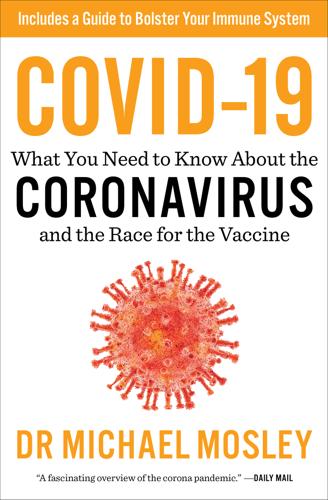
COVID-19: Everything You Need to Know About the Corona Virus and the Race for the Vaccine
by
Michael Mosley
Published 1 Jun 2020
via%3Dihub 34 http://www.ox.ac.uk/news/2019-12-19-new-mers-vaccine-clinical-trial-starts-saudi-arabia 35 https://www.nytimes.com/2020/04/27/world/europe/coronavirus-vaccine-update-oxford.html 36 https://www.ncbi.nlm.nih.gov/pmc/articles/PMC2851497/ 37 https://www.nytimes.com/2020/04/27/world/europe/coronavirus-vaccine-update-oxford.html 38 https://academic.oup.com/jid/advance-article/doi/10.1093/infdis/jiaa152/5814216 39 https://www.nytimes.com/2020/04/30/opinion/coronavirus-vaccine-covid.html 40 https://apps.who.int/iris/bitstream/handle/10665/331976/WHO-2019-nCoV-Ethics_criteria-2020.1-eng.pdf?ua=1 41 https://www.bdi.ox.ac.uk/news/digital-contact-tracing-can-slow-or-even-stop-coronavirus-transmission-and-ease-us-out-of-lockdown 42 https://www.reuters.com/investigates/special-report/health-coronavirus-usa-cost/ This publication contains the opinions and ideas of its author.
…
The first warnings that there were some potentially very dangerous pathogens living in the bat caves of China came in 2013, when scientists working at the Wuhan Institute of Virology reported that they had isolated a coronavirus from horseshoe bats that could infect human cells. Researchers from Harvard Medical School, who later studied this same coronavirus in the lab, found that it was especially good at infecting cells grown from the human respiratory tract. The Harvard scientists warned that this particular coronavirus was “poised for human emergence.” They were concerned that it might jump from the bats and start infecting humans at any time. They were right.
…
Tragic though his death was, he was just one of hundreds of doctors, nurses, paramedics, and other caregivers who would perish over the next few months. Day 43 February 11th. The new viral infection was given a name: Covid-19, short for “coronavirus disease 2019.” Day 48 I’d been following the unfolding story of this pandemic with increasing alarm, and on February 16th I wrote a column for a national newspaper, The Mail on Sunday, entitled “How to beat coronavirus? Sing Happy Birthday as you wash your hands.” It was obvious to me that this coronavirus was no longer a distant threat and it was time to start taking precautions. I suggested in my column that people should avoid shaking hands, hugging others, and that we should all wash our hands as often as possible for as long as it takes to sing “Happy Birthday to You” twice.
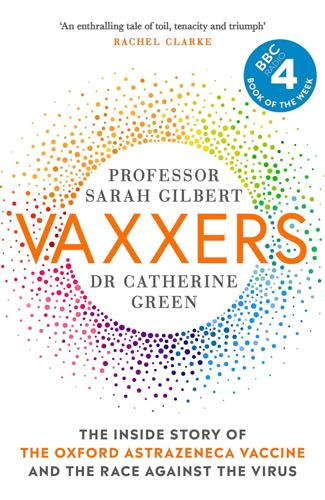
Vaxxers: The Inside Story of the Oxford AstraZeneca Vaccine and the Race Against the Virus
by
Sarah Gilbert
and
Catherine Green
Published 7 Jul 2021
s=20. 4. https://www.express.co.uk/news/uk/1263980/coronavirus-vaccine-oxford-university-uk-covid19-testing-cure-spt. 5. https://www.ft.com/content/b053f55b-2a8b-436c-8154-0e93dcdb3c1a. 6. https://www.thetimes.co.uk/article/russians-spread-fake-news-over-oxford-coronavirus-vaccine-2nzpk8vrq. 7. https://edition.independent.co.uk/editions/uk.co.independent.issue.271120/data/9726097/index.html; https://www.telegraph.co.uk/news/2020/11/26/astrazeneca-running-new-coronavirus-vaccine-trial/; https://www.theguardian.com/world/2020/nov/26/scrutiny-grows-over-oxford-universityastrazeneca-vaccine; https://www.thetimes.co.uk/article/astrazeneca-defends-oxford-coronavirus-vaccine-as-disquiet-mounts-over-the-results-mf6t57rnr; https://www.politico.eu/article/questions-grow-over-astrazeneca-coronavirus-vax-trials/; https://www.walesonline.co.uk/news/uk-news/chris-whitty-oxford-vaccine-error-19354045. 8. https://www.handelsblatt.com/politik/deutschland/pandemie-bekaempfung-corona-impfstoff-diskussion-um-wirksamkeit-von-astra-zeneca-vakzin-bei-senioren/26849788.html and https://www.reuters.com/article/health-coronavirus-eu-astrazeneca/germany-fears-astrazeneca-vaccine-wont-get-eu-approval-for-those-over-65-bild-idUSL8N2K05OP. 9. https://papers.ssrn.com/sol3/papers.cfm?
…
Very late at night on 8 January came official confirmation on ProMedMail that we were looking at a novel (meaning a previously unknown) coronavirus. A number of epidemiologists immediately posted on ProMedMail to say ‘I told you so’. And they were right, they had told us. As experts in this area they had been warning for some time that there was likely to be an outbreak of a novel coronavirus, most likely starting in China. On Friday the 10th, China reported the first fatality, a 61-year-old man. By the end of that Friday, Tess and I had decided that as soon as we could get hold of the genome sequence of the novel coronavirus we would start to make a vaccine. We would follow the same design approach we had used for our MERS vaccine, and go as fast as we could.
…
Telegraph: ‘Oxford scientists discover vaccine offers “double defence” against Covid’, https://www.telegraph.co.uk/news/2020/07/15/coronavirus-vaccine-breakthrough-oxford-scientists-discover/. The Times: ‘Success of early trials lifts hope for vaccine’, https://www.thetimes.co.uk/article/coronavirus-vaccine-hopes-raised-by-success-of-early-trials-c2gv2cpsd. The i: ‘All over the shop: muddle on face masks’, https://twitter.com/theipaper/status/1283510998218006528. 3. https://twitter.com/NDMOxford/status/1284038977159344128?s=20. 4. https://www.express.co.uk/news/uk/1263980/coronavirus-vaccine-oxford-university-uk-covid19-testing-cure-spt. 5. https://www.ft.com/content/b053f55b-2a8b-436c-8154-0e93dcdb3c1a. 6. https://www.thetimes.co.uk/article/russians-spread-fake-news-over-oxford-coronavirus-vaccine-2nzpk8vrq. 7. https://edition.independent.co.uk/editions/uk.co.independent.issue.271120/data/9726097/index.html; https://www.telegraph.co.uk/news/2020/11/26/astrazeneca-running-new-coronavirus-vaccine-trial/; https://www.theguardian.com/world/2020/nov/26/scrutiny-grows-over-oxford-universityastrazeneca-vaccine; https://www.thetimes.co.uk/article/astrazeneca-defends-oxford-coronavirus-vaccine-as-disquiet-mounts-over-the-results-mf6t57rnr; https://www.politico.eu/article/questions-grow-over-astrazeneca-coronavirus-vax-trials/; https://www.walesonline.co.uk/news/uk-news/chris-whitty-oxford-vaccine-error-19354045. 8. https://www.handelsblatt.com/politik/deutschland/pandemie-bekaempfung-corona-impfstoff-diskussion-um-wirksamkeit-von-astra-zeneca-vakzin-bei-senioren/26849788.html and https://www.reuters.com/article/health-coronavirus-eu-astrazeneca/germany-fears-astrazeneca-vaccine-wont-get-eu-approval-for-those-over-65-bild-idUSL8N2K05OP. 9. https://papers.ssrn.com/sol3/papers.cfm?
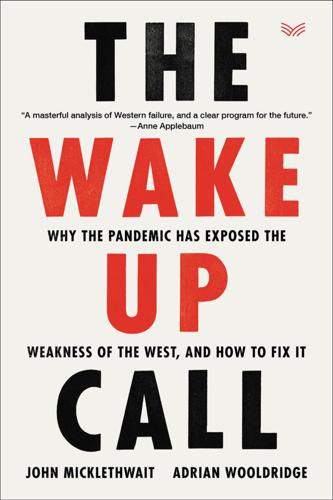
The Wake-Up Call: Why the Pandemic Has Exposed the Weakness of the West, and How to Fix It
by
John Micklethwait
and
Adrian Wooldridge
Published 1 Sep 2020
“New World Curriculum,” The Economist. 17.Shalini Ramachandran, Laura Kusisto, and Katie Hoanan, “How New York’s Coronavirus Response Made the Pandemic Worse,” Wall Street Journal, June 11, 2020. 18.Full disclosure: Paul Deighton is chairman of The Economist. 19.Gordon Lubold and Paul Vieira, “US Drops Proposal to Put Troops at Canadian Border,” Wall Street Journal, March 26, 2020. 20.Teresa Coratella, “Whatever It Takes: Italy and the Covid-19 Crisis,” European Council on Foreign Relations, March 18, 2020. 21.Andy Hoffman, “Sex Workers Can Get Back to Business in Switzerland, but Sports Remain Prohibited,” Bloomberg, May 20, 2020. 22.YouGov, “Americans Trust Local Governments over the Federal Government on COVID-19,” April 27, 2020. 23.John Lichfield, “Coronavirus: France’s strange defeat,” Politico, May 8, 2020. 24.Anne Applebaum, “The Coronavirus Called America’s Bluff,” The Atlantic, March 15, 2020. CHAPTER FIVE: THE MORBID SYMPTOMS 1.“The Right Medicine for the World Economy,” The Economist, March 7, 2020. 2.Song Luzheng, “Many Western Governments Ill-Equipped to Handle Coronavirus,” Global Times, March 15, 2020. 3.Iain Marlow, “China Trolls US over Protests After Trump Criticized Hong Kong,” Bloomberg, June 1, 2020. 4.
…
New York Times, March 19, 2020. 6.Gary Bass, “The Athenian Plague: A Cautionary Tale of Democracy’s Fragility,” New Yorker, June 10, 2020. 7.Doug Klain, “Azerbaijan’s Strongman Senses Opportunity in Coronavirus Pandemic,” Atlantic Council, March 19, 2020. 8.Marc Champion, “Coronavirus Is a Stress Test Many World Leaders Are Failing,” Bloomberg, May 22, 2020. 9.“Leviathan Rising,” The Economist, March 21, 2020, 24. 10.Sebastian Mallaby, “The Age of Magic Money,” Foreign Affairs, May 29, 2020. 11.June 18, 2020. 12.“The Fiscal Response to the Economic Fallout from the Coronavirus,” Bruegel Datasets, May 27, 2020. 13.Isabel Reynolds and Emi Urabe, “Japan to Fund Firms to Shift Production Out of China,” Bloomberg, April 8, 2020. 14.Catarina Saraiva, “Unrest Spotlights Depth of Black Americans’ Economic Struggle,” Bloomberg, June 2, 2020. 15.Public Health England, “Disparities in the Risk and Outcomes of COVID-19,” June 2020. 16.Gerald Seib and John McCormick, “Coronavirus Means the Era of Big Government Is . . .
…
It led the airlift that saved Berlin. It stood up against the spread of Communism in Europe and Southeast Asia. For all its failures in Iraq, it nevertheless led an international coalition against Saddam. With the Coronavirus, it has looked weak, ineffective, and, frankly, weird. What should the rest of the world make of a country whose leader suggests injecting bleach to counteract the Coronavirus? Covid was a devastating epiphany for the United States—a moment when a country “long accustomed to thinking of itself as the best, most efficient, and most technically advanced society in the world is about to be proved an unclothed emperor,” as Anne Applebaum has put it.24 “Empire” seems an appropriate word.
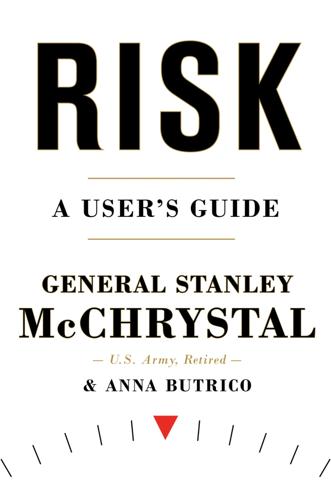
Risk: A User's Guide
by
Stanley McChrystal
and
Anna Butrico
Published 4 Oct 2021
Chinese authorities suspended transportation: Taylor, “Timeline of the Coronavirus Pandemic”; Bollyky and Patrick, “Improving Pandemic Preparedness,” 40. death toll had climbed to at least 360: Taylor, “Timeline of the Coronavirus Pandemic.” moved cautiously, declaring: Erin Schumaker, “Timeline: How Coronavirus Got Started,” ABC News, September 22, 2020, https://abcnews.go.com/Health/timeline-coronavirus-started/story?id=69435165; Sui-Lee Wee, Donald G. McNeil Jr., and Javier C. Hernández, “W.H.O. Declares Global Emergency as Wuhan Coronavirus Spreads,” The New York Times, April 16, 2020, https://nytimes.com/2020/01/30/health/coronavirus-world-health-organization.html.
…
The WHO requests verification: Bollyky and Patrick, “Improving Pandemic Preparedness,” 36, 38. China announces its first virus death: Taylor, “Timeline of the Coronavirus Pandemic.” first case outside of China in Thailand: “Archived: WHO Timeline—COVID-19,” April 27, 2020. United States confirms its first case: Taylor, “Timeline of the Coronavirus Pandemic.” infected more than 570: Taylor, “Timeline of the Coronavirus Pandemic.” global death toll reaches at least 360: Taylor, “Timeline of the Coronavirus Pandemic.” outside of China in the Philippines: “Novel Coronavirus (2019-nCoV) Situation Report—13,” World Health Organization, February 2, 2020, https://who.int/docs/default-source/coronaviruse/situation-reports/20200202-sitrep-13-ncov-v3.pdf?
…
first COVID-19 death: Derrick Bryson Taylor, “A Timeline of the Coronavirus Pandemic,” The New York Times, August 6, 2020, https://nytimes.com/article/coronavirus-timeline.html. no new cases since January 3: Bollyky and Patrick, “Improving Pandemic Preparedness,” 37. virus sprang up in Thailand: “Archived: WHO Timeline—COVID-19,” World Health Organization, April 27, 2020, https://www.who.int/news/item/27-04-2020-who-timeline---covid-19. spread to Japan and South Korea: “Coronavirus Timeline: Tracking the Critical Moments of COVID-19,” NBC News, accessed September 23, 2020, https://nbcnews.com/health/health-news/coronavirus-timeline-tracking-critical-moments-covid-19-n1154341.
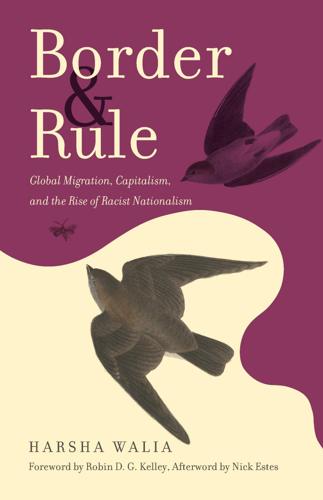
Border and Rule: Global Migration, Capitalism, and the Rise of Racist Nationalism
by
Harsha Walia
Published 9 Feb 2021
-Mexico Border Since July 2017: ACLU,” Associated Press, October 25, 2019, https://globalnews.ca/news/6081217/migrant-children-separated-tally-aclu/; American Civil Liberties Union, “Family Separation: By the Numbers,” www.aclu.org/issues/immigrants-rights/immigrants-rights-and-detention/family-separation; Associated Press, “Tally of Children Split at US Border Tops 5,400 in New Count,” Al Jazeera, October 24, 2019, www.aljazeera.com/news/2019/10/tally-children-split-border-tops-5400-count-191025020652717.html. 5.Sara Boboltz, “18 Migrant Infants and Toddlers Separated for Weeks or Months, House Report Finds,” Huffington Post, July 12, 2019, www.huffingtonpost.ca/entry/migrant-infants-toddlers-separated_n_5d288c60e4b0060b11eb0ec7; Associated Press, “‘I Can’t Feel My Heart’: Children Separated Under Trump Show Signs of PTSD, Watchdog Finds,” Guardian, September 5, 2019, www.theguardian.com/us-news/2019/sep/04/child-separation-ptsd-trump-zero-tolerance. 6.Gaby Del Valle, “The Most Horrifying Allegations in the ACLU’s Newest Family Separation Lawsuit,” Vice, October 4, 2019, www.vice.com/en_ca/article/8xwvy5/the-most-horrifying-allegations-in-the-aclus-newest-family-separation-lawsuit. 7.Ted Hesson and Mica Rosenberg, “U.S. Deports 400 Migrant Children under New Coronavirus Rules,” Reuters, April 7, 2020, www.reuters.com/article/us-health-coronavirus-usa-deportations/u-s-deports-400-migrant-children-under-new-coronavirus-rules-idUSKBN21P354; Nick Miroff, “Under Coronavirus Immigration Measures, U.S. is Expelling Border-Crossers to Mexico in an Average of 96 Minutes,” Washington Post, March 30, 2020, www.washingtonpost.com/immigration/coronavirus-immigration-border-96-minutes/2020/03/30/13af805c-72c5-11ea-ae50-7148009252e3_story.html; Nina Lakhani, “US Using Coronavirus Pandemic to Unlawfully Expel Asylum Seekers, Says UN,” Guardian, April 17, 2020, www.theguardian.com/world/2020/apr/17/us-asylum-seekers-coronavirus-law-un. 8.Nick Miroff, “Under Trump Border Rules, U.S.
…
Madan, “Millions of Immigrant Families Won’t Get Coronavirus Stimulus Checks, Experts Say,” Miami Herald, March 26, 2020, www.miamiherald.com/news/local/immigration/article241531211.html#storylink=cpy. 26.Americans for Tax Fairness and Institute for Policy Studies, “Tale of Two Crises: Billionaires Gain as Workers Feel Pandemic Pain,” May 21, 2020, https://americansfortaxfairness.org/wp-content/uploads/2020-5-21-Billionaires-Press-Release-at-Two-month-Covid-Pandemic-FINAL.pdf. 27.Eren Orbey, “Trump’s “Chinese Virus” and What’s at Stake in the Coronavirus’s Name,” New Yorker, March 25, 2020, www.newyorker.com/culture/cultural-comment/whats-at-stake-in-a-viruss-name; Salvador Rizzo, “Trump’s Wobbly Claim That His Wall Could Stop the Coronavirus,” Washington Post, March 12, 2020, www.washingtonpost.com/politics/2020/03/12/trumps-wobbly-claim-that-his-wall-could-stop-coronavirus/. 28.Arelis R. Hernández and Nick Miroff, “Facing Coronavirus Pandemic, Trump Suspends Immigration Laws and Showcases Vision for Locked-Down Border,” Washington Post, April 3, 2020, www.wasMngtonpost.com/national/coronavirus-trump-immigration-border/2020/04/03/23cb025a-74f9-11ea-ae50-7148009252e3_story.html. 29.Geoffrey York, “African Countries Move to Restrict European Visitors amid Coronavirus Pandemic,” Globe and Mail, March 11, 2020, www.theglobeandmail.com/world/article-african-countries-move-to-restrict-european-visitors-amid-coronavirus/. 30.S.
…
“Italy Closes Ports to Refugee Ships Because of Coronavirus,” Al Jazeera, April 8, 2020, www.aljazeera.com/news/2020/04/italy-closes-ports-refugee-ships-coronavirus-200408091754757.html; Faisal Mahmud, “Rohingya Stranded at Sea, Bangladesh Says Not Its Responsibility,” Al Jazeera, April 23, 2020, www.aljazeera.com/news/2020/04/rohingya-stranded-sea-bangladesh-responsibility-200425082607464.html; Lydia Gall, “Hungary Weaponizes Coronavirus to Stoke Xenophobia,” Human Rights Watch, March 19, 2020, www.hrw.org/news/2020/03/19/hungary-weaponizes-coronavirus-stoke-xenophobia. 19.Human Rights Watch, “Lebanon: Refugees at Risk in COVID-19 Response,” April 2, 2020, www.hrw.org/news/2020/04/02/lebanon-refugees-risk-covid-19-response. 20.Hsiao-Hung Pai, “The Coronavirus Crisis Has Exposed China’s Long History of Racism,” Guardian, April 25, 2020, www.theguardian.com/commentisfree/2020/apr/25/coronavirus-exposed-china-history-racism-africans-guangzhou; Geoffrey York, “African Diplomats Protest Alleged Racism and Inhumane Treatment of Migrants in China,” Globe and Mail, April 12, 2020, www.theglobeandmail.com/world/article-african-diplomats-protest-alleged-racism-and-inhumane-treatment-of/. 21.Rozanna Latiff, “Malaysia Rounds Up Migrants to Contain Coronavirus, U.N.
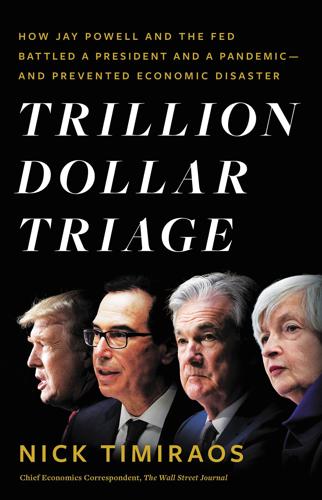
Trillion Dollar Triage: How Jay Powell and the Fed Battled a President and a Pandemic---And Prevented Economic Disaster
by
Nick Timiraos
Published 1 Mar 2022
Chloe Taylor, “Economic impact of coronavirus will be clearer in ‘three or four weeks,’ Mnuchin says,” CNBC, February 23, 2020. https://www.cnbc.com/2020/02/23/coronavirus-mnuchin-says-economic-impact-will-be-clearer-within-weeks.html 2. Rob Stein, Laurel Wamsley, “Health Officials Warn Americans to Plan for the Spread of Coronavirus in US,” NPR, February 25, 2020 https://www.npr.org/sections/health-shots/2020/02/25/809318447/health-officials-warn-americans-to-start-planning-for-spread-of-coronavirus-in-us 3. Fred Imbert, “Larry Kudlow says US has contained the coronavirus and the economy is holding up nicely,” CNBC, February 25, 2020. https://www.cnbc.com/2020/02/25/larry-kudlow-says-us-has-contained-the-coronavirus-and-the-economy-is-holding-up-nicely.html Chapter 1 1.
…
Kate Davidson and Bob Davis, “How Mnuchin Became Washington’s Indispensable Crisis Manager,” The Wall Street Journal, March 31, 2020. https://www.wsj.com/articles/steven-mnuchin-is-trying-to-rescue-the-economy-from-the-coronavirus-11585654202 2. Matthew J. Belvedere, “Trump says he trusts China’s Xi on coronavirus and the US has it ‘totally under control,’” CNBC, January 22, 2020. https://www.cnbc.com/2020/01/22/trump-on-coronavirus-from-china-we-have-it-totally-under-control.html 3. Lael Brainard, Commencement Address at Claremont McKenna College, May 17, 2014, https://www.cmc.edu/news/read-the-commencement-address-by-dr-lael-brainard 4.
…
sref=1X5UIU0Y 6. Author’s interview. 7. Colby Itkowitz, Ashley Parker, and Seung Min Kim, “Coronavirus continues its rapid spread, confounding efforts by global leaders,” The Washington Post, March 7, 2020. https://www.washingtonpost.com/health/2020/03/07/coronavirus-continues-its-rapid-spread-confounding-efforts-by-global-leaders/ Chapter 8 1. Robert Costa, Josh Dawsey, Jeff Stein, and Ashley Parker, “Trump urged Mnuchin to pressure Fed’s Powell on economic stimulus in explosive tirade about coronavirus,” The Washington Post, March 11, 2020. https://www.washingtonpost.com/business/economy/trump-urged-mnuchin-to-pressure-feds-powell-on-economic-stimulus-in-explosive-tirade-about-coronavirus/2020/03/11/db7bfeea-63c9-11ea-b3fc-7841686c5c57_story.html 2.

Reset
by
Ronald J. Deibert
Published 14 Aug 2020
Retrieved from https://www.helpnetsecurity.com/2020/02/03/wuhan-coronavirus-exploited-to-deliver-malware-phishing-hoaxes/ Ransomware, digital espionage attacks, and phishing schemes: Satter, R., Stubbs, J., & Bing, C. (2020, March 23). Exclusive: Elite hackers target WHO as coronavirus cyberattacks spike. Retrieved from https://www.reuters.com/article/us-health-coronavirus-who-hack-exclusive/exclusive-elite-hackers-target-who-as-coronavirus-cyberattacks-spike-idUSKBN21A3BN Mistakenly removed links: Orr, C. (2020, March 17). Facebook is removing links to coronavirus information on government websites. Retrieved from https://www.nationalobserver.com/2020/03/17/news/facebook-removing-links-coronavirus-information-government-websites Platforms introduced measures to point users: Gadde, V., & Derella, M. (2020, March 16).
…
“Shoot them dead”: Philippine president Rodrigo Duterte orders police and military to kill citizens who defy coronavirus lockdown. Retrieved from https://www.cbsnews.com/news/rodrigo-duterte-philippines-president-coronavirus-lockdown-shoot-people-dead/?ftag=CNM-00-10aab7e&linkId=85694802; Gebrekidan, S. (2020, March 30). For autocrats, and others, coronavirus is a chance to grab even more power. Retrieved from https://www.nytimes.com/2020/03/30/world/europe/coronavirus-governments-power.html; Gershgorn, D. (2020, April 9). We mapped how the coronavirus is driving new surveillance programs around the world. Retrieved from https://onezero.medium.com/the-pandemic-is-a-trojan-horse-for-surveillance-programs-around-the-world-887fa6f12ec9; See also Kamradt-Scott, A., & McInnes, C. (2012).
…
Retrieved from https://www.motherjones.com/politics/2020/02/russian-disinformation-coronavirus/ Widely accepted throughout Chinese society: Gilbert, D. (2020, April 6). The Chinese government has convinced its citizens that the U.S. Army brought coronavirus to Wuhan. Retrieved from https://www.vice.com/en_us/article/wxe9yq/the-chinese-government-has-convinced-its-citizens-that-the-us-army-brought-coronavirus-to-wuhan One YouTube video … falsely claimed that Africa was immune: Shanapinda, S. (2020, April 7). No, 5G radiation doesn’t spread the coronavirus. Here’s how we know. Retrieved from https://theconversation.com/no-5g-radiation-doesnt-cause-or-spread-the-coronavirus-saying-it-does-is-destructive-135695 More than thirty incidents of arson and vandalism: Satariano, A., & Alba, D. (2020, April 10).

Investing to Save the Planet: How Your Money Can Make a Difference
by
Alice Ross
Published 19 Nov 2020
EV Volumes, which collates monthly figures on electric vehicle sales, warned that the coronavirus fall-out could further impact sales in 2020, though this was likely to apply to sales of all cars as factory production slowed. A report from Wood Mackenzie, an energy consultancy, in April 2020 warned that electric vehicle sales were likely to drop drastically for the year, predicting global sales of just 1.3m, down from 2.2m in 2019. ‘Most new EV buyers are still first-time owners of the technology,’ a Wood Mackenzie analyst, Ram Chandrasekaran, wrote in a research note. ‘The uncertainty and fear created by the [coronavirus] outbreak have made consumers less inclined to adopt a new technology.’
…
Corporate decisions affecting workers … have become increasingly important as a wider array of investors have begun looking at companies through an ESG lens.’ Analysts at Barclays predicted that the coronavirus crisis could even accelerate investors’ interest in climate change, arguing that while ESG implementation might be delayed in the short term, ‘it is unlikely to be abandoned in the long run – and it may even accelerate in a post-Covid-19 world’. Of course, not all the developments were positive. The Financial Times warned in April that the coronavirus outbreak had delayed most of the big climate events and policy announcements expected in 2020. Glen Peters, research director at the Center for International Climate Research in Oslo, warned that climate might not be mentioned in policy discussions in the near term, telling the Financial Times: ‘It’s going to put a pause on anything climate related.’
…
But then I thought: surely the average investor on the street could get involved too, by looking at what was in their pension fund, for example, or thinking about whether they should invest in fossil fuel companies. It seemed to me that explaining what we can do to fight climate change as investors as well as consumers would give people some sense of control over the situation. Looking back at that time, some things have changed. The bad news we got used to waking up to in 2020 was of course the coronavirus: the daily death tolls, the hit to the economy. The climate crisis seemed almost to have been sidelined. I wrote much of this book in lockdown at my home in London while my two young children were out of school. It was a busy, stressful time. But it was also a quiet time. I was woken up, like so many others, not by planes roaring overhead to Heathrow but by birdsong.

Rule of the Robots: How Artificial Intelligence Will Transform Everything
by
Martin Ford
Published 13 Sep 2021
If cashierless stores do gain traction, they have the potential to unleash a major industry disruption and eventually put the jobs of more than three and a half million cashiers in the United States alone at significant risk. Beyond the increase in convenience and the time saved by not standing in checkout lines, these stores may be an especially good fit in a future shaped by the coronavirus because they offer completely touch-free payment without the need to ever come in close proximity to a human worker. Ironically, Amazon temporarily shut down most of its Go stores as the coronavirus unfolded, perhaps because the stores are so popular that they attract long lines of shoppers. However, in the long run, the technology seems ideally suited to a world where social distancing is, at least for a time, at a premium.
…
Google’s system was 94.4 percent accurate and “outperformed all six radiologists” in cases in which a prior CT scan for the patient was not available, and “was on-par with the same radiologists” when a previous image was available for comparison.45 Likewise, radiology AI systems were employed on an emergency basis in some cases as the coronavirus pandemic threatened to overwhelm hospitals. Amidst a shortage of tests for COVID-19, chest X-rays that showed evidence of the pneumonia often caused by the virus became an important alternative diagnostic technique. Some hospitals experienced backlogs resulting in delays of six hours or more as radiologists struggled to analyze the images. In response, two manufacturers of AI diagnostic tools, Mumbai-based Qure.ai and the Korean company Lunit, were able to rapidly recalibrate their systems to focus on the coronavirus. One study found that Qure.ai’s system was ninety-five percent accurate in distinguishing COVID-19 from other conditions that cause pneumonia.46 Results like these have led to enthusiasm that can sometimes blur into hype, and among some deep learning experts it’s often taken almost as a given that AI systems will completely replace human radiologists in the relatively near future.
…
In other words, I think we face a scenario where a significant fraction of our workforce is eventually at risk of being disenfranchised from the job market. But is there any evidence that anything like this has actually occurred? After all, the unemployment rate prior to the advent of the coronavirus pandemic was well below four percent. THE STORY UP UNTIL THE ONSET OF THE CORONAVIRUS PANDEMIC Over the ten-year period from the end of the Great Recession in 2009 until January 2020, the longest postwar economic recovery on record, the unemployment rate fell from ten percent to 3.6 percent—a level lower than any recorded in the past fifty years.5 An important caveat, however, is that this headline unemployment rate, which is measured on the basis of a household survey conducted by the U.S.
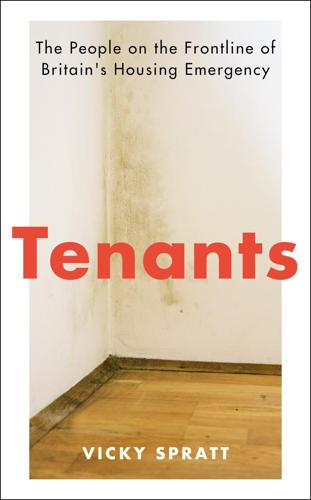
Tenants: The People on the Frontline of Britain's Housing Emergency
by
Vicky Spratt
Published 18 May 2022
The extent to which successive governments: At the time, I reported on this for the i Paper. You can read more here: ‘When it comes to housing during coronavirus, Rishi Sunak’s claim that “we are all in this together” isn’t true’, 16 April 2020, inews.co.uk/opinion/housing-coronavirus-renting-rishi-sunak-418924 The Chancellor’s support package: Vicky Spratt, ‘Coronavirus help for renters: The assistance available if you are renting in the UK’, i Paper, 27 March 2020, inews.co.uk/opinion/coronavirus-rent-help-government-uk-home-pay-assistance-how-claim-explained-412072 you can buy a flat in Dorrington Court: www.rightmove.co.uk/properties/71201970#/ or rent one privately: www.rightmove.co.uk/properties/70771572#/ Macintosh’s work, her vision: Pre-war, most council housing was for those on middle incomes.
…
In 2020 record numbers of people applied for Universal Credit – some of them probably considered themselves ‘middle class’ and did so for the first time – and too many found out just how paltry the available support really was. As part of its coronavirus support package, Boris Johnson’s government unfroze LHA; it had to do this because it knew it didn’t fully cover rents, but in many parts of the country this slight rise still didn’t stretch far enough – and it certainly didn’t restore the benefit to its pre-austerity levels, even though rents had risen since then. This mattered. In areas where there were high numbers of coronavirus cases, there were also high levels of unaffordable housing. At the time, the Joseph Rowntree Foundation (JRF), an independent charity which works to end poverty, found that private renters in these places – large areas of London such as Lambeth, Wandsworth, Westminster, Tower Hamlets, Hackney, the City of London, Kensington and Chelsea, Hammersmith and Fulham, Islington, Haringey and Camden, for example – faced significantly higher than average rents as well as higher than average rates of child poverty and temporary accommodation.
…
Charities, which had long been calling for these measures, were suddenly being listened to, their policy suggestions taken up wholesale. If private renters were, shockingly, overlooked in the coronavirus response, perhaps it is because their plight, while no less or more important, is less emotive and inspires less political goodwill than rough sleeping, which is visible and visceral, particularly during a global pandemic. When it came to private renting, the response was, indeed, scandalous. The initial emergency coronavirus legislation didn’t have a section on the eviction of private renters at all. One was added as an amendment at a second reading on 23 March.
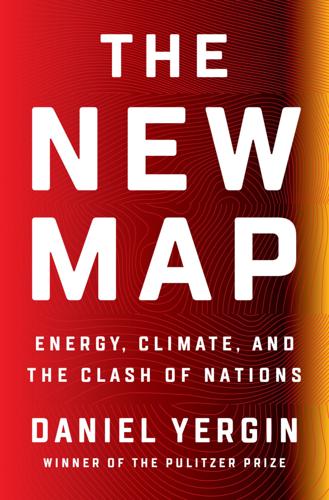
The New Map: Energy, Climate, and the Clash of Nations
by
Daniel Yergin
Published 14 Sep 2020
In 2000, 1.9 million cars were sold in China, 17.3 million in the United States. By 2019, the number was 25 million in China and 17 million in the United States. The weight of China in the world economy was made clear by the novel coronavirus. When the SARS epidemic began in 2002, China accounted for only 4 percent of world GDP. When the coronavirus hit in 2020, it was 16 percent, meaning that the economic impact would reverberate around the world even before the coronavirus shut down much of the rest of the world.7 When GDP is measured by exchange rates, the U.S. economy is still larger than China’s. By the other major measure of GDP—purchasing power parity—China is already the largest economy in the world.
…
Economy,” Dallas Federal Reserve, May 2020. 6. Coronavirus Task Force Briefing, March 19, 2020 (“person driving the car”); Javier Blas, “Trump’s Oil,” Bloomberg, April 13, 2020 (“so low” and “wiped out”); Coronavirus Task Force Briefing, April 1, 2020; Donald J. Trump, Tweet, April 2, 2020 (“my friend”). 7. Frank Kane, “Saudi Arabia Calls ‘Urgent Meeting of Oil Producers’,” Arab News, April 2, 2020; Meeting on the Situation in Global Energy Markets, April 3, 2020, Kremlin website. 8. Mohammad Barkindo, Remarks to OPEC+ Ministerial Meeting, April 9, 2020. 9. Coronavirus Task Force Briefing, April 8, 2020 (“hated OPEC”); Dan Brouillette, Remarks for G20 Extraordinary Energy Ministers Meeting, April 10, 2020; Benoit Faucon, Summer Said, and Tim Puko, “U.S., Saudi Arabia, Russia Lead Pact,” Wall Street Journal, April 12, 2020; “The Largest Oil Supply Cut in History,” Oil Market Insight, IHS Markit, April 12, 2020. 10.
…
Criticism of China is one thing that unites divided Democrats and Republicans in the United States, and the national security establishments in both countries increasingly focus on the other as the future adversary. Yet the two countries are more integrated economically and more interdependent than many recognize, as the 2020 coronavirus outbreak unhappily demonstrated; and they are mutually dependent on global prosperity. But that reality counts for less as calls grow louder for “decoupling” between the world’s two largest economies, accompanied by growing mistrust, which has been amplified by the coronavirus crisis, one of the lasting consequences of which will be greater tension between the two countries. * * * — The Middle East’s geographic boundaries were continually redrawn throughout antiquity, with the rise and fall of so many empires.
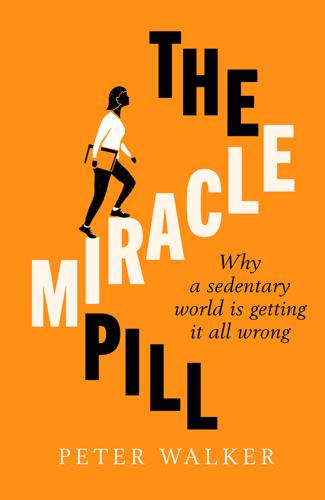
The Miracle Pill
by
Peter Walker
Published 21 Jan 2021
Chapter 10 1 Dr Sabine L. van Elsland, Ryan O’Hare, ‘COVID-19: Imperial researchers model likely impact of public health measures’, Imperial College News, 17 March 2020. 2 Damian Carrington, ‘Indoor and outdoor air pollution “claiming at least 40,000 UK lives a year” ’, The Guardian, 22 February 2016. 3 Fiona Harvey, ‘Air pollution: UK government loses third court case as plans ruled “unlawful” ’, The Guardian, 21 February 2018. 4 Interview with the author. 5 Interview with the author. 6 Interview with the author. 7 David C. Nieman, ‘Coronavirus disease-2019: A tocsin to our aging, unfit, corpulent, and immunodeficient society’, Journal of Sport and Health Science, Vol. 9, No. 4 (2020): 293–301. 8 Peter Walker, Matthew Taylor, ‘Labour to plan green economic rescue from coronavirus crisis’, The Guardian, 17 May 2020. Interview took place on 15 May. 9 Briefing to political journalists in the daily ‘lobby’ conference (held via telephone conference call amid coronavirus). 10 Matthew Taylor, ‘Large areas of London to be made car-free as lockdown eased’, The Guardian, 15 May 2020. 11 Interview with the author. 12 Interview with the author. 13 Interview with the author. 14 Interview with the author. 15 Interview with the author. 16 Interview with the author.
…
It forms part of a wider shift in healthcare focus from infectious viral and bacterial illnesses and onto so-called non-communicable diseases, or NCDs, which are often linked to lifestyle or environment. To an extent, this focus has shifted back with the sudden arrival of coronavirus. But even here NCDs play a key role, given an emerging link between conditions like diabetes and high blood pressure and poor coronavirus outcomes. Academics gauge the impact of NCDs using a tool called Burden of Disease, which simply multiplies the risk an ailment poses to an individual by the extent of its spread. This system has been used to devise what public health officials call the ‘four by four’ threat – a list of the four most damaging NCDs around the world, and the four primary risk factors behind them.
…
And it is an undeniable paradox to have spent my days chronicling successive government failures over one public health disaster when, at precisely the same moment, many of them are tackling another life-threatening crisis with genuine boldness. In terms of scale, inactivity is not quite so acute as coronavirus, which, according to the scientific modelling which eventually persuaded Johnson to confine people to their homes, could have killed between 250,000 and 500,000 people in the UK alone if nothing was done.1 Coronavirus has also provoked a particularly urgent response by being new, rapid in its destructiveness, and directly fatal. In contrast, someone in their twenties who flops down on a sofa tonight might not start to feel the impact of an inactive lifestyle for several decades, and then only through the impact of various chronic illnesses.
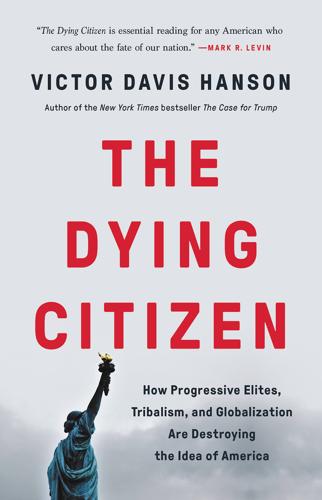
The Dying Citizen: How Progressive Elites, Tribalism, and Globalization Are Destroying the Idea of America
by
Victor Davis Hanson
Published 15 Nov 2021
Peng Zhou, et al., “A Pneumonia Outbreak Associated with a New Coronavirus of Probable Bat Origin,” Nature 579 (2020): 270–273. 4. Joe Penney, “Racism, Rather Than Facts, Drove U.S. Coronavirus Bans,” The Intercept, May 16, 2020, https://theintercept.com/2020/05/16/racism-coronavirus-china-europe. 5. A possible late summer appearance of the coronavirus: Shelby Lin Erdman, “Satellite Images of Wuhan May Suggest Coronavirus Was Spreading as Early as August,” CNN, June 10, 2020, www.cnn.com/2020/06/08/health/satellite-pics-coronavirus-spread. Cissy Zhou, “China Coronavirus: As Travel Ban Is Issued for Wuhan, Many in City Rush to Escape,” South China Morning Post, January 23, 2020, www.scmp.com/news/china/society/article/3047263/china-coronavirus-travel-ban-issued-residents-wuhan. 6.
…
Closure of gun stores: “LA County Sheriff Closes Gun Stores in 42 Cities Due to Coronavirus Outbreak,” NBC Los Angeles, March 26, 2020, www.nbclosangeles.com/news/local/la-county-sheriff-closes-gun-stores-in-42-cities-due-to-coronavirus-outbreak/2336094; cf. Alexandra Meeks and Leah Asmelash, “Los Angeles Sheriff Orders Gun Stores Shut Down Due to Coronavirus Restrictions,” CNN, March 24, 2020, www.cnn.com/2020/03/24/us/los-angeles-gun-store-close-coronavirus-trnd; Justin Carissimo, “1,700 Inmates Released from Los Angeles County in Response to Coronavirus Outbreak,” CBS News, March 24, 2020, www.cbsnews.com/news/inmates-released-los-angeles-county-coronavirus-response-2020-03-24.
…
Tobias Hoonhout, “Bill Gates Dismisses Chinese Coronavirus Coverup: ‘It’s Not Even Time for That Discussion,’” National Review, April 27, 2020, www.nationalreview.com/news/bill-gates-dismisses-chinese-coronavirus-coverup-its-not-even-time-for-that-discussion; Ariel Zilber, “Bill Gates Defends China’s Coronavirus Response: Billionaire Says Beijing ‘Did a Lot of Things Right’ at the Start of the Pandemic and Claims Criticism of the Communist Party Is a ‘Distraction,’” Daily Mail, April 26, 2020, www.dailymail.co.uk/news/article-8259591/Now-not-time-Bill-Gates-defends-China-coronavirus-response.html. 6. Jack Goldsmith and Andrew Keane Woods, “Internet Speech Will Never Go Back to Normal,” The Atlantic, April 25, 2020, www.theatlantic.com/ideas/archive/2020/04/what-covid-revealed-about-internet/610549. 7.

The Lords of Easy Money: How the Federal Reserve Broke the American Economy
by
Christopher Leonard
Published 11 Jan 2022
Adams, Todd A., 186–88, 191, 192, 194, 195, 198 AIG, 23 Airbnb, 297 allocation of money, 19, 20 allocative effects of quantitative easing, 27, 28 of zero bound, 19, 20, 27 American Banker, 209 American Enterprise Institute, 18 announcement effect, 134 Apollo Management, 168–70, 172–74, 180, 186, 191 Ares Capital, 213 asset bubbles, 20, 29, 54–56, 63, 69, 82, 83, 85, 88–89, 91–93, 95, 105, 134, 142, 148, 222, 228, 231, 234, 300 China and, 235 Florida real estate, 54–55, 86 asset prices and value, 53–55, 57–59, 68, 81, 82, 86–87, 98, 237, 259, 262 coronavirus relief and, 288 inflation and, 50, 68–69, 81–84, 87, 95, 119, 148, 182, 224, 295, 297, 305 interest rates and, 300 loans and, 49–51, 57–60 quantitative easing and, 119, 132, 148, 182, 300 ZIRP and, 119, 192 assets, 235 coronavirus bailouts and, 287 defined, 54 ownership of, 119, 287 AT&T, 270 auto workers, 74 Axel, Ralph, 254 bailouts, 87, 208–11, 248–49, 302 coronavirus, see coronavirus relief and bailout programs repo market, 243–58 in 2008 and 2009, 10, 23, 100–102, 206, 249, 286 Bain Capital, 180 Bair, Sheila, 210 Baker, James, III, 162 balance sheets of banks, 50–51, 57–58 defined, 343 of Fed, 102, 138, 147, 211, 227, 231, 236, 256, 257, 290–91, 301–2, 343, 349 bank failures, 45–46, 48, 66, 67, 68, 73, 96n, 98, 100 Continental Illinois, 65–66, 68–69, 97, 98, 100 coronavirus and, 269–70 FDIC and, 208–9 Fed’s loans to banks during, 46, 58, 63 of 1873, 46 of foreign banks, 101 liquidation of insolvent banks, 64 living wills and, 208–9, 269 of 1980s, 53, 58–59, 96 Penn Square, 63–65, 67–69, 97, 98 “too big to fail” banks, 66–67, 97, 202, 203, 209, 219 Bank Policy Institute, 206–7 banks, 43 bailouts of, see bailouts balance sheets of, 50–51, 57–58 Basel III accord and, 203, 204, 209–10 big, Hoenig’s plan to break up (the Hoenig rule), 203–7, 209 capital set aside for times of crisis, 209–11 central, 103–4, 112, 139–40, 217–18, 232, 235, 237–38, 345 central, U.S. creation of, 44–47 community, 202 coronavirus and, 269 divided into commercial and investment, 80, 348 Dodd-Frank rules and, 203, 204, 207, 209, 229, 252, 277, 350 early American system of, 45 economics and, 302 European, 134, 210 FDIC liquidation of, 64 FDIC’s protection of consumer deposits in, 80, 202, 345 FDR and, 79, 100, 204 free banking era, 45 Global Financial Crisis’s effect on, 202, 206 Hoenig’s disputes with bankers, 49–50, 55, 58–59, 65 Hoenig’s views on, 43–44 interstate banking laws, 96–97 lobbyists for, 206–7 mergers and consolidation of, 43, 202 New Deal and, 79–80, 204 overnight loans between, 114, 248, 249 regional, 279 regulation of, 48, 79, 80, 97, 100, 203, 204, 207, 209 reserves of, 121, 221, 244, 248–49, 251, 256 reserves of, excess, 227, 243, 244, 248–50 shadow, 202, 252, 291, 350 stock value of, 269, 270 stress tests for, 207–8, 229, 269 symposium of directors of, 96–99 see also loans Barstool Sports, 288 Basel III accord, 203, 204, 209–10 basis risk trades, 252–55, 265 BDCs (business development corporations), 181 bear market, 236 Bear Stearns, 277 Beck, Glenn, 109–11 Bell, Steve, 158–60 Belly Up (Zweig), 64 Bernanke, Ben, 10, 22–26, 31, 73, 93–94, 96, 102, 105, 108, 132, 136, 146, 217, 222, 223, 229, 243, 258, 267, 291 Citadel and, 289–90 Congressional testimony of, 99, 109 final meeting as Fed chairman, 222 Fisher and, 131 Hoenig and, 15, 29, 93–94, 104 inflation and, 93 memoir of, 22, 34 press conferences of, 144–45 quantitative easing and, 10, 25–34, 105, 112–13, 118n, 121, 126–30, 132–34, 136, 140–46, 148, 182, 247 Yellen and, 130 Bianco, Jim, 261–63, 269–70 Biden, Joe, 298–99, 304 Binder, Carola, 108, 109, 144 Bloomberg News, 101, 109, 231, 298 BlueCrest Capital Management, 254 BNP Paribas, 99–100 Boehne, Edward, 72 Boeing, 298 Boies Schiller Flexner, 284 bonds, 119, 134, 142, 147, 155–56, 170, 211, 218, 235, 237, 262, 270, 272, 279, 347 coronavirus relief and, 288 defined, 344 developing nations and, 216–17 Fed’s purchase of, 101, 110, 139, 227, 267, 279, 280, 282 Fed’s sale of, 231–34, 236 junk, see junk bonds negative-interest-rate, 217–18 Operation Twist and, 127 Treasury, see Treasury bonds Boston Market, 284 Bowman, Michelle, 280n Brady, Nicholas F., 156–58, 160–61 Brainard, Lael, 272, 280n Brazil, 217 Brookings Institution, 224, 257–58 Brown, Sherrod, 206 Bryan, Vicki, 177–78, 182 Bryan, William Jennings, 9, 46 Buffett, Warren, 159–60 Bullard, Jim, 34 Burns, Arthur, 22 Bush, George H.
…
CHAPTER 14: INFECTION The first waves of volatility: Sui-Lee Wee and Vivian Wang, “China Grapples with Mystery Pneumonia-Like Illness,” New York Times, January 6, 2020; Fanfan Wang, “China Reports First Death from New Coronavirus,” Wall Street Journal, January 11, 2020; Michael Levenson, “Scale of China’s Wuhan Shutdown Is Believed to Be Without Precedent,” New York Times, January 22, 2020; Jason Horowitz, “Italy Locks Down Much of the Country’s North over the Coronavirus,” New York Times, March 7, 2020; transcript of the CDC Telebriefing Update on COVID-19, February 26, 2020. The traders on Wall Street did start thinking: Jim Bianco and Scott Minerd, interviews with author, 2020. On Thursday, February 27: Catherine Thorbecke, “Dow Jones Plunges Most Since 2008 on Coronavirus Fears,” ABC News, February 27, 2020.
…
In retrospect, Tom Hoenig’s trip to Starbucks seemed like an especially poignant moment. He didn’t know it at the time, but this was the closing chapter on an epoch of American economic history. The daily headlines were about a growing viral epidemic. A novel coronavirus was quickly spreading around the world. One hundred and fifty-eight cases of coronavirus infection had been reported in the United States on March 4. This was scary, but the guests at Starbucks with Hoenig entered and left freely. Nobody wore a face mask. It was still taken for granted that people shook hands when they met. Things seemed normal.

The Controlled Demolition of the American Empire
by
Jeff Berwick
and
Charlie Robinson
Published 14 Apr 2020
These are just some of the conspiracy “myths” that have been proven since the onset of the Coronavirus. From mind control to population control, crowd control, and exchange control – if people do not see a pattern here, they may beyond help. But first, it is important to have a look at the Coronavirus Plandemic and the events of 2020 that made the world go boom! Virus X Pneumonia of unknown cause detected in Wuhan, China was first reported to the WHO Country Office in China on 31 December 2019. The outbreak was declared a Public Health Emergency of International Concern on 30 January 2020. On 11 February 2020, WHO announced a name for the new coronavirus disease: COVID-19.
…
Recently, the Center for Health Security has received questions about whether that pandemic exercise predicted the current novel coronavirus outbreak in China. To be clear, the Center for Health Security and partners did not make a prediction during our tabletop exercise. For the scenario, we modeled a fictional coronavirus pandemic, but we explicitly stated that it was not a prediction. Instead, the exercise served to highlight preparedness and response challenges that would likely arise in a very severe pandemic. We are not now predicting that the nCoV-2019 outbreak will kill 65 million people. Although our tabletop exercise included a mock novel coronavirus, the inputs we used for modeling the potential impact of that fictional virus are not similar to nCoV-2019. ”Event 201” was the fourth major pandemic exercise that the Center for Health Security has run – a mere three months before the official outbreak of…guess what…a coronavirus pandemic.
…
“It’s called the American dream – because you have to be asleep to believe it.” Bang! Because of worldwide Coronavirus lockdowns, millions of people have been forced out of their jobs and their businesses – over 40 million in the US alone! Small businesses have been buried already, large businesses are starting to stink and economies are flailing helplessly. In March 2020, the world’s seven key western economies, Canada, France, Germany, Italy, Japan, the UK, and the US, pledged to fight off a world-wide Great Depression by standing united against the Coronavirus economic meltdown. It is a beautiful thing all this love and trust and cooperation.
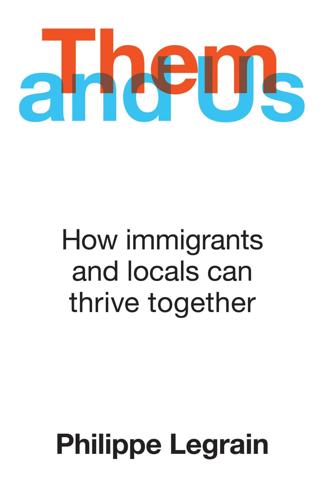
Them and Us: How Immigrants and Locals Can Thrive Together
by
Philippe Legrain
Published 14 Oct 2020
Former president Nicolas Sarkozy said, ‘the only community that matters is the French community… We will no longer settle for integration that does not work, we will require assimilation.’24 François Fillon, the eventual conservative candidate, argued that immigration should be ‘reduced to a strict minimum’.25 But Emmanuel Macron, a social liberal political newcomer, ultimately beat Le Pen to the presidency in 2017 by attacking the far-right leader’s vision of a ‘fractured, closed France’ and declaring that he was ‘for an open society’ and ‘a progressive world’, although his policies in office have not always lived up to that positive rhetoric.26 The coronavirus crisis has also highlighted the contribution that immigrants make. When he emerged from hospital after almost dying from coronavirus, Boris Johnson paid heartfelt tribute to his nurses ‘Jenny from New Zealand’ and ‘Luis from Portugal’, two of the thousands of immigrants who serve in the UK’s National Health Service (NHS).27 The lockdowns imposed in many countries to limit viral transmission have likewise underscored the essential functions performed by key workers – often immigrants previously dismissed as ‘unskilled’ – such as caring for the elderly, providing public transport and picking, packing, stacking and delivering food.
…
In every Western country surveyed by Pew except Italy and Greece, a majority of young people favour more diversity – in the UK nearly four in five do – and in every country that proportion is higher than among older people.3 Younger, more educated locals are much, much keener on admitting more migrants from poorer non-European countries than older, less educated locals.4 Sadly, the trends pushing towards closing borders and stamping on difference are powerful too. Governments around the world have shut borders to limit coronavirus transmission, and greater restrictions may remain once the pandemic passes. Economies may not bounce back quickly from their coronavirus collapse and high unemployment may endure. Public finances and public services are often strained. Housing in desirable cities remains unaffordable for most. Small towns are sometimes left behind by economic progress. Cultural fears compound economic concerns.
…
E3 visas are for Australian professionals. 35 US Department of State, ‘Report of the Visa Office 2018’, Table XVI(B). https://travel.state.gov/content/dam/visas/Statistics/AnnualReports/FY2018AnnualReport/FY18AnnualReport%20-%20TableXVIB.pdf 36 The US offers 124,365 EB-1, EB-2 and EB-3 permanent work visas a year. 37 Jessica Kwong, ‘H-1B Visa Program and Trump: How High-Skilled Immigrants are being Threatened by President’s Administration’, Newsweek, 1 March 2018. http://www.newsweek.com/h-1b-visa-program-trump-administration-824688 38 ‘Presidential Executive Order on Buy American and Hire American’, 18 April 2017. https://www.whitehouse.gov/presidential-actions/presidential-executive-order-buy-american-hire-american/ 39 William Kerr, The Gift of Global Talent, 2018 40 Demetri Sevastopulo and Yuan Yang, ‘Ex-Google chief warns of need for AI co-operation with China’, Financial Times, 5 November 2019. https://www.ft.com/content/6a1de5b6-ff5f-11e9-b7bc-f3fa4e77dd47 41 ‘Relations between China and America are infected with coronavirus’, The Economist, 26 March 2020. https://www.economist.com/united-states/2020/03/26/relations-between-china-and-america-are-infected-with-coronavirus 42 Michael Savage, ‘NHS winter crisis fears grow after thousands of EU staff quit’, Guardian, 24 November 2019. https://www.theguardian.com/society/2019/nov/24/nhs-winter-crisis-thousands-eu-staff-quit 43 Alan Travis, ‘UK hits visa cap on skilled workers for third month in row’, Guardian, 18 February 2018. https://www.theguardian.com/uk-news/2018/feb/18/uk-hits-skilled-worker-visa-cap-third-month-home-office-refuses-applications 44 Jack Graham, ‘The New Global Talent Race’, OPEN, 13 June 2018. http://www.opennetwork.net/the-new-global-talent-race/ 45 Hugo O’Doherty, ‘Canada Immigration Levels Plan: 2019–2021’, Moving2Canada, 31 October 2018. https://moving2canada.com/canada-immigration-levels-plan-2019-2021/ 46 Government of Canada, ‘Hire a top foreign talent through the Global Talent Stream’.
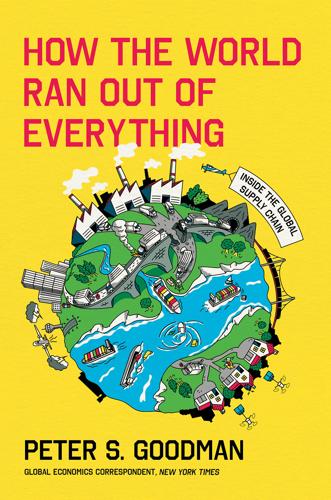
How the World Ran Out of Everything
by
Peter S. Goodman
Published 11 Jun 2024
Chapter 2: “Everyone Is Competing for a Supply Located in a Single Country.” 1. covered up reports: Jane Li, “Martian Language, Emoji, and Braille: How China Is Rallying to Save a Coronavirus Story Online,” Quartz, March 11, 2020. 2. isolating Wuhan: Amy Qin and Vivian Wang, “Wuhan, Center of Coronavirus Outbreak, Is Being Cut Off by Chinese Authorities,” New York Times, January 23, 2020, A1. 3. forcibly rounding up people: Amy Qin, “China Expands Chaotic Dragnet in Coronavirus Crackdown,” New York Times, February 14, 2020, A1. 4. 300 million migrant workers: Javier C. Hernandez, “Coronavirus Lockdowns Torment an Army of Poor Migrant Workers in China,” New York Times, February 24, 2020, A10. 5. workers and parts: Keith Bradsher, “Slowed by the Coronavirus, China Inc.
…
“critical infrastructure”: Ibid., n. 104. 21. the largest meatpackers: Ibid., 15. 22. involve Pence or Trump: Email from Julie Anna Potts, CEO of North American Meat Institute, to Noel White, CEO Tyson Foods, et al., April 2, 2020, attached as exhibit to Select Subcommittee on the Coronavirus Crisis, “How the Trump Administration Helped,” 15–16, n. 111. 23. “quit your job”: Email from Julie Anna Potts, CEO North American Meat Institute, to USDA Secretary Sonny Perdue, April 3, 2020, attached as exhibit to Select Subcommittee on the Coronavirus Crisis, “How the Trump Administration Helped,” 16, n. 112. 24. “incidents of worker absenteeism”: “Vice President Pence with Coronavirus Task Force Briefing,” C-SPAN, video, April 7, 2020, https://www.c-span.org/video/?471020-101/vice-president-pence-coronavirus-task-force-briefing. 25. “for what you’re doing”: Ibid. 26. $3 billion in dividends: Brian Deese, Sameera Fazili, and Bharat Ramamurti, “Recent Data Show Dominant Meat Processing Companies Are Taking Advantage of Market Power to Raise Prices and Grow Profit Margins,” White House Briefing Room blog, December 10, 2021, https://www.whitehouse.gov/briefing-room/blog/2021/12/10/recent-data-show-dominant-meat-processing-companies-are-taking-advantage-of-market-power-to-raise-prices-and-grow-profit-margins/. 27. revenues of $22 billion: JBS SA earnings call with investors, March 25, 2021, transcript via CQ-Roll. 28.
…
Struggles to Reopen,” New York Times, February 17, 2020, A1. 6. plunged by 17 percent: “China’s Exports Plunge Amid Coronavirus Epidemic,” Wall Street Journal, March 7, 2020. 7. average of thirty thousand: Yossi Sheffi, The Magic Conveyor Belt: Supply Chains, A.I., and the Future of Work, (Cambridge, MA: MIT CTL Media, 2023), 2. 8. forty-three different countries: Magdalena Petrova, “We Traced What It Takes to Make an iPhone,” CNBC, December 14, 2018, https://www.cnbc.com/2018/12/13/inside-apple-iphone-where-parts-and-materials-come-from.html. 9. products like disposable diapers: Sheffi, The Magic Conveyor Belt, 5. 10. fifty-one thousand companies worldwide: Marc Levinson, Outside the Box: How Globalization Changed from Moving Stuff to Spreading Ideas (Princeton, NJ: Princeton University Press, 2020), 227. 11. it would miss targets: Daisuke Wakabayashi, “Apple Signals Coronavirus’s Threat to Global Business,” New York Times, February 18, 2020, A1. 12. a dearth of parts: Ben Foldy, “Coronavirus Fallout Threatens Auto Industry’s Supply Chain,” Wall Street Journal, February 7, 2020. 13. Fiat Chrysler: Ibid. 14. The French automaker: Ibid. 15. So did Hyundai: Jack Ewing, Neal E. Boudette, and Geneva Abdul, “Virus Exposes Cracks in Carmakers’ Chinese Supply Chains,” New York Times, February 5, 2020, B1. 16. Fashion companies scrambled: “FACTBOX—Companies Feel Impact of Coronavirus Outbreak in China,” Reuters, February 12, 2020, https://www.reuters.com/article/uk-china-health-business-impact-factbox/factbox-companies-feel-impact-of-coronavirus-outbreak-in-china-idUKKBN1ZZ0AV. 17. 85 percent of global production: Paul Ziobro, “Coronavirus Upends Global Toy Industry,” Wall Street Journal, February 27, 2020. 18.
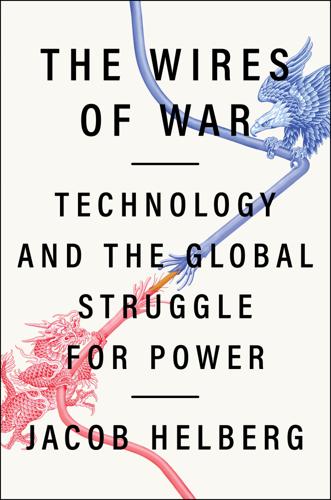
The Wires of War: Technology and the Global Struggle for Power
by
Jacob Helberg
Published 11 Oct 2021
Florida Politics, October 9, 2019, https://floridapolitics.com/archives/307822-senate-intelligence-committee-russian-meddling-targeted-marco-rubio-jeb-bush-in-2016/. 9 Jill Lepore, “Party Time,” New Yorker, September 10, 2007, https://www.newyorker.com/magazine/2007/09/17/party-time. 10 “About COVID-19,” Centers for Disease Control and Prevention, September 1, 2020, https://www.cdc.gov/coronavirus/2019-ncov/cdcresponse/about-COVID-19.html. 11 Finbarr Bermingham and Cissy Zhou, “Coronavirus: China and US in ‘new Cold War’ as relations hit lowest point in ‘more than 40 years,’ spurred on by pandemic,” South China Morning Post, May 5, 2020, https://www.scmp.com/economy/china-economy/article/3082968/coronavirus-china-us-new-cold-war-relations-hit-lowest-point. 12 Chris Buckley and Steven Lee Myers, “From ‘Respect’ to ‘Sick and Twisted’: How Coronavirus Hit U.S.-China Ties,” New York Times, May 15, 2020, https://www.nytimes.com/2020/05/15/world/asia/coronavirus-china-united-states-cold-war.html. 13 Hal Brands and Jake Sullivan, “China Has Two Paths to Global Domination,” Foreign Policy, May 22, 2020, https://foreignpolicy.com/2020/05/22/china-superpower-two-paths-global-domination-cold-war/. 14 David E.
…
-China Economic and Security Review Commission, June 24, 2020, https://www.uscc.gov/sites/default/files/2020-06/Flournoy_Testimony.pdf. 51 “The Trump administration wants a US-China commercial split,” The Economist, August 13, 2020, https://www.economist.com/business/2020/08/13/the-trump-administration-wants-a-us-china-commercial-split; Apjit Walia, “The coming Tech Wall and the covid dilemma,” DB Research, https://www.dbresearch.com/PROD/RPS_EN-PROD/PROD0000000000507995/The_coming_Tech_Wall_and_the_covid_dilemma.pdf. 52 Kim Lyons, “Apple starts making first flagship iPhone in India,” The Verge, July 25, 2020, https://www.theverge.com/2020/7/25/21338436/apple-iphone11-india-foxconn-china. 53 Lauly Li and Cheng Ting-Fang, “Inside the US campaign to cut China out of the tech supply chain,” Nikkei Asia, October 7, 2020, https://asia.nikkei.com/Spotlight/The-Big-Story/Inside-the-US-campaign-to-cut-China-out-of-the-tech-supply-chain. 54 Huileng Tan, “Coronavirus outbreak in China spurs supply chain shifts that began during trade war,” CNBC, February 20, 2020, https://www.cnbc.com/2020/02/20/coronavirus-outbreak-spurs-supply-chain-shifts-started-by-us-china-trade-war.html. 55 Huileng Tan, “There will be a ‘massive’ shuffling of supply chains globally after coronavirus shutdowns,” CNBC, March 20, 2020, https://www.cnbc.com/2020/03/20/coronavirus-shocks-will-lead-to-massive-global-supply-chain-shuffle.html. 56 “Attorney General William P. Barr Delivers the Keynote Address at the Department of Justice’s China Initiative Conference,” U.S.
…
A 2020 report by the State Department’s Global Engagement Center concluded that China, Russia, and Iran were coordinating their messaging on the coronavirus. Each government spread falsehoods that the virus was developed as an American bioweapon, that China had responded well, and that the U.S. economy was collapsing. The report was not released publicly, but according to Politico, it argued “that propaganda and disinformation narratives from those country’s [sic] governments have converged as coronavirus has spread.” A few months later, representatives from the Chinese and Russian foreign ministries held “consultations” on disinformation.162 The stated goal was ostensibly to “jointly combat disinformation,” but coordination was more likely on the agenda.
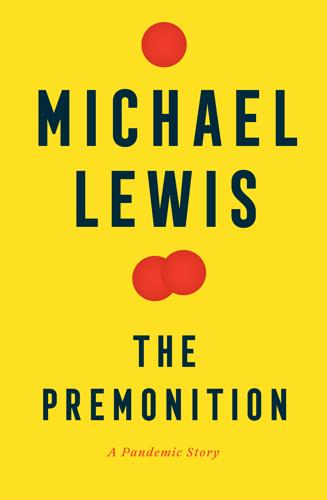
The Premonition: A Pandemic Story
by
Michael Lewis
Published 3 May 2021
Joe’s team took the lung sample sent by the CDC, dissolved it, and washed the genetic material across the Virochip. Bits of it had attached to bits of three different previously identified viruses: a cow coronavirus, a bird coronavirus, and a human coronavirus. “It was like pieces of a jigsaw puzzle from three different puzzles,” says DeRisi. “They didn’t fit together. It said to us this is a novel coronavirus.” The new virus’s similarity to known viruses inside cows, birds, and people did not imply that it had come from a cow or a bird or a person. The so-called reservoir species—the animal harboring the virus before the virus jumped into humans—remained a mystery.
…
Then he went to work on the lung. Twenty-four hours later his lab had identified the pathogen that had killed its original owner: a new coronavirus. Back in March 2003, this was shocking news. No one had ever heard of a coronavirus causing severe illness in people. Coronaviruses could be deadly to animals, but in people they’d always manifested themselves as the common cold. The World Health Organization would eventually give the disease caused by this coronavirus its name: severe acute respiratory syndrome, or SARS. “After that I was hooked,” said Joe. “I said I want to do more of this.” Joe sensed that the CDC was stunned by what the DeRisi Lab had done, and by how quickly they’d done it.
…
“Sending tests even to the CDC was taking days, not hours,” said Joe. A test that took ten days to process was a pointless test. Absent fast tests, hospitals were being forced to treat everyone who rolled into the parking lot with coronavirus-like symptoms as if they had the virus, when more often than not they did not. Beds in the coronavirus wing were being taken by people who didn’t need them. Nurses and doctors were running through scarce protective gear they needed for actual coronavirus patients. But the biggest problem of having no tests was not knowing where the virus was and where it was not. Without fast tests, you could not isolate the people who needed to be isolated, or liberate the people who didn’t.

How to Spend a Trillion Dollars
by
Rowan Hooper
Published 15 Jan 2020
The full human and economic impact of coronavirus, SARS-CoV-2, is still playing out. At the time of writing more than a million people have died, while hundreds of millions have had their lives disrupted or economically ruined. The economic impact is at $2 trillion and rising.1 But the tragedy is far from the worst it could have been. Unchecked, coronavirus could have caused 40 million deaths in 2020 alone, according to a report from the World Health Organization (WHO).2 The virus itself could have been more virulent, and more deadly, and the miserable fact is that just because we’ve had coronavirus doesn’t mean we can’t get another even worse pandemic.
…
They are among the grandest, boldest and most brilliant ideas humans have ever had, confronting some of our biggest challenges. With a trillion dollars you could make them happen. At the very least, you could have a lot of fun trying. Such was my viewpoint as I set out to write. And then coronavirus hit. Suddenly, as after 2008, money has been found. In March 2020, the United States Congress approved an economic stimulus package worth $2.2 trillion, aimed at mitigating the impact of coronavirus; another $2 trillion ended up being borrowed/created in the rest of the year. Around the same time, the leaders of the G20 group of nations agreed on a $5 trillion fiscal policy stimulus. The European Union passed a €1 trillion economic rescue package.
…
Or if the Intergovernmental Panel on Climate Change (IPCC – annual budget $200 million) was given this sort of money and told to spend it on mitigating the impact of global warming? A trillion dollars could really move the dial. That’s what this book is about. We’ve seen in the response to coronavirus that money can be found. And we’ve seen over the months of lockdown and social distancing that civilisational changes can be made. Indeed we’re coming to recognise that they must be made. Writing this I often thought of Lin-Manuel Miranda singing, in Hamilton, ‘I’m not throwing away my shot.’ This, the shock and chance for reset that coronavirus has given us, is our shot. The victory of Joe Biden in the 2020 US presidential election makes dramatic change more possible.
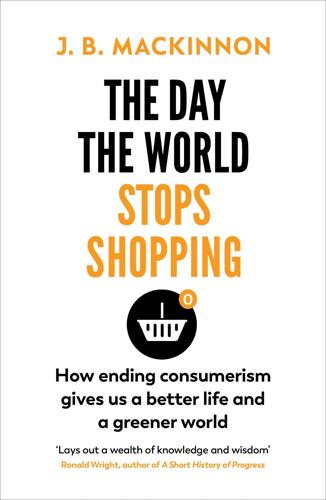
The Day the World Stops Shopping
by
J. B. MacKinnon
Published 14 May 2021
There’s a lot less of it, of course, just as we witnessed during the coronavirus outbreak. But again, it isn’t merely an absence; Paramus police will tell you that Sunday traffic is different. People drive more slowly, less aggressively, and there’s less rat-running—the term is a comparison to the way laboratory rats try to get out of a maze—through the backstreets. The philosopher Rousseau described idle moments as an escape from grown-up time, and, sure enough, skateboarders practise kickflips and parents teach their children how to ride bicycles on the vacant swaths of pavement. On the other end of life’s spectrum, the coronavirus reminded us of how little time we had been setting aside for our elders, in their isolation and vulnerability.
…
It became routine for world leaders to bluntly ask us to get out and shop any time the consumer frenzy slipped below a fevered pitch—as if shopping was less a choice than a necessity. (Bush finally did tell Americans to “go shopping” in 2006, as the economy began to give hints of the coming Great Recession.) When the coronavirus pandemic in 2020 triggered the sharpest decline in consumer spending ever recorded, commentators were soon debating how many deaths might be acceptable to keep the economy “open.” By then, the idea that shopping is not just a pastime or a distraction, but the only thing standing between us and the fall of civilization, was perfectly ordinary to our ears.
…
Indeed, at a global scale, reducing consumption by one-quarter would only turn back the clock to the spending levels of about a decade ago. On the other hand, when I started writing this book, the idea that global consumption could drop by 25 percent sounded like the wildest of speculations—a fantasy so outlandish that many people I hoped to speak to refused even to entertain it. Then, of course, it happened. A novel coronavirus appeared in China, and in a matter of weeks our collective patterns of earning and spending, of shopping, travelling and dining out at an epic scale, abruptly faltered. In the United States, household spending dropped almost 20 percent across two months; the hardest-hit industries, such as tourism, sank four times as far.

Forward: Notes on the Future of Our Democracy
by
Andrew Yang
Published 15 Nov 2021
CHAPTER 10: THE CENTERS FOR PASSING THE BUCK But the coronavirus tests David Willman, “Contamination at CDC Lab Delayed Rollout of Coronavirus Tests,” Washington Post, April 18, 2020. “It was just tragic” Sheila Kaplan, “C.D.C. Labs Were Contaminated, Delaying Coronavirus Testing, Officials Say,” New York Times, April 18, 2020. out of the nearly fifteen thousand “What Is the CDC and What Does It Do?,” Atlanta Journal-Constitution. He couldn’t identify Kaplan, “C.D.C. Labs Were Contaminated.” Weeks later, the director Abby Goodnough and Sheila Kaplan, “C.D.C.’s Dr. Robert Redfield Confronts Coronavirus, and Anger,” New York Times, March 13, 2020.
…
* * * — THOSE LAST WEEKS before Joe Biden effectively clinched the nomination were the final weeks in which anything felt remotely normal. By mid-March, COVID-19 (we were still simply referring to it as “the coronavirus” back then) was shutting everything down. Back then New York City was the epicenter of the virus in the United States. CNN stopped having us in the studio for safety reasons around the same time, and the streets began to empty out. It was hard to comprehend how quickly the coronavirus changed everything. It hit me what was happening when my son’s school shut down. I had a call with Zach, who had transitioned from my campaign manager to the Humanity Forward team to try to figure out an appropriate response to what I believed was going to be a social and economic catastrophe as well as a public health crisis.
…
The reports were so indicative of a screwup that Timothy Stenzel, a virologist from the Food and Drug Administration, was sent to the CDC to see why the tests were all giving false positives. He found that the CDC, in violation of its own protocols, had assembled the test kits in a room that also contained coronavirus material leading to contamination. Technicians were strolling in and out of the testing lab without even changing their lab coats. In other words, the CDC had assembled the testing kits in a lab that also housed the coronavirus. Resolving the test-manufacturing defects took one month—a lost month during one of the most crucial periods in American history. This was February 2020, when hundreds of Americans were starting to come down with COVID-19 in Washington and around the country.

How to Prevent the Next Pandemic
by
Bill Gates
Published 2 May 2022
One area in which CEPI can contribute is the creation of vaccines that would be effective against entire families of viruses, also known as universal vaccines. Today’s COVID vaccines teach your immune system to attack part of the spike protein on the surface of one specific coronavirus. But researchers are now working on vaccines that would target shapes that show up on all coronaviruses, including COVID and its cousins, and would even be likely to appear on ones that evolve in the future. With a universal coronavirus vaccine, your body would be ready to fight viruses that don’t exist yet. Coronaviruses and influenza viruses should be the targets of these vaccines, since they have been responsible for the worst outbreaks of the past twenty years.
…
New cases per day (seven-day rolling average). Source: “Emerging COVID-19 Success Story: Vietnam’s Commitment to Containment,” Exemplars in Global Health program, https://www.exemplars.health (published March 2021; accessed Jan. 2022). Using data extracted from Hannah Ritchie et al., “Coronavirus Pandemic (COVID-19)” (2020), published online at OurWorldInData.org, https://ourworldindata.org/coronavirus. GO TO FIGURE IN TEXT Its rate of excess deaths: Our World in Data, “Estimated Cumulative Excess Deaths per 100,000 People During COVID-19,” https://ourworldindata.org. GO TO NOTE REFERENCE IN TEXT IHME’s data also suggests: T.
…
Estimated infections are the number of people estimated to be infected with COVID-19 each day, including those not tested. COVID data available between Feb. 2020 and April 1, 2020. Source: Institute for Health Metrics and Evaluation (IHME) at the University of Washington. GO TO FIGURE IN TEXT “Coronavirus May Have Spread”: Sheri Fink and Mike Baker, “Coronavirus May Have Spread in U.S. for Weeks, Gene Sequencing Suggests,” New York Times, March 1, 2020. GO TO NOTE REFERENCE IN TEXT Oxford Nanopore is now working with: Oxford Nanopore, “Oxford Nanopore, the Bill and Melinda Gates Foundation, Africa Centres for Disease Control and Prevention and Other Partners Collaborate to Transform Disease Surveillance in Africa,” https://nanoporetech.com.

Fulfillment: Winning and Losing in One-Click America
by
Alec MacGillis
Published 16 Mar 2021
activism/protests: Amazon Day Expo; Amazon walkout; antitrust law investigations fueled by; Athena coalition; AWS and Dominion Power; Dayton, Ohio, Trump; for Floyd; for Gray; Housing for All coalition; Institute for Local Self-Reliance; Tax Amazon Town Hall; Washington, D.C., Black Lives Matter; workers against robots; see also big-business tax African Americans: Baltimore population of; migration to Seattle; police killings of; Seattle housing discrimination against; Seattle income inequality for; Sparrows Point discrimination fought by; Washington, D.C., gentrification devastating to; see also Carver Road community; Central District Africatown Albuquerque, New Mexico Allen, Mike Allen, Paul: Microsoft co-established in Seattle by; Microsoft co-founded by; South Lake Union campus and All States Amazombies Amazon: annual sales growth at; antitrust law investigations involving; career day; convenience of; coronavirus pandemic and necessity of; coronavirus pandemic benefiting; coronavirus pandemic worker precautionary measures; counterfeit goods sold on; delivery and transportation expansion; drug testing at; employee nondisclosure agreements; employment growth at; on failure; financial institutions compared to; gatekeeper fees collected by; hiring events and introduction for workers; injury report rates; last leg delivery handled by; lobbying spending by; market valuation of; minimum wage announcement; office of economic development; origins of; power and influence of; PR push; public sector division; railroad giants compared to; renewable energy investments of; retail job losses due to; RFPs; Ring doorbell cameras; STAR method for decision-making; start-up ideas for; streaming media service; tax avoidance strategies of; trust and respect for; unions blocked by; wage and working condition concerns at; warehouse expansion nationwide; war zone analogy; worker discontent; as world’s highest-valued company; see also specific locations; specific topics Amazon Associate Virtual Job Tryout Amazon Day Expo: Collins involved in; Gandara, T., protesting; goal of; Grubbs attending; introductions and parameters for; Lee involved in; Marin involved in; naming of; trade-off discussion at; Westin supporting Amazon HQ2 headquarters: arguments for selecting location of; Baltimore bid for; bidding war; bidding war winners; career day for interest in new; Crystal City location; finalists for; need for; public competition for location selection of; resistance to New York City; Rubenstein interest in; secrecy around bids for; victims of selection process for; Washington, D.C., benefiting from new; see also Arlington, Virginia Amazon Web Services (AWS): Columbus, Ohio, as interest of; Columbus, Ohio, suburbs establishment of; Columbus, Ohio, suburbs selected for; community nondisclosure agreements; creation of; in Northern Virginia; Northern Virginia communities protesting; Public Sector Summit; secrecy of; at Virginia Data Center Leadership Awards; Worldwide Public Sector antitrust law hearings/investigations: activism fueling; Athena coalition on; Bezos testifying at; Cicilline speaking at; Congress presiding over; Jayapal speaking at; Khan on; Mitchell on; ruling on; Sutton testifying at; on third-party seller online sale fees antitrust prosecution Apple: antitrust law investigations involving; coronavirus pandemic benefiting Argote, Israel Espana Arlington, Virginia: as Amazon HQ2 headquarters selection; Crystal City in; donations toward housing affordability in; housing prices rising in; National Landing outside; Washington, D.C., benefiting from new site in Armitage, James Art of the Deal, The (Trump) Athena coalition Autor, David Autry, Clint AWS, see Amazon Web Services Baker, James III Ballard, Brian: Amazon hiring; Florida governor campaign work by; Trump support from Baltimore, Maryland: African American population in; Amazon arrival in; Amazon delivery van death near; Amazon employee homicides in; Amazon HQ2 headquarter bid from; Brick + Board company in; brick industry in; Bryant of; coronavirus pandemic in; corruption of city government; demolitions in; discrimination battles improving; drug overdoses in; Gray protests in; heart-pine flooring from; homicide rate in; Humanim in; income decline in; Jackson on demolition in; JLL in; Johnson, D., post-demolition work in; Package Rescue business in; Pollock of; population decline in; post-demolition work in; rail transit line proposal in; road trip from; robotic pickers in; salvage market in; tornado hitting; Washington, D.C., bricks from; Washington, D.C., compared to; see also Bodani, William Kenneth, Jr.; Sparrows Point Baltimore Brick Company bankruptcy: Bethlehem Steel filing for; the Bon-Ton filing for Baron, Marty Barry, Bill Bent, Luther Bethlehem Steel: anti-steelworker union propaganda; bankruptcy filed by; Bodani, W.
…
.; tech industry involved in; for Trump; Trump era of local/small business: Amazon Day Expo on trade-offs for; Amazon Day Expo promoted as initiative for; Amazon driving out; endeavors in Northern Virginia Lovett, Robert MacLarion, Chris Mailman, Stanley Malek, Fred mall closures Manduca, Robert Marin, Mario Mayer, Jean market valuation Martinez, Bob May Company May Day McCulloch, Bill McGahren, John McGovern Committee Melton, Shayla mental health epidemic Merchant.com Metropolitan Area Exchange-East Microsoft: antitrust prosecution against; civic engagement of; co-founding of; coronavirus pandemic benefiting; Pentagon contract awarded to; recruitment from; Seattle establishment of; total capital spending soar for minority-owned business, see Pencil Cup Office Products Mitchell, Stacy: on online gatekeepers; on private government Mittal, Lakshmi Molinari, Susan monopolies monopsony Monroe, Ohio Moret, Stephen Mosqueda, Teresa: big-business tax support from; New York City warned by Mount Pleasant plantation Myers, Scott: job durations; public transit cuts impacting; Seattle move for; Transit Riders Union co-founded by NAFTA National Cash Register National Defense Authorization Act National Landing: Amazon career day at; changes to area of; naming of Nelsonville, Ohio: Brooks, B., of; Brooks, J., of; Brooks, M., of; chain stores invading; Clinton, H., presidential votes from; coronavirus pandemic in; fork incident near; Hutchison of; industries in early; Obama support from; poverty in; Rocky Shoes & Boots in; shoe industry in; state representative campaign video on; Texas Roadhouse near; Trump presidential votes from; Trump support in; William Brooks Shoe Company in; see also Sappington, Taylor New Albany, Ohio Newman, NaTasha New York City: as Amazon HQ2 headquarters selection; Amazon seizing coronavirus pandemic opportunity in; Amazon shipping congestion across; Bloomberg as former mayor of; Facebook seizing coronavirus pandemic opportunity in; Google headed to; hyper-prosperity issues in; population relocation during coronavirus pandemic; resistance to Amazon HQ2 headquarters in Nides, Tom Nixon, Richard nondisclosure agreements: Amazon employee; AWS community Northern Virginia: Arlington in; AWS in; AWS and Dominion Power protests in; Carver Road community in; Data Center Alley in; data center consolidation in; data center expansion in; Grayson of; Haymarket in; small business endeavors in; Virginia Data Center Leadership Awards in Nuti, Bill Obama, Barack: Amazon praised by; Carney working under; job loss during early presidency of; Nelsonville, Ohio, supporting; Office of Management and Budget under; Sappington endorsement from; Sappington supporting; Swallows job changes during presidency of; Wall Street unaccountable under; Washington, D.C., transformation following election of Obetz, Ohio Ocasio-Cortez, Alexandria Occupational Safety and Health Administration (OSHA): Carlisle, Pennsylvania, Rhodes fatality reported to; Carlisle, Pennsylvania, Rhodes investigation by; Carlisle, Pennsylvania, Shoemaker fatality investigation by; citation manipulation by; forklift hazard warning from; Kilp of Odeh, Khuloud Office Depot office of economic development Office of Management and Budget office supplies: coolofficesupplies.com selling; El Paso Independent School District buying; El Paso Office Products selling; Faber-Castell selling; Pencil Cup Office Products selling; procurement as counterpart to; RFPs for; trade show; Tucker fighting Amazon over Ohio: Amazon employee injuries in; Amazon interest in; Amazon new warehouse plan in; Amazon warehouse approval in; Amazon warehouse openings in; Dublin; Etna; food-stamp recipients in; Hilliard; JobsOhio; Little Cities of Black Diamonds in; mall closures in; Monroe; New Albany; Obetz; sales tax assessment in; state representative race in; tax credits in; tax exemptions in; see also Columbus, Ohio; Dayton, Ohio; Nelsonville, Ohio Ohio Development Services Agency Olah, David Olszewski, Johnny, Jr.
…
Louis move for Dunbar, Paul Laurence Durkan, Jenny Easter Sunday e-commerce: Amazon control of; Amazon expanding sales in; the Bon-Ton trying; growth of; repercussions of expanding Economic Club economic concentration economic location Edwards, Gary Edwards, Jay Elliott Bay Book Company El Paso, Texas: Amazon Day Expo in; coronavirus pandemic in; grocery near border of; Pencil Cup Office Products in; Sturgis & Co. in; UTEP; see also Gandara, Teresa; Grodin, Sandy El Paso Independent School District El Paso Office Products energy consumption entitlement Erdoğan, Recep Tayyip Etna, Ohio Faber-Castell Facebook: antitrust law investigations involving; The Bon-Ton Family on; coronavirus pandemic benefiting; journalism takeover by; total capital spending soar for failure FBA, see Fulfillment by Amazon FDR, see Roosevelt, Franklin D.

Other Pandemic: How QAnon Contaminated the World
by
James Ball
Published 19 Jul 2023
Rebecca Heilwell, ‘How the 5G coronavirus conspiracy theory went from fringe to mainstream’, www.vox.com, 4 April 2020. 32. ‘Clapping, the NHS and 5G. Is this the most ridiculous coronavirus conspiracy so far?’, www.thatsnonsense.com, 3 April 2020. 33. Kaitlyn Tiffany, ‘Something in the Air’, www.theatlantic.com, 14 May 2020. 34. Bruce Y. Lee, ‘5G Networks And COVID-19 Coronavirus: Here Are The Latest Conspiracy Theories’, www.forbes.com, 9 April 2020. 35. Alexander Martin,’ Coronavirus: 90 attacks on phone masts reported during UK’s lockdown’, https://news.sky.com, 25 May 2020. 36. ‘Coronavirus: ‘ “Murder threats” to telecoms engineers over 5G’, www.bbc.co.uk, 23 April 2020. 37.
…
CBS, ‘Trump says coronavirus will “miraculously” be gone by April “once the weather warms up” ’, www.youtube.com, 11 February 2020. 38. Gabriel Sherman, ‘ “This Is So Unfair to Me”: Trump Whines About His COVID-19 Victimhood as Campaign Flails’, www.vanityfair.com, 26 May 2020. 39. ‘Daily new confirmed Covid-19 deaths per million people’, https://ourworldindata.org, accessed 14 October 2022. 40. Martin Pengelly, ‘Rush Limbaugh: coronavirus a “common cold” being “weaponised” against Trump’, www.theguardian.com, 25 February 2020. 41. Ryan Broderick, ‘Trump’s Biggest Supporters Think The Coronavirus Is A Deep State Plot’, www.buzzfeednews.com, 27 February 2020. 42.
…
It was as early as 21 January 2020 that QAnon-connected accounts started joining the dots on Gates. As the New York Times catalogues,25 a YouTuber had found a patent connected to a coronavirus by the Pirbright Institute, a Surrey-based infectious disease research institute specialising in illnesses in farm animals. The Pirbright Institute had, the YouTuber correctly said, received funding from the Gates Foundation, and therefore Gates had some stake in the pandemic. In reality, the patent related to a potential vaccine for an entirely different coronavirus – coronaviruses are a family of viruses with many different varieties, including several that cause common colds – one that affects livestock.

Viruses: A Very Short Introduction (Very Short Introductions)
by
Crawford, Dorothy H.
Published 27 Jul 2011
This rapid dissemination of the virus threatened to cause a pandemic, but surprisingly by July 2003 it was over, the final toll being around 8,000 cases and 800 deaths involving 29 countries across 5 continents. SARS coronavirus spreads through the air and causes disease in almost everyone it infects. After an incubation period of 2 to 14 days, victims develop fever, malaise, muscle aches, and a cough, sometimes progressing rapidly to viral pneumonia that requires intensive care, with mechanical ventilation in around 20% of cases. But with no known treatment or preventive vaccine, how was the epidemic conquered so effectively? Left to its own devices, SARS coronavirus would undoubtedly have continued its trail of destruction but, fortunately, many of its characteristics played into the hands of those trying to stop it, and contributed to its speedy demise.
…
Once all these factors were appreciated, old-fashioned barrier nursing and isolation of patients and their contacts were enough to interrupt virus spread and prevent a pandemic. Unlike SARS coronavirus, HIV has been spreading among humans since the early 1900s and despite drugs which control the infection, it is still on the increase in certain areas of the world. Currently, there are 33 million people living with . We now know that re0SHIV, and it has caused over 25 million deaths since the first report of AIDS in 1981. It is interesting to examine the reasons for this lack of control, and to contrast these with the success of the SARS control programme. Firstly, although SARS coronavirus had spread internationally by the time it was recognized by the World Health Organization (WHO), it had only infected humans for a few months.
…
However, on occasions viruses do enter and successfully replicate in cells of a new host species, but after a window of opportunity lasting about a week during which they can colonize the host and reproduce, their offspring must move on to another susceptible host before the developing host immunity wipes them out. SARS coronavirus and H5N1 (bird) flu have both managed to infect humans but differ in their success to date. Whereas SARS coronavirus can spread between humans, H5N1 flu, which first jumped from birds to humans in 1997, is unable to do so. This flu virus strain is still poorly adapted to its new (human) host, and we will be in danger of an H5N1 flu pandemic only once it evolves an efficient method of spreading between us.
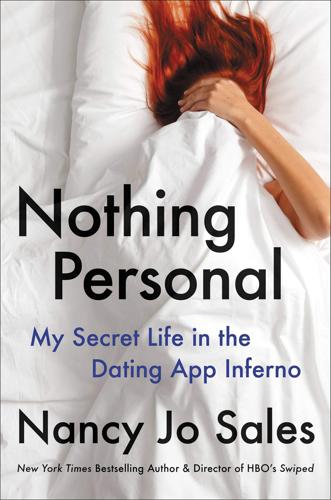
Nothing Personal: My Secret Life in the Dating App Inferno
by
Nancy Jo Sales
Published 17 May 2021
“North Carolina Lawmakers Pass Bill to Close Sexual Assault Loopholes.” New York Times, November 1, 2019. www.nytimes.com/2019/11/01/us/north-carolina-sexual-assault-loophole.html. Paul, Katie, Inti Landauro, and Ellen Francis, “Love in the Time of Coronavirus? Around the World, Dating Finds a Way.” Reuters, March 19, 2020. www.reuters.com/article/us-health-coronavirus-dating-idUSKBN2161U6. Pauly, Madison, and Julia Lurie. “Domestic Violence 911 Calls Are Increasing. Coronavirus Is Likely to Blame.” Mother Jones, March 31, 2020. www.motherjones.com/crime-justice/2020/03/domestic-violence-abuse-coronavrius/. Peat, Jack. “Millennials ‘Spend 10 Hours a Week on Dating Apps.’”
…
Young people are lonelier, I think, because they’re not having as many relationships—at least not ones in real life. And sadly, the isolation required to contain the coronavirus has only made young people, and all of us, lonelier, despite our ability to communicate through screens. When the virus hit, some members of the media seemed to revel in this chance to embrace screen life, as if to say, “Hey, now we can indulge our addiction without judgment or worry that it’s really bad for us!” “Coronavirus Ended the Screen-Time Debate. Screens Won,” said a headline in the New York Times. “We’ve tried all sorts of things to stop us from staring into our devices.
…
Bibliography ABC News, “Gable Tostee Found Not Guilty of Killing Warriena Wright on Tinder Date.” Last modified October 20, 2016. www.abc.net.au/news/2016-10-20/gable-tostee-not-guiltyl-warriena-wright-fatal-balcony-fall/7928346. Acklin, Mary. “Unmarried Couples Are Quarantining Together Amid the Coronavirus, Having More Sex.” CivicScience, April 1, 2020. https://civicscience.com/couples-are-quarantining-together-amid-the-coronavirus-having-more-sex/. Adamy, Janet. “U.S. Marriage Rate Plunges to Lowest Level on Record.” Wall Street Journal, April 29, 2020. www.wsj.com/articles/u-s-marriage-rate-plunges-to-lowest-level-on-record-11588132860. Alexander, Reed. “Tinder Is Making More Money Than Any Other App.”

Arriving Today: From Factory to Front Door -- Why Everything Has Changed About How and What We Buy
by
Christopher Mims
Published 13 Sep 2021
Notes Chapter 1: The Gathering Storm 17,600 different products: Jon Delano, “Shortage in Chinese Products Could Mean Empty Shelves in U.S,” CBS Pittsburgh, February 28, 2020, https://pittsburgh.cbslocal.com/2020/02/28/chinese-products-shortage-coronavirus. artificial sweeteners: Dion Rabouin, Joann Muller, Bob Herman, and Courtenay Brown, “Brace for Coronavirus Supply Shocks,” Axios, March 12, 2020, https://www.axios.com/brace-for-coronavirus-supply-shocks-d9bef456-e72f-4cdd-aa1d-4e55b87c246c.html. three in four U.S. firms: Dion Rabouin, “Coronavirus Has Disrupted Supply Chains for Nearly 75% of U.S. Companies,” Axios, March 11, 2020, https://www.axios.com/coronavirus-supply-chains-china-46d82a0f-9f52-4229-840a-936822ddef41.html. cod caught off Scotland: “Scotland to China and Back Again . . .
…
“AFE remains brutal”: Burgett, “AFE (Amazon Fulfillment Engine).” how long such orders will last: “Coronavirus Updates from March 20, 2020,” CBS News, March 21, 2020, https://www.cbsnews.com/live-updates/coronavirus-disease-covid-19-latest-news-2020-03-20. panic buying of necessities and staples: Corina Knoll, “Panicked Shoppers Empty Shelves as Coronavirus Anxiety Rises,” New York Times, March 13, 2020, https://www.nytimes.com/2020/03/13/nyregion/coronavirus-panic-buying.html. sold out of toilet paper: Anthony Cuthbertson, “Coronavirus: Amazon Sells Out of Toilet Paper and Other Essentials amid Panic Buying,” Independent (U.K.), March 16, 2020, https://www.independent.co.uk/life-style/gadgets-and-tech/news/coronavirus-amazon-panic-buying-shortages-stockpile-covid-19-a9404631.html.
…
Chapter 10: Rime of the Long-Haul Trucker every year: Paul Schenck, “Top-25 Trailer Output 2019,” Trailer Body Builders, March 13, 2020, https://www.trailer-bodybuilders.com/trailer-output/article/21126082/top25-trailer-output-2019. almost all of them in China: “Coronavirus Disease 2019 (COVID-19) Situation Report—43,” World Health Organization, March 3, 2020, https://www.who.int/docs/default-source/coronaviruse/situation-reports/20200303-sitrep-43-covid-19.pdf. “risk to most Americans is low”: “An Emerging Disease Threat: How the U.S. Is Responding to COVID-19, the Novel Coronavirus,” Centers for Disease Control and Prevention, March 3, 2020, https://www.cdc.gov/washington/testimony/2020/t20200303.htm. effective against Covid-19: “List N: Disinfectants for Coronavirus (COVID-19),” United States Environmental Protection Agency, https://www.epa.gov/pesticide-registration/list-n-disinfectants-coronavirus-covid-19.

Brexit Unfolded: How No One Got What They Want (And Why They Were Never Going To)
by
Chris Grey
Published 22 Jun 2021
For another, it offered a shield for the effects of Brexit because the economic impacts of coronavirus were so huge. Economists could warn that the Brexit effects would be far more significant in the longer term than those of coronavirus but, in the political here-and-now, those effects would be dwarfed. That meant that the inevitably adverse consequences of a trade deal (compared with EU membership) could more easily be concealed. On the other hand, it potentially made a no-deal Brexit more politically viable. However, neither was risk-free since both meant a double hit from Brexit and from coronavirus. At all events, from March onwards the Brexit process and the coronavirus pandemic became inextricably intertwined.
…
The same was true of Cummings and, for that matter, the entire Brexit high command, which had always been characterised by protest and victimhood, not competence and responsibility. That was – literally – fatal in terms of dealing with coronavirus, as was shown during 2020 by the much higher death rate than that of most other countries. But that in turn meant that the coronavirus crisis held up a mirror to the nature and limitations of how Brexiters had approached Brexit and how the Brexit government was pursuing it. However, if a government configured solely by Brexit was ill-equipped to deal with coronavirus, the pandemic crisis offered the government a convenient cover for how it was dealing with Brexit. For one thing, it meant that Brexit was no longer in the headlines.
…
But just as they were about to begin, something entirely unexpected and unprecedented was emerging which was to push Brexit from the headlines and to colour the entire negotiating proceedings: the global pandemic of a new and deadly virus. THE CORONAVIRUS PANDEMIC AND BREXIT There is no doubt a book to be written just on the way that the coronavirus – or Covid-19 – pandemic and Brexit intersected. For one thing, it meant that the future terms negotiations often took place by video conference, rather than face to face, which may have inflected them differently. It also meant that, at key times, members of the negotiating teams were in isolation and for a while the British Prime Minister was actually hospitalised.

Imaginable: How to See the Future Coming and Feel Ready for Anything―Even Things That Seem Impossible Today
by
Jane McGonigal
Published 22 Mar 2022
Goodman and Niraj Chokshi, “How the World Ran Out of Everything,” New York Times, June 1, 2021, https://www.nytimes.com/2021/06/01/business/coronavirus-global-shortages.html. 37 Diane Brady, “COVID-19 and Supply-Chain Recovery: Planning for the Future,” October 9, 2020, in The McKinsey Podcast, 29:09, https://www.mckinsey.com/business-functions/operations/our-insights/COVID-19-and-supply-chain-recovery-planning-for-the-future. 38 Sarah Gibbens, “These 5 Foods Show How Coronavirus Has Disrupted Supply Chains,” National Geographic, May 19, 2020, https://www.nationalgeographic.com/science/article/covid-19-disrupts-complex-food-chains-beef-milk-eggs-produce; “Food Security and COVID-19,” World Bank, August 17, 2021, https://www.worldbank.org/en/topic/agriculture/brief/food-security-and-covid-19. 39 “Burn-Out an ‘Occupational Phenomenon’: International Classification of Diseases,” World Health Organization, May 28, 2019, https://www.who.int/news/item/28-05-2019-burn-out-an-occupational-phenomenon-international-classification-of-diseases. 40 Jennifer Moss, “Beyond Burned Out,” Harvard Business Review, February 10, 2021, https://hbr.org/2021/02/beyond-burned-out; Anitra Lesser, “The Impacts of COVID on Rising Burnout Rates,” Employers Council, October 23, 2020, https://blog.employerscouncil.org/2020/10/23/the-impacts-of-COVID-on-rising-burnout-rates/. 41 “Long Working Hours Increasing Deaths from Heart Disease and Stroke: WHO, ILO,” World Health Organization, May 17, 2021, https://www.who.int/news/item/17-05-2021-long-working-hours-increasing-deaths-from-heart-disease-and-stroke-who-ilo. 42 Maria Cristina Rulli et al., “Land-Use Change and the Livestock Revolution Increase the Risk of Zoonotic Coronavirus Transmission from Rhinolophid Bats,” Nature Food 2 (June 2021): 409–16, https://doi.org/10.1038/s43016-021-00285-x; “Coronavirus, Climate Change, and the Environment: A Conversation on COVID-19 with Dr. Aaron Bernstein, Director of Harvard Chan C-CHANGE,” Harvard T. H. Chan School of Public Health, accessed August 27, 2021, https://www.hsph.harvard.edu/c-change/subtopics/coronavirus-and-climate-change/. 43 Institute of Medicine and National Research Council, Potential Risks and Benefits of Gain-of-Function Research: Summary of a Workshop (Washington, DC: National Academies Press, 2015), https://doi.org/10.17226/21666. 44 Andrea Pozzer et al., “Regional and Global Contributions of Air Pollution to Risk of Death from COVID-19,” Cardiovascular Research 116, no. 14 (December 2020): 2247–53, https://doi.org/10.1093/cvr/cvaa288. 45 Dan Walton and Maarten van Aalst, Climate-Related Extreme Weather Events and COVID-19: A First Look at the Number of People Affected by Intersecting Disasters (Geneva, Switzerland: International Federation of Red Cross and Red Crescent Societies, September 2020), https://media.ifrc.org/ifrc/wp-content/uploads/2020/09/Extreme-weather-events-and-COVID-19-V4.pdf. 46 James M.
…
Wittmann, “Reward and Novelty Enhance Imagination of Future Events in a Motivational-Episodic Network,” PLoS ONE 10, no. 11 (November 2015): e0143477, https://doi.org/10.1371/journal.pone.0143477. 13 Pema Chödrön, “Smile at Fear,” The Best Buddhist Writing 2012 (Boulder, Colorado: Shambhala, 2012). 14 Ibid. 15 National Intelligence Council, Global Trends 2040: A More Contested World, March 2021, https://www.dni.gov/files/ODNI/documents/assessments/GlobalTrends_2040.pdf. 16 Recommendations for learning more about these future forces: Antonio Regalado, “The Next Act for Messenger RNA Could Be Bigger Than COVID Vaccines,” MIT Technology Review, February 5, 2021, https://www.technologyreview.com/2021/02/05/1017366/messenger-rna-vaccines-COVID-hiv/; Bill McKibben, “Renewable Energy Is Suddenly Startlingly Cheap,” New Yorker, April 28, 2021, https://www.newyorker.com/news/annals-of-a-warming-planet/renewable-energy-is-suddenly-startlingly-cheap; Kaitlin Love, “Majority Favors Social Progress over Economic Growth in the Wake of the Coronavirus Pandemic,” Ipsos, September 10, 2020, https://www.ipsos.com/en-us/news-polls/Majority-Favors-Social-Progress-over-Economic-Growth-in-the-Wake-of-the-Coronavirus-Pandemic; Matthew Shaer, “Soon, Your Doctor Could Print a Human Organ on Demand,” Smithsonian Magazine, May 2015, https://www.smithsonianmag.com/innovation/soon-doctor-print-human-organ-on-demand-180954951/; Amos Zeeberg, “Bricks Alive!
…
Shamay-Tsoory, Judith Aharon-Peretz, and Daniella Perry, “Two Systems for Empathy: A Double Dissociation between Emotional and Cognitive Empathy in Inferior Frontal Gyrus versus Ventromedial Prefrontal Lesions,” Brain 132, no. 3 (March 2009): 617–27, https://doi.org/10.1093/brain/awn279. 6 Andrew Reiljan, “ ‘Fear and Loathing across Party Lines’ (Also) in Europe: Affective Polarisation in European Party Systems,” European Journal of Political Research 59, no. 2 (May 2020): 376–96, https://doi.org/10.1111/1475-6765.12351; Shanto Iyengar et al., “The Origins and Consequences of Affective Polarization in the United States,” Annual Review of Political Science 22 (2019): 129–46, https://doi.org/10.1146/annurev-polisci-051117-073034; Shanto Iyengar, Gaurav Sood, and Yphtach Lelkes, “Affect, Not Ideology: A Social Identity Perspective on Polarization,” Public Opinion Quarterly 76, no. 3 (September 2012): 405–31, https://doi.org/10.1093/poq/nfs038. 7 Levi Boxell et al., “Affective Polarization Did Not Increase during the Coronavirus Pandemic,” working paper no. 28036 (October 2020), National Bureau of Economic Research, https://doi.org/10.3386/w28036. 8 Sebastian Jungkunz, “Political Polarization During the COVID-19 Pandemic,” Frontiers in Political Science 3 (March 2021): 622512, https://doi.org/10.3389/fpos.2021.622512; Hunt Allcott et al., “Polarization and Public Health: Partisan Differences in Social Distancing During the Coronavirus Pandemic,” Journal of Public Economics 191 (November 2020): 104254, https://doi.org/10.1016/j.jpubeco.2020.104254; Christos Makridis and Jonathan T.

The London Problem: What Britain Gets Wrong About Its Capital City
by
Jack Brown
Published 14 Jul 2021
This book attempts to untangle some of these strands, however briefly, to try to better understand them. It begins with an overview of the facts, before undertaking a historical review of past attempts to address London’s perceived dominance within the UK. Next, it explores public perceptions and the relationship between rhetoric and reality. In closing, it considers the impact of the coronavirus pandemic, which arrived between this book’s conception and its delivery, and some possibilities for the future. This book This addition to Haus’s Curiosities series draws heavily on my research for a report entitled London, UK, conducted in 2018 for Centre for London. I am extremely grateful to Centre for London for the opportunity to spend time getting to know this subject and for its support – particularly that of Richard Brown (no relation).
…
While the reality is of course complex and multifaceted, a little more understanding about the capital itself – from its historical origins to its place in the UK economy today – is important. So, too, is an understanding of the much-maligned people who live there. Londoners At the start of 2020, before the coronavirus pandemic, London was home to nine million people, and this figure was expected only to increase. London’s growth has been driven primarily by ‘natural change’ (births exceeding deaths), but also by new arrivals from overseas. In terms of domestic migration (that is, movement within the UK), more people tend to leave London for elsewhere in the country than arrive each year, with over half moving to the neighbouring southeast or east of England regions, often when reaching their thirties, perhaps to start families outside the city.1 Somewhat relatedly, the average Londoner today is almost five years younger than the UK average, although the number of Londoners over the age of sixty-five is also increasing.2 Today’s Londoners are also incredibly diverse, in every sense of the word.
…
Equally, major protests see citizens travel from across the country to converge on the capital’s public spaces, often in Trafalgar Square, Hyde Park, or Parliament Square. Here they gather to express opposition to issues as diverse as the Iraq War or the ban on foxhunting in the early 2000s or, more recently, to structural racism or the coronavirus lockdowns in 2020. Political power lies in the capital’s streets as well as its historic buildings. Regional imbalances? With so much going on in one place, it is unsurprising that London has such a dominant role within its nation. The Institute for Fiscal Studies recently ranked the UK as one of the most geographically unequal nations in the developed world,43 a notion that is often repeated.44 London’s dominance is far from ideal, for capital or country.
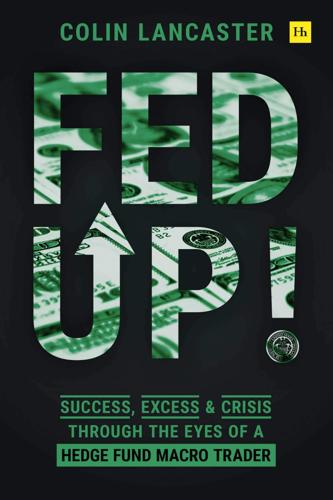
Fed Up!: Success, Excess and Crisis Through the Eyes of a Hedge Fund Macro Trader
by
Colin Lancaster
Published 3 May 2021
There are reports of blood clotting disorders and bleeding in the brain. The Big D appointed VP Pence to lead a coronavirus task force. Right before putting Pence in charge, Trump downplayed the severity of the situation, claiming the number of US coronavirus cases “within a couple of days is going to be down to close to zero.” Today’s COVID-19 headlines: California is monitoring 8,400; twenty-eight cases in the state. Dozens of hospital staffers who treated a US patient with a coronavirus of unknown origin are being monitored. 700 in New York are asked to self-isolate. Northern Ireland confirms first case.
…
Part 2: The Crash Chapter 4 The Virus Spreads January 2020 1/1/20—Huanan Seafood Market closed by local authorities in response to illness outbreak. 1/3/20—ISM manufacturing declines to 47.2, its lowest print in a decade. 1/7/20—At a closed politburo meeting, Xi Jinping requests prevention and control work to address the new coronavirus. 1/8/20—South Korea announces its first case of coronavirus from China: a woman who had recently traveled to Wuhan. 1/10/20—Payrolls miss at 145K; unemployment steady at 3.5%; average hourly earnings at 2.9%, first time -3% since July 2018. 1/11/20— China reports its first COVID-19 death. 1/11/20—WHO announces: “The Chinese government reports that there is no clear evidence that the virus passes easily from person to person.” 1/15/20—Phase 1 of US/China trade deal signed. 1/16/20—Trump impeachment trial begins in the Senate. 1/16/20—Japan announces first COVID-19 case. 1/20/20—First reported case of COVID-19 in the USA. 1/23/20—Wuhan goes into lockdown. 1/30/20—FOMC leaves rates unchanged, downgrades household spending description to “moderate” from “strong.” 1/30/20—WHO declares “global health emergency.” 1/31/20—President Trump bans Chinese travelers from entering the USA.
…
In the deck of materials used for the earnings call, one slide shows white unicorns running up a mountain, implying performance. But there’s a ditch, or some sort of valley, that two of the unicorns have fallen into. This is labelled “The Valley of Coronavirus.” Only one unicorn looks as if it has made it out of the valley and back up the mountain. “If I were to describe it,” Masa Son tells his online audience, “unicorns that had been climbing uphill hard are suddenly faced with a coronavirus valley, and they are falling into that valley.” “Vision Fund’s results are not something to be proud of,” he says. “If the results are bad, you can’t raise money from investors.

The Data Detective: Ten Easy Rules to Make Sense of Statistics
by
Tim Harford
Published 2 Feb 2021
John P. A. Ioannidis, “A Fiasco in the Making?,” Stat, March 17, 2020, https://www.statnews.com/2020/03/17/a-fiasco-in-the-making-as-the-coronavirus-pandemic-takes-hold-we-are-making-decisions-without-reliable-data/. 8. “Taiwan Says WHO Failed to Act on Coronavirus Transmission Warning,” Financial Times, March 20, 2020, https://www.ft.com/content/2a70a02a-644a-11ea-a6cd-df28cc3c6a68. 9. Demetri Sevastopulo and Hannah Kuchler, “Donald Trump’s Chaotic Coronavirus Crisis,” Financial Times, March 27, 2020, https://www.ft.com/content/80aa0b58-7010-11ea-9bca-bf503995cd6f. 10. David Card, “Origins of the Unemployment Rate: The Lasting Legacy of Measurement without Theory,” UC Berkeley and National Bureau of Economic Research Working Paper, February 2011, http://davidcard.berkeley.edu/papers/origins-of-unemployment.pdf. 11.
…
The statistics for a huge range of important issues that predate the coronavirus have been painstakingly assembled over the years by diligent statisticians, and often made available to download, free of charge, anywhere in the world. Yet we are spoiled by such luxury, casually dismissing “lies, damned lies, and statistics.” The case of COVID-19 reminds us how desperate the situation can become when the statistics simply aren’t there. * * * — Darrell Huff made statistics seem like a stage magician’s trick: all good fun but never to be taken seriously. Long before the coronavirus, I’d started to worry that this isn’t an attitude that helps us today.
…
Whether we were evaluating the prevalence of strokes, the evidence that debt damages economic growth, or even the number of times in The Hobbit that the word “she” is used, the numbers could illuminate the world as well as obscure it. As the coronavirus pandemic has so starkly illustrated, we depend on reliable numbers to shape our decisions—as individuals, as organizations, and as a society. And just as with coronavirus, the statistics have often been gathered only when we’ve been faced with a crisis. Consider the unemployment rate—a measure of how many people want jobs but do not have them. It’s now a basic piece of information for any government wanting to understand the state of the economy, but back in 1920, nobody could have told you how many people were searching for work.10 Only when severe recessions made the question more politically pertinent did governments begin to collect the data that could answer it.
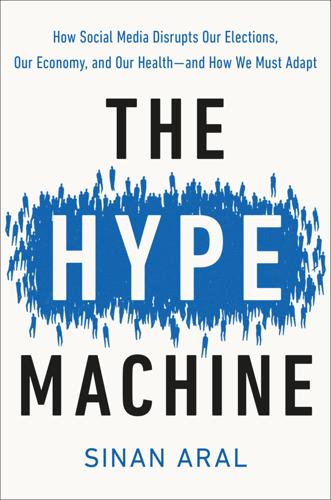
The Hype Machine: How Social Media Disrupts Our Elections, Our Economy, and Our Health--And How We Must Adapt
by
Sinan Aral
Published 14 Sep 2020
Fake News as Public Health Crisis In March 2020, a deliberate misinformation campaign spread fear among the American public by propagating the false story that a nationwide quarantine to contain the coronavirus pandemic was imminent. The National Security Council had to publicly disavow the story. And that wasn’t the only fake news spreading about the virus. The Chinese government spread false conspiracy theories blaming the U.S. military for starting the pandemic. Several false coronavirus “cures” killed hundreds of people who drank chlorine or excessive alcohol to rid themselves of the virus. There was, of course, no cure or vaccine at the time. International groups, like the World Health Organization (WHO), fought coronavirus misinformation on the Hype Machine as part of their global pandemic response.
…
International groups, like the World Health Organization (WHO), fought coronavirus misinformation on the Hype Machine as part of their global pandemic response. My group at MIT supported the COVIDConnect fact-checking apparatus, the official WhatsApp coronavirus channel of the WHO, and studied the spread and impact of coronavirus misinformation worldwide. But we first glimpsed the destructive power of health misinformation on the Hype Machine the year before the coronavirus pandemic hit, during the measles resurgence of 2019. Measles was declared eliminated in the United States in 2000. But while only 63 cases were reported in 2010, over 1,100 cases were reported in the first seven months of 2019, a nearly 1,800 percent increase.
…
As we’ve seen, this is the signature of a fake news crisis: it spreads faster than it can be corrected, so it’s hard to clean up, even with a healthy dose of the truth. The threat of election manipulation in 2020 is even higher due to the chaos caused by the coronavirus pandemic. With uncertainty around the viability of in-person voting, questions about voting by mail, and calls to delay the election, there can be no doubt that foreign actors will look to leverage the confusion caused by the coronavirus to disrupt our democratic process. While some claim fake news is benign, during protests and confusion, amid the smoke, fire, and foreign interference, months from the most consequential election of our time, it is a real threat—not only to the election, but to the sanctity and peace of the election process.

Empireland: How Imperialism Has Shaped Modern Britain
by
Sathnam Sanghera
Published 28 Jan 2021
Davis, Naples and Napoleon: Southern Italy and the European Revolutions, 1780–1860, Oxford University Press, 2006, p. 326. 6 George Curzon, The Place of India in the Empire: Being an Address Delivered before the Philosophical Institute of Edinburgh, John Murray, 1909. 7 Boris Johnson speech, Conservative Party Conference, 2/10/2016, https://www.spectator.co.uk/article/full-text-boris-johnson-s-conference-speech. 8 Robert Tombs, The English and their History, Penguin, 2015, p. 535. 9 A comment placed on the FT website, under the article ‘Johnson under fire as coronavirus enters dangerous phase’, 12/03/2020, https://www.ft.com/content/c43b9c3e-6470-11ea-a6cd-df28cc3c6a68. 10 International opinion was neatly summarized in one article: ‘UK’s coronavirus death toll is met with global disbelief’, The Times, 7/05/2020, https://www.thetimes.co.uk/article/uks-coronavirus-death-toll-is-met-with-global-disbelief-t70clv9kq. Chapter 8: Dirty Money 1 Elisabeth Lenckos, ‘Daylesford’, UCL Blogs, 20/08/2014, https://blogs.ucl.ac.uk/eicah/daylesford-case-study/; Jan Sibthorpe, ‘East India Company at Home, 1757–1857: Sezincote Case Study’, UCL Blog, 2020, https://blogs.ucl.ac.uk/eicah/sezincote-gloucestershire/sezincote-case-study-sezincote-a-brief-description/. 2 Lenckos, ‘Daylesford’. 3 Sanchez Manning, ‘Britain’s colonial shame: Slave-owners given huge payouts after abolition’, Independent, 24/02/2013, https://www.independent.co.uk/news/uk/home-news/britains-colonial-shame-slave-owners-given-huge-payouts-after-abolition-8508358.html. 4 ‘UK economic history: slavery’, Financial Times, 13/06/2020, https://www.ft.com/content/99e4053d-ed8c-40d0-b5c5-745a1393e596; Jonathan Guthrie, ‘Lex in-depth: Examining the slave trade – “Britain has a debt to repay”’, Financial Times, 26/06/2020, https://www.ft.com/content/945c6136-0b92-41bf-bd80-a80d944bb0b8?
…
id=10.1257/089533002760278749 ‘Royal Pavilion’, Brighton Museum, 2020, https://brightonmuseums.org.uk/royalpavilion/history/ww1-and-the-royal-pavilion/ Russell, Jenni, ‘Studying History tells us who we really are’, The Times, 7/11/2019, https://www.thetimes.co.uk/article/studying-history-tells-us-who-we-really-are-w95p6vtkt Rutherford, Adam, How to Argue with a Racist: History, Science, Race and Reality, Weidenfeld & Nicolson, 2020 Sadler, Nigel, The Legacy of Slavery in Britain, Amberley Publishing, 2018 Said, Edward W., Culture & Imperialism, Vintage, 1994 Said, Edward W., Orientalism, Penguin, 2003 Saini, Angela, Superior: The Return of Race Science, Fourth Estate, 2019 Sandbrook, Dominic, ‘How one corporation conquered an entire continent’, review of William Dalrymple, The Anarchy: The Relentless Rise of the East India Company, The Times, 8/09/2019, https://www.thetimes.co.uk/article/the-relentless-rise-of-the-east-india-company-by-william-dalrymple-review-how-one-corporation-conquered-an-entire-continent-t3d7fx7tr Sanderson, David, ‘Beware colonial guilt, Neil MacGregor warns museums’, The Times, 12/09/2019, https://www.thetimes.co.uk/article/beware-colonial-guilt-neil-macgregor-warns-museums-3f7mmfrp6 Sandhu, Serina, ‘No Thanks, We’re British: Survey Reveals UK Tourists are Offended by Thongs and Topless Sunbathing’, Independent, 19/06/2015, https://www.independent.co.uk/travel/news-and-advice/no-thanks-were-british-survey-reveals-uk-tourists-are-offended-by-thongs-and-topless-sunbathing-10331457.html Sanghera, Sathnam, ‘Coronavirus and ethnicity: black and Asian NHS medics on the front line’, The Times, 24/04/2020, https://www.thetimes.co.uk/article/coronavirus-and-ethnicity-black-and-asian-nhs-medics-on-the-front-line-dhznrc3kc Sarr, Felwine, and Savoy, Bénédicte, The Restitution of African Cultural Heritage: Toward a New Relational Ethics, 2018, http://restitutionreport2018.com/sarr_savoy_en.pdf Saunders, Robert, ‘The myth of Brexit as imperial nostalgia’, Prospect, 7/01/2019, https://www.prospectmagazine.co.uk/world/the-myth-of-brexit-as-imperial-nostalgia Saunders, Robert, ‘Myths from a small island: the dangers of a buccaneering view of British history’, 9/10/2019, New Statesman, https://www.newstatesman.com/politics/uk/2019/10/myths-small-island-dangers-buccaneering-view-british-history Saunders, Robert, Yes to Europe!
…
The Impact of Imperialism on Britain from the Mid-Nineteenth Century, Pearson Education, 2005 Thrush, Coll, Indigenous London: Native Travelers at the Heart of Empire, Yale University Press, 2016 ‘Tiger Hunting in India 1924’, National Geographic, 2/08/2014, https://www.nationalgeographic.com/news/2014/8/140803-tiger-hunt-1924-india-maharaja-safari/ Tillotson, Michael, ‘Recollections of the Indian Mutiny’, The Times, 18/08/2007, https://www.thetimes.co.uk/article/recollections-of-the-indian-mutiny-22mbvzvdz89 Tindall, Gillian, The House by the Thames, Pimlico, 2007 Tolhurst, Alain, ‘Coronavirus: UK’s testing chief says track and trace was ditched in March due to forecast of one million cases’, Politics Home, 22/05/2020, https://www.politicshome.com/news/article/coronavirus-uks-testing-chief-says-track-and-trace-was-abandoned-in-march-due-to-forecast-of-a-million-cases Tombs, Robert, The English and their History, Penguin, 2015 Tosh, John, ‘“A Fresh Access of Dignity”: Masculinity and Imperial Commitment in Britain, 1815–1914’, University of North London, http://www.kznhass-history.net/files/seminars/Tosh.pdf Tosh, John, ‘Home and Away: The Flight from Domesticity in Late-Nineteenth-Century England Re-visited’, Gender and History 2015, 27:3, 561–75, https://onlinelibrary.wiley.com/doi/10.1111/1468-0424.12150 ‘Trans-Atlantic Slave Trade – Estimates’, Slave Voyages, https://www.slavevoyages.org/assessment/estimates Travis, Alan, ‘Virginity tests for immigrants “reflected dark age prejudices” of 1970s Britain’, Guardian, 8/05/2020, https://www.theguardian.com/uk/2011/may/08/virginity-tests-immigrants-prejudices-britain Trigger, Bruce G., ‘Alternative Archaeologies: Nationalist, Colonialist, Imperialist’, Man 1984, 19:3, 355–70, https://www.jstor.org/stable/2802176?

Dangerous Ideas: A Brief History of Censorship in the West, From the Ancients to Fake News
by
Eric Berkowitz
Published 3 May 2021
“Singapore Fake News Law a ‘Disaster’ for Freedom of Speech, Says Rights Group,” Guardian, May 9, 2019, https://www.theguardian.com/world/2019/may/09/singapore-fake-news-law-a-disaster-for-freedom-of-speech-says-rights-group. 91. Paul Mozur, “Coronavirus Outrage Spurs China’s Internet Police to Action,” New York Times, March 16, 2020, https://www.nytimes.com/2020/03/16/business/china-coronavirus-internet-police.html?searchResultPosition=1. 92. Jane Li, “A Keyboard Encryption App Used to Skirt Coronavirus Censorship Was Removed by Apple in China,” Quartz, March 20, 2020, https://qz.com/1822127/encryption-app-to-avoid-coronavirus-censorship-removed-by-apple-in-china/; Alex Hern, “Apple Removes two podcasts from China store after censorship demands,” Guardian, June 12, 2020, https://www.theguardian.com/technology/2020/jun/12/apple-removes-two-podcast-apps-from-china-store-after-censorship-demands. 93.
…
Zeynep Tufecki, “Wikileaks Isn’t Whistleblowing,” New York Times, November 4, 2016, https://www.nytimes.corn/2016/11/05/opinion/what-were-missing-while-we-obsess-over-john-podestas-email.html. 102. Bobby Allyn, “Researchers: Nearly Half of Accounts Tweeting About Coronavirus Are Likely Bots,” NPR, May 20, 2020, https://www.npr.org/sections/coronavirus-live-updates/2020/05/20/859814085/researchers-nearly-half-of-accounts-tweeting-about-coronavirus-are-likely-bots; Thor Benson, “Trolls and Bots Are Flooding Social Media with Disinformation Encouraging States to End Quarantine,” Business Insider, April 20, 2020, https://www.businessinsider.com/trolls-bots-flooding-social-media-with-anti-quarantine-disinformation-2020-4. 103.
…
Steve Stecklow, “Why Facebook Is Losing the War on Hate Speech in Myanmar,” Reuters, August 15, 2018, https://www.reuters.com/investigates/special-report/myanmar-facebook-hate. 67. Tech Transparency Project, “Extremists Are Using Facebook to Organize for Civil War amid Coronavirus,” Campaign for Accountability, April 22, 2020, https://www.techtransparencyproject.org/articles/extremists-are-using-facebook-to-organize-for-civil-war-amid-coronavirus. 68. Chris Rodrigo, “Critics Fear Facebook Fact-Checkers Losing Misinformation Fight,” Hill, January 20, 2020, https://thehill.com/policy/technology/478896-critics-fear-facebook-fact-checkers-losing-misinformation-fight. 69.
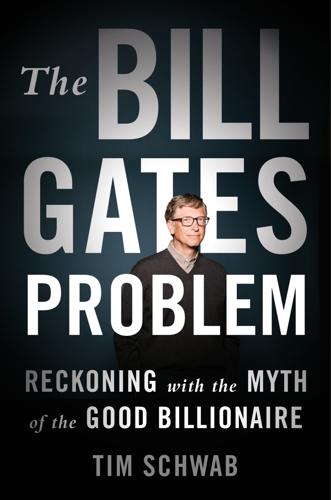
The Bill Gates Problem: Reckoning With the Myth of the Good Billionaire
by
Tim Schwab
Published 13 Nov 2023
CHAPTER 15: COVID-19 University of Oxford’s Jenner Institute: David D. Kirkpatrick, “In Race for a Coronavirus Vaccine, an Oxford Group Leaps Ahead,” New York Times, April 27, 2020, https://www.nytimes.com/2020/04/27/world/europe/coronavirus-vaccine-update-oxford.html. Adrian Hill: Stephanie Baker, “Oxford’s Covid-19 Vaccine Is the Coronavirus Front-Runner,” Bloomberg, July 15, 2020, https://www.bloomberg.com/news/features/2020-07-15/oxford-s-covid-19-vaccine-is-the-coronavirus-front-runner. university’s vaccine’s enormous potential: Kirkpatrick, “In Race for a Coronavirus Vaccine, an Oxford Group Leaps Ahead.” Coalition for Epidemic Preparedness Innovations: “Investment Overview, as of December 13, 2022,” CEPI, https://100days.cepi.net/wp-content/uploads/2022/12/2022_12_13-CEPI-Investment-Overview.pdf; Katie Thomas and Megan Twohey, “How a Struggling Company Won $1.6 Billion to Make a Coronavirus Vaccine,” New York Times, July 16, 2020, https://www.nytimes.com/2020/07/16/health/coronavirus-vaccine-novavax.html.
…
actually building factories: Jennifer Calfas, “Bill Gates to Help Fund Coronavirus-Vaccine Development,” Wall Street Journal, April 5, 2020, uncorrected version available at https://web.archive.org/web/20200405224915/https://www.wsj.com/articles/bill-gates-to-spend-billions-on-coronavirus-vaccine-development-11586124716; Isobel Asher Hamilton, “Bill Gates Is Helping Fund New Factories for 7 Potential Coronavirus Vaccines, Even Though It Will Waste Billions of Dollars,” Business Insider, April 3, 2020, https://www.businessinsider.com/bill-gates-factories-7-different-vaccines-to-fight-coronavirus-2020-4. “need to team up”: Jay Hancock, “They Pledged to Donate Rights to Their Covid Vaccine, Then Sold Them to Pharma,” Kaiser Health News, August 25, 2020, https://khn.org/news/rather-than-give-away-its-covid-vaccine-oxford-makes-a-deal-with-drugmaker/.
…
twice as many: Maria Cheng and Lori Hinnant, “Rich Nations Dip into COVAX Supply While Poor Wait for Shots,” AP News, August 14, 2021, https://apnews.com/article/joe-biden-middle-east-africa-europe-coronavirus-pandemic-5e57879c6cb22d96b942cbc973b9296c. the Associated Press reported: Lori Hinnant and Maria Cheng, “Stalled at First Jab: Vaccine Shortages Hit Poor Countries,” AP News, April 20, 2021, https://apnews.com/article/middle-east-coronavirus-pandemic-united-nations-b52bf58e35031e71a5ff85f7a59244f8; Maria Cheng and Aniruddha Ghosal, “Unwilling to Wait, Poorer Countries Seek Their Own Vaccines,” AP News, April 20, 2021, https://apnews.com/article/business-honduras-coronavirus-vaccine-coronavirus-pandemic-central-america-16d7d06f031c89aaf37a4306747b9128.
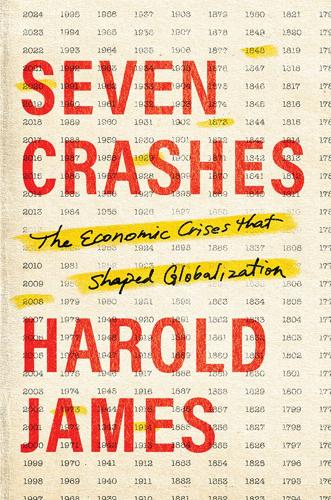
Seven Crashes: The Economic Crises That Shaped Globalization
by
Harold James
Published 15 Jan 2023
Yew Lun Tian, “In ‘People’s War’ on Coronavirus, Chinese Propaganda Faces Pushback,” Reuters, March 13, 2020, https://www.reuters.com/article/us-health-coronavirus-china-propaganda-a/in-peoples-war-on-coronavirus-chinese-propaganda-faces-pushback-idUSKBN2100NA. 38. “What a ‘Wartime’ Economy Looks Like,” New York Times, March 18, 2020, https://www.nytimes.com/2020/03/18/business/dealbook/coronavirus-war-spending.html; Heather Stewart, “‘Whatever It Takes’: Chancellor Announces 350bn Aid for UK Business,” Guardian, March 17, 2020. 39. Brian Bennett and Tessa Berenson, “‘Our Big War’: As Coronavirus Spreads, Trump Refashions Himself as a Wartime President,” Time, March 19, 2020. 40.
…
It was signed into law by President Trump as the Coronavirus Aid, Relief, and Economic Security Act (CARES Act) on March 27, 2020. The legislation amounted to a $2.2 trillion economic stimulus, providing “emergency assistance and health care response for individuals, families and businesses affected by the 2020 coronavirus pandemic.” There were direct cash payments to Americans below specified income thresholds, with single adults getting $1,200; an expansion of unemployment benefits; the provision of loans to small businesses to pay workers, rent, and other expenses; targeted funding for sectors principally affected by coronavirus pandemic; as well as temporary halts to mortgage foreclosures.
…
Michael Holden, “UK’s Johnson Calls on G7 to Vaccinate World by End of 2022,” Reuters, June 5, 2021, https://www.reuters.com/business/healthcare-pharmaceuticals/uks-johnson-calls-g7-vaccinate-world-by-end-2022–2021–06–05/. 3. Russell Hope, “Coronavirus: Champions League Match a ‘Biological Bomb’ That Infected Bergamo, Experts Say,” Sky News, March 26, 2020, https://news.sky.com/story/coronavirus-champions-league-match-a-biological-bomb-that-infected-bergamo-experts-say-11963905. 4. Jacob E. Lemieux et al., “Phylogenetic Analysis of SARS-CoV-2 in Boston Highlights the Impact of Superspreading Events,” Science 371, no. 6529 (2021): 5. 5. “Coronavirus: ‘Momentous’ Errors Worsened Austria Ski Resort Outbreak,” BBC, October 13, 2020, https://www.bbc.com/news/world-europe-54523014. 6.
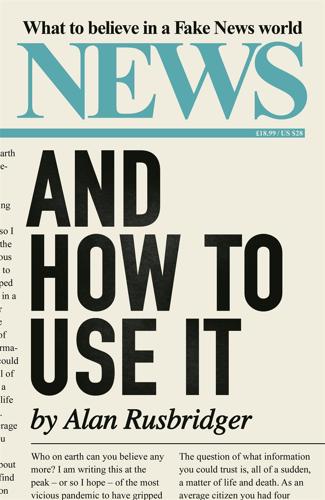
News and How to Use It: What to Believe in a Fake News World
by
Alan Rusbridger
Published 26 Nov 2020
‘Duncan Campbell and David Hencke among those leaving Guardian’. The Guardian, 19 June 2009. <https://www.theguardian.com/media/2009/jun/19/duncan-campell-david-hencke-guardian> Burchard, Hans von der, and Cornelius Hirsch. ‘Europe’s citizens back their leaders’ coronavirus response, say polls’. Politico, 20 March 2020. <https://www.politico.eu/article/europes-citizens-back-their-leaders-coronavirus-response-say-polls/> Byers, Dylan. ‘The New Yorker passed on Seymour Hersh’s Bin Laden story’. Politico, 11 May 2015. <https://www.politico.com/blogs/media/2015/05/the-new-yorker-passed-on-seymour-hershs-bin-laden-206933.html> Cagé, Julia.
…
<https://www.monbiot.com/registry-of-interests/> Monck, Adrian with Mike Hanley. Can You Trust the Media? London: Icon Books, 2008. Montanaro, Domenico. ‘Poll: Americans Don’t Trust What They’re Hearing From Trump On Coronavirus’. NPR Special Series: The Coronvirus Crisis, 17 March 2020. <https://www.npr.org/2020/03/17/816680033/poll-americans-dont-trust-what-they-re-hearing-from-trump-on-coronavirus> Morello, Lauren. ‘“Climategate” Scientist Admits “Awful E-Mails,” but Peers Say IPCC Conclusions Remain Sound’. The New York Times, 2 March 2010. <https://archive.nytimes.com/www.nytimes.com/cwire/2010/03/02/02climatewire-climategate-scientist-admits-awful-e-mails-b-66224.html?
…
<https://reutersinstitute.politics.ox.ac.uk/our-research/journalists-uk> Tiku, Nitasha. ‘Julian Assange Picks a Media Fight With the Guardian’. New York Magazine, 21 December 2010. <https://nymag.com/intelligencer/2010/12/julian_assange_picks_a_media.html> The Times. ‘The Times view on the press under coronavirus’. 4 April 2020. <https://www.thetimes.co.uk/article/the-times-view-on-the-press-under-coronavirus-7cvfk36vl> Timm, Trevor. ‘The media’s reaction to Seymour Hersh’s bin Laden scoop has been disgraceful’. Columbia Journalism Review, 15 May 2015. <https://www.cjr.org/analysis/seymour_hersh_osama_bin_laden.php> Tobitt, Charlotte. ‘“Cancer battle freed me up to work on Oxfam scoop and stumble into NHS drugs story”, says Times reporter Sean O’Neill’.

The Pandemic Century: One Hundred Years of Panic, Hysteria, and Hubris
by
Mark Honigsbaum
Published 8 Apr 2019
However, the patients with SARS that Peiris had investigated showed no evidence of metapneumovirus, only the coronavirus. Nor were the coronavirus or antibodies to the coronavirus found in other patients who did not have SARS. Peiris was therefore sure that the new coronavirus was the cause of SARS and that it had been newly introduced to humans, and he submitted a paper to this effect to the British medical journal The Lancet. Researchers at Erasmus University in Rotterdam eventually resolved the dispute by performing an experiment on macaques, one group of which was infected with the coronavirus, a second with the human metapneumovirus, and a third with both viruses.
…
To be sure there had not been an error, Peiris also spun the fluid containing the virus in a high-speed centrifuge and asked Lim to look at the concentrated virus particles under an electron microscope. Each virus particle was ringed by a halo of tiny spikes as if it were wearing a crown—that too, strongly suggested a coronavirus. Peiris was now confident that SARS was a coronavirus. He speculated that the reason the homology was not perfect was that it was very likely a new type of coronavirus that had emerged recently from an animal reservoir and therefore had yet to be typed by GenBank. Using the partial genetic sequence of the virus, Peiris and his colleagues set up a PCR test to detect the virus, and on March 28 made the test available to hospitals in Hong Kong and to the WHO.
…
Events now moved rapidly. Within three days of the WHO’s receiving this information, two other laboratories also reported finding the coronavirus, and by March 25 the CDC had uploaded images of the virus to a secure WHO website, prompting Peiris’s group to do the same. Nonetheless, some researchers continued to insist that SARS was caused by a paramyxovirus or perhaps the human metapneumovirus. This prompted speculation that the viruses worked synergistically, with the coronavirus weakening the immune system to the point where the other viruses colonized the respiratory tract, triggering SARS’s distinctive pathology.
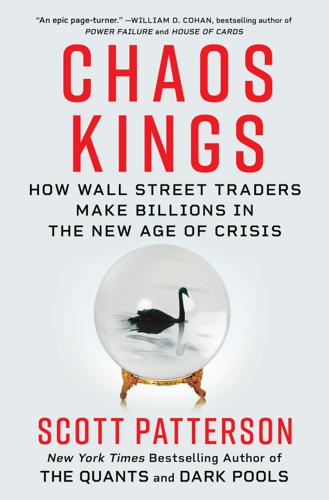
Chaos Kings: How Wall Street Traders Make Billions in the New Age of Crisis
by
Scott Patterson
Published 5 Jun 2023
“The 2008 financial crisis was a car crash” Justin Baer, “The Day Coronavirus Nearly Broke the Financial Markets,” Wall Street Journal, May 20, 2020, https://www.wsj.com/articles/the-day-coronavirus-nearly-broke-the-financial-markets-11589982288?mod=e2tw. In 2010, he predicted in the Economist “Nassim Taleb Looks at What Will Break and What Won’t,” Economist, November 22, 2010, https://www.economist.com/news/2010/11/22/nassim-taleb-looks-at-what-will-break-and-what-wont. “The Precautionary Principle” https://arxiv.org/pdf/1410.5787.pdf. CHAPTER 2: RUIN PROBLEMS “Systemic Risk of Pandemic via Novel Pathogens—Coronavirus: A Note” https://necsi.edu/systemic-risk-of-pandemic-via-novel-pathogens-coronavirus-a-note.
…
It was simple math. On January 30, the World Health Organization declared that the outbreak of the deadly novel coronavirus constituted a global health emergency. Despite the mounting alarm, WHO urged countries to avoid travel restrictions. “This is the time for science, not rumors,” WHO director general Tedros Adhanom Ghebreyesus said. Ackman was incredulous as people continued to travel blithely across borders. The final straw was Milan Fashion Week, which took place in February despite a severe outbreak of coronavirus in northern Italy. All those fucking fashionistas were going to jet back to their densely populated cities all around the world and spread the virus everywhere.
…
When they first burst upon the world, no one knows what they do to the human body, how to cure them, how contagious they are, if people can spread the deadly bug without knowing they’re infected, or how leaders will respond to the outbreak. Taleb feared this new coronavirus might have several such unknown properties. Taleb, Bar-Yam, and another researcher at NECSI, Joe Norman, quickly drafted a memo outlining the existential risks of the virus and the steps needed to address them. Then Taleb sent it to the White House. Days later, January 26, a time when most Americans were barely aware of the coming plague, they made it public. “Systemic Risk of Pandemic via Novel Pathogens—Coronavirus: A Note” was a single-page, screeching alarm bell that urged swift, sweeping action to halt the disease in its tracks.

Cabin Fever: The Harrowing Journey of a Cruise Ship at the Dawn of a Pandemic
by
Michael Smith
and
Jonathan Franklin
Published 14 Jul 2022
Since May 2018, Olivia had worked as a homeland security and counterterrorism adviser to Vice President Mike Pence, briefing him about bombings, natural disasters, and school shootings. Beginning in January 2020, COVID-19 outbreaks on cruise ships began to show up on her radar. And since early February, when President Trump placed Pence in charge of the White House Coronavirus Task Force, cruise ship outbreaks and how to deal with them became a growing part of Olivia’s day-to-day work. So many ships kept reporting cases that the White House needed a spreadsheet to keep track of them all. Olivia, a forty-three-year-old brunette with intense brown eyes and a passion for government service, felt overwhelmed with the logistics of bringing each and every one of these massive ships to port.
…
But for the mayor, this port of call felt different. At 5:45 a.m., as a pair of tugboats finished easing the Zaandam against the Mardones Pier, a frigid gray pall hung over the city. A brisk late-summer wind whipped across the Strait of Magellan, rain seemed certain, and Mayor Radonich imagined an army of tourists infected with the dreaded coronavirus assaulting his city. Punta Arenas is a remote outpost, even in the southern hemisphere, and it was about as far as possible from the plague erupting in China. The city is closer to Antarctica than Santiago, and the desolate expanses of Tierra del Fuego are visible from the promenade along the strait.
…
He also needed to empty the nearly full garbage and wastewater holds. Smit hinted that time was running out for the Zaandam. Would the authorities allow them to do these essentials? Could they at least get water? There was no answer, and then the agent, Victor Oelckers, broke the news. Chile had declared a maximum health alert due to the coronavirus outbreak. All borders—sea, land, and air—would shut in forty-eight hours. In Punta Arenas, the port was closed immediately because of the dock protests. The government gave them one option: The Zaandam might be permitted to unload passengers, but only after it lay at anchor for a minimum of two weeks, under an enforced quarantine.

Stakeholder Capitalism: A Global Economy That Works for Progress, People and Planet
by
Klaus Schwab
Published 7 Jan 2021
Notes 1 “Why New Zealand Decided to Go for Full Elimination of the Coronavirus,” Alice Klein, New Scientist, June 2020, https://www.newscientist.com/article/2246858-why-new-zealand-decided-to-go-for-full-elimination-of-the-coronavirus/#ixzz6T1rYuK5U. 2 “New Zealand Isn't Just Flattening the Curve. It's Squashing It,” Anna Fifield, The Washington Post, April 2020, https://www.washingtonpost.com/world/asia_pacific/new-zealand-isnt-just-flattening-the-curve-its-squashing-it/2020/04/07/6cab3a4a-7822-11ea-a311-adb1344719a9_story.html. 3 “Why New Zealand Decided to Go for Full Elimination of the Coronavirus,” Alice Klein, New Scientist, June 2020, https://www.newscientist.com/article/2246858-why-new-zealand-decided-to-go-for-full-elimination-of-the-coronavirus/#ixzz6T1rYuK5U. 4 PM Jacinda Ardern's full lockdown speech, Newsroom, March 2020, https://www.newsroom.co.nz/2020/03/23/1096999/pm-jacinda-arderns-full-lockdown-speech. 5 “The World's Youngest Female Leader Takes Over in New Zealand,” The Economist, October 2017, https://www.economist.com/asia/2017/10/26/the-worlds-youngest-female-leader-takes-over-in-new-zealand. 6 “New Zealand Isn't Just Flattening the Curve.
…
The director had called to update me on the epidemic that had hit China hard earlier that winter: COVID-19. Initially confined to the city of Wuhan, this novel coronavirus, which often causes a severe respiratory disease, was rapidly becoming a primary public health concern across the country. Our colleague explained that much of Beijing’s population had travelled beyond the city to attend Lunar New Year celebrations and, as they returned, they carried the novel coronavirus with them, causing an outbreak and subsequent lockdown in the capital. My colleague kept his cool, providing objective facts on what the lockdown meant for our employees and operations.
…
la=en. 14 This concerns GDP growth based on market exchange rates (see corresponding row on table cited in footnotes 11 and 12). 15 “World Bank Country and Lending Groups,” World Bank, https://datahelpdesk.worldbank.org/knowledgebase/articles/906519-world-bank-country-and-lending-groups. 16 “The Great Emerging-Market Growth Story is Unravelling,” The Financial Times, June 2019, https://www.ft.com/content/ad11f624-8b8c-11e9-a1c1-51bf8f989972. 17 See the IMF estimate of 2019 above. For the IIF estimate of Q1 2020, see https://www.iif.com/Portals/0/Files/content/Research/Global%20Debt%20Monitor_July2020.pdf. 18 “Coronavirus Lifts Government Debt to WWII Levels—Cutting It Won't Be Easy,” The Wall Street Journal, August 2020, https://www.wsj.com/articles/coronavirus-lifts-government-debt-to-wwii-levelscutting-it-wont-be-easy-11598191201. 19 “Resolving Global Debt: An Urgent Collective Action Cause,” Geoffrey Okamoto, IMF First Deputy Managing Director, October 2020, https://www.imf.org/en/News/Articles/2020/10/01/sp100120-resolving-global-debt-an-urgent-collective-action-cause. 20 “Gross Debt Position, % of GDP,” Fiscal Monitor, International Monetary Fund, April 2020, https://www.imf.org/external/datamapper/G_XWDG_G01_GDP_PT@FM/ADVEC/FM_EMG/FM_LIDC. 21 “Inflation Rate, Average Consumer Prices, Annual Percent Change, Advanced Economies,” World Economic Outlook, International Monetary Fund, April 2020, https://www.imf.org/external/datamapper/PCPIPCH@WEO/ADVEC/OEMDC. 22 International Monetary Fund, DataMapper, https://www.imf.org/external/datamapper/GGXWDG_NGDP@WEO/OEMDC/ADVEC/WEOWORLD. 23 “Youth Dividend or Ticking Time Bomb?”
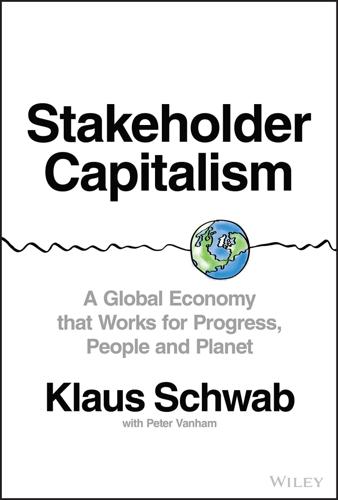
Stakeholder Capitalism: A Global Economy That Works for Progress, People and Planet
by
Klaus Schwab
and
Peter Vanham
Published 27 Jan 2021
Notes 1 “Why New Zealand Decided to Go for Full Elimination of the Coronavirus,” Alice Klein, New Scientist, June 2020, https://www.newscientist.com/article/2246858-why-new-zealand-decided-to-go-for-full-elimination-of-the-coronavirus/#ixzz6T1rYuK5U. 2 “New Zealand Isn't Just Flattening the Curve. It's Squashing It,” Anna Fifield, The Washington Post, April 2020, https://www.washingtonpost.com/world/asia_pacific/new-zealand-isnt-just-flattening-the-curve-its-squashing-it/2020/04/07/6cab3a4a-7822-11ea-a311-adb1344719a9_story.html. 3 “Why New Zealand Decided to Go for Full Elimination of the Coronavirus,” Alice Klein, New Scientist, June 2020, https://www.newscientist.com/article/2246858-why-new-zealand-decided-to-go-for-full-elimination-of-the-coronavirus/#ixzz6T1rYuK5U. 4 PM Jacinda Ardern's full lockdown speech, Newsroom, March 2020, https://www.newsroom.co.nz/2020/03/23/1096999/pm-jacinda-arderns-full-lockdown-speech. 5 “The World's Youngest Female Leader Takes Over in New Zealand,” The Economist, October 2017, https://www.economist.com/asia/2017/10/26/the-worlds-youngest-female-leader-takes-over-in-new-zealand. 6 “New Zealand Isn't Just Flattening the Curve.
…
The director had called to update me on the epidemic that had hit China hard earlier that winter: COVID-19. Initially confined to the city of Wuhan, this novel coronavirus, which often causes a severe respiratory disease, was rapidly becoming a primary public health concern across the country. Our colleague explained that much of Beijing’s population had travelled beyond the city to attend Lunar New Year celebrations and, as they returned, they carried the novel coronavirus with them, causing an outbreak and subsequent lockdown in the capital. My colleague kept his cool, providing objective facts on what the lockdown meant for our employees and operations.
…
la=en. 14 This concerns GDP growth based on market exchange rates (see corresponding row on table cited in footnotes 11 and 12). 15 “World Bank Country and Lending Groups,” World Bank, https://datahelpdesk.worldbank.org/knowledgebase/articles/906519-world-bank-country-and-lending-groups. 16 “The Great Emerging-Market Growth Story is Unravelling,” The Financial Times, June 2019, https://www.ft.com/content/ad11f624-8b8c-11e9-a1c1-51bf8f989972. 17 See the IMF estimate of 2019 above. For the IIF estimate of Q1 2020, see https://www.iif.com/Portals/0/Files/content/Research/Global%20Debt%20Monitor_July2020.pdf. 18 “Coronavirus Lifts Government Debt to WWII Levels—Cutting It Won't Be Easy,” The Wall Street Journal, August 2020, https://www.wsj.com/articles/coronavirus-lifts-government-debt-to-wwii-levelscutting-it-wont-be-easy-11598191201. 19 “Resolving Global Debt: An Urgent Collective Action Cause,” Geoffrey Okamoto, IMF First Deputy Managing Director, October 2020, https://www.imf.org/en/News/Articles/2020/10/01/sp100120-resolving-global-debt-an-urgent-collective-action-cause. 20 “Gross Debt Position, % of GDP,” Fiscal Monitor, International Monetary Fund, April 2020, https://www.imf.org/external/datamapper/G_XWDG_G01_GDP_PT@FM/ADVEC/FM_EMG/FM_LIDC. 21 “Inflation Rate, Average Consumer Prices, Annual Percent Change, Advanced Economies,” World Economic Outlook, International Monetary Fund, April 2020, https://www.imf.org/external/datamapper/PCPIPCH@WEO/ADVEC/OEMDC. 22 International Monetary Fund, DataMapper, https://www.imf.org/external/datamapper/GGXWDG_NGDP@WEO/OEMDC/ADVEC/WEOWORLD. 23 “Youth Dividend or Ticking Time Bomb?”
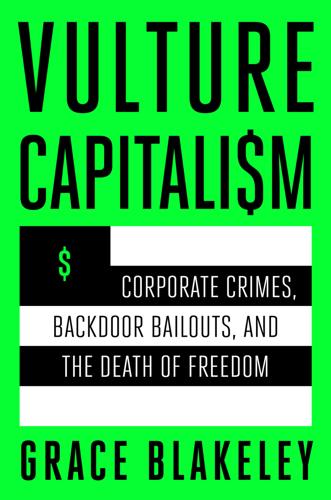
Vulture Capitalism: Corporate Crimes, Backdoor Bailouts, and the Death of Freedom
by
Grace Blakeley
Published 11 Mar 2024
“Hangzhou Considers Expansion Options for Coronavirus Surveillance App,” Privacy International, May 26, 2020, https://privacyinternational.org/examples/3888/hangzhou-considers-expansion-options-coronavirus-surveillance-app. 111. Mariana Mazzucato and Rosie Collington, The Big Con: How the Consulting Industry Weakens Our Businesses, Infantilizes Our Governments and Warps Our Economies (London: Allen Lane, 2023). 112. Ibid. 113. Patrick Watson, “Coronavirus Socialism,” Forbes, April 13, 2020, https://www.forbes.com/sites/patrickwwatson/2020/04/13/coronavirus-socialism/?sh=19f7aab45225. 114. Emil W. Henry Jr., “Will Coronavirus Launch the Second Wave of Socialism?
…
Louis, July 6, 2022, https://www.stlouisfed.org/en/publications/regional-economist/2022/jul/was-paycheck-protection-program-effective. 2. Ibid. 3. Alana Abramson, “ ‘No Lessons Have Been Learned.’ Why the Trillion-Dollar Coronavirus Bailout Benefited the Rich,” Time, June 18, 2020, https://time.com/5845116/coronavirus-bailout-rich-richer/. 4. David Yaffe-Bellany, “ ‘The Big Guys Get Bailed Out’: Restaurants Vie for Relief Funds,” New York Times, April 20, 2020, https://www.nytimes.com/2020/04/20/business/shake-shack-returning-loan-ppp-coronavirus.html. 5. Nancy Luna, “Shake Shack Gets $10 Million Paycheck Protection Loan, Cuts 1,000 Workers,” Nation’s Restaurant News, April 17, 2020, https://www.nrn.com/fast-casual/shake-shack-gets-10-million-paycheck-protection-loan-cuts-1000-workers. 6.
…
The costs of this corruption have been felt by working people, who are now being told there is no money left in public coffers to deal with a cost-of-living crisis that is seeing millions pushed into poverty. Yet mainstream commentators lost no time in claiming that the increase in state spending seen over the course of the pandemic could be equated with “socialism.” Forbes ran a piece on the rise of “Coronavirus Socialism.”113 More equivocally, a columnist for The Hill asked in March 2020, “Will coronavirus launch the second wave of socialism?”114 Scientific American echoed the question with an article headlined “Will COVID-19 Make Us More Socialist?”115 “The Free Market Is Dead,” declared Time in April 2021; the only question that remains is “What Will Replace It?”
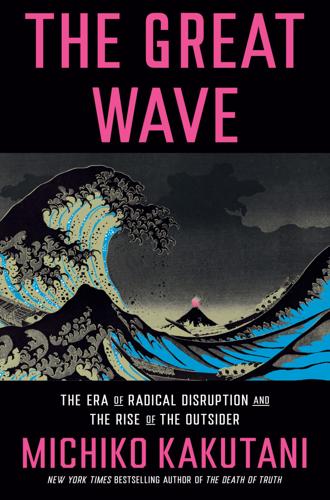
The Great Wave: The Era of Radical Disruption and the Rise of the Outsider
by
Michiko Kakutani
Published 20 Feb 2024
GO TO NOTE REFERENCE IN TEXT It was a pioneering breakthrough: Gina Kolata and Benjamin Mueller, “Halting Progress and Happy Accidents: How mRNA Vaccines Were Made,” The New York Times, Jan. 15, 2022, nytimes.com/2022/01/15/health/mrna-vaccine.html; Gina Kolata, “Kati Kariko Helped Shield the World from the Coronavirus,” The New York Times, Apr. 8, 2021, nytimes.com/2021/04/08/health/coronavirus-mrna-kariko.html; Carolyn Y. Johnson, “A One-Way Ticket. A Cash-Stuffed Teddy Bear. A Dream Decades in the Making,” The Washington Post, Oct. 1, 2021, washingtonpost.com/health/2021/10/01/katalin-kariko-covid-vaccines/; David Cox, “How mRNA Went from a Scientific Backwater to a Pandemic Crusher,” Wired, Dec. 2, 2020, wired.co.uk/article/mrna-coronavirus-vaccine-pfizer-biontech. GO TO NOTE REFERENCE IN TEXT “the fastest any vaccine”: Philip Ball, “The Lightning-Fast Quest for COVID Vaccines—and What It Means for Other Diseases,” Nature, Dec. 18, 2020, nature.com/articles/d41586-020-03626-1.
…
GO TO NOTE REFERENCE IN TEXT The public posting of the COVID-19 genome: Charlie Campbell, “Exclusive: The Chinese Scientist Who Sequenced the First COVID-19 Genome Speaks Out About the Controversies Surrounding His Work,” Time, Aug. 24, 2020, time.com/5882918/zhang-yongzhen-interview-china-coronavirus-genome/; Victoria Gill, “Coronavirus: Virus Provides Leaps in Scientific Understanding,” BBC News, Jan. 10, 2021, bbc.com/news/science-environment-55565284; Jon Gertner, “Unlocking the Covid Code,” The New York Times Magazine, Mar. 25, 2021, nytimes.com/interactive/2021/03/25/magazine/genome-sequencing-covid-variants.html; Mark Zastrow, “Open Science Takes on the Coronavirus Pandemic,” Nature, Apr. 24, 2020, nature.com/articles/d41586-020-01246-3. GO TO NOTE REFERENCE IN TEXT Meanwhile, open sourcing during the pandemic: “Open Source Project Hubs for COVID-19,” New America, newamerica.org/digital-impact-governance-initiative/reports/building-and-reusing-open-source-tools-government/open-source-project-hubs-for-covid-19/.
…
GO TO NOTE REFERENCE IN TEXT “For all of human history”: Columbia Business School online, “New Research Shows Prevalence of Remote Work Spurred by COVID-19 Continues to Effect Residential and Commercial Real Estate Values,” January 25, 2023, business.columbia.edu/real-estate-news/columbia-news/new-research-shows-prevalence-remote-work-spurred-covid-19-continues. GO TO NOTE REFERENCE IN TEXT Stuck at home during the pandemic: Stephanie Pagones, “Americans Spending Coronavirus Quarantine Streaming 8 Hours of TV per Day,” Fox Business, Apr. 16, 2020, foxbusiness.com/lifestyle/americans-coronavirus-quarantine-streaming-services. GO TO NOTE REFERENCE IN TEXT “skim-watching”: Sam Haysom, “Does Skim-Watching Videos on 2x Speed Hurt or Help Your Brain?,” Mashable, June 11, 2022, mashable.com/article/watching-videos-2x-speed-does-it-work.

Revenge of the Tipping Point: Overstories, Superspreaders, and the Rise of Social Engineering
by
Malcolm Gladwell
Published 1 Oct 2024
INDEX AND THE MARRIOTT OUTBREAK The account of the Biogen conference is taken from the Boston Globe article by Mark Arsenault (“How the Biogen Leadership Conference in Boston Spread the Coronavirus,” March 10) and the New York Times story by Farah Stockman and Kim Barker (“How a Premier U.S. Drug Company Became a Virus ‘Super Spreader,’” April 12, 2020): https://www.bostonglobe.com/2020/03/11/nation/how-biogen-leadership-conference-boston-spread-coronavirus/ and https://www.nytimes.com/2020/04/12/us/coronavirus-biogen-boston-superspreader.html Additional details about the Research Triangle branch of the outbreak in North Carolina are from the News & Observer’s “Biogen sends RTP workers home after employees test positive for coronavirus” (Zachery Eanes, March 9, 2020) and the Triangle Business Journal’s “Emails show urgency as NC officials grappled with cases from Biogen superspreader conference” (Lauren Ohnesorge, June 1, 2021): https://www.newsobserver.com/news/business/article241025271.html and https://www.bizjournals.com/triangle/news/2021/06/01/nc-biogen-covid-cases-how-state-officials-reacted.html The story of Boston’s first COVID case is from “UMass Boston student has coronavirus; first case in Massachusetts” by Lisa Kashinsky (Boston Herald, February 1, 2020) and a press release on the official City of Boston website: https://www.nbcnews.com/news/us-news/coronavirus-case-boston-1st-massachusetts-8th-u-s-n1123096 and https://www.boston.gov/news/first-case-2019-novel-coronavirus-confirmed-boston You can read about how the Broad Institute created its large-scale emergency diagnostic testing lab in an article on that outfit’s website: https://www.broadinstitute.org/news/how-broad-institute-converted-clinical-processing-lab-large-scale-covid-19-testing-facility Jacob Lemieux and his colleagues’ research on the Biogen outbreak, the C2416T strain, and the path of COVID-19 through Boston can be found in their article “Phylogenetic analysis of SARS-CoV-2 in Boston highlights the impact of superspreading events” (Science 371, no. 6529, December 10, 2020): https://www.science.org/doi/10.1126/science.abe3261 More details about my trip to Denver with Donald Stedman appear in my story about it for The New Yorker, “Million-Dollar Murray” (February 5, 2006): https://www.newyorker.com/magazine/2006/02/13/million-dollar-murray “A well-tuned car made since 1983 emits 1 gram of carbon monoxide per mile,” Stedman told Andrew Bowser of United Press International in 1997, whereas “older cars emit about 10 to 20 grams per mile.”
…
Drug Company Became a Virus ‘Super Spreader,’” April 12, 2020): https://www.bostonglobe.com/2020/03/11/nation/how-biogen-leadership-conference-boston-spread-coronavirus/ and https://www.nytimes.com/2020/04/12/us/coronavirus-biogen-boston-superspreader.html Additional details about the Research Triangle branch of the outbreak in North Carolina are from the News & Observer’s “Biogen sends RTP workers home after employees test positive for coronavirus” (Zachery Eanes, March 9, 2020) and the Triangle Business Journal’s “Emails show urgency as NC officials grappled with cases from Biogen superspreader conference” (Lauren Ohnesorge, June 1, 2021): https://www.newsobserver.com/news/business/article241025271.html and https://www.bizjournals.com/triangle/news/2021/06/01/nc-biogen-covid-cases-how-state-officials-reacted.html The story of Boston’s first COVID case is from “UMass Boston student has coronavirus; first case in Massachusetts” by Lisa Kashinsky (Boston Herald, February 1, 2020) and a press release on the official City of Boston website: https://www.nbcnews.com/news/us-news/coronavirus-case-boston-1st-massachusetts-8th-u-s-n1123096 and https://www.boston.gov/news/first-case-2019-novel-coronavirus-confirmed-boston You can read about how the Broad Institute created its large-scale emergency diagnostic testing lab in an article on that outfit’s website: https://www.broadinstitute.org/news/how-broad-institute-converted-clinical-processing-lab-large-scale-covid-19-testing-facility Jacob Lemieux and his colleagues’ research on the Biogen outbreak, the C2416T strain, and the path of COVID-19 through Boston can be found in their article “Phylogenetic analysis of SARS-CoV-2 in Boston highlights the impact of superspreading events” (Science 371, no. 6529, December 10, 2020): https://www.science.org/doi/10.1126/science.abe3261 More details about my trip to Denver with Donald Stedman appear in my story about it for The New Yorker, “Million-Dollar Murray” (February 5, 2006): https://www.newyorker.com/magazine/2006/02/13/million-dollar-murray “A well-tuned car made since 1983 emits 1 gram of carbon monoxide per mile,” Stedman told Andrew Bowser of United Press International in 1997, whereas “older cars emit about 10 to 20 grams per mile.”
…
See “Air Quality Is Getting Worse in Denver” by Alayna Alvarez, Alex Fitzpatrick, and Kavya Beheraj (Axios, May 5, 2023): https://www.axios.com/local/denver/2023/05/05/denver-air-quality-ozone-pollution For William Ristenpart’s research on the airborne nature of COVID, see “The coronavirus pandemic and aerosols: Does COVID-19 transmit via expiratory particles?,” a report he cowrote with Sima Asadi, Nicole Bouvier, and Anthony S. Wexler for Aerosol Science and Technology 54, no. 6 (April 2020): 635–38. https://www.ncbi.nlm.nih.gov/pmc/articles/PMC7157964/ Some of the World Health Organization’s social-media posts insisting that COVID-19 is not airborne appear at https://x.com/WHO/status/1243972193169616898?lang=en, https://www.facebook.com/WHO/posts/fact-covid-19-is-not-airborne-the-coronavirus-is-mainly-transmitted-through-drop/3019704278074935/, and https://www.instagram.com/p/B-UieTUD42A/?
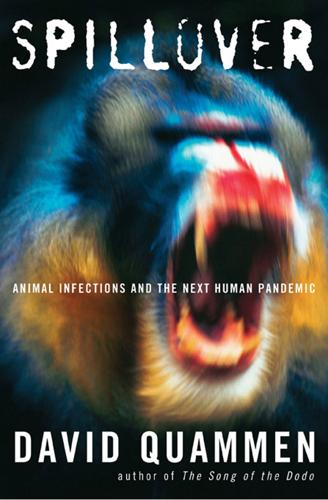
Spillover: Animal Infections and the Next Human Pandemic
by
David Quammen
Published 30 Sep 2012
Just after the epidemic ended, his HKU team started trapping animals out there to look for evidence of coronavirus. They focused first on civets, capturing and sampling almost two dozen. From each animal they took a respiratory swab and a fecal swab—zip zap, thank you very much—and then released the civet back to the Hong Kong wilds. Each sample was screened by PCR methodology using what the technical lingo calls “consensus primers,” meaning generalized molecular jump-starters that would amplify RNA fragments shared commonly among coronaviruses, not just those unique to the SARS-like coronavirus that Guan Yi had found in his civets. So how much coronavirus did Poon find? I asked.
…
So the culturing work had established that an unknown coronavirus was present in SARS patients—some of them, anyway—but that didn’t necessarily mean it had caused the disease. To establish causality, Peiris’s team tested blood serum from SARS patients (because it would contain antibodies) against the newfound virus in culture. This was like splashing holy water at a witch. The antibodies recognized the virus and reacted strongly. Less than a month later, based on that evidence plus other confirming tests, Malik Peiris and his colleagues published a paper cautiously announcing this new coronavirus as “a possible cause” of SARS.
…
Less than a month later, based on that evidence plus other confirming tests, Malik Peiris and his colleagues published a paper cautiously announcing this new coronavirus as “a possible cause” of SARS. They were right, and the virus became known as SARS coronavirus, inelegantly abbreviated as SARS-CoV. It was the first coronavirus ever found to inflict serious illness upon humans. (Several other coronaviruses are among the many viral strains responsible for common colds. Still others cause hepatitis in mice, gastroenteritis in pigs, and respiratory infection in turkeys.) SARS-CoV has no ominous ring. In older days, the new agent would have received a more vivid, geographical moniker such as Foshan virus or Guangzhou virus, and people would have run around saying: Watch out, he’s got Guangzhou!
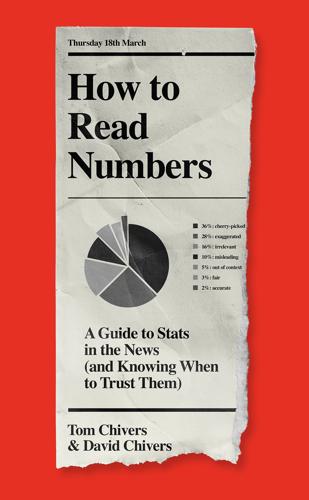
How to Read Numbers: A Guide to Statistics in the News (And Knowing When to Trust Them)
by
Tom Chivers
and
David Chivers
Published 18 Mar 2021
Notes Chapter 1: How Numbers Can Mislead 1. Sam Blanchard, ‘Care home “epidemic” means coronavirus is STILL infecting 20,000 people a day in Britain amid fears the virus’s R rate may have gone back UP to 0.9’, Mail Online, 2020 https://www.dailymail.co.uk/news/article-8297425/Coronavirus-infecting-20-000-people-day-Britain-warns-leading-expert.html 2. Nick McDermott, ‘Coronavirus still infecting 20,000 people a day as spike in care home cases sends R rate up again to 0.9, experts warn’, the Sun, 2020 https://www.thesun.co.uk/news/11575270/coronavirus-care-home-cases-spike/ 3. Selvitella, A., ‘The ubiquity of the Simpson’s Paradox’, Journal of Statistical Distributions and Applications, 4(2) (2017) https://doi.org/10.1186/s40488-017-0056-5 4.
…
Patrick Worrall, ‘The target was for 100,000 tests a day to be “carried out”, not “capacity” to do 100,000 tests’, Channel 4 FactCheck, 2020 https://www.channel4.com/news/factcheck/factcheck-the-target-was-for-100000-tests-a-day-to-be-carried-out-not-capacity-to-do-100000-tests 2. ‘United Kingdom: How many tests are performed each day?’, Our World in Data https://ourworldindata.org/coronavirus/country/united-kingdom?country=~GBR#how-many-tests-are-performed-each-day 3. Laura Kuenssberg, Twitter https://twitter.com/bbclaurak/status/1255757972791230465 4. ‘Matt Hancock confirms 100,000 coronavirus testing target met’, ITV News, 1 May 2020 https://www.itv.com/news/2020-05-01/coronavirus-daily-briefing-matt-hancock-steve-powis-testing-tracing/ 5. Emily Ashton, Twitter, 29 April 2020 https://twitter.com/elashton/status/1255468112251695109 6.
…
Miyara, M., Tubach, F., Pourcher, V., Morelot-Panzini, C. et al., ‘Low incidence of daily active tobacco smoking in patients with symptomatic COVID-19’, Qeios, 21 April 2020 doi:10.32388/WPP19W.3 2. Mary Kekatos, ‘Was Hockney RIGHT? French researchers to give nicotine patches to coronavirus patients and frontline workers after lower rates of infection were found among smokers’, the Daily Mail, 2020 https://www.dailymail.co.uk/health/article-8246939/French-researchers-plan-nicotine-patches-coronavirus-patients-frontline-workers.html 3. Roberts, R. S., Spitzer, W. O., Delmore, T. and Sackett, D. L., ‘An empirical demonstration of Berkson’s bias’, Journal of Chronic Diseases, 31(2) (1978, pp. 119–28 https://doi.org/10.1016/0021-9681(78)90097-8 4.

Work Won't Love You Back: How Devotion to Our Jobs Keeps Us Exploited, Exhausted, and Alone
by
Sarah Jaffe
Published 26 Jan 2021
The popularity of the concept of “burnout”—for what is burnout but the feeling experienced when one’s labor of love is anything but—reminds us of this. Repeated cycles of layoffs, steady low wages, and cutbacks to the private sector have made jobs harder and harder to love. The conditions under which “essential” workers had to report to the job during the coronavirus pandemic revealed the coercion at the heart of the labor relation. We are being punished for all the choices we have made even as we have continued to do what we are told—racking up student debt, working longer hours, answering work emails on our phones from parties, funerals, and bed, and doing more, always, with less. 24 Neoliberalism relies on the labor of love ideology to cover up the coercion that was in fact required to push people into the workplace at the origin of capitalism.
…
In Part One, we will follow the labor of love as it moves from women’s unpaid work in the home through paid domestic work, teaching, retail work, and the nonprofit sector. Other forms of work that could just as easily have gone into this section include nursing, grocery store work, restaurant work, and call center jobs. It is worth noting that much of this work is the “essential” or “key” work of the coronavirus pandemic: these workers are the people expected to risk their lives to keep going to work in order for the rest of us to survive. In these jobs workers are expected to provide service with a smile or genuine, heartfelt care; they are expected to put themselves second to the feelings and needs of their customers or charges.
…
US-based research showed that mothers working outside the home these days spend just as much time caring for children as mothers did in the 1970s, when their only job was in the home. Others have estimated that “the size of the paid labor force would double if all unpaid caregivers were paid for their work.” During the coronavirus lockdown, one survey found that nearly half of men with young children reported splitting domestic duties equally—but their wives disagreed. Only 2 percent of women agreed that men were responsible for most of the housework during lockdown. Globally, United Nations researchers estimated in 1999 that all unpaid reproductive labor, if paid, would cost $16 trillion, a third of the world’s total economic activity—$11 trillion of which would be women’s share. 63 For the working class, it’s the impossibility of paying for help that forces the squeeze.

The Atlas of Disease
by
Sandra Hempel
Published 15 Sep 2018
By the end of April tourism in Thailand was down by 70 per cent and Singapore by 60 per cent. The British Foreign Office meanwhile was advising against travel to Hong Kong, parts of China and Toronto. A new — and fatal — coronavirus In April 2003, researchers in Hong Kong published a paper identifying a new type of what is known as a coronavirus as a likely cause of SARS. The term ‘coronavirus’ comes from the Latin for ‘crown’ or ‘halo’ and refers to the crown-like spikes on the pathogen’s surface. This particular coronavirus, SARS-CoV, does not appear to have been seen before in humans or in animals. Coronaviruses are common and most, like the common cold, are not dangerous.
…
In 2012, however, the United States declared the SARS virus a ‘select agent’, meaning that it had the potential to pose a severe threat to public health and safety. That same year another new coronavirus emerged in Saudi Arabia. A patient died in a hospital in Jeddah from acute pneumonia and organ failure. Doctors were unable to identify the pathogen involved and sent sputum samples to a laboratory in Holland, where the Middle East respiratory syndrome coronavirus (MERS-CoV) was identified as the cause of what is known as Middle East respiratory syndrome, or MERS. The illness is similar to SARS and carries a mortality rate of around 40 per cent.
…
In February 2018, doctors in England were once more alerted to an ‘exceptional increase’ in scarlet fever. The reasons for these upsurges are not understood, although a decrease in immunity in the general population, a stronger strain of bacteria and a combination of both have been suggested as possible causes. SARS Causal agent Severe acute respiratory syndrome coronavirus or SARS-CoV Transmission Not completely understood but thought to be through close contact with an infected person, mainly through the respiratory route, and also through contact with infected surfaces Symptoms Influenza-like, including fever, malaise, myalgia, headache, diarrhoea and shivering Incidence No reports of SARS since 2004, as of mid-2018 Prevalence Currently no cases reported but potential to break out and spread worldwide Prevention Fast reporting of new outbreaks, isolation of infected individuals and contacts Treatment No specific treatment but general antiviral drugs and treatment to support breathing, prevent or treat pneumonia and reduce swelling in the lungs Global strategy Worldwide surveillance to detect new outbreaks, fast reporting of cases and containment Microscopic image of the coronavirus that causes SARS.
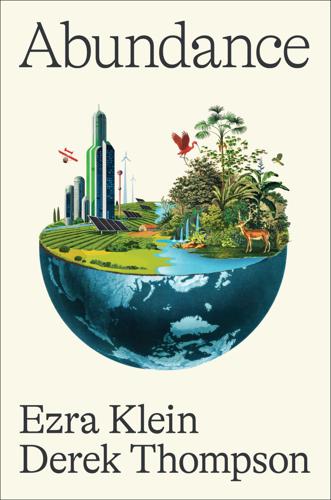
Abundance
by
Ezra Klein
and
Derek Thompson
Published 18 Mar 2025
Gina Kolata, “Long Overlooked, Kati Kariko Helped Shield the World from the Coronavirus,” New York Times, April 8, 2021, updated October 2, 2023, https://www.nytimes.com/2021/04/08/health/coronavirus-mrna-kariko.html. 25. Karikó, Breaking Through, Kindle, 262. 26. Karikó, Breaking Through, Kindle, 263. 27. Derek Thompson, interview with Katalin Karikó. 28. Derek Thompson, “How mRNA Technology Could Change the World,” Atlantic, March 29, 2021, https://www.theatlantic.com/ideas/archive/2021/03/how-mrna-technology-could-change-world/618431/. 29. John Holder, “Tracking Coronavirus Vaccinations Around the World,” New York Times, updated March 13, 2023, https://www.nytimes.com/interactive/2021/world/covid-vaccinations-tracker.html; Pfizer, map of Pfizer-BioNTech COVID-19 vaccine shipments, n.d., https://www.pfizer.com/science/coronavirus/vaccine/working-to-reach-everyone-everywhere; Moderna, “U.S.
…
Mazzucato, The Entrepreneurial State, Kindle, 8. 49. Stuart A. Thompson, “How Long Will a Vaccine Really Take?,” New York Times, April 30, 2020, https://www.nytimes.com/interactive/2020/04/30/opinion/coronavirus-covid-vaccine.html. 50. Jon Cohen, “Unveiling ‘Warp Speed,’ the White House’s America-First Push for a Coronavirus Vaccine,” Science, May 12, 2020, https://www.science.org/content/article/unveiling-warp-speed-white-house-s-america-first-push-coronavirus-vaccine. 51. David Adler, “Inside Operation Warp Speed: A New Model for Industrial Policy,” American Affairs 5, no. 2 (Summer 2021), https://americanaffairsjournal.org/2021/05/inside-operation-warp-speed-a-new-model-for-industrial-policy/. 52.
…
Jean Paul Richter, vol. 1, 1888, Project Gutenberg, https://archive.org/stream/thenotebooksofle05000gut/7ldvc09.txt; and “Experience is never at fault; it is only your judgment that is in error in promising itself such results from experience as are not caused by our experiments,” The Notebooks of Leonardo da Vinci, Arranged, Rendered into English and Introduced by Edward MacCurd (New York: George Braziller, 1955), 64. 8. Karikó, Breaking Through, Kindle, 183. 9. Andy Markowitz and Jenny Rough, “List of Coronavirus-Related Restrictions in Every State,” March 17, 2020, updated May 1, 2024, https://www.aarp.org/politics-society/government-elections/info-2020/coronavirus-state-restrictions.html; Victor Fiorillo, “Yes, Even Your Outdoor Socially Distanced Thanksgiving Party Is Banned,” Philadelphia, November 17, 2020, https://www.phillymag.com/news/2020/11/17/outdoor-thanksgiving-philadelphia-covid/; Gabrielle Connor, Vaishnavi Vaidya, Jennifer Kolker, and Ran Li, “Indoor Dining and COVID-19: Implications for Reopening in 30 U.S.
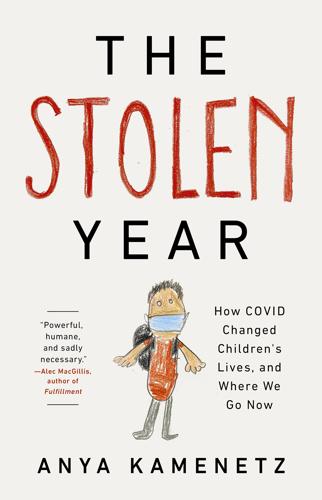
The Stolen Year
by
Anya Kamenetz
Published 23 Aug 2022
“We know this isn’t easy to hear,” Dara and her coauthor wrote. “This is yet another loss in the coronavirus era. As parents and doctors we understand this deeply.” About two out of three camps, particularly overnight camps, stayed closed for the summer of 2020. And those that opened had outbreaks, including one at a maskless camp in Georgia where more than four in ten staff and campers got the virus. Dara made the call in the name of equity and priorities. Testing capacity still wasn’t where it needed to be, and rather than use coronavirus tests for camps, she thought authorities should focus on schools. “We had to invest in schools if we ever wanted them open,” she told me.
…
“Sammy talks about his mortality—not all the time, but he does understand that his life is, in some way, precious,” his mother says. Dara had started to see her emergency room fill up with patients with cough, fever, and shortness of breath. She’d also seen the preliminary data from China, showing how easily the novel coronavirus spread within households. Dark-haired, short, and straight to the point, Dara chose other people’s worst-case scenarios to be her everyday routine. She doesn’t find it “helpful” to dwell on feelings. She’s a problem solver. She has the knowledge and research skills to fuel endless cycles of anxiety and planning, so she tries to avoid spiraling.
…
Closing school buildings en masse increases inequality and destroys individual hopes and dreams. And the impact can be measured for a generation. That is the disaster on top of the disaster. BACK TO THE BEGINNING March 13. It was the vertiginous beginning. The stock market crashed, the NBA canceled its season, Tom Hanks and his wife were diagnosed with coronavirus in Australia. When Dara, the ER doctor in New York City, was at the nation’s epicenter in mid-March, she got a COVID test and it came back positive. Telling her three kids, who were staying with her parents in New Jersey, was the hardest part. She didn’t want them to be afraid. She missed them so much already.

The Land of Hope and Fear: Israel's Battle for Its Inner Soul
by
Isabel Kershner
Published 16 May 2023
Increasingly split between those who prioritized its Jewish character and those who put more value on its democracy, the rival camps were no longer so much a matter of right and left as “Jews” and “Israelis.” The country had become a simmering cauldron of passions and ethnic divisions, all in an area about the size of New Jersey. The contradictions were on display when the coronavirus hit. Even then, the government response became mired in the country’s political and cultural wars as some ultra-Orthodox rabbis flouted lockdown rules and some Arab mayors were seen dancing at large illegal weddings. Israel was initially a global leader in vaccinating its population. Yet at times its COVID infection and mortality rates soared to among the highest per capita in the world
…
Yeruham was also undergoing a revival, with new neighborhoods being created. Considered a failed town in the early 2000s, its turnaround began after a retired general, Amram Mitzna, was appointed to serve as its acting mayor. Residents took back the reins after a few years, and by 2020 a dynamic new mayor, Tal Ohana, had won national accolades for her handling of a coronavirus outbreak in the town, after setting up her own municipal contact tracing system to cut the chain of infection. The majority of Israel’s Mizrahim no longer lived in the development towns, which now accounted for only about 10 percent of the country’s overall population. Nevertheless, these towns were still associated with the second, other Israel, including the poorer Russian-speaking and Ethiopian immigrants who mostly came in the 1990s, and they still occupied the lower rungs of Israel’s socioeconomic ladder, with the central government having invested little in improving their conditions.
…
Embodying a particular blend of religion, tradition, populism, and ethnic identity he sometimes employed unorthodox methods playing on a potent mix of faith, superstition, and resentment. In 2003, he promised voters that a ballot for Shas would guarantee them a place in heaven. A decade later, the Central Elections Commission fined Shas for violating campaign laws by distributing amulets and blessings and again in 2020 for handing out charms promising protection from the coronavirus. When Rabbi Yosef died in 2013, an estimated 700,000 people—almost one-tenth of the population of Israel—crowded the streets and rooftops of Jerusalem along the route of his funeral procession. The political wunderkind of Shas, Aryeh Deri, was born in 1959 to a wealthy, secular family in Meknes, Morocco, and came with them to Israel as a child.
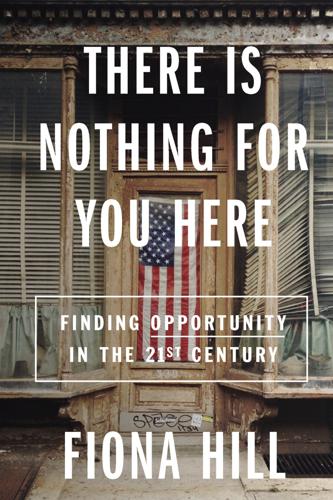
There Is Nothing for You Here: Finding Opportunity in the Twenty-First Century
by
Fiona Hill
Published 4 Oct 2021
ad hoc manner: Julian Borger, “ ‘Trump thought I was a secretary’: Fiona Hill on the president, Putin and populism,” Guardian, June 12, 2020, https://www.theguardian.com/us-news/2020/jun/12/fiona-hill-trump-putin-populism-interview. four hundred thousand Americans: “COVID-19 United States Cases by County,” Johns Hopkins University and Medicine Coronavirus Resource Center, accessed April 29, 2021, https://coronavirus.jhu.edu/us-map. close to two hundred thousand: “Coronavirus in the U.S.: Latest Map and Case Count,” New York Times, updated April 29, 2021, https://www.nytimes.com/interactive/2021/us/covid-cases.html. Urgent action: Joe Davidson, “GAO report slams Trump administration response to the coronavirus pandemic,” Washington Post, February 3, 2021, https://www.washingtonpost.com/politics/gao-trump-covid-biden/2021/02/02/38f0a0a8-65a4-11eb-bf81-c618c88ed605_story.html.
…
The United Kingdom was also swept up in the Black Lives Matter protests, as a younger generation of Brits contemplated the integral role the UK had played in the Atlantic slave trade and its own history of racism and heavy-handed policing. Again I was struck by how inadequate the government-level responses were to address this painful and complex issue, especially against the backdrop of the coronavirus, which hit Black and other minority communities hard in both countries. In Russia, Vladimir Putin—faced with his own domestic problems, including the rampaging coronavirus and a growing opposition movement—did not waste an opportunity to comment on the situation and to criticize the United States for mishandling race relations. He was clearly only too happy to be able to divert the Russian public’s attention away from deficiencies at home to debacles abroad.
…
It has to plan ahead, let seasoned experts take the lead, and pull people together around a clear set of goals and messages. Combating the coronavirus could not be done in an ad hoc manner, relying on a loose coalition of friends, family, and loyalists and pitting people against each other. It would take real leadership, and that was one thing that populists seemed wholly uninterested in providing. Against the backdrop of high political drama, the United States hit a grim set of milestones over the course of the year. By Inauguration Day in January 2021, four hundred thousand Americans had died of COVID-19. Almost twenty-five million people had contracted the coronavirus, and close to two hundred thousand more were infected daily.

The War Below: Lithium, Copper, and the Global Battle to Power Our Lives
by
Ernest Scheyder
Published 30 Jan 2024
That means that Tesla’s 55.4 kWh battery was built using roughly 6 kilograms of lithium.21 Using Ahmed’s estimates, that same battery’s cells also held about 42 kilograms of nickel, nearly 8 kilograms of cobalt, 8 kilograms of aluminum, nearly 55 kilograms of graphite, and about 17 kilograms of copper, with even more aluminum and copper elsewhere in the battery. The problem for the U.S. automakers, though, was that the United States was producing very few of these metals just as EVs and other green energy devices began to go mainstream, a concern of industry executives that has only grown since Tesla introduced the Roadster.22 Coronavirus put these fears into overdrive, reinforcing to consumers how much their everyday lives depended on products such as pharmaceuticals, clothing, and energy, which were linked to far-flung manufacturing plants, a point driven home in Pandemic, Inc.: Chasing the Capitalists and Thieves Who Got Rich While We Got Sick, J.
…
China threatened in 2019 to block its export to the United States, which has one rare earths mine but no processing facilities.32 No new mines for any of these metals have opened in the United States for decades, with the exception of a small Nevada copper facility in 2019.33 Yet multiple projects have been proposed that could produce enough copper to build more than 6 million EVs, enough lithium to build more than 2 million EVs, and enough nickel to build more than 60,000 EVs.34 In 2019—the last full year not affected by the coronavirus pandemic—nearly 250,000 EVs were sold in the United States.35 EV sales in the country were slightly above 400,000 in 202136 and 807,000 in 2022. That same year, total U.S. auto sales fell by 8 percent, hinting at Americans’ disillusionment with internal combustion engines.37 That rising EV demand will need to be met by a fresh supply of lithium and other metals.
…
While the Pentagon grew increasingly concerned at the dawn of the twenty-first century about China’s control of the industry that makes rare earths and other weapons-grade minerals, one of its divisions for years, under Democratic and Republican presidencies alike, sold domestic stockpiles of minerals considered strategic.54 Trump used the coronavirus pandemic to fast-track development of the Thacker Pass lithium project in Nevada, even while he killed the proposed Pebble Mine in Alaska, which would have been a large source of domestic copper.55, 56 Biden froze development of the controversial Resolution Copper mine in Arizona, even while his administration’s lawyers defended it in court.
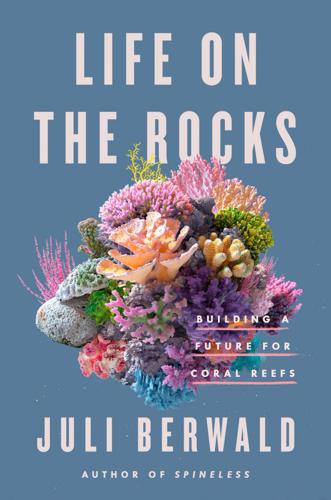
Life on the Rocks: Building a Future for Coral Reefs
by
Juli Berwald
Published 4 Apr 2022
* * * — When we arrived at the facility, Isy’s temperature was taken. It was the first time we were asked the battery of questions that would soon become so familiar: Had we had a cough in the last forty-eight hours? Did we have a fever? Had we been around anyone exposed to the coronavirus? Had we been knowingly exposed to coronavirus? No. No. No. No. We met various staff in a large room, couches situated well over six feet apart from each other. We retold psychological and medical histories. We signed paperwork. Finally, the nurse said, “It’s the moment that you didn’t want to come.” She moved toward the door.
…
Coral restorations will be the lifeboats sheltering the coral until we get control of our carbon emissions. In addition to the science and funding opportunities for coral, the Global Fund for Coral Reef announcement included a new, unavoidable theme: the coronavirus and its lessons. This was best articulated by the UK minister for Pacific and the Environment, who said, “This pandemic has exposed our vulnerability, economically of course, but it is also a wake-up call to profoundly reset our relationship with the natural world. Coronavirus is almost certainly the consequence of our abuse of nature. The scientific evidence is very clear that the current crisis will be dwarfed by others, by climate change and environmental degradation.
…
Lawrence, “Mycosporine-Like Amino Acids for Skin Photoprotection,” Current Medicinal Chemistry 25, no. 40 (December 2018): 5512–27, https://pubmed.ncbi.nlm.nih.gov/28554325/. GO TO NOTE REFERENCE IN TEXT CARES Act: Genevieve M. Razick, “It Is Not All about the Coronavirus: The CARES Act Brings Long-Awaited Over-the-Counter (OTC) Monograph Reform,” Arnall Golden Gregory LLP, April 10, 2020, https://www.agg.com/news-insights/publications/it-is-not-all-about-the-coronavirus-the-cares-act-brings-long-awaited-over-the-counter-otc-monograph-reform/. GO TO NOTE REFERENCE IN TEXT ban the sale of sunscreens: Shannon McMahon, “6 Destinations with Sunscreen Bans, and What You Need to Know,” Smarter Travel, August 20, 2019, https://www.smartertravel.com/sunscreen-ban-destinations/.
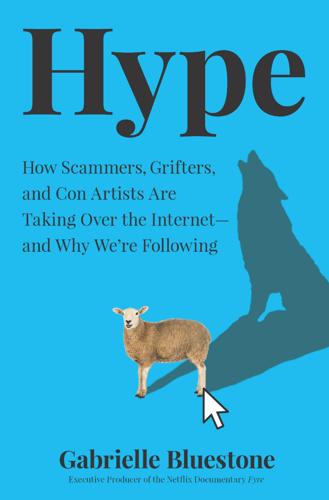
Hype: How Scammers, Grifters, and Con Artists Are Taking Over the Internet―and Why We're Following
by
Gabrielle Bluestone
Published 5 Apr 2021
It was never going to work.” The coronavirus ultimately gave Son a chance to claw back some of Neumann’s parachute. But it also revealed the weaknesses in his portfolio, which had become worth less than the cost of its investments in early May 2020. According to the New York Times, Son held an earnings call where he compared himself to Jesus and the Beatles and spoke of a brighter future by referencing a graphic of two unicorns falling into a hole in the ground. “Our unicorns are facing serious challenges against the background of the coronavirus outbreak, but I believe that some of them will fly over the Valley of Coronavirus and go beyond and fly high,” he said.
…
Julia Alexander, "Creators Finally Know How Much Money YouTube Makes, and They Want More of It," The Verge, February 4, 2020, https://www.theverge.com/2020/2/4/21121370/youtube-advertising-revenue-creators-demonetization-earnings-google. 14. Taylor Lorenz, "Welcome to the Era of Branded Engagements," The Atlantic, June 20, 2020, https://www.theatlantic.com/technology/archive/2019/06/was-viral-proposal-staged/592141/. 15. Koh Ewe, "Influencer Licks Toilet Seat for TikTok Fame in ‘Coronavirus Challenge,’" VICE News, March 18, 2020, https://www.vice.com/en/article/5dm43a/coronavirus-influencer-lick-toilet-seat-tiktok. 16. Dee LaVigne, "I Buy the Cheapest Thing on Hermes!!!," YouTube video, April 2, 2018, https://www.youtube.com/watch?v=Y1b7j4XnMfc. 17. Sophie Shohet | Fashion Beauty Lifestyle, "I Looked for the Cheapest Thing Cartier Sold... 6 *Insane* Luxury Items Under £495 | Selfridges AD," YouTube video, June 17, 2020, https://www.youtube.com/watch?
…
What was, in 2009, intentionally surreal, now seems almost banal, what with the former Goop employee who staged a sponsored multi-city engagement extravaganza for a live audience of about 5,000 emotionally invested strangers (and lost her day job not long after it went viral for all the wrong reasons),14 or the TikTok users who caught coronavirus after participating in a viral toilet-seat-licking challenge for clout.15 “I think now, with influencer marketing, what was covert has now become overt,” Borte said. For one thing, Audi’s costarring role opposite Duchovny in The Joneses turned out to be a precipitating event in the car company’s rather clichéd move into the arena of life imitating art.
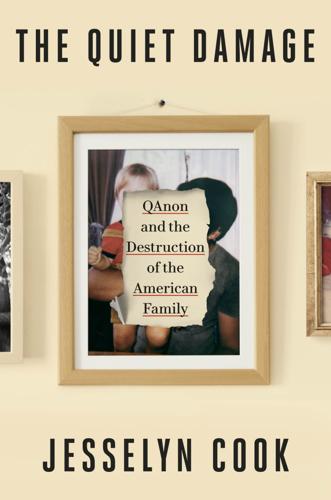
The Quiet Damage: QAnon and the Destruction of the American Family
by
Jesselyn Cook
Published 22 Jul 2024
GO TO NOTE REFERENCE IN TEXT shifting public health advice: Quinnipiac University Poll, “Fauci, Governors Get Highest Marks for Response to Coronavirus, Quinnipiac University National Poll Finds; Majority Say Trump’s Response Not Aggressive Enough,” April 8, 2020, https://poll.qu.edu/Poll-Release?releaseid=3753. GO TO NOTE REFERENCE IN TEXT polls found trust in him souring: L. Lopes et al., “KFF Health Tracking Poll—September 2020: Top Issues in 2020 Election, the Role of Misinformation, and Views on a Potential Coronavirus Vaccine,” KFF, September 10, 2020, https://www.kff.org/coronavirus-covid-19/report/kff-health-tracking-poll-september-2020/. GO TO NOTE REFERENCE IN TEXT gave rise to the term QAmom: M.
…
,” Harvard Kennedy School Misinformation Review 1, no. 3 (2020), https://doi.org/10.37016/mr-2020-015. GO TO NOTE REFERENCE IN TEXT Cornell University study: S. Evanega et al., “Coronavirus Misinformation: Quantifying Sources and Themes in the COVID-19 ‘Infodemic,’ ” Cornell Alliance for Science, September 2020, https://allianceforscience.org/wp-content/uploads/2020/09/Evanega-et-al-Coronavirus-misinformationFINAL.pdf. GO TO NOTE REFERENCE IN TEXT “time to #FireFauci”: T. Nguyen, “How a Pair of Anti-vaccine Activists Sparked a #FireFauci Furor,” Politico, April 13, 2020, https://www.politico.com/news/2020/04/13/anti-vaccine-activists-fire-fauci-furor-185001.
…
Dearen, “GOP Fronts ‘Pro-Trump’ Doctors to Prescribe Rapid Reopening,” AP News, May 20, 2020, https://apnews.com/article/health-us-news-ap-top-news-politics-virus-outbreak-4ee1a3a8d631b454f645b2a8d9597de7. GO TO NOTE REFERENCE IN TEXT hydroxychloroquine, an antimalarial drug: N. Robins-Early, “The Hucksters Pushing a Coronavirus ‘Cure’ with the Help of Fox News and Elon Musk,” HuffPost, March 20, 2020, https://www.huffpost.com/entry/chloroquine-coronavirus-rigano-todaro-tucker-carlson_n_5e74da41c5b6eab77946c3b3?tnv. GO TO NOTE REFERENCE IN TEXT supremely bizarre claims: W. Sommer, “Trump’s New COVID Doctor Says Sex with Demons Makes You Sick,” Daily Beast, July 28, 2020, sec.

Binge Times: Inside Hollywood's Furious Billion-Dollar Battle to Take Down Netflix
by
Dade Hayes
and
Dawn Chmielewski
Published 18 Apr 2022
Here’s Why He’s Worried,” New York Times, December 30, 2019; Tim Cook remarks, Apple Keynote Event, March 25, 2019; Mark Lawson, “Apple TV+: Less a Rival to Netflix, More a Smug Religious Cult,” Guardian, March 25, 2019; Josef Adalian, “We Learned a Lot About Apple TV+ Today, but Not How Much It’ll Cost,” New York, March 25, 2019; Elahe Izadi, “Bono Is Sorry U2’s Album Automatically Showed Up on Your iTunes,” Washington Post, October 15, 2014. CHAPTER 7: COOKING UP “QUICK BITES” Jeffrey Katzenberg interview with Dawn Chmielewski, “Coronavirus Lockdown Will Boost Meg Whitman’s and Jeff Katzenberg’s New Mobile Streaming Service Quibi,” Forbes, April 3, 2020; Katzenberg interview with Andrew Wallenstein, “Inside Jeffrey Katzenberg’s Plan to Revolutionize Media on Mobile Screens,” Variety, July 19, 2017; Dawn Chmielewski interview with Meg Whitman, “Coronavirus Lockdown Will Boost Meg Whitman’s and Jeff Katzenberg’s New Mobile Streaming Service Quibi”; Meg Whitman with Joan O’C. Hamilton, The Power of Many (New York: Crown Publishers, 2010), 22; Jason Blum interview with authors, October 16, 2020; Cody Heller interview with authors, July 8, 2020; Tegan Jones, “Dummy Is the Hilariously Filthy and Raw Show We Need Right Now,” Gizmodo, April 21, 2020; Jeffrey Katzenberg interview with Bill Snyder, “Jeffrey Katzenberg: How Failure Makes a Better Leader,” Stanford Business, March 13, 2018; Benjamin Mullin, “Jeffrey Katzenberg and Meg Whitman Struggle with Their Startup—and Each Other,” Wall Street Journal, June 14, 2020; Jeffrey Katzenberg and Meg Whitman keynote, Consumer Electronics Show, January 8, 2020; Dawn Chmielewski interview with Zach Wechter, “Meg Whitman, Jeffrey Katzenberg Raise $400 Million Second Funding Round as Quibi Prepares to Launch,” Forbes, January 8, 2020; Van Toffler interview with the authors, March 12, 2020.
…
Michael Eisner, former chairman and CEO Bob Iger, former CEO and executive chairman Bob Chapek, CEO Kareem Daniel, chairman, media and entertainment distribution Tom Staggs, former chief operating officer Kevin Mayer, former chairman, direct-to-consumer and international Jimmy Pitaro, chairman, ESPN and sports content John Skipper, former president, ESPN Ricky Strauss, former president, content and marketing for Disney+ Albert Cheng, former chief product officer, digital media, Disney ABC Television Group Anne Sweeney, former cochair, Disney Media Networks; former president, Disney ABC Television Group Preface Variations on a single question pinged across social media, bobbing in a digital sea just as messages in physical bottles once were set adrift. What are we supposed to do now?! Society and popular culture were imitating a scene from the film Inception, folding inward on themselves, piece by piece, as fear of the spreading coronavirus reached its peak. Schools, courthouses, museums, sports venues, movie theaters, concert halls, restaurants, and bars all closed their doors. Travel bans and border shutdowns took effect. “Social distancing” prevailed, with hugs and high fives shunned and everyone instructed to stand six feet apart.
…
Its fundamental consumer premise—“quick-bite,” short-form video on the go—suddenly seemed less viable with shelter-in-place orders in effect, though TikTok’s weedlike surge proved that people stuck at home still want to watch videos on their phones. Traditional media companies faced a more vexing conundrum. Their streaming services would still require intensive capital investments, in terms of both hiring and digital infrastructure, as well as a willingness to forgo millions in licensing revenue. Now, with the coronavirus established as a long-term challenge, they would have to remain committed to disrupting themselves despite the devastating loss of revenue from movie box offices, TV advertising, sports, and theme parks. Would streaming be their route to redemption or just a mirage given the high bar set by Netflix and Amazon?
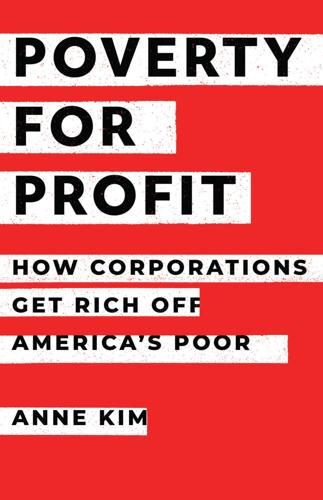
Poverty for Profit
by
Anne Kim
See also dialysis industry; Medicaid dentistry; Medicaid managed-care industry Health Net of California, 129 Health People 2030 project, 210 Health Policy Institute (HPI), American Dental Association’s, 108, 109 Health Policy Institute at Georgetown University, 121–22, 124 Heritage Foundation, 39 Hevesi, Alan, 55 Hewitt, John, 14–16, 243–44n39 HFS Inc., 15 Hispanic Americans: children, 5, 107, 127; dental health disparities, 107; food deserts and limited supermarket access, 210; health disparities, 107, 127, 139, 210; infant care under Medicaid managed care, 127; kidney-failure patients, 139; poverty rates, 5; pretrial detention statistics, 161; youth unemployment during coronavirus pandemic, 82 HMOs (health maintenance organizations), 123 home detention companies, 153, 163–71; and the coronavirus pandemic, 165–66; defendants’ fees for, 165, 166–67, 185; discretion to set conditions of house arrest, 167–69; electronic monitoring (“e-carceration”), 163, 165–70, 175–76, 177, 185; and immigrant detainees, 177; “pre-approval” letters for bail review hearings, 164–65, 170–71; and “24/7 lockdown” (surveillance), 168 Home Dialyzors United, 142 homeless individuals: affordable housing shortages, 191, 192; and Job Corps, 85, 87–88, 89; shelters, 4; and tax prep firms, 21 home mortgage interest deduction, 13, 242n21 Homestead Job Corps Center (Florida), 90–91 HomeWAV, 179 H1-B Grader, 112–13 H1-B (or O-1) visas, 112–13 Hospital Corporation of America, 173 House Ways and Means Committee, 140 housing.
…
Johnson declared “unconditional war on poverty,” poverty remains stubbornly persistent, to the frustration of both policymakers and the public.20 At the end of 2022, the official national poverty rate was 11.5 percent—half of what it was in 1959 but far from LBJ’s goal “not only to relieve the symptom of poverty, but to cure it and, above all, to prevent it,” especially among the Americans most likely to be poor.21 Despite nearly $2 trillion in federal aid deployed during the coronavirus pandemic, roughly one in four households headed by single women (24.7 percent) lived in poverty in 2022.22 The overall Black poverty rate was more than half again that of whites (17.1 percent versus 10.5 percent), while Hispanic poverty stood at 16.9 percent.23 Children under eighteen were also half again as likely to be in poverty compared to seniors over age sixty-five (15.0 percent versus 10.2 percent).
…
Cash assistance, once a pillar of the safety net, now reaches just a fraction of households in poverty and is meager gruel to boot. Caseloads plummeted in the aftermath of welfare reform, from 12.6 million recipients in 1996 to 4.3 million by 2001.118 In 2022, TANF served just 1.9 million Americans.119 Despite the unparalleled hardship brought on by the coronavirus pandemic—which should have swelled the rolls as unemployment surged—participation fell to historic lows in 2020, according to the Center on Budget and Policy Priorities (CBPP). The program reached just 21 percent of families living in poverty in 2020, compared to 68 percent in 1996.120 In fourteen states, says the CBPP, TANF reached less than 10 percent of impoverished households.

Survival of the Richest: Escape Fantasies of the Tech Billionaires
by
Douglas Rushkoff
Published 7 Sep 2022
(New York: Viking Penguin, 1987), 251. 38 “we’re way closer … people’s brains” : Matthew Gault, “Billionaires See VR as a Way to Avoid Radical Social Change,” Wired , February 15, 2021, https:// www .wired .com /story /billionaires -use -vr -avoid -social -change /. 38 “It is not possible … you wanted” : Gault, “Billionaires See VR as a Way to Avoid Radical Social Change.” 39 “Yes, we are in a pandemic” : David Zweig, “$25,000 Pod Schools: How Well-to-Do Children Will Weather the Pandemic,” New York Times , July 30, 2020, https:// www .nytimes .com /2020 /07 /30 /nyregion /pod -schools -hastings -on -hudson .html. 41 legions of Amazon workers : Joey Hadden, “Amazon Delivery Drivers Share What It’s Like to Be on the Front Lines of the Coronavirus Pandemic, Including Not Having Time to Wash Their Hands and Uncleaned Vans,” Business Insider , April 2, 2020, https:// www .businessinsider .com /why -amazon -delivery -workers -feel -exposed -and -vulnerable -to -coronavirus -2020 -3. 41 Amazon avoids taxes : Matthew Gardner, “Amazon Has Record-Breaking Profits in 2020, Avoids $2.3 Billion in Federal Income Taxes,” Institute on Taxation and Economic Policy, February 3, 2021, https:// itep .org /amazon -has -record -breaking -profits -in -2020 -avoids -2 -3 -billion -in -federal -income -taxes /. 41 anti-competitive practices : Mark Chandler, “Amazon Accused of Anti-Competitive Practices by US Subcommittee,” Bookseller , October 8, 2020, https:// www .thebookseller .com /news /amazon -accused -anti -competitive -practices -us -subcommittee -1222115. 41 abuses labor : Jodi Kantor, Karen Weise, and Grace Ashford, “Power and Peril: 5 Takeaways on Amazon’s Employment Machine,” New York Times , June 15, 2021, https:// www .nytimes .com /2021 /06 /15 /us /politics /amazon -warehouse -workers .html; Casey Newton, “Amazon’s Poor Treatment of Workers Is Catching up to It during the Coronavirus Crisis,” Verge , April 1, 2020, https:// www .theverge .com /interface /2020 /4 /1 /21201162 /amazon -delivery -delays -coronavirus -worker -strikes. 42 more people opened online trading : Annie Massa, “Pandemic-Fueled Day Trading Is Overwhelming Online Brokers—and the Traders Are Fuming,” Fortune , December 9, 2020, https:// fortune .com /2020 /12 /08 /day -trading -online -brokers -tech -failure -crashes -outages /. 42 Shares of Zoom went up : Shanhong Liu, “Price of Zoom shares traded on Nasdaq Stock Market in 2020 and 2021,” Statista , August 9, 2021, https:// www .statista .com /statistics /1106104 /stock -price -zoom /. 42 Jeff Bezos’s fortune rose : Chase Peterson-Withorn, “How Much Money America’s Billionaires Have Made During the Covid-19 Pandemic,” Forbes , April 30, 2021, https:// www .forbes .com /sites /chasewithorn /2021 /04 /30 /american -billionaires -have -gotten -12 -trillion -richer -during -the -pandemic. 42 five biggest U.S. tech companies : The staff of the Wall Street Journal , “How Big Tech Got Even Bigger,” Wall Street Journal , February 6, 2021, https:// www .wsj .com /articles /how -big -tech -got -even -bigger -11612587632. 42 Netflix’s share price : Jonathan Ponciano, “5 Big Numbers That Show Netflix’s Massive Growth Continues during the Coronavirus Pandemic,” Forbes , October 20, 2020, https:// www .forbes .com /sites /jonathanponciano /2020 /10 /19 /netflix -earnings -5 -numbers -growth -continues -during -the -coronavirus -pandemic /. 43 “Many creatives, startups, and techies” : Jen Murphy, “Remote Workers Flee to $70,000-a-Month Resorts While Awaiting Vaccines,” Bloomberg , February 15, 2021, https:// www .bloomberg .com /news /articles /2021 -02 -15 /remote -workers -flee -to -luxury -beach -resorts -while -awaiting -vaccines. 43 “It’s been great here” : Julie Satow, “Turning a Second Home into a Primary Home,” New York Times , July 24, 2020, https:// www .nytimes .com /2020 /07 /24 /realestate /coronavirus -second -homes - .html. 43 Each 1 percent increase : Mary Van Beusekom, “Race, Income Inequality Fuel COVID Disparities in US Counties,” Center for Infectious Disease Research and Policy, University of Minnesota, January 20, 2021, https:// www .cidrap .umn .edu /news -perspective /2021 /01 /race -income -inequality -fuel -covid -disparities -us -counties; Tim F.
…
(New York: Viking Penguin, 1987), 251. 38 “we’re way closer … people’s brains” : Matthew Gault, “Billionaires See VR as a Way to Avoid Radical Social Change,” Wired , February 15, 2021, https:// www .wired .com /story /billionaires -use -vr -avoid -social -change /. 38 “It is not possible … you wanted” : Gault, “Billionaires See VR as a Way to Avoid Radical Social Change.” 39 “Yes, we are in a pandemic” : David Zweig, “$25,000 Pod Schools: How Well-to-Do Children Will Weather the Pandemic,” New York Times , July 30, 2020, https:// www .nytimes .com /2020 /07 /30 /nyregion /pod -schools -hastings -on -hudson .html. 41 legions of Amazon workers : Joey Hadden, “Amazon Delivery Drivers Share What It’s Like to Be on the Front Lines of the Coronavirus Pandemic, Including Not Having Time to Wash Their Hands and Uncleaned Vans,” Business Insider , April 2, 2020, https:// www .businessinsider .com /why -amazon -delivery -workers -feel -exposed -and -vulnerable -to -coronavirus -2020 -3. 41 Amazon avoids taxes : Matthew Gardner, “Amazon Has Record-Breaking Profits in 2020, Avoids $2.3 Billion in Federal Income Taxes,” Institute on Taxation and Economic Policy, February 3, 2021, https:// itep .org /amazon -has -record -breaking -profits -in -2020 -avoids -2 -3 -billion -in -federal -income -taxes /. 41 anti-competitive practices : Mark Chandler, “Amazon Accused of Anti-Competitive Practices by US Subcommittee,” Bookseller , October 8, 2020, https:// www .thebookseller .com /news /amazon -accused -anti -competitive -practices -us -subcommittee -1222115. 41 abuses labor : Jodi Kantor, Karen Weise, and Grace Ashford, “Power and Peril: 5 Takeaways on Amazon’s Employment Machine,” New York Times , June 15, 2021, https:// www .nytimes .com /2021 /06 /15 /us /politics /amazon -warehouse -workers .html; Casey Newton, “Amazon’s Poor Treatment of Workers Is Catching up to It during the Coronavirus Crisis,” Verge , April 1, 2020, https:// www .theverge .com /interface /2020 /4 /1 /21201162 /amazon -delivery -delays -coronavirus -worker -strikes. 42 more people opened online trading : Annie Massa, “Pandemic-Fueled Day Trading Is Overwhelming Online Brokers—and the Traders Are Fuming,” Fortune , December 9, 2020, https:// fortune .com /2020 /12 /08 /day -trading -online -brokers -tech -failure -crashes -outages /. 42 Shares of Zoom went up : Shanhong Liu, “Price of Zoom shares traded on Nasdaq Stock Market in 2020 and 2021,” Statista , August 9, 2021, https:// www .statista .com /statistics /1106104 /stock -price -zoom /. 42 Jeff Bezos’s fortune rose : Chase Peterson-Withorn, “How Much Money America’s Billionaires Have Made During the Covid-19 Pandemic,” Forbes , April 30, 2021, https:// www .forbes .com /sites /chasewithorn /2021 /04 /30 /american -billionaires -have -gotten -12 -trillion -richer -during -the -pandemic. 42 five biggest U.S. tech companies : The staff of the Wall Street Journal , “How Big Tech Got Even Bigger,” Wall Street Journal , February 6, 2021, https:// www .wsj .com /articles /how -big -tech -got -even -bigger -11612587632. 42 Netflix’s share price : Jonathan Ponciano, “5 Big Numbers That Show Netflix’s Massive Growth Continues during the Coronavirus Pandemic,” Forbes , October 20, 2020, https:// www .forbes .com /sites /jonathanponciano /2020 /10 /19 /netflix -earnings -5 -numbers -growth -continues -during -the -coronavirus -pandemic /. 43 “Many creatives, startups, and techies” : Jen Murphy, “Remote Workers Flee to $70,000-a-Month Resorts While Awaiting Vaccines,” Bloomberg , February 15, 2021, https:// www .bloomberg .com /news /articles /2021 -02 -15 /remote -workers -flee -to -luxury -beach -resorts -while -awaiting -vaccines. 43 “It’s been great here” : Julie Satow, “Turning a Second Home into a Primary Home,” New York Times , July 24, 2020, https:// www .nytimes .com /2020 /07 /24 /realestate /coronavirus -second -homes - .html. 43 Each 1 percent increase : Mary Van Beusekom, “Race, Income Inequality Fuel COVID Disparities in US Counties,” Center for Infectious Disease Research and Policy, University of Minnesota, January 20, 2021, https:// www .cidrap .umn .edu /news -perspective /2021 /01 /race -income -inequality -fuel -covid -disparities -us -counties; Tim F.
…
(New York: Viking Penguin, 1987), 251. 38 “we’re way closer … people’s brains” : Matthew Gault, “Billionaires See VR as a Way to Avoid Radical Social Change,” Wired , February 15, 2021, https:// www .wired .com /story /billionaires -use -vr -avoid -social -change /. 38 “It is not possible … you wanted” : Gault, “Billionaires See VR as a Way to Avoid Radical Social Change.” 39 “Yes, we are in a pandemic” : David Zweig, “$25,000 Pod Schools: How Well-to-Do Children Will Weather the Pandemic,” New York Times , July 30, 2020, https:// www .nytimes .com /2020 /07 /30 /nyregion /pod -schools -hastings -on -hudson .html. 41 legions of Amazon workers : Joey Hadden, “Amazon Delivery Drivers Share What It’s Like to Be on the Front Lines of the Coronavirus Pandemic, Including Not Having Time to Wash Their Hands and Uncleaned Vans,” Business Insider , April 2, 2020, https:// www .businessinsider .com /why -amazon -delivery -workers -feel -exposed -and -vulnerable -to -coronavirus -2020 -3. 41 Amazon avoids taxes : Matthew Gardner, “Amazon Has Record-Breaking Profits in 2020, Avoids $2.3 Billion in Federal Income Taxes,” Institute on Taxation and Economic Policy, February 3, 2021, https:// itep .org /amazon -has -record -breaking -profits -in -2020 -avoids -2 -3 -billion -in -federal -income -taxes /. 41 anti-competitive practices : Mark Chandler, “Amazon Accused of Anti-Competitive Practices by US Subcommittee,” Bookseller , October 8, 2020, https:// www .thebookseller .com /news /amazon -accused -anti -competitive -practices -us -subcommittee -1222115. 41 abuses labor : Jodi Kantor, Karen Weise, and Grace Ashford, “Power and Peril: 5 Takeaways on Amazon’s Employment Machine,” New York Times , June 15, 2021, https:// www .nytimes .com /2021 /06 /15 /us /politics /amazon -warehouse -workers .html; Casey Newton, “Amazon’s Poor Treatment of Workers Is Catching up to It during the Coronavirus Crisis,” Verge , April 1, 2020, https:// www .theverge .com /interface /2020 /4 /1 /21201162 /amazon -delivery -delays -coronavirus -worker -strikes. 42 more people opened online trading : Annie Massa, “Pandemic-Fueled Day Trading Is Overwhelming Online Brokers—and the Traders Are Fuming,” Fortune , December 9, 2020, https:// fortune .com /2020 /12 /08 /day -trading -online -brokers -tech -failure -crashes -outages /. 42 Shares of Zoom went up : Shanhong Liu, “Price of Zoom shares traded on Nasdaq Stock Market in 2020 and 2021,” Statista , August 9, 2021, https:// www .statista .com /statistics /1106104 /stock -price -zoom /. 42 Jeff Bezos’s fortune rose : Chase Peterson-Withorn, “How Much Money America’s Billionaires Have Made During the Covid-19 Pandemic,” Forbes , April 30, 2021, https:// www .forbes .com /sites /chasewithorn /2021 /04 /30 /american -billionaires -have -gotten -12 -trillion -richer -during -the -pandemic. 42 five biggest U.S. tech companies : The staff of the Wall Street Journal , “How Big Tech Got Even Bigger,” Wall Street Journal , February 6, 2021, https:// www .wsj .com /articles /how -big -tech -got -even -bigger -11612587632. 42 Netflix’s share price : Jonathan Ponciano, “5 Big Numbers That Show Netflix’s Massive Growth Continues during the Coronavirus Pandemic,” Forbes , October 20, 2020, https:// www .forbes .com /sites /jonathanponciano /2020 /10 /19 /netflix -earnings -5 -numbers -growth -continues -during -the -coronavirus -pandemic /. 43 “Many creatives, startups, and techies” : Jen Murphy, “Remote Workers Flee to $70,000-a-Month Resorts While Awaiting Vaccines,” Bloomberg , February 15, 2021, https:// www .bloomberg .com /news /articles /2021 -02 -15 /remote -workers -flee -to -luxury -beach -resorts -while -awaiting -vaccines. 43 “It’s been great here” : Julie Satow, “Turning a Second Home into a Primary Home,” New York Times , July 24, 2020, https:// www .nytimes .com /2020 /07 /24 /realestate /coronavirus -second -homes - .html. 43 Each 1 percent increase : Mary Van Beusekom, “Race, Income Inequality Fuel COVID Disparities in US Counties,” Center for Infectious Disease Research and Policy, University of Minnesota, January 20, 2021, https:// www .cidrap .umn .edu /news -perspective /2021 /01 /race -income -inequality -fuel -covid -disparities -us -counties; Tim F.
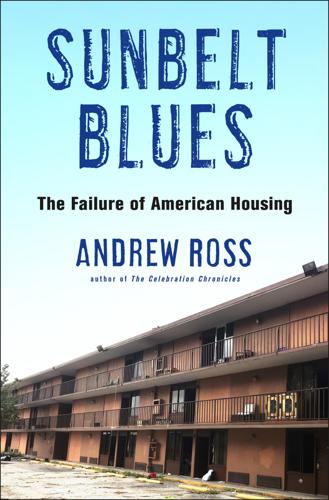
Sunbelt Blues: The Failure of American Housing
by
Andrew Ross
Published 25 Oct 2021
Richard Bilbao, “Breaking: Disney to Furlough Workers at Walt Disney World, Disneyland Resort,” Orlando Business Journal, April 2, 2020, https://www.bizjournals.com/orlando/news/2020/04/02/breaking-disney-to-furlough-workers-at-walt-disney.html. 25. Caroline Glenn, “Unemployment in Metro Orlando Jumps to 22.6% in May,” Orlando Sentinel, June 19, 2020, https://www.orlandosentinel.com/coronavirus/jobs-economy/os-bz-coronavirus-florida-orlando-may-unemployment-20200619-2eseklimmjatrcjtiflli34yl4-story.html. 26. Patricia Mazzei and Sabrina Tavernise, “‘Florida Is a Terrible State to Be an Unemployed Person,’” New York Times, April 23, 2020, https://www.nytimes.com/2020/04/23/us/florida-coronavirus-unemployment.html; and Jim De Fede, “Gov. Ron DeSantis Acknowledges State’s Unemployment System Was Built with ‘Pointless Roadblocks’ to Pay Out ‘Least Number of Claims,’” CBS Miami, August 4, 2020, https://miami.cbslocal.com/2020/08/04/exclusive-governor-ron-desantis-acknowledges-florida-unemployment-system-designed-frustrate/. 27.
…
She hopes it will be saved because the ground is prone to flooding, and so any developer would be required to “fill and build”—a costly prospect. “If you dig a firepit,” Louise points out, “you’ll hit water pretty quickly here.” By the end of the pandemic summer of 2020, the camps were filling out again with returnees, new arrivals from a wave of motel evictions, and a sprinkling of COVID refugees. During the coronavirus crisis, concentrations of unhoused people in cities around the country were seen as public health threats, and some widely ridiculed alternatives to shelters were introduced by authorities. As most hotel rooms nearby lay empty, San Francisco opened a “safe sleeping village” for socially distanced homeless in the Civic Center Plaza, just yards from City Hall.
…
Almost every LHT business in the region is parasitical on the Mouse, vying for a bite of the spending budget that visitors bring with them. Many other sectors—retail, construction, professional and business services, and the convention business—are indirectly dependent on it. A single-industry economy is highly vulnerable to a downturn. And this is exactly what happened when the coronavirus struck, forcing families to sacrifice Florida vacations and decimating the industry workforce. Disney’s career in Central Florida is a well-known case study in how a private corporation managed to seize for itself expansive governmental powers. After buying up forty-three square miles of land through multiple shell companies, Disney petitioned Florida’s legislature for the creation of a “special district,” a governmental entity that can issue its own tax-exempt bonds instead of drawing on the local county budget.
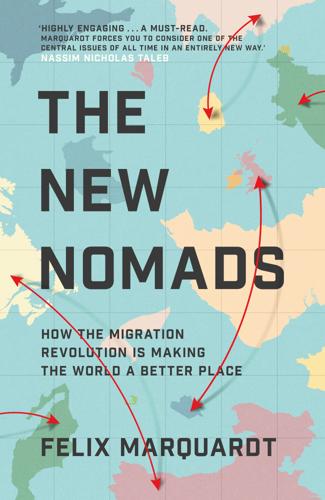
The New Nomads: How the Migration Revolution Is Making the World a Better Place
by
Felix Marquardt
Published 7 Jul 2021
We would not have developed farms, cities, nation states, multinational companies, without this ability to define and maintain a group. Self-realisation, the scientific revolution and indeed modernity are all premised on it. But it has served its purpose and now become a problem. The time has come to leave it behind. How? Just as it has brought the world to a halt, the coronavirus pandemic is an opportunity to pause and take stock of the complexities of our present and the causal link between phenomena – specifically economic growth, energy consumption, (im)mobility, (in)equality, environmental degradation, the rise of religious extremism, nationalism and populism. And to recognise that the prosperity and open-minded, pro-immigration stance of the relatively mobile few is predicated on the relative lack of prosperity and mobility of the many,8 rather than on moral virtue.
…
The result was that a record low of 6,300 individuals stayed in the country after their studies. Boris Johnson’s administration reversed the policy in 2019, and so we may see greater numbers of young people staying in Britain after their studies. However, the first intake that this will affect is the coronavirus intake. It is a cliché, but the youth are the future. Any sane country should be at pains to attract young, dynamic people – not create a ‘hostile environment’ that pushes them away. Both the Barrez-vous! movement and the Youthonomics Global Index were driven in part by good intentions: to help young people to flourish in what seemed like a world where the odds were stacking up against them.
…
It should also be remembered that the majority of terrorist attacks conducted in the name of an insane interpretation of Islam in Europe have been perpetrated by those radicalised in Europe, not foreigners coming to Europe. What holds for refugees holds for them, too – societies without alienated, desperate people do not produce terrorists. The same can be said of health concerns, which are largely overblown to start with. TB and coronavirus are a danger if they go undetected. Having a system in place that allows people to seek asylum easily means that illnesses can be screened for. The real danger occurs when, due to the difficulty posed by crossing borders, refugees sneak in with health problems, work in undocumented positions and are, by and large, invisible to health professionals and epidemiologists.
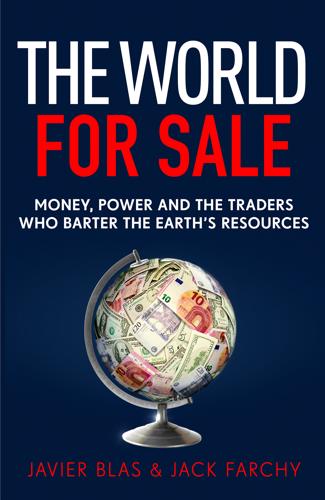
The World for Sale: Money, Power and the Traders Who Barter the Earth’s Resources
by
Javier Blas
and
Jack Farchy
Published 25 Feb 2021
For the 2019 sanctions, see: ‘The United States to Impose Sanctions On Chinese Firm Zhuhai Zhenrong Company Limited for Purchasing Oil From Iran’, US State Department, 22 July 2019, accessed: https://www.state.gov/the-united-states-to-impose-sanctions-on-chinese-firm-zhuhai-zhenrong-company-limited-for-purchasing-oil-from-iran/ . 45 Ian Taylor, interview with the authors, London, February 2019. 46 This account of Glencore’s trading in 2020 is based on an interview with a senior executive, who declined to be named, as well as the company’s statements, and publicly-available information on ship movements. 47 ‘Texas Regulators Weigh Historic Oil Cuts as Coronavirus Pandemic Saps Demand’, Wall Street Journal , 14 April 2020, accessed: https://www.wsj.com/articles/texas-regulators-weigh-historic-oil-cuts-after-coronavirus-11586886293 . 48 Steve Kalmin, Glencore’s chief financial officer, told journalists in August 2020 that the return on equity on the company’s contango deals was as much as 100% ‘in some cases’. 4 9 According to the estimates of several leading oil traders.
…
What’s more, much of the time, commodity markets are either over- or under-supplied. The traders, ever nimble and flexible, are always ready to take a commodity off a producer’s hands as long as the price is right, or to supply it if a consumer is willing to pay. For an example of how that works in practice, look no further than the oil price crash of 2020. As the coronavirus pandemic spread across the world, grounding flights and forcing people to stay at home, the price of oil spiralled lower and lower, briefly trading below zero for the first time ever. And so the traders stepped in, buying oil at dirt-cheap prices, and then storing it until demand recovered. Some even bought a few barrels at negative prices, meaning that producers had to pay them to take it off their hands.
…
As commodity demand tumbled in the wake of the financial crisis, oil traders like Vitol made a killing buying up unwanted oil and storing it – doing a version of the deals that Andy Hall had done nearly twenty years earlier. It was a trade they would repeat to great profit every time the market was oversupplied – not least in 2020, when the coronavirus pandemic struck. Aluminium traders were also cashing in enormous profits by funnelling surplus metal into warehouses. ‘We milked the cow every day,’ recalls one top aluminium trader of his profits in that period. 20 The commodity traders were enjoying a bounty, but for a world that was suffering from hunger and recession, their success was an affront.
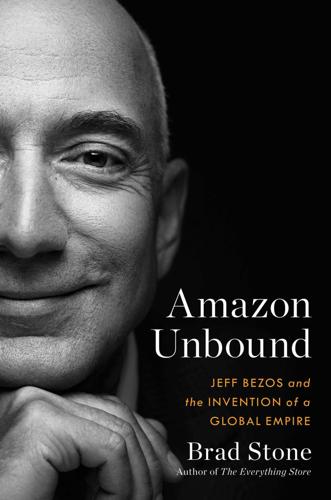
Amazon Unbound: Jeff Bezos and the Invention of a Global Empire
by
Brad Stone
Published 10 May 2021
at least five Amazon workers in Italy and Spain: Matt Day, Daniele Lepido, Helen Fouquet, and Macarena Munoz Montijano, “Coronavirus Strikes at Amazon’s Operational Heart: Its Delivery Machine,” Bloomberg, March 16, 2020, https://www.bloomberg.com/news/articles/2020-03-16/coronavirus-strikes-at-amazon-s-operational-heart-its-delivery-machine?sref=dJuchiL5 (January 26, 2021). French FCs would stay closed for a month: Matthew Dalton, “Amazon Shuts French Warehouses After Court Orders Coronavirus Restrictions,” Wall Street Journal, April 16, 2020, https://www.wsj.com/articles/amazon-shuts-warehouses-in-france-11587036614 (January 26, 2021); Mathieu Rosemain, “Amazon’s French Warehouses to Reopen with 30% Staff—Unions,” Reuters, May 18, 2020, https://www.reuters.com/article/health-coronavirus-amazon-france/amazons-french-warehouses-to-reopen-with-30-staff-unions-idINKBN22U27G?
…
Jumpp gave an interview to CBS’s 60 Minutes: “Amazon worker: At least 600 Amazon employees stricken by coronavirus,” CBS, May 10, 2020, https://www.cbsnews.com/news/amazon-workers-with-coronavirus-60-minutes-2020-05-10/ (February 16, 2021). around twenty thousand: Amazon’s “Update on COVID-19 Testing.” Amazon also dismissed Katie Doan, a Whole Foods employee: Lauren Kaori Gurley, “Whole Foods Just Fired an Employee Who Kept Track of Corona Virus Cases,” Motherboard, March 29, 2020, https://www.vice.com/en/article/y3zd9g/whole-foods-just-fired-an-employee-who-kept-track-of-coronavirus-cases (February 28, 2021). Bashir Mohamed, a Somali FC worker: Sarah Ashley O’Brien, “Fear and a firing inside an Amazon warehouse,” CNN, April 22, 2020, https://www.cnn.com/2020/04/22/tech/amazon-warehouse-bashir-mohamed/index.html (February 28, 2021).
…
Amazon stopped all nonessential employee travel: Jeffrey Dastin, “Amazon Defers ‘Non-essential’ Moves Even in U.S. as Corporate Travel Bans Spread,” Reuters, February 28, 2020, https://www.reuters.com/article/us-china-health-amazon-com/amazon-defers-non-essential-moves-even-in-u-s-as-corporate-travel-bans-spread-idUSKCN20M2TZ (January 26, 2021). work from home for two weeks: Taylor Soper, “Amazon Changes Coronavirus Plan, Tells Seattle Area Employees to Work from Home until March 31,” GeekWire, March 4, 2020, https://www.geekwire.com/2020/amazon-changes-coronavirus-plan-tells-seattle-area-employees-work-home-march-31/ (January 26, 2021). for the rest of the year: Monica Nickelsburg, “Amazon Extends Work from Home Policy to January 2021, Opens Offices with New Safety Measures,” GeekWire, July 15, 2020, https://www.geekwire.com/2020/amazon-extends-work-home-policy-january-2021-opens-offices-new-safety-measures/ (January 26, 2021).

The Perfect Police State: An Undercover Odyssey Into China's Terrifying Surveillance Dystopia of the Future
by
Geoffrey Cain
Published 28 Jun 2021
Jeff Kao, Raymond Zhong, Paul Mozur and Aaron Krolik, “Leaked Documents Show How China’s Army of Paid Internet Trolls Helped Censor the Coronavirus,” ProPublica and New York Times, December 19, 2020, https://www.propublica.org/article/leaked-documents-show-how-chinas-army-of-paid-internet-trolls-helped-censor-the-coronavirus. 11. Associated Press, “China Delayed Releasing Coronavirus Info, Frustrating WHO,” June 3, 2020, https://apnews.com/article/3c061794970661042b18d5aeaaed9fae. 12. Steven Erlanger, “Global Backlash Builds against China over Coronavirus,” New York Times, May 3, 2020, https://www.nytimes.com/2020/05/03/world/europe/backlash-china-coronavirus.html. 13. US Consulate General in Guangzhou, People’s Republic of China, “Event: Discrimination against African-Americans in Guangzhou,” April 13, 2020, https://china.usembassy-china.org.cn/health-alert-u-s-consulate-general-guangzhou-peoples-republic-of-china/. 14.
…
World Health Organization, “Pneumonia of Unknown Cause—China,” January 5, 2020, https://www.who.int/csr/don/05-january-2020-pneumonia-of-unkown-cause-china/en/. 8. “The Coronavirus Didn’t Really Start at the Wuhan ‘Wet Market’,” Live Science, May 28, 2020, https://www.livescience.com/covid-19-did-not-start-at-wuhan-wet-market.html. 9. Aylin Woodward, “At Least 5 People in China Have Disappeared, Gotten Arrested, or Been Silenced after Speaking Out about the Coronavirus—Here’s What We Know About Them,” Business Insider, February 20, 2020, https://www.businessinsider.com/china-coronavirus-whistleblowers-speak-out-vanish-2020-2. 10. Jeff Kao, Raymond Zhong, Paul Mozur and Aaron Krolik, “Leaked Documents Show How China’s Army of Paid Internet Trolls Helped Censor the Coronavirus,” ProPublica and New York Times, December 19, 2020, https://www.propublica.org/article/leaked-documents-show-how-chinas-army-of-paid-internet-trolls-helped-censor-the-coronavirus. 11.
…
Lijian Zhao, Twitter post, March 12, 2020, 10:37 p.m. Beijing time, https://twitter.com/zlj517/status/1238111898828066823. 15. Selam Gebredikan, “For Autocrats, and Others, Coronavirus Is a Chance to Grab Even More Power,” New York Times, March 30, 2020, https://www.nytimes.com/2020/03/30/world/europe/coronavirus-governments-power.html. 16. Krystal Hu, “Exclusive: Amazon Turns to Chinese Firms on U.S. Blacklist to Meet Thermal Camera Needs,” Reuters, April 29, 2020, https://www.reuters.com/article/us-health-coronavirus-amazon-com-cameras-idUSKBN22B1AL. 17. Sam Biddle, “Police Surveilled George Floyd Protests with Help from Twitter-Affiliated Startup Dataminr,” Intercept, July 9, 2020, https://theintercept.com/2020/07/09/twitter-dataminr-police-spy-surveillance-black-lives-matter-protests/. 18.

Exponential: How Accelerating Technology Is Leaving Us Behind and What to Do About It
by
Azeem Azhar
Published 6 Sep 2021
v=2HMPRXstSvQ> [accessed 24 February 2021]. 6 Paul Daugherty, H. James Wilson and Paul Michelman, ‘Revisiting the Jobs That Artificial Intelligence Will Create’, MIT Sloan Management Review (Summer 2017). 7 Lana Bandoim, ‘Robots Are Cleaning Grocery Store Floors During the Coronavirus Outbreak’, Forbes, 8 April 2020 <https://www.forbes.com/sites/lanabandoim/2020/04/08/robots-are-cleaning-grocery-store-floors-during-the-coronavirus-outbreak/> [accessed 24 February 2021]. 8 Jame DiBiasio, ‘A.I. Drives China Techfins into Car Insurance – and Beyond’, Digital Finance, 3 June 2020 <https://www.digfingroup.com/insurtech-ai/> [accessed 24 February 2021]. 9 Carl Benedikt Frey and Michael Osborne, ‘The Future of Employment: How Susceptible Are Jobs to Computerisation?’
…
I use the term in a slightly different context, referring to the overall breakdown of the thesis that technology necessarily enables single large global markets, mediated by a set of common rules. 4 Philip Garnett, Bob Doherty, and Tony Heron, ‘Vulnerability of the United Kingdom’s Food Supply Chains Exposed by COVID-19’, Nature Food, 1(6), 2020, pp. 315–318 <https://doi.org/10.1038/s43016-020-0097-7>. 5 Alex Lee, ‘How the UK’s Just-in-Time Delivery Model Crumbled under Coronavirus’, Wired, 30 March 2020 <https://www.wired.co.uk/article/stockpiling-supermarkets-coronavirus> [accessed 11 September 2020]. 6 UBS, The Food Revolution, July 2019 <https://www.ubs.com/global/en/ubs-society/our-stories/2019/future-of-food/_jcr_content/mainpar/toplevelgrid_1749059381/col1/linklist/link.1695495471.file/bGluay9wYXRoPS9jb250ZW50L2RhbS91YnMvZ2xvYmFsL3Vicy1zb2NpZXR5LzIwMTkvZm9vZC1yZXZvbHV0aW9uLWp1bHkucGRm/food-revolution-july.pdf>. 7 ‘Growing Higher – New Ways to Make Vertical Farming Stack up’, The Economist, 31 August 2019 <https://www.economist.com/science-and-technology/2019/08/31/new-ways-to-make-vertical-farming-stack-up> [accessed 4 August 2020]. 8 ‘World’s Biggest Rooftop Greenhouse Opens in Montreal’, Phys.org, 26 August 2020 <https://phys.org/news/2020-08-world-biggest-rooftop-greenhouse-montreal.html> [accessed 5 September 2020]. 9 Elizabeth Curmi et al., ‘Feeding the Future’, Citi Global Perspectives and Solutions, November 2018 <https://www.citivelocity.com/citigps/feeding-the-future/> [accessed 18 March 2021]. 10 Joel Jean, Patrick Richard Brown and Institute of Physics (Great Britain), Emerging Photovoltaic Technologies (Bristol, UK: IOP Publishing, 2020), pp. 1–5 <https://iopscience.iop.org/book/978-0-7503-2152-5> [accessed 12 October 2020]. 11 Brendan Coyne, ‘Vehicle-to-Grid: Are We Nearly There Yet?’
…
It creeps up on you and then explodes – one moment everything seems fine, the next your health service is on the verge of being overwhelmed by a new disease. And humans struggle to conceptualise the speed of that shift, as shown by the lackadaisical responses of many governments to the spread of coronavirus, particularly in Europe and America. At the same time, the pandemic revealed the full power of recent inventions. In most of the developed world, lockdowns were only possible due to widespread access to fast internet. Those of us locked at home spent much of the pandemic glued to our phones. And, most strikingly of all, within a year scientists had developed dozens of new vaccines – which, as we’ll see, were made possible by new innovations like machine learning.
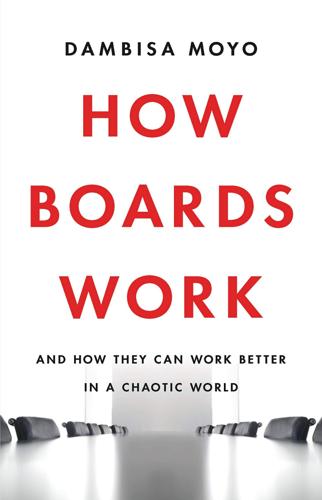
How Boards Work: And How They Can Work Better in a Chaotic World
by
Dambisa Moyo
Published 3 May 2021
To reframe this in a crude way, someone interested in gaining a place on a corporate board must ask themselves: Who from the management team would call me for advice, and when and why? Diversity is just one of the many major issues facing boards today. I conceived this book, and wrote most of it, well before the coronavirus pandemic of 2020. But the first months of the pandemic only reinforced my conclusions about the importance of functional, decisive, and wisely run boards. The coronavirus may have amplified the challenges facing today’s global companies, but I believe now more than ever in the positive role these corporations—and their boards—can play in society. Businesses are reckoning with a period of shocks, tremendous uncertainty, and heightened complexity that is testing whether corporations, and indeed capitalism itself, will survive.
…
They are increasingly serving as agents of change, pushing for reforms and innovation in areas previously thought to be solely the purview of government—from environmental change to diversity and inclusion across the workforce. Finally, corporations make invaluable contributions to human progress, joining with government to respond to global crises like the 2020 pandemic. Leading pharmaceutical companies were at the forefront of the development of a vaccine and treatments against the coronavirus, producers and suppliers mobilized to keep essential goods moving toward society’s most vulnerable, and formerly obscure industrial companies took center stage as providers of necessary equipment such as face masks, respirators, and ventilators. So the fates of corporations and society as a whole are closely linked.
…
Leaving a good legacy is becoming harder, however, as the corporate board’s oversight role becomes ever more challenging and baseline notions about shareholder value and social responsibility shift with the changing times. Twenty-first-century companies are buffeted by unprecedented economic headwinds. Particularly after the onset of the coronavirus pandemic, the global economy is facing a deep and protracted recession, adding to already slowing long-term economic growth trends. Furthermore, de-globalization—in the form of new trade tariffs, capital controls, and increased barriers to immigration—threatens to harm global commerce and limit investment flows and the movement of labor, thereby worsening an already dire economic outlook.

Tomorrow's Capitalist: My Search for the Soul of Business
by
Alan Murray
Published 15 Dec 2022
In the early months of the pandemic, my email box was flooded with press releases from companies touting their coronavirus good works. The serious contenders, in my view, were the companies who were actually trying to make a measurable difference, either for their employees or in the COVID-19 fight. Target announced an investment of more than $300 million in added wages, paid leave, and backup childcare. Allstate offered free coverage to those who were using their vehicles to deliver food and medicine. MassMutual offered free life insurance to frontline health care workers. Jack Dorsey dedicated $1 billion in Square stock for coronavirus relief. The list went on. COVID-19 has presented an opportunity for CEOs to do more than pay lip service to change.
…
The “global society,” long heralded as a supreme advance of the modern era, aided the spread of the disease. In the coming weeks travel bans were announced, and when the spread continued, lockdowns began. California was the first with a statewide stay-at-home order. On the East Coast, New York state became the epicenter of the coronavirus, with Governor Andrew Cuomo ordering all nonessential businesses closed. The blow to the economy was immense. Without customers, the airline industry was effectively shuttered. Restaurants closed. Theaters shut down and Broadway went dark. Businesses sent workers home. Schools closed. The streets of Manhattan, the global heartbeat of finance, were empty.
…
It’s literally like a snowball going downhill, picking up momentum.”2 When I first began speaking with business leaders to hear their thinking about the crisis and its effects, I lamented that it was coming just as the dramatic movement for change was gathering momentum across the business community. Since that auspicious gathering in Rome, much had happened to cement a commitment to increasing the positive social impact of corporations. ENTERING THE FRAY When I spoke with JUST Capital CEO Martin Whittaker in early April 2020, he had just been exposed to the coronavirus and was experiencing symptoms. He’d later call it the biggest test of his career. Whittaker is a thoughtful guy, who once told an interviewer that he derived strength from the words of Theodore Roosevelt in his famous speech about courage, delivered in Paris in 1910. Roosevelt discounts the critics and praises the person who is “actually in the arena, whose face is marred by dust and sweat and blood; who strives valiantly; who errs, who comes short again and again, because there is no effort without error and shortcoming; but who does actually strive to do the deeds; who knows great enthusiasms, the great devotions; who spends himself in a worthy cause; who at the best knows in the end the triumph of high achievement, and who at the worst, if he fails, at least fails while daring greatly, so that his place shall never be with those cold and timid souls who neither know victory nor defeat.”

Our Lives in Their Portfolios: Why Asset Managers Own the World
by
Brett Chistophers
Published 25 Apr 2023
Gelsi, ‘Private-Equity Powerhouses Are Sitting on Piles of Uninvested Cash’, MarketWatch, 25 August 2021 – at marketwatch.com. 4 A. Tooze, ‘What If the Coronavirus Crisis Is Just a Trial Run?’, New York Times, 1 September 2021. 5 B. King, ‘How Much is Covid Costing the UK and How Will We Pay?’, 22 June 2021 – at bbc.com. 6 M. Sandbu, ‘The Post-Pandemic Brave New World’, IMF, December 2020 – at imf.org. 7 Tooze, ‘What if the Coronavirus Crisis Is Just a Trial Run?’ 8 Ibid. 9 American Society of Civil Engineers, ‘A Comprehensive Assessment of America’s Infrastructure: 2021 Report Card’, March 2021 – at infrastructure reportcard.org. 10 Tooze, ‘What If the Coronavirus Crisis Is Just a Trial Run?’ (emphasis in original). 11 ‘The American Jobs Plan’, 31 March 2021 – at whitehouse.gov. 12 B.
…
It subsequently stopped disclosing its unit holdings, but one recent independent report stated that, in 2020, Blackstone owned some 117,000 units just in Europe, of which approximately 40,000 were in Spain.58 As we have seen, our best estimate is that Blackstone funds today control housing globally worth more than $100 billion. Indeed, it bought housing assets worth in excess of $20 billion in the period of the coronavirus pandemic alone.59 Another result of Blackstone’s rapid assembly of a formidable global housing portfolio, however, has been a torrent of criticism. Fairly or not, Blackstone has over the past decade become a lightning rod for a wider critique of the growing participation of financial investment institutions of various kinds in home ownership.
…
Tenants of the Pretium Partners–backed Progress Residential have similarly complained of ‘unfair rent hikes, shoddy maintenance and excessive fees’: one lease seen by the Washington Post stipulated fees such as ‘10 per cent of the rent if the payment is more than five days late; $7.95 a month for a firm picked by Progress to collect utility payments; $9.95 a month for failing to buy renter’s insurance; and a $35 “convenience fee” each time rent is paid with a credit card’ – not to mention a $200 ‘administration’ fee in the event of Progress filing for eviction.69 Comparable claims have recently surfaced with regard to Greystar Investment Management’s rental operations, too.70 Indeed, such concerns reached a new pitch during the coronavirus pandemic. No less than three separate congressional committees undertook investigations of the pandemic-era business practices of US corporate residential landlords, focusing in particular on their eviction practices, and landlords controlled by asset managers such as the Amherst Group, Cerberus Capital Management and the aforementioned Pretium were squarely in the spotlight.71 Eviction moratoria introduced by federal and local governments during the pandemic evidently did not stop landlords from filing and completing evictions, which were concentrated in communities of colour.
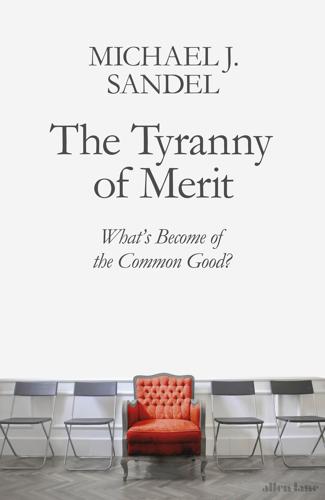
The Tyranny of Merit: What’s Become of the Common Good?
by
Michael J. Sandel
Published 9 Sep 2020
Remarks by President Trump Before Marine One Departure, February 23, 2020, whitehouse.gov/briefings-statements/remarks-president-trump-marine-one-departure-83/ ; Remarks by President Trump in Meeting with African American Leaders, February 27, 2020, whitehouse.gov/briefings-statements/remarks-president-trump-meeting-african-american-leaders/ . 2. Farhad Manjoo, “How the World’s Richest Country Ran Out of a 75-Cent Face Mask,” The New York Times , March 25, 2020, nytimes.com/2020/03/25/opinion/coronavirus-face-mask.html . 3. Margot Sanger-Katz, “On Coronavirus, Americans Still Trust the Experts,” The New York Times , June 27, 2020, nytimes.com/2020/06/27/upshot/coronavirus-americans-trust-experts.html . INTRODUCTION: GETTING IN 1. Jennifer Medina, Katie Benner, and Kate Taylor, “Actresses, Business Leaders and Other Wealthy Parents Charged in U.S. College Entry Fraud,” The New York Times , March 12, 2019, nytimes.com/2019/03/12/us/college-admissions-cheating-scandal.html . 2.
…
Goodman, “The Nordic Way to Economic Rescue,” The New York Times , March 28, 2020, nytimes.com/2020/03/28/business/nordic-way-economic-rescue-virus.html ; Richard Partington, “UK Government to Pay 80% of Wages for Those Not Working in Coronavirus Crisis,” The Guardian , March 20, 2020, theguardian.com/uk-news/2020/mar/20/government-pay-wages-jobs-coronavirus-rishi-sunak ; Emmanuel Saez and Gabriel Zucman, “Jobs Aren’t Being Destroyed This Fast Elsewhere. Why Is That?,” The New York Times , March 30, 2020, nytimes.com/2020/03/30/opinion/coronavirus-economy-saez-zucman.html . 53. Oren Cass, The Once and Future Worker , pp. 79–99. 54. Ibid., pp. 115–39. 55. Ibid., pp. 25–28, 210–12. 56.
…
SANDEL Liberalism and the Limits of Justice Liberalism and Its Critics (editor) Democracy’s Discontent: America in Search of a Public Philosophy Public Philosophy: Essays on Morality in Politics The Case Against Perfection: Ethics in the Age of Genetic Engineering Justice: A Reader (editor) Justice: What’s the Right Thing to Do? What Money Can’t Buy: The Moral Limits of Markets Encountering China: Michael Sandel and Chinese Philosophy (co-editor) For Kiku, with love Prologue When the coronavirus pandemic hit in 2020, the United States, like many other countries, was unprepared. Despite warnings the previous year from public health experts about the risk of a global viral contagion, and even as China contended with its outbreak in January, the United States lacked the ability to conduct the widespread testing that might have contained the disease.
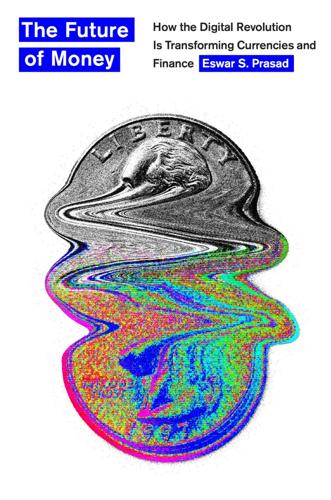
The Future of Money: How the Digital Revolution Is Transforming Currencies and Finance
by
Eswar S. Prasad
Published 27 Sep 2021
Part 3: Helicopter Money,” Brookings Institution (blog), April 11, 2016, https://www.brookings.edu/blog/ben-bernanke/2016/04/11/what-tools-does-the-fed-have-left-part-3-helicopter-money/; and Jordi Galí, “Helicopter Money: The Time Is Now,” VoxEU, CEPR (blog), March 17, 2020, https://voxeu.org/article/helicopter-money-time-now. The March 2020 coronavirus stimulus bill is described in this article: Emily Cochrane and Sheryl Gay Stolberg, “$2 Trillion Coronavirus Stimulus Bill Is Signed into Law,” New York Times, March 27, 2020, https://www.nytimes.com/2020/03/27/us/politics/coronavirus-house-voting.html. The Economic Impact Payments are described at https://www.irs.gov/coronavirus/economic-impact-payments. The status of the payments as of June 2020 is summarized at “Economic Impact Payments Issued to Date,” US House of Representatives, Committee on Ways and Means, June 2020, https://waysandmeans.house.gov/sites/democrats.waysandmeans.house.gov/files/documents/2020.06.04%20EIPs%20Issued%20as%20of%20June%204%20FINAL.pdf.
…
Dollars Repatriated from Asia on Coronavirus Caution,” Reuters, March 6, 2020, https://www.reuters.com/article/us-health-coronavirus-fed-dollars/fed-quarantines-us-dollars-repatriated-from-asia-on-coronavirus-caution-idUSKBN20T1YT; and Kate Davidson and Tom Fairless, “Fed Stores Dollars Arriving from Asia as Coronavirus Precaution,” Wall Street Journal, March 6, 2020, https://www.wsj.com/articles/fed-delays-processing-dollar-bills-from-asia-amid-coronavirus-fears-11583512719. The New York University research is summarized here: Michaeleen Doucleff, “Dirty Money: A Microbial Jungle Thrives in Your Wallet,” NPR, April 23, 2014, https://www.npr.org/sections/health-shots/2014/04/23/305890574/dirty-money-a-microbial-jungle-thrives-in-your-wallet.
…
Cash Is Not Clean The allocation of new banknotes to Wuhan and the requirement that banknotes be disinfected were reported in Chinese official media: Wang Tianyu, “Central Bank Allocates 4 Billion Yuan in New Banknotes to Wuhan,” China Global Television Network, February 15, 2020, https://news.cgtn.com/news/2020-02-15/Central-bank-allocates-4-billion-yuan-in-new-banknotes-to-Wuhan-O69Pj35nNu/index.html; and “China Ensures Timely Money Transfer, Disinfects Banknotes amid Fight against Coronavirus,” Xinhuanet, February 15, 2020, http://www.xinhuanet.com/english/2020-02/15/c_138786757.htm. The Guangzhou branch’s actions to destroy banknotes is described here: Karen Yeung, “China Central Bank Branch to Destroy Banknotes from Coronavirus-Hit Sectors,” South China Morning Post, February 16, 2020, https://www.scmp.com/economy/china-economy/article/3050868/fresh-cash-old-china-central-bank-branch-destroy-banknotes. The Fed’s actions are reported in Pete Schroeder and Anna Irrera, “Fed Quarantines U.S. Dollars Repatriated from Asia on Coronavirus Caution,” Reuters, March 6, 2020, https://www.reuters.com/article/us-health-coronavirus-fed-dollars/fed-quarantines-us-dollars-repatriated-from-asia-on-coronavirus-caution-idUSKBN20T1YT; and Kate Davidson and Tom Fairless, “Fed Stores Dollars Arriving from Asia as Coronavirus Precaution,” Wall Street Journal, March 6, 2020, https://www.wsj.com/articles/fed-delays-processing-dollar-bills-from-asia-amid-coronavirus-fears-11583512719.
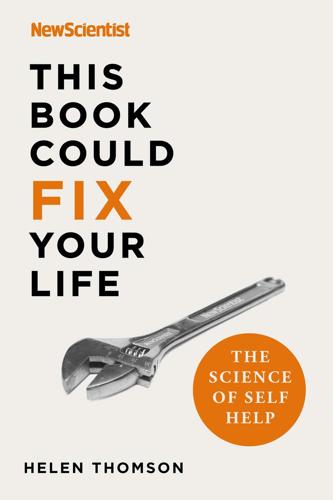
This Book Could Fix Your Life: The Science of Self Help
by
New Scientist
and
Helen Thomson
Published 7 Jan 2021
So if you do decide to have that extra pint of lager, with its two units of alcohol, think about whether it’s worth the effort of working out for an extra twenty minutes to balance the books. HOW TO STOP OVEREATING If you feel like your diet has completely gone to pot during a year of coronavirus lockdowns in which you’ve struggled to find your regular food, and been stressed and bored – known risk factors for overeating – then you’re not alone. Emerging evidence suggests that many people, in the UK at least, are struggling to resist the comforts of food more than ever. Weight gain and its negative impact on our health might be an unforeseen consequence of the coronavirus pandemic. An unhealthy diet is often blamed on poor choices and a lack of willpower. We’ve already looked in Chapter 6 at some ways you can train your brain into choosing healthier foods.
…
You should also consult a medical practitioner before making changes to your diet or exercise regime, especially if you have pre-existing health conditions. 1 HOW NOT TO WORRY IT IS A HOT and sticky June 2020 as I write this, and I am sitting in my tiny box room. It is a nursery masquerading as an office as my family enters month four of lockdown, amid the worldwide coronavirus pandemic. Starting at 6.30 a.m., my husband and I split each day in half – one of us cares for our daughter while the other goes to work upstairs. At 1 p.m., we swap shifts. At 6.30 p.m. we share an evening routine of bath, stories and bed. A quick dinner, half an hour of TV, and then bed for me, too.
…
On repeat. Like many others, we’ve not seen our family or friends since Christmas. We spend only an hour or so a day in a nearby park, and mostly get our food via deliveries. Oh, and I’m also eight months pregnant. To say that this is a challenging time is an understatement. Like most people during the coronavirus crisis, the worry has at times got to me. I worry about my daughter and how she’s missing her pals at nursery, and fear I am only inadequately fulfilling her needs. I worry about whether I’m going to get this book finished on time, or whether I’ll end up doing less than the perfect job I want to.
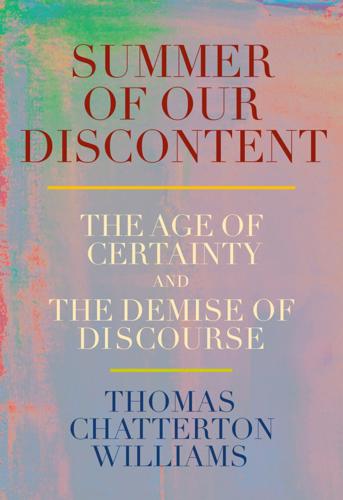
Summer of Our Discontent: The Age of Certainty and the Demise of Discourse
by
Thomas Chatterton Williams
Published 4 Aug 2025
This is why it will never be sufficient to dismantle police departments if we wish to make our most vulnerable communities safer, or to abolish entrance examinations if we wish to bolster authentic equality, any more than it would make sense—as President Trump so foolishly recommended—to do away with COVID-19 testing if we wish to lower the rate of coronavirus infection.[*5] The summer of 2020 changed us. Like the Trump presidency of which it marked the beginning of a brief intermission, it has changed us in deep and complicated ways that are still unfolding. We could not return to the honeymoon phase of the early Obama era if we wanted to, and I suspect that an overwhelming majority of us, knowing what we know now, wouldn’t wish to do that, either.
…
Within the numbing flood of bad news and stress that is the lifeblood of social media, and at a juncture in an appalling campaign when the president of the United States had spent the Memorial Day weekend attacking the physical appearances of various female opponents—a time when the U.S. death toll from the novel coronavirus was fast closing in on the symbolic, previously unthinkable 100,000 mark—this picture was orders of magnitude more upsetting. If it wasn’t clear on that first agonizing click, it became so within the hours and days that followed: for America, and indeed for large swaths of the world, it was the visual quintessence of a centuries-long and cancerous history—a tortured transatlantic oppression rendered in flesh and pixels.
…
His arrest and return to Virginia sparked protests in Boston and drew national attention, galvanizing the abolitionist movement. *6 “The old African-American aphorism ‘When white America catches a cold, black America gets pneumonia’ has a new, morbid twist: when white America catches the novel coronavirus, black Americans die.” Keeanga-Yamahtta Taylor, “The Black Plague,” New Yorker, April 16, 2020. *7 One critical element of religious fervor of course being blind faith in what cannot be proven with empirical evidence—indeed, at times, a fanatical belief in that which empirical evidence directly contradicts.

The Contrarian: Peter Thiel and Silicon Valley's Pursuit of Power
by
Max Chafkin
Published 14 Sep 2021
a record price: “Peter Thiel Buys Maui Home for a Record $27 Million,” The Wall Street Journal, July 15, 2011, https://www.wsj.com/articles/SB10001424052702304911104576444362936635124. and ultimately flawed: Riley Beggin, “Report: The CDC Contaminated Its First Coronavirus Tests, Setting US Back,” Vox, April, 18, 2020, https://www.vox.com/2020/4/18/21226372/coronavirus-tests-cdc-contaminated-delay-testing. “Software is eating the world”: Marc Andreessen, “Why Software Is Eating the World,” Andreessen Horowitz, August 20, 2011, https://a16z.com/2011/08/20/why-software-is-eating-the-world/. two more contracts, worth $25 million: Dave Nyczepir, “HHS Cites Coronavirus ‘Urgency’ in Speedy Palantir Contract Awards,” FedScoop, May 8, 2020, https://www.fedscoop.com/hha-covid-funds-palantir/.
…
“numbers are being cooked”: Graig Graziosi, “Republican Senate Hopeful Says Coronavirus Numbers Being ‘Cooked’ to Hurt Trump,” The Independent, July 28, 2020, https://www.independent.co.uk/news/world/americas/us-politics/coronavirus-deaths-trump-republican-senate-kris-kobach-a9642731.html. Tesla workers in Fremont: Neal E. Boudette, “Hundreds of Tesla Workers Tested Positive for the Virus after Elon Musk Reopened a Plant, Data Shows,” The New York Times, March 13, 2021, https://www.nytimes.com/2021/03/13/world/tesla-elon-musk-coronavirus-outbreak.html. virus as the “sniffles”: “Trump Says Son Barron’s Covid Illness ‘‘Just Went Away,’ ” NBC News, October 22, 2020, https://www.nbcnews.com/video/trump-says-son-barron-s-covid-illness-just-went-away-94447173800.
…
It was all working. 20 BACK TO THE FUTURE Just as the American public was coming to the realization that the coronavirus was spreading rapidly and that life was going to be profoundly different for some indeterminate amount of time, Peter Thiel left Los Angeles. Conventional wisdom had it that he’d gone to New Zealand—to the Plasma House and its panic room or perhaps to a bunker on the South Island farm he’d bought. New Zealand was living up to its reputation as an ideal apocalypse destination. The country had locked down early and closed its borders to noncitizens. It would suffer only twenty-five deaths from coronavirus through the end of 2020. But Thiel never made it to New Zealand—and, in fact, he’d essentially ignored his newly adopted homeland since the end of 2017, when he’d attended Simon Denny’s art exhibit The Founder’s Paradox, which explored the mythology of tech founders as the godlike figures that Silicon Valley, and especially Thiel, had promoted.
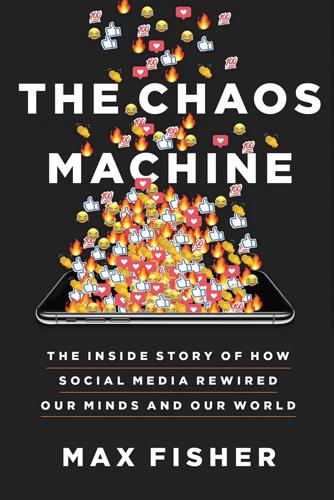
The Chaos Machine: The Inside Story of How Social Media Rewired Our Minds and Our World
by
Max Fisher
Published 5 Sep 2022
Fights a Pandemic Besides Coronavirus: An ‘Infodemic,’” Matt Richtel, New York Times, February 6, 2020. 2 “The interest that I got:” “Q&A: Solidifying Social Media Platforms’ Role in Global Health,” Devex Partnerships, Devex.com, November 29, 2021. 3 “I made this pitch on a human”: “How WHO Is Engaging Big Tech to Fight Covid-19,” Catherine Cheney, Devex.com, August 14, 2020. 4 an “infodemic”: “Facebook, Amazon, Google and More Met with WHO to Figure Out How to Stop Coronavirus Misinformation,” Christina Farr and Salvador Rodriguez, CNBC, February 14, 2020. 5 Facebook posts were already winning: “Coronavirus Cannot be Cured by Drinking Bleach or Snorting Cocaine, despite Social Media Rumors,” Christina Capatides, CBS News, March 9, 2020. 6 Instagram influencers explained: “Coronavirus Conspiracy Video Spreads on Instagram among Black Celebrities,” Brandy Zadrozny, NBC News, March 13, 2020. 7 the CIA was hoarding: Tweet by Brody Logan (@BrodyLogan), March 16, 2020. twitter.com/BrodyLogan/status/1239406460188020736 8 blaming the disease on 5G cell towers: “Why Coronavirus Conspiracy Theories Flourish.
…
It was as if the entire world became a Zika-afflicted village whose mothers turned in desperation to online rumors, or a collective of lonely young men escalating one another’s disillusionment and anomie into a shared struggle against some fabricated enemy. Coronavirus conspiracies, promising access to forbidden truths others did not hold, let believers feel certainty and autonomy amid a crisis that had taken away both. By pinning it all on some villain or plot, they gave a senseless tragedy some degree of meaning, however dark. And they offered users a way to take action, first by sharing their secret knowledge with others, then by telling one another that they would band together against whatever culprit the conspiracy blamed. The overarching narrative—coronavirus is a plot by Them to control Us—was everywhere by April.
…
The overarching narrative—coronavirus is a plot by Them to control Us—was everywhere by April. Often, the conspiracies originated with everyday users with tiny followings. A small-town missionary’s Facebook post accusing Bill Gates and China of spreading coronavirus to undermine Trump. A Houston beautician’s tweet listing past epidemics alongside corresponding election years (the dates were wrong) with the message “Coronavirus is a government made disease.” A video, on YouTube, of two doctors presenting phony claims that Covid was mostly harmless and that masks could be forgone. Each reached audiences numbering in the millions, all thanks to the platforms’ promotional systems.

We're Not Broken: Changing the Autism Conversation
by
Eric Garcia
Published 2 Aug 2021
In July of the campaign, he released a plan that would eliminate the waitlist for home- and community-based services through increasing money for Medicaid and supported creating a “innovation fund” to find alternatives to institutional care. For the most part, though, Biden’s campaign (somewhat understandably) focused on other topics, such as the coronavirus pandemic and protests against racial injustice. But in both cases, disabled people faced the brunt of the pandemic. NPR reported at the time that people with intellectual disabilities and autism who contracted coronavirus died at a higher rate than the rest of the population in New York and Pennsylvania. Biden also hired Molly Doris-Pierce, who was disability outreach coordinator for Elizabeth Warren and whose disability plan was widely praised by the disability community.
…
Maggie Astor: Maggie Astor, “Elizabeth Warren Opens a New Front in Disability Policy,” New York Times, January 10, 2020, https://www.nytimes.com/2020/01/10/us/politics/elizabeth-warren-disability-plan.html. a disabled father: David M. Perry, “My Coronavirus Prep Includes Protecting My Disabled Child,” Washington Post, March 4, 2020, https://www.washingtonpost.com/outlook/2020/03/04/coronavirus-prep-disabled-children/. when I saw a tweet from right-wing provocateur Ryan Saavedra: Ryan Saavedra, Twitter, September, 6, 2019, https://twitter.com/RealSaavedra/status/1170082834377105410. “I hope @KamalaHarris enjoys losing the disability vote”: Julia Bascom, Twitter, September, 7, 2019, https://twitter.com/JustStimming/status/1170392597178789889.
…
Public policy has also begun to move in favor of parent advocates like Lutz and Solotaroff. In 2017, CMS under the Trump administration gave states until 2022 to show they are complying with the new rule when they were initially meant to comply in 2019. In 2020, CMS again extended the compliance deadline until March 17, 2023, amid the coronavirus pandemic. Then in 2019, CMS released new guidance on the settings rule. While it kept the rule in place, it changed the criteria—which it claimed it streamlined—for settings that isolate and removed the list of specific settings that isolate. Most notably, it also said, “Settings located in rural areas are not automatically presumed to have qualities of an institution, and more specifically, are not considered by CMS as automatically isolating to HCBS beneficiaries.”

Please Don't Sit on My Bed in Your Outside Clothes: Essays
by
Phoebe Robinson
Published 14 Oct 2021
“God bless Frito-Lay and 2020,” I say to myself as I pop open a fresh bag of Cheetos. The. End. Not bad, eh, dear reader? In all seriousness, while not everyone had a speech prepared, many of us did anticipate that 2020 was going to kick off the decade in spectacular or at least better fashion, which helps explain why the coronavirus felt like such a deeply personal attack. These are 100 percent valid reactions to the new world we’re navigating. We have the right to feel duped. To lose faith and question whether we should’ve had it in the first place. For many, those fun butterflies in our stomachs have been replaced by, well, sheer panic, and that overwhelming sense of losing control—be it of our jobs, our daily routines, our finances, our health, or simply how we can spend our time—was paralyzing.
…
Not that we ever had that much control in the first place, but we told ourselves what we had to in order to function, as the alternative—nihilism—seemed too dark a path to walk. So we devised plans. Set goals. Did all the things one does when constructing a life, like loving, hoping, fighting, hustling, thinking about tomorrow, etc. We were vulnerable in the face of the unknowable, and that was hard enough in our pre-coronavirus normal. Starting over and being vulnerable in a world that is nothing like what you had constructed for yourself was scary, frustrating, and heartbreaking. Beginning again can feel like yet another tiny death of who you are and what you knew. And the older I get, it seems that adulthood is nothing but those tiny little deaths.
…
.* That way, I can look back and remember that people put themselves on the line so I could be here. That my parents lovingly teased me over FaceTime so I’d laugh. That I played a bootleg version of “Lean on Me” for my boyfriend when he had a down day on a cheap keyboard I purchased. That despite the tiny and not-so-tiny deaths that the coronavirus brought, there were also all those little sparks of joy, those small, happy moments that helped make my life, my life. Same with those sad times. So, dear reader, my hope is this: that when you look back on 2020, if you need to punch, yell, kick, scream for the dreams deferred and the lives lost, do it.

How to Work Without Losing Your Mind
by
Cate Sevilla
Published 14 Jan 2021
But it would be naive and, quite frankly, silly of us to give a celebratory Mary Tyler Moore beret-toss when we know that, actually, things are still unequal. We shouldn’t exactly be grateful that we’re no longer only relegated to secretary or assistant positions, or thrilled that we’re even ‘allowed’ to be at work. In fact, during the coronavirus pandemic, it became alarmingly clear that women are indeed the backbone of our economy and what keeps our societies functioning. The New York Times reported in April 2020 that while normally men make up the majority of the American workforce, during the pandemic when everything was stripped back to the bare necessities – one in three jobs held by a woman was designated as essential.6 From nurses and pharmacy technicians to supermarket cashiers, the New York Times wrote that this ‘unseen labor force’ whose work is often ‘underpaid and undervalued’ is actually what ‘keeps the country running and takes care of those most in need, whether or not there is a pandemic’.
…
What I’m trying to say is that none of that is authentic – it’s performative and even reductive. Because at the heart of the troubles many of us have with ‘adulting’ is a real, generational issue. It’s not laziness, sensitivity or a deficiency – it’s a symptom of a wider cultural problem. Our culture of burnout and over-productivity was laid bare as the coronavirus pandemic progressed. ‘We’re not working from home in a pandemic,’ we were told by different people in various ways, ‘You’re at home, in a pandemic, trying to work.’ Instead of hustling, the popular thing to do was to encourage others to look after themselves, to remind us all that self-care mattered more than ever, and that rest was important too.
…
The complicated etiquette of virtual meetings and video calls Whether it’s Zoom or Google Meetup, Skype or Microsoft Teams – taking part in a video call or ‘virtual meeting’ is more complicated than you might expect. If you work at a tech company or an international firm with remote workers, you were probably already very familiar with video meetings before coronavirus happened. However, the pandemic saw more of us using these apps for virtual meetings than ever before, and it became quite clear that the etiquette of how they should run was as fuzzy as the resolution of your colleagues’ webcams. To clear a few things up, here are some best practices: Have a dedicated moderator For meetings with more than two people, whoever is owning the meeting needs to set up the call, and everyone on it.

Four Battlegrounds
by
Paul Scharre
Published 18 Jan 2023
El primer paso podría ser usar las tapabocas y callarse,” Twitter, March 18, 2020, https://twitter.com/Emb_ChinaVen/status/1240367619200495616. 75China’s manufacture of life-saving drugs: Bo, “Why the US and Europe Need to Draw Closer to China and Drop the Hubris.” 75“into the mighty sea of coronavirus”: “理直气壮,世界应该感谢中国 [Justly and forcefully, the world should thank China],” Xinhua, March 4, 2020, http://www.xinhuanet.com/2020-03/04/c_1125660473.htm; Christian Whiton, “China Threatens to Throw America ‘Into the Mighty Sea of the Coronavirus,’” National Interest, March 8, 2020, https://nationalinterest.org/feature/china-threatens-throw-america-mighty-sea-coronavirus-130877. 75China’s mishandling of the outbreak: Bengali and Su, “‘Put on a mask and shut up.’” 75the U.S. Army might have started the outbreak: Lijian Zhao 赵立坚 (zlj517), “2/2 CDC was caught on the spot.
…
When Australia called for an independent inquiry into the origins of the virus, China responded by restricting imports of Australian products into China. When Venezuelan officials referred to the “Chinese coronavirus,” the Chinese embassy launched an angry Twitter thread concluding with the demand that China’s critics “put on a mask and shut up.” U.S.-China relations, already strained, deteriorated even further. Chinese officials didn’t hesitate to flex their leverage over the United States due to China’s manufacture of life-saving drugs. Chinese state-run media threatened to cut off drug exports and plunge the United States “into the mighty sea of coronavirus.” China’s “Wolf Warrior” diplomats, named after a popular Chinese action movie series, went even further, pushing conspiracy theories to deflect blame from China’s mishandling of the outbreak.
…
Jackson, Global Economic Effects of COVID-19 (Congressional Research Service, updated July 9, 2021), https://fas.org/sgp/crs/row/R46270.pdf. 74dictators who fall from power: For example, Romanian President Nicolae Ceaușescu and his wife were executed by firing squad after a perfunctory show trial in December 1989. 74“China’s Chernobyl”: Shawn Yuan, “Inside the Early Days of China’s Coronavirus Cover-Up,” Wired, May 1, 2020, https://www.wired.com/story/inside-the-early-days-of-chinas-coronavirus-coverup/. 75the West is “falling apart”: Zhou Bo, “Why the US and Europe Need to Draw Closer to China and Drop the Hubris,” South China Morning Post, April 24, 2020, https://www.scmp.com/comment/opinion/article/3081079/why-us-and-europe-need-draw-closer-china-and-drop-hubris. 75coercive diplomacy to pressure countries: Shahank Bengali and Alice Su, “‘Put on a mask and shut up’: China’s new ‘Wolf Warriors’ spread hoaxes and attack a world of critics,” Los Angeles Times, May 4, 2020, https://www.latimes.com/world-nation/story/2020-05-04/wolf-warrior-diplomats-defend-china-handling-coronavirus; Fergus Hanson, Emilia Currey, and Tracy Beattie, The Chinese Communist Party’s Coercive Diplomacy (Australian Strategic Policy Institute, September 1, 2020), https://www.aspi.org.au/report/chinese-communist-partys-coercive-diplomacy; Jamil Anderlini, “China Is Escalating Its Punishment Diplomacy,” Financial Times, September 22, 2020, https://www.ft.com/content/e76a835b-27d5-4750-9749-04921d6bf1eb. 75requests that receiving governments praise China: Alexandra Ma, “China Is Attempting to Win Political Points from the Coronavirus With ‘Mask Diplomacy’—but It Mostly Isn’t Working,” Business Insider, April 18, 2020, https://www.businessinsider.com/analysis-china-coronavirus-political-points-mostly-not-working-2020-4. 75China’s “global disinformation campaign”: Michael Peel and Tom Mitchell, “China Warned EU 3 Times over Virus Propaganda Report,” Financial Times, April 26, 2020, https://www.ft.com/content/a2f66f6a-50cb-46fe-a160-3854e4702f1c; Matt Apuzzo, “Top E.U.
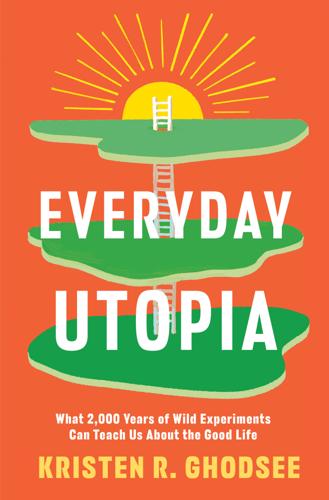
Everyday Utopia: What 2,000 Years of Wild Experiments Can Teach Us About the Good Life
by
Kristen R. Ghodsee
Published 16 May 2023
Thomas Taylor, available at Project Gutenberg, https://www.gutenberg.org/files/63300/63300-h/63300-h.htm. 2 Alisha Haridasani Gupta, “Why Some Women Call This Recession a ‘Shecession.’ ” New York Times, May 9, 2020, https://www.nytimes.com/2020/05/09/us/unemployment-coronavirus-women.html. 3 Alexandra Topping, “UK Working Mothers Are ‘Sacrificial Lambs’ in Coronavirus Childcare Crisis,” The Guardian, July 24, 2020, https://www.theguardian.com/money/2020/jul/24/uk-working-mothers-are-sacrifical-lambs-in-coronavirus-childcare-crisis. 4 “Parenting in Lockdown: Coronavirus and the Effects on Work-Life Balance,” Office for National Statistics, July 22, 2020, https://www.ons.gov.uk/peoplepopulationandcommunity/healthandsocialcare/conditionsanddiseases/articles/parentinginlockdowncoronavirusandtheeffectsonworklifebalance/latest.
…
fbclid=IwAR1z8GuQais7MDG4szTYtMxZmaC_aNtEUqgCn_uOGMfkPWVSCZxq8BRBwCQ. 39 Anya Kamenetz, “Most Teachers Don’t Teach Climate Change; 4 in 5 Parents Wish They Did,” National Public Radio, April 22, 2019, https://www.npr.org/2019/04/22/714262267/most-teachers-dont-teach-climate-change-4-in-5-parents-wish-they-did. 40 Thomas Friedman, “Justice Goes Global,” New York Times, June 15, 2011, https://www.nytimes.com/2011/06/15/opinion/15friedman.html. 41 Ed Stannard, “Yale ‘Happiness’ Professor Taking Leave as Burnout Looms,” New Haven Register, February, 19, 2022, https://www.nhregister.com/news/article/Yale-professor-taking-leave-because-burnout-16930909.php. 42 Eric Merkely, “Many Americans Deeply Distrust Experts. So Will They Ignore the Warnings About Coronavirus?” Washington Post, March 19, 2020, https://www.washingtonpost.com/politics/2020/03/19/even-with√-coronavirus-some-americans-deeply-distrust-experts-will-they-take-precautions/. 43 “Alle Muurgedichten,” Muur Gedichten Leiden, https://www.muurgedichten.nl/en/muurgedichten. 44 Ivan Dikov, “Wall-to-Wall Poetry: How the Dutch Bring European ‘Unity in Diversity’ to Sofia,” Novinite, January 27, 2010, http://www.novinite.com/view_news.php?
…
Friedman, The Essential Feminist Reader (New York: Modern Library, 2007), 178. 26 Wendy Goldman, Women, the State and Revolution: Soviet Family Policy and Social Life, 1917–1936 (Cambridge, UK: Cambridge University Press, 1993). 27 As quoted in Goldman, Women, the State and Revolution, 187. 28 Alexandra Kollontai, “Theses on Communist Morality in the Sphere of Marital Relations” (1921), in Alexandra Kollontai, Selected Writings (London: Allison & Busby, 1977). 29 Isabel de Palencia, Alexandra Kollontay: Ambassadress from Russia (London: Longmans, Green, 1947), 138. 30 Sheila Fitzpatrick, “Sex and Revolution: An Examination of Literary and Statistical Data on the Mores of Soviet Students in the 1920s,” Journal of Modern History 50, no. 2 (June 1978): 252–78. 31 Raphael Rashid, “Happy Alone: The Young South Koreans Embracing Single Life,” The Guardian, February 5, 2022, https://www.theguardian.com/world/2022/feb/05/happy-alone-the-young-south-koreans-embracing-single-life. 32 Motoko Rich, “Craving Freedom, Japan’s Women Opt Out of Marriage,” New York Times, August 3, 2019, https://www.nytimes.com/2019/08/03/world/asia/japan-single-women-marriage.html. 33 Maria Bucur, The Century of Women: How Women Have Transformed the World Since 1900 (Baltimore: Rowman & Littlefield, 2018). 34 See, for instance, Esther Perel, Mating in Captivity: Reconciling the Erotic and the Domestic (New York: Harper, 2006). 35 TallBear, “Making Love and Relations,” 163. 36 Danielle Braff, “From Best Friends to Platonic Spouses,” New York Times, May 1, 2021, https://www.nytimes.com/2021/05/01/fashion/weddings/from-best-friends-to-platonic-spouses.html. 37 Quoted in Braff, “From Best Friends to Platonic Spouses.” 38 “Report to Congress on the ‘Federal Employees Family Friendly Leave Act’ (Public Law 103-388),” Office of Personnel Management, June 1997, https://www.opm.gov/policy-data-oversight/pay-leave/reference-materials/reports/federal-employees-family-friendly-leave-act/. 39 “Families First Coronavirus Response Act: Employee Paid Leave Rights,” US Department of Labor, https://www.dol.gov/agencies/whd/pandemic/ffcra-employee-paid-leave; “Families First Coronavirus Response Act: Questions and Answers, 63—When Am I Eligible for Paid Sick Leave to Care For Someone Who Is Subject to a Quarantine or Isolation Order?” US Department of Labor, https://www.dol.gov/agencies/whd/pandemic/ffcra-questions/#63. 40 Ciara Muldowney, “UK: Caregivers Will Be Entitled to One Week of Unpaid Leave,” SHRM, October 29, 2021, https://www.shrm.org/resourcesandtools/hr-topics/global-hr/pages/uk-caregivers-one-week-unpaid-leave.aspx. 41 “Healing of Love,” Tamera, https://www.tamera.org/healing-of-love/. 42 “The Ethics of Free Love,” Tamera, https://www.tamera.org/the-ethics-of-free-love/. 43 D.

Less Is More: How Degrowth Will Save the World
by
Jason Hickel
Published 12 Aug 2020
But then we have to figure out just how we change everything to create a better society that works for people and planet. XR is a recognition of emergency. We have learned a lot about emergencies over the past year, with the rise of the coronavirus pandemic. The pandemic joined us in a mass of shared vulnerability, and we had to move quickly and make difficult decisions in order to protect humanity – to protect life. The fact that most countries managed to do this is a fairly hopeful sign. It shows what we can achieve when we take a crisis seriously. Coronavirus is being taken pretty seriously precisely because of its having fallen most heavily first upon the global North. The wake-up call it embodies needs so badly to be heard, because the slower climate emergency is simultaneous with it – and it poses a disproportionate threat to the global South, where it is already inflicting mass suffering.
…
And we must be aware that some governments will respond with worsening environmental racism and hidden agendas of eco-fascism. These are agendas to pit various groups against each other (and also against diverse forms of Life). They require solidarity in response. If the coronavirus is teaching us something about solidarity in action, then that is a real hope in this dangerous hour. Less is More offers incisive new ideas for what lies on the other side of the coronavirus emergency. Ideas for how we can prevent the ruin of our climate, roll back the ongoing sixth mass extinction, and avert societal collapse. It gives us a glimpse of how we can build something better out of the wreckage of what is.
…
It gives us a glimpse of how we can build something better out of the wreckage of what is. Jason Hickel offers a raft of intersecting, overlapping and mutually reinforcing ideas from history, economics, anthropology, philosophy, science, and more. This is the kind of broad thinking that’s required to achieve the rapid transition we need. The coronavirus crisis made it evident that if governments are determined enough and driven enough by circumstances — and by the will of their peoples — then they can do things that they have been calling impossible for years: a citizens’ income, debt cancellation, wealth taxes, nationalisations where necessary, you name it.
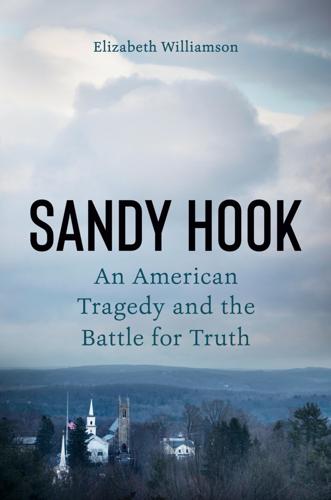
Sandy Hook: An American Tragedy and the Battle for Truth
by
Elizabeth Williamson
Published 8 Mar 2022
QAnon, some of whose adherents see Trump as an avenging hero in a child-trafficking scheme led by Democratic politicians and Hollywood liberals, first appeared on 4chan around 2017, grew steadily, then surged during the coronavirus pandemic. In 2020, Times technology columnist Kevin Roose described lurking[12] in QAnon Facebook groups and watching them “swell to hundreds of thousands of members,” spreading misinformation about the coronavirus along with the claim that Hillary Clinton and liberals drink the blood of children. The FBI began the 2020 election cycle by warning that QAnon posed a potential domestic terror threat.
…
“Then it was like five articles a day,” appearing in the media about the phenomenon, he told me. “Then you get to 2016, and it’s between fifty and one hundred a day.” Even as president, Trump inspired conspiracy-minded distrust of the government he led. His handling of the coronavirus pandemic provided just one example. Every day for months, he minimized the coronavirus pandemic, promoted quack cures, and politicized the government’s response, until its every aspect drew skepticism and partisan resistance. As deaths mounted, he used his online platform to blame the machinations of an imagined “Deep State” for the leadership failures that led voters to reject him for a second term.
…
Welch had just been released, and Alefantis thought he was still living in North Carolina. “I don’t think he’s coming back to Washington,” Alefantis told me in a tone suggesting he hoped he was right. We sat in the parking lot behind Comet, which Alefantis and his staff had transformed during the coronavirus pandemic into an outdoor dining area, with a bar and firepit, picnic tables for families, and an arbor space for quieter groups. Alefantis told me he had chosen not to live his life in fear. But at one point during our conversation, two men sat down nearby and Alefantis, eyeing them, asked that we move out of earshot.
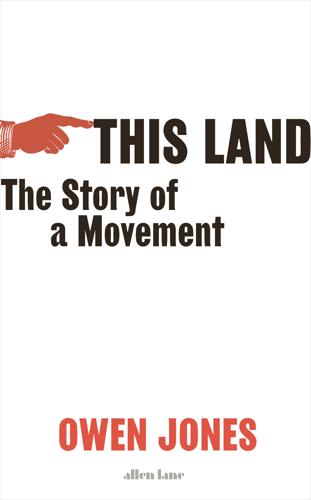
This Land: The Struggle for the Left
by
Owen Jones
Published 23 Sep 2020
Unemployment was projected to hit low-paid workers hardest,4 and food bank use jumped 326 per cent.5 While those on poverty wages had little choice but to risk their health and indeed their lives, middle-class professionals could work safely from home; some even enjoyed increases in their savings as outgoings on pre-coronavirus leisure activities – restaurants, theatres, holidays – stopped. According to the Office for National Statistics, by June 2020 coronavirus had killed 1 in every 1,701 people in England’s least deprived areas; in the most deprived areas, that figure was 1 in 779.6 That the Conservative government responded to the pandemic with the greatest expansion of the state in peacetime history, including paying the wages of millions of workers and securing the incomes of self-employed people, proves one thing: the state can intervene on a colossal scale for the social good, if the will is there.
…
Turns out, there was after all. The fact is, however, that this change of direction is an unnatural one for a Conservative Party in thrall to vested interests which prioritize economic considerations over human lives. In most respects, its approach to the coronavirus has been catastrophic, leading to the avoidable deaths of tens of thousands. On 5 March 2020, as the first British death from coronavirus was reported, Boris Johnson publicly declared that government advice was ‘wash your hands and business as usual’. A decade of Conservative austerity meant there was not enough personal protective equipment to ensure the safety of frontline workers; lockdown was delayed in pursuit of a hideous policy of ‘herd immunity’; social care was left chronically underfunded and underprepared; testing capacity was not invested in.
…
It nurtured a new ecosystem of think tanks, economists and intellectuals who are seriously engaged in debating what a new world could look like, brimming with ideas such as the four-day working week, a Green Industrial Revolution, and the democratization of the workplace and the economy. Just over three months after the 2019 election, British society was shut down in response to the coronavirus pandemic. ‘Boris must embrace socialism immediately to save the liberal free market,’ boomed the Telegraph, as the age of coronavirus dawned. Undoubtedly, the Conservative government had no choice but to enact the most dramatic expansion of the state in peacetime, which included paying the wages of half the country’s workforce. Yet this move was designed to preserve the existing failed model of capitalism, not to lay the foundations of a better alternative.

Billionaire, Nerd, Savior, King: Bill Gates and His Quest to Shape Our World
by
Anupreeta Das
Published 12 Aug 2024
Contributions flowed into nonprofits when the superstorm Sandy flooded lower Manhattan in 2012 and again when the coronavirus pandemic hit in 2020. Abortion clinics received an influx of dollars in 2022 after the Supreme Court struck down the constitutional right to an abortion. Nonprofits working on gender equality and sexual abuse saw a jump in donations after Donald Trump was elected president in 2016. Jeannie Infante Sager, the former director of the Women’s Philanthropy Institute at Indiana University, said such “rage giving” was mostly made up of small-dollar donations from women. At the height of the coronavirus pandemic, when the stock market soared and the healthcare system was overwhelmed, philanthropic gifts broke new records.
…
There was no convenient label to affix to the relationship between Gates and Epstein, and no label would have hidden the smudges that began to blur the clear, unsullied outlines of the technology billionaire’s do-gooder image. The photograph, which surfaced in 2019, accompanied a story by The New York Times detailing multiple meetings between the two men. Two years later, in the middle of the coronavirus pandemic, Melinda Gates, his wife of 27 years, would divorce him. Theirs had sometimes been a difficult marriage; for years, talk of Gates’s womanizing had whirred in the background among those who worked with the former couple. But the public airing of his relationship with Epstein contributed to their breakup.
…
(For context, there are around 100 publicly traded companies in the S&P 500 stock index with market values of $100 billion or more.) If the average American family saved every cent of its $68,000 annual income, it would take more than 14,000 years to build a fortune of just one billion dollars. During the coronavirus pandemic, the rising stock market lifted the collective net worth of billionaires by 40 percent, even as millions of small businesses and livelihoods were decimated, and others were saved only because of government help. An individual billionaire might represent the promise of capitalism, but their growing numbers and wealth represent its cruelty.
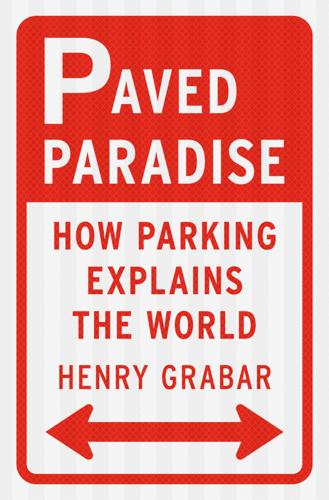
Paved Paradise: How Parking Explains the World
by
Henry Grabar
Published 8 May 2023
Gabbe and Gregory Pierce, “Hidden Costs and Deadweight Losses: Bundled Parking and Residential Rents in the Metropolitan United States,” Housing Policy Debate 27, no. 2 (2017): 217–29, doi.org/10.1080/10511482.2016.1205647. Go to note reference in text “Low-income people tend”: Liam Dillon, Ben Poston, and Julia Barajas, “Affordable Housing Can Cost $1 Million in California. Coronavirus Could Make It Worse,” Los Angeles Times, April 9, 2020, latimes.com/homeless-housing/story/2020-04-09/california-low-income-housing-expensive-apartment-coronavirus. Go to note reference in text “Hispanic people typically drop”: Karl Schwing, “San Diego Coast District Deputy Director’s Report for September 2017,” California Coastal Commission, September 6, 2017, documents.coastal.ca.gov/reports/2017/9/w12/w12-9-2017-report.pdf.
…
Go to note reference in text he told reporters who asked: Dan Blake, “Daley Takes Blame for Meters,” Chicago Tribune, May 20, 2009. Go to note reference in text Chicago’s downtown resurgence: Adie Tomer and Lara Fishbane, “Big City Downtowns Are Booming, but Can Their Momentum Outlast the Coronavirus?,” Brookings Institution, May 6, 2020, brookings.edu/research/big-city-downtowns-are-booming-but-can-their-momentum-outlast-the-coronavirus. Go to note reference in text “exiles from Jerusalem”: Nathan Carter, interview with the author, July 28, 2020. Go to note reference in text “let me count the ways”: Nathan Carter, interview with the author, September 22, 2020.
…
Though her office was just outside San Diego in Lemon Grove, Ginger lived with her family in Temecula, seventy miles north. There’s an inverse correlation between real estate prices and summer temperatures. On a blistering July day, the temperature rises ten degrees from Solana Beach to Lemon Grove, and another ten degrees in Temecula. Before the 2020 coronavirus pandemic, more than half of workers in Temecula spent more than thirty minutes a day getting to work. Some days, Ginger was part of a burgeoning class of California “supercommuters,” who spend more than three hours a day commuting. (More than 7 percent of the workforce in her county was in this category, more than three times the rate in San Diego County.)
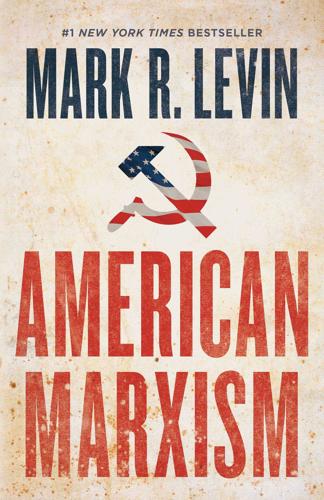
American Marxism
by
Mark R. Levin
Published 12 Jul 2021
But then it is also the case that significant change-oriented movements are not likely to emerge except during periods of economic and social instability.”53 If this seems familiar, it is. This strategy has also largely played out in America’s streets and politics, as Antifa, BLM, and other Marxist-anarchist groups exploited both the initial economic collapse due to the coronavirus and the death of George Floyd. These groups and others have been key in fomenting violent rioting mostly but not exclusively in the inner cities, militant confrontations with law enforcement, the destruction of public monuments and targeting of a federal courthouse and the White House, occupying parts of cities, and assaulting and threatening citizens at restaurants and other public places.
…
Only now they will employ more expansive rhetoric, acknowledging grievances among their constituents that are ordinarily ignored or naming and thus perhaps fueling the aspirations that are only beginning to emerge. Even the threat of defections that jeopardize a majority can prompt electoral leaders to make the pronouncements that contribute to the climate of change and possibility that nourish movements.”61 Indeed, the coronavirus pandemic and the shutting down of our economy, schools, and social activities, and the collective economic and psychological effects on our society, created an environment ripe for exploitation. And that exploitation has occurred both in the halls of power, with far-reaching legislative and executive actions, and in the streets, where organized violence is becoming all too common.
…
Moreover, since the institution of the federal income tax over a century ago, at the birth of American progressivism, redistribution of wealth through the heavy taxation of labor, income, and wealth, supported by Marxist-like class-warfare political propaganda, is a central objective of the Democratic Party. Unfortunately, it resonates today with a significant portion of the population. Indeed, under the guise of the coronavirus pandemic, the Democratic Party has widely expanded the scope and reach of the welfare state, not only doling out trillions of dollars to shore up its political and ideological base, but also ensnaring an ever-larger pool of individuals to government subsidies and transfer payments. The educational transformation has led, in many ways, to the societal transformation intended by the early progressive intellectuals.
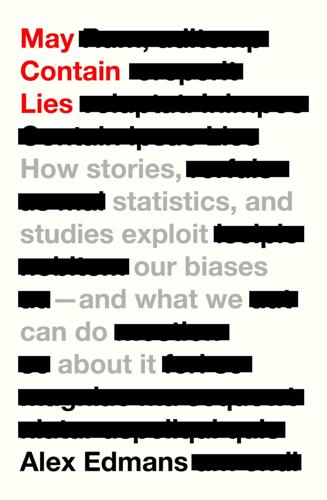
May Contain Lies: How Stories, Statistics, and Studies Exploit Our Biases—And What We Can Do About It
by
Alex Edmans
Published 13 May 2024
The third reason an input can be endogenous is if it’s the outcome of another process : certain factors cause companies, cities and countries to be the way they are. In 2020, as the coronavirus crisis unfolded, a study claimed that greater air pollution was associated with more COVID cases and deaths, with causal statements such as ‘poor air quality increases the lethality of COVID-19’.7 Newspaper headlines broke out, such as ‘“Compelling” evidence air pollution worsens coronavirus – study’ with the strapline ‘Exclusive: best analysis to date indicates significant increases in infections, hospital admissions and deaths.’8 Cycling is my main form of transport but often unpleasant in central London, so environmentalists like me wanted to believe this result and use it to lobby for anti-pollution action – yet there’s a major flaw.
…
High pollution isn’t something that cities voluntarily choose, nor a trait they’re born with, but it’s still endogenous as it’s an outcome of another process: certain factors cause a city to be polluted, and these same factors could also affect coronavirus. For example, population density is a common cause that both increases pollution and accelerates the spread of COVID. You don’t need statistical wizardry to come up with this alternative explanation, just common sense – but it’s often switched off when confirmation bias is at play. Why this matters Why is it so important to distinguish correlation from causation? Taken literally, study results are descriptions about the world. Breast-fed babies have better outcomes, people who start diets lose weight and more polluted cities transmit coronavirus faster. These statements aren’t inaccurate – breast-fed kids do have higher IQs – and if you use the findings to simply describe how the land lies, that’s fine.
…
And information is far broader than research – our news feeds are bombarded not only with ‘New study finds that . . .’ but also anecdotes like ‘How daily journalling boosted my mental health’, hunches such as ‘Five tips to ace your job interview’, and speculation like ‘Why we’ll colonize Mars by 2050’.10 Blindly following this advice, you could find yourself sicker, poorer and unemployed. In some cases, misinformation can be fatal. In March 2020, as the coronavirus pandemic was breaking out, US President Donald Trump tweeted that hydroxychloroquine might be a cure, proclaiming it ‘one of the biggest game changers in the history of medicine’. One woman noticed ‘chloroquine’ on the label of her fish-tank cleaner; as she told NBC News, ‘I saw it sitting on the back shelf and thought “Hey, isn’t that the stuff they’re talking about on TV?”

Shocks, Crises, and False Alarms: How to Assess True Macroeconomic Risk
by
Philipp Carlsson-Szlezak
and
Paul Swartz
Published 8 Jul 2024
Individual EM economies such as Pakistan, Egypt, and Argentina, faced idiosyncratic problems in this window. 5. Nouriel Roubinin, “A Greater Depression?” Project Syndicate, March 24, 2020, https://www.project-syndicate.org/commentary/coronavirus-greater-great-depression-by-nouriel-roubini-2020-03. 6. Philipp Carlsson-Szlezak, Martin Reeves, and Paul Swartz, “What the O-Ring Tells Us About Forecasting in the Age of Coronavirus,” BCG Henderson Institute, April 14, 2020, https://bcghendersoninstitute.com/what-the-o-ring-tells-us-about-forecasting-in-the-age-of-coronavirus/. 7. It’s worth considering this quotation from John Maynard Keynes, The General Theory of Employment, Interest and Money (London: Palgrave Macmillan, 1936): “Practical men, who believe themselves to be quite exempt from any intellectual influences, are usually the slaves of some defunct economist.
…
After the 2008 crash, a forceful (though delayed) response pulled the global economy back from the abyss. We may not be so lucky this time.” Nouriel Roubini, “A Greater Depression?” Project Syndicate, March 24, 2020, https://www.project-syndicate.org/commentary/coronavirus-greater-great-depression-by-nouriel-roubini-2020-03. 8. Philipp Carlsson-Szlezak, Martin Reeves, and Paul Swartz, “Understanding the Economic Shock of Coronavirus,” hbr.org, March 27, 2020, https://hbr.org/2020/03/understanding-the-economic-shock-of-coronavirus. 9. A deep U-shape is also possible due to sustained policy error, like during the Great Depression. Chapter 5 1. President Trump promised 4% annual economic growth both during the 2016 campaign and at the start of his presidency, even saying we may do “substantially better than that.”
…
Ben Bernanke (interviewee), Financial Crisis Inquiry Commission, November 17, 2009, http://fcic-static.law.stanford.edu/cdn_media/fcic-docs/FCIC%20Interview%20with%20Ben%20Bernanke,%20Federal%20Reserve.pdf. Chapter 10 1. Philipp Carlsson-Szlezak, Martin Reeves, and Paul Swartz, “Understanding the Economic Shock of Coronavirus,” Harvard Business Review, March 27, 2020, https://hbr.org/2020/03/understanding-the-economic-shock-of-coronavirus. 2. Philipp Carlsson-Szlezak, Martin Reeves, and Paul Swartz, “The U.S. Is Not Headed Toward a New Great Depression,” hbr.org, May 1, 2020, https://hbr.org/2020/05/the-u-s-is-not-headed-toward-a-new-great-depression. 3. Treasury Secretary Andrew Mellon is quoted saying, “Liquidate labor, liquidate stocks, liquidate the farmers, liquidate real estate … It will purge the rottenness out of the system.”
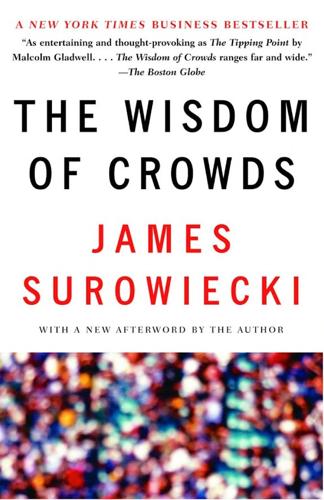
The Wisdom of Crowds
by
James Surowiecki
Published 1 Jan 2004
What’s intriguing about science from the perspective of collective problem solving is that it is the community as a whole that bestows the recognition, which is to say that it’s the community as a whole that decides whether or not a scientific hypothesis is true and whether it’s original. This doesn’t mean that scientific truth is in the eye of the beholder. The coronavirus caused SARS before the WHO announced that the coronavirus caused SARS. But in scientific terms, the coronavirus only became the cause of SARS once other scientists had scrutinized the work of the labs and accepted it as proving what they said it proved. Academic labs and corporate research labs across the world are now busy working on possible tests and vaccines for SARS, all predicated on the idea that the SARS virus is a coronavirus. They are doing so only because the scientific community has reached—in an indirect way—a consensus on the issue.
…
That same day, scientists at the Centers for Disease Control in the United States separately isolated a virus that, under the electron microscope, looked like what’s called a coronavirus. This was something of a surprise. Coronaviruses make animals very sick, but in humans their effects tend to be rather mild. But over the next week, labs in the network detected the coronavirus in a wide variety of samples from people who had been diagnosed with SARS. Labs in Germany, the Netherlands, and Hong Kong began sequencing the virus. In early April, monkeys in the Netherlands laboratory who had been infected with the coronavirus came down with full-blown cases of SARS. By April 16, a mere month after their collaboration had begun, the labs were confident enough to announce that the coronavirus did, in fact, cause SARS.
…
By April 16, a mere month after their collaboration had begun, the labs were confident enough to announce that the coronavirus did, in fact, cause SARS. The discovery of the SARS virus was, by any measure, a remarkable feat. And when we’re faced with a remarkable feat, our natural inclination is to ask: Who did it? Who actually discovered the cause of SARS? But the truth is, that’s an impossible question to answer. We know the name of the person who first spotted the coronavirus. She was an electron microscopist named Cynthia Goldsmith, who worked in the Centers for Disease Control and Prevention lab in Atlanta. But you can’t say she discovered what caused SARS, since it took weeks of work by labs all over the world to prove that the coronavirus actually made people sick.

The Authoritarian Moment: How the Left Weaponized America's Institutions Against Dissent
by
Ben Shapiro
Published 26 Jul 2021
Julia Marcus, epidemiologist at Harvard Medical School, and Gregg Gonsalves, epidemiologist at Yale School of Public Health, penned an article at The Atlantic claiming, “Public-health experts are weighing these same risks at a population level, and many have come to the conclusion that the health implications of maintaining the status quo of white supremacy are too great to ignore, even with the potential for an increase in coronavirus transmission from the protests.”10 The University of California, San Francisco, hospital gave doctors of color a day off after Floyd’s death; many of those doctors joined protests. One, Dr. Maura Jones, explained, “I would argue that, yeah I’m a doctor and I encourage you to social distance and I care about coronavirus and I know that it’s a real threat, but racism is, to me to my family, the bigger threat right now and it has been for hundreds of years.”
…
Vincent Barone, “NYC Black Lives Matter marches can continue despite large-event ban, de Blasio says,” NYPost.com, July 9, 2020, https://nypost.com/2020/07/09/nyc-allows-black-lives-matter-marches-despite-ban-on-large-events/. 9. Rachel Weiner, “Political and health leaders’ embrace of Floyd protests fuels debate over coronavirus restrictions,” WashingtonPost.com, June 11, 2020, https://www.washingtonpost.com/health/political-and-health-leaders-embrace-of-floyd-protests-fuels-debate-over-coronavirus-restrictions/2020/06/11/9c60bca6-a761-11ea-bb20-ebf0921f3bbd_story.html. 10. Julia Marcus and Gregg Gonsalves, “Public-Health Experts Are Not Hypocrites,” TheAtlantic.com, June 11, 2020, https://www.theatlantic.com/ideas/archive/2020/06/public-health-experts-are-not-hypocrites/612853/. 11.
…
Isaac Scher, “NYC’s contact tracers have been told not to ask people if they’ve attended a protest,” BusinessInsider.com, June 15, 2020, https://www.businessinsider.com/nyc-contact-tracers-not-asking-people-attend-george-floyd-protest-2020-6. 15. “COVID-19 Hospitalization and Death by Age,” CDC.gov, August 18, 2020, https://www.cdc.gov/coronavirus/2019-ncov/covid-data/investigations-discovery/hospitalization-death-by-age.html. 16. Yascha Mounk, “Why I’m Losing Trust in the Institutions,” Persuasion.community, December 23, 2020, https://www.persuasion.community/p/why-im-losing-trust-in-the-institutions. 17. Abby Goodnough and Jan Hoffman, “The Elderly vs. Essential Workers: Who Should Get the Coronavirus Vaccine First?,” NYTimes.com, December 5, 2020, https://www.nytimes.com/2020/12/05/health/covid-vaccine-first.html. 18.

A Hacker's Mind: How the Powerful Bend Society's Rules, and How to Bend Them Back
by
Bruce Schneier
Published 7 Feb 2023
article=1321&context=mslj. 146over 6,000 lobbyists: Taylor Lincoln (1 Dec 2017), “Swamped: More than half the members of Washington’s lobbying corps have plunged into the tax debate,” Public Citizen, https://www.citizen.org/wp-content/uploads/migration/swamped-tax-lobbying-report.pdf. 146gift for Teach For America: Valerie Strauss (16 Oct 2013), “The debt deal’s gift to Teach For America (yes, TFA),” Washington Post, https://www.washingtonpost.com/news/answer-sheet/wp/2013/10/16/the-debt-deals-gift-to-teach-for-america-yes-tfa. 147how real estate investors could offset: Jesse Drucker (26 Mar 2020), “Bonanza for rich real estate investors, tucked into stimulus package,” New York Times, https://www.nytimes.com/2020/03/26/business/coronavirus-real-estate-investors-stimulus.html. Nicholas Kristof (23 May 2020), “Crumbs for the hungry but windfalls for the rich,” New York Times, https://www.nytimes.com/2020/05/23/opinion/sunday/coronavirus-economic-response.html. 147Republican staffers added the provision: Akela Lacy (19 Apr 2020), “Senate Finance Committee Democrats tried to strike millionaire tax break from coronavirus stimulus—then failed to warn others about it,” Intercept, https://theintercept.com/2020/04/19/coronavirus-cares-act-millionaire-tax-break. 147This kind of thing is so common: GOP congressional aide Billy Pitts said in 2017: “What got snuck into there?
…
The rise and fall of a massive industry based on missed call,” Rest of World, https://restofworld.org/2021/the-rise-and-fall-of-missed-calls-in-india/. 27Homeschooling during the: Tribune Web Desk (14 May 2020), “Students find ‘creative’ hacks to get out of their Zoom classes, video goes viral,” Tribune of India, https://www.tribuneindia.com/news/lifestyle/students-find-creative-hacks-to-get-out-of-their-zoom-classes-video-goes-viral-84706. 27one-star reviews: Anthony Cuthbertson (9 Mar 2020), “Coronavirus: Quarantined school children in China spam homework app with 1-star reviews to get it off app store,” Independent, https://www.independent.co.uk/life-style/gadgets-and-tech/news/coronavirus-quarantine-children-china-homework-app-dingtalk-a9387741.html. 27Recall Gödel: Kimberly D. Krawiec and Scott Baker (2006), “Incomplete contracts in a complete contract world,” Florida State University Law Review 33, https://scholarship.law.duke.edu/faculty_scholarship/2038. 27systems of trust: Bruce Schneier (2012), Liars and Outliers: Enabling the Trust that Society Needs to Thrive, John Wiley & Sons. 28complexity is the worst enemy of security: Bruce Schneier (19 Nov 1999), “A plea for simplicity: You can’t secure what you don’t understand,” Information Security, https://www.schneier.com/essays/archives/1999/11/a_plea_for_simplicit.html. 6.
…
AOC lashed out after lawmakers got only hours to read and pass the huge 5,593-page bill to secure COVID-19 relief,” Business Insider, https://www.businessinsider.com/aoc-angry-representatives-2-hours-read-covid-19-stimulus-bill-2020-12. 149The measure contained $110 billion: Yeganeh Torbati (22 Dec 2020), “Tucked into Congress’s massive stimulus bill: Tens of billions in special-interest tax giveaways,” Washington Post, https://www.washingtonpost.com/business/2020/12/22/congress-tax-breaks-stimulus. 149Many lawmakers were unaware: Akela Lacy (19 Apr 2020), “Senate Finance Committee Democrats tried to strike millionaire tax break from coronavirus stimulus—then failed to warn others about it,” Intercept, https://theintercept.com/2020/04/19/coronavirus-cares-act-millionaire-tax-break. 36. MUST-PASS LEGISLATION 151the logic behind single-subject laws: US Congress (10 Apr 2019; latest action 20 May 2019), H.R. 2240: One Subject at a Time Act, 116th Congress, https://www.congress.gov/bill/116th-congress/house-bill/2240. 151Minnesota’s constitution: State of Minnesota (13 Oct 1857; revised 5 Nov 1974), Constitution of the State of Minnesota, Article IV: Legislative Department, https://www.revisor.mn.gov/constitution/#article_4. 152an older Pennsylvania Supreme Court case: Richard Briffault (2019), “The single-subject rule: A state constitutional dilemma,” Albany Law Review 82, https://scholarship.law.columbia.edu/cgi/viewcontent.cgi?
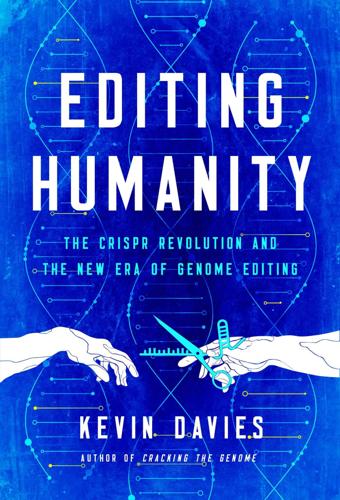
Editing Humanity: The CRISPR Revolution and the New Era of Genome Editing
by
Kevin Davies
Published 5 Oct 2020
“First rounders: Feng Zhang,” Nature Biotechnology, podcast audio, October 1, 2018, https://www.nature.com/articles/nbt0918-784. 13. J. Achenbach and L. McGinley, “FDA gives emergency authorization for CRISPR-based diagnostic tool for coronavirus,” Washington Post, May 7, 2020, https://www.washingtonpost.com/health/fda-gives-emergency-authorization-for-crispr-based-diagnostic-tool-for-coronavirus/2020/05/07/f98029bc-9082-11ea-a9c0-73b93422d691_story.html. 14. Carl Zimmer, “With Crispr, a Possible Quick Test for the Coronavirus,” New York Times, May 5, 2020, https://www.nytimes.com/2020/05/05/health/crispr-coronavirus-covid-test.html. 15. Darrell Etherington, “Pinterest CEO and a team of leading scientists launch a self-reporting COVID-19 tracking app,” TechCrunch, April 2, 2020, https://techcrunch.com/2020/04/02/pinterest-ceo-and-a-team-of-leading-scientists-launch-a-self-reporting-covid-19-tracking-app/. 16.
…
Schreiber even attached superhero names to his group, including Batman (Ben Cravatt) and Wonder Woman (Akiko Iwasaki). Iron Man is part of a different superhero universe, so Liu is Cyborg—half man, half machine, genius intellect. Alas, humans don’t have their own version of CRISPR superpower to cut down the coronavirus—but perhaps one day they could receive it. At Stanford, Stanley Qi leads an effort to deploy CRISPR-Cas13 in a method called PAC-MAN, designing CRISPR guide RNAs to seek out and destroy coronavirus RNA sequences.18 After all, why wouldn’t the most popular, versatile tool in the biotechnology arsenal be used to vanquish the virus? The irony of this emergency call to arms was not lost on Doudna, Zhang, or any of their colleagues.
…
Meanwhile, two of Zhang’s protégés, Omar Abudayyeh and Jonathan Gootenberg, joined Zhang, Pardis Sabeti, and the cofounders of Sherlock Biosciences; you don’t need to be a pipe-smoking detective to know what their system is called.VI Here’s an example: let’s say we want to program Cas12 to detect the SARS-CoV-2 virus responsible for the COVID-19 pandemic. A series of guide RNAs are designed to recognize certain sequences that have been amplified from the coronavirus genome. But once Cas12 recognizes that sequence, a new enzymatic property is switched on, such that it will cut (and keep cutting) any single-stranded DNA molecules in the vicinity. By adding reporter molecules that light up when cut, the presence of even trace amounts of the virus can be detected using a simple color assay on a paper strip.23 Similarly, the Cas13 family can be used to detect infections such as flu, dengue, and Zika, and of course COVID-19.24 Once activated, Cas13 exhibits what Zhang calls “collateral RNase activity”—it keeps cutting RNA.

The Long Game: China's Grand Strategy to Displace American Order
by
Rush Doshi
Published 24 Jun 2021
,” in Chinese Politics as Fragmented Authoritarianism (New York: Routledge, 2017), 38–55. 55Suisheng Zhao, “China’s Foreign Policy Making Process: Players and Institutions,” in China and the World, ed. David Shambaugh (Oxford: Oxford University Press, 2020), 94. 56Li Yuan, “Coronavirus Crisis Shows China’s Governance Failure,” New York Times, February 4, 2020, https://www.nytimes.com/2020/02/04/business/china-coronavirus-government.html?action=click&module=Top%20Stories&pgtype=Homepage. 57Quoted in Jerry F. Hough and Merle Fainsod, How the Soviet Union Is Governed (Cambridge, MA: Harvard University Press, 1979), 19. 58See Shambaugh, China’s Communist Party, 141–43. 59Yun Sun, “Chinese Public Opinion: Shaping China’s Foreign Policy, or Shaped by It?
…
From China’s perspective—which is highly sensitive to changes in its perceptions of American power and threat—these two events were shocking. Beijing believed that the world’s most powerful democracies were withdrawing from the international order they had helped erect abroad and were struggling to govern themselves at home. The West’s subsequent response to the coronavirus pandemic in 2020, and then the storming of the US Capitol by extremists in 2021, reinforced a sense that “time and momentum are on our side,” as Xi Jinping put it shortly after those events.3 China’s leadership and foreign policy elite declared that a “period of historical opportunity” [历史机遇期] had emerged to expand the country’s strategic focus from Asia to the wider globe and its governance systems.
…
China’s second strategy of displacement (2008–2016) sought to build the foundation for regional hegemony in Asia, and it was launched after the Global Financial Crisis led Beijing to see US power as diminished and emboldened it to take a more confident approach. Now, with the invocation of “great changes unseen in a century” following Brexit, President Trump’s election, and the coronavirus pandemic, China is launching a third strategy of displacement, one that expands its blunting and building efforts worldwide to displace the United States as the global leader. In its final chapters, this book uses insights about China’s strategy to formulate an asymmetric US grand strategy in response—one that takes a page from China’s own book—and would seek to contest China’s regional and global ambitions without competing dollar-for-dollar, ship-for-ship, or loan-for-loan.
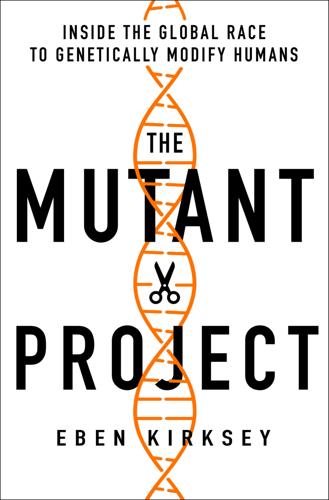
The Mutant Project: Inside the Global Race to Genetically Modify Humans
by
Eben Kirksey
Published 10 Nov 2020
On Facebook, some people joked about CRISPR rescuing us from the coronavirus pandemic. One friend made a post on my wall about ACE2, the receptor that the virus uses to get into cells. “We just need to get rid of ACE2 receptors!!!” she wrote. “Why didn’t they tell us this before!? Life saver! I’ll go cut mine off now!” During the pandemic, the American public watched as the latest scientific knowledge and technological devices failed to protect them. A vaccine or a cure was nowhere in sight. Even so, some journalists tried to hold on to high-tech dreams. Wired magazine breathlessly reported results from an unpublished coronavirus experiment under a dramatic headline: “Could CRISPR Be Humanity’s Next Virus Killer?”
…
See also Southern University of Science and Technology Children’s Hospital of Philadelphia (CHOP) China Dream policy “China Dream” speech (Xi) China National GeneBank Chinese Exclusion Act Church, George (geneticist) Clapper, James (Director of National Intelligence, 2010–2017) Clinton, Bill (president of the United States, 1993–2001) Cohen, Jon (journalist) Cold Spring Harbor Laboratory conflicts of interest CRISPR scientists and death of Jesse Gelsinger and He, Jiankui, and Penn Medicine and coronavirus pandemic cosmetic surgery COVID-19. See coronavirus pandemic Crick, Francis (geneticist) DNA research of Nobel Prize awarded to crip (crippled) Crips in Space supercrips See also ableism; disability CRISPR approval of first clinical trial (June 2016) CRISPR-Cas9 discovery of “editing” metaphor and ethics and first edited babies (Lulu and Nana, October 2018) first edited human embryo (April 2015) function of how-to guide human reproduction and limited effectiveness in adults military uses of mutations and off-target genetic damage power of price of profit-driven experiments unpredictability of See also Charpentier, Emmanuelle; Church, George; Doudna, Jennifer; He, Jiankui; Huang, Junjiu; ICSI; in vitro fertilization CRISPR Sperm Bank (artwork) CRISPR Therapeutics cryptocurrency “Cyborg Manifesto” (Haraway) cystic fibrosis Daisy, Mike (storyteller) Daley, George (molecular biologist) Darnovsky, Marcy (policy advocate) Darwin, Charles (biologist) Davis, Machiavelli (biohacker) Deem, Michael (physicist and bioengineer) co-author of Nature manuscript CRISPR experiment involvement mentor to Jiankui He not charged with crime Defense Advanced Research Projects Agency (DARPA) Deng, Xiaoping (paramount leader, People’s Republic of China, 1982–1987) Derrida, Jacques (philosopher) de Vries, Hugo (biologist) Dialectic of Sex, The (Firestone) Dikötter, Frank (historian) Direct Genomics (Jiankui He start-up) disability abortion and enhancement and euthanasia and X-Men and See also ableism; crip; Down Syndrome disability rights Disability Visibility Project Discourse of Race in Modern China, The (Dikötter) diversity biodiversity CRISPR and disability and genetic testing and human neurodiversity science and sexual DNA building block of life databases GenBank history of discovery as a language mutations to police use of Recombinant DNA Advisory Committee (RAC) See also genes; gene therapy; genetic testing; sequencing genes DNA Dreams (documentary) Doctorow, Cory (science fiction author) Dolezal, Rachel (former NAACP chapter president) double-stranded break (in DNA), described.
…
Some achieved concrete results. Jay Johnson started working in the medical profession in the early 1980s when early reports of a “gay men’s disease” first started to emerge. Officially the illness was called GRID, or “gay-related immune deficiency,” and nobody knew how it was transmitted, like in the early days of coronavirus. “Colleagues who I respected refused to take care of these people—they were afraid,” Jay Johnson said. “There were only a handful of us who would take care of them. It was really bad times.” When Jay Johnson’s best friend was diagnosed with HIV/AIDS in 1990, the medical community was still struggling to develop effective treatments.

Culture Warlords: My Journey Into the Dark Web of White Supremacy
by
Talia Lavin
Published 14 Jul 2020
Perhaps most chillingly, white supremacists embraced the social chaos created by the economic collapse and fear caused by the novel coronavirus in 2020, reveling among themselves about its implications as a precursor to their beloved “Boogaloo.” On March 24, 2020, thirty-six-year-old Timothy Wilson was shot dead in a conflict with the FBI in Kansas City, Missouri. He had been under investigation as a domestic terrorist for months, and had been planning to bomb a building in the Kansas City area to gain attention for his white-supremacist views. Amid the terror surrounding the novel coronavirus, the FBI said, he decided to take advantage of “the increased impact given the media attention on the health sector” and planned to set off a car bomb at a hospital.
…
The most popular name for it is “the Boogaloo,” a reference to a widely panned 1984 sequel to a breakdancing movie, Breakin’ 2: Electric Boogaloo, only the sequel in question here is to the Civil War. In the late spring of 2020, the term Boogaloo experienced an explosion of popularity, as a series of far-right protests against coronavirus quarantine and lockdown orders by state governments spread across the United States. The protesters were a loose coalition of heavily armed white nationalists, antivaccine activists, conspiracy theorists, and members of the antigovernment militia movement. As the watchdog group the Tech Transparency Project reported, a large network of Facebook pages dedicated to the Boogaloo—and variants like “big luau,” “boog,” and “big igloo,” designed to evade moderators—shared extremist content, including a report on how to disrupt US government supply lines and assassinate government officials.
…
After years of measures to torment migrants—such as the administration’s “Remain in Mexico” policy, which stranded tens of thousands of asylum seekers in squalid and dangerous refugee camps on the Mexican side of the US border—and slash legal immigration, Miller quietly took advantage of the uncertainty and fear of the coronavirus pandemic of 2020 to enact the most ambitious anti-immigration actions of the Trump administration. While the justification for new anti-immigrant policies was putatively economic, Miller helped to ensconce in federal policy the long-held white-supremacist belief that immigrants bring disease. On April 22, 2020, Trump signed a Miller-engineered executive order barring new green cards from being issued.

AI 2041: Ten Visions for Our Future
by
Kai-Fu Lee
and
Qiufan Chen
Published 13 Sep 2021
Meanwhile, the air filtration system was humming at full force, its nano super filter intercepting impurities, from large-size dust particles to the coronavirus, with its diameter of just 0.06 to 0.14 microns. Chen Nan walked from the bedroom into her bathroom, carelessly reaching for her toothbrush. The mirror in her bathroom displayed indoor air quality alongside live COVID-19 case updates of various major cities around the globe, the lines of numbers and words unfolding, rolling, and refolding in correspondence to the trajectory of her gaze, so that the display wouldn’t affect her wash-up routine. Since its first arrival in the human population, in 2019, the coronavirus had evolved into a seasonal outbreak.
…
As a child, he, too, had witnessed family and friends die one by one due to the government’s ineffectiveness in containing the coronavirus. The Brazilian medical system had collapsed under the overwhelming number of infected patients, anxiety looming over the people like an ominous cloud. Chen Nan and Garcia both belonged to the “COVID Gen,” hundreds of millions of people whose youth had been so affected by COVID-19 that it shaped the course of their lives, both physically and psychologically. For Chen Nan, however, the effects of the trauma had grown more debilitating as she grew older. In his effort to dispel her fears over meeting up, Garcia tried to convince Chen Nan that the coronavirus was not as dangerous as she thought.
…
Aside from complicated office politics and the alarming amount of ineffective communication, the major reason she had quit was a moderate COVID outbreak. An investor, a die-hard fan of raw seafood, had been infected by a new Arctic-born mutation of the coronavirus while shopping at a market in Scandinavia. He displayed no symptoms the first month upon his arrival back home in China. During that time, he visited a dozen start-up companies, including the one Chen Nan worked for, spreading the virus to nearly a hundred others. After the investor became symptomatic, the local coronavirus control and prevention office immediately classified the case as a new variant superspreader event and sent out a nationwide alert.
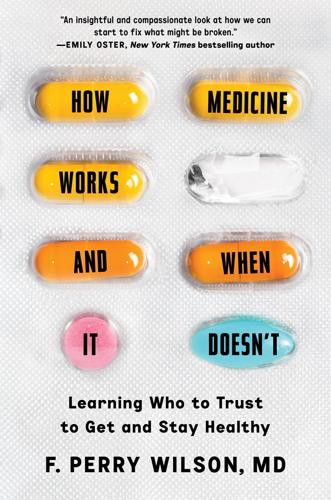
How Medicine Works and When It Doesn't: Learning Who to Trust to Get and Stay Healthy
by
F. Perry Wilson
Published 24 Jan 2023
We believe that there are cures for every disease (even if many are undiscovered), but we also know that those discoveries come at a cost—that long string of failures. Cures don’t happen out of the blue. The Cure May Exist, but Not Where You Think If there was a true turning point in the coronavirus pandemic, it was December 14, 2020, when Sandra Lindsay became the first person in the United States to receive a coronavirus vaccine outside of a clinical trial. The success of the coronavirus vaccines was beyond what any of us dared to hope for. In fact, in October 2020, I wrote a piece for Vox preemptively arguing that a vaccine with 50 percent efficacy would be an incredible achievement and could turn the tide of the pandemic (if people would actually take it).
…
If you feel that unrestricted gun purchasing poses a public health threat and encourages more violence, you are likely to interpret the link between gun ownership and homicide as strong evidence that guns cause people to hurt others. Same fact, different interpretation. That is motivated reasoning. Motivated reasoning about medical topics is nothing new, but in the summer of 2021, the death toll associated with it began to rise significantly. Motivated Reasoning and Vaccine Hesitancy The coronavirus pandemic had raged throughout 2020, keeping my hospital full and my colleagues and me in a near-constant panic around our own safety and that of our families. But by December 2020, the first vaccines received emergency use authorization by the FDA. I likened it, in a live CNN segment, to J. R. R.
…
If another loved one was admitted today and you asked the doctor when the aggressive fluid resuscitation would begin, they would tell you, “Well, it won’t.” This feels fickle. Examples abound of well-informed doctors changing their tunes. In the 1980s, if you asked a doctor how to lose weight, they would tell you to avoid eating fat. Today, they would be much more likely to tell you to avoid eating carbs. During the coronavirus pandemic, Anthony Fauci, director of the National Institute of Allergy and Infectious Diseases, was pilloried in the right-wing media for his changeable stance on mask wearing. Early in the pandemic, when hand-to-hand transmission was thought to be the main infection route, Fauci had argued that masks were not helpful.
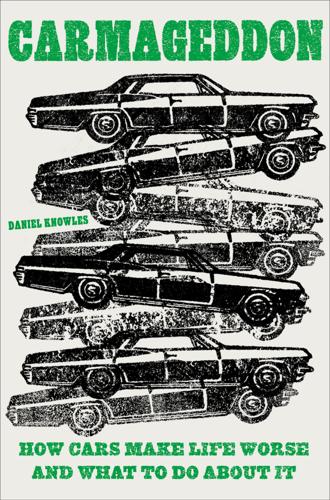
Carmageddon: How Cars Make Life Worse and What to Do About It
by
Daniel Knowles
Published 27 Mar 2023
Most die as “a result of increased mortality from stroke, heart disease, chronic obstructive pulmonary disease, lung cancer and acute respiratory infections.” Big numbers can be difficult to process, but for comparison, according to my employer, The Economist, which developed a tracker of “excess deaths,” roughly eighteen million people were probably killed worldwide in total by the coronavirus pandemic in 2020 and 2021. So outdoor air pollution kills half as many people each year as coronavirus did—year in and year out—and yet we shut down our economies to prevent COVID-19 from spreading, but with air pollution we often carry on as though it is normal—an acceptable risk. The reason is partly that the vast majority of deaths happen in the poorest countries.
…
In America auto firms were given a $25 billion loan. In Germany the government introduced a car scrappage scheme whereby car buyers were paid to buy new cars. France has given away billions to keep Renault manufacturing. In 2020 a whole new raft of state support was introduced to help car firms through the coronavirus recession. The French government alone gave €8 billion to its car industry to keep it going. Yet the problem is more fundamental than just cheap gasoline and direct subsidies for the car industry. If people did not need cars in their daily lives, it would not matter how cheap gasoline was or how many car factories were propped up with government subsidies.
…
From 2010 to 2018, the number of people using bikes daily to get around Paris, including in the suburbs, increased by 30 percent. In the past twenty years, the proportion of Parisian households (in the city proper) who own a car has fallen from 60 percent to 35 percent. Air pollution, which peaked in 2016, has been gradually falling. And since the start of the coronavirus pandemic, the transformation has accelerated dramatically. When the city shut down in March 2020, Hidalgo quickly realized that with public transport off limits for safety reasons, the city needed to make sure that Parisians did not all get back into their cars. Pretty much overnight, it installed 60 kilometers of new bicycle lanes, quickly nicknamed coronapistes by locals.
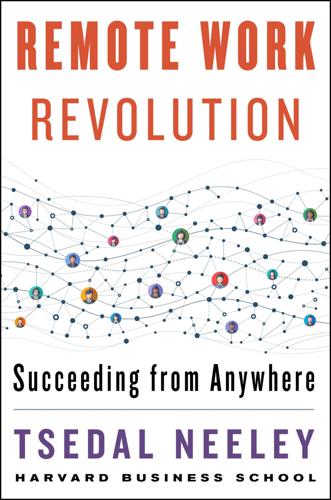
Remote Work Revolution: Succeeding From Anywhere
by
Tsedal Neeley
Published 14 Oct 2021
A kind of litmus test for competent framing of the situation was apparent in the varying responses leaders adopted in late 2019 and early 2020, when the world first became aware of the existence and threat of a novel coronavirus spreading rapidly across national borders. Consider, first, how the leadership in New Orleans, Louisiana, framed the situation. In the month or so leading up to the annual Mardi Gras festival, which attracts more than a million people from all over the world, the U.S. government issued a report that the novel coronavirus detected in China was a low threat to the American public. The mayor, along with the city’s top health official and the carnival planners, took the report at face value.
…
The future is in remote work. None of these trends or predictions, however, accounted for a global pandemic that would require the wholesale migration of nearly entire companies to remote work in a matter of weeks. The remote work revolution, long in coming, was accelerated by the sudden and severe coronavirus outbreak. Chances are you are part of the massive transition that has forced companies to rapidly advance their digital footprint including cloud, storage, cybersecurity, and device and tool usages to accommodate their new virtual workforce. These changes have opened up a whole new scope of untold opportunities for people and organizations across the globe.
…
These key features of the agile process seem to make it incompatible with distributed teams or people working remotely. However, as you will see later in the chapter, agile processes have been scaled to globally distributed teams with great success, and have also thrived in a remote format—even for collocated agile teams suddenly ordered to stay at home as the coronavirus raged. Remote teams and managers can take heart—if a methodology that’s so intensely dependent on daily, collocated meetings can be transformed to remote success, then anything can. BEYOND SOFTWARE The Agile Manifesto originated in software development, but since then its methods have become appealing in a world where product cycles are shorter and shorter, and information becomes more and more plentiful.

You've Been Played: How Corporations, Governments, and Schools Use Games to Control Us All
by
Adrian Hon
Published 14 Sep 2022
CHAPTER SEVEN: “I’VE DONE MY RESEARCH” 1. Elizabeth Weise, “Internet Provided Way to Pay Bills, Spread Message Before Suicide,” Seattle Times, March 28, 1997, https://archive.seattletimes.com/archive/?date=19970328&slug=2531080. 2. Rebecca Heilweil, “How the 5G Coronavirus Conspiracy Theory Went from Fringe to Mainstream,” Recode, Vox, Vox Media, April 24, 2020, www.vox.com/recode/2020/4/24/21231085/coronavirus-5g-conspiracy-theory-covid-facebook-youtube; Marianna Spring, “Wayfair: The False Conspiracy About a Furniture Firm and Child Trafficking,” BBC News, July 15, 2020, www.bbc.com/news/world-53416247. 3. KiMi Robinson (@kimirobin), “I’ve seen no fewer than 6 Phoenix-area Instagram influencers post about the Wayfair conspiracy theory so far.
…
Cahal Milmo, “Revealed: How British Empire’s Dirty Secrets Went up in Smoke in the Colonies,” Independent, November 29, 2013, www.independent.co.uk/news/uk/home-news/revealed-how-british-empire-s-dirty-secrets-went-smoke-colnies-8971217.html; Jonathan Levinson, Conrad Wilson, James Doubek, and Suzanne Nuyen, “Federal Officers Use Unmarked Vehicles to Grab People in Portland, DHS Confirms,” Oregon Public Broadcasting, National Public Radio, July 17, 2020, www.npr.org/2020/07/17/892277592/federal-officers-use-unmarked-vehicles-to-grab-protesters-in-portland. 54. Sarah Boseley, “Statistics Watchdog: Ministers Still Misleading Public on Coronavirus Tests,” Guardian, June 2, 2020, www.theguardian.com/world/2020/jun/02/statistics-watchdog-ministers-still-misleading-public-on-coronavirus-tests; Rick Rouan, “Fact Check: Missing Context in Claim About Emails, Fauci’s Position on Masks,” USA Today, June 3, 2021, www.usatoday.com/story/news/factcheck/2021/06/03/fact-check-missing-context-claim-mask-emails-fauci/7531267002. 55.
…
“The HK19 Manual—Part 1: The Roles,” accessed November 28, 2021, https://docs.google.com/document/d/1ZrIiXypVUvPIRs9JG8AsU55FkLsz81pqZstKQcbsAHc/edit#. 10. u/Franky_95, “OFFICIAL: The Prime Minister confirmed in a press conference that ALL Italy is on quarantine, not only the region of Lombardy.” r/Coronavirus, Reddit, March 9, 2020, www.reddit.com/r/Coronavirus/comments/fg1gcp/official_the_prime_minister_confirmed_in_a_press/fk1w0q5/?context=1. 11. “Statement on the Removal of Plague Inc. from the China App Store and Steam,” Ndemic Creations, February 26, 2020, www.ndemiccreations.com/en/news/173-statement-on-the-removal-of-plague-inc-from-the-china-app-store; “Plague Inc.
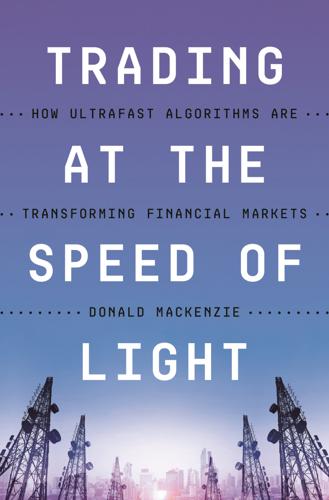
Trading at the Speed of Light: How Ultrafast Algorithms Are Transforming Financial Markets
by
Donald MacKenzie
Published 24 May 2021
Wall Street Journal, March 25. Available at https://wsj.com/articles/thinning-liquidity-in-key-futures-market-worries-traders-11553515200, accessed December 24, 2019. ________. 2020. “Post-Flash Crash Fixes Bolstered Markets during Coronavirus Selloff.” Wall Street Journal, May 5. Available at https://www.wsj.com/articles/post-flash-crash-fixes-bolstered-markets-during-coronavirus-selloff-11588671000, accessed May 5, 2020. Pagliari, Stefano, and Kevin Young. 2016. “The Interest Ecology of Financial Regulation: Interest Group Plurality in the Design of Financial Regulatory Policies.” Socio-Economic Review 14/2: 309–337.
…
The market-data-processing firm Exegy continuously measures the numbers of messages flowing through its equipment in NY4; at the time of writing, the peak recorded on its system was a burst equivalent to 105.3 million messages per second, at 2:39 p.m. on July 19, 2018.11 The core systems of automated trading can keep working with little direct human intervention. That became evident in March 2020, as lockdowns belatedly began in Western countries and it finally became clear to their financial markets just how serious the coronavirus epidemic was. Huge amounts of turbulent trading took place, and crucial markets were badly disrupted, including the market for the traditionally safest of safe assets, Treasurys, which as already noted are the sovereign debt securities of the United States. In April, the prices of oil futures even briefly became negative, as a result of the combination of reduced demand for oil and difficulties in storing it.
…
I was also taken on tours of trading floors, including the two that still had genuinely significant roles: the main trading room of the New York Stock Exchange, which is important during the NYSE’s daily opening and closing auctions, and the section of the trading floor of the Chicago Board Options Exchange which trades options on the Standard & Poor’s 500 share-price index. (Face-to-face trading had, of course, to be suspended as the coronavirus epidemic peaked, and at the time of writing, in June 2020, it has restarted only partially.) I’m not an economist, and this book does not try to answer the questions that economists have traditionally asked about HFT, such as whether it increases market liquidity or volatility; see the appendix on the literature on HFT.
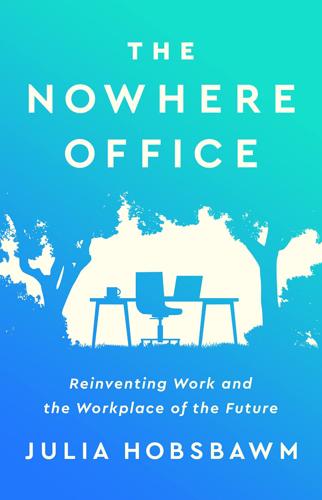
The Nowhere Office: Reinventing Work and the Workplace of the Future
by
Julia Hobsbawm
Published 11 Apr 2022
As the legendary American social historian Studs Terkel put it in his epic study Working: ‘Work is about a search for daily meaning as well as daily bread, for recognition as well as cash, for astonishment rather than torpor; in short, for a sort of life rather than a Monday through Friday sort of dying.’3 The world of work was already quite sick before the coronavirus took hold. According to the American Institute of Stress 83 per cent of American workers suffer from work-related illnesses. In South Korea the working week was reduced in 2018 because of ‘Gwarosa’ or ‘death from overwork’. The World Health Organisation (WHO) estimates that depression and anxiety alone cost the global economy $1 trillion every year.4 The pandemic lifted the lid on a desire to work differently, or less, or with more work–life balance.
…
One year into the global grip of Covid-19, Transport for London, which runs the city’s buses and tube trains, needed a £1.08 billion bailout;35 in New York the MTA, which runs the subway, was awarded $4 billion in the 2020 Covid stimulus bill. Although inevitably the numbers of passengers began to creep back up and down again following the up and down cycles of the coronavirus, commuting and business travel have become seen as largely expendable by many people. The biggest beneficiaries of the shift to placelessness are the true digital nomads, those who can up sticks and relocate anywhere there is broadband. Typically this means those without children or other caring responsibilities, i.e.
…
‘The Future of Jobs Report 2020’, World Economic Forum, 20 October 2020, https://www.weforum.org/reports/the-future-of-jobs-report-2020; see also McKinsey Global Institute, ‘The Future of Work After Covid-19’, 18 February 2021, https://www.mckinsey.com/featured-insights/future-of-work/the-future-of-work-after-covid-19; ‘More Than Half of Employees Globally Would Quit Their jobs if Not Provided Post-Pandemic Flexibility’, 21 May 2021, https://www.ey.com/en_ro/news/2021/05/ey-study--more-than-half-of-employees-globally-would-quit-their-; Department for Professional Employees, AFL-CIO, ‘The Professional and Technical Workforce: By the Numbers’, 2021 Fact Sheet, 27 September 2021, https://www.dpeaflcio.org/factsheets/the-professional-and-technical-workforce-by-the-numbers 5. See data from Office for National Statistics Coronavirus (Covid-19) Latest Insights: Work, https://www.ons.gov.uk/peoplepopulationandcommunity/healthandsocialcare/conditionsanddiseases/articles/coronaviruscovid19latestinsights/work; and the World Bank: Michael Weber and David Newhouse, ‘These Types of Workers Were Most Impacted by the Covid-19 Pandemic’, World Bank Blogs, 23 September 2021, https://blogs.worldbank.org/jobs/these-types-workers-were-most-impacted-covid-19-pandemic 6.
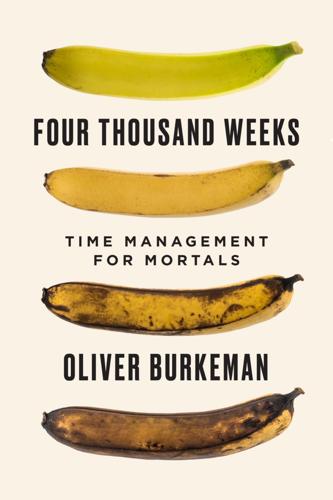
Four Thousand Weeks: Time Management for Mortals
by
Oliver Burkeman
Published 9 Aug 2021
It’s hard to imagine a crueler arrangement: not only are our four thousand weeks constantly running out, but the fewer of them we have left, the faster we seem to lose them. And if our relationship to our limited time has always been a difficult one, recent events have brought matters to a head. In 2020, in lockdown during the coronavirus pandemic, with our normal routines suspended, many people reported feeling that time was disintegrating completely, giving rise to the disorienting impression that their days were somehow simultaneously racing by and dragging on interminably. Time divided us, even more than it had before: for those with jobs and small children at home, there wasn’t enough of it; for those furloughed or unemployed, there was too much.
…
Whenever I’m feeling resentful about deadlines, or the toddler’s unpredictable sleep patterns, or other incursions upon my temporal sovereignty, I try to remember the cautionary tale of Mario Salcedo, a Cuban American financial consultant who almost certainly holds the record for the number of nights spent aboard cruise ships. There’s little question that Super Mario—as he’s known to the staff of Royal Caribbean Cruises, the firm to which he’s been loyal for most of his two decades, as a resident of the oceans, with the 2020 coronavirus pandemic the only major interruption—is in full control of his time. “I don’t have to take out the garbage, I don’t have to clean, I don’t have to do laundry—I’ve eliminated all those non-value-added activities, and just have all the time in the world to enjoy what I like to do,” he once told the filmmaker Lance Oppenheim, poolside on board the Enchantment of the Seas.
…
For the least privileged, the dominance of this kind of freedom translates into no freedom at all: it means unpredictable gig-economy jobs and “on-demand scheduling,” in which the big-box retailer you work for might call you into work at any moment, its labor needs calculated algorithmically from hour to hour based on sales volume—making it all but impossible to plan childcare or essential visits to the doctor, let alone a night out with friends. But even for those of us who genuinely do have much more personal control over when we work than previous generations ever did, the result is that work seeps through life like water, filling every cranny with more to-dos, a phenomenon that seemed to only intensify during the coronavirus lockdown. It starts to feel as though you, your spouse, and your closest friends have all been assigned to different color-coded Soviet work groups. The reason it’s so hard for my wife and me to find an hour in the week for a serious conversation, or for me and my three closest friends to meet for a beer, isn’t usually that we “don’t have the time,” in the strict sense of that phrase, though that’s what we may tell ourselves.

Off the Edge: Flat Earthers, Conspiracy Culture, and Why People Will Believe Anything
by
Kelly Weill
Published 22 Feb 2022
Johnson et al., “The Online Competition between Pro- and Anti-Vaccination Views,” Nature 582 (May 13, 2020): 230-33, https://doi.org/10.1038/s41586-020-2281-1. 121 “old IBM model” Meredith Wadman, “Vaccine Opponents Are Gaining in Facebook ‘Battle for Hearts and Minds,’ New Map Shows,” Science, May 13, 2020, www.sciencemag.org/news/2020/05/vaccine-opponents-are-gaining-facebook-battle-hearts-and-minds-new-map-shows. 121 truther movements online Susan Dominus, “The Crash and Burn of an Autism Guru,” New York Times, April 20, 2011, www.nytimes.com/2011/04/24/magazine/mag-24Autism-t.html. 122 top-performing vaccine posts Madrigal, “Small, Small World.” 122 One such Red Ice article Kelly Weill, Anti-Vaxxers Are Cozying Up to the Far Right Online,” Daily Beast, March 2, 2019, www.thedailybeast.com/anti-vaxxers-are-cozying-up-to-the-far-right-online. 122 online hate groups Nicolás Velásquez et al., “Hate Multiverse Spreads Malicious COVID-19 Content Online beyond Individual Platform Control,” Cornell University, April 21, 2020, https://arxiv.org/abs/2004.00673. 122 the guise of vaccination Jack Goodman and Flora Carmichael, “Coronavirus: Bill Gates ‘Microchip’ Conspiracy Theory and Other Vaccine Claims Fact-Checked,” BBC, May 30, 2020, https://www.bbc.com/news/52847648. 122 a laboratory error Will Sommer “Discredited Doctor and Sham ‘Science’ Are the Stars of Viral Coronavirus Doc ‘Plandemic,’ ” Daily Beast May 8, 2020, www.thedailybeast.com/plandemic-the-viral-coronavirus-documentary-stars-a-discredited-doctor-and-sham-science. 122 with the conspiratorial internet Davey Alba, “Virus Conspiracists Elevate a New Champion,” New York Times, May 9, 2020, https://www.nytimes.com/2020/05/09/technology/plandemic-judy-mikovitz-coronavirus-disinformation.html. 122 slickly produced video Brandy Zadrozny and Ben Collins, “As ‘#Plandemic’ Goes Viral, Those Targeted by Discredited Scientist’s Crusade Warn of ‘Dangerous’ Claims,” NBC News, May 7, 2020, www.nbcnews.com/tech/tech-news/plandemic-goes-viral-those-targeted-discredited-scientist-s-crusade-warn-n1202361. 123 “wouldn’t have found out about QAnon” Kelly Weill, “How ‘Plandemic’ Lures Normies down the Rabbit Hole,” Daily Beast, May 12, 2020, www.thedailybeast.com/how-conspiracy-theory-flick-plandemic-lures-normies-down-the-far-right-rabbit-hole. 124 deleted her social media accounts Sophie Tanno, “Vegan Chef and ‘Flat-Earther’ Is Branded a ‘Covidiot’ after Accusing Supermarket Staff of Discrimination for Not Letting Her into Store without a Mask,” Daily Mail, May 18, 2020, https://www.dailymail.co.uk/news/article-8330603/Woman-loses-cool-supermarket-wont-let-without-mask.html. 6: Alone in a Flat World 127 church that she later quit David Gilbert, “Finding Hope on a Flat Earth,” Colorado Community Media, December 11, 2018, https://coloradocommunitymedia.com/stories/finding-hope-on-a-flat-earth,274158. 127 “Jesus and the online Flat Earth community” NoLiesDomedSkies, “What Happens When You Become a Flat Earther,” YouTube video, August 14, 2018, www.youtube.com/watch?
…
I Wasn’t,” Medium, May 23, 2020, https://fightfortheftr.medium.com/facebook-told-my-followers-i-was-spreading-misinformation-about-government-surveillance-i-wasnt-63622dd7ae56. 204 “harassment and bullying” Sam Levin, “YouTube Under Fire for Censoring Video Exposing Conspiracy Theorist Alex Jones,” Guardian, April 23, 2018, www.theguardian.com/technology/2018/apr/23/youtube-alex-jones-sandy-hook-media-matters-video. 204 purge in 2019 Kelly Weill, “YouTube Crackdown on Extremism Also Deleted Innocent Videos,” Daily Beast, June 6, 2019, www.thedailybeast.com/youtube-crackdown-on-extremism-also-deleted-videos-combating-extremism. 205 accidentally flagged factual content Jay Peters, “Facebook Was Marking Legitimate News Articles about the Coronavirus as Spam Due to a Software Bug,” Verge, March 17, 2020, www.theverge.com/2020/3/17/21184445/facebook-marking-coronavirus-posts-spam-misinformation-covid-19. 205 Ethiopia passed a law “Ethiopia: Bill Threatens Free Expression,” Human Rights Watch, December 19, 2019, www.hrw.org/news/2019/12/19/ethiopia-bill-threatens-free-expression; Simon Marks, “67 Killed in Ethiopia Unrest, but Nobel-Winning Prime Minister Is Quiet,” New York Times, October 25, 2019, www.nytimes.com/2019/10/25/world/africa/ethiopia-protests-prime-minister.html. 205 basis to arrest a journalist Edrine Wanyama, “Ethiopia’s New Hate Speech and Disinformation Law Weighs Heavily on Social Media Users and Internet Intermediaries,” Collaboration on International ICT Policy for East and Southern Africa, July 22, 2020, https://cipesa.org/2020/07/ethiopias-new-hate-speech-and-disinformation-law-weighs-heavily-on-social-media-users-and-internet-intermediaries; “Ethiopian Journalist Yayesew Shimelis Detained Following COVID-19 Report,” Committee to Protect Journalists, April 1, 2020, https://cpj.org/2020/04/ethiopian-journalist-yayesew-shimelis-detained-fol/. 205 leaked documents obtained by the Guardian Alex Hern, “Revealed: How TikTok Censors Videos That Do Not Please Beijing,” Guardian, September 25, 2019, www.theguardian.com/technology/2019/sep/25/revealed-how-tiktok-censors-videos-that-do-not-please-beijing. 206 when and where to vote “Fighting Digital Disinformation,” Warren Democrats, https://elizabethwarren.com/plans/fighting-digital-disinformation. 206 exclusive banner Kelly Weill, “Flat Earthers Call Trump’s Space Force Idea ‘Impossible,’ ” Daily Beast, August 10, 2018, https://www.thedailybeast.com/flat-earthers-call-trumps-space-force-idea-impossible. 207 Flat Mars Society Elon Musk (@elonmusk), “Why is there no Flat Mars Society!?”
…
When some of those protesters were later implicated in a plot to kidnap the governor of Michigan, Trump doubled down on his criticism of the governor. It seemed almost inevitable, in these circumstances, that people who would normally scoff at Flat Earthers would begin watching their videos about coronavirus conspiracy theories. Nathan Roberts (one of several Nates to give presentations at the Flat Earth Intentional Conference) racked up millions of views on a video that falsely claimed protective face masks were a human rights violation. Using the same confrontational tactics that made “flat-smacking” videos a hit, Roberts prowled a supermarket, telling people, incorrectly, that they could cite a religious exemption to avoid the store’s face mask requirements.
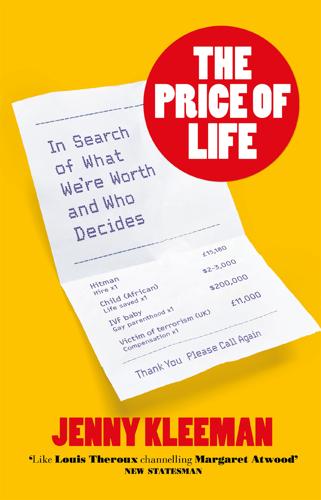
The Price of Life: In Search of What We're Worth and Who Decides
by
Jenny Kleeman
Published 13 Mar 2024
country=GBR 451 people https://github.com/CSSEGISandData/COVID-19 more than 150 protesters Gayle, Damien and Busby, Mattha, ‘Police arrest 155 anti-lockdown protesters in London’, The Guardian (28 November 2020). https://www.theguardian.com/world/2020/nov/28/met-police-anti-lockdown-protest-london The Argus Doherty-Cove, Jody, ‘Lockdown protest leader was on Labour’s Executive Committee’, The Argus (22 May 2020). https://www.theargus.co.uk/news/18467876.lockdown-protest-leader-labours-executive-committee/ Covid death figures ‘The pandemic’s true death toll’, Economist (25 October 2022). https://www.economist.com/graphic-detail/coronavirus-excess-deaths-estimates?fsrc=core-app-economist?utm_medium=social-media.content.np&utm_source=twitter&utm_campaign=editorial-social&utm_content=discovery.content stay at home Sandford, Alasdair, ‘Coronavirus: Half of humanity now on lockdown as 90 countries call for confinement’, Euronews (2 April 2020). https://www.euronews.com/2020/04/02/coronavirus-in-europe-spain-s-death-toll-hits-10-000-after-record-950-new-deaths-in-24-hou World Bank ‘COVID-19 to Add as Many as 150 Million Extreme Poor by 2021’, World Bank (7 October 2020). https://www.worldbank.org/en/news/press-release/2020/10/07/covid-19-to-add-as-many-as-150-million-extreme-poor-by-2021 shutting the economy down Yakusheva, Olga; van den Broek-Altenburg, Eline; Brekke, Gayle; and Atherly, Adam, ‘Lives saved and lost in the first six month of the US COVID-19 pandemic: A retrospective cost-benefit analysis’, Plos One (21 January 2022). https://journals.plos.org/plosone/article?
…
id=10.1371/journal.pone.0261759 compared with 2019 ‘Alcohol-specific deaths in the UK: registered in 2020’, Office for National Statistics (7 December 2021). https://www.ons.gov.uk/peoplepopulationand community/healthandsocialcare/causesofdeath/bulletins/alcoholrelateddeathsintheunitedkingdom/registeredin2020 during lockdown ‘Shifts in alcohol consumption during the pandemic could lead to thousands of extra deaths in England’, University of Sheffield (26 July 2022). https://www.sheffield.ac.uk/news/shifts-alcohol-consumption-during-pandemic-could-lead-thousands-extra-deaths-england calls and contacts ‘A year of lockdown: Refuge releases new figures showing dramatic increase in activity’, Refuge (23 March 2021). https://www.refuge.org.uk/a-year-of-lockdown/ same calendar period Smith, Karen Ingala, ‘Coronavirus Doesn’t Cause Men’s Violence Against Women’ (15 April 2020). https://kareningalasmith.com/2020/04/15/coronavirus-doesnt-cause-mens-violence-against-women/ same period in 2019 ‘Serious incident notifications’, Gov.uk (15 January 2021). https://explore-education-statistics.service.gov.uk/find-statistics/serious-incident-notifications/2020-21-part-1-apr-to-sep a televised address The televised address where Cuomo says this can be viewed at ‘“How much is a human life worth?”
…
‘We’re so lucky that we live in a country like England where we do have the NHS. With all its faults, we are incredibly lucky to have it.’ CHAPTER NINE £180,000 per year Covid lockdown It is illegal for more than two people to meet up in England on Saturday, 28 November 2020 under section 5 of The Health Protection (Coronavirus, Restrictions) (England) (No. 4) Regulations 2020. But the genteel streets of Mayfair are thronging with thousands of defiantly unmasked faces, male and female, young and old, black, white and brown; Barbour jackets rub shoulders with bare tattooed arms. The crowd is marching towards Claridge’s Hotel shouting ‘We do not consent!’
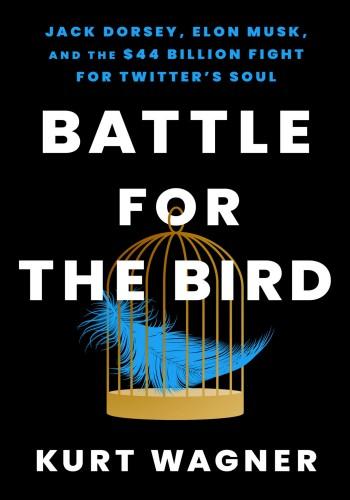
Battle for the Bird: Jack Dorsey, Elon Musk, and the $44 Billion Fight for Twitter's Soul
by
Kurt Wagner
Published 20 Feb 2024
Twitter was spending lots of time and resources digging itself out of the technical hole: Nick Bilton, “In the Coronavirus Era, the Force Is Still with Jack Dorsey,” Vanity Fair, April 20, 2020, https://www.vanityfair.com/news/2020/04/in-the-coronavirus-era-the-force-is-still-with-jack-dorsey. so did a contractor who worked for Facebook out of Seattle: Kurt Wagner, “Facebook Worker in Seattle Is Diagnosed with the Coronavirus,” Bloomberg, March 4, 2020, https://www.bloomberg.com/news/articles/2020-03-05/facebook-says-employee-in-seattle-diagnosed-with-coronavirus?sref=dZ65CIng. “Our goal is to lower… keeping our Tweeps healthy”: Jennifer Christie, “Keeping Our Employees and Partners Safe during #coronavirus,” Twitter Blog, Twitter, May 12, 2020, https://blog.twitter.com/en_us/topics/company/2020/keeping-our-employees-and-partners-safe-during-coronavirus.
…
The World Health Organization declared Covid-19 a global pandemic on March 11: “WHO Director-General’s Opening Remarks at the Media Briefing on COVID-19—11 March 2020,” World Health Organization, March 11, 2020, https://www.who.int/director-general/speeches/detail/who-director-general-s-opening-remarks-at-the-media-briefing-on-covid-19---11-march-2020. declared it a nationwide emergency in the United States two days later: Steve Holland, Jeff Mason, and Makini Brice, “Trump Declares Coronavirus National Emergency, Says He Will Most Likely Be Tested,” Reuters, March 13, 2020, https://www.reuters.com/article/us-health-coronavirus-usa-emergency/trump-declares-coronavirus-national-emergency-says-he-will-most-likely-be-tested-idUSKBN2102G3. Governor Gavin Newsom issued a stay-at-home order: Governor Gavin Newsom, Executive Order N-33-20, March 4, 2020, https://www.gov.ca.gov/wp-content/uploads/2020/03/EO-N-33-20-COVID-19-HEALTH-ORDER-03.19.2020-002.pdf.
…
“Our goal is to lower… keeping our Tweeps healthy”: Jennifer Christie, “Keeping Our Employees and Partners Safe during #coronavirus,” Twitter Blog, Twitter, May 12, 2020, https://blog.twitter.com/en_us/topics/company/2020/keeping-our-employees-and-partners-safe-during-coronavirus. “However, [with] everything… for me and for our company”: Brian Nowak and Jack Dorsey, “Morgan Stanley Technology, Media & Telecom Conference 2020: Jack Dorsey,” Twitter IR, Twitter, March 5, 2020. Silver Lake’s Egon Durban was getting a board seat, and so was Elliott’s Jesse Cohn: “Twitter, Inc. Announces Partnership with Silver Lake and Elliott Management,” PR Newswire, March 9, 2020, https://www.prnewswire.com/news-releases/twitter-inc-announces-partnership-with-silver-lake-and-elliott-management-301019725.html.
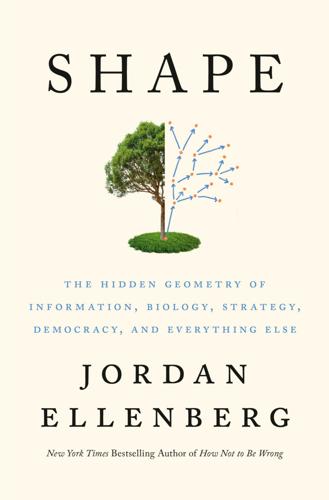
Shape: The Hidden Geometry of Information, Biology, Strategy, Democracy, and Everything Else
by
Jordan Ellenberg
Published 14 May 2021
His answer: Robert Plot and Michael Burghers, The Natural History of Oxford-Shire: Being an Essay Towards the Natural History of England (Printed at the Theater in Oxford, 1677): 136–39. Biodiversoty Heritage Library, https://www.biodiversitylibrary.org/item/186210#page/11/mode/1up. “Coronavirus Models”: Zeynep Tufekci, “Don’t Believe the COVID-19 Models,” Atlantic, Apr. 2, 2020. https://www.theatlantic.com/technology/archive/2020/04/coronavirus-models-arent-supposed-be-right/609271. a photo of a protester: Photo by Jim Mone/Associated Press, http://journaltimes.com/news/national/photos-protesters-rally-against-coronavirus-restrictions-in-gatherings-across-us/collection_b0cd8847-b8f4-5fe0-b2c3-583fac7ec53a.html#48. There was an intellectual dustup: Yarden Katz, “Noam Chomsky on Where Artificial Intellgence Went Wrong,” Atlantic, Nov. 1, 2012, https://www.theatlantic.com/technology/archive/2012/11/noam-chomsky-on-where-artificial-intelligence-went-wrong/261637/, and the combative but very informative Peter Norvig, “On Chomsky and the Two Cultures of Statistical Learning,” available at http://norvig.com/chomsky.html.
…
The next thousand deaths happened in four days. On March 9, 2020, after the disease had already started to spread worldwide, one U.S. government official* aggressively downplayed the threat, comparing it with the thousands of Americans who succumb to flu each year: “At this moment there are 546 confirmed cases of CoronaVirus, with 22 deaths. Think about that!” A week later, twenty-two Americans were dying of COVID-19 every day. A week after that, it was almost ten times that many. The thing about geometric progressions is, there are good ones and there are bad ones. Suppose the carriers of a disease pass their little friend along to 0.8 people on average instead of 2.
…
If there are sixteen thousand soldiers, you have 3,200 groups; of those, 2,880 get cleared, leaving 320 groups consisting of 1,600 soldiers you have to go back and test one by one. So in all you ran the test 3,200 + 1,600 = 4,800 times, a big saving over testing 16,000 soldiers one by one! And you can do even better; Dorfman works out that with a 2% prevalence rate, the optimum group size is eight, which brings you down to about 4,400 tests. The relevance to coronavirus is clear: if we don’t have enough tests to test everyone one by one, maybe we can swab seven or eight people’s nostrils, put the specimens all in a single container, and test them all at once. Caveat: the Dorfman protocol for detecting syphilis was never actually used. Dorfman wasn’t even working for the army; he was at the Office of Price Control when he and his colleague David Rosenblatt hatched the idea of group testing for syphilis, the day after Rosenblatt reported for his own induction and had his Wasserman test.

Cogs and Monsters: What Economics Is, and What It Should Be
by
Diane Coyle
Published 11 Oct 2021
To my mind, values cannot be wholly separable from empirical investigation, and yet it is important for economists to aspire to be as impartial as possible. Economic knowledge certainly accumulates. If we had not learned lessons from the experience of the 1930s, the consequences of the 2008–9 financial crisis would have been far more severe, and governments would not have introduced furlough schemes during the coronavirus lockdowns. If we had not created and learned from market design (defining the rules that make markets work well), far fewer of the apps on our phones could work. There are other important differences between economics and its critics. One is whether it is ever acceptable to put monetary values on intrinsically good things like nature or human life.
…
Although building on a number of public lectures given between 2012 and 2020, the material has been updated and set in a narrative arc illustrating the significant changes in economics that have occurred during the past decade. The book is aimed at general readers, not just economists. This is not only to focus attention on real challenges for economics rather than the straw man critiques, but also because the public appetite to understand the economy is intense. This is an extraordinary time in world history. The coronavirus pandemic means that people in every country have been experiencing an unprecedented economic shock, more sudden and severe than the Great Depression. It has galvanised the economics community, prompting a vast amount of new research and policy analysis, and stimulating many economists to engage with epidemiology and the biomedical sciences (Coyle 2020a).
…
In the years since then, the tension between experts and populism has only increased, and not because the technocrats are right and the vox populi wrong. It is true both that modern economies are complex, requiring expertise to devise policies, and that, for many people, those policies have not delivered benefits. Looking back from the coronavirus era, with an economic downturn exacerbating and exposing major inequalities, it would be hard to claim that post-GFC economic policies have served the majority well (Algan et al. 2017; Rodrik 2018). The tension is well illustrated by protests against a specific ‘structural reform’, the deregulation of taxi markets.
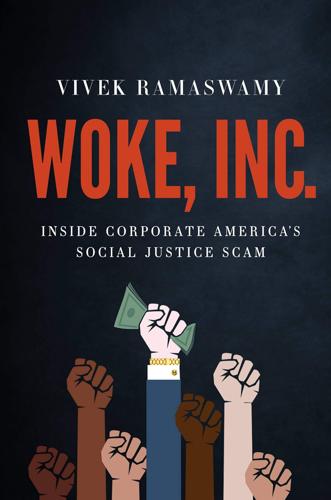
Woke, Inc: Inside Corporate America's Social Justice Scam
by
Vivek Ramaswamy
Published 16 Aug 2021
Facts are important inputs to making sound policy decisions, but facts and policy judgments are not the same thing. It’s one thing for someone to wrongly assert that bandanas were more effective than N95 masks in preventing person-to-person transmission of the coronavirus. It’s another matter entirely to treat anti-lockdown arguments as though those arguments themselves are incorrect “facts.” Whether a lockdown of certain businesses to prevent the coronavirus from spreading is the right policy isn’t a matter of “fact” or “science.” It’s a policy judgment, and the best policy may vary depending on what the business is, where it is, and myriad other factors.
…
“The Right to Vote Is Fundamental—a Letter from Biotechnology Industry Leaders.” Endpoints News, 15 Apr. 2021, endpts.com/the-right-to-vote-is-fundamental-a-letter-from-biotechnology-industry-leaders/. 12. Gore, Al, and David Blood. “Capitalism after the Coronavirus.” The Wall Street Journal, 29 June 2020, www.wsj.com/articles/capitalism-after-the-coronavirus-11593470102. 13. Benioff, Marc. “Marc Benioff: We Need a New Capitalism.” The New York Times, 14 Oct. 2019, www.nytimes.com/2019/10/14/opinion/benioff-salesforce-capitalism.html. 14. Douthat, Ross. “The Rise of Woke Capital.” The New York Times, 28 Feb. 2018, www.nytimes.com/2018/02/28/opinion/corporate-america-activism.html. 15.
…
Cliff’s Perspectives, AQR Capital Management, 18 May 2017, www.aqr.com/Insights/Perspectives/Virtue-is-its-Own-Reward-Or-One-Mans-Ceiling-is-Another-Mans-Floor. 3. Schwab, Klaus, and Peter Vanham. Stakeholder Capitalism: A Global Economy That Works for Progress, People and Planet. John Wiley & Sons, Inc., 2021. 4. Gore, Al, and David Blood. “Capitalism after the Coronavirus.” The Wall Street Journal, 29 June 2020, www.wsj.com/articles/capitalism-after-the-coronavirus-11593470102. 5. Fink, Larry. “A Fundamental Reshaping of Finance.” BlackRock, 14 Jan. 2020, www.blackrock.com/ch/individual/en/larry-fink-ceo-letter#:~:text=Our%20investment%20conviction%20is%20that,for%20client%20portfolios%20going%20forward. 6.
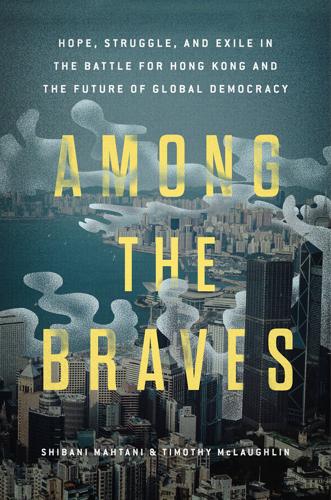
Among the Braves: Hope, Struggle, and Exile in the Battle for Hong Kong and the Future of Global Democracy
by
Shibani Mahtani
and
Timothy McLaughlin
Published 7 Nov 2023
Tsai Ing-wen at a campaign rally, January 10, 2020, www.youtube.com/watch?v=gl0GoJzRD4E. 2. Victor Ting, “China Coronavirus: Hong Kong Medical Experts Call for ‘Draconian’ Measures in City as Research Estimates There Are Already 44,000 Cases in Wuhan,” South China Morning Post, January 27, 2020, www.scmp.com/news/hong-kong/health-environment/article/3047813/china-coronavirus-hong-kong-medical-experts-call. 3. Clara Ferreira Marques, “Hong Kong Is Showing Symptoms of a Failed State,” Bloomberg, February 9, 2020, www.bloomberg.com/opinion/articles/2020-02-09/coronavirus-hong-kong-shows-symptoms-of-a-failed-state. 4. Joe Pompeo, “‘This… Invisible Sense of Danger’: Doing Journalism in the Coronavirus War, Italian Front,” Vanity Fair, March 19, 2020, www.vanityfair.com/news/2020/03/doing-journalism-in-the-coronavirus-war-italian-front. 5.
…
The virus would not be contained to Asia. Those outside of China who believed they would be untouched by this new virus, like SARS, were wrong. As Gabriel Leung, one of the researchers and a government adviser on the coronavirus, warned, “We have to be prepared that this particular epidemic may be about to become a global epidemic.”2 Four days later, the World Health Organization said just that, declaring the coronavirus a Public Health Emergency of International Concern. Countries including Singapore began to ban all travelers from the mainland. Lam continued to keep Hong Kong ports open. Even the resistance to this decision was shaped by 2019, led by a new union that emerged during the movement along with dozens of others hoping to change workers rights’ advocacy.
…
Joe Pompeo, “‘This… Invisible Sense of Danger’: Doing Journalism in the Coronavirus War, Italian Front,” Vanity Fair, March 19, 2020, www.vanityfair.com/news/2020/03/doing-journalism-in-the-coronavirus-war-italian-front. 5. Interview with Jasper Tsang. 6. Statement from the National People’s Congress, May 22, 2020, www.npc.gov.cn/npc/c30834/202005/e235c7a3ebea43ca98aa80032590e924.shtml. 7. CrimeRate.co.uk data, 2023, https://crimerate.co.uk/london/richmond-upon-thames. CHAPTER 16 1. Eva Dou and Shibani Mahtani, “With Hong Kong Security Law, China Writes Broad International Powers for Itself,” Washington Post, July 1, 2020, www.washingtonpost.com/world/asia_pacific/with-hong-kong-security-law-china-writes-broad-international-powers-for-itself/2020/07/01/cf1e2c0a-bb61-11ea-97c1-6cf116ffe26c_story.html. 2.

Buy Now, Pay Later: The Extraordinary Story of Afterpay
by
Jonathan Shapiro
and
James Eyers
Published 2 Aug 2021
Allen & Unwin 83 Alexander Street Crows Nest NSW 2065 Australia Phone: (61 2) 8425 0100 Email: info@allenandunwin.com Web: www.allenandunwin.com ISBN 978 1 76087 946 4 eISBN 978 1 76106 236 0 Index by Puddingburn Internal design by Midland Typesetters Set by Midland Typesetters, Australia Cover design: Philip Campbell Design Cover photographs: Shutterstock (headphones, bag); iStock (shoes) CONTENTS Prologue 1 Rags to Riches 2 Asset Strippers 3 Lay-by 4 Touch Point 5 Little King 6 Going Public 7 The Unsuspected Secret 8 Mickey Mouse and Marijuana 9 Broker Wars 10 Short on Time 11 House of Cards 12 Taking Credit 13 The Cub Club 14 Going Viral 15 Standing Down 16 Trending 17 Once in a Lifetime Epilogue Acknowledgements Notes Bibliography Index PROLOGUE ‘TREPIDATION’ IS THE word we both had scrawled and underlined in our notepads after a half-hour Zoom call with Anthony Eisen and Nick Molnar, the founders of Afterpay. The call was held on Tuesday, 19 January 2021, when most of Australia was enjoying a summer holiday after a traumatic 2020, which had seen the world ravaged by the coronavirus pandemic. Nick dialled in from ‘Nicko’s iPhone’. He was unshaven and crouched under a staircase in his holiday house in Byron Bay. The scheduled time of 1 pm coincided with the nap time of his second child, who was only a few months old. Anthony logged on from his desk at Afterpay’s Melbourne office, in a Collins Street tower with views of the city in the background.
…
Morrison and his family had left the country for a holiday in Hawaii, while at home exhausted volunteer firefighters continued battling the raging blazes. When confronted about his absence, he snapped that he didn’t ‘hold the hose, mate’. Lowe had also holidayed in the United States with his family, in California—and in his prepared remarks to the National Press Club, he mentioned the risks posed by the bushfire and a new coronavirus that had locked down the city of Wuhan, in China. The bushfires were a tragedy, he said, but there would be no enduring hit to the economy. As for the virus designated by the World Health Organization as COVID-19, the experience of the SARS virus in 2002 was instructive: activity would be depressed but would snap back sharply once the health authorities brought the virus under control.
…
In the back of the room, Ben McGarry, of hedge fund Totus Capital, listened intently. He’d been openly betting that Tesla shares would fall; as they ripped higher, even his family were ribbing him. But he, like other hedge fund managers, had been paying close attention to the virus. The market was too complacent, he believed. If Lowe was alert but not alarmed by the coronavirus in early February, by the end of the month he had a greater sense that he, along with the entire public service, was about to face his greatest test. Lowe and treasurer Josh Frydenberg had flown to Riyadh, Saudi Arabia, for a G20 meeting held over two days from 22 February. There, International Monetary Fund officials informed them that the virus had spread to Iran, South Korea and Italy, and the following day those countries had gone into lockdown.
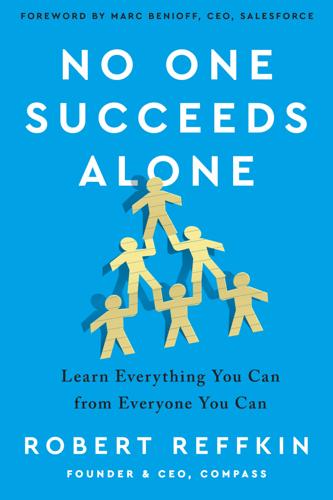
No One Succeeds Alone
by
Robert Reffkin
Published 4 May 2021
Always look for the positive even when it’s hard to see The lessons I learned leading during the coronavirus pandemic When the coronavirus pandemic first hit, I was going to work every day in Compass’s eleven-story office building in Manhattan, riding elevators, meeting with hundreds of people a week, flying to Seattle twice a month to meet with the leaders of our West Coast technology hub, and visiting other Compass offices in other cities. Then, in a matter of days, everything changed. First came the official declaration that the coronavirus was a pandemic. Then the stock market crashed, evaporating trillions of dollars in wealth and savings.
…
Index A | B | C | D | E | F | G | H | I | J | K | L | M | N | O | P | Q | R | S | T | U | V | W | X | Y | Z B A Better Chance, 17, 43, 63 A abundance mindset, 170 accountability, 38–39, 181–83 adaptability, 9–10, 169–71, 186, 194–96 Adashek, Jeannie, 93 Allon, Ori belonging and community, 195–96 first meeting, 164–66 as mentor, 82, 181 origin of Compass, 104 pivot at Compass, 206–12 recruitment, 176–78 America Needs You, 49, 158–59 See also New York Needs You authentic self, 9, 58, 73–76, 189–92 See also strengths, maximizing balance, work-life, 127–29 be solutions driven (principle of entrepreneurship), 27–30, 40–43, 54–66, 88–90, 109–11, 150–62 being Black and adaptability, 9–10 disowned by grandparents, 24–25 expectations, 122–23 in New York City, 121 professional belonging, 194 in relationship with college girlfriend, 201–2 in school, 13–15, 21, 62, 215–18 See also discrimination; immigrants; privilege and advantage belonging creating your own community, 194–96 defined, 8–9 discrimination and, 215–18 vs. impostor syndrome, 130–31, 189–92 purpose and, 49–50 socioeconomic background, 67–69 Belonging Walls, 196 Benioff, Marc, ix–x Benís (wife) on acceptance of flaws, 73–76 childhood, inequality of, 66–69 as coach, 100 college opportunity, 88–90 coming to New York, 64–66 home and rediscovering herself, 69–73 as inspiration, 160 as life partner, 137–40 society’s unwritten rules, 85–86 work-life balance, 128–29 Berkeley house, 58–61 bias, 166–68 Black executives and mentors, 94–98 bounce back with passion (principle of entrepreneurship), 20, 69–73, 109–11, 197–212 Byard, Eliza, 123 C celebration, of successes, 134–35, 158 change, at Compass, 206–12 Chenault, Ken, 94, 138, 170 coaches, 98–101 Cohn, Gary, 130–31 collaborate without ego (principle of entrepreneurship), 11–13, 46–47, 73–76, 88–90, 98–101, 109–11, 172–83 Columbia University accelerated graduation, 40–43 admission and anticipation, 134–35 application to, 27–29 college application essay, 32–36 communication of change, 209–12 handwritten notes, 93, 166 with mentors, 86–88, 91–93 with new employees, 132–34 observation of facial expressions, 140–42 speaking out for what is right, 118–19, 215–18 Compass change, challenge of, 209–12 coronavirus pandemic, 169–71 culture, 125–27, 151–53, 181–83 early pivot, 206–9 hiring and firing, 173–79 on innovation, 144–45, 147–49 origin of, 97–98, 103–5 welcoming new employees, 132–34 Compass Academy, 171 Compass Concierge, 149 compensation, asking for a raise, 161–62 constructive feedback, 82–85 Contraband (school newspaper), 216–18 Cornell, Henry, 97, 99, 187, 191 coronavirus pandemic, 169–71 Customer Feedback Forum, 145–47 customers (real estate agents) feedback from, 145–47, 207–9 focus on, 23–24, 144–45, 166–68 D decision-making tools for forgiveness, 24–27 hiring and firing tests, 179–81 on life partner, 137–40 networking, 86–88 perspective, long-term, 117–19 for success, 20 DiBiasio, Dolf, 43–44 discrimination adapting oneself to society, 9–10 belonging and community, 194–96, 215–18 dreams and, 121–23 father and, 11–12 in schools, 13–15 skeptics, 29–30 socioeconomic, 67–68 stereotypes and bias, 166–68 unwritten rules, of society, 85–86 See also immigrants DJ business, 23–24, 34–35 Dodge & Cox internship, 63 dream big (principle of entrepreneurship), 2, 17–20, 27–30, 36–39, 54–63, 73–76, 109–11, 113–23 dreams attachment to vs. change, 209–12 of author, 49, 119–21 combining goals, 101–3, 129 energy and, 21 measuring, 125–27 motivation to achieve, 159–61 resilience and, 198–201 for this book, 3–4 E Eduard Lee (father) in college essay, 32–33 ego and fatherhood, 11–13 family life, 7 gratitude, 186 as motivational factor, 160–61 education Benís and, 69, 88–90 discrimination vs. support for, 13–15 Elida and, 65, 68 opportunities for, 16–18 strengths and, 188–89 of whole person, 36–39 ego, 11–13, 110, 138, 144, 145, 173 Elida (mother-in-law), 64–69, 78, 89, 129 empathy, 25 energy for accomplishing dreams, 18–19 dreams and success, 21–22 from negativity, 27–30 from people, 155–59 as test, 180 See also motivation; taking action entrepreneurs and entrepreneurship customers and, 23–24 defined, 63 overview and principles of, 109–11 rules, flexibility of, 40–43 work-life balance, 127–29 exit strategy, 129–32 expectations, 14, 38, 98, 123 F failure as feedback, 147–49 losing when right, 99–100 mothers and, 53 Reffkin on, 2–3 vs. strengths, 185 See also resilience family, importance of, 76–78, 117–19, 160 fear, 146–47, 148, 170 feedback constructive, importance of, 82–85, 99 from customers, 145–47, 206–9 diversity and variety in, 147–49 facial expressions, 140–42 learn from reality, principle of, 136–37 learning from pain, 12–13, 201–6 on life partner, 137–40 listening and humility, 142–45 from mentees in nonprofit, 158–59 recruitment and, 177–79 success and, 20 firing employees, 173–75, 179–81 Floyd, George, 118, 122 forgiveness, 24–27 Foster, Dick, 96, 138–39, 192 G Global Horizons, 62 Goldman Sachs, 44, 97–99, 103, 130–32, 187, 191 grandfather, 24–25, 54–56 gratitude, 77–78, 92–93, 168–69, 186–88 grudges, 24–27 guilt, 73–75 H Haas School of Business, 63 Henry Crown Fellows, 102 hiring tests, 179–81 home, importance of, 69–73 humility, 142–45 hustle, importance of, 48–50 I immigrants, 7, 55, 85–86, 109, 118, 195 impostor syndrome, 130, 189–92 innovation, 143 inspiration, 101–3 invention, 143–44 J Jobs, Steve, 30, 178 Jordan, Vernon, 93, 94–98 Julpan (company), 165 K “Kids in the Conference Room, The” (article), 44 L Lazard, 49, 93, 95, 96, 97, 130, 205 leadership characteristics of, x, 170 coronavirus pandemic, 169–71 employee communication, 132–34 Jordan, Vernon, lessons from, 94–98 listening, 98–101, 142–45 learn from reality (principle of entrepreneurship), 20, 23–24, 81–85, 90–94, 98–103, 109–11, 136–49 Lee, Eduard Rodney.
…
Index A | B | C | D | E | F | G | H | I | J | K | L | M | N | O | P | Q | R | S | T | U | V | W | X | Y | Z B A Better Chance, 17, 43, 63 A abundance mindset, 170 accountability, 38–39, 181–83 adaptability, 9–10, 169–71, 186, 194–96 Adashek, Jeannie, 93 Allon, Ori belonging and community, 195–96 first meeting, 164–66 as mentor, 82, 181 origin of Compass, 104 pivot at Compass, 206–12 recruitment, 176–78 America Needs You, 49, 158–59 See also New York Needs You authentic self, 9, 58, 73–76, 189–92 See also strengths, maximizing balance, work-life, 127–29 be solutions driven (principle of entrepreneurship), 27–30, 40–43, 54–66, 88–90, 109–11, 150–62 being Black and adaptability, 9–10 disowned by grandparents, 24–25 expectations, 122–23 in New York City, 121 professional belonging, 194 in relationship with college girlfriend, 201–2 in school, 13–15, 21, 62, 215–18 See also discrimination; immigrants; privilege and advantage belonging creating your own community, 194–96 defined, 8–9 discrimination and, 215–18 vs. impostor syndrome, 130–31, 189–92 purpose and, 49–50 socioeconomic background, 67–69 Belonging Walls, 196 Benioff, Marc, ix–x Benís (wife) on acceptance of flaws, 73–76 childhood, inequality of, 66–69 as coach, 100 college opportunity, 88–90 coming to New York, 64–66 home and rediscovering herself, 69–73 as inspiration, 160 as life partner, 137–40 society’s unwritten rules, 85–86 work-life balance, 128–29 Berkeley house, 58–61 bias, 166–68 Black executives and mentors, 94–98 bounce back with passion (principle of entrepreneurship), 20, 69–73, 109–11, 197–212 Byard, Eliza, 123 C celebration, of successes, 134–35, 158 change, at Compass, 206–12 Chenault, Ken, 94, 138, 170 coaches, 98–101 Cohn, Gary, 130–31 collaborate without ego (principle of entrepreneurship), 11–13, 46–47, 73–76, 88–90, 98–101, 109–11, 172–83 Columbia University accelerated graduation, 40–43 admission and anticipation, 134–35 application to, 27–29 college application essay, 32–36 communication of change, 209–12 handwritten notes, 93, 166 with mentors, 86–88, 91–93 with new employees, 132–34 observation of facial expressions, 140–42 speaking out for what is right, 118–19, 215–18 Compass change, challenge of, 209–12 coronavirus pandemic, 169–71 culture, 125–27, 151–53, 181–83 early pivot, 206–9 hiring and firing, 173–79 on innovation, 144–45, 147–49 origin of, 97–98, 103–5 welcoming new employees, 132–34 Compass Academy, 171 Compass Concierge, 149 compensation, asking for a raise, 161–62 constructive feedback, 82–85 Contraband (school newspaper), 216–18 Cornell, Henry, 97, 99, 187, 191 coronavirus pandemic, 169–71 Customer Feedback Forum, 145–47 customers (real estate agents) feedback from, 145–47, 207–9 focus on, 23–24, 144–45, 166–68 D decision-making tools for forgiveness, 24–27 hiring and firing tests, 179–81 on life partner, 137–40 networking, 86–88 perspective, long-term, 117–19 for success, 20 DiBiasio, Dolf, 43–44 discrimination adapting oneself to society, 9–10 belonging and community, 194–96, 215–18 dreams and, 121–23 father and, 11–12 in schools, 13–15 skeptics, 29–30 socioeconomic, 67–68 stereotypes and bias, 166–68 unwritten rules, of society, 85–86 See also immigrants DJ business, 23–24, 34–35 Dodge & Cox internship, 63 dream big (principle of entrepreneurship), 2, 17–20, 27–30, 36–39, 54–63, 73–76, 109–11, 113–23 dreams attachment to vs. change, 209–12 of author, 49, 119–21 combining goals, 101–3, 129 energy and, 21 measuring, 125–27 motivation to achieve, 159–61 resilience and, 198–201 for this book, 3–4 E Eduard Lee (father) in college essay, 32–33 ego and fatherhood, 11–13 family life, 7 gratitude, 186 as motivational factor, 160–61 education Benís and, 69, 88–90 discrimination vs. support for, 13–15 Elida and, 65, 68 opportunities for, 16–18 strengths and, 188–89 of whole person, 36–39 ego, 11–13, 110, 138, 144, 145, 173 Elida (mother-in-law), 64–69, 78, 89, 129 empathy, 25 energy for accomplishing dreams, 18–19 dreams and success, 21–22 from negativity, 27–30 from people, 155–59 as test, 180 See also motivation; taking action entrepreneurs and entrepreneurship customers and, 23–24 defined, 63 overview and principles of, 109–11 rules, flexibility of, 40–43 work-life balance, 127–29 exit strategy, 129–32 expectations, 14, 38, 98, 123 F failure as feedback, 147–49 losing when right, 99–100 mothers and, 53 Reffkin on, 2–3 vs. strengths, 185 See also resilience family, importance of, 76–78, 117–19, 160 fear, 146–47, 148, 170 feedback constructive, importance of, 82–85, 99 from customers, 145–47, 206–9 diversity and variety in, 147–49 facial expressions, 140–42 learn from reality, principle of, 136–37 learning from pain, 12–13, 201–6 on life partner, 137–40 listening and humility, 142–45 from mentees in nonprofit, 158–59 recruitment and, 177–79 success and, 20 firing employees, 173–75, 179–81 Floyd, George, 118, 122 forgiveness, 24–27 Foster, Dick, 96, 138–39, 192 G Global Horizons, 62 Goldman Sachs, 44, 97–99, 103, 130–32, 187, 191 grandfather, 24–25, 54–56 gratitude, 77–78, 92–93, 168–69, 186–88 grudges, 24–27 guilt, 73–75 H Haas School of Business, 63 Henry Crown Fellows, 102 hiring tests, 179–81 home, importance of, 69–73 humility, 142–45 hustle, importance of, 48–50 I immigrants, 7, 55, 85–86, 109, 118, 195 impostor syndrome, 130, 189–92 innovation, 143 inspiration, 101–3 invention, 143–44 J Jobs, Steve, 30, 178 Jordan, Vernon, 93, 94–98 Julpan (company), 165 K “Kids in the Conference Room, The” (article), 44 L Lazard, 49, 93, 95, 96, 97, 130, 205 leadership characteristics of, x, 170 coronavirus pandemic, 169–71 employee communication, 132–34 Jordan, Vernon, lessons from, 94–98 listening, 98–101, 142–45 learn from reality (principle of entrepreneurship), 20, 23–24, 81–85, 90–94, 98–103, 109–11, 136–49 Lee, Eduard Rodney. See Eduard (father) listening, 98–101, 142–45 M marathons, 101–3, 159–61 marriage, 137–40 maximize your strengths (principle of entrepreneurship), 30–32, 61–63, 73–76, 109–11, 184–96 McGuire, Ray, 97, 187 McKinsey & Company, 43–47, 130, 189–90, 192 mentors building relationships with, 90–94 college opportunities, 88–90 constructive feedback from, 36, 82–85 following in their footsteps, 101–3 networks, creating, 86–88 overview of, 81–82 principles of, 91–92 push towards achievement from, 98–101 risk and, 103–5 unwritten rules, 85–86 mindfulness, 134–35 Moore, Wes, 123 Mornell, Linda, 83–85 mothers, as entrepreneurs family and, 76–78 independence and, 54–58 overview of, 53–54 perseverance, 58–66 rediscovering oneself, 69–73 self-acceptance, 73–76 self-care, 192 motivation to achieve dreams, 19, 44–45 accomplishments, historical, 154–55 finding and using, 159–61 forgiveness and, 26 inspiration and, 101–3 from people, 155–59 recruitment and, 177–79 move fast (principle of entrepreneurship), 40–43, 48–50, 64–66, 109–11, 124–35 movies, as inspiration, 114–17 multitasking, 129 N National Foundation for Teaching Entrepreneurship, 23–24, 63 National Outdoor Leadership School, 62, 83–85, 193 Network for Teaching Entrepreneurship, 23–24 networking access to and privilege, 85–86 creating your own, 86–88 energy and, 155–59 integration of work and social life, 127–29 as opportunity, 43–45, 164–66 “rich-kid’s network” idea, 86–88 See also collaboration; communication; mentors New York Needs You, 2, 49, 104, 155–59 See also America Needs You nonprofits charity and, 101–4, 116 as opportunities, 16–18, 62–63, 81–84, 110 starting one, 49, 96–97, 155, 200 See also nonprofits by name O obsess about opportunity (principle of entrepreneurship), 16–18, 23–24, 27–30, 39–40, 43–45, 86–88, 90–94, 109–11, 163–71 Ogunlesi, Adebayo “Bayo,” 82, 103–5 opportunity access to, 85–86 bias, blinding to, 166–68 educational, 61–63 interactions as, 10, 43–45, 164–66 mentors, 94–98 openness to, 16–18, 150–51 pursuing dreams despite odds, 27–30 risk, 97–98 solutions-oriented approach, 151–53 working for, 39–40 Oprah (Winfrey), 43 Ori.

Automation and the Future of Work
by
Aaron Benanav
Published 3 Nov 2020
Global employment in the IT and call center sectors also seems set to decline as cloud-based computing obviates the need for firms to develop and monitor their own websites and online databases; large Indian IT firms are already shedding jobs. See Simon Mundy, “India’s Tech Workers Scramble for Jobs as Industry Automates,” Financial Times, May 27, 2017. 49 Nathaniel Meyersohn, “Grocery Stores Turn to Robots during the Coronavirus,” CNN Business, April 7, 2020. See also John Reed, Mercedes Ruehl, and Benjamin Parkin, “Coronavirus: will call centre workers lose their ‘voice’ to AI?,” Financial Times, April 22, 2020. Chapter 4. A Low Demand for Labor 1 Wassily Leontief, “Technological Advance, Economic Growth and the Distribution of Income,” Population and Development Review, vol. 9, no. 3, 1983, p. 409; Erik Brynjolfsson and Andrew McAfee, The Second Machine Age: Work, Progress, and Prosperity in a Time of Brilliant Technologies, W.W.
…
Norton, 2014, pp. 232–41; Ford, Rise of the Robots, pp. 257–9; Stern, Raising the Floor, pp. 171–222; and Yang, War on Normal People, pp. 165–74. 24 Ishaan Tharoor, “The pandemic strengthens the case for universal basic income,” Washington Post, April 9, 2020; Sam Meredith, “The coronavirus crisis could pave the way to universal basic income,” CNBC, April 16, 2020; Craig Paton, “Coronavirus in Scotland: Nicola Sturgeon eyes plans for universal basic income,” The Times, May 5, 2020. 25 See James Ferguson, Give a Man a Fish: Reflections on the New Politics of Distribution, Duke University Press, 2015. 26 van Parijs and Vanderborght call for a surprisingly exclusionary basic income proposal as a starting point for reform.
…
Banks, Look to Windward, Pocket Books, 2000; as well as his “Notes on the Culture,” collected in Banks, State of the Art, Night Shade Books, 2004. 10 See, respectively, Claire Cain Miller, “A Darker Theme in Obama’s Farewell: Automation Can Divide Us,” New York Times, January 12, 2017; Kessler, “Zuckerberg’s Opiate For the Masses”; Eduardo Porter, “Jobs Threatened by Machines: A Once ‘Stupid’ Concern Gains Respect,” New York Times, June 7, 2016; Kevin Roose, “His 2020 Campaign Message: The Robots Are Coming,” New York Times, February 12, 2018; Andrew Yang, The War on Normal People: The Truth about America’s Disappearing Jobs and Why Universal Basic Income Is Our Future, Hachette, 2018; Andy Stern, Raising the Floor: How a Universal Basic Income Can Renew Our Economy and Rebuild the American Dream, PublicAffairs, 2016. 11 Nick Srnicek and Alex Williams, Inventing the Future: Postcapitalism and a World without Work, Verso, 2015, p. 112. 12 Peter Frase, Four Futures: Life after Capitalism, Verso, 2016; Manu Saadia, Trekonomics: The Economics of Star Trek, Inkshares, 2016. 13 Srnicek and Williams, Inventing the Future, p. 127. 14 Aaron Bastani, Fully Automated Luxury Communism: A Manifesto, Verso, 2019. 15 Martin Ford argues that the pandemic will “change consumer preference and really open up new opportunities for automation,” as quoted in Zoe Thomas, “Coronavirus: Will Covid-19 speed up the use of robots to replace human workers?,” BBC News, April 19, 2020. See also Michael Corkery and David Gelles, “Robots Welcome to Take Over, as Pandemic Accelerates Automation,” New York Times, April 20, 2020; Carl Benedikt Frey, “Covid-19 will only increase automation anxiety,” Financial Times, April 21, 2020.

Open: The Story of Human Progress
by
Johan Norberg
Published 14 Sep 2020
Historically, rulers have used such great plagues to extend control over their populations, pull up the drawbridges and attack scapegoats, like Jews, foreigners or witches. As a new coronavirus pandemic haunts the world, it is not difficult to imagine how it could be a decisive turning point, away from openness. Companies are forced to re-evaluate international supply chains, natives become suspicious of outsiders and global travel, and governments grant themselves new powers. At the time of writing, no government has yet ‘postponed’ an election because of the coronavirus, but such things have happened before in history. Panic changes politics in a nationalist direction, such as with bans on the export of drugs and medical equipment.
…
This gave rise to science, which is built on the exchange, criticism, comparison and accumulation of knowledge, and to technology, which is the application of science to solve practical problems. We observe the benefits cooperation and mobility have given us when it’s suddenly shut down. The World Bank has calculated that the greatest economic damage from epidemics like swine flu, SARS or the new coronavirus do not come from mortality, morbidity, treatment and associated loss of production, but from increased fear of associating with others. Up to 90 per cent of the damage comes from aversion behaviour, which shuts down places of production, transportation, harbours and airports.2 We humans innovate and we imitate, rinse and repeat, until we create something special.
…
We rarely think of it this way, but globalization is actually our best chance to fight pandemics in the first place, since wealth, communication technology and open science have made our response to new diseases faster than ever, as science writer Ron Bailey has noted.8 Hospitals, researchers, health authorities and drug companies everywhere can now supply each other with instant information and coordinate efforts to analyse and combat the problem. After having tried to conceal the outbreak for weeks, China announced that it had found a new coronavirus on 2 January 2020. Using technologies developed on the other side of the globe, Chinese scientists could read the complete genome of the virus and publish it on a new global hub for medical research, on 10 January. Just six days later, German researchers had used this information to develop and release a diagnostic test to detect new infections.

Human Frontiers: The Future of Big Ideas in an Age of Small Thinking
by
Michael Bhaskar
Published 2 Nov 2021
They were probably alive towards the middle of the nineteenth century. Like you, they had hopes, fears and dreams. They craved what we crave: security, love, entertainment. Yet their world, just a generation or two out of reach, was more dangerous, backbreaking, boring, precarious and limited than anything we in the West ever experience, coronavirus and its aftermath included. In the mid-nineteenth century, buildings were often wooden and rudimentary. In cities especially, this meant devastating fires were common. The boomtown of Chicago was almost eradicated in a vast urban conflagration in 1871. Sewage was a ubiquitous disease-carrying presence, in the home and out.
…
Indeed, the US saw consistent falls between 2015 and 2020, the biggest since 1915–1918, the years of the First World War and the Spanish flu pandemic.14 In Britain a marked slowdown started in 2011, with no progress being made from 2015.15 At best, Britons are seeing the slowest improvements since the Second World War. The impact of coronavirus is certain to further revise down these numbers. At the frontier, something is going wrong with Pasteur-style breakthroughs. The drugs don't work; at least, not like they used to. The discovery of drugs appears to obey a rule christened Eroom's Law. In a nutshell, the number of drugs approved for every billion dollars’ worth of research and development (R&D) halves every nine years.
…
No wonder we have a sclerotic and, ironically, closed economy. No wonder company net investment has declined. Corporate investment, much higher than noncorporate business investment, fell from 30–40 per cent in the period 1950–2000 to 20–25 per cent after 2000, and that ignores the dip after the financial crisis, to say nothing of the coronavirus recession.25 Cash is not spent on risky ventures but hoarded or returned to shareholders in record amounts. Measured as a proportion of internal cash flow, returns to shareholders are six times higher than the 1970s.26 S&P 500 companies alone have trillions in cash, splurging a record $800 billion on share buybacks, almost $500 billion on dividends, while Apple and Alphabet alone sit on hundreds of billions.27 All this epic hoarding of cash is described as ‘precautionary’.28 If capitalism used to be about owner-managers taking risks to create new breakthrough businesses, the interwoven, highly intermediated ‘gray’ structure of modern equity markets is the opposite.

Ageless: The New Science of Getting Older Without Getting Old
by
Andrew Steele
Published 24 Dec 2020
Pandemics are a humbling reminder of the power of nature compared to our own. The coronavirus crisis has laid bare what many of us had largely forgotten: the terrible toll infectious disease can take without treatments or vaccines. Nonetheless, your risk of death from COVID-19 is still substantially less than the risk from infections in the past – taken over the whole of human history, bacteria, viruses and other microorganisms have probably struck down more of us than anything else. Even in the worst case, the consequences of coronavirus are unlikely to exceed those of the 1918 flu pandemic: during that outbreak, 50 to 100 million died over a couple of years at the hands of flu viruses – up to 5 per cent of the global population at the time – dwarfing the 20 million killed in the preceding four years of mechanised annihilation in the First World War.
…
Nonetheless, improving diets and making exercise easier to integrate into daily lives both need to be priorities if we want to make sure lifespans continue to increase. Other factors, from air pollution (whose risks are only beginning to be understood, but seem to affect ageing to some extent – not just in the respiratory system, but by promoting cardiovascular diseases and perhaps even dementia) to antibiotic resistance and emerging diseases like coronavirus (which could see a partial return to the bad old days of deaths from infection) are also worth trying to get ahead of. There are also inequalities which mean, while headline life expectancies increase or at worst stay constant in whole countries, some socioeconomic groups or regions have experienced declines in lifespan in the last decade or so.
…
By alleviating mortality in childhood and young adults, many of us now live long enough to experience the immune decline of ageing, and more than 90 per cent of deaths from infectious disease are in people over the age of 60. The substantial extra risk to older people from infectious disease has been laid bare by the coronavirus pandemic, whose toll in terms of hospitalisation and death is much higher among the elderly. While dying from flu or COVID-19 isn’t ageing per se, the massively increased risk with age means that ageing bears ultimate responsibility for most of these deaths. What’s worse is that a key tool of modern medicine – vaccination – is less effective in the elderly because vaccines rely on the failing immune system for their effectiveness.

Practical Doomsday: A User's Guide to the End of the World
by
Michal Zalewski
Published 11 Jan 2022
Bryan Hill, “Bear Defense: Shocking Truth About Bear Spray & Guns,” Pistol Wizard, July 10, 2021, https://pistolwizard.com/studies/bears. Chapter 21 1. Jacqueline Howard, “Masks May Actually Increase Your Coronavirus Risk If Worn Improperly, Surgeon General Warns,” CNN, March 2, 2020, https://www.cnn.com/2020/03/02/health/surgeon-general-coronavirus-masks-risk-trnd/index.html. 2. Abrar A. Chughtai, Holly Seale, and C. Raina Macintyre, “Effectiveness of Cloth Masks for Protection Against Severe Acute Respiratory Syndrome Coronavirus 2,” Emerging Infectious Diseases 26, no. 10 (October 2020), https://wwwnc.cdc.gov/eid/article/26/10/20-0948_article/. 3. “Guidance for Private Gatherings,” California Department of Public Health, October 9, 2020, https://www.cdph.ca.gov/Programs/CID/DCDC/Pages/COVID-19/CDPH-Guidance-for-the-Prevention-of-COVID-19-Transmission-for-Gatherings-10-09.aspx. 4.
…
In February, Oxiris Barbot, the serving New York City health commissioner, tweeted from an official account: Today our city is celebrating the #LunarNewYear parade in Chinatown, a beautiful cultural tradition with a rich history in our city. I want to remind everyone to enjoy the parade and not change any plans due to misinformation spreading about #coronavirus.17 Many prominent pundits listened to the experts and joined the fray. In a now-deleted tweet, Vox Magazine provided a mini-explainer for its readers, asking, “Is this going to be a deadly pandemic?”—and then confidently answering “No.”18 Several others opined that the rumors about the coronavirus may be rooted in xenophobia or other vices of the crowds. Within a month, in a dizzying 180-degree reversal, many progressive politicians began to acknowledge the reality of the new disease—while their political opponents, perhaps in reaction to the ham-fisted health mandates and perhaps out of the simple obligation to take a contrarian view, started to flirt with the idea that maybe it wasn’t just that the policies were wrong, but that the disease itself was some sort of a hoax.
…
@NYCHealthCommr, “Today Our City Is Celebrating the #Lunarnewyear Parade in Chinatown,” Twitter, February 9, 2020, https://twitter.com/NYCHealthCommr/status/1226508570646269954/. 18. Lindsey Ellefson, “Vox Deletes January Tweet About Coronavirus That Really Has Not Aged Well,” Yahoo, March 24, 2020, https://www.yahoo.com/entertainment/vox-deletes-january-tweet-coronavirus-203359493.html. 19. “America’s Two Largest States Are Fighting COVID-19 Differently,” The Economist, February 4, 2021, https://www.economist.com/united-states/2021/02/06/americas-two-largest-states-are-fighting-covid-19-differently/. 20.

The Great Demographic Reversal: Ageing Societies, Waning Inequality, and an Inflation Revival
by
Charles Goodhart
and
Manoj Pradhan
Published 8 Aug 2020
However, underneath those cyclical slowdowns, inflation and interest rates will structurally resurface to remove the obstacle of indebtedness from their path. When exactly these battles will be fought, and won and lost, is impossible to say, but we will need all the luck we can get to navigate our way forward. Postscript: Future Imperfect After Coronavirus Our book was mainly written in 2019, and the typescript delivered to our publisher, before anyone was aware of the impending coronavirus pandemic. The overall impact of the pandemic will be to accelerate the trends we have outlined in this book. China will become more inward-looking and less deflationary globally, and inflation itself will rise much earlier and faster than we had anticipated.
…
A combination of Trump-type policies, populism, barriers to migration and now the coronavirus pandemic has now defanged that threat to workers. The balance of bargaining power is now swinging back to workers, away from employers; current, more socialist, political trends are reinforcing that. Following the recovery, whenever that happens, wage trends will change. The likelihood is that wage demands will then match, or even perhaps exceed, current inflation, despite the inevitable pleas for moderation in the context of a ‘temporary blip’ in inflation. The coronavirus pandemic, and the supply shock that it has induced, will mark the dividing line between the deflationary forces of the last 30/40 years, and the resurgent inflation of the next two decades.
…
Our main thesis is that such demographic and globalisation factors were largely responsible for the deflationary pressures of the last three decades, but that such forces are now reversing, so that the world’s main economies will, once again, face inflationary pressures over the next three, or so, decades. The question, which we have been most frequently asked, is ‘Just when will the point of inflexion from deflation to inflation occur?’ When we were writing this book in 2019, we had to answer that we did not know to within five years, or so. That was, of course, before the coronavirus pandemic hit in early 2020; the occurrence of such a pandemic being a ‘known unknown’. The overall impact of the pandemic will be to accelerate the trends we have outlined in this book. China will become more inward-looking and less deflationary globally, and inflation itself will rise much earlier and faster than we had anticipated.
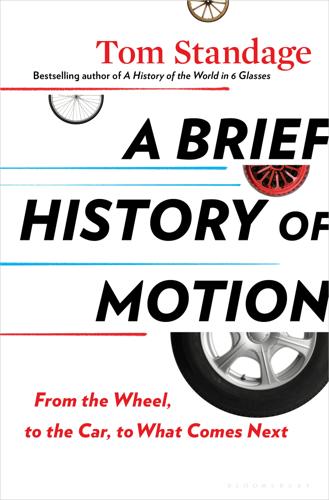
A Brief History of Motion: From the Wheel, to the Car, to What Comes Next
by
Tom Standage
Published 16 Aug 2021
Helsinki has established a 745-mile network of bike paths, which are even cleared of snow in winter; Oslo raised parking charges and tolls to enter the city, established car-free zones around schools, and shifted some city-center deliveries from vans to electric cargo bikes. Together with high levels of investment in public transport, all this has reduced the volume and speed of traffic on city streets, with a resulting fall in deaths and injuries. In 2020 cities around the world, from Paris to Milan to Kampala, took advantage of coronavirus lockdowns to move in the same direction, creating new bike lanes and broadening sidewalks to reclaim street space from cars. Some cities have since made those changes permanent. Collectively, these moves signal an end to the assumption that streets belong chiefly to cars, by tilting the balance back toward other users.
…
But then population growth rates in America’s suburbs started outpacing those in cities again. “The ‘back to the city’ trend seen at the beginning of the decade has reversed,” noted William Frey of the Brookings Institution in 2019. In retrospect the global financial crisis of 2007–9 may simply have delayed some young Americans’ entry into the housing market. The coronavirus pandemic has also increased the appeal of suburbs relative to city centers. One of the chief drawbacks of suburbs—the need to commute—goes away if you can work from home, which about half of American workers can. And staying at home is more pleasant if you have more space. A shift toward working remotely, some if not all of the time, is likely to be an enduring legacy of the pandemic.
…
THE RISE AND FALL OF CAR CULTURE By spawning drive-ins, fast-food joints, and malls, cars reshaped the physical and cultural landscape of America, and then of many other countries, too. But all of these twentieth-century car-centered institutions are now in decline. Admittedly, the few remaining drive-in cinemas saw a revival of interest during coronavirus lockdowns, and in a neat reversal of history, 160 Walmart parking lots were turned into temporary drive-ins in summer 2020. Drive-ins and parking lots around the world have also hosted socially distanced church services, concerts, theatrical performances, and, in Germany, even a drive-in nightclub.
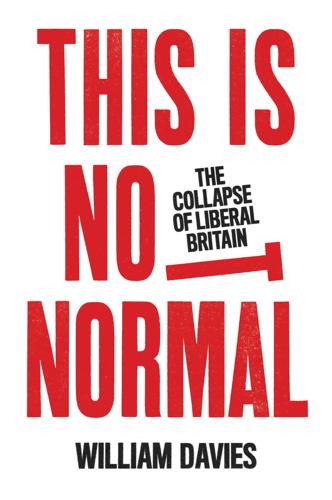
This Is Not Normal: The Collapse of Liberal Britain
by
William Davies
Published 28 Sep 2020
The Windrush scandal of 2018, which saw black British citizens being terrorised by government bureaucracy and threatened with deportation (an effect of the ‘Hostile Environment’ immigration policy introduced in 2014), revealed a disregard for judicial norms that few had imagined the British state was capable of, at least within its own borders. Within two months of Britain’s departure from the European Union, the political establishment had been engulfed in the unprecedented chaos and horrors of the coronavirus pandemic. Johnson was forced to rein in his jocular nationalism, in an effort to look statesmanlike, serious and deferential to experts. But even then, the government couldn’t resist resorting to deceptive communications tactics, as the prime minister struggled to adopt the necessary gravitas. While the crisis emerged with little warning, ultimately to do far more economic damage to Britain than Brexit, it arrived at a time when trust in the media and politicians was already at a dangerously low ebb.
…
While the crisis emerged with little warning, ultimately to do far more economic damage to Britain than Brexit, it arrived at a time when trust in the media and politicians was already at a dangerously low ebb. The National Health Service was one of the last remaining unconditional commitments that the state made to society, on which all political parties agreed. While the symbolic reverence for the NHS was ratcheted up further thanks to coronavirus, the assumption that the state could and would protect lives – so fundamental to liberal philosophy – was unable to hold. The health crisis also did unprecedented damage to the economic institution that is more important to liberalism than any other: the labour market. For centuries, labour markets have been integral to how liberal economies meet human needs and establish social peace.
…
This triggered the surreal spectacle of conservative politicians and newspapers debating the merits of unconditional cash transfers. In the context of rentier capitalism and what Jodi Dean terms ‘neo-feudalism’, the credibility of the labour market was already in decline, as the middle classes turned increasingly to assets in search of security and income.3 The coronavirus ensured that, however the crisis of liberalism was to be resolved, it would not be built upon the familiar bedrock of the wage relation. This litany of crises and scandals spoke of a nation and a state that no longer trusted in the liberal ideals of procedural fairness and independent judgement, and was scarcely pretending to.

Happy-Go-Lucky
by
David Sedaris
Published 30 May 2022
The moment I got my first shot of the vaccine, I started thinking of the coronavirus the way I think of scurvy—something from a long-ago time that can no longer hurt me, something that mainly pirates get. “Yes,” the papers would say, “but what if there’s a powerful surge this summer? This Christmas? A year from now? What if our next pandemic is worse than this one? What if it kills all the fish and cattle and poultry and affects our skin’s reaction to sunlight? What if it forces everyone to live underground and subsist on earthworms?” My father tested positive for the coronavirus shortly before Christmas, at around the time he started wheeling himself to the front desk at Springmoor and asking if anyone there had seen his mother.
…
Then no more housekeepers or personal assistants. No more babysitters. No more furniture deliveries. Out on the streets, cabs disappeared. Stores closed or seriously curtailed their hours. The only people who seemed to be working anymore were journalists. Just as I was certain that every aspect of the coronavirus had been exhausted, I found an article on how it was adversely affecting prostitutes. They couldn’t exactly file for unemployment benefits, so many had apparently started GoFundMe campaigns. When I mentioned the article to my agent, Cristina, she said, “I don’t see why they can’t just Skype. Not that it will really fix anything.
…
Sirens wailed around the clock. Looking back, I can’t believe that I never got sick. Hugh, Amy, and I flew fairly often to North Carolina. There, we’d wave at my father through the window of his locked-down assisted living center. A quick stop for coffee and we’d continue on to Emerald Isle, where the coronavirus was widely thought to be a hoax, and unmasked people looked at you the same way that New York heroin addicts did, as if to say, Yeah, and what the fuck are you going to do about it? It wasn’t strangers I was worried about, though. If COVID were to get me, it would have come from a friend or acquaintance.

Digital Empires: The Global Battle to Regulate Technology
by
Anu Bradford
Published 25 Sep 2023
Times (Oct. 27, 2018), https://www.latimes.com/world/asia/la-fg-china-sharp-eyes-20181027-story.html. 97.Id. 98.Engen Tham, China Bank Protest Stopped by Health Codes Turning Red, Depositors Say, Reuters (June 16, 2022), https://www.reuters.com/world/china/china-bank-protest-stopped-by-health-codes-turning-red-depositors-say-2022-06-14/. 99.Kai Kupferschmidt & Jon Cohen, China’s Aggressive Measures Have Slowed the Coronavirus. They May Not Work in Other Countries, Science (Mar. 2, 2020), https://www.science.org/content/article/china-s-aggressive-measures-have-slowed-coronavirus-they-may-not-work-other-countries; Paul Mozur, Raymond Zhong, & Aaron Krolik, In Coronavirus Fight, China Gives Citizens a Color Code, With Red Flags, N.Y. Times, https://www.nytimes.com/2020/03/01/business/china-coronavirus-surveillance.html (Jan. 26, 2021). 100.Katherine Atha et al., SOS Int’l LLC, supra note 95, at 9. 101.Abigail Beall, In China, Alibaba’s Data-Hungry AI Is Controlling (and Watching) Cities, Wired (May 30, 2018), https://www.wired.co.uk/article/alibaba-city-brain-artificial-intelligence-china-kuala-lumpur. 102.Emily Lin, China’s Safe Cities Serve as Solutions and Opportunities for Growth, asmag.com (Dec. 23, 2015), https://www.asmag.com/showpost/19628.aspx. 103.Ron Alalouff, The Spectacular Rise of the Chinese Video Surveillance Industry, IFSEC Global (Mar. 7, 2018), https://www.ifsecglobal.com/video-surveillance/the-unstoppable-rise-of-hikvision-and-dahua-and-how-the/; Steven Feldstein, The Global Expansion of AI Surveillance 7–8 (Carnegie Endowment for Int’l Peace Working Paper, 2019), https://carnegieendowment.org/files/WP-Feldstein-AISurveillance_final1.pdf. 104.Andersen, supra note 94. 105.Id. 106.Dave Gershgorn, China’s “Sharp Eyes” Program Aims to Surveil 100% of Public Space, OneZero (Mar. 2, 2021), https://onezero.medium.com/chinas-sharp-eyes-program-aims-to-surveil-100-of-public-space-ddc22d63e015; Robert Muggah & Greg Walton, “Smart” Cities Are Surveilled Cities, Foreign Pol’y (Apr. 17, 2021), https://foreignpolicy.com/2021/04/17/smart-cities-surveillance-privacy-digital-threats-internet-of-things-5g/. 107.See Orville Schell, Technology Has Abetted China’s Surveillance State, Fin.
…
Yang, The Impact of Media Censorship: 1984 or Brave New World?, 109 Am. Econ. Rev. 2294 (2019). 72.China Covid-19: How State Media and Censorship Took on Coronavirus, BBC (Dec. 29, 2020), https://www.bbc.com/news/world-asia-china-55355401; Vanessa Molter & Renee Diresta, Pandemics & Propaganda: How Chinese State Media Creates and Propagates CCP Coronavirus Narratives, Misinformation Rev. (June 8, 2020), https://misinforeview.hks.harvard.edu/article/pandemics-propaganda-how-chinese-state-media-creates-and-propagates-ccp-coronavirus-narratives/. 73.Raymond Zhong et al., Behind China’s Twitter Campaign, a Murky Supporting Chorus, N.Y. Times (June 8, 2020), https://www.nytimes.com/2020/06/08/technology/china-twitter-disinformation.html. 74.Zhao Lijian (@zlj517), Twitter (Mar. 12, 2020), https://twitter.com/zlj517/status/1238111898828066823?
…
Council (Dec. 18, 2020), https://www.atlanticcouncil.org/blogs/geotech-cues/the-west-china-and-ai-surveillance/; for the effectiveness of the Chinese measures, see, e.g., Kai Kupferschmidt & Jon Cohen, China’s Aggressive Measures Have Slowed the Coronavirus. They May Not Work in Other Countries, Science (Mar. 2, 2020), https://www.science.org/content/article/china-s-aggressive-measures-have-slowed-coronavirus-they-may-not-work-other-countries. 151.See Aidan Powers-Riggs, Covid-19 Is Proving a Boon for Digital Authoritarianism, Ctr. for Strategic and Int’l Stud. (Aug. 17, 2020), https://www.csis.org/blogs/new-perspectives-asia/covid-19-proving-boon-digital-authoritarianism. 152.Feldstein, supra note 23, at 1–2. 153.Ronen Bergman & Mark Mazzetti, The Battle for the World’s Most Powerful Cyberweapon, N.Y.

The Raging 2020s: Companies, Countries, People - and the Fight for Our Future
by
Alec Ross
Published 13 Sep 2021
After the French court’s decision: Carraud and Rosemain, “Google to Pay $1 Billion in France to Settle Fiscal Fraud Probe,” https://www.reuters.com/article/us-france-tech-google-tax/google-agrees-to-550-million-fine-in-france-to-settle-fiscal-fraud-probe-idUSKCN1VX1SM. 5: FOREIGN POLICY: DOES EVERY COMPANY NEED ITS OWN STATE DEPARTMENT, PENTAGON, AND CIA? The Syrian government developed Android apps: Shannon Vavra, “Syrian Government Surveillance Campaign Turns to Spreading Malware in Coronavirus Apps,” Cyberscoop, April 16, 2020, https://www.cyberscoop.com/coronavirus-syria-surveillance-apps-lookout/. In the United States, General Motors: A. J. Baime, “U.S. Auto Industry Came to the Rescue during WWII,” Car and Driver, March 31, 2020, https://www.caranddriver.com/news/a31994388/us-auto-industry-medical-war-production-history/; David Vergun, “During WWII, Industries Transitioned from Peacetime to Wartime Production,” US Department of Defense, March 27, 2020, https://www.defense.gov/Explore/Features/story/Article/2128446/during-wwii-industries-transitioned-from-peacetime-to-wartime-production/.
…
locations=CN. China now boasts: “GDP (current US$),” World Bank, accessed July 23, 2020, https://data.worldbank.org/indicator/NY.GDP.MKTP.CD?most_recent_value_desc=true. This view is reinforced by the government: Li Yuan, “With Selective Coronavirus Coverage, China Builds a Culture of Hate,” New York Times, April 22, 2020, https://www.nytimes.com/2020/04/22/business/china-coronavirus-propaganda.html. Most of the four hundred million members: Melissa Cyrill, “China’s Mid- dle Class in 5 Simple Questions,” China Briefing, February 13, 2019, https://www.china-briefing.com/news/chinas-middle-class-5-questions-answered/; Roser and Ortiz-Ospina, “Global Extreme Poverty: How Much Does the Reduction of Falling Poverty in China Matter for the Red- uction of Global Poverty?
…
Goodman, “The Nordic Way to Economic Recovery,” New York Times, April 2, 2020, https://www.nytimes.com/2020/03/28/business/nordic-way-economic-rescue-virus.html. the program cost an estimated $42 billion: Ulrik Boesen, “Denmark Unplugs the Economy,” Tax Foundation, March 26, 2020, https://taxfoundation.org/denmark-coronavirus-relief-plan/; Matt Apuzzo and Monika Pronczuk, “Covid-19’s Economic Pain Is Universal. But Relief? Depends on Where You Live,” New York Times, April 5, 2020, https://www.nytimes.com/2020/03/23/world/europe/coronavirus-economic-relief-wages.html. “What we’re trying to do”: Derek Thompson, “‘Do More—Fast. Don’t Wait,’” Atlantic, March 24, 2020, https://www.theatlantic.com/ideas/archive/2020/03/denmark-has-a-message-for-america-do-more-fast/608629/.
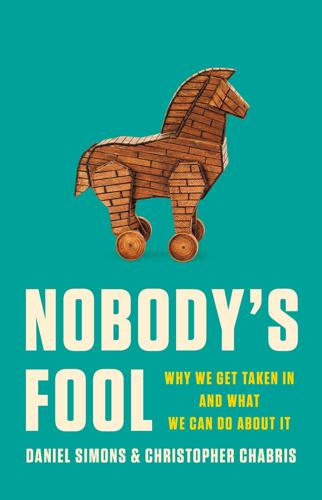
Nobody's Fool: Why We Get Taken in and What We Can Do About It
by
Daniel Simons
and
Christopher Chabris
Published 10 Jul 2023
Hsu, “A Century After Phony Flu Ads, Companies Hype Dubious Covid Cures,” New York Times, December 24, 2020 [https://www.nytimes.com/2020/12/24/business/media/dubious-covid-cures.html]. The 1918 influenza pandemic saw many such remedies advertised in newspapers and elsewhere: M. M. Phillips and D. Cole, “Coronavirus Advice Is Everywhere. It Was the Same with Spanish Flu,” Wall Street Journal, January 22, 2021 [https://www.wsj.com/story/coronavirus-advice-is-everywhere-it-was-the-same-with-the-spanish-flu-6a25d0d4]. Even today, many highly regarded healthcare organizations and medical professionals offer or recommend therapies for which there is no good scientific evidence or physiological mechanism by which they could work. 3.
…
We tend to devote more attention to cases that are still around, neglecting those that are not. That bias leads to a systematic misunderstanding of success and failure, one that is especially prevalent in business writing but that plagues many other consequential decisions. You should now be able to see the logical flaw in this statement about coronavirus vaccination by the podcaster Dave Rubin: “I know a lot of people who regret getting the vaccine. Don’t know anyone who regrets not getting it.”10 Remember the bullet-ridden airplane meme whenever you hear someone discuss what they concluded from the information they have. It should cue you to wonder about the information they’re missing, because what’s present is rarely representative of what’s not.
…
Groups like America’s Frontline Doctors, Front Line COVID-19 Critical Care Alliance, and World Council for Health all have names that resemble those of reputable medical groups (the latter sounds a lot like “World Health Organization”), but all touted questionable treatment and prevention measures during the pandemic, including the antiparasitic drug ivermectin, which was never shown to be effective against the coronavirus. These official-sounding “medical” groups have fancy websites that provide the trimmings of an established organization without any of the meat. For example, ivmeta.com provided an attractively designed page offering impressive-sounding “real-time meta-analysis” of ivermectin studies (a term that has no established meaning outside a network of pro-ivermectin websites).
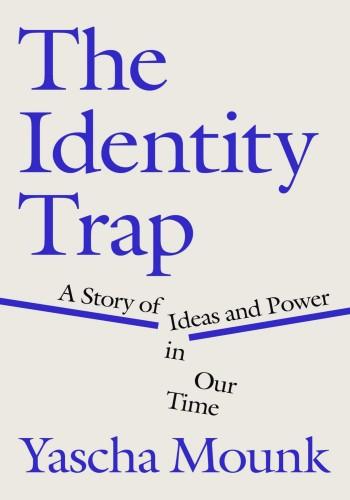
The Identity Trap: A Story of Ideas and Power in Our Time
by
Yascha Mounk
Published 26 Sep 2023
“Canada’s COVID-19 Immunization Plan: Saving Lives and Livelihoods,” Government of Canada, December 18, 2020, https://www.canada.ca/en/public-health/services/diseases/2019-novel-coronavirus-infection/canadas-reponse/canadas-covid-19-immunization-plan.html. GO TO NOTE REFERENCE IN TEXT Italy came up: Paola D’Errigo et al., “Italy’s Vaccination Strategy: Careful Planning and Building Trust,” Think Global Health, March 11, 2021, www.thinkglobalhealth.org/article/italys-vaccination-strategy-careful-planning-and-building-trust. GO TO NOTE REFERENCE IN TEXT Intensive care units: Lydia Ramsey Pflanzer, “Hospitals Could Be Overwhelmed with Patients and Run Out of Beds and Ventilators as the Coronavirus Pushes the US Healthcare System to Its Limits,” Business Insider, March 11, 2020, www.businessinsider.com/coronavirus-intensive-care-unit-shortages-of-ventilators-staff-space-2020-3.
…
Social media platforms like Twitter and Facebook have quickly become indispensable for public debate; when they ban certain viewpoints, they make it very hard for these ideas to reach a wide audience. And yet the CEOs of most major tech companies have vowed to ban a broad and poorly defined set of ideas they consider “misinformation.” Over the course of the past few years, they have, with that justification, artificially limited discussion of the origins of the coronavirus and scandals surrounding the son of a presidential candidate. Especially in the United States, a censorious spirit has gone mainstream. Major television networks and streaming providers have removed episodes of shows they consider offensive. Publishers have canceled the release of hotly anticipated novels because a few online reviewers deemed them insensitive.
…
A better solution to the persistent problem of segregation is a redoubled commitment to integration. The goal must be to create more contexts and opportunities in which people from different groups can interact and cooperate. Chapter 12 THE PATH TO EQUALITY When an earthquake hits, doctors have to decide whom to treat first. In the early stages of the coronavirus pandemic, hospitals in Italy and some parts of the United States were forced to make heartrending choices about the distribution of ventilators. And when a long-awaited vaccine finally promised to deliver the world from its suffering, public health authorities needed to determine who should be first in line to access its scarce doses.
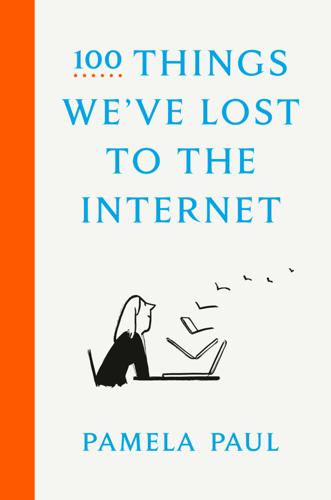
100 Things We've Lost to the Internet
by
Pamela Paul
Published 14 Oct 2021
We know too well the Internet’s trickle-down effects on our daily existence, from the screen we tap rather than the button we press when we wake in the morning; from what we do upon rising from bed to what we worry about as we drift off at night; from the particulars of our commute and what happens once we get to work and how we gather as a family when we return home. The ways in which we negotiate the school day and the summer vacation. How we see ourselves and treat one another; how we grow up and how we grow old. All this we know. Less remarked upon is what we used to do instead. I started writing this book well before the coronavirus pandemic hit, already feeling the ways the Internet was navigating where my brain wandered, occasionally startled and at other times lulled by what didn’t always feel like a choice, yet unaware how much deeper the quarantine would plunge me—like everyone else—into a world that was “online only.”
…
The early Internet likewise allowed for the possibility of shifting presentations, a place where, in text-only chats, you could explore various guises and versions of yourself. That was early days. Today, with every bit of the Internet open to view and capture, people learn to present a single homogenized version lest they somehow slip up and stand out in the wrong way to the wrong person at the wrong moment. The coronavirus quarantine, in which everyone was forced to present online all the time, only exacerbated this process, our home selves melding with our work selves and our social selves, all of us put into BBC Dad’s awkward shoes. On Facebook, you become the same “you” to your friends, your co-workers, your parents, and your future children.
…
You can sync and seamlessly integrate personal and professional agendas. Everyone knows where you are and where you will be, when you’re available and when you’re not. In other words, your personal agenda is no longer strictly personal. I, for one, would rather live a life of a thousand missed appointments. Only during the coronavirus pandemic did I find myself sending Google invites of necessity, attending prearranged Zooms. All was nonetheless double entered into my companion Levenger. My new one. Of course I went and bought another one—online—right away. Few retail shops sell such items anymore. In 2020, the mega-chain Papyrus went bankrupt.

Evil Geniuses: The Unmaking of America: A Recent History
by
Kurt Andersen
Published 14 Sep 2020
Those next eleven days in March were a remarkable time to watch America’s evil genius squadrons scramble the jets. On that same Monday, March 16, when the shutdown really started, the conservative Hoover Institution published a piece called “Coronavirus Perspective” recommending against any restrictions on the economy because the pandemic just wasn’t going to be a major public health problem. “In the United States, the current 67 deaths should reach about 500” in all, the Stanford think tank article projected, and in a quick follow-up article called “Coronavirus Overreaction,” the same writer completely showed his ideological cards. “Progressives think they can run everyone’s lives through central planning,” he warned, so don’t let them do it to fight the spread of this no-big-deal disease.
…
In early spring, when COVID-19 had killed only dozens of Americans, Stuart Stevens, a strategist for four of the five previous GOP presidential nominees but now a fierce apostate, wrote that “those of us in the Republican Party built this moment,” because “the failures of the government’s response to the coronavirus crisis can be traced directly to some of the toxic fantasies now dear to the Republican Party….Government is bad. Establishment experts are overrated or just plain wrong. Science is suspect.” He could have also listed Believe in our perfect mythical yesteryear, All hail big business, Short-term profits are everything, Inequality’s not so bad, Universal healthcare is tyranny, Liberty equals selfishness, Co-opt liberals, and Entitled to our own facts as operating principles of the Republican Party and the right.
…
From the start in 2020, the reckless right, with the president in the lead, encouraged Americans to disbelieve virologists, epidemiologists, and other scientific experts, because trusting them would be bad for business and stock prices. Entitled to our own facts. That systematic spread of coronavirus misinformation by Trump and the right through the first pandemic winter couldn’t have happened without the creation in the late 1980s (Rush Limbaugh) and ’90s (Fox News) of big-time right-wing mass media. Their continuous erasure of distinctions between fact and opinion has always served the propaganda purposes of the political party most devoted to serving the interests of big business and investors, and during the COVID-19 crises—Reopen now—they attempted to serve those interests directly.
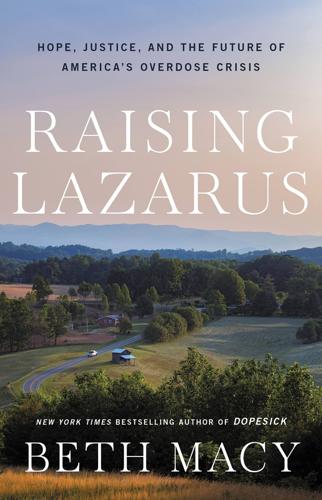
Raising Lazarus: Hope, Justice, and the Future of America’s Overdose Crisis
by
Beth Macy
Published 15 Aug 2022
Despite their friend’s connections and relative affluence, she could not access a COVID test when she got sick. “Economists know the free market doesn’t respond to emergencies—you don’t put out a bid when someone’s drowning in the ocean,” Deaton said. The madness that was America’s piss-poor response to the coronavirus was the same madness that had long imperiled addiction treatment, only literally no one was immune from COVID, not even then-President Trump. “Illicit drugs can’t get here from China now, but the ABC stores will deliver booze to your door!” a recovery leader told me. More people were overdosing from contaminated synthetics manufactured in basements and back rooms.
…
So-called suspicious orders were supposed to be red flags, but policing such orders was now handled by a kind of honor system, left to corporations that had given up honor in favor of enhanced shareholder value long ago. As Eyre predicted in an op-ed: “AmerisourceBergen will deny wrongdoing. Lawyers will scoop up a third of the cash. Politicians will steer the bulk of the money to fill budget holes wrought by the coronavirus shutdown. Only a small percentage, I fear, will be allocated to help West Virginians get through opioid-use-disorder treatment, which can take three to five years.” Suffering from a moderate stage of Parkinson’s disease, Eyre had left the Charleston Gazette-Mail and was working for a scrappy online news start-up, Mountain State Spotlight.
…
The Drug Policy Alliance and ACLU estimated the annual amount of War on Drugs spending to be $51 billion, as drug possession continues to be the number one arrest in the United States; see: Matt Sutton, “On 50th Anniversary of ‘War on Drugs,’ New Poll Shows Majority of Voters Support Ending Criminal Penalties for Drug Possession, Think Drug War Is a Failure,” drugpolicy.org, June 9, 2021. Also see: Derek Hawkins and William Wan, “Health agencies’ fund cuts challenge coronavirus response,” Washington Post, March 8, 2020. “secret of the care”: Dr. Francis Peabody, from a lecture given to Harvard Medical School students, October 21, 1926. three thousand jobs: Michael Hyland, “Apple to bring 3,000 jobs to Wake County, build RTP campus, invest more than $1 billion in NC,” CBS17.com, April 26, 2021.
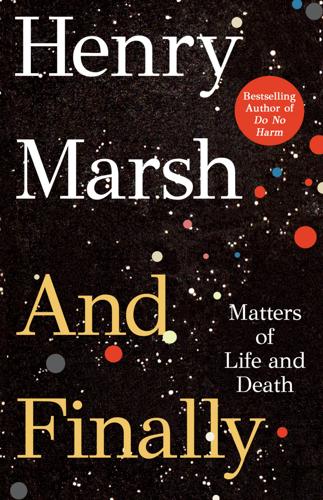
And Finally
by
Henry Marsh
But I did consult it to find out what I had been thinking at the onset of the Covid-19 pandemic. Not until 23 February, exactly one month before the lockdown started in England, did I mention coronavirus in my diary, although we had all heard many weeks earlier about what was happening in a place called Wuhan. Wuhan could have been a small village for all I knew – in fact it is a city with a population of 11 million. But Wuhan was far away and of no concern to us. I wrote that the coronavirus appeared to be spreading and I thought that it might be serious and a threat to my wife Kate, as she is on immune-suppressant drugs for Crohn’s disease.
…
My diary made no more mention of it for the next few days, and instead continued with its usual reporting of the weather (continuous rain), my work renovating the derelict lock-keeper’s cottage beside the Oxford canal that I had bought some years earlier (progressing very slowly), and my regular exercises (painful and tedious but occasionally exhilarating). Four days later, I commented that the news was all about coronavirus, that I was worried again about Kate and the possibility of her dying; I then contradicted myself by adding that I was not sure whether the virus was a major threat or not. It seems I was more concerned about whether the floor joists in my flat in Oxford would take the weight of a bookcase I was building.
…
But I have also had to confront the fact that much of the work I have done on the property is of poor quality and needs to be redone. And there was also the disquieting thought – what was the ultimate purpose of all that frenetic activity and accumulation of possessions in the first place? At the end of February, I noted that the coronavirus would clearly become a pandemic. I wrote that I was not concerned for myself but feared that Kate would not survive. I went to bed that night with apocalyptic thoughts about the pandemic. A medical acquaintance of ours with a high public profile had fallen ill with the virus and was badly affected.
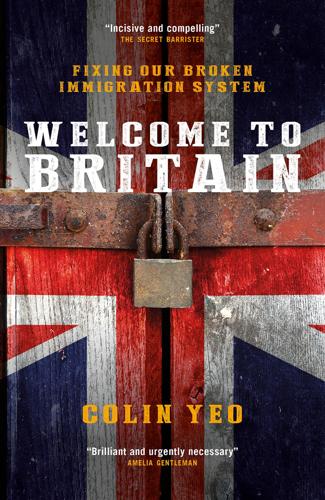
Welcome to Britain: Fixing Our Broken Immigration System
by
Colin Yeo;
Published 15 Feb 2020
Because of the net migration target discussed in Chapter 2, and by means of the hostile environment policies discussed in Chapter 3, we have seen the introduction of a raft of policies actively encouraging race discrimination in day-to-day life. Meanwhile, other aspects of immigration policy discussed in this book have deliberately dampened the life outcomes for migrants who settle here, in a vain attempt to deter them from coming in the first place. The twin shocks of Brexit and the coronavirus pandemic that was taking hold as this book went to press give us an opportunity to change direction and embrace a more equal, fair and respectful approach to those migrants who make this country their home. NOTES 1 See Winder, Bloody Foreigners, pp. 279–81 and ‘Nicholas Winton, Rescuer of 669 Children from Holocaust, Dies at 106’, New York Times, 1 July 2015. 2 See for example Randell Hansen, Citizenship and Immigration in Post-War Britain (Oxford: Oxford University Press, 2000) and Goodfellow, Hostile Environment. 3 See Will Somerville, Immigration under New Labour (Bristol: Policy Press, 2007), p. 14 and Winder, Bloody Foreigners, pp. 330–31. 4 ‘Papers released under 30-year rule reveal full force of Thatcher’s fury’, The Guardian, 30 December 2009. 5 Winder, Bloody Foreigners. 6 Hansen, Citizenship and Immigration in Post-War Britain, pp. 57, 59. 7 Ibid. 8 Gary Freeman, writing in Cornelius, Tsuda, Martin and Hollifield (eds), Controlling Immigration: A Global Perspective (Stanford: Stanford University Press, 1994). 9 See for example ‘Dutch woman with two British children told to leave UK after 24 years’, The Guardian, 28 December 2016.
…
The decision was reversed some six weeks later after a media outcry, but she died a year afterwards.49 There are also reports of very ill patients wrongly being turned away by hospitals and pregnant women being afraid to seek antenatal care for fear of the immigration consequences, with obvious risks to their own health and the health of their babies.50 As has been starkly illustrated by the coronavirus crisis, other illnesses are contagious and have wider public health implications. It is critically important that vaccination rates are very high amongst the public, for example, and that transmissible conditions such as HIV, tuberculosis or new diseases like Covid-19 are identified and treated.
…
In 2017, the Law Commission, the official body tasked with legal reform, was asked by then Home Secretary Amber Rudd ‘to review our immigration laws with a view to simplifying them’.15 The report was produced in January 2020 and partially accepted by the Home Office a couple of months later just as the coronavirus crisis was beginning. Arguably rather optimistically, the Home Office said it intended to completely rewrite and reissue the whole of the Immigration Rules by January 2021.16 Simplifying and rewriting the Immigration Rules would be very welcome indeed, but still this would not address the stream of primary and secondary legislation that spews forth from the government so frequently.
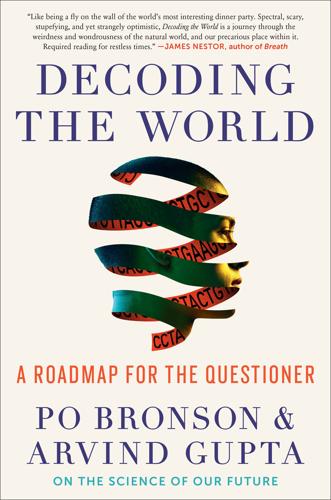
Decoding the World: A Roadmap for the Questioner
by
Po Bronson
Published 14 Jul 2020
During their time at IndieBio, which was just a few months ago, Caspr discovered a brand-new Cas9 variation and a novel Cas12a variant. When coronavirus started killing people in Wuhan, China, it took Caspr only two weeks to develop a rapid, one-hour diagnostic test to detect coronavirus infection. It doesn’t diagnose symptoms, like other tests. It detects corona at the DNA-matching level. So Caspr isn’t using CRISPR to edit the genome; it’s using CRISPR to detect the presence of a code—in this case, coronavirus—but they’ve also done Zika and many superbugs. CRISPR’s main feature is it cuts the genome when it spots a target code.
…
The high cost and risk of development requires him to have the patent protection, and the more the better. If you can’t beat ’em, join ’em. Two weeks later, I’m back in San Francisco when Franco Goytia, the CEO of Caspr, walks in. Hugs all around. Just two days ago, Caspr was in the news all over Latin America for inventing its DNA-based detection of coronavirus. As of this morning, coronavirus has killed 1,018 people. Now Franco has something more to show us. Our IndieBio team piles into a room, and Franco gets his team on the phone from Argentina. “We found a way to get our own method-of-use CRISPR patent,” Franco announces. “Walk us through it,” I ask. “To be patentable, it has to both be different and improve performance,” Franco says.
…
Classification: LCC TP248.6 .B76 2020 | DDC 660.6/5—dc23 LC record available at https://lccn.loc.gov/2020014841 ISBNs: 978-1-5387-3431-5 (hardcover), 978-1-5387-3432-2 (ebook), 978-1-5387-5419-1 (international) E3-20200917-JV-NF-ORI Contents Cover Title Page Copyright Dedication About the Cover Art About This Book Authors’ Note 1. First Coronavirus Death in U.S. and New Cases Detected as Testing Expands WASHINGTON POST 2. “World’s Supermarket” Returns as Epidemic Eases in China THE STAR 3. Silicon Valley’s New Obsession: Boring-Ass Startups THE HUSTLE 4. 33.48 Tons of Dead Fish Collected in Pinellas County as Red Tide Bloom Lingers ABC ACTION NEWS 5.
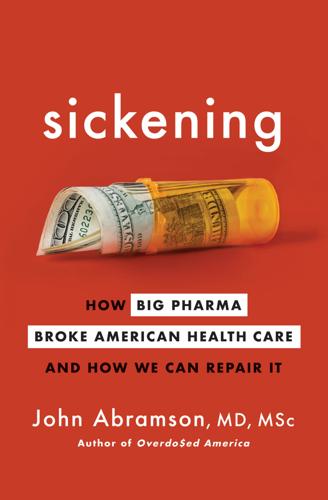
Sickening: How Big Pharma Broke American Health Care and How We Can Repair It
by
John Abramson
Published 15 Dec 2022
Market Failure in Medical Knowledge Part III: Moving Forward 9. The Limits of Obamacare 10. The Key to Meaningful Reform: Fix the Knowledge Problem 11. Reform from the Bottom Up Afterword Acknowledgments Notes Index About the Author Copyright About the Publisher Introduction Tragically, during the first year of the coronavirus pandemic, an average of fourteen hundred Americans lost their lives to COVID-19 every day. Far more tragically, but with far less public awareness, Americans have been dying unnecessarily at almost the same rate for two decades.* This invisible tragedy is occurring not because of a once-in-a-century pandemic, but rather because, compared to citizens of other wealthy nations, we in the United States have such inferior health and health care.
…
Big Pharma does not set out to purposely harm Americans’ health, but its primary job has become the exploitation of each situation as a unique opportunity to maximize profits, regardless of the overall impact on society. The COVID-19 vaccines, touted as highly effective (they are) and free (they are decidedly not), provide a striking example. Historically, vaccine development in the face of acute viral threats — like Zika and SARS — has not panned out financially for manufacturers, so, early in the coronavirus pandemic, they were not enthusiastic about developing and testing vaccines. Three months into the pandemic, as the gravity of the situation became impossible to ignore, the U.S. government launched Operation Warp Speed, an administrative mechanism to create financial incentives rich enough to motivate potential vaccine makers to develop, test, and manufacture vaccines quickly and in large quantity.
…
The foundational research that made the rapid development of vaccines possible had been completed in 2016 by scientists at the National Institutes of Health (NIH), working with researchers at Dartmouth College and Scripps Research Institute. They developed the technology to genetically engineer the exact sequence of amino acid building blocks that comprise the antibody-inducing spike proteins surrounding any specific strain of coronavirus. In January 2020, armed with this technology, NIH researchers needed only a few days to turn the genetic code for COVID-19, provided by Chinese scientists, into a genetic “blueprint” for the vaccine. From that point it took Moderna only one month to develop and produce enough vaccine to begin large clinical trials.

The Impossible City: A Hong Kong Memoir
by
Karen Cheung
Published 15 Feb 2022
GO TO NOTE REFERENCE IN TEXT Part II 2003 Liu Jianlun: Ilaria Maria Sala, “Hong Kong’s Coronavirus Panic Buying Isn’t Hysteria, It’s Unresolved Trauma,” Quartz, February 12, 2020, https://qz.com/1798974/how-sars-trauma-made-hong-kong-distrust-beijing/. GO TO NOTE REFERENCE IN TEXT China already had knowledge: Ilaria Maria Sala, “Hong Kong’s Coronavirus Panic Buying Isn’t Hysteria, It’s Unresolved Trauma,” Quartz, February 12, 2020, https://qz.com/1798974/how-sars-trauma-made-hong-kong-distrust-beijing/. GO TO NOTE REFERENCE IN TEXT 299 people will have died: Ilaria Maria Sala, “Hong Kong’s Coronavirus Panic Buying Isn’t Hysteria, It’s Unresolved Trauma,” Quartz, February 12, 2020, https://qz.com/1798974/how-sars-trauma-made-hong-kong-distrust-beijing/.
…
GO TO NOTE REFERENCE IN TEXT gaa yau: “Add oil,” a Hong Kong English phrase for showing support and encouragement. GO TO NOTE REFERENCE IN TEXT The Wall Street Journal interviews: Lucy Craymer, “Coronavirus Prompts a Whole City to Try Home Schooling,” The Wall Street Journal, February 26, 2020, https://www.wsj.com/articles/coronavirus-prompts-a-whole-city-to-try-home-schooling-11582734458. GO TO NOTE REFERENCE IN TEXT going for HK$5.3 million: Price on Midland Realty website, accessed October 2020, https://www.midland.com.hk/en/. GO TO NOTE REFERENCE IN TEXT 2014 the election system is designed to favor: The Legislative Council elections feature both geographical constituencies and functional constituencies; only candidates for the former are directly elected by Hong Kong people.
…
But two neighborhoods down from the bookstore, in a little alley not far from the business district in Central, it’s past last call for drinks at Club 71. Audaciously named after the half-million-strong protest march on July 1, 2003, the bar welcomed scores of activists, journalists, and artists but eventually succumbed to unaffordable rents during the coronavirus pandemic. It was my favorite watering hole. “Financially, I really couldn’t hang on,” owner Grace Ma said in an interview. “It’s time to move on, I want to do something else.” In its last month of operation, the bar was so packed that patrons had to stand in the park outside, sloshing down the foaming beers.

On Breathing
by
Jamieson Webster
Published 20 Feb 2025
We tend to forget that we’re breathing. During the pandemic, this forgetfulness became untenable, as breath, the vector of that plague, was driven from background to foreground. I can’t help but notice the turmoil that seemed to arrive at the very moment that breathing was thrown into question—not just the effect of coronavirus on the lungs, but the political situation in the United States, our asphyxiating history of racism and police violence, climate catastrophe, all amid renewed international wars. It’s as if the body and environmental threats were directly translated into the political arena and made explicit. Many like to speak about the pandemic as an era of anxiety, much like that of the twentieth century and the world wars.
…
Never had we been forced to confront the stark opposition between the pursuit of individual freedom as America has so gloriously and so vainly defined it and the reality of 9 billion inhabitants living and breathing in a shared atmosphere. As our breath became harmful to the other, restriction became the essence of collective care. Maybe it was always the essence? If the pandemic has undone something, then perhaps it is our feeling of being bound together by a human project. The philosopher Jean-Luc Nancy called coronavirus a “communovirus,” pointing to the communal aspects of life unearthed by the pandemic, along with an ironic nod to the renewed fears of China. Even as it showed us as equal participants, we understood that we are not all equal in our privileges when it comes to life and death—just as, even outside of times of pandemic, we aren’t equal when it comes to the air we breathe.
…
But their idols are silver and gold, made by the hands of men. They have mouths, but cannot speak, eyes, but they cannot see; they have ears, but cannot hear, noses, but they cannot smell; they have hands, but cannot feel, feet, but they cannot walk; nor can they utter a sound with their throats. This will have been the effect of coronavirus for me, and maybe for some others: to have wiped out the false idol of freedom. What will it be replaced with? I didn’t know the Bible verse before hearing it in the ICU, only Shakespeare’s rendition of it: “Last scene of all, / That ends this strange eventful history, / Is second childishness and mere oblivion; / Sans teeth, sans eyes, sans taste, sans everything.”

The Politics Industry: How Political Innovation Can Break Partisan Gridlock and Save Our Democracy
by
Katherine M. Gehl
and
Michael E. Porter
Published 14 Sep 2020
Michael and I are all in. Are you? —Katherine Gehl Notes Authors’ Note 1. “158 Million Americans Told to Stay Home, but Trump Pledges to Keep It Short,” The Coronavirus Outbreak, New York Times, March 23, 2020, https://www.nytimes.com/2020/03/23/world/coronavirus-news.html. 2. Josh Mitchell and Josh Zumbrun, “Coronavirus-Triggered Downturn Could Cost FiveMillion U.S. Jobs,” Wall Street Journal, March 21, 2020, https://www.wsj.com/articles/coronavirus-triggered-downturn-could-cost-5-million-u-s-jobs-11584783001. Preface 1. Appreciation to Greg Orman for the idea of learned helplessness. Introduction 1.
…
We’re excited about the possibilities. This book arrives not a moment too soon. Please engage—we owe it to our extraordinary country to do so. Authors’ Note Pandemic 2020 As publishing deadlines pass for The Politics Industry, the world is racing to beat back a nationless, faceless, dangerous adversary: the coronavirus (COVID-19) pandemic. Currently, one in four Americans have been ordered to “shelter in place.”1 Metropolitan hospitals are becoming overwhelmed, medical supplies are running short, and getting infected appears to be easier than getting tested. Many predict a trailing economic depression, with impacts that could be more painful for our country than those of the virus itself.2 It is surreal.
…
The threat of the next binary election continues to outweigh at times the pressing concerns of the day when it comes to proactive lawmaking in Congress. Finally, as with the Cold War, 9/11, and the Great Recession, there will be American children who remember where they were when the news of the coronavirus pandemic first broke and what happened to their families during the nation’s response to it. The pandemic and its aftermath will define generations. But it could also redefine our politics. When a new normal comes, there will be a moment; a window for big, sweeping change. For the good of all Americans, and to honor those we will have lost and the sacrifices made by so many, we pray that enough of us will put country over party and invest in the political innovation that can revivify our politics with healthy competition—and make sure we don’t get caught unprepared again.
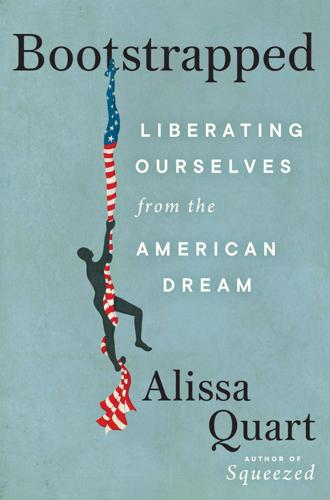
Bootstrapped: Liberating Ourselves From the American Dream
by
Alissa Quart
Published 14 Mar 2023
“Another government stimulus package is not in the best interests of the people imo,” he tweeted, irksomely, during the first summer of the pandemic, while his companies continued to benefit from the generosity of the government. (Musk also argued against protecting citizens from contagion, saying early during the coronavirus lockdown, “You should be allowed to do what you want,” and insisting that he keep his California plant open during the pandemic, imperiling his workers.) That the rich deserve their money is a fiction that crosses party lines, though—it knows green more than blue or red and adheres to the sort of rich person who claims to believe in good government as well.
…
An even more repellent example of this was when a South Dakota hockey team and mortgage lender in 2021 threw a promotional event called “Dash for Cash,” where underpaid schoolteachers were encouraged to crawl and slither on a rink’s ice grabbing $5,000 worth of dollar bills off the cold surface and stuffing them in their clothes during an intermission. This filmed occasion went viral. And when the pandemic hit, Americans’ dependence on the dystopian social safety net only grew. Families used GoFundMe to underwrite their food costs while they stayed at coronavirus isolation hotels or to pay for Zoom funerals after COVID deaths. Others campaigned for essential workers, for beloved bookstores and restaurants set to close. A GoFundMe page raised over $50,000 for two Black FedEx drivers who claimed they were fired over a viral video confrontation with a customer in May 2020.
…
Instacart’s bootstrapping owner, Apoorva Mehta, was often admiringly cited in the press as an “immigrant founder” who provides “essential services,” giving “jobs and a lifeline to many,” but the astronomical valuation of his company contrasted sharply with how pinched the contractors’ personal budgets were. Mehta, “the serial entrepreneur” behind Instacart, was, by June 2020, according to Forbes, “leading a $13.7 billion unicorn after demand for grocery delivery skyrocketed during the coronavirus pandemic,” writing approvingly that Mehta’s grocery delivery service was tamping down the efforts of “rebellious workers.” The CFOs and CEOs had their individualistic mantras, yet in truth these potentates depended on masses of people like her. Bain, when I first spoke to her, was working a gig job that is sometimes referred to as a “hustle,” or a “side hustle,” if it takes up a smaller slice of a person’s overall hours.
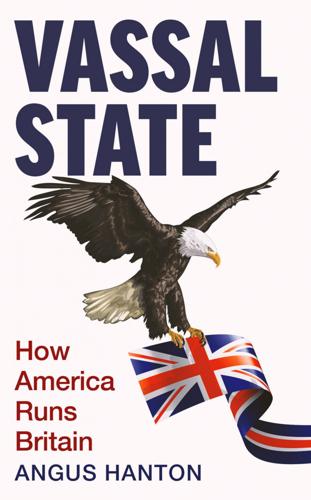
Vassal State
by
Angus Hanton
Published 25 Mar 2024
ie=UTF8&node=14917073031. 21 ‘CMA issues directions to NatWest about bundling products’, Gov.uk [website] (31 August 2022), https://www.gov.uk/government/publications/cma-issues-directions-to-natwest-about-bundling-products. 22 ‘FTC takes action against Amazon for enrolling consumers in Amazon Prime without consent and sabotaging their attempts to cancel’, Federal Trade Commission [website] (21 June 2023), https://www.ftc.gov/news-events/news/press-releases/2023/06/ftc-takes-action-against-amazon-enrolling-consumers-amazon-prime-without-consent-sabotaging-their. 23 Quoted in Stefania Palma and Patrick McGee, ‘Amazon “tricked and trapped” customers with Prime service, FTC claims’, Financial Times (21 June 2023), https://www.ft.com/content/a0a3791d-71d6-42f8-9da2-49c7c2dde78f. 24 Ben Stevens, ‘PerfectHome ordered to pay £2.1m back to customers by FCA’, Retail Gazette [website] (21 March 2018), https://www.retailgazette.co.uk/blog/2018/03/perfecthome-ordered-pay-2-1m-back-customers-fca/. 25 David Curry, ‘Candy Crush revenue and usage statistics (2023)’, Business of Apps [website] (9 January 2023), https://www.businessofapps.com/data/candy-crush-statistics/. 26 ‘Consumer “inertia” boosts subscription firms’ revenues by 200%’, Pymnts [website] (9 October 2023), https://www.pymnts.com/subscription-commerce/2023/study-consumer-inertia-boosts-subscription-firms-revenues-by-200/. 27 ‘Half a billion pounds spent on subscriptions that rolled over without people realising during the cost-of-living crisis’, Citizens Advice [website] (1 December 2022), http://tinyurl.com/4k8yxpns. 28 ‘Introducing Snapchat+’, Snap [website] (29 June 2022), https://newsroom.snap.com/en-GB/snapchatplus. 29 Quoted in ‘Over 2 million have problems cancelling subscriptions on credit or debit cards’, Citizens Advice [website] (8 March 2016), https://www.citizensadvice.org.uk/cymraeg/amdanom-ni/about-us1/media/press-releases/2-million-have-problems-cancelling-subscriptions/. 30 ‘Financial Lives 2022: key findings from the FCA’s financial lives May 2022 survey’, Financial Conduct Authority [website] (26 July 2023), https://www.fca.org.uk/publication/financial-lives/financial-lives-survey-2022-key-findings.pdf. 31 ‘UK households waste almost £170 on average each year on unused subscriptions’, Swansea Bay News [website] (27 June 2022), https://swanseabaynews.com/2022/06/27/uk-households-waste-almost-170-on-average-each-year-on-unused-subscriptions/. 32 ‘The money statistics December 2023’, The Money Charity [website], https://themoneycharity.org.uk/money-statistics/; ‘Household credit: a visual summary’, Bank of England [website] (31 January 2023), https://www.bankofengland.co.uk/statistics/visual-summaries/household-credit. 33 ‘The money stats – October 2022 – rising household bills drive financial resilience epidemic for UK consumers’, The Money Charity [website] (27 October 2022), https://themoneycharity.org.uk/the-money-stats-october-2022-rising-household-bills-drive-financial-resilience-epidemic-for-uk-consumers/. 34 Quoted in Vicky Shaw, ‘Scale of problem debt at “epidemic levels”, says Archbishop of Canterbury’, Independent (21 March 2018), https://www.independent.co.uk/news/business/news/uk-debt-levels-archbishop-of-canterbury-credit-cards-cap-a8266131.html. 35 Welby and Barlow quoted in Vicky Shaw, ‘Problem debt is at “epidemic levels” – the help that’s out there’, Daily Mirror (17 May 2018), https://www.mirror.co.uk/money/problem-debt-epidemic-levels-helps-12224220. 36 ‘Financial Lives 2022: key findings from the FCA’s financial lives May 2022 survey’. 37 Martyn James, ‘How to cancel subscriptions and save a fortune’, Times (12 December 2023), https://www.thetimes.co.uk/money-mentor/coronavirus-crisis/consumer-rights/how-to-cancel-subscriptions-and-save-a-fortune. 38 ‘Barclaycard data shows lockdown has made us a “subscription society”’, InsightDIY [website] (26 August 2020), https://www.insightdiy.co.uk/news/barclaycard-data-shows-lockdown-has-made-us-a-subscription-society/8832.htm. 39 ‘Household debt’, OECD [website], https://data.oecd.org/hha/household-debt.htm. 40 Jake Attfield, ‘Shame, upbringing and burdening others: why do 29 million UK adults feel uncomfortable talking about money despite feeling worried about it?’
…
For Hologic, see David Wilcock and Connor Boyd, ‘PPE providers, the firm behind school meal vouchers and the NHS locum medic bank among big winners making millions as government pays private firms £6.5 BILLION during COVID crisis’, Daily Mail (20 August 2020), https://www.dailymail.co.uk/news/article-8646941/Government-paid-private-firms-6-5BILLION-COVID-crisis-services-struggled.html. For Thermo Fisher, see ‘Thermo Fisher agrees to supply UK coronavirus tests’, Financial Times (10 April 2020), https://www.ft.com/content/a08688a9-6936-432b-a5b2-f900962c6497. For Sitel, see Josh Halliday, ‘Outsourcing firms miss 46% of Covid contacts in England’s worst-hit area’, Guardian [website] (21 August 2020), https://www.theguardian.com/world/2020/aug/21/outsourced-firms-miss-46-of-covid-test-contacts-in-englands-worst-hit-areas.
…
For TransUnion, see Stephen Delahunty, ‘Government silent on involving credit firm in COVID-19 testing’, Byline Times (22 May 2020), https://bylinetimes.com/2020/05/22/government-silent-on-involving-credit-firm-in-covid-19-testing/. For Brake Bros, see Sam Baker, ‘Government awards £1billion in state contracts to companies including French-owned Edenred, a healthcare firm advised by a Tory MP and US-run Brake Bros WITHOUT public tender in fast-tracked deals amid coronavirus pandemic’, Daily Mail (16 May 2020), https://www.dailymail.co.uk/news/article-8325925/Government-awards-1billion-fast-tracked-state-contracts-firms-WITHOUT-public-tender.html. 5 See listing for Brake Bros at David Barmes, Danisha Kazi and Simon Youel, ‘The Covid Corporate Financing Facility’ [PDF], Positive Money [website] (July 2020), p. 9, https://positivemoney.org/wp-content/uploads/2020/07/CCFF-Final-version.pdf. 6 Francesco Guarascio, ‘Tougher terms: why the EU is paying more for new COVID shots’, Reuters [website] (3 August 2021), https://www.reuters.com/world/europe/tougher-terms-why-eu-is-paying-more-new-covid-shots-2021-08-03/. 7 ‘AstraZeneca says it will start profiting from its vaccine’, New York Times (12 November 2021), https://www.nytimes.com/2021/11/12/business/astrazeneca-vaccine-profit.html. 8 For 150 nurses, see Gemma Mitchell, ‘Covid-19: new nurse death figures prompt call for investigation’, Nursing Times (25 January 2021).

Who’s Raising the Kids?: Big Tech, Big Business, and the Lives of Children
by
Susan Linn
Published 12 Sep 2022
Notes A NOTE TO THE READER Seth Godin, All Marketers Are Liars: The Power of Telling Authentic Stories in an Untrusting World (New York: Portfolio, 2005), 8. 1. Aaron Rupar, “Trump’s Friday Night Effort to Weaponize Coronavirus Against His Enemies Has Already Aged Poorly,” Vox, February 29, 2020. 2. White House Press Conference, “Remarks by President Trump, Vice President Pence, and Members of the Coronavirus Task Force in Press Briefing,” The White House, March 24, 2020, trumpwhitehouse.archives.gov/briefings-statements/remarks-president-trump-vice-president-pence-members-coronavirus-task-force-press-briefing-10. 3. An excellent summary of the harms advertising and marketing do to Black and Brown children can be found at “Black Childhood Matters,” Campaign for a Commercial-Free Childhood, commercialfreechildhood.org/black-childhood-matters. 4.
…
At the time, I thought this was the pinnacle of a market-driven society. But while Donald Trump may be the embodiment of a hyper-commercialized culture, he’s also the result rather than the cause. A scary number of Americans still buy the lie that he won a bid for re-election that he empirically lost. And speaking of lies, we lost our best chance to thwart the coronavirus because pundits and politicians—aided by Facebook* and by other profit-hungry tech and media conglomerates—sold millions of people on blatant fabrications that denigrated real life-saving protections like vaccines and face masks. Advertising targets emotions, not intellect, and is designed to forestall critical thinking.
…
Advertising targets emotions, not intellect, and is designed to forestall critical thinking. Iconic slogans like Nike’s “Just Do It,” Sprite’s “Obey Your Thirst,” and Pepsi’s “Live for Now” glorify impulsivity. When I was in Korea several years ago, the slogan for Coke was “Stop Thinking.” I began to understand the United States’ colossal and tragic failure to contain the coronavirus in its early days, potentially saving hundreds of thousands of lives, as a macabre affirmation of the power of marketing. The Trump administration’s handling of the virus certainly seemed to embrace the essence of Seth Godin’s marketing maxim: facts are irrelevant. (“The virus is a hoax.”1 “It’s something we have tremendous control over.”2) What really matters is what people believe.
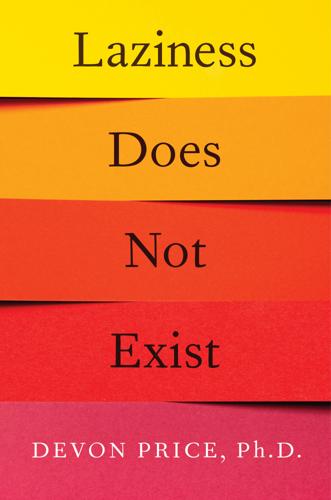
Laziness Does Not Exist
by
Devon Price
Published 5 Jan 2021
Kate Gibson, “American Airlines Accused of Punishing Workers Who Use Sick Time,” CBS News, July 25, 2019, https://www.cbsnews.com/news/american-airlines-accused-of-punishing-workers-who-use-sick-time/. 27. Diana Boesch, Sarah Jane Glynn, and Shilpa Phadke, “Lack of Paid Leave Risks Public Health during the Coronavirus Outbreak,” Center for American Progress, March 12, 2020, https://www.americanprogress.org/issues/women/news/2020/03/12/481609/lack-paid-leave-risks-public-health-coronavirus-outbreak/. 28. “Paid Sick Days Improve Public Health,” National Partnership for Women & Families, February 2020, https://www.nationalpartnership.org/our-work/resources/economic-justice/paid-sick-days/paid-sick-days-improve-our-public-health.pdf. 29.
…
Retired people often become depressed and see their lives as devoid of purpose.8 Like unemployed people, retired folks often report feeling directionless and lonesome. Their isolation and lack of daily structure can make them sick, putting them at an elevated risk of heart disease.9 Many of us spend our entire adult lives dreading this period of life, or we put it off by continuing to work past the point that’s healthy for us.10 When the coronavirus hit Chicago and all the bars shut down, Michael was immediately overtaken by panic and dread. He had worked nearly every day of his adult life, and with the bars closed, he had no idea what to do with himself or how he would go about making money. So, he set out to open a speakeasy in an empty storefront in the city.
…
And we’re not paranoid for having that fear—in 2019, American Airlines was sued by New York City’s Department of Consumer and Work Protection for having punished and threatened workers who used their sick days.26 When companies fail to provide employees with adequate sick-leave policies and managers bully their workers into working while ill, the public health consequences are massive. Many sick employees spread the coronavirus to their coworkers and fellow commuters because they weren’t able to take time off from work in the early days of the pandemic.27 On a more mundane level, sick food-service employees often have no choice but to come in to work and spread their illness to fellow workers and patrons; 81 percent of food-industry workers have no employer-provided sick days.28 When people do get the chance to leave their workplaces, they still struggle with the temptation to continue working remotely.
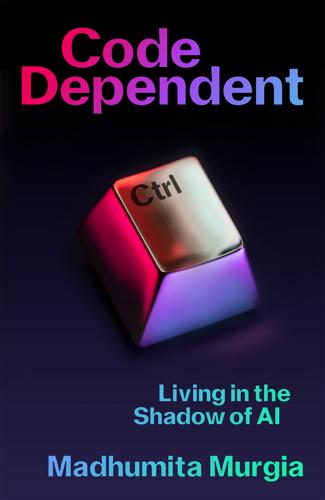
Code Dependent: Living in the Shadow of AI
by
Madhumita Murgia
Published 20 Mar 2024
At Qure.ai’s headquarters in Mumbai, computer scientists used hundreds of lung X-rays of thousands of Covid-19 patients to train a new set of algorithms that could produce a diagnosis of coronavirus infection, which they built into an app. The Mumbai city government deployed frontline health workers with the app to drive into heavily infected areas such as the Dharavi slum settlement where they could conduct spot tests and quarantine families, before PCR tests became widely available. In those early days of the pandemic, Ashita also began using qTrack to help diagnose the novel coronavirus, as Qure.ai had assured her it could. However, pretty early on, she found it was making a crucial error: it often confused the X-rays of her tuberculosis patients with Covid-19.
…
Ian knew, from talking to Benja, and other friends, that working for Sama had changed their lives. Maybe, he thought, it could change his too and he would be able to move out of the place he was sharing with six other young men, and perhaps even save for the future. So he signed up to work for Sama and has worked there ever since. When we’d met virtually during the coronavirus lockdown two years ago to talk about Sama and his work, Ian had been a skinny kid with a shy smile and a scraggly moustache. Today, he is walking us to his new home which he shares with his wife and four-month-old baby in the heart of Kibera. ‘Things are different,’ he says. The neighbourhood of Kibera in central Nairobi is an informal settlement, or a slum, one of the largest in Africa that houses some of the country’s poorest families.
…
In a makeshift factory built in the middle of a field of rubble, a dozen women and girls sew footballs by hand – a business funded with a Sama grant. Employees have launched herbal beauty products, opened M-PESA or digital wallet shops, raised chickens for slaughter and founded girls’ football clubs in the settlements they come from. In early 2020, just before the coronavirus pandemic swept in, Leila died of epithelioid sarcoma, aged thirty-six. Her mission and the visible passion for the community of East African youth she had built up made me curious. Was Leila’s idealized view of things close to reality? Did Sama workers like Ian and Benja feel truly empowered by the work?
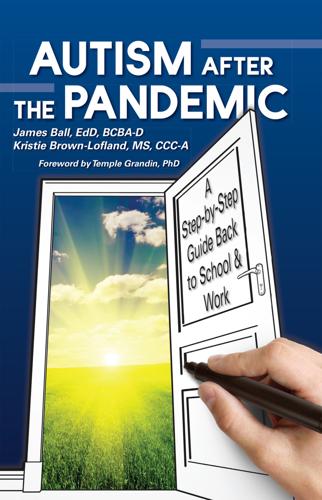
Autism After the Pandemic: A Step by Step Guide to Successfully Transition Back to School and Work
by
James Ball
and
Kristie Lofland
Published 17 Aug 2020
A Teaching Strategy that can Save You Time: Chaining https://autismclassroomresources.com/a-teaching-strategy-that-can-save-you-time-chaining/ Accessible ABA website: Use Chaining and Task Analysis to Help Your Child with Autism https://accessibleaba.com/blog/chaining-task-analysis-autism REINFORCEMENT/MOTIVATIONAL SYSTEM Autism Behavior Therapy website: Free Printable First-and-Then Board https://autismbehaviourtherapy.com/free-printable-first-and-then-board/ StoryboardThat website: First Then Board Printable Template https://www.storyboardthat.com/storyboards/mon_shari/first-then-template Teachers Pay Teachers website: First-Then Schedule Board Freebie https://www.teacherspayteachers.com/Product/First-Then- Schedule-Board-Freebie-713428 ANTICIPATE THEIR SENSORY NEEDS AND BE PREPARED Noodle Nook website: COVID-19 Social Story FREE! http://www.noodlenook.net/covid-19-social-story-free/ PA Autism website: Wearing a Mask Social Story https://paautism.org/resource/wearing-mask-social-story/ Teachers Pay Teachers website: “We Wear Masks” – Coronavirus Social Story about Wearing a Mask https://www.teacherspayteachers.com/Product/We-Wear-Masks-Coronavirus-Social-Story-about-Wearing-a-Mask-5425981 Autism Little Learners website: Seeing People Wearing Masks Story https://www.autismlittlelearners.com/2020/04/seeing-people-wearing-masks-story.html Autism Research Institute website: I Can Wear a Mask Social Story https://www.autism.org/wp-content/uploads/2020/04/I-can-wear-a-mask-1-1.pdf YouTube – Jordan Drane: Wearing a Mask: A Social Narrative for Children https://www.youtube.com/watch?

The Singularity Is Nearer: When We Merge with AI
by
Ray Kurzweil
Published 25 Jun 2024
BACK TO NOTE REFERENCE 11 For more detail on Moderna’s use of AI in developing vaccines, see “AI and the COVID-19 Vaccine: Moderna’s Dave Johnson,” Me, Myself, and AI podcast, ep. 209 (July 13, 2021), https://sloanreview.mit.edu/audio/ai-and-the-covid-19-vaccine-modernas-dave-johnson; “Moderna on AWS,” Amazon Web Services, accessed October 20, 2022, https://aws.amazon.com/solutions/case-studies/innovators/moderna; Bryce Elder, “Will Big Tobacco Save Us from the Coronavirus?,” Financial Times, April 1, 2020, https://www.ft.com/content/f909fb16-f514-47da-97dc-c03e752dd2e1. BACK TO NOTE REFERENCE 12 Gary Polakovic, “Artificial Intelligence Aims to Outsmart the Mutating Coronavirus,” USC News, February 5, 2021, https://news.usc.edu/181226/artificial-intelligence-ai-coronavirus-vaccines-mutations-usc-research; Zikun Yang et al., “An In Silico Deep Learning Approach to Multi-Epitope Vaccine Design: A SARS-CoV-2 Case Study,” Scientific Reports 11, article 3238 (February 5, 2021), https://doi.org/10.1038/s41598-021-81749-9.
…
BACK TO NOTE REFERENCE 150 For more on this shift and its probable long-term impacts, see Rani Molla, “Office Work Will Never Be the Same,” Vox, May 21, 2020, https://www.vox.com/recode/2020/5/21/21234242/coronavirus-covid-19-remote-work-from-home-office-reopening; Gil Press, “The Future of Work Post-Covid-19,” Forbes, July 15, 2020, https://www.forbes.com/sites/gilpress/2020/07/15/the-future-of-work-post-covid-19/#3c9ea15e4baf; Nick Routley, “6 Charts That Show What Employers and Employees Really Think About Remote Working,” World Economic Forum, June 3, 2020, https://www.weforum.org/agenda/2020/06/coronavirus-covid19-remote-working-office-employees-employers; Matthew Dey et al., “Ability to Work from Home: Evidence from Two Surveys and Implications for the Labor Market in the COVID-19 Pandemic,” Monthly Labor Review (US Bureau of Labor Statistics), June 2020, https://doi.org/10.21916/mlr.2020.14.
…
One benefit of sexual reproduction is that each of us has a different genetic makeup.[24] But advances in genetic engineering[25] (which can edit viruses by manipulating their genes) could allow the creation—either intentionally or accidentally—of a supervirus that would have both extreme lethality and high transmissibility. Perhaps it would even be a stealth infection that people would catch and spread long before they realized they had contracted it. No one would have preexisting immunity, and the result would be a pandemic capable of ravaging the human population.[26] The 2019–2023 coronavirus pandemic offers us a pale glimpse of what such a catastrophe could be like. The specter of this possibility was the impetus for the original Asilomar Conference on Recombinant DNA in 1975, fifteen years before the Human Genome Project was initiated.[27] It drew up a set of standards to prevent accidental problems and to guard against intentional ones.
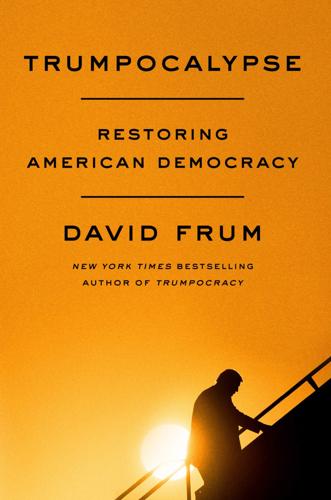
Trumpocalypse: Restoring American Democracy
by
David Frum
Published 25 May 2020
“The attempt to deflect and blame the media and Democrats from Trish Regan, Sean Hannity, Laura Ingraham, Lou Dobbs, Jesse Watters, and Greg Gutfeld instead of addressing the coronavirus is really irresponsible and hazardous to our viewers,” an unnamed producer at Fox News told CNN’s Brian Stelter. The producer could have added Jeanine Pirro, the Fox & Friends crew, and so many others, hosts and guests, as well as the radio personality Rush Limbaugh, who argued on air that health professionals were exaggerating the risks of coronavirus in order to stop Trump’s primary-season rallies. These pro-Trump talkers were serving Trump as he demanded to be served, and as they had so devotedly served him before.
…
When the crisis could be denied no further, his first thought was to game the stock market a little longer. His second thought was to bail out casinos and hotels—including his own. Since his bankruptcies at the end of the 1980s, Trump has contrived schemes and scams to keep his creditors at bay for the next twenty-four hours. That is how he has managed the coronavirus crisis. Each day he devised some new fantasy in the hope of lulling his supporters and boosting financial indexes. Through ten squandered weeks, Trump’s digital friends on television, radio, and social media parroted back to him the lies he tweeted at them. There was never any plan. There was only a frantic surge of empty words to continue the flimflam one day longer.
…
Trump insisted there was nothing to worry about, the virus was only the common flu, that the number of cases would soon drop to zero, that he had imposed airtight containment, that there was nothing to worry about. His allies seconded his message. His supporters believed it. Trump responds to challenge by directing rage at some designated enemy. Hence his attempt to rebrand coronavirus as “the Chinese virus,” so that there would be some target of hatred more satisfying than a microorganism. Tens of millions of Americans responded instinctually to Trump’s incitement against the media, against the cities, against China. Even if plague and recession topple Trump from the presidency, that core Trump base will remain, alienated and resentful.
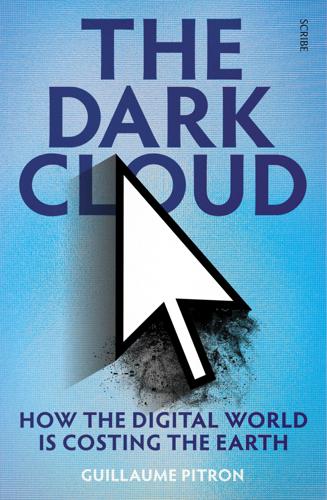
The Dark Cloud: How the Digital World Is Costing the Earth
by
Guillaume Pitron
Published 14 Jun 2023
I nevertheless turned my investigation to a sector of the economy where the explosion of algorithms is already having a dire impact on the environment: finance. The strategy of planned human obsolescence The date 23 March 2020 probably does not mean much to most of us, and yet it would come to symbolise a change of era. In the wake of the coronavirus, the world’s biggest stock market, the New York Stock Exchange, opened to an empty trading floor, with not a single trader in the ordinarily bustling ‘pit’. With no end to the pandemic in sight, listings became entirely automated — a first since Wall Street opened its doors in 1792.11 This episode exposed the growing role of algorithms in the global financial system.
…
Notes Introduction 1 Advanced Research Projects Agency Network. 2 TCP/IP protocol: Transmission Control Protocol/Internet Protocol. 3 ‘US heading anti-jihadist intelligence sharing operation – report’, The Times of Israel, 25 March 2021. 4 ‘YouTube and Netflix are cutting streaming quality in Europe due to coronavirus lockdowns’, CNBC, 20 March 2020. Several experts, like IT specialist Stéphane Bortzmeyer, believe that the networks were in fact far from saturation. See ‘L’Internet pendant le confinement’ [the Internet during lockdown], framablog.org, 21 March 2020. ‘Why the world is short of computer chips, and why it matters’, Bloomberg, 17 February 2021. 5 Better known by its abbreviation ‘www’.
…
, La Recyclerie, Paris, 9 March 2020.] 15 ‘5G: an ambitious roadmap for France’, ARCEP, 16 July 2018. 16 Interview with Jean-Pierre Raskin, researcher and lecturer at Louvain School of Engineering (Belgium), Institute of Information and Communication Technologies, Electronics and Applied Mathematics (ICTEAM), 2020. 17 ‘China’s telecoms carriers push to complete “political task” of 5G network roll-out amid coronavirus crisis’, South China Morning Post, 5 March 2020. 18 ‘Merkel fordert mehr Tempo beim digitalen Wandel’ [‘Merkel urges calls for more speed in the digital transition’], Süddeutsche Zeitung, 1 December 2020. 19 ‘Le retard numérique allemand affole Angela Merkel’ [‘Germany is behind on digital and it’s terrifying Angela Merkel’], L’Obs, 31 January 2017. 20 Interview with John Booth, consultant at Green IT Amsterdam, 2020. 21 ‘Gallium: China tightens grip on wonder metal as Huawei works on promising applications beyond 5G’, South China Morning Post, 20 July 2019.
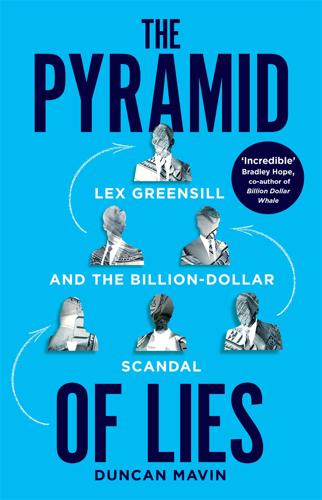
The Pyramid of Lies: Lex Greensill and the Billion-Dollar Scandal
by
Duncan Mavin
Published 20 Jul 2022
Glossary BaFin – Germany’s top financial regulator, the Federal Financial Supervisory Authority, or BaFin, earned a less than impressive reputation for its handling of a series of corporate scandals. BaFin’s officials were the primary authority responsible for regulating Germany-based Greensill Bank. CBILS, CLBILS and CCFF – The Coronavirus Business Interruption Loan Scheme, Coronavirus Large Business Interruption Loan Scheme and Covid Corporate Finance Facility were all set up by the UK government in response to the devastating impact of the Covid-19 pandemic and resulting lockdowns on the country’s economy. Greensill Capital sought access to all of these facilities as the struggling company scrambled to find new sources of funding to support loans it had made.
…
Index Aar Tee Commodities ref1 Abengoa ref1, ref2 Accenture ref1, ref2 Agritrade ref1 Ahearn, John ref1 AIG ref1, ref2, ref3, ref4, ref5 Aigis Banca ref1, ref2 Allesch-Taylor, Stefan ref1, ref2 Allin, Patrick ref1 anti-money-laundering (AML) questions ref1 ANZ ref1 Apollo Global Management ref1, ref2 Apple ref1 Aramco ref1 ArcelorMittal ref1 Archegos ref1 Arthur Andersen ref1 Asda ref1 Atlantic 57 Consultancy ref1, ref2, ref3, ref4, ref5 Auditing Association of German Banks ref1 Augustus Asset Managers ref1 Austin, Jason ref1, ref2 Australia ref1, ref2, ref3, ref4, ref5, ref6, ref7, ref8, ref9, ref10, ref11, ref12, ref13, ref14, ref15, ref16, ref17, ref18, ref19 Australian Taxation Office ref1 Aviva ref1 BAE Systems ref1 Baer, Julius ref1, ref2 BaFin ref1, ref2, ref3, ref4, ref5, ref6, ref7, ref8, ref9, ref10, ref11 Bailey, Andrew ref1 Bank of America ref1 Bank of England ref1, ref2, ref3, ref4 Barclays ref1, ref2 Barnes, Rob ref1, ref2, ref3 Barrell, Neil ref1 Barron’s ref1, ref2, ref3 Bates, Chris ref1, ref2, ref3, ref4 Battershill, William ref1, ref2 Baylis, Natalie ref1 BBB see British Business Bank BBC News ref1 BBVA ref1 BCLP see Bryan Cave Leighton Paisner BDO ref1, ref2 Becker, Arthur ref1 Berkshire Hathaway ref1 Bethell, Richard, 6th Baron Westbury ref1, ref2 Bingera ref1 Bishop, Julie ref1, ref2 BlackRock ref1, ref2, ref3 Blackstone ref1 Blair, Tony ref1, ref2, ref3, ref4 Bloomberg ref1, ref2, ref3 Bloomberg News ref1, ref2, ref3, ref4 Bluestone Resources Inc. ref1, ref2, ref3, ref4, ref5 Blunkett, David ref1, ref2 BNP Paribas ref1 Boeing ref1, ref2, ref3, ref4 737 Max 8 aircraft ref1 Bond and Credit Company, The (TBCC) ref1, ref2, ref3, ref4, ref5, ref6, ref7 Borbely, Barnabas ref1 Borneo ref1 Breedon, Tim ref1 Breedon report ref1 Brereton, Greg ref1 Brexit referendum ref1 Brierwood, David ref1, ref2, ref3, ref4, ref5, ref6, ref7, ref8 Brighthouse ref1 British Business Bank (BBB) ref1, ref2, ref3 British Gas ref1 Brown, Eliot ref1 Brown, Gordon ref1, ref2 Bryan Cave Leighton Paisner (BCLP) ref1 BSi Steel ref1, ref2, ref3, ref4 Buckingham Palace ref1, ref2, ref3, ref4 Buffett, Warren ref1 Bundaberg, Queensland, Australia ref1, ref2, ref3, ref4, ref5, ref6, ref7, ref8, ref9, ref10 Bunge ref1 Business, Energy and Industrial Strategy committee ref1 Cabinet Office ref1, ref2, ref3 Caillaux, Gabe ref1, ref2, ref3, ref4, ref5, ref6 Callahan, Mark ref1 Cameron, David ref1, ref2, ref3, ref4, ref5 ‘Big Society’ policy ref1 and Earnd ref1 Greensill remuneration ref1 and Greensill’s collapse ref1, ref2, ref3, ref4, ref5 hired as Greensill adviser ref1, ref2 lends credibility to Greensill ref1 and Lex ref1, ref2, ref3, ref4, ref5, ref6, ref7, ref8, ref9 and Mohammed Bin Salman ref1 and the pharmacy plan ref1 role at Greensill during the Covid-19 pandemic ref1 and The Bond and Credit Company ref1 Cameron, Samantha ref1 Cameron administration ref1, ref2 Cantor Fitzgerald ref1, ref2, ref3 Carillion ref1, ref2 ‘early payment facility’ ref1 Carlyle Group ref1 Carna ref1 Carnell, Kate ref1, ref2 Carney, Mark ref1 Carrington ref1 Carson Block ref1 Carusillo, Mickey ref1 Casey, Dame Louise ref1 ‘cash-less rolls’ ref1 Catfoss group ref1, ref2, ref3 central banks ref1 Chap (magazine) ref1 Charles, Prince ref1, ref2, ref3, ref4 Chase Manhattan ref1 CHBG Limited ref1 Chehaoduo ref1, ref2 Chelsea Group ref1 Chelsea Village ref1 Chicago Police Pension Fund ref1 Chilean mining ref1 Chubb ref1 Chuk ref1 CIMIC ref1, ref2 Citibank ref1 Citigroup ref1, ref2, ref3, ref4, ref5, ref6, ref7, ref8, ref9, ref10, ref11, ref12, ref13 City, the ref1 Clarke, Tracy ref1 Clearbrook Capital ref1 Cleland, Robert ref1, ref2, ref3, ref4, ref5, ref6, ref7 coal mining ref1, ref2, ref3 Coca-Cola ref1, ref2 CoFace ref1 Comerford, Robert J. ref1, ref2 Commerzbank ref1 Companies House ref1, ref2, ref3, ref4 Confederation of British Industry (CBI) ref1 Conservative government ref1, ref2 Copenhagen ref1 Coronavirus Business Interruption Loan Scheme (CBILS) ref1, ref2 Coronavirus Large Business Interruption Loan Scheme (CLBILS) ref1, ref2 corporate espionage ref1, ref2, ref3, ref4 Coupe, Mike ref1 Covid-19 Corporate Financing Facility (CCFF) ref1, ref2 Covid-19 pandemic ref1, ref2, ref3, ref4, ref5, ref6, ref7, ref8, ref9, ref10, ref11 government loan schemes ref1, ref2, ref3, ref4, ref5 restrictions ref1, ref2, ref3, ref4 Crain’s (magazine) ref1 Credit Suisse ref1, ref2, ref3, ref4, ref5, ref6, ref7, ref8 and the Covid-19 pandemic ref1 and Greensill Capital ref1, ref2, ref3, ref4, ref5, ref6, ref7, ref8, ref9, ref10, ref11, ref12, ref13, ref14, ref15, ref16, ref17, ref18, ref19, ref20, ref21, ref22, ref23, ref24, ref25, ref26, ref27, ref28, ref29, ref30, ref31, ref32, ref33 and Sanjeev Gupta ref1 Crothers, Bill ref1, ref2, ref3, ref4, ref5, ref6, ref7 Crown Representatives programme ref1 Cunliffe, Sir Jon ref1 CWB ref1 de Botton, Alain ref1 de Botton, Gilbert ref1 de la Rue, Tom ref1 Deal Partners ref1, ref2, ref3 Degen, Michel ref1, ref2, ref3 Dell ref1 Deloitte ref1, ref2, ref3, ref4, ref5 Demica ref1 Department for Business, Energy and Industrial Strategy ref1, ref2 Department of Environment, Food and Rural Affairs ref1 Department of Health ref1 Department of Health and Social Care ref1 Department of Work and Pensions ref1 Deutsche Bank ref1, ref2, ref3, ref4, ref5, ref6 Deutsche Börse ref1 Doordash ref1 Doran, James ref1, ref2, ref3, ref4, ref5, ref6, ref7, ref8, ref9, ref10, ref11, ref12 dotcom boom ref1, ref2 Dow Jones ref1, ref2, ref3, ref4, ref5, ref6, ref7, ref8, ref9, ref10, ref11 Downes, Brett ref1, ref2, ref3, ref4, ref5 Dragon Technology ref1, ref2, ref3 Eadie, Al ref1 Earnd ref1, ref2, ref3, ref4 Ecclestone, Bernie ref1 Edelman ref1 1860 Munich ref1 Ellis, Brett Easton, American Psycho ref1 Enterprise Investment Schemes (EISs) ref1 equity warrants ref1 Ernst & Young ref1 see also EY Euler Hermes ref1, ref2 European Banking Association ref1 Ewing, Fergus ref1 EY ref1, ref2 see also Ernst & Young Eyjafjallajökull ref1 factoring ref1, ref2, ref3 see also supply chain finance Fair Financial ref1, ref2, ref3 Fairmac Reality ref1 Fairymead ref1 Fan, Colin ref1, ref2, ref3, ref4 Farrell, Maureen ref1 FCA see Financial Conduct Authority ‘fee ramp agreements’ ref1 Feeney, Chuck ref1 Ferrin, Ronald ref1 Fidelity ref1 5th Finger ref1 Finacity ref1 Financial Accounting Standards Board ref1 Financial Conduct Authority (FCA) ref1, ref2, ref3, ref4, ref5, ref6, ref7, ref8, ref9, ref10 Skilled Persons Reviews ref1, ref2 financial crisis 2008 ref1, ref2, ref3, ref4 aftermath ref1, ref2, ref3 and central banks ref1 and fintechs ref1 tougher regulations following ref1, ref2 Financial News (banking publication) ref1, ref2, ref3, ref4, ref5, ref6 Financial Reporting Council ref1 Financial Times (newspaper) ref1, ref2, ref3, ref4, ref5, ref6, ref7 Finews (Swiss news site) ref1 ‘fintechs’ ref1, ref2, ref3, ref4, ref5, ref6 Fitch ref1 ‘flash title’ ref1 Fleetsolve ref1 Food Revolution Group ref1 Forbes (magazine) ref1 Ford ref1 Ford, Bill ref1 Formula One ref1 ‘Four Eyes Principle’ ref1 FreeUp ref1, ref2 Friedman, Alex ref1, ref2, ref3, ref4, ref5, ref6, ref7 Galligan, Shane ref1, ref2 GAM Greensill Supply Chain Finance fund (GGSCF) ref1, ref2 Gapper, John ref1 Garrod, Neil ref1, ref2, ref3, ref4, ref5 GBM Banca ref1 General Atlantic (GA) ref1, ref2, ref3, ref4, ref5, ref6, ref7, ref8, ref9, ref10, ref11, ref12, ref13, ref14, ref15, ref16, ref17, ref18, ref19, ref20 General Mills ref1, ref2, ref3 Gentleman’s Journal (magazine) ref1 German Deposit Protection Authority ref1 Global Asset Management (GAM) ref1, ref2, ref3, ref4, ref5, ref6, ref7, ref8, ref9, ref10, ref11, ref12, ref13, ref14, ref15, ref16, ref17, ref18, ref19, ref20, ref21, ref22, ref23, ref24, ref25, ref26 Absolute Return Bond Fund (ARBF) ref1, ref2, ref3, ref4, ref5, ref6, ref7, ref8, ref9 regulators ref1 Global Supply Chain Finance Forum ref1 Global Trade Review (trade finance publication) ref1 Goldman Sachs ref1, ref2 Gorman, John ref1, ref2, ref3, ref4, ref5 Gottstein, Thomas ref1, ref2 government loans ref1, ref2, ref3, ref4, ref5 ‘GovTech’ firms ref1 Grant Thornton ref1, ref2, ref3, ref4, ref5 Gray, Sue ref1 Green, Philip ref1, ref2 Greenbrier hotel ref1 Greene, Stephen ref1 Greensill, Alexander ‘Lex’ David ref1, ref2, ref3, ref4 ambition ref1, ref2, ref3, ref4, ref5 ascent ref1 Australian property investments ref1, ref2 Australian tax obligations ref1 awards ref1, ref2, ref3 CBE ref1, ref2, ref3 birth ref1 and Carillion ref1 celebrity status ref1 childhood ref1, ref2 at Citigroup ref1, ref2, ref3, ref4, ref5, ref6, ref7, ref8, ref9 on the Crown Representatives programme ref1 CV ref1 and Daniel Sheard ref1 and David Cameron ref1, ref2, ref3, ref4, ref5, ref6, ref7, ref8, ref9 directorships ref1 double down strategy ref1, ref2 and Downes ref1 dresses the part ref1, ref2, ref3, ref4 and Duncan Mavin ref1, ref2, ref3, ref4, ref5, ref6 eager to own bank ref1, ref2 education ref1 legal studies ref1 MBA at the Alliance Manchester Business School ref1, ref2, ref3, ref4, ref5, ref6 and 5th Finger ref1 and Greensill Bank AG (formerly NoFi) ref1 and Greensill Capital ref1, ref2, ref3, ref4 acquisitions ref1, ref2 aircraft leasing deals ref1 attempts to raise emergency finance ref1, ref2, ref3 avoids toughest regulators ref1 BaFin probe ref1 Bluestone ref1, ref2 BSi ref1 Covid-19 pandemic ref1, ref2, ref3 Credit Suisse involvements ref1, ref2, ref3, ref4 demise ref1, ref2, ref3, ref4, ref5, ref6, ref7, ref8 Dragon Technology ref1 expansion ref1, ref2, ref3 ‘flak’ (PR advisers) ref1 General Atlantic ref1, ref2, ref3, ref4, ref5, ref6 Global Asset Management ref1, ref2, ref3, ref4, ref5 harmful effect of SCF on small businesses ref1 insurance ref1, ref2, ref3 malpractice ref1 multi-obligor programmes ref1 National Health Service venture ref1, ref2 new category of loans ref1 payroll finance ref1 perilous state ref1 premier ref1, ref2, ref3, ref4, ref5 sells company private jets ref1 Softbank dealings ref1, ref2, ref3, ref4, ref5, ref6, ref7, ref8, ref9 start-up ref1, ref2, ref3, ref4, ref5 Tower Trade ref1 Tradeshift Networks ref1, ref2 and Jeremy Heywood ref1 and John Gorman ref1 legal work ref1 marriage ref1 and Masayoshi Son ref1, ref2, ref3, ref4, ref5 mentors ref1 mission statement, ‘helping out the little guy’ ref1 and Mohammed Bin Salman ref1 at Morgan Stanley ref1, ref2, ref3, ref4, ref5, ref6, ref7, ref8, ref9, ref10, ref11, ref12 remuneration ref1 moves to the UK ref1, ref2 at OzEcom ref1 and politics ref1, ref2, ref3, ref4, ref5 ‘rewilding’ project ref1 risk-taking ref1, ref2, ref3, ref4, ref5, ref6, ref7, ref8, ref9, ref10, ref11, ref12 and Sanjeev Gupta ref1, ref2, ref3, ref4, ref5, ref6, ref7, ref8, ref9, ref10 and Saudi Arabia ref1 sits on Bank of England committee on SCF ref1 skiing ref1 spending ref1, ref2, ref3, ref4, ref5, ref6 takes loan from the Greensill family ref1 and Tim Haywood ref1, ref2, ref3, ref4, ref5, ref6, ref7, ref8, ref9, ref10 at TRM ref1, ref2 wealth ref1 billionaire status ref1, ref2 hits the big time ref1, ref2 Greensill, Andrew (Lex’s brother) ref1 Greensill, Judy (Lex’s mother) ref1, ref2, ref3, ref4, ref5 Greensill, Lloyd (Lex’s father) ref1, ref2, ref3 Greensill, Peter (Lex’s youngest brother) ref1, ref2, ref3, ref4, ref5, ref6, ref7, ref8, ref9, ref10 Greensill, Roy (Lex’s grandfather) ref1, ref2 Greensill, Victoria (Lex’s wife) ref1, ref2 Greensill Bank AG (formerly NoFi) ref1, ref2, ref3, ref4, ref5, ref6, ref7 and the Atlantic 57 loan ref1, ref2 and the BaFin probe ref1, ref2, ref3, ref4 and the end ref1, ref2 and General Atlantic ref1 and government loans ref1 and Gupta ref1, ref2, ref3, ref4, ref5, ref6, ref7 private aircraft ref1 regulation ref1 and Softbank ref1, ref2 technology ref1 and trade credit insurance ref1, ref2 whistle-blower at ref1 Greensill Capital ref1, ref2 aircraft leasing deals ref1 allegations of corruption at ref1 and the Atlantic 57 loan ref1, ref2, ref3, ref4, ref5 avoids toughest regulators ref1 and the BaFin probe ref1, ref2, ref3, ref4, ref5, ref6, ref7, ref8, ref9 and Bill Crothers ref1 billion dollar plus valuation ref1 and Bluestone ref1, ref2, ref3, ref4, ref5 and BSi ref1 business cards ref1, ref2 cash burner ref1 client list ref1 collapse ref1, ref2, ref3, ref4, ref5, ref6, ref7, ref8, ref9, ref10 corporate events ref1 corporate governance ref1, ref2, ref3, ref4, ref5, ref6, ref7 and the Covid-19 pandemic ref1, ref2, ref3, ref4, ref5, ref6 and Credit Suisse ref1, ref2, ref3, ref4, ref5, ref6, ref7, ref8, ref9, ref10, ref11, ref12, ref13, ref14, ref15, ref16, ref17, ref18, ref19, ref20, ref21, ref22, ref23, ref24, ref25, ref26, ref27, ref28, ref29, ref30, ref31, ref32, ref33 Credit Suisse’s investigation into ref1, ref2, ref3 crisis mounts ref1, ref2, ref3 and David Cameron ref1, ref2, ref3, ref4, ref5, ref6, ref7 and David Solo ref1, ref2, ref3 defaults ref1, ref2 and Dragon Technology ref1 early backers ref1 early struggles ref1, ref2 evergreen loans ref1 ‘everyone wins’ pitches ref1 expansion ref1, ref2, ref3, ref4, ref5, ref6, ref7, ref8, ref9 external public relations ref1, ref2 EY investigation into ref1 fault lines ref1 as ‘fintech’ company ref1, ref2 fraud and misconduct allegations ref1 and General Atlantic ref1, ref2, ref3, ref4, ref5, ref6, ref7, ref8, ref9, ref10, ref11, ref12, ref13, ref14, ref15 and Global Asset Management ref1, ref2, ref3, ref4, ref5, ref6, ref7, ref8, ref9, ref10, ref11, ref12, ref13, ref14, ref15, ref16, ref17, ref18, ref19, ref20, ref21, ref22 gossipy culture ref1 and Greensill Bank ref1 and Griffin Coal ref1 and Gupta/Gupta Family Group ref1, ref2, ref3, ref4, ref5, ref6, ref1, ref2, ref3, ref4, ref5, ref6, ref7, ref8, ref9, ref10, ref11, ref12, ref13, ref14 harmful impact on small businesses ref1 headquarters on the Strand ref1 ‘High Risk Franchise Names’ document ref1 hits the big time ref1, ref2 illiquid investments ref1 insolvency ref1, ref2 investment protection ref1 investors abandon ref1, ref2 IPO ref1, ref2, ref3, ref4, ref5, ref6, ref7, ref8 and John Gorman ref1 and Katerra ref1 and the Lagoon Park SPV ref1 launch ref1, ref2 lavish spending at ref1, ref2, ref3, ref4 Lex’s claims about ref1 liquidity ref1, ref2 and Lloyds ref1 loan book ref1 losses ref1 and Maurice Thompson ref1 Morgan Stanley employees ref1 and the NHS ref1, ref2, ref3 obligors ref1, ref2, ref3, ref4, ref5, ref6, ref7, ref8 offices ref1, ref2, ref3 and payroll finance ref1 and Pemex ref1 perilous state ref1 and the pharmacy plan ref1 pre-IPO funding (‘Project Olive’) ref1, ref2, ref3, ref4, ref5 profitability issues ref1, ref2, ref3, ref4, ref5, ref6 ‘reasonably permanent’ funding ref1 reducing the early risks of using ref1 remuneration ref1, ref2, ref3 retrenchment ref1, ref2 risk team ref1, ref2 risky ventures ref1, ref2, ref3, ref4, ref5, ref6, ref7, ref8 and Roland Hartley-Urquhart ref1 and Saudi Arabia ref1 as ‘shadow bank’ ref1 and SoftBank ref1, ref2, ref3, ref4, ref5, ref6, ref7, ref8, ref9, ref10, ref11, ref12, ref13, ref14, ref15, ref16, ref17, ref18, ref19, ref20, ref21, ref22, ref23, ref24 SPAC talks ref1 start-up style management ref1, ref2 takes loan from the Greensill Capital family ref1 technology ref1, ref2, ref3, ref4 and Tim Haywood ref1, ref2, ref3, ref4, ref5, ref6, ref7, ref8, ref9, ref10 and Tower Trade ref1, ref2, ref3 and trade credit insurance ref1, ref2, ref3, ref4, ref5, ref6, ref7, ref8, ref9, ref10, ref11, ref12 ‘Unicorn’ status ref1 and the US capital markets ref1 whistle-blower allegations emerge ref1 and the Wickham SPV ref1 Greensill Corporation Pty ref1 Greensill Farming Group ref1, ref2, ref3, ref4, ref5 Greensill Trust ref1 Grenda Investments ref1 Griffin Coal ref1, ref2 Gross, Bill ref1 Guazi ref1 Gulf Petrochem (GP Global) ref1 Gupta, Nicola ref1 Gupta, Sanjeev ref1, ref2, ref3, ref4, ref5, ref6, ref7, ref8, ref9, ref10, ref11, ref12, ref13, ref14, ref15, ref16, ref17 Australian property ref1 and Bluestone ref1 and the demise of Greensill ref1, ref2, ref3, ref4 and German steel ref1 and Grant Thornton ref1 and Greensill Bank ref1 Gupta Family Group (GFG) ref1, ref2, ref3, ref4, ref5, ref6, ref7, ref8, ref9, ref10, ref11 and Bluestone ref1 and government loans ref1 and Greensill ref1, ref2, ref3, ref4, ref5, ref6, ref7, ref8, ref9, ref10, ref1, ref2, ref3, ref4, ref5, ref6, ref7, ref8, ref9, ref10, ref11 and Greensill Bank ref1 Guttridge, Jane ref1, ref2 Guy, Toby ref1 Gymshark ref1 Haas, Lukas ref1, ref2, ref3, ref4, ref5 Hambro, Jay ref1 Hanafin, Dermot ref1 Hanafin, Sean ref1, ref2, ref3, ref4, ref5 Harris, Piers ref1 Harry, Prince ref1 Hart ref1 Hartley-Urquhart, Roland ref1, ref2, ref3, ref4, ref5, ref6, ref7, ref8, ref9, ref10 Havens, John ref1, ref2 Haywood, Tim ref1, ref2, ref3, ref4, ref5, ref6, ref7, ref8, ref9, ref10, ref11, ref12, ref13, ref14, ref15, ref16, ref17, ref18 Henkel ref1 Hewlett Packard ref1 Heywood, Jeremy ref1, ref2, ref3 Highways Agency ref1 HM Revenue & Customs ref1 HM Treasury ref1, ref2, ref3, ref4 Hobday, Neil ref1, ref2, ref3, ref4 Holmes, Elizabeth ref1 House of Lords ref1 HSBC ref1, ref2, ref3, ref4, ref5 Huawei ref1, ref2, ref3 Hutton Inquiry ref1 IAG see Insurance Australia Group ICBC Standard Bank ref1 Indonesia ref1 Industrial Cadets ref1 Inflexionpoint ref1 ING ref1 Insurance Australia Group (IAG) ref1, ref2, ref3 International Chamber of Commerce ref1 Intrepid Aviation ref1 ‘Iran Notices’ ref1 Iraq, UN weapons inspectors ref1 Isle of Dogs ref1 Jacob, David ref1, ref2, ref3 Jahama Highland Estates ref1 Jain, Anshu ref1 Jakarta ref1 Jardine Matheson ref1 Johnson, Boris ref1 Jones, Karen ref1 J.P.
…
Lex was running out of insurers and running out of time. TWENTY-SEVEN Covid and Connections On 11 January 2020, the Chinese government alerted officials at the World Health Organization that a sixty-one-year-old man in the city of Wuhan had died from a mysterious new type of viral pneumonia. Over the next few weeks, the coronavirus rippled across the globe. By mid-February, airlines had isolated China and other hotspots, Italy was in the grip of a national lockdown, and governments around the world had convened their own emergency taskforces. The pandemic rattled financial markets. How would trade cope with unprecedented restrictions on movement?
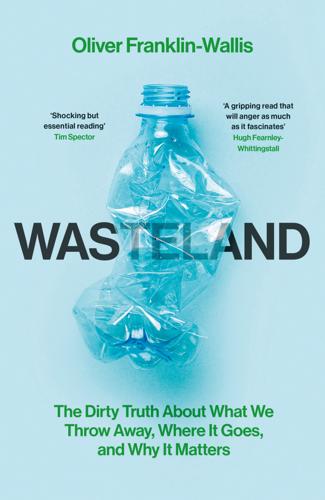
Wasteland: The Dirty Truth About What We Throw Away, Where It Goes, and Why It Matters
by
Oliver Franklin-Wallis
Published 21 Jun 2023
In Britain, as in Europe, landfills have a lousy reputation as being archaic, foul and polluting. As a result, waste companies, always keen to show off their latest recycling facilities, are reluctant to let anyone on a landfill, and particularly not a journalist. In fact, for more than a year, every waste company that I ask refuses to grant me access to one, citing either the coronavirus pandemic or unspecified safety concerns (while at the same time, insisting that landfills are perfectly safe). SUEZ, the French waste and sanitation giant named for its involvement in digging the Suez Canal, is the one exception. It is more than happy to show me around. In the office, I meet my chaperones: Victoria Pritchard, SUEZ’s regional manager for the North East of England, and Jamie McTighe, the regional operations manager.
…
‘We received a lot of complaints from a small town in the Klang valley,’ Bee Yin tells me. ‘Polluted water. Many people complained about the smell.’ At the time, Bee Yin was the Malaysian government minister in charge of environmental issues. She has long dark hair and a politician’s charming, full-toothed smile. When we speak, Malaysia and the UK are in the midst of coronavirus lockdowns, so we talk over video chat; connection, glimpsed in isolation. She’s wearing a checked dress and sits in front of a window. Behind her, I can see sunlight bleaching the rooftops of Kuala Lumpur under an azure sky. Bee Yin instructed her agency to investigate. ‘We had them go have a look, and they saw that there were a lot of illegal plastic recycling factories,’ Bee Yin says.
…
When clothes leave exporters like Pink Elephant bound for West Africa, this is where the lion’s share will end up. From here, the clothes will spread across Ghana and across borders, into Côte D’Ivoire, Togo, Niger, Benin and beyond. ‘Obroni!’ ‘Hey, Obroni!’ Foreigner! White person! The traders laugh and gossip, offering greetings and high fives. The coronavirus pandemic has meant fewer tourists passing through Accra for a while, and so our group stands out. I am being accompanied by Sena Mpeko, a British-Ghanaian journalist helping me in Accra; we in turn are being shown around by Yayra Agbofah and Kwamena Dadzie Boison, the co-founders of The Revival, a Ghanaian fashion brand that specialises in upcycling second-hand clothing.
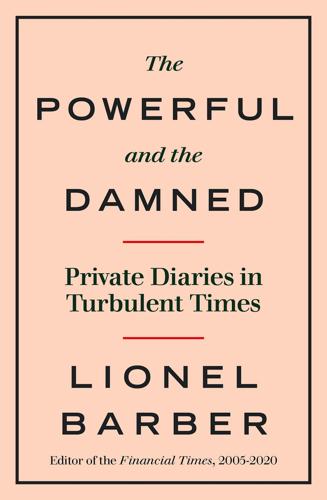
The Powerful and the Damned: Private Diaries in Turbulent Times
by
Lionel Barber
Published 5 Nov 2020
Other power portraits include a three-hour interview in Kigali with President Paul Kagame; a conversation with Carrie Lam in Hong Kong; an interview with Donald Trump in the Oval Office (March 2017) and a rare interview in the Kremlin with Vladimir Putin (June 2019), which made world headlines. Finally, just as the first reports of coronavirus appeared, I ended my editorship with an interview with Chancellor Angela Merkel in Berlin, a political testament of the greatest defender of the old liberal order. Within weeks, the world was gripped by the coronavirus pandemic. This once-in-a-century phenomenon seems to draw an even heavier line under the years 2005–20, adding an even greater unpredictable element to a world already in disarray, to borrow the phrase of Richard Haass, the scholar, diplomat and president of the Council on Foreign Relations.
…
SoftBank’s Vision Fund reportedly raised $100bn, thanks in part to Saudi money and the personal backing of MBS. They were the new power in the world’s venture capital market, able to amass and deploy funds so colossal that they ended up distorting the whole VC market. But investments like WeWork gradually turned sour and SoftBank itself was forced to dispose of assets – a trend exacerbated by the coronavirus pandemic. MONDAY, 11 JUNE Finally, we’ve nailed the story of Martin Sorrell’s downfall. For the past week, I’ve been editing more than ten drafts of the 4,500-word story co-written by Madison Marriage and Matt Garrahan, a dramatic narrative of how Britain’s most famous advertising tycoon was toppled by hubris, allegations of personal misconduct and a sharp decline in his business.
…
Merkel was guarded but defiant in our near hour-long conversation: Europe was Germany’s salvation and this was no time to retreat on European cooperation and (measured) integration. In a world of populists and strongmen, she was doubling down on the EU as (almost) the last liberal democrat standing. Seven weeks later, the coronavirus pandemic brought the world to a stop. This was not just a bookend to my editorship; it was an emphatic exclamation mark. The fragility of the modern economy and its finely tuned global supply chains was exposed brutally. To be sure, between 2005 and 2020, there were signs that globalisation was in trouble.

Spies, Lies, and Algorithms: The History and Future of American Intelligence
by
Amy B. Zegart
Published 6 Nov 2021
Joe Sommerlad, “Trump News: President Smears Vaccine Whistleblower as Coronavirus Shutdown Sees US Unemployment Claims Soar to 36m,” Independent, May 14, 2020, https://www.independent.co.uk/news/world/americas/us-politics/trump-news-live-coronavirus-twitter-white-house-press-briefing-us-obama-latest-a9508101.html (accessed June 16, 2020). 137. Aaron Rupar, “Trump’s Latest Coronavirus Meltdown Features QAnon, Accidental Self-Owns, and a Lot of “OBAMAGATE,” Vox, May 11, 2020, https://www.vox.com/2020/5/11/21254398/trump-tweets-mothers-day-obamagate-coronavirus (accessed June 16, 2020). 138. John Bowden, “Trump Lashes Out at Obama in Mother’s Day Tweetstorm,” Hill, May 10, 2020, https://thehill.com/homenews/administration/497057-trump-lashes-out-at-obama-in-mothers-day-tweetstorm (accessed June 16, 2020). 139.
…
US owe us an explanation.” Mr. Zhao’s hashtag, #ZhaoLijianPostedFiveTweetsinaRowQuestioningAmerica, was viewed on Weibo, China’s popular social media platform, more than 160 million times. Steven Lee Myers, “China Spins Tale That the U.S. Army Started the Coronavirus Epidemic,” New York Times, March 17, 2020, https://www.nytimes.com/2020/03/13/world/asia/coronavirus-china-conspiracy-theory.html (accessed June 16, 2020). 131. Shortly after the 2016 election, an anonymous columnist named Virgil posted a lengthy screed on the conservative site Breitbart.com introducing the idea of the anti-Trump Deep State: “Virgil: The Deep State vs.
…
Intelligence Community 4.1 President Barack Obama and His National Security Team, May 1, 2011 5.1 The Predictability Spectrum 5.2 The Müller-Lyer Illusion 5.3 Visualizing Probabilities in Cancer Testing 6.1 The Changing Motives of Traitors 8.1 Longtermers on Senate Committees, 1975–2020 8.2 Longtermers on House Committees, 1975–2020 10.1 Russia’s Facebook Deception in Action, 2016 ABBREVIATIONS AND ACRONYMS AI artificial intelligence BJP Bharatiya Janata Party (Indian political party) CIA Central Intelligence Agency COVID-19 Coronavirus disease of 2019 DCI director of central intelligence DIA Defense Intelligence Agency DNI director of national intelligence DOD Department of Defense FBI Federal Bureau of Investigation Five Eyes Intelligence partnership between the United States, United Kingdom, Canada, Australia, and New Zealand FOIA Freedom of Information Act GDP gross domestic product GEOINT geospatial intelligence GPS global positioning system HPSCI House Permanent Select Committee on Intelligence HUMINT human intelligence IAEA International Atomic Energy Agency IARPA Intelligence Advanced Research Projects Activity IC Intelligence Community, a collection of eighteen U.S. federal agencies INR State Department Bureau of Intelligence and Research INTs intelligence missions and disciplines IRA Russia’s Internet Research Agency ISIS The Islamic State of Iraq and Syria JCS Joint Chiefs of Staff JSOC Joint Special Operations Command KGB The Komitet Gosudarstvennoy Bezopasnosti, or the Committee for State Security (the Soviet Union’s spy agency) KSM Khalid Sheikh Mohammed MI5 Military Intelligence Section 5 (U.K. agency) MI6 Military Intelligence Section 6 or the Secret Intelligence Service (SIS) (U.K. agency) MICE money, ideology, coercion/compromise, and ego MID Military Intelligence Division (later known as the Army’s G-2) NASA National Aeronautics and Space Administration NATO North Atlantic Treaty Organization NCAA National Collegiate Athletic Association NCRI National Council for the Resistance of Iran NCTC National Counterterrorism Center NGA National Geospatial-Intelligence Agency NIE National Intelligence Estimate NRO National Reconnaissance Office NSA National Security Agency ODNI Office of the Director of National Intelligence OPEC Organization of the Petroleum Exporting Countries OPM Office of Personnel Management OSINT open-source intelligence OSS Office of Strategic Services RT Russia Today SAPs special access programs SAR Synthetic Aperture Radar (enables satellite imaging in cloudy conditions) SATs Structured Analytic Techniques SCIFs Sensitive Compartmented Information Facilities, or “Skiffs” SEALs Sea, Air, and Land (Naval Special Warfare combat forces) SIGINT signals intelligence SSCI Senate Select Committee on Intelligence UN United Nations WMD weapons of mass destruction SPIES, LIES, AND ALGORITHMS 1 INTELLIGENCE CHALLENGES IN THE DIGITAL AGE CLOAKS, DAGGERS, AND TWEETS IN JUNE 2014, I was scrolling through my Twitter feed when I came across the following Tweet: At first, I thought it was a joke.

J.K. Lasser's Your Income Tax 2022: For Preparing Your 2021 Tax Return
by
J. K. Lasser Institute
Published 21 Dec 2021
If separate accounting is maintained, the tax-free part of the withdrawal is increased because the account balance used as the denominator in the fractional computation includes only the employee's after-tax contributions and allocable earnings, without regard to the employer contributions (and allocable earnings). 7.28 Coronavirus-Related Distributions Qualified individuals (see below) who received one or more coronavirus-related distributions from January 1 through December 30, 2020, could elect on Form 8915-E to report up to $100,000 of such distributions ratably over three years instead of including it all as income on their 2020 return. If you chose to spread the taxable amount over three years, 1/3 of the distribution must be reported as income on Form 8915-F for 2021.
…
The 10% penalty for qualified distributions before age 59½ (7.13) did not apply to Coronavirus-related distributions. Repaying a qualified distribution. You can recontribute a qualified distribution to any eligible retirement plan (that accepts rollovers) within three years beginning on the day after the date it was received, provided the distribution was eligible for rollover (7.5) or was a COVID-19-related hardship distribution (7.17). A distribution paid to a beneficiary (other than a surviving spouse) cannot be recontributed. A recontribution will be treated as a a trustee-to-trustee transfer. If you reported a coronavirus distribution on your 2020 Form 8915-E and included 1/3 of the distribution in your 2020 income, and in 2021 you repaid all or part of the total distribution, the repayment should be included on your 2021 Form 8915-F.
…
If you receive distributions before the end of the five-year holding period, the distributions are “nonqualified,” which means that they will be tax free to the extent that they are a recovery of the owner's Roth IRA contributions and taxable to the extent they are earnings under the “ordering rules” at 8.25. If you receive a nonqualified distribution, you must report it and figure the taxable portion, if any, on Part III of Form 8606. 8.27 Coronavirus-Related IRA Distributions and Qualified Disaster Distributions The CARES Act allowed qualified individuals (see 7.27 for the definition of qualified individuals) to report up to $100,000 of coronavirus-related distributions received from January 1, 2020, through December 30, 2020, ratably over three years, instead of including it all as income on their 2020 return. For example, if you used the 3-year method for a qualified $30,000 distribution, you reported $10,000 on your 2020 return, and will also report $10,000 on your 2021 return, and on your 2022 return.
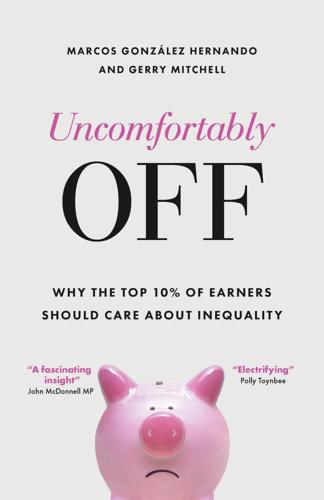
Uncomfortably Off: Why the Top 10% of Earners Should Care About Inequality
by
Marcos González Hernando
and
Gerry Mitchell
Published 23 May 2023
Brookings Institution. 27 March. www.brookings.edu/blog/up-front/2020/03/27/class-andcovid-how-the-less-affluent-face-double-risks Reeves, R. and Venator, J. (2014) Opposites don’t attract: Assortative mating and social mobility. Brookings Institution. 10 February. www.brookings.edu/blog/social-mobilitymemos/2014/02/10/opposites-dont-attract-assortative-matingand-social-mobility Reich, R. (2020) Billionaires’ donations to fight Coronavirus are largely self-serving. NewsWeek. 13 April. www.newsweek. com/robert-reich-billionaires-donations-fight-coronavirus-arelargely-self-serving-opinion-1497617 Reis, E. and Moore, M. (eds) (2005) Elite perceptions of poverty and inequality. London: Zed Books. Resolution Foundation (2022) Event: Green growth: miracle or mirage? Webinar. 23 May. www.resolutionfoundation.org/ events/green-growth-miracle-or-mirage 227 Uncomfortably Off Resolution Foundation and Centre for Economic Performance (2022) Stagnation nation: Navigating a route to a fairer and more prosperous Britain.
…
Open Democracy. 5 May. www.opendemocracy.net/en/oureconomy/uk-energydistribution-networks-nationalise-profit-cost-living Bale, T. (2021) Ploughed under? Labour’s grassroots post-Corbyn. The Political Quarterly. 92:2, 220–8. https://onlinelibrary.wiley. com/doi/full/10.1111/1467-923X.12987 Bangham, G. and Leslie, J. (2020) Rainy days: An audit of household wealth and the initial effects of the coronavirus crisis on saving and spending in Great Britain. London: Resolution Foundation. www. resolutionfoundation.org/app/uploads/2020/06/Rainy-Days. pdf Barnett, N., Giovannini, A. and Griggs, S. (2021) Local Government in England: Forty years of decline. Unlock Democracy. https://unlockdemocracy.org.uk/resourcesresearch/2021/6/17/local-government-in-england-40-yearsof-decline Bartrum, O. (2022) Russia–Ukraine war: How could it affect the UK economy?
…
Lawson, N. (2009) All consuming: How shopping got us into this mess and how we can find our way out. London: Penguin. Lee, S. (2015) How has the UK’s coalition government performed? London: Political Studies Association. www.psa.ac.uk/psa/news/ how-has-uks-coalition-government-performed Leslie, J. and Shah, K. (2021) (Wealth) gap year: The impact of the coronavirus crisis on UK household wealth. London: Resolution Foundation. www.resolutionfoundation.org/app/ uploads/2021/07/Wealth-gap-year.pdf Lindh, A. and McCall, L. (2020) Class position and political opinion in rich democracies. Annual Review of Sociology, 46:1, 419–41. Liscomb, M. (2022) This professor went viral for asking students how much they think the average person makes, and it’s eye-opening.
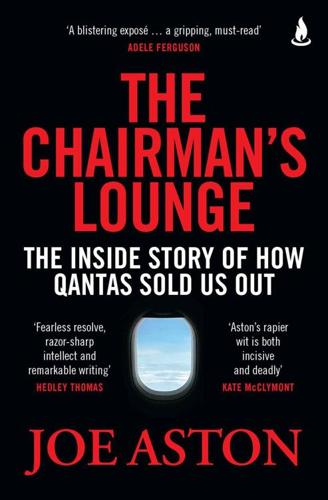
The Chairman's Lounge: The inside story of how Qantas sold us out
by
Joe Aston
Published 27 Oct 2024
* * * In Ernest Hemingway’s first novel, The Sun Also Rises, Bill asks Mike, ‘How did you go bankrupt?’ The immortal response: ‘Two ways. Gradually and then suddenly.’ In the opening weeks of the year 2020, the novel coronavirus seemed to be approaching Australia gradually. On 22 January, Flight Centre founder Graham ‘Skroo’ Turner said, ‘At the moment I’m not too worried. People just get a bit excited about these things.’ Three days later, Australia had its first confirmed coronavirus infection. Australia shut its borders to China on 1 February, and on behalf of the Department of Foreign Affairs and Trade (DFAT), Qantas operated two rescue flights from Wuhan to Australia early that same month, by which time Australia had just fifteen confirmed cases.
…
‘It could get better, it could get worse, but we are projecting what we can see today,’ Joyce told the media. Qantas shares rose 5 per cent to $6.67. ‘This will be a short-term issue,’ Sydney Airport CEO Geoff Culbert said the same day. In the first week of March, Australia reported its first two coronavirus deaths and closed its borders to Iran and South Korea. Qantas shares fell 16 per cent to $4.66. On 10 March, with 110 reported coronavirus cases in Australia and three deaths, and with Italy now in a national lockdown, Qantas announced what, briefly, seemed like radical measures. Joyce grounded a further thirty-eight aircraft (including eight A380s), reduced international seats by 23 per cent and domestic seats by 5 per cent.
…
The same month, a Senate committee threatened to throw him in jail. Having fled the Australian mob, he hid out with his elderly mother in Dublin, where he was chased to the local shops by paparazzi.5 What happened in those four years is the focus of this book. Of course, nobody in their wildest imaginings could have foreseen the coronavirus pandemic that would paralyse the global aviation industry just weeks after Qantas’ December 2019 high, let alone predict Joyce’s response to it and the spectacular unravelling of Qantas as it emerged from the pandemic in 2022 and 2023. In a bizarre accident of timing, Joyce sat for the cover story of the March 2020 issue of the Australian Financial Review Magazine, published as the virus first seeped into the country.

New Laws of Robotics: Defending Human Expertise in the Age of AI
by
Frank Pasquale
Published 14 May 2020
United States budget allocations for defense have tended to outpace the spending of the next seven countries combined. The massive military buildup will likely strike future historians as a profoundly misguided investment of national resources.70 There is a grim irony in the world’s leading military “superpower” being devastated by coronavirus in 2020, even after investing tens of billions of dollars in biosecurity, while so many other nations reduced cases and deaths far more deftly. As Dominique Moïsi, a political scientist at the Institut Montaigne, explained, “America prepared for the wrong kind of war. It prepared for a new 9 / 11, but instead a virus came.”71 Consumed by worries over phantom threats, American leaders invested trillions of dollars in arms while stinting on preventive measures that could have saved more lives than the country lost in the Vietnam, Iraq, and Afghanistan wars combined.
…
Would Dragonfly inform on their authors? In an era of information warfare, tight monitoring and control of online life is a top priority for many states.85 This authoritarian control can also cause major problems for the rest of the world—as in the case of SARS-CoV-2 (the virus responsible for COVID-19), a coronavirus that originated in China and that may have been contained more quickly, had Chinese officials not censored the physicians trying to warn about the spread of this dangerous new disease. The Google activists’ refusal to work on military tech may seem belated, or unpatriotic. However, the ethics of participation are contextual.
…
The business case for service robots is obvious—they do not need to be paid, to sleep, or to be motivated to stay on task. So long as there are tourists looking for a bargain or business travel departments looking to cut down expenses, hoteliers will want robot cleaners, receptionists, doormen, and concierges. All those jobs may become as obsolete as elevator operators. The coronavirus pandemic has created even more pressures to reduce human interactions in service industries. Lockdowns of indefinite duration made the case for robotics better than any business guru. When warehouse operators, meat packers, and farmworkers fear catching a deadly virus at work, robotization of their roles may appear outright humanitarian (if paired with some plausible promise of basic income provision and future jobs).

The Ransomware Hunting Team: A Band of Misfits' Improbable Crusade to Save the World From Cybercrime
by
Renee Dudley
and
Daniel Golden
Published 24 Oct 2022
“the crisis is palpable”: Dmitry Smilyanets, “‘I Scrounged Through the Trash Heaps … Now I’m a Millionaire:’ An Interview with REvil’s Unknown,” The Record by Recorded Future, March 16, 2021, therecord.media/i-scrounged-through-the -trash-heaps-now-im-a-millionaire-an-interview-with-revils-unknown/. “While we will never condone”: “Free Ransomware Help for Healthcare Providers During the Coronavirus Outbreak,” Emsisoft blog, March 18, 2020, blog.emsisoft.com/en/35921/free-ransomware-help-for-healthcare-providers-during-the-coronavirus-outbreak/. “You hit us”: Sam Varghese, “Big US Travel Management Firm CWT Pays Out U.S. $4.5m to Ransomware Gang,” iTWire.com, August 2, 2020, itwire.com/business-it-news/security/big-us-travel-management-firm-cwt-pays-out-us$4-5m-to-ransomware-gang.html.
…
About 150 students ages five to ten attend the school, which was built more than a century ago in the Victorian style, with a brick facade and high arched windows. A modest playground adjoins a church. Many of the parents are on public assistance—or, as the English say, on the dole—and the free lunch and midmorning snack that the school provides are often their children’s only meals. Even as the coronavirus pandemic ravaged the area in 2020, blitzing through public housing and terraced apartments where students’ families slept four to a room, the school stayed open, its masked teachers rearranging chairs to preserve as much social distance as possible. On a shoestring budget, in a building that’s showing its age, the school gives the children a solid education and helps them adjust to English life and culture.
…
In another post, he expressed frustration that lockdown restrictions infringed on his personal liberty. Quoting Assistant Attorney General Eric Dreiband, he wrote, “There is no pandemic exception to the U.S. Constitution and its Bill of Rights.” He shared an article from WND—formerly WorldNetDaily, a far-right news and opinion website known for promoting conspiracy theories—with the headline “Coronavirus Could Be ‘Exterminated’ If Lockdowns Lifted.” He supported President Donald Trump’s decision to keep houses of worship open during the pandemic and defended him against critics. “How are the same people who say Trump oversteps his bounds and authorities by sending feds to help stop violence in cities say that Trump didn’t do enough to ‘stop COVID’?”

I, Warbot: The Dawn of Artificially Intelligent Conflict
by
Kenneth Payne
Published 16 Jun 2021
Moral Tribes: Emotion, Reason, and the Gap between Us and Them. New York: Penguin Press, 2013. 14. See DARPA, ‘Towards a high resolution implantable neural interface,’ 10 July 2017, https://www.darpa.mil/news-events/2017-07-10. 15. Gregory, Andy. ‘Coronavirus: Former MI6 head claims pandemic “started as accident” in Chinese laboratory’, The Independent, 4 June 2020, https://www.independent.co.uk/news/world/asia/coronavirus-chinese-laboratory-wuhan-mi6-richard-dearlove-conspiracy-theories-a9547851.html. 16. Strassler, Robert B, and Richard Crawley. The Landmark Thucydides: A Comprehensive Guide to the Peloponnesian War. London: Free Press, 1996; and for the modern spinoff, Allison, Graham T.
…
The Storytelling Animal: How Stories Make Us Human. Boston Mass.: Houghton Mifflin Harcourt, 2012. Greene, Joshua D. Moral Tribes: Emotion, Reason, and the Gap between Us and Them. New York: Penguin Press, 2013. Gregory, Andy. ‘Coronavirus: Former MI6 head claims pandemic “started as accident” in Chinese laboratory’, The Independent, 4 June 2020, https://www.independent.co.uk/news/world/asia/coronavirus-chinese-laboratory-wuhan-mi6-richard-dearlove-conspiracy-theories-a9547851.html. Harkins, Gina. ‘Top Marine General: We need to get comfortable with throwaway equipment,’ Military News, 2 February 2021, https://www.military.com/daily-news/2021/02/02/top-marine-general-we-need-get-comfortable-throwaway-equipment.html.
…
In the days of the Cold War, the USSR maintained an extensive biological and chemical weapons programme—creating new toxins and new ways of weaponizing them as aerosols. Stockpiles of thousands of munitions, and large research institutes evaded detection by the US for decades, until the collapse of the Soviet Union. There were certainly suspicions, and even some evidence from defectors—but proving anything concretely was another matter. When the Coronavirus struck the US in 2020, President Trump wasn’t alone in hinting darkly that a military research facility in Wuhan, the Chinese epicentre of the outbreak, might have been responsible somehow. A former head of the British intelligence services echoed the suggestion.15 The assessment of the intelligence agencies was otherwise and, moreover, hinting darkly about Chinese biological weapons may have served the President’s domestic political agenda.
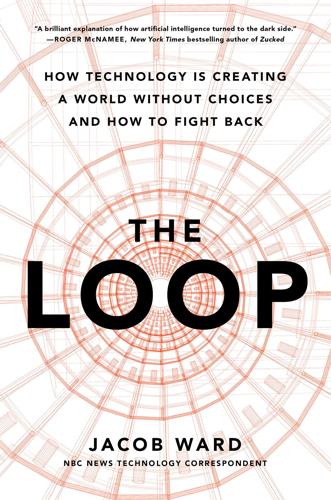
The Loop: How Technology Is Creating a World Without Choices and How to Fight Back
by
Jacob Ward
Published 25 Jan 2022
Also consider that if a mishap killed the ship and the crew, the event would be torturously broadcast, on time delay, to the whole of Earth, presumably killing off our species’ desire to travel to Mars in the process. And even if all goes well for the crew, that’s a long time confined together in a space no bigger than a vacation rental, as all of us who spent the pandemic year locked in with family, roommates, or alone know too well. In fact, before the coronavirus made test cases of us all, psychologists and logisticians who worried about a Martian crew driving each other nuts spent time observing actual astronauts confined in these sorts of tiny spaces for the duration, either of a simulated trip to Mars or a stay on the planet. And it hasn’t gone well.
…
And as more and more intervening layers come between the reader and the original source, not to mention so many other diversions competing for our attention online, our attention span dissipates. A 2020 Pew Center study found that people who rely on social media for news not only don’t follow topics like the coronavirus or a presidential election as closely as people who engage directly with news sites or television news, they also know less about the subjects. Meanwhile, advertisers who could have once picked up the phone and asked their agency to make sure not to place their ads in, say, pornographic magazines, or inside a radio broadcast about overthrowing the government, now rely on an industry of companies that make what’s known as “brand-safety technology.”
…
This sort of inadvertent algorithmic blacklisting was happening to Pulitzer finalists and was making coverage of some of the most important stories of the moment a literal money-loser for news outlets. Just think of what these algorithms might make of the Jeffrey Epstein trial, of death in Gaza, of morgues overflowing with coronavirus victims. Nandini Jammi, who runs a brand-safety consultancy for advertisers, explained the problem to me this way: “Instead of actually looking for criminal content, these brand-safety technology vendors have identified keywords such as ‘crime,’ or ‘violence,’ or ‘terrorist.’ So they’re literally blocking words that journalists need to use to cover the news.”
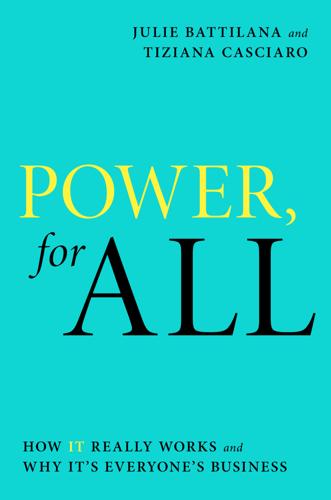
Power, for All: How It Really Works and Why It's Everyone's Business
by
Julie Battilana
and
Tiziana Casciaro
Published 30 Aug 2021
Yıldırım, “The Economic Case for Global Vaccinations: An Epidemiological Model with International Production Networks,” w28395, National Bureau of Economic Research, January 2021. 46 John Vidal and Ensia, “Destroyed Habitat Creates the Perfect Conditions for Coronavirus to Emerge,” Scientific American, March 18, 2020, https://www.scientificamerican.com/article/destroyed-habitat-creates-the-perfect-conditions-for-coronavirus-to-emerge/. 47 Karin Brulliard, “The Next Pandemic Is Already Coming, Unless Humans Change How We Interact with Wildlife, Scientists Say,” Washington Post, April 3, 2020, https://www.washingtonpost.com/science/2020/04/03/coronavirus-wildlife-environment/. 48 Mary Beard, The Roman Triumph (Cambridge, MA: Belknap Press, 2009). 49 While this image has long been a staple in popular consciousness, the evidence for it is less clear, and contradictions between different sources and interpretations abound.
…
Frances Frei and Anne Morriss also explore the importance of leading by fostering trust, love, and belonging in work environments for people to thrive in Unleashed: The Unapologetic Leader’s Guide to Empowering Everyone Around You (Boston: Harvard Business Press, 2020). 41 Scott Veale, “Word for Word/Last Words; Voices From Above: ‘I Love You, Mommy, Goodbye,’ ” New York Times, September 16, 2001, https://www.nytimes.com/2001/09/16/weekinreview/word-for-word-last-words-voices-from-above-i-love-you-mommy-goodbye.html; CNN, “Paris Terror: Survivor: Kept Saying I Love You,” July 21, 2016, video, https://www.youtube.com/watch?v=K5hp6SWXSKg. 42 Daniel Burke, “Coronavirus Preys on What Terrifies Us: Dying Alone,” CNN, March 29, 2020, https://www.cnn.com/2020/03/29/world/funerals-dying-alone-coronavirus/index.html. 43 Dominic Abrams and Michael A. Hogg, “Comments on the Motivational Status of Self-Esteem in Social Identity and Intergroup Discrimination,” European Journal of Social Psychology 18, no. 4 (1988): 317–34. 44 Andreas Schleicher, PISA 2018: Insights and Interpretations (Organization for Economic Cooperation and Development, 2019). 45 Kate Wintrol, “Is Mens Sana in Corpore Sano a Concept Relevant to Honors Students?”
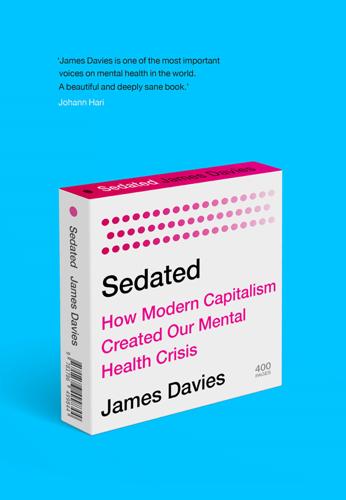
SEDATED: How Modern Capitalism Created Our Mental Health Crisis
by
James. Davies
Published 15 Nov 2021
Those that embody – in full or in part – the aforementioned principles include: The Association for Humanistic Psychology Practitioners Drop the Disorder Hearing Voices Network Psychologists for Social Change Recovery in the Bin Soteria Network Open Dialogue UK National Survivors User Network Mindful Occupation Council for Evidence-based Psychiatry Mad in the UK Critical Psychiatry Network Mental Health Europe Critical Mental Health Nursing Network The Free Psychotherapy Network The Alliance for Counselling and Psychotherapy The United Kingdom Council for Psychotherapy The British Association of Counselling and Psychotherapy The British Psychological Society The Association of Clinical Psychologists 2 Saad-Filho, A. (2020), ‘From COVID-19 to the End of Neoliberalism’, Critical Sociology, https://doi.org/10.1177/089692052092996 6 (accessed 29 May 2020). 3 Mutikani, Lucia, ‘What to know about the report on America’s COVID-hit GDP’, World Economic Forum, https://www.weforum.org/agenda/2020/07/covid-19-coronavirus-usa-united-stateseconamy-gdp-decline/ (accessed Oct. 2020). BBC News, https://www.bbc.co.uk/news/business-53918568 (accessed 26 Aug. 2020). 4 Comas-Herrera, Adelina (2020), ‘Mortality associated with COVID-19 outbreaks in care homes: early international evidence’, ILTCPN, 2020, https://ltccovid.org/2020/04/12/mortality-associatedwith-covid-19-outbreaks-in-carehomes-early-international-evidence/ (accessed Oct. 2020). 5 Van Lancker, Wim, and Parolin, Zachary (2020), ‘COVID-19, school closures, and child poverty: a social crisis in the making’, Lancet Public Health, https://doi.org/10.1016/S2468-2667(20)30084-0. 6 BBC News Online (2020), ‘Coronavirus: higher death rate in poorer areas, ONS figures suggest’, https://www.bbc.co.uk/news/uk-52506979 (accessed Jan. 2021). 7 Weale, Sally (2020), ‘Four in 10 pupils have had little contact with teachers during lockdown’, Guardian, https://www.theguardian.com/education/2020/jun/15/2m-children-in-uk-have-done-almost-no-school-work-inlockdown (accessed Sept. 2020). 8 Saad-Filho, A. (2020), ‘From COVID-19 to the End of Neoliberalism’, Critical Sociology, https://doi.org/10.1177/0896920520929966. 9 Sheridan, Danielle (2020), ‘Companies accused of furlough fraud after data found two thirds of workers carried on working’, Telegraph, https://www.telegraph.co.uk/news/2020/08/23/companies-accused-furlough-frauddata-found-two-thirds-workers/ (accessed Sept. 2020). 10 Campbell, Denis (2020), ‘UK lockdown causing “serious mental illness in first-time patients”’, Guardian, https://www.theguardian.com/society/2020/may/16/uk-lockdown-causing-serious-mental-illness-in-first-timepatients (accessed Sept. 2020). 11 Office for National Statistics (2020), ‘Coronavirus and depression in adults, Great Britain: June 2020’, https://www.ons.gov.uk/peoplepopulationandcommunity/wellbeing/articles/coronavirusanddepressioninadultsgreatbritain/june2020 (accessed Sept. 2020). 12 Fujiwara, Daniel (2020), ‘The Wellbeing Costs of COVID-19 in the UK.
…
BBC News, https://www.bbc.co.uk/news/business-53918568 (accessed 26 Aug. 2020). 4 Comas-Herrera, Adelina (2020), ‘Mortality associated with COVID-19 outbreaks in care homes: early international evidence’, ILTCPN, 2020, https://ltccovid.org/2020/04/12/mortality-associatedwith-covid-19-outbreaks-in-carehomes-early-international-evidence/ (accessed Oct. 2020). 5 Van Lancker, Wim, and Parolin, Zachary (2020), ‘COVID-19, school closures, and child poverty: a social crisis in the making’, Lancet Public Health, https://doi.org/10.1016/S2468-2667(20)30084-0. 6 BBC News Online (2020), ‘Coronavirus: higher death rate in poorer areas, ONS figures suggest’, https://www.bbc.co.uk/news/uk-52506979 (accessed Jan. 2021). 7 Weale, Sally (2020), ‘Four in 10 pupils have had little contact with teachers during lockdown’, Guardian, https://www.theguardian.com/education/2020/jun/15/2m-children-in-uk-have-done-almost-no-school-work-inlockdown (accessed Sept. 2020). 8 Saad-Filho, A. (2020), ‘From COVID-19 to the End of Neoliberalism’, Critical Sociology, https://doi.org/10.1177/0896920520929966. 9 Sheridan, Danielle (2020), ‘Companies accused of furlough fraud after data found two thirds of workers carried on working’, Telegraph, https://www.telegraph.co.uk/news/2020/08/23/companies-accused-furlough-frauddata-found-two-thirds-workers/ (accessed Sept. 2020). 10 Campbell, Denis (2020), ‘UK lockdown causing “serious mental illness in first-time patients”’, Guardian, https://www.theguardian.com/society/2020/may/16/uk-lockdown-causing-serious-mental-illness-in-first-timepatients (accessed Sept. 2020). 11 Office for National Statistics (2020), ‘Coronavirus and depression in adults, Great Britain: June 2020’, https://www.ons.gov.uk/peoplepopulationandcommunity/wellbeing/articles/coronavirusanddepressioninadultsgreatbritain/june2020 (accessed Sept. 2020). 12 Fujiwara, Daniel (2020), ‘The Wellbeing Costs of COVID-19 in the UK.
…
BBC News, https://www.bbc.co.uk/news/business-53918568 (accessed 26 Aug. 2020). 4 Comas-Herrera, Adelina (2020), ‘Mortality associated with COVID-19 outbreaks in care homes: early international evidence’, ILTCPN, 2020, https://ltccovid.org/2020/04/12/mortality-associatedwith-covid-19-outbreaks-in-carehomes-early-international-evidence/ (accessed Oct. 2020). 5 Van Lancker, Wim, and Parolin, Zachary (2020), ‘COVID-19, school closures, and child poverty: a social crisis in the making’, Lancet Public Health, https://doi.org/10.1016/S2468-2667(20)30084-0. 6 BBC News Online (2020), ‘Coronavirus: higher death rate in poorer areas, ONS figures suggest’, https://www.bbc.co.uk/news/uk-52506979 (accessed Jan. 2021). 7 Weale, Sally (2020), ‘Four in 10 pupils have had little contact with teachers during lockdown’, Guardian, https://www.theguardian.com/education/2020/jun/15/2m-children-in-uk-have-done-almost-no-school-work-inlockdown (accessed Sept. 2020). 8 Saad-Filho, A. (2020), ‘From COVID-19 to the End of Neoliberalism’, Critical Sociology, https://doi.org/10.1177/0896920520929966. 9 Sheridan, Danielle (2020), ‘Companies accused of furlough fraud after data found two thirds of workers carried on working’, Telegraph, https://www.telegraph.co.uk/news/2020/08/23/companies-accused-furlough-frauddata-found-two-thirds-workers/ (accessed Sept. 2020). 10 Campbell, Denis (2020), ‘UK lockdown causing “serious mental illness in first-time patients”’, Guardian, https://www.theguardian.com/society/2020/may/16/uk-lockdown-causing-serious-mental-illness-in-first-timepatients (accessed Sept. 2020). 11 Office for National Statistics (2020), ‘Coronavirus and depression in adults, Great Britain: June 2020’, https://www.ons.gov.uk/peoplepopulationandcommunity/wellbeing/articles/coronavirusanddepressioninadultsgreatbritain/june2020 (accessed Sept. 2020). 12 Fujiwara, Daniel (2020), ‘The Wellbeing Costs of COVID-19 in the UK. An Independent Research Report by Simetrica-Jacobs and the London School of Economics and Political Science’, https://www.jacobs.com/sites/default/files/2020-05/jacobs-wellbeing-costs-of-covid-19-uk.pdf (accessed Oct. 2020). 13 NHS (2020), ‘BSA Medicines Used in Mental Health, England 2015/16 to 2019/20’, https://nhsbsaopendata.s3-eu-west-2.amazonaws.com/mh-annual-narrative-final.html (accessed Sept. 2020). 14 Pierce, Mathias (2020), ‘Mental health before and during the COVID-19 pandemic: a longitudinal probability sample survey of the UK population’, Lancet Psychiatry 7(10):10883–92. 15 Public Health England (2020), ‘Guidance for the public on the mental health and wellbeing aspects of coronavirus (COVID-19)’, https://www.gov.uk/government/publications/covid-19-guidancefor-the-public-on-mental-healthand-wellbeing/guidance-for-thepublic-on-the-mental-health-andwellbeing-aspects-of-coronaviruscovid-19 (accessed Oct. 2020). 16 The Collective Psychology Project (2020), ‘Collective Resilience: How we’ve protected our mental health during COVID-19’, https://www.collectivepsychology.org/wpcontent/uploads/2020/09/Collective-Resilience.pdf (accessed Oct. 2020). 17 Social & Human Capital Coalition (2020), ‘Only 9 per cent of Britons Want Life to Return to “Normal” Once Lockdown Is Over’, https://social-human-capital.org/only-9-of-britons-want-life-to-return-tonormal-once-lockdown-is-over/ (accessed Oct. 2020). 18 UCL (2020), ‘Third of people report enjoying lockdown’, https://www.ucl.ac.uk/epidemiology-health-care/news/2020/jul/third-people-reportenjoying-lockdown (accessed Oct. 2020). 19 Harrabin, Roger, ‘Climate change: Could the coronavirus crisis spur a green recovery?’
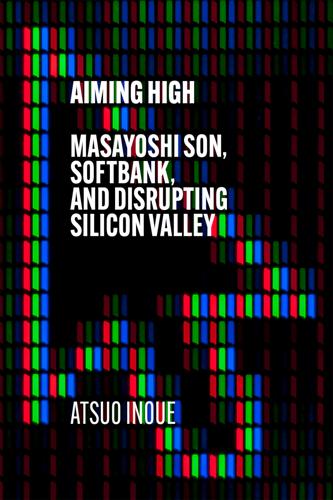
Aiming High: Masayoshi Son, SoftBank, and Disrupting Silicon Valley
by
Atsuo Inoue
Published 18 Nov 2021
There is a saying that ‘men tend to mellow with age’, but this cannot be applied to Son; if anything the opposite would appear to hold true in his case. As he tweeted on 1 September 2020, ‘There is only forward movement. You only live once and no other option makes any sense. Even if you take the odd roundabout route you’re always moving forwards.’ In July the SoftBank Group set up the Novel Coronavirus Testing Centre (now the SB Novel Coronavirus Testing Centre), a fully owned subsidiary. The centre is a registered health testing site where PCR tests are conducted using saliva samples. The premises themselves are exclusive leases based in the Tokyo PCR Testing Centre (in Ichikawa, Chiba) and the Hokkaido PCR Testing Centre (Kita-ku, Sapporo), and tests cost 2,000 yen (roughly $20, exclusive of VAT as well as postage and packing); this is the actual cost of testing, with no profit being made.
…
Looking at one case in particular, DoorDash went public in December 2020 and on 5 February 2021 the return on the initial investment (the sum of realised and unrealised value divided by total investment) was 16.8 times the original amount. The company was only launched in May 2017, so at the time was only three and a half years old. Due to the Covid-19 epidemic the trend of the world conducting all of its business online has only been speeded up: it is a sure bet to say not many people had heard of Zoom before the novel coronavirus dictated they would live their daily lives indoors, but now it has become an important part of life. People who may not have thought of ordering food online before have had to reconsider their stance and those who did not previously use Netflix are now watching films on their mobile phones; many more companies have had to expedite their plans to move the majority of their business online.
…
The most important indicator for an investment company is not its net income but rather its net asset value, and SoftBank Group shareholder value actually increased from the end of March 2020 to September 2020, going from 21.7 trillion yen to 27.3 trillion yen. On the evening of 9 June 2020, the SoftBank Group announced the test results from a novel coronavirus antigen test it was providing in a live broadcast on YouTube featuring Son and a number of medical staff. This test was different to PCR testing as it looked at whether or not an individual had been previously infected, with medical staff and SoftBank Group and subsidiary company employees all being tested.
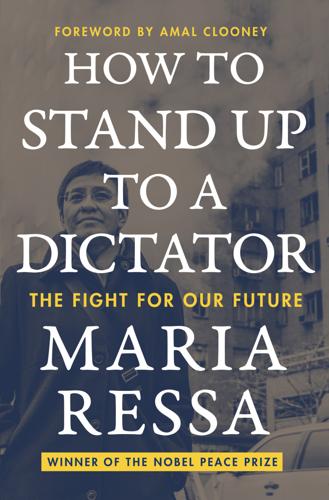
How to Stand Up to a Dictator
by
Maria Ressa
Published 19 Oct 2022
“States of Rebellion, Emergency Under Arroyo Administration,” Philippine Daily Inquirer, September 4, 2016, https://newsinfo.inquirer.net/812626/states-of-rebellion-emergency-under-arroyo-administration. 6.Raissa Robles, “Coronavirus: Is Covid-19 Task Force Duterte’s ‘Rolex 12’ in Plan for Marcos-Style Martial Law in the Philippines?,” South China Morning Post, April 28, 2020, https://www.scmp.com/week-asia/politics/article/3081939/coronavirus-covid-19-task-force-dutertes-rolex-12-plan-marcos. 7.Korina Sanchez, Henry Omaga-Diaz, and Ces Oreña-Drilon were the founding anchors of Bandila. 8.We co-opted two key ideas: crowdsourcing from James Surowiecki, who wrote the book The Wisdom of Crowds, and the tipping point from the book The Tipping Point, written more than a decade earlier by Malcolm Gladwell. 9.
…
Who Is Manila RTC Judge Rainelda Estacio-Montesa?” OneNews, June 17, 2020, https://www.onenews.ph/articles/cybercrime-expert-who-is-manila-rtc-judge-rainelda-estacio-montesa. 33.Rey Santos left the government several months before the publication of this book. 34.Maria Ressa, “We Can’t Let the Coronavirus Infect Democracy,” Time, April 14, 2020, https://time.com/5820620/maria-ressa-coronavirus-democracy/. 35.Ralf Rivas, “ABS-CBN Goes Off-Air After NTC Order,” Rappler, May 5, 2020, https://www.rappler.com/nation/abs-cbn-goes-off-air-ntc-order-may-5-2020/. 36.Ruben Carranza, Facebook, August 19, 2020, https://www.facebook.com/ruben.carranza.14/posts/10157883975069671.
…
“Duterte Declares State of Lawlessness in PH,” Rappler, September 3, 2016, https://www.rappler.com/nation/145043-duterte-declares-state-of-lawlessness-ph/. 36.Editha Caduaya, “Man with Bomb Nabbed at Davao Checkpoint,” Rappler, March 26, 2016, https://www.rappler.com/nation/127132-man-bomb-nabbed-davao-checkpoint/. 37.These were the specific stories on the websites that had the misleadingly repurposed Rappler story: http://ww1.pinoytribune.com/2016/09/man-with-high-quality-of-bomb-nabbed-at.html; http://www.socialnewsph.com/2016/09/look-man-with-high-quality-of-bomb.html; http://www.newstrendph.com/2016/09/man-with-high-quality-of-bomb-nabbed-at.html. 38.Rappler Research, “Davao Bombing,” Flourish, July 8, 2019, https://public.flourish.studio/visualisation/230850/. 39.Ralf Rivas, “Gambling-Dependent Philippines Allows POGOs to Resume Operations,” Rappler, May 1, 2020, https://www.rappler.com/business/259599-gambling-dependent-philippines-allows-pogos-resume-operations-coronavirus/. 40.This is the now-nonexistent link to the Rappler Facebook post that was taken down: https://www.facebook.com/rapplerdotcom/posts/1312782435409203. 41.John Naughton, “The Goal Is to Automate Us: Welcome to the Age of Surveillance Capitalism,” Guardian, January 20, 2019, https://www.theguardian.com/technology/2019/jan/20/shoshana-zuboff-age-of-surveillance-capitalism-google-facebook. 42.There are four books about Facebook that I would recommend: David Kirkpatrick’s The Facebook Effect: The Inside Story of the Company That Is Connecting the World (New York: Simon & Schuster, 2010) traces the beginning and the development of Mark Zuckerberg.
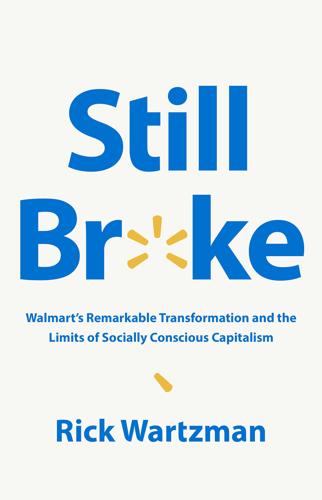
Still Broke: Walmart's Remarkable Transformation and the Limits of Socially Conscious Capitalism
by
Rick Wartzman
Published 15 Nov 2022
Tap here to learn more. AUTHOR’S NOTE IN 2017, Wal-Mart Stores Inc. changed its name to Walmart Inc. I use “Walmart” throughout the text for continuity, even in references preceding the switchover. The endnotes use both spellings. CHAPTER 1 Mr. Sam’s Bargain IN LATE MARCH 2020, with the coronavirus spreading so fast that President Donald Trump had been forced to back off his expressed hope of packing people into churches on Easter, I tuned in to a Monday morning webinar to check out how several major corporations were responding to the pandemic. It was so early in the crisis that the nation’s COVID-19 death count hadn’t even hit 10,000, and the Centers for Disease Control and Prevention had yet to recommend that masks be worn in public.
…
In a New York Times op-ed, the 27-year-old conveyed the tremendous stress she was under as customers snatched up practically every item they could. “It’s been a lot like Black Friday,” Love wrote, referring to the frenzied day after Thanksgiving that marks the kickoff of the holiday buying season. “I’m young and healthy, but I’m worried I will catch the coronavirus and infect my father.” After four years at Walmart, Love was earning $13.27 an hour, which penciled out to a little more than $20,000 per year for the 30 hours or so she worked each week while juggling her studies at Los Angeles Trade Technical College. Her pandemic bonus, which Gehrki had touted, would amount to all of 150 bucks.
…
Her dad, a shuttlebus driver at Disneyland, had just been laid off—one of the millions of Americans whose jobs vaporized as the virus ravaged the economy. In her piece in the Times, Love took issue with Walmart’s new leave policy. She explained that the company was “allowing workers who test positive for the coronavirus to stay home for up to two weeks, but it will cut pay in half for any needed sick time after that.” She said she feared that she or one of her coworkers might well wind up facing “the impossible choice of going to work sick and possibly infecting others or risking our already precarious finances.”
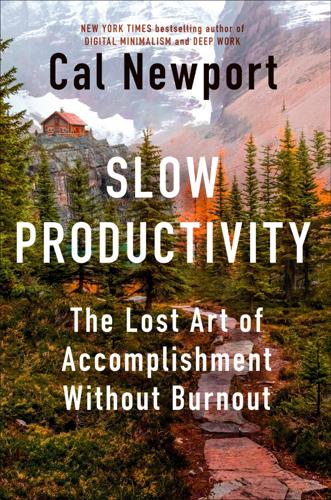
Slow Productivity: The Lost Art of Accomplishment Without Burnout
by
Cal Newport
Published 5 Mar 2024
It couldn’t have existed, however, without McPhee’s willingness to put everything else on hold, and just lie on his back, gazing upward toward the sky, thinking hard about how to create something wonderful. * * * — I came across this story of John McPhee’s unhurried approach during the early days of the coronavirus pandemic, which was, to put it mildly, a complicated time for knowledge workers. As that anxious spring unfolded, a long-simmering unease with the demands of productivity among those who toil in offices and at computer screens for a living began to boil over under the strain of pandemic-related disruptions.
…
Steinbeck told his literary agent, Elizabeth Otis, that he would escape this waterfront paradise to instead write on his fishing boat, balancing a notebook on a portable desk. I originally told these stories of eccentric writing spaces in an essay I published in the spring of 2021. At the time, the coronavirus pandemic was shifting beyond its acute emergency phase, and business communities were starting to wonder if remote work would become something more than just a short-term response to a health crisis. I meant my essay to serve as a warning relevant to this latter possibility. Professional writers, in some sense, were the original remote workers, and what you find when you study their habits, I noted, is that they often go way out of their way to find somewhere—anywhere—to work that’s not inside their own homes.
…
We’ve tried the fast approach for at least the past seventy years. It isn’t working. The time has come to try something slower. ACKNOWLEDGMENTS I cannot pinpoint the exact moment at which the phrase slow productivity entered my lexicon. The philosophy seems to have emerged somewhat spontaneously during the first year of the coronavirus pandemic, a period in which I began an intense and immensely fruitful dialogue about work, productivity, and meaning with my audience. I want to thank them first and foremost for their essential role in pushing me and my thinking forward. Once these ideas were formed, it was then my literary agent, Laurie Abkemeier, who helped me organize them into a coherent book project.

The Price Is Wrong: Why Capitalism Won't Save the Planet
by
Brett Christophers
Published 12 Mar 2024
Will Mathis and colleagues recently wrote an excellent, illuminating article about this for Bloomberg.18 Governments’ selective scaling back of subsidies to renewables generators in the second half of the 2010s, they noted, put pressure on generators’ profits that those generators were partly able to pass upstream to their technology suppliers through reductions in equipment prices. The resulting squeeze on manufacturers’ profits, compounded by the rise in costs of raw materials such as iron and silicon as the world reeled from the coronavirus pandemic, eventually saw the manufacturers respond. Vestas, one of the world’s largest turbine makers, for example, raised the price of its turbines by on average more than 20 per cent in 2021. The effect? A squeezing of generators’ profits. Meanwhile, the book’s argument that such squeezed profits represent a clear and present threat to ongoing investment in new renewable generating capacity should not be interpreted as a refutation of the significance of other obstacles to the decarbonization of electricity.
…
Massive growth in installations of solar capacity in 2019–20 in response to generous government incentives was succeeded in short order by the all-too-familiar bust in the form of ‘oversupply’, ‘wasteful curtailment’ – ‘a big burden for projects’ IRR’ – and generators ‘unable to pay bank debts on time’. A creaking transmission system with limited capacity that had not been upgraded in line with burgeoning generating potential was bad enough. The savaging of demand by the coronavirus pandemic temporarily made matters worse: in October 2021, daily electricity consumption only accounted for up to 40 per cent of installed generating capacity nationwide. This translated into epic curtailment rates.42 Meanwhile, a very different approach to curtailment has been taken in countries such as the UK, which have actively eschewed the Darwinianism of their Indian and Vietnamese counterparts.
…
From around $70 per barrel at the beginning of 2020, the oil price had collapsed to less than $30 by March, and it would remain below $50 for the rest of the year. ‘Broken and in survival mode’, then, was how the Guardian, for instance, described the state of the global fossil fuel industry in April 2020, as a result of ‘plunging demand for oil wrought by the coronavirus pandemic combined with a savage price war’.16 Citing industry experts, the newspaper said that the industry faced ‘the gravest challenge in its 100-year history’ and confidently predicted that it would emerge from the crisis permanently altered. If anything, all of this was expected to be a boon for renewables.
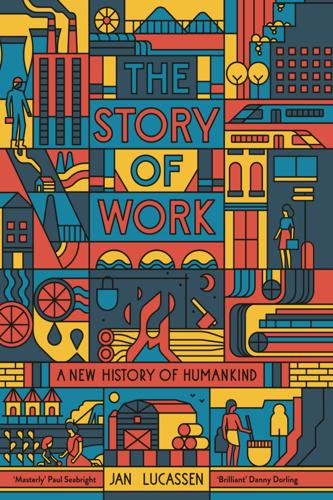
The Story of Work: A New History of Humankind
by
Jan Lucassen
Published 26 Jul 2021
Our life would be defined by consumption, not by production. In this utopia, crucially, only losers work for someone else; the new, true individuals are the self-employed and the entrepreneurs, and everyone craves a ‘portfolio’ career. And, while the banking crises of 2008 and, more recently, the global coronavirus pandemic have tempered enthusiasm somewhat, this utopia is still alive and kicking, if only because of the lack of a serious challenger. The entrepreneur is a hero, the ordinary worker a slave. Such a misconception is widespread because it does not reside only among champions of the ‘free’ market; it is just as much a source for left-wing utopian thinking, which, of course, does not trumpet independent entrepreneurship but rather glorifies wage labour for the community and, with it, the notion of well-earned free time.
…
Nevertheless, during the last two centuries, we may discern a great wave in the North Atlantic and its offshoots, and in the last half-century also increasingly beyond – from regulation and corporation (households, estates, guilds and so on) in the ancien régime, to deregulation and decorporation in the first half of the nineteenth century, to reregulation and recorporation in the century thereafter and, finally, to another period of deregulation and decorporation since the end of the twentieth century.109 Prepared by the banking crisis of 2008, the pendulum may now be swinging in the opposite direction, influenced by the coronavirus pandemic, although it is unclear for how long. Incidentally, the development of decorporation warrants an observation with respect to households, where we do not find any recorporation from the late nineteenth century. As a nuclear work unit, the household eventually and definitively lost power.
…
The stagnation of remuneration and job security in especially the rich countries in recent decades (summarized in concepts such as flexibilization and precarization) can also be counted as types of reactions.2 Or, in that context, the recent massive Keynesian state aid to companies and working people following the outbreak of the coronavirus pandemic – something that prior to this seemed absolutely unthinkable. Secondly – and previous examples already point in this direction – the nature and vehemence of these reactions are not easy to predict; at least, not as easy as, say, a strike resulting from a massive cut in wages. Take, for example, the contradiction between the emergence of the workers’ movement, which peaked one hundred years ago, and the current lack of successful collective actions to improve working conditions.

Moon Prague, Vienna & Budapest: Palaces & Castles, Art & Music, Coffeehouses & Beer Gardens
by
Jennifer D Walker
,
Auburn Scallon
and
Moon Travel Guides
Published 15 Oct 2024
Direct flights take around 8.5 hours. Before the coronavirus pandemic, there were also direct flights to Los Angeles and Miami, which may return in the future. Budapest Budapest has no direct flight connections from the US. If you fly in from any of the major US cities, you will need to change planes somewhere like London, Frankfurt, Munich, or even Reykjavik. In 2018, LOT Airlines (www.lot.com) launched new routes from Budapest Ferenc Liszt Airport with direct flights between New York and Chicago with flight times lasting around 10-11 hours, but this route stopped during the coronavirus pandemic. FROM EUROPE The great thing about traveling in Central Europe is you have an abundant selection when it comes to which mode of transport to pick.
…
Medical care in Austria is excellent, but in Hungary, standards will vary depending on the hospital, with some being better than others. Public health services in Hungary are understaffed and overburdened. The Czech Republic falls somewhere in between the two countries. CORONAVIRUS Central Europe was significantly impacted by the coronavirus pandemic. Most of the region went into lockdown, closing international borders as well as restaurants, museums, thermal baths, bars, hotels, and more, but all have reopened now. Face masks were required, with possible fines for those who didn’t comply. However, at the time of writing, all testing, vaccination, and masking requirements had been dropped and remain optional.
…
Courses (including the market tour) last around 4.5 hours and cost around €125 per person. Bars and Nightlife Many tourists come to Budapest for the ruin bars, and it used to be impossible to avoid costumed groups of bachelor and bachelorette parties in the Jewish Quarter. Sadly, ruin bars are a dying breed, especially with the onset of the coronavirus in 2020, which hit the entire nightlife scene hard. In the summer of 2020, nightlife shifted outdoors to terraces and “kerts” (“gardens” in Hungarian). Since the COVID rules relaxed and tourism is in full swing again, Budapest’s nightlife has made a comeback, and bars and clubs are as busy as before.
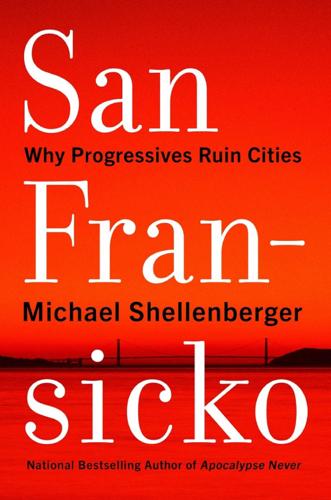
San Fransicko: Why Progressives Ruin Cities
by
Michael Shellenberger
Published 11 Oct 2021
Homicides rose 35 percent in Los Angeles, 31 percent in Oakland, 74 percent in Seattle, 63 percent in Portland, 60 percent in Chicago, and 47 percent in New York City.67 The coronavirus pandemic may have played a role. “Gangs are built around structure and lack thereof,” noted a Fresno, California, police officer. “With schools being closed and a lot of different businesses being closed, the people that normally would have been involved in positive structures in their lives aren’t there.”68 But there had been a similar spike in homicides in 2015 when there was no coronavirus pandemic. Back then, as in 2020, a disproportionate number of victims and suspects were black men under thirty from poor, inner-city neighborhoods.
…
Nearly one-quarter of the homeless in King County, in which Seattle is the biggest city, said they became homeless outside of Washington State.28 Mayor Breed said she opposed Proposition C because she feared that spending yet more on homelessness services, without any requirement that people get off the street, would backfire. “We are a magnet for people who are looking for help,” she said. “There are a lot of other cities that are not doing their part, and I find that larger cities end up with more than our fair share.”29 After San Francisco started offering free hotel rooms to the homeless during the 2020 coronavirus pandemic, first responders reported that people had come from across the state. “People are coming from all over the place—Sacramento, Lake County, Bakersfield,” said the city’s fire chief. “We have also heard that people are getting released from jail in other counties and being told to go to San Francisco where you will get a tent and then you will get housing.”30 When a television reporter asked Bay Area mayors why there was so much homelessness in Bay Area cities but not in affluent communities east of the Bay Area, the Berkeley mayor answered, “I assume [it’s] the fact that our cities have such robust social services and shelter, as well as just the environment, the climate, a city that is inviting and welcoming to people.”31 A Los Angeles homelessness service provider emphasizes the extent to which the homeless shop around from city to city seeking the best housing and benefits and avoiding the law.
…
In 1972, the Supreme Court strongly restricted the enforcement of vagrancy laws, which in some states had targeted African Americans.39 In 1993, a federal court ruling prevented New York City from banning panhandling because, it ruled, begging is a form of protected free speech.40 In 2006, the Ninth Circuit Court of Appeals blocked Los Angeles from enforcing a 1968 law that outlawed sleeping on sidewalks.41 And in 2020, the Supreme Court upheld a 2018 ruling by a lower court against the city of Boise, Idaho, which found that cities cannot impose or enforce camping bans unless “shelter” were “practically available.”42 During the pandemic, the federal government gave cities funding to pay for hotel rooms for many homeless to stay in, free of charge, for most of the pandemic, and when it received the coronavirus vaccine, San Francisco and most other cities vaccinated its homeless population early in the process.43 The city spends a share of its budget that is 50 percent larger than the share spent by New York City and six times more than the share spent by Chicago on homelessness. San Francisco increased its spending on homelessness from $157 million to $567 million between 2011 and 2022.44 While it’s true that people on the street suffer higher rates of eviction, trauma, and abuse than people who don’t live on the street, it’s also true that the vast majority of people who lose their housing, get traumatized, live with over-policing, and come from generations of poverty aren’t living on the street, or addicted to heroin, fentanyl, and meth.

This Is How They Tell Me the World Ends: The Cyberweapons Arms Race
by
Nicole Perlroth
Published 9 Feb 2021
And now, the pandemic had virtualized our lives at speeds we never imagined, exposing us to cyberattacks like never before. It was no surprise when hackers seized on the coronavirus to take aim at our hospitals, our vaccine labs, and the federal agencies leading the Covid-19 response. It is not clear how successful Russia’s retaliatory strikes on American hospitals will be. Ten days out from the election, more hospitals were reporting cyberattacks. And with coronavirus cases spiking to record levels, and a shortage of healthy hospital workers, I fear it is only a matter of time before cyberattacks cost us lives. As of this writing, foreign states and cybercriminals are hitting American networks from so many sides that, from my quarantined perch, it has become nearly impossible to keep track.
…
When a mobile app Democrats used to report results from their Iowa primary caucus imploded in public view in February, I watched as Russian trolls retweeted and stoked Americans who falsely believed the app was a ploy by Hillary Clinton’s inner circle to wrest the election from Bernie Sanders. When the coronavirus pandemic took hold, I watched those same Russian accounts retweet Americans who surmised Covid-19 was an American-made bioweapon or an insidious plot by Bill Gates to profit off the eventual vaccine. And as the world stood still waiting for that vaccine, Russian trolls worked overtime to legitimize the vaccination debate, just as they had during the worst of Ukraine’s measles outbreak one year earlier.
…
With more than 90 percent of their infrastructure down, TrickBot’s Russian operators lashed out, shifted to new tools, and retaliated on American hospitals. They traded lists of some four hundred American hospitals they planned to target with ransomware, and slowly started hitting them one by one. This, with less than a week before the election, when hospitals were seeing a record spike in coronavirus cases. “We expect panic,” one Russian hacker told his comrades in a private message exchange captured by a threat researcher. The FBI, CISA, and the Department of Health and Human Services set up an emergency call with hospital administrators and security researchers to debrief them on the urgent “credible threat.”
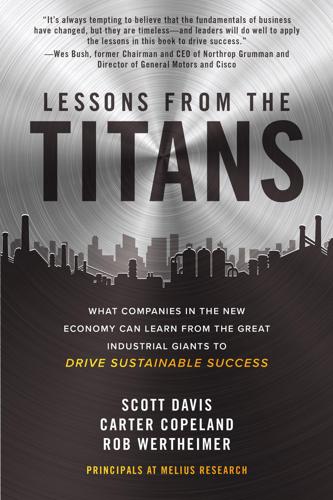
Lessons from the Titans: What Companies in the New Economy Can Learn from the Great Industrial Giants to Drive Sustainable Success
by
Scott Davis
,
Carter Copeland
and
Rob Wertheimer
Published 13 Jul 2020
He is also indebted to his mentor, Joseph Campbell Jr., whose training on how to be a humble but curious analyst, doting father, and thoughtful human being helped shape him into the person that he is today. Rob is grateful for the support of his family throughout the project. Weekend editing sessions provided an opportunity to show the kids that the process of writing, rewriting, and doing it all again is not just something taught in school. INTRODUCTION Even before the coronavirus pandemic exposed flaws in government planning and tested the limits of modern medicine, the world had already become frighteningly out of balance. Tweets had taken over from substantive conversation and “news” had become unapologetically biased. High debt levels and rising leverage risk was something only old people talked about.
…
The most common explanation by the pundits is disruption, which is exceedingly hard to predict and most likely a convenient excuse. The reality is more complex and humbling. Companies usually fail because of the incompetence and arrogance of a complacent management team, not because they struggled to predict the future. Predicting the future may itself just be an exercise in futility. The coronavirus pandemic is a clear example of the random walk we take each day. And this is not a new phenomenon. When we were growing up in the 1980s, futurists predicted the widespread adoption of electric cars by the late 1990s. In fact, GM launched a concept electric car with the EV1 all the way back in 1996.
…
The truth is that their secrets are hardly secrets at all—continuous improvement, rigorous benchmarking, disciplined investment, principled leadership, solid business systems—but these practices have been long forgotten, ignored, or dismissed by the businesspeople hypnotized by the Google-Amazon-Apple dream. These industrial companies are the inspiration for our work. There’s a reason we talk about the Dow Jones Industrials—these companies dominated the stock market for much of history. Industrial companies have carried out or suffered more disruptions than any other. This year’s coronavirus pandemic is just the latest one. These companies make industrials the perfect sector to study, with data on great successes and even greater failures that go back for north of a century. These companies had celebrated successes like diesel locomotives, jet engines, grain harvesters, factory robots, and x-ray machines.
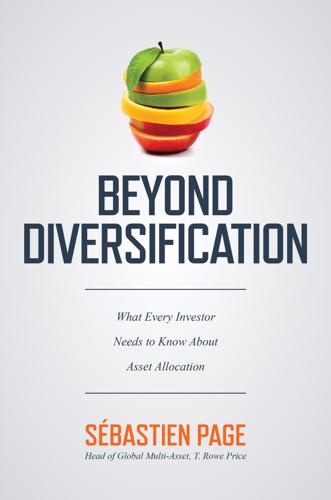
Beyond Diversification: What Every Investor Needs to Know About Asset Allocation
by
Sebastien Page
Published 4 Nov 2020
As the events related to the coronavirus pandemic of 2020 continue to unfold, pundits like to compare this crisis with the 2008 financial crisis. Yet there are important differences. The 2008 crisis involved a speculative bubble in real estate. Systemic risk was high, in great part because banks owned structured products linked to this bubble. A shaky edifice composed of layers upon layers of complex, interconnected structured products and derivatives stood on the shoulders of risky subprime borrowers. In 2020, financial institutions are not in the thick of the storm. However, the novel coronavirus will cause an economic shock of unprecedented size—an economic heart attack.
…
See Jack Treynor (1961), Bill Sharpe (1964), John Lintner (1965), and Jan Mossin (1966). 2. “Professor William Sharpe Shares Nobel Prize for Economics,” gsb.stanford .edu. 3. As I finalize this book at the end of March 2020, equity markets have suffered one of their worst and fastest sell-offs in history due to the coronavirus pandemic, combined with a major oil shock. The Federal Reserve has aggressively lowered rates, and the three-month US Treasury bill is at zero. These are unusual circumstances. In this context, expected returns across asset classes should be about 1–2% lower due to lower rates, compared with those of 2018.
…
Sector weights for industrials and materials have gone down over this period as well.5 Therefore, not only will the next crisis be different (as crises always are), but the sensitivity of US stocks to that new crisis will be different as well. They should be more resilient to an economic downturn that affects mostly cyclicals. Recent market performance during the coronavirus pandemic proves this point. Large technology companies have protected the S&P 500 from the much larger drawdown it would have experienced if it still had a 31% weight in financials and energy. These changes in sector weights also make time series analyses of valuation ratios on the S&P 500 less reliable.
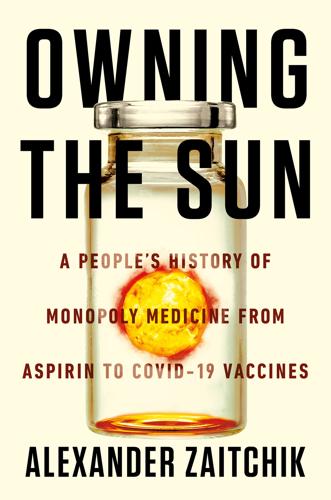
Owning the Sun
by
Alexander Zaitchik
Published 7 Jan 2022
Though the government owns and has stakes in many of the patents, it has assumed the now-familiar role of obsequious junior partner to its commercial contractor, Moderna. When a group of House Democrats attempted in early March 2020 to legislate a few modest conditions on the first $8 billion tranche of coronavirus research subsidies, they were flung aside like so many Lilliputians by the pharmaceutical and biotech lobby machines. Pharma’s man in Washington, Stephen Ubl, warned legislators that the industry would take its ball and go home “if collaboration with the government even in a limited way results in a loss of intellectual property or the government setting the price.”
…
The news was announced to the English-speaking world by Edward Holmes, a virologist at the University of Sydney whose team had been working with the Shanghai clinic. Within hours of Holmes’s tweeting out the links, scientists around the world had sketched a family tree that identified the virus as a close relative of SARS, a fatal zoonotic coronavirus that caused outbreaks in mainland China, Hong Kong, and Canada in 2003. Later that same day, China reported the new virus’s first fatality: a sixty-one-year-old Wuhan man had recently perished at a local hospital. This news did not disturb the general public. Another two months passed before the WHO declared the virus a pandemic, crashing global markets and triggering runs on basic supplies like toilet paper.
…
Burdened by a sense of borrowed time, the attendees—leaders in public health policy and infectious disease research—sketched a crash “R&D Blueprint” for a world upended by the virus and disease that they officially named SARS-CoV-2 and COVID-19. The meeting unfolded in the open-science spirit of the January collaborations. Specialists compiled a comprehensive summary of coronavirus research and proposed ways to accelerate the development, testing, and production of diagnostic kits, treatments, and vaccines. The WHO conference produced a document premised on the assumption that researchers would work together, maintaining open communication channels and common stores of knowledge.

Routes to Rejoin
by
Stay European
Published 3 Oct 2021
Far from looking for opportunities to work around Europe, those who can are still working from home. The dramatic (though highly necessary) loss of freedoms during the pandemic has extensively disguised the loss of European freedoms as a result of Brexit. 57 It is a similar story in the economy, where the drastic fall in GDP as a result of coronavirus has masked the expected fall from Brexit. So far the most noticeable effect attributable to Brexit directly has been on online orders from the EU and parcels sent to the EU, which are tied up in customs paperwork and can take months. The cause of trade problems, shortages and other issues has been difficult to prove, with the media often pinning the blame on catch-all phrases such as “caused by the effects of Covid and Brexit”.
…
As the Institute for Government’s report notes, “While most of the focus of the Brexit impact has been at the border, one of the key criticisms of the TCA [the Brexit deal] was the limited provisions made for services… accountants, lawyers, consultants and architects who are all working from home have not yet had to worry about what work they may or may not be permitted to carry out in the EU”. This will cause increasing frustration as the years pass. In the run up to the renegotiation, we need to do two things. Firstly, we need to try to ensure Brexit’s effects are pinned squarely on Brexit, not either coronavirus or the pro-Brexit media’s catchphrase in case of emergency, “new EU rules”. There are no new EU rules, just the deal our government signed: we need to raise awareness that Brexit and Brexit alone is the source of this pain. And second, we need a different government to be sitting on the UK side of the negotiating table. 63 6.
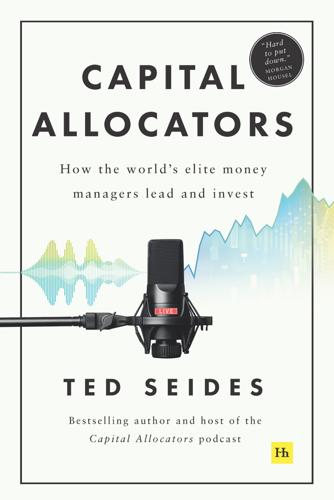
Capital Allocators: How the World’s Elite Money Managers Lead and Invest
by
Ted Seides
Published 23 Mar 2021
Bernstein said, “risk means you don’t know what will happen.” Financial setbacks over my career, which started a few years after the crash in 1987, included the dot.com bubble in 2000, the Global Financial Crisis in 2008, the coronavirus pandemic in 2020, and many smaller sell-offs along the way. Each of these were shocks to the system. Doctors referred to SARS-CoV-2 as a “novel” coronavirus. The sudden stop to economies around the world was indeed novel – it had never happened before. Each tail event reminds CIOs of the problems of assumptions that underpin models. The dot.com bubble followed an assumption that the new technology of the internet would forever change how business was conducted and valued, a premise priced into the markets about a decade early.
…
Psychologically, between the stress or inability to think in the longer term and this idea that we tend to place more weight on the negative than positive, the result may not be ideal from an investor’s perspective. The Covid-19 pandemic that started in Q1 of 2020 provided a case study in how CIOs handle uncertainty. The novel coronavirus brought unprecedented challenges in the health and economic welfare of the world.48 CIOs faced work-from-home restrictions for an indefinite period, stock market volatility, and a sudden stop in the global economy. CIOs quickly developed a playbook to lead and manage in the face of uncertainty.
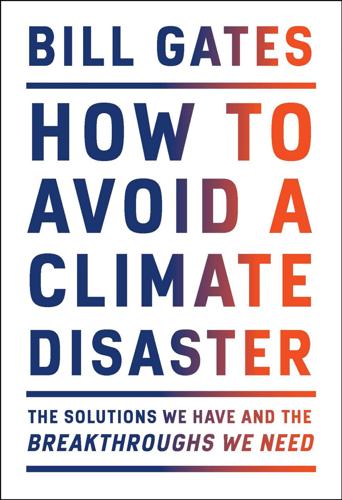
How to Avoid a Climate Disaster: The Solutions We Have and the Breakthroughs We Need
by
Bill Gates
Published 16 Feb 2021
Today Mission Innovation includes 24 countries and the European Commission and has unlocked $4.6 billion a year in new money for clean energy research, an increase of more than 50 percent in just a handful of years. The next turning point in this story will be grimly familiar to everyone reading this book. Launching Mission Innovation with world leaders at the 2015 UN climate conference in Paris. (See this page for the names of those photographed.) In 2020, disaster struck when a novel coronavirus spread around the world. To anyone who knows the history of pandemics, the devastation caused by COVID-19 was not a surprise. I had been studying disease outbreaks for years as part of my interest in global health, and I had become deeply concerned that the world wasn’t ready to handle a pandemic like the 1918 flu, which killed tens of millions of people.
…
In 2015, I had given a TED talk and several interviews in which I made the case that we needed to create a system for detecting and responding to big disease outbreaks. Other people, including former U.S. president George W. Bush, had made similar arguments. Unfortunately, the world did little to prepare, and when the novel coronavirus struck, it caused massive loss of life and economic pain such as we had not seen since the Great Depression. Although I kept up much of my work on climate change, Melinda and I made COVID-19 the top priority for the Gates Foundation and the main focus of our own work. Every day, I would talk to scientists at universities and small companies, CEOs of pharmaceutical companies, or heads of government to see how the foundation could help accelerate the work on tests, treatments, and vaccines.
…
What’s remarkable to me is not how much emissions went down because of the pandemic, but how little. This small decline in emissions is proof that we cannot get to zero emissions simply—or even mostly—by flying and driving less. Just as we needed new tests, treatments, and vaccines for the novel coronavirus, we need new tools for fighting climate change: zero-carbon ways to produce electricity, make things, grow food, keep our buildings cool and warm, and move people and goods around the world. And we need new seeds and other innovations to help the world’s poorest people—many of whom are smallholder farmers—adapt to a warmer climate.
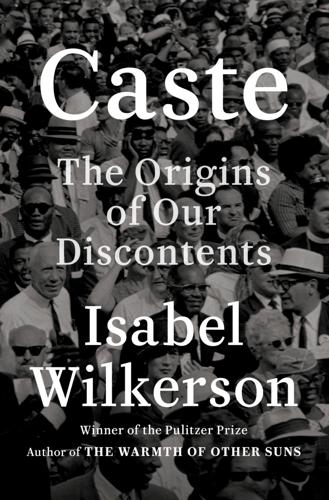
Caste: The Origins of Our Discontents
by
Isabel Wilkerson
Published 14 Sep 2020
By the time the presidential impeachment trial ended on February 5, 2020, it had been 329 days since the last press briefing at the White House, held on March 11, 2019. Then the worst pandemic: Dan Diamond, “Trump’s Mismanagement Helped Fuel Coronavirus Crisis,” Politico, March 7, 2020, https://www.politico.com/amp/news/2020/03/07/trump-coronavirus-management-style-123465; Michael D. Shear et al., “The Lost Month: How a Failure to Test Blinded the U.S. to Covid-19,” New York Times, March 28, 2020, https://www.nytimes.com/2020/03/28/us/testing-coronavirus-pandemic.html; David Frum, “This Is Trump’s Fault: The President Is Failing, and Americans Are Paying for His Failures,” Atlantic, April 7, 2020. https://www.theatlantic.com/ideas/archive/2020/04/americans-are-paying-the-price-for-trumps-failures/609532/.
…
“As Usual”: Annie Lowrey, “As Usual, Americans Must Go it Alone,” Atlantic, March 19, 2020, https:// www.theatlantic.com/ideas/archive/2020/03/america-woefully-underinsured/608035/. “To a watching world”: Simon Tisdall, “US’s Global Reputation Hits Rock-Bottom Over Trump’s Coronavirus Response,” Guardian, April 12, 2020, https://theguardian.com/us-news/2020/apr/12/us-global-reputation-rock-bottom-donald-trump-coronavirus. “This is a civilization”: Gary Michael Tartakov, in discussion with the author, International Conference on Caste and Race, at the University of Massachusetts Amherst, May 5, 2018. Epilogue: A World Without Caste “The worst disease is”: Jerome and Taylor, Einstein on Race, pp. 144–45.
…
The earth’s most powerful nation watched as faraway workers in hazmat gear tested for what no one could see, and deluded itself into believing that American exceptionalism would somehow grant it immunity from the sorrows of other countries. Yet the virus arrived on these shores, and it planted itself in the gaps of disparity, the torn kinships and fraying infrastructure in the country’s caste system, just as it exploited the weakened immune system in the human body. Soon, America had the largest coronavirus outbreak in the world. Governors pleaded for basic supplies and test kits, were reduced to bidding against one another for ventilators. “As Usual,” read a headline in The Atlantic, “Americans Must Go It Alone.” The virus exposed both the vulnerability of all humans and the layers of hierarchy.

Doppelganger: A Trip Into the Mirror World
by
Naomi Klein
Published 11 Sep 2023
rare cases of heart inflammation: “Myocarditis and Pericarditis After mRNA COVID-19 Vaccination,” Centers for Disease Control and Prevention, September 27, 2022, https://www.cdc.gov/coronavirus/2019-ncov/vaccines/safety/myocarditis.html. possible small uptick in strokes: “CDC & FDA Identify Preliminary COVID-19 Vaccine Safety Signal for Persons Aged 65 Years and Older,” Centers for Disease Control and Prevention, January 13, 2023, https://www.cdc.gov/coronavirus/2019-ncov/vaccines/safety/bivalent-boosters.html. “genocide”: Naomi Wolf, “Dear Friends, Sorry to Announce a Genocide,” Outspoken with Dr Naomi Wolf, Substack, May 29, 2022.
…
Not only did Wolf appear on Fox seven times in less than two months, but she went on a tour, speaking at the “FreedomFest” at Mount Rushmore and testifying, at the invitation of various Republican lawmakers, at multiple statehouses against mask and vaccine mandates. In the Maine House of Representatives, her host was disciplined by legislative leaders for allowing Wolf into the then closed statehouse and barred from bringing future guests. Eight days later, she traveled to Michigan, which was then one of the leading states in new coronavirus cases, to testify before the state’s House Oversight Committee that vaccine passports were akin to the early treatment of Jews by the Nazis. One person who took immediate notice of the resonance of Wolf’s new message was Steve Bannon. Within a week, he began having “Dr. Wolf” as a regular guest on his wildly popular and influential podcast, War Room, which he had been developing through various iterations since losing his post as Donald Trump’s chief strategist in 2017—while also, as he boasted to The New York Times, building “the infrastructure, globally, for the global populist movement.”
…
When Wolf started doing the rounds on Fox in her new role as “CEO of a tech company,” sounding, however unintentionally, like my preposterous proxy, I just couldn’t figure out how to keep talking about how the large tech firms were exploiting the crisis without it being sucked into the whirring conspiracy mill. I couldn’t see how a serious discussion of actual disaster capitalism could avoid getting blended with truly dangerous anti-vaccination fantasies and outright coronavirus denialism. Pipikism had thwarted me. The Green New Reset? More disturbingly, the forces of farcicalization in the Mirror World also seemed to be undercutting nascent and fragile attempts to actually address many of the real crises we face, from climate breakdown to mass incarceration to the ruinously exploitative working conditions that the pandemic laid bare.

The Constitution of Knowledge: A Defense of Truth
by
Jonathan Rauch
Published 21 Jun 2021
When a frightening new disease appeared in the early 1980s, identifying the human immunodeficiency virus took less than two years, and developing a life-saving treatment took less than two decades—a mobilization of intellectual resources whose scale and efficacy would beggar the imaginations of all earlier generations of humans. After a frightening new coronavirus appeared in late 2019, the mobilization was an order of magnitude faster still. What enabled medicine’s liftoff? McIntyre argues that the decisive change was social: the development of professional societies which linked practitioners, set standards, and provided accountability, thus allowing each researcher to coordinate and contend with all the others.
…
“Many more nations are represented in the global network over time, and by count, we can say that there are even more new participants from within existing nations who have joined global collaborations,” write Caroline S. Wagner, Travis A. Whetsell, and Loet Leydesdorff in their 2017 study of collaboration in six disciplines.20 One can cite mountains of such data on the growing breadth and depth of the reality-based community—and on its growing capacity and efficacy, as well. In 2020, after a new and deadly coronavirus had suddenly emerged in China, the reality-based network brought people and resources to bear with unprecedented speed. Only ten days after the new virus was first reported, scientists released its genetic sequence. Only twelve days after that, scientists at the National Institutes of Health published an analysis of how the virus invaded human cells.
…
National Science Board, Science and Engineering Indicators 2018, chap. 5. 20. Caroline S. Wagner, Travis A. Whetsell, and Loet Leydesdorff, “Growth of International Collaboration in Science: Revisiting Six Specialties,” Scientometrics 110 (2017), p. 1643. 21. Carolyn Y. Johnson, “Scientists Are Unraveling the Chinese Coronavirus with Unprecedented Speed and Openness,” Washington Post, January 24, 2020. 22. COVID-19 Primer, https://covid19primer.com/dashboard. 23. Michael Polanyi, “The Republic of Science: Its Political and Economic Theory,” Minerva 1, no. 1 (September 1962). 24. Helen E. Longino, Science as Social Knowledge: Values and Objectivity in Scientific Inquiry (Princeton University Press, 1990), pp. 73–74; I provided the italics.
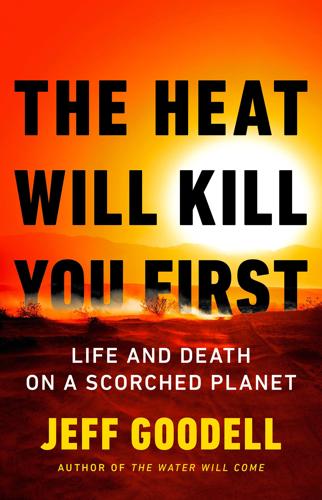
The Heat Will Kill You First: Life and Death on a Scorched Planet
by
Jeff Goodell
Published 10 Jul 2023
Inside Climate News, September 16, 2015. https://insideclimatenews.org/news/16092015/exxons-own-research-confirmed-fossil-fuels-role-in-global-warming/ a thousand deaths a day: Holly Yan and Christina Maxouris. “The US Just Topped 1,100 Coronavirus Deaths a Day. One State Is Getting National Guard Help, and Others Keep Breaking Records.” CNN, October 22, 2020. https://www.cnn.com/2020/10/22/health/us-coronavirus-thursday/index.html 43,000 deaths: “Newly Released Estimates Show Traffic Fatalities Reached a 16-Year High in 2021.” National Highway Traffic Safety Administration press release, May 17, 2022. https://www.nhtsa.gov/press-releases/early-estimate-2021-traffic-fatalities “We are confronted simultaneously”: Brink Lindsey.
…
In rare cases, dengue can escalate to brain swelling and bleeding, which can be fatal (about ten thousand people a year die from dengue). But Jones was lucky. The pain and fever faded after four or five days, and she was almost recovered when her son called her to his room to point out the red splotches on his skin. As soon as she saw them, she knew: dengue. As it turned out, the Florida Keys, already hit hard by the coronavirus, was in the middle of a dengue outbreak too. Heat rearranges the natural world and rewrites disease algorithms on our planet. It creates new opportunities for microbes, opening up fresh biological landscapes for them to explore, turning pathogens into microscopic versions of Ferdinand Magellan, expanding the boundaries of the known world.
…
Ebola fever has burned in large parts of Africa for the past six years. In addition, there are seven different known coronaviruses that can infect humans. SARS-CoV spilled over from an animal host, likely a civet cat, in 2002–03, and caused a near pandemic before disappearing. Middle East respiratory syndrome (MERS) coronavirus jumped from camels to people in 2012, but never found a way to spread efficiently among humans and died out quickly. Now we have SARS-CoV-2, the virus that causes Covid-19. As I write this, the precise origins of Covid-19 remain unclear. The simplest explanation is that the virus emerged from the wilds near southern China, then found residence in horseshoe bats before making the jump to humans.
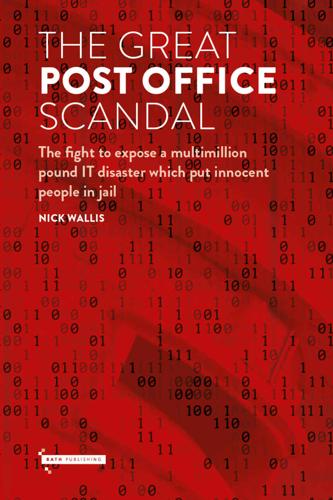
The Great Post Office Scandal: The Fight to Expose a Multimillion Pound Scandal Which Put Innocent People in Jail
by
Nick Wallis
Published 18 Nov 2021
The settlement agreement also forced the Post Office to commit to more Subpostmaster training, more trainers, new business support managers, a new handover process, a new branch support model including new area managers, new branch support tools, increased Subpostmaster remuneration, better quality control on transaction corrections, a new team to deal with disputed transaction corrections, dedicated case handlers to investigate discrepancies, better access to Horizon data from Fujitsu, a completely different approach to ‘losses’ (which suggests they won’t automatically be treated as Subpostmaster debts), better audits and better phone support. Quite a list. ____________________ 1 Throughout August 2020 the government ran a scheme in England to encourage people who might be wary of catching coronavirus to go out to eat in restaurants and cafés. It allowed every qualifying food outlet to offer a 2-for-1 deal on food and soft drinks sold to diners up to the value of £10 per customer. It turned out people were right to be wary of coronavirus as the pandemic returned with a vengeance just a few weeks later. BACK TO COURT In June 2020, there was yet another Lords debate. This time Lord Cormack told the House that the Post Office had behaved with ‘malevolent incompetence.’
…
I found his details on social media and thought it was worth chancing my arm to see if he was willing to be interviewed for this book. Being an amiable chap, he saw no reason why not. It was fascinating to have a lengthy chat with someone who had the job of introducing Horizon to hundreds of Subpostmasters across the country. Unfortunately, due to the coronavirus pandemic, we couldn’t meet in person. ‘I thought Horizon was state of the art,’ Sio told me, when we finally got our Zoom link working. ‘I actually really liked the solution, and the hardware we were delivering was quite high spec. I mean, it didn’t run so well, but that’s because it was being asked to do so much.
…
To me, the information which had been pushed into the public domain in Bates v Post Office put the Horizon story on the same footing as Windrush or the Infected Blood scandals. It was all there in plain sight. Why wasn’t the government doing everything it could to find out what went wrong? As the sound and fury at Westminster grew, the coronavirus pandemic was taking hold across the country. Kate Osborne, the MP who had secured the PM’s commitment to a full public inquiry, became the second member of parliament to be struck down by the virus.2 I had spent most of February and March working on a second Panorama which was due to be aired on Monday 23 March at 8.30pm.

On the Edge: The Art of Risking Everything
by
Nate Silver
Published 12 Aug 2024
GO TO NOTE REFERENCE IN TEXT nakedly partisan positions: Dan Diamond, “Suddenly, Public Health Officials Say Social Justice Matters More Than Social Distance,” Politico, June 4, 2020, politico.com/news/magazine/2020/06/04/public-health-protests-301534. GO TO NOTE REFERENCE IN TEXT discourage Pfizer from making: Keith A. Reynolds, “Coronavirus: Pfizer CEO Says Company to Seek EUA for Vaccine After Election,” Medical Economics, October 16, 2020, medicaleconomics.com/view/coronavirus-pfizer-ceo-says-company-to-seek-eua-for-vaccine-after-election. GO TO NOTE REFERENCE IN TEXT most-educated counties in: Based on counties with at least ten thousand people. GO TO NOTE REFERENCE IN TEXT 17-point margin: Author’s calculations.
…
See Eugene Volokh, “No-Lockdown Sweden Seemingly Tied for Lowest All-Causes Mortality in OECD Since COVID Arrived,” Reason.com, January 10, 2023, reason.com/volokh/2023/01/10/no-lockdown-sweden-seemingly-tied-for-lowest-all-causes-mortality-in-oecd-since-covid-arrived/; “COVID—Coronavirus Statistics,” Worldometer, worldometers.info/coronavirus. GO TO NOTE REFERENCE IN TEXT Still, Luck had earned: Seth Wickersham, “Andrew Luck Finally Reveals Why He Walked Away from the NFL,” ESPN, December 6, 2022, espn.com/nfl/insider/insider/story/_/id/35163936/andrew-luck-reveals-why-walked-away-nfl. GO TO NOTE REFERENCE IN TEXT 2023 blog post: Phil Galfond, “Simplify Your Strategy,” Philgalfond.com, August 8, 2023, philgalfond.com/articles/simplify-your-strategy.
…
GO TO NOTE REFERENCE IN TEXT “boredom markets hypothesis”: Matt Levine, “The Bad Stocks Are the Most Fun,” Bloomberg, June 9, 2020, bloomberg.com/opinion/articles/2020-06-09/the-bad-stocks-are-the-most-fun. GO TO NOTE REFERENCE IN TEXT peak in newly diagnosed: “COVID—Coronavirus Statistics,” Worldometer, accessed December 31, 2023, worldometers.info/coronavirus. GO TO NOTE REFERENCE IN TEXT South Sea Bubble: Terry Stewart, “The South Sea Bubble of 1720,” Historic UK, December 23, 2021, historic-uk.com/HistoryUK/HistoryofEngland/South-Sea-Bubble. GO TO NOTE REFERENCE IN TEXT tech bubble in the early 2000s: Adam Hayes, “Dotcom Bubble Definition,” Investopedia, June 12, 2023, investopedia.com/terms/d/dotcom-bubble.asp.
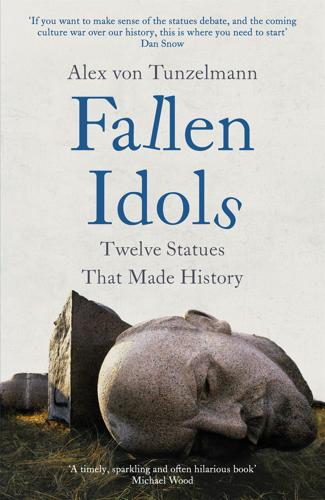
Fallen Idols: Twelve Statues That Made History
by
Alex von Tunzelmann
Published 7 Jul 2021
The tale of Colston and his statue evolved as the British Empire itself evolved over centuries. It is the story of a community’s long and bitter fight over civic identity and who gets to control it. As 2020 began, a novel coronavirus spread across the world. On 11 March, the World Health Organization declared it a pandemic. In early April, in Minneapolis, Minnesota, George Perry Floyd Jr – African American, forty-six years old, a father of three – came down with the symptoms of COVID-19, the disease caused by the coronavirus. He was ill for several weeks, and was laid off from his job as a restaurant doorman.1 On 25 May 2020, just before 8 p.m., Floyd walked into a grocery store and bought a pack of cigarettes with a $20 bill.
…
Imposing historical accuracy upon it is like trying to fact-check Lord of the Rings. Though the mayor’s office stated that further work would be done on the phrasing of the second plaque, the whole concept had run aground.28 Colston’s statue stayed up without a new plaque. Fourteen months later, in May 2020, Britain was in lockdown to slow the spread of coronavirus when the story of George Floyd’s death broke. Britain has a different history and culture surrounding race from that of the United States, but they are linked – most clearly, in historical terms, by empire and slavery. The protests that began in the United States were taken up by British protesters, partly as an act of solidarity with black Americans, and partly to protest against racism in Britain itself.
…
In 2011, artist Jesse Hemmons felt that the statue of fictional boxer Rocky Balboa outside the Philadelphia Museum of Art was too touristy, so she knitted him a pink sweater emblazoned with the words: ‘Go see the art’. The same year, a graffiti artist transformed a bas-relief of soldiers on the Soviet Army memorial in Sofia, Bulgaria, into painted figures of Superman, Father Christmas and Ronald McDonald. Hundreds of statues around the world were adorned with face masks in 2020 and 2021, during the coronavirus pandemic, while a projection on Rio de Janeiro’s enormous Christ the Redeemer statue transformed it into a doctor with a stethoscope. A fallen statue is a powerful symbol, and can be kept that way. The French conceptual artist Daniel Buren once asked whether ‘a statue lying flat – for example, one that is knocked down during a revolution – automatically becomes a sculpture’.2 After the 1966 coup that overthrew Ghana’s first prime minister, Kwame Nkrumah, his image and works were banned, and his statue in Accra was beheaded.

Scary Smart: The Future of Artificial Intelligence and How You Can Save Our World
by
Mo Gawdat
Published 29 Sep 2021
Nothing’, Wired [online]. Available at: www.wired.com/2007/09/dayintech-0926-2/ In Control 1. Shih, Gerry, Rauhala, Emily and Sun, Lena H (2020). ‘Early missteps and state secrecy in China probably allowed the coronavirus to spread farther and faster’, The Washington Post [online]. Available at: www.washingtonpost.com/world/2020/02/01/early-missteps-state-secrecy-china-likely-allowed-coronavirus-spread-farther-faster Raising Our Future 1. ‘Position Statement on Pit Bulls’, American Society for the Prevention of Cruelty to Animals [online]. Available at: www.aspca.org/about-us/aspca-policy-and-position-statements/position-statement-pit-bulls 2.
…
We hide the facts and react late The story of the pandemic is well known, of course, but it’s worth revisiting here because there are many potential parallels between the way we reacted to the virus and the way we are reacting to the potential threat of AI. From patient zero, around mid-December 2019 in Wuhan, it was clear that we were up against a serious virus.1 The symptoms looked like viral pneumonia, but the test samples contained a new coronavirus with an 87 per cent similarity to a threat we faced a few years earlier – SARS. By the end of December this was clearly communicated to Wuhan health officials. By then, within a matter of two weeks, it was believed that seven others had contracted the virus. That same evening, Wuhan’s public health authorities took action.
…
That’s when the direction of travel started to change. On 1 January 2020, the Wuhan Public Security Bureau detained eight doctors for posting and spreading ‘rumours’ about Wuhan hospitals receiving SARS-like cases. By 9 January, China announced it had isolated the genome sequence of the new form of coronavirus, confirming the rumours that it had previously denied. By then it was claimed there were 59 confirmed cases. Later reports, however, showed that by 4 January, cases in Wuhan alone had reached 425. That’s more than a one hundred-fold increase on what had been publicly announced just a couple of weeks before – the classic pattern of a viral outbreak.
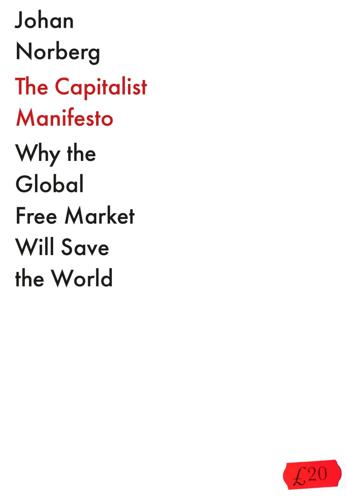
The Capitalist Manifesto
by
Johan Norberg
Published 14 Jun 2023
To counteract all this, we are told that big government must now return, to regain control, redistribute resources and, with enlightened industrial policy, steer resources to particular national industries and green technology. This is what the debate looked like even before the pandemic. When the new coronavirus ravaged the planet, suspicion of the outside world and free trade exploded. Governments began to close their borders and demand that supply chains be repatriated. ‘I don’t want to talk about a victory lap,’ Trump’s rather enthusiastic business secretary said about the ravages of the virus, but ‘I think it will help to accelerate the return of jobs to North America.’
…
On top of that, he can send away the family’s faeces to a very safe distance – just by pressing a flush button! Bill Gates seems to have his teeth left even though he is sixty-seven years old, can take a pill to get rid of headaches and can even get a new hip joint or liver if he needs it. When a previously unknown coronavirus hits the world, he can get a vaccine against it within a year. All three of his children are alive, even though they were born many decades ago and seem to expect to live to be in their eighties. Bill Gates has plenty of comfortable clothes, and after he’s worn them he can make them clean again by stuffing them into a big box.
…
Maria Manner & Paavo Teittinen, ‘HS: n haltuun saamat Huoltovarmuuskeskuksen luvut paljastavat, miten vähän Suomen valtiolla oli kasvosuojaimia koronakriisin iskiessä päälle’, Helsingin Sanomat, 10 April 2020. 29. Johan Norberg, ‘Covid-19 and the danger of self-sufficiency: How Europe’s pandemic resilience is open economy’, ECIPE Policy Brief, no.2, 2021. 30. ‘EU should “not aim for self-sufficiency” after coronavirus, trade chief says’, Financial Times, 23 April 2020. Andrew Edgecliffe-Johnson, ‘Manufacturers warn US must do more to maintain fragile PPE production’, Financial Times, 13 April 2021. 31. Henry David Thoreau, On Civil Disobedience and Other Essays, Dover Publications, 2021, p.2. 3. The silence of the factory whistle 1.

System Error: Where Big Tech Went Wrong and How We Can Reboot
by
Rob Reich
,
Mehran Sahami
and
Jeremy M. Weinstein
Published 6 Sep 2021
Still, there are benefits of surveillance technologies we might consider beyond crime prevention. With the outbreak of the novel coronavirus early in 2020, a chorus of technologists called for rapid innovations in digital disease surveillance. Why stick to an outmoded model of manual contact tracing, with health care workers monitoring the movement of infected individuals, when digital technologies could enable large-scale tracking via GPS devices, cell phone towers, Bluetooth connections, internet searches, and commercial transactions? The tech optimists pointed to South Korea’s success against the coronavirus, where widespread testing combined with a data-driven approach to tracking movement led to rapid declines in the COVID-19 infection rate.
…
“count me as skeptical”: Anand Giridharadas, “Deleting Facebook Won’t Fix the Problem,” New York Times, January 10, 2019, https://www.nytimes.com/2019/01/10/opinion/delete-facebook.html. The platform brings together: “Where Do We Go as a Society?,” vTaiwan, March 2016, https://info.vtaiwan.tw/. More recently, Tang helped lead: Johns Hopkins, “Mortality Analyses,” Johns Hopkins Coronavirus Resource Center, December 3, 2020, https://coronavirus.jhu.edu/data/mortality. “Americans share every movement”: Ezekiel J. Emanuel, Cathy Zhang, and Aaron Glickman, “Learning from Taiwan About Responding to Covid-19—and Using Electronic Health Records,” STAT, June 30, 2020, https://www.statnews.com/2020/06/30/taiwan-lessons-fighting-covid-19-using-electronic-health-records/.
…
Her face had been recorded while she was behaving lawfully in public, and the records had been entered into a government database. It’s easy to see that with surveillance comes a potential loss of essential liberties in a democratic society, such as freedom to protest and freedom of expression. It’s no accident that the protestors in Hong Kong in 2019 took to wearing face masks. It wasn’t to protect themselves from the coronavirus, which had yet to emerge. It was to conceal their faces from the omnipresent surveillance cameras that could allow China to record their activity and register them as enemies of the state. At its heart, privacy is about the importance of control over oneself and information about oneself. Privacy protects the experience of intimacy, an essential part of any life, by shielding aspects of our relationship with loved ones that are not the business of others to know.
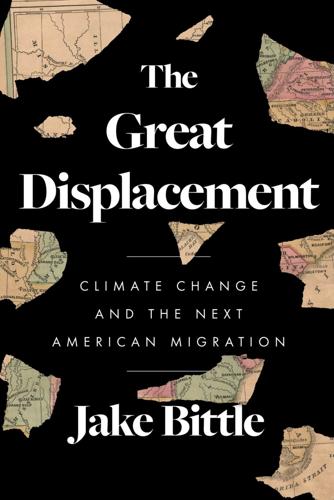
The Great Displacement: Climate Change and the Next American Migration
by
Jake Bittle
Published 21 Feb 2023
Columba, and by the time they returned to the Keys it was clear that housing would be the defining challenge of the next few years. “Everybody’s house was destroyed,” she told me. “That’s what people would need the most.” We were speaking in the church’s open-air pavilion, where Maconaughey had been delivering outdoor sermons even before the coronavirus pandemic. Irma had weakened the timbers that supported the roof of the chapel, forcing the church to move outside. In the first week Maconaughey was back, she helped transform St. Columba’s campus into a massive shelter for boaters who had lost their homes in the storm, cramming two dozen air mattresses into a loft that had previously been used for an after-school program.
…
This time firefighters controlled the blaze before it reached the city itself, but the fire still took out close to two hundred homes in the suburbs of Healdsburg and Geyserville, putting additional pressure on the housing market. Around the same time, a large homeless encampment emerged on a bike trail in central Santa Rosa, becoming a sanctuary where people who had been unhoused for years slept alongside those who had lost their homes during the scramble that followed the fires. When the coronavirus pandemic began the following spring, and white-collar remote workers beat a retreat from San Francisco, rents in the area surged even higher, pushing more low-income families out of the housing market. A few months later, yet another fire gnawed away at the region’s already depleted housing stock: the Glass Fire shot the gap between the burn scars of two previous blazes, destroying more than six hundred homes in a section of the hills that had been spared by the Tubbs event.
…
The couple no longer had their mortgage payment to worry about, but they had emptied their savings on the flood recovery, so they couldn’t even afford to get a lease on a new apartment, let alone a house that would accommodate the twins and the dogs. They stuck it out at Becca’s mother’s house for another six months, and then another year, and then another two years, praying that Sergio’s franchise would start to gain some momentum. The coronavirus pandemic pulled the rug out from under them once more as Sergio’s clients vanished and his usual sales route turned into a ghost town. Becca picked up a little money from an independent yoga practice, but it wasn’t enough to make up the difference. Four years after the storm, Becca and Sergio were no closer to finding a permanent home.
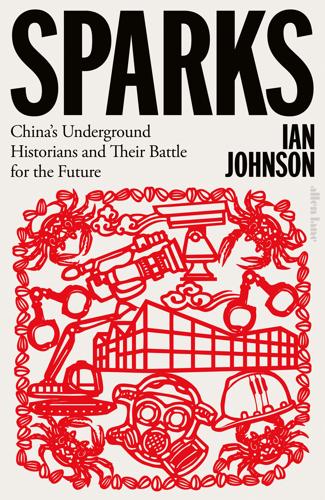
Sparks: China's Underground Historians and Their Battle for the Future
by
Ian Johnson
Published 26 Sep 2023
The exact cause is unclear—it could have been humans consuming wild animals, which were sold in dirty and poorly regulated markets. Or it might have been when efforts to research a coronavirus went astray and leaked from a lab. In any case, the crisis was made worse by China’s political system. If it once encouraged sedentary lifestyles near dangerous waterways, it now ignored best practices in public health. Nearly two decades earlier, similar conditions had caused a coronavirus to spread from animals to humans. That disease, Severe Acute Respiratory Syndrome, or SARS, had highlighted a series of solvable problems, such as limiting the wildlife trade, improving hygiene at markets, and improving public health structures.
…
“Unprecedented in public health history”: Gauden Galea: Gabriel Crossley and Alison Williams, “Wuhan Lockdown ‘Unprecedented,’ Shows Commitment to Contain Virus: WHO Representative in China,” Reuters, 23 January 2020, https://web.archive.org/web/20200124203401/https://www.reuters.com/article/us-china-health-who-idUSKBN1ZM1G9. 4. “Quarantined in the emergency department”: Details of Li Wenliang’s online postings, “As New Coronavirus Spread, China’s Old Habits Delayed Fight” by Chris Buckley and Steven Lee Myers, updated 7 February 2020, https://www.nytimes.com/2020/02/01/world/asia/china-coronavirus.html. 5. “Preventable and treatable”: The statement can still be read on the internet archive at “Wuhanshi weijianwei guanyu dangqian woshi feiyan yiqing de qingkuang tongbao” 武汉市卫健委关于当前我市肺炎疫情的情况通报 [Briefing by the Wuhan Municipal Health Commission on the current pneumonia epidemic in the city], Wuhan Municipal Health Commission, 31 December 2019, https://web.archive.org/web/20200430030406/http://wjw.wuhan.gov.cn/front/web/showDetail/2019123108989. 6.
…
Just as in earlier times, China’s contemporary leaders try to keep history on their side by telling myth-like stories: a popular uprising brought the Communist Party to power; famines were caused by natural disasters; minority areas like Xinjiang and Tibet have always been part of the country; Hong Kong’s struggle for democracy is the work of foreign forces; the state dealt responsibly in handling the initial outbreak of the Covid-19 coronavirus. The not-so-subtle subtext is that only the Communist Party can save China from chaos and disintegration. Any alternative version of history is taboo. Every country has its foundational myths, but in China the lack of independent institutions—media, universities, or political parties—makes it difficult to challenge the official version of reality.
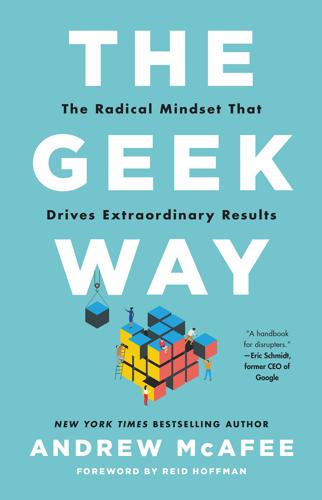
The Geek Way: The Radical Mindset That Drives Extraordinary Results
by
Andrew McAfee
Published 14 Nov 2023
Department of Justice, accessed March 1, 2023, www.justice.gov/sites/default/files/atr/legacy/2006/03/03/20.pdf. 37 almost $620 billion: Ashleigh Macro, “Apple Beats Microsoft as Most Valuable Public Company in History,” Macworld, August 21, 2012, www.macworld.com/article/669851/apple-beats-microsoft-as-most-valuable-public-company-in-history.html. 38 spent well over $80 billion: Lionel Sujay Vailshery, “Microsoft’s Expenditure on Research and Development from 2002 to 2022,” Statista, July 28, 2022, www.statista.com/statistics/267806/expenditure-on-research-and-development-by-the-microsoft-corporation/. 39 2012 Vanity Fair article: Kurt Eichenwald, “Microsoft’s Lost Decade,” Vanity Fair, July 24, 2012, www.vanityfair.com/news/business/2012/08/microsoft-lost-mojo-steve-ballmer. 40 “The developer concluded”: Eichenwald, “Microsoft’s Lost Decade.” 41 “People realized”: Eichenwald, “Microsoft’s Lost Decade.” 42 “Marc Turkel”: Eichenwald, “Microsoft’s Lost Decade.” 43 In 2011 Microsoft made its bad situation: Stephen Miller, “‘Stack Ranking’ Ends at Microsoft, Generating Heated Debate,” SHRM, November 20, 2013, www.shrm.org/resourcesandtools/hr-topics/compensation/pages/stack-ranking-microsoft.aspx. 44 “every current and former”: Eichenwald, “Microsoft’s Lost Decade.” 45 Microsoft engineer Brian Cody: Eichenwald, “Microsoft’s Lost Decade.” 46 “People responsible for features”: Eichenwald, “Microsoft’s Lost Decade.” 47 “people planned their days”: Eichenwald, “Microsoft’s Lost Decade.” 48 “Whenever I had a question”: Eichenwald, “Microsoft’s Lost Decade.” 49 “I wanted to build a team”: Eichenwald, “Microsoft’s Lost Decade.” 50 full-blown stampedes: Sky News Australia, “Stunning Toilet Paper Feeding Frenzy Caught on Camera,” YouTube video, March 10, 2020, https://youtu.be/df6K9qMr67w. 51 Amazon and other sites clamped down on it: Mary Jo Daley and Tom Killion, “Amazon Is Playing Whack-a-Mole with Coronavirus Price Gouging, and It’s Harming Pennsylvanians,” Philadelphia Inquirer, April 13, 2020, www.inquirer.com/opinion/commentary/coronavirus-covid-price-gouging-amazon-online-retail-toilet-paper-20200413.html. 52 Walmart’s CEO went on the Today show: Sharon Terlep, “Americans Have Too Much Toilet Paper. Finally, Sales Slow,” Wall Street Journal, April 13, 2021, www.wsj.com/articles/americans-have-too-much-toilet-paper-it-is-catching-up-to-companies-11618306200. 53 “pockets of lower than normal availability”: Lisa Baertlein and Melissa Fares, “Panic Buying of Toilet Paper Hits U.S.
…
Author Kathryn VanArendonk rendered a verdict that would dismay anyone trying to sell subscriptions based on a promise of must-see entertainment: “But its badness doesn’t explain why everything I watched was also incomprehensibly unmemorable.” Quibi fell out of the top 50 list of free iPhone app downloads a week after its launch, and was sitting at number 125 on May 11. In a New York Times interview published that day Katzenberg said, “I attribute everything that has gone wrong to coronavirus. Everything.” Others weren’t so sure. They pointed out that smartphone use had soared during the pandemic, as had the popularity of TikTok, YouTube, and other apps that featured short videos. TikTok, for example, saw its monthly active users climb from 40 million in late 2019 to more than 100 million by August of 2020.
…
The Streaming Platform Raised $1.75 Billion and Secured a Roster of A-List Talent, but It Can’t Get Audiences to Notice,” Vulture, July 6, 2020, www.vulture.com/2020/07/is-anyone-watching-quibi.html. 17 Quibi, which Katzenberg unveiled: “Quibi,” Wikipedia, last modified January 22, 2023, https://en.wikipedia.org/wiki/Quibi. 18 Hollywood A-listers: Brian Heater, “The Short, Strange Life of Quibi,” TechCrunch, October 23, 2020, https://techcrunch.com/2020/10/23/the-short-strange-life-of-quibi/. 19 how many times the app was downloaded: “Quibi,” Wikipedia. 20 number 3 in the Apple app store: Sarah Perez, “Quibi Gains 300k Launch Day Downloads, Hits No. 3 on App Store,” TechCrunch, April 7, 2020, https://techcrunch.com/2020/04/07/quibi-gains-300k-launch-day-downloads-hits-no-3-on-app-store/. 21 1.7 million downloads in the first week: “Quibi Reaches 1.7m Downloads in the First Week,” BBC News, April 13, 2020, www.bbc.com/news/technology-52275692. 22 “Yep, Quibi Is Bad”: Kathryn VanArendonk, “Yep, Quibi Is Bad,” Vulture, April 24, 2020, www.vulture.com/2020/04/the-bites-are-quick-and-bad.html. 23 “I attribute everything”: Nicole Sperling, “Jeffrey Katzenberg Blames Pandemic for Quibi’s Rough Start,” New York Times, May 11, 2020. www.nytimes.com/2020/05/11/business/media/jeffrey-katzenberg-quibi-coronavirus.html. 24 TikTok, for example: Adario Strange, “Netflix’s New Short Video Strategy Aims to Succeed Where Quibi Failed,” Quartz, November 9, 2021, https://qz.com/2086948/netflixs-new-short-video-strategy-could-prove-quibi-was-right. 25 puzzling shortcomings: Wallace, “Is Anyone Watching Quibi?” 26 Whitman took a 10 percent pay cut: Todd Spangler, “Quibi Says Senior Execs Taking 10% Pay Cut, Denies It’s Making Layoffs,” Variety, June 2, 2020, https://variety.com/2020/digital/news/quibi-pay-cuts-layoffs-katzenberg-whitman-1234624653/. 27 company’s target of 7.4 million: Allie Gemmill, “How Is Quibi Doing?

The Rise and Fall of the Neoliberal Order: America and the World in the Free Market Era
by
Gary Gerstle
Published 14 Oct 2022
Bernie Sanders, “It’s Time to Complete the Revolution We Started,” The Guardian, February 25, 2019, https://www.theguardian.com/commentisfree/2019/feb/25/its-time-to-complete-the-revolution-we-started; Bernie Sanders, “The Foundations of American Society Are Failing Us,” New York Times, April 19, 2020, https://www.nytimes.com/2020/04/19/opinion/coronavirus-inequality-bernie-sanders.html, accessed September 24, 2021. 28.Emily Cochrane and Sheryl Ann Stolberg, “$2 Trillion Coronavirus Stimulus Bill Is Signed into Law,” New York Times, March 27, 2020, https://www.nytimes.com/2020/03/27/us/politics/coronavirus-house-voting.html, accessed August 30, 2021. 29.Martin Crutsinger, “A New $2.3 Trillion Fed Plan to Aid Localities and Companies,” AP News, April 9, 2020, https://apnews.com/article/municipal-bonds-jerome-powell-financial-markets-virus-outbreak-business-8508af5848939f715622a71a44d3af20, accessed December 20, 2021. 30.Rachel Cohrs, “The Trump Administration Quietly Spent Billions in Hospital Funds on Operation Warp Speed,” Stat News, March 2, 2021, https://www.statnews.com/2021/03/02/trump-administration-quietly-spent-billions-in-hospital-funds-on-operation-warp-speed/, accessed August 30, 2021. 31.Gary Gerstle, “The New Federalism,” The Atlantic, May 6, 2020, https://www.theatlantic.com/ideas/archive/2020/05/new-federalism/611077/, accessed September 27, 2021. 32.As a young husband and father, Biden lost his wife and daughter in a car crash.
…
He feared offending the large numbers in GOP ranks who were opposed to taking a new vaccine.30 Trump did not take full advantage of his powers during the pandemic. The Defense Production Act of 1950 gave him the authority to direct any sector of the private economy to shift production to materials required for national security. To fight the coronavirus, he could have ordered manufacturing companies to produce ventilators, masks, and other personal protective equipment (PPE) that hospital staffs so urgently needed. He could have commandeered private transportation networks to rush these materials to the cities, towns, and rural areas where they were needed.
…
Rather than empower the CDC to do its work, Trump seemed to prefer promoting quack cures that he had learned about on social media or from friends or followers. Trump actually seemed to think he could bluff his way past the virus, as he had with so many human adversaries in the past. Half a million Americans died on Trump’s callous watch. The manifest incompetence of Trump’s administration in the face of the coronavirus damaged him politically, especially among suburban middle-class Republican and independent voters who in 2016 had given him their votes. His loss of voters in each of these groups probably cost Trump the 2020 election. A New Political Order? In 2019 and the first quarter of 2020, few people thought much of Joe Biden, the former senator and vice-president.

There Is No Place for Us: Working and Homeless in America
by
Brian Goldstone
Published 25 Mar 2025
Students will be expected to complete online learning assignments and/or work packets as assigned by their classroom teachers. Kara was leaving to pick up her kids when the announcement came in. Fulton County schools, including the one Grace and Nathaniel attended, had in fact already been closed for the past two days, after a district employee at Bear Creek Middle and Woodland Middle Schools tested positive for the coronavirus—the sixth confirmed case in Georgia. Luckily the daycare that Joshua and Jermaine attended, which in normal times functioned as an after-school program for her older kids, had agreed to keep Grace and Nathaniel until their school reopened. But even the slightest deviation from her family’s hard-won routine tended to rattle Kara.
…
What in the world, she wondered, did a single infected employee in Fairburn have to do with an elementary school located forty minutes away? Why couldn’t they simply “clean and disinfect every frequently-touched hard surface” (as the email put it) at Bear Creek and Woodland while letting the other schools stay open? Since late February, when anxieties about the novel coronavirus took root, Kara had only faintly registered the risk it posed. Like Super Bowls and mass shootings and impeachment trials, the increasing likelihood of a pandemic hovered at the periphery of her attention: a vaguely ominous development with seemingly little direct relevance to her own life and circumstances.
…
Seven weeks later, as the country was locking down, Celeste awoke at 4:45 a.m. and opened the hot-pink composition book she had been using as a journal. “Yesterday,” she wrote, “was definitely a hard day.” I went to clock in at KFC and my fingerprint wasn’t recognized. I went to get a manager only to be informed that due to the coronavirus they were cutting back staff to a minimum. I felt devastated knowing what might happen without this money. They didn’t even have the decency to call me before I got there. God, give me the strength to get through this test. I have a little bit of savings that will carry me for maybe a month and I know you say don’t worry but I’m human and the nature of my flesh is to do so.
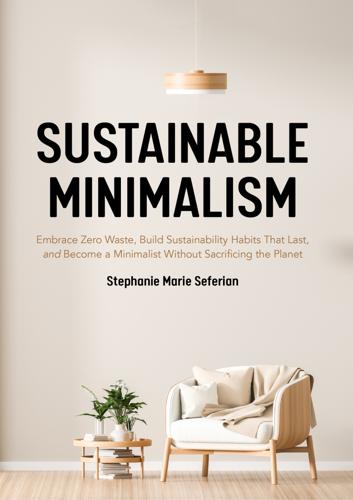
Sustainable Minimalism: Embrace Zero Waste, Build Sustainability Habits That Last, and Become a Minimalist Without Sacrificing the Planet (Green Housecleaning, Zero Waste Living)
by
Stephanie Marie Seferian
Published 19 Jan 2021
By March of 2020, it swiftly and silently crippled most nations, both developed and developing. As economies around the world sputtered to a halt, many Americans found themselves facing uncertain futures. Shoppers panicked, abandoning decorum as they cleared supermarket shelves, hoarded supplies, and left little for others. The terror ushered in by the novel coronavirus pandemic stemmed in large part from the realization that most Americans rely heavily on corporations to provide survival essentials. If grocery stores, gas stations, and other modern conveniences shutter, you’re left relying solely on your own ingenuity to survive. It may be sobering to ruminate over how long you can reasonably keep your family fed and warm after the last of your food, water, and oil runs out.
…
Qasim and Walter Chiang, Sanitary Landfill Leachate: Generation, Control and Treatment (Florida: CRC Press, 1994) 245. 24 Michael Balter, “The Origins of Tidiness,” Science Magazine, December 18, 2009, https://www.sciencemag.org/news/2009/12/origins-tidiness. 25 Alice Boyes, “6 Benefits of an Uncluttered Space,” Psychology Today, February12, 2018, https://www.psychologytoday.com/us/blog/in-practice/201802/6-benefits-uncluttered-space. 26 Sarah Berger, “Here’s How Much Time Homeowners Spend on Housework Compared to Renters,” CNBC, September 21, 2018, https://www.cnbc.com/2018/09/21/apartment-list-time-owners-spend-on-housework-compared-to-renters.html. 27 Mark Bittman, “A No-Frills Kitchen Still Cooks,” The New York Times, May 9, 2007, https://www.nytimes.com/2007/05/09/dining/09mini.html. 28 J. Kenji López-Alt, “The Food Expiration Dates You Should Actually Follow,”The New York Times, April 15, 2020, https://www.nytimes.com/article/expiration-dates-coronavirus.html. 29 Jason Marsh, “How to Help Kids Learn to Love Giving,” Greater GoodMagazine, December 14, 2016, https://www.greatergood.berkeley.edu/article/item/how_to_help_kids_learn_to_love_giving. 30 Nathaniel Meyersohn, “How the Rise of Supermarkets Left out BlackAmerica,” CNN Business, June 16, 2020, https://www.cnn.com/2020/06/16/business/grocery-stores-access-race-inequality/index.html. 31 “Are Hybrid Cars Worth It?”
…
National Geographic, June 2018, https://www.nationalgeographic.com/magazine/2018/06/plastic-planet-waste-pollution-trash-crisis/. 135 Lee Drutman, “How Corporate Lobbyists Conquered American Democracy,” The Atlantic, April 20, 2015, https://www.theatlantic.com/business/archive/2015/04/how-corporate-lobbyists-conquered-american-democracy/390822/. 136 Richard Denison, “TSCA Reform Legislation: Enhancing EPA TestingAuthority,” Environmental Defense Fund Health Blog, April 15, 2015, http://blogs.edf.org/health/2015/04/15/tsca-reform-legislation-enhancing-epa-testing-authority/. 137 Isabella Isaacs-Thomas, “Why Your Cosmetics Don’t Have to be Tested forSafety,” PBS, December 16, 2019, https://www.pbs.org/newshour/health/why-your-cosmetics-dont-have-to-be-tested-for-safety. 138 “Introduction to Indoor Air Quality,” United States Environmental ProtectionAgency, accessed 2020, https://www.epa.gov/indoor-air-quality-iaq/introduction-indoor-air-quality. 139 Tara Parker-Pope, “Have I Been Cleaning All Wrong?” The New York Times,May 6, 2020, https://www.nytimes.com/2020/05/06/well/live/coronavirus-cleaning-cleaners-disinfectants-home.html. 140 Lela Nargi and Danielle Braff, “What Kills Bacteria—And What Doesn’t,”Reader’s Digest, September 12, 2020, https://www.rd.com/article/what-kills-bacteria/. 141 Diamond Bridges, “Why You Should Never Use Oven Cleaner and What YouShould Use Instead,” MSN, March 23, 2020, http://www.msn.com/05/en-us/BB11ByAp?
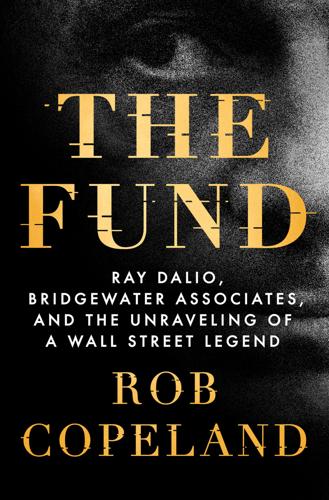
The Fund: Ray Dalio, Bridgewater Associates, and the Unraveling of a Wall Street Legend
by
Rob Copeland
Published 7 Nov 2023
Two weeks later, he flew to Abu Dhabi, where Bridgewater managed billions of dollars for state-affiliated entities, and said the impact of the coronavirus seemed exaggerated. “It most likely will be something that in another year or two will be well beyond what everyone will be talking about,” he said at a conference there. For a man who’d made his name on a seemingly endless stretch of doomsday calls, this was a particularly unfortunate moment to turn sanguine. The coronavirus spread, and markets reacted poorly. By mid-March, 2020, Bridgewater was in a flat-out free fall. Pure Alpha was down between 14 and 21 percent in less than three months, according to estimates the firm provided to worried investors.
…
the piece said: Rachael Levy and Rob Copeland, “Ray Dalio Is Still Driving His $160 Billion Hedge-Fund Machine,” Wall Street Journal, January 31, 2020. “Fake and Distorted News”: Ray Dalio, “The Wall Street Journal’s Fake and Distorted News,” LinkedIn, February 2, 2020. on LinkedIn in January: Ray Dalio, “Our Early Thinking on the Coronavirus and Pandemics,” LinkedIn, January 30, 2020. “in this volatile environment”: Bradley Saacks, “Read the 2-page note billionaire Ray Dalio just sent investors laying out his coronavirus game plan,” Business Insider, March 18, 2020. were moot: Brian Armstrong, Twitter, June 10, 2022. “Right on, Elon!”: Ray Dalio, Twitter, August 27, 2020. “want to discredit them”: Ray Dalio, Twitter, September 23, 2020.
…
In the letter, Dalio took close to no responsibility for the fund’s losses. “What do I think about this performance? While it’s not what I would want, it’s consistent with what I would have expected under the circumstances.” He said his funds kept betting on rising markets, despite the risks of coronavirus, because Bridgewater had “normal risk controls.” He wrote, “In this case, the risk control process worked as designed.” The explanation apparently felt hollow to many investors because Bridgewater’s well-heeled clientele—having just witnessed the world’s largest hedge fund strike out on the biggest moment in markets since the 2008 financial crisis—began pulling their money anew.

Under a White Sky: The Nature of the Future
by
Elizabeth Kolbert
Published 15 Mar 2021
“Such a moral stance”: Lackner and Jospe, “Climate Change Is a Waste Management Problem.” global CO2 emissions were down: Chris Mooney, Brady Dennis, and John Muyskens, “Global Emissions Plunged an Unprecedented 17 Percent during the Coronavirus Pandemic,” The Washington Post (May 19, 2020), washingtonpost.com/climate-environment/2020/05/19/greenhouse-emissions-coronavirus/?arc404=true. How long, exactly, is a complicated question: Individual carbon molecules are constantly cycling between atmosphere and oceans and between both of these and the world’s vegetation. However, CO2 levels in the atmosphere are governed by much slower processes.
…
Yes, people have fundamentally altered the atmosphere. And, yes, this is likely to lead to all sorts of dreadful consequences. But people are ingenious. They come up with crazy, big ideas, and sometimes these actually work. * * * — During the first few months of 2020, a vast, unsupervised experiment took place. As the coronavirus raged, billions of people were ordered to stay home. At the peak of the lockdown, in April, global CO2 emissions were down an estimated seventeen percent compared with the comparable period the previous year. This drop—the largest recorded ever—was immediately followed by a new high. In May 2020, carbon dioxide levels in the atmosphere set a record of 417.1 parts per million.
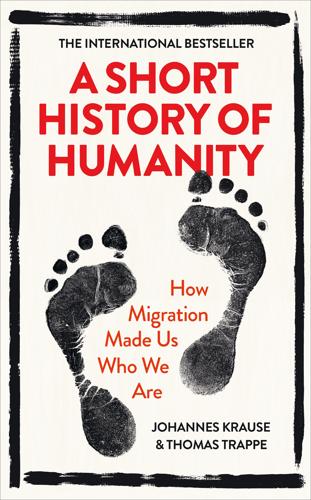
A Short History of Humanity: How Migration Made Us Who We Are
by
Johannes Krause
and
Thomas Trappe
Published 8 Apr 2021
A little more than a year later, as the entire planet reels from the ruthless SARS-CoV-2 virus, that particular crisis has fallen somewhat out of the spotlight despite the countless precarious journeys made by migrants every day. And although there’s no real comparison between the far more lethal plague and the novel coronavirus, there is one parallel: invisible pathogens have always been capable of stopping a society in its tracks from one day to the next, jolting us out of our sense of unassailability into a paralyzing helplessness. What the consequences of the current pandemic will be for humankind, no one is currently in a position to say.
…
At the dawn of human history, pathogens needed other hosts in order to multiply, and that usually meant nonhuman animals. Bats, for instance, lived, as they do now, in close quarters in colonies of tens of thousands, dripping with all kinds of fluids as they cling to their perches, and they are still the most common source of new pathogens, especially viruses, as was also speculated for the coronavirus that caused the 2020 pandemic. The process of a pathogen leaping from animal to human—if human food is infected with infected animal feces or if infected flesh is eaten—is called zoonotic transmission. Most pathogens found in modern-day humans are probably descended from a zoonotic origin. Today, human beings, like bats, can be relied upon to spread viruses and bacteria widely throughout our now-gigantic, densely packed population.
…
Africa: changing landscape of, 45–46, 60 genetic diversity in, 222–23 languages in, 38, 135 migration from, 41–43, 48, 197 “Out of Africa” theory, 35–37, 222 population of, 222 TB in, 196–97 agriculture: and community, 217 development of, 71 in Europe, 79, 89, 115, 219 and migration, 131, 133, 213 in Neolithic period, 71–72 see also farmers Akkadian Empire, 149 Alaska: horses in, 110 theory of migration through, 99, 100, 196 Albanian language, 121, 135 Altai Mountains, Siberia, 16, 38, 107, 133, 134, 169 amoeba, genes in, 13 amylase gene, 68 Anatolia: and Balkan DNA, 52–53, 77–79 farmers in, x, 71–72, 84–85, 86, 101, 133 Göbekli Tepe excavation, 69–70, 69 Hittites in, 124, 141, 152 hunter-gatherers in, 52, 71–73, 84–85 and languages, 121, 132, 134 migrants to Europe from, 53, 73, 107, 114, 128, 130, 219 Neolithic genes from, 105, 126 vegetarian diet in, 74–75 ancestors, common, 19–20 ancestry, 224–25, 245–46 fairy tales of, 19, 20 Anglo-Saxons, 21 animals: bovine tuberculosis, 195, 196, 197 butchered for meat, 93, 94 cattle, 114–15 chimpanzees, 12, 35–37, 39, 45–46 diseases passed from humans to, 196 diseases passed to humans from, 93–94, 171, 206 domesticated, 67–68, 70–71, 84, 93, 206 horses, 107–12 monkeys, 204 seals, 197 Anthropocene period, 62 antibiotics, 164, 185, 205–6 antibodies, 182 archeogenetics: birth of, 4–5 roles of, viii, ix, 10, 21, 22, 155–56, 207, 218 Ardipithecus, 35 Arendt, Hannah, 227 Armenian language, 135 Asia: Denisovans in, 28, 29, 36 leprosy in, 190 migration to, 28, 41–43 and Peking Man, 35, 36 plague from, 184–85 Assyrian Empire, 152 Aurignacian period, 43–45, 48–52, 247, 248 Australia: Denisovans in, 223 language in, 135 skin cancer in, 74, 75 Australopithecus, 35 Azerbaijan, language in, 134 Babylon, city of, 141, 150 bacteria, 23, 163–64 and antibiotics, 164, 185, 205–6 drug-resistant, 205–6 effects on humans, 169 evolving, 169, 205 genetic blueprint of, 13 Baikal region, 101, 169, 198 Balkan region, 52–53, 77–79 Balto-Slavic languages, 121, 135 barley, 70 barrows, 91, 102, 103, 106 Basques, 126–27, 128 bats, 163 Battle Axe culture, 108, 109, 218 Bell Beaker culture, 96–97, 108–9, 114, 118, 135, 140, 142 Black Death, 158–59, 160–63, 166, 167, 174, 177, 180, 182–85 Blätterhöhle cave site, Germany, 82, 84, 87 blue eyes, 75–76 boat building, 92 Böcklin, Arnold, The Plague, 173 Botai culture, 110, 111 bovine tuberculosis, 195, 196, 197 brain, development of, 46–47 Bronze Age, 104, 118, 140–51 consumerism in, 144–46 fresco from, 127 languages in, 133 male dominance in, 112–14 mass production in, 146 migrations in, 21, 155, 214, 217, 218, 219 mining in, 140–42, 144–45 onset of, vii, 136, 140–42, 144 populations in, 151 weapons in, 146–49, 153 buboes, 175 bubonic plague, 159, 165, 166–67, 171, 174, 175, 176, 180, 183, 184–85 Canaan, 152, 153, 154 carbon dating, 10, 244 Cardial Ware culture, 78 CCR5 receptor, 194, 234 cell nuclei, 13 Celtic languages, 120, 135 Celts, mtDNA of, 18–19 ceramics, 78, 90, 108–9, 144 Charlemagne, 19 Charpentier, Emmenuelle, 233 Chauvet Cave, France, cave paintings in, 49 chimpanzees: humans different from, 12, 45–46 human split from, 35–37, 39 skin color of, 77 China: language in, 133 and plague, 184–85 China National GeneBank, 232 civilizations: development of, 217 first, 141 climate change, 58, 60–62 climbing, by apes vs. humans, 45, 46 Clinton, Bill, 6 clones, 183 cocoliztli epidemic, 199–201, 200 Columbus, Christopher, 196, 197, 201, 206, 217 common ancestors, 19–20 Balkan migrants, 53 Homo erectus, 25 matrilineal, 27 Copper Age, 104, 140–41 Corded Ware culture, 96–97, 108, 113, 114, 116, 118, 140, 142 Covid 19 virus (coronavirus), viii–ix, x–xi, 23, 41, 205 Crick, Francis, 7 CRISPR/Cas9 system, 233–35, 248 cultural suppression, 213 dead, disposal of: burial in cemeteries, 142–44, 167, 179, 200 burial in monastery, 203 burning, 91, 169 and grave goods, 144, 244 in mass graves, 88 in megalith tombs, 91, 102 Defense Threat Reduction Agency, Algorithm Challenge, 167–68 de’Mussis, Gabriele, 178 Denisova Cave, Siberian Altai Mountains, 16, 24, 25 Denisova hominin, finger bone of, 6, 7, 11, 16, 24–27, 29–30 Denisovans: discovery of, 11, 30 evolution from Homo erectus, 35–36 inbreeding of, 246 Neanderthal split from, 28, 30 as separate species, 40 Derevyanko, Anatoly, 24, 28 “designer babies,” 235 diet: changes in, 68 of hunter-gatherers, 65–66, 85, 215–16 inadequate mineralization in, 86 meat consumption, 71, 84, 85, 93, 94 milk in, 94, 115–17 and skin pigmentation, 74–75 Stone Age, 64–65, 66, 216 and stress, 85–88 and teeth, 64–65, 142–43 vegetarian, 74–75, 84, 85 diseases, 160–86, 179 of affluence, 206 airborne infection of, 179 animal-human transmission of, 93–94, 163, 171, 206 and biowarfare, 177 common ancestors of, 196 DNA sequencing of, 168 human-animal transmission of, 196 human-human transmission of, 93, 171, 206–7 and immune system, 180–82 and migration, viii–ix, x, 22–23, 156, 158–59, 171, 175–76, 188–89, 212–15, 217 and pandemics, see pandemics and quarantine, 178–79 and tourism, 184–85, 206 see also specific diseases DNA: age of, 17–18 algorithm of, 168 analysis of, 9, 21, 25, 144, 156 as blueprint of life, 7, 13, 244 contamination of, 9, 15, 16, 18 decoding, 6, 7, 8, 10, 22 extraction from fossils, 9, 10, 24–25, 167 and Human Genome Project, 6, 7, 8 mitochondrial (mtDNA), 17, 27, 28–30, 244–45 mutations of, 11–12, 29 nuclear, 1, 27, 28–30, 244 sequencing of, 7, 8, 15–16, 168, 218 similarity among humans, 21, 225–26 structure of, 7 dogs, 67–68 Dolní Věstonice, Czech Republic, 50 Doudna, Jennifer, 233 Dravidian languages, 132 Duden dictionary, 136 Ebola virus, 23, 162 Egypt: in battle, 150 leprosy in, 190, 192 migration from, 154–55 New Kingdom of, 152 pharaohs of, 141 sea peoples’ attack on, 150, 152–55 emmer (wheat ancestor), 70 England, see Great Britain enteric fever, 199 ethnicity, 220–22, 225–29 Etruscans, 126, 128 Europe: agriculture in, 79, 89, 115, 219 Anatolians in, 53, 73, 77–79, 84–85, 107, 114, 128, 130, 219 Aurignacians in, 49–52 Bell Beaker culture in, 108–9 Bronze Age in, 140–42, 144–46 and climate change, 48–49 genetic foundations of, 20–22, 53, 106–7, 114, 155, 214 hunter-gatherers in, 73, 219 languages in, 127–29, 131, 135–36 life extinguished in, 51–53 Mal’ta boy’s genes in, 100 migration across, 35, 41–43, 73, 106–7 migration to, x, 20, 23, 28, 43, 53, 73, 101–2, 105, 128–29, 156, 213–14, 217, 219–20 Neanderthals in, 29, 35, 36, 38, 48, 155 Neolithic Revolution in, 72, 73–77, 90, 213–14 pathogens from Americas to, 198–201, 202 plague in, 158, 160, 169, 171–80, 182–86, 198 syphilis in, 201–4, 206 typhoid in, 201 evolution: adaptation in, 45–46, 59, 65, 68 description of, 13 and gene editing technology, 233–35 extinction, 48–49 eye pigmentation, 75–76 farmers: in Anatolia, x, 71–72, 84–85, 86, 101, 133 competition for land, 88–89 consumer society of, 145 developing practices of, 71 diets of, 71, 85 DNA of, 107 domesticated animals of, 93, 206 extended families of, 87 good soil needed by, 87–88, 115 hunter-gatherers displaced by, x, 71, 114, 215 mass graves of, 88 in Neolithic age, 145 never-ending work of, 85–87 patriarchal system of, 148 Fertile Crescent: agriculture in, 131, 133, 219 Bronze Age in, 149–51 languages in, 131 livestock raised in, 70–71 finger bone of Denisovan girl, 6, 7, 11, 16, 24–27, 29–30 Finno-Ugric languages, 127 flagella, 181 fleas, 93, 165–66, 170, 174, 175 flu virus, 162, 182, 183, 199, 204 food: competition for, 66 cultivation of crops, 70 fermented, 117 sources of, 143 storage of, 93, 217 see also diet 4.2-kiloyear event, 149, 152 FOXP2 gene, 39, 247 France: Bell Beaker culture in, 108 genetic material in, 107 language of, 135 Franklin, Rosalind, 7 Fuhlrott, Johann Carl, 30 Funnel Beaker culture, 90–91, 92 gene editing, 233–35 genes, 13–15 “intelligence gene,” 229–32 “Jewish gene,” 227–29 teamwork of, 13 genetic engineering, 70, 233–35 “genetic fossils,” 92 genetic research, developments in, 232–35 genetics, 6, 230–31 genetic sequencing, 218 genetic tests, 18, 20, 225, 232 genome: human, 8, 13–15, 225, 233, 243 Neanderthal, 11 nuclear, 19 Germanic languages, 120, 136, 218 Germany: Bell Beaker culture in, 108 Nazis in, 108, 109, 218, 219, 226, 227 refugee crisis in (2015), viii global melting pot, 206–7, 210–11, 226 Göbekli Tepe excavation, Anatolia, 69–70, 69 Golden Horde Empire, 177, 184 Goliath, 152–53 Goths, 21 gradient principle, 220–22 Gravettian period, 49–51, 247–48 Gray, Russell, 130 Great Britain: Bell Beaker culture in, 108, 109, 135 genetic structure in, 106, 107 leprosy in, 191 migration to, 106, 107, 129, 155–56 syphilis in, 204 Greek language, 121, 124–26, 130, 135 Grotte des Pigeons, Morocco, 248 Guatemala, cocoliztli epidemic in, 199–201, 200 Gulf Stream, 59, 89 haplogroups, 113–14 He Jiankui, 234 heredity, misunderstandings about, 18 Hittite Empire, 141, 152, 190 Hittite languages, 121, 124, 130 Hittite plague, 174 HIV, 194, 205, 206, 234 Hohle Fels, Germany, cave art in, 42, 44 Hohlenstein-Stadel Cave, Swabian Alps, carving from, 43, 43 Holocene period, 59, 60 Homo erectus, 25, 28, 35–36 Homo ergaster, 36 Homo sapiens, 36 Hong Kong plague, 172, 184 horses, 107–12 mustangs, 111 plague carried by, 171 Przewalski’s horses, 110–12, 111, 171, 172 resistance to plague, 172 households, structures of, 144 Human Genome Project, 6, 7, 8 humans: adaptation of pathogens to, 163, 206 body height of, 230–31 differences between chimpanzees and, 12, 45–46 diseases passed from animals to, 93–94, 171, 206 immunity of, 40–41, 192–94 and language, 39 split from chimpanzees, 35–37, 39 Hungary, language in, 127 hunter-gatherers: in Anatolia, 52, 71–73, 84–85 diets of, 64–66, 85, 215–16 displaced by farmers, x, 71–73, 114, 215 and evolution, 65 languages of, 128 modern interest in lifestyle of, 215–20 movement of, 64 in Scandinavia, 89–90, 92, 93 hunting strategies, 46 Huson, Daniel, 167–68 hyoid bone, 39 Iberian Peninsula: Aurignacians in, 51–52 Bell Beaker culture in, 108–9 migrants in Europe from, 53 Ice Age: Aurignacians in, 48 Balkans and Anatolians in, 77–79 end of, 59 Last Glacial Maximum in, 51–53 mtDNA decoded from, 17, 18, 248 Neanderthals living in, 38–39 new, 59, 61 and Younger Dryas, 59 “Iceman” or “Ötzi” (human remains), 100 immigrants, see migration immune system, 164, 180–82, 191–94 immunity gene, 40–41 immunization, 164 India: languages of, 132, 135 migration to, 133 steppe genes in, 132 Indo-European languages, 122–24, 126–27 common ancestor of, 132 family tree of, 132, 135–36 and Iranian Neolithic, 133 origins of, 129–31 Indo-Iranian language, 121, 135 Iran: languages of, 132–33 migration from, 133 Iranian Neolithic, 132, 133, 134 Iron Age: beginning of, 151 cultures in, 154 Italy: genetic material in, 107 lactose intolerance in, 117 languages of, 134–35 Jews, and anti-Semitism, 178, 227–28 Justinianic plague, 158–59, 160, 166, 167, 174, 175, 177 Kazakh steppes, 101, 110 Kurdish language, 134 Kurds, genetic components of, 53 kurgans, 103 lactase, 115–16 lactose intolerance, 115–17, 118 Lake Bracciano, Italy, oldest boat in, 92 languages, 38–39, 120–21, 122–36 common roots of, 122, 123, 132 hybrid hypothesis of, 129–31, 132, 134 Linear A and B, 124–26 and migration, 118, 122, 124, 134, 135–36 and power, 134–36 see also specific languages language tree, 130, 132 Latin language, 126, 130, 134, 135 law-free zone, 148 Lech River settlements, 142, 143, 144, 147 leprosy, 188–89, 190–92, 194, 195, 204, 206 lice, as source of disease, 93 Linear A and B languages, 124–26 Linear Pottery culture, 78 lion-man carving, 43, 43 London, Black Death in, 167, 180 Longobards, 21 “Lucy,” 35 Luther, Martin, 136 macrophages, 181 Magdeburg Börde, Germany, 88 Maikop culture, 131 malaria, 193–94 Mal’ta boy, 99–101, 198 “Markina Gora,” 48, 247 massacres, 88 measles, 22 Medînet Hâbu temple, Egypt, 150 Mediterranean area: refugees in, 151 sea peoples in, 152–55 megalith tombs, 91 melanin, 75 melanocortin receptors, 75 Mesolithic period, 65–66 Mexico, cocoliztli epidemic in, 199–201, 200 microbes, 168 Middle Ages, plagues in, vii, 176–80, 185 migration, 32–33, 56–57, 210–11 and agriculture, 131, 133, 213 and cultural change, 109, 140, 215, 219 and cultural suppression, 213 and disease, viii–ix, x, 22–23, 156, 158–59, 169, 171, 175–76, 188–89, 212–15, 217 DNA altered by, 20 economic effects of, x, 217, 226 genetic adaptation in, 14–15, 155–56 and global climate, 58, 60–62 global patterns of, 228 and language, 118 of refugees, 151 migration period, 20, 21 milk, 115–17, 195 mining, 140–42, 144–45 Minoans, 124–26, 125, 127, 128, 141 “mitochondrian Eve,” 27 Mittelelbe-Saale region, Germany, 100, 106 molecular clock, 14, 15, 27, 246 molecular switches, 14 Mongolia, Mal’ta boy in, 99–101 mtDNA (mitochondrial DNA), 17 as matrilineal, 27, 85, 113, 244–45 musical instrument, first, 44 mutations, 10, 11–18 definition of, 12 of language, 130 neutral, 15 numbers of, 14 passed to future generations, 12 of pathogens, 165, 183 persistent, 15 purposes of, 12–13 Mycenaeans, 124, 126, 130, 141, 152, 153, 248 Mycobacterium leprae, 190–91 Napoleon, mtDNA shared by, 19 nationalism, 107–9, 220, 227 Natufian culture, 69 Nature, 26 Nazis (Germany), 108, 109, 218, 219, 226, 227 Neanderthals: decoding DNA of, 11, 155, 246 Denisovan split from, 28, 30 discovery of, 30 fossils of, 9, 28–29 and Homo erectus, 25, 28, 35–36 hyoid bones of, 39 in Ice Age, 38–39 intermingling with, 41 modern descendents of, 36, 40, 222–23 name of, 9 reconstruction of, 17 as separate species, 39–41 small gene pool of, 246 as “type of human,” 40 Near East: climatic shift in, 70 consolidation in, 151–52 in Neolithic period, 71 Nebra sky disk, 142, 147 Neolithic period, 59, 145 age of agriculture in, 71–72 diet in, 216 in Europe, 72, 73–77, 90, 213–14, 219 fortifications in, 88, 89, 147 genetic material from, 105 Iranian Neolithic, 133, 134 Late or Final Neolithic, 104 population numbers in, 93 weapons in, 88–89, 147 Neolithic Revolution, 72, 73–77, 109, 123, 128, 140, 155, 213 neurosyphilis, 202 Newman, Paul, 76 nomads, as cattle herders, 114–17 North American indigenous peoples: disease from migrants, 22–23, 169, 217 sources of genetic material in, 101 syphilis originating from, 23 Northern Hemisphere, migration to, 60–61 North Eurasians, genetic material from, 101 Oase Cave, Romania, 41, 247 Obama, Barack, 224 Oberkassel, Germany, dog in grave, 67 “Ötzi” or “Iceman” (human remains), 100 “Out of Africa” theory, 35–37, 222 Pääbo, Svante, 10–11, 15, 24, 25, 28 Paleo-Sardinian, 126, 128 pandemics, 23, 188–89 future, 168 “third epidemiological transition,” 205–7 unhygienic conditions in, 165 see also specific diseases parallel societies, 82–83 paratyphoid, 199–200, 204 Pasteur, Louis, 172 pathogens: adaptation to humans, 163, 206 evolution of, 23 mutation of, 165, 183 reconstruction of, 166, 167 sequencing of, 161–62 spreading of, 22, 169, 175 patriarchal structures, 138–39, 144, 148 Peking Man, 35, 36 Peru, TB in, 196 Philistines, 152–53, 154 plague, 160–86, 161, 206 ancient bacteria of, 23, 184, 204 bubonic, 158–59, 165, 166–67, 171, 174, 175, 176, 180, 183, 184–85 early pathogens discovered, 168–69, 170, 174 immunity from, 180, 182, 183 Justinianic, 158–59, 160, 166, 167, 174, 175, 177 mutation rate of, 183 oldest known, 105, 166 pneumonic, 166, 171, 185 samples collected from graves, 179 “Second Pandemic” of, 182–83 sequencing genomes of, 183 spread of, 170 Stone Age, vii–viii, 158–59, 160, 169, 170, 172, 174 Yersinia bacteria, 162–63, 172 pneumonic plague, 166, 171, 185 polymerase chain reaction, 8, 243 Pontic steppe, 101, 102, 129, 132 and plague, 160, 192 Yamnaya culture of, 102, 103, 104 population, world, 236 prairie dogs, 185 Procopius of Caesarea, 175 Proto-Indo-European languages, 121, 123, 131, 134, 135 Przewalski’s horses, 110–12, 111, 171, 172 quarantine, 178–79 R1a and R1b haplogroups, 113–14 radiocarbon dating, 10, 244 Ramses III, 150, 152 rats, 165, 174, 175, 176, 184–86 redheads, 75 “reservoir,” use of term, 248 ribosomes, 244 Romance languages, 120, 135 Roman Empire: advance of, 135, 136, 174 collapse of, 21, 166, 175, 176 roots, longing for, 216–17 rulers (kings), 148, 149 running, by apes vs. humans, 45–46 Russia: genetic material in, 107 languages in, 127 plague bacteria in, 23 Salmonella enterica paratyphi C, 199 Salzmünde culture, 91 Samara region, 174 Santorini, eruption of, 126, 127 Sardinia: “genetic fossils” in, 92 thalassemia gene in, 193 Sarrazin, Thilo, 228 SARS-CoV-2, see Covid 19 virus Scandinavia: agriculture in, 90–91, 92 Anatolians in, 92 Battle Axe culture in, 108, 109, 218 Funnel Beaker culture in, 90–91, 92 hunter-gatherers in, 89–90, 92, 93 land not suited to agriculture, 89 language in, 127 tools and equipment in, 90 seals, TB bacterium in, 197 sea peoples, 150, 152–55 sexually transmitted disease: HIV, 194, 205, 206 syphilis, 201–4 shaman of Bad Dürrenberg, 63–64, 63, 65, 216 Siberia, genetic material from, 101 sickle cell anemia, 193–94 Sima de los Huesos, Spain, Neanderthal fossil from, 28–29, 35 single young men, 96–97 skeletons, 21, 161, 167 Skhul Cave, Israel, 247 skin pigmentation, 73–77, 223–25 Slavic language, 129 smallpox, 22, 161, 199, 204–5 South and Central American indigenous peoples: diseases moving from Europe to, 217 diseases moving to Europe from, 197–201 South Asia, language in, 135 Southeast Asia, flu from, 162 Spain: Aurignacians in, 51–52 language of, 135, 136 steppe migrants in, 106–7 syphilis in, 201 Spanish flu, 204 species system, invention of, 39–40 Starčevo culture, 77 steppes: areas of, 101 cattle herders from, 114–15 diseases from, 192 DNA from, 101, 105–6, 109, 113, 172 horses in, 107, 171, 172 languages from, 132–34 migration to Europe from, 20, 101–2, 105–7, 109, 128–29, 136, 140, 155, 156, 169, 217, 219–20 weapons of, 108 Stone Age: bones from, 24 carved figures of, 42, 63 diet in, 64–65, 66, 216 hunter-gatherers in, 64, 66 migrations in, 21, 104, 169, 217 reproduction in, 65–66 teeth in, 64–65, 168 violence in, 66–67, 113 Stone Age plague, vii–viii, 158–59, 160, 169, 170, 172, 174 Stonehenge, 106 strontium isotope analysis, 142–43 Sumerian Empire, 150 Swabian farmer, female, 72–73 Switzerland, Corded Ware culture in, 116 syphilis, 23, 188–89, 201–4, 206 teeth: and diet, 64–65, 142–43 and plague pathogens, 168 strontium isotope analysis of, 142–43 thalassemia, 193 Thirty Years’ War, 180 Tocharian language, 132, 133 trade routes: development of, 141, 145, 148 pathogens spread via, 22, 169, 175 transcription factor, 247 true origins, myth of, 18–22 Trump, Donald, 212 tuberculosis (TB), 188–89, 194–98, 204, 205, 206 Turkey: genetic materials in, 53 languages in, 134 typhoid fever, 188–89, 199–201, 206 Unetice culture, 142, 148–49 Upper Paleolithic period, 50 Ur, 141, 150 Ust’-Ishim, Siberia, 41 Uzbekistan, language in, 134 vaccination, 182, 216 Venice, plague in, 178 Venus figurines, 42, 43–44, 51 Venus of Hohle Fels (carving), 42 violence: and male dominance, 112–14 state monopoly on, 148 in Stone Age, 66–67, 113 and weapons, 107–8, 146–49 virulence genes, 165 viruses, 23, 163–64, 169 vitamin D, 74–75 war: biowarfare, 177 fatalities of, 180 and power, 150–51 warriors, and horses, 107–8 Watson, James, 7, 229–30 weapons: in Bronze Age, 146–49, 153 Neolithic, 88–89, 147 production of, 146 and warriors, 107–8 Wolgemut, Michael, Dance of the Skeletons, 161 wolves, 67–68, 93 Yamnaya culture, 105–6, 110, 116, 121, 168, 170 barrows of, 102, 103, 106 migration of, 104, 112, 133, 159 yaws, 203–4 “Y-chromosomal Adam,” 27 Y chromosomes, 112–14 Yersin, Alexandre, 172, 173 Yersinia pestis, 160, 162–63, 172, 177 Yersinia pseudotuberculosis, 163, 181 Younger Dryas, 59 Zagros Mountains, Iran, 69 Zazaki language, 134 zoonotic transmission, 163 THIS IS JUST THE BEGINNING Find us online and join the conversation Follow us on Twitter twitter.com/penguinukbooks Like us on Facebook facebook.com/penguinbooks Share the love on Instagram instagram.com/penguinukbooks Watch our authors on YouTube youtube.com/penguinbooks Pin Penguin books to your Pinterest pinterest.com/penguinukbooks Listen to audiobook clips at soundcloud.com/penguin-books Find out more about the author and discover your next read at penguin.co.uk EBURY UK | USA | Canada | Ireland | Australia New Zealand | India | South Africa Ebury is part of the Penguin Random House group of companies whose addresses can be found at global.penguinrandomhouse.com.

Power Play: Tesla, Elon Musk, and the Bet of the Century
by
Tim Higgins
Published 2 Aug 2021
EPILOGUE The government seemed: Chunying Zhang and Ying Tian, “How China Bent Over Backward to Help Tesla,” Bloomberg Businessweek (March 18, 2020), https://www.bloomberg.com/news/articles/2020-03-17/how-china-bent-over-backward-to-help-tesla-when-the-virus-hit?sref=PRBlrg7S. Accustomed to moving: Tim Higgins, “Tesla Cuts Salaries, Furloughs Workers Under Coronavirus Shutdown,” Wall Street Journal (April 8, 2020), https://www.wsj.com/articles/tesla-cuts-salaries-furloughs-workers-under-coronavirus-shutdown-11586364779. Tesla also began: Tim Higgins and Esther Fung, “Tesla Seeks Rent Savings Amid Coronavirus Crunch,” Wall Street Journal (April 13, 2020), https://www.wsj.com/articles/tesla-seeks-rent-savings-amid-coronavirus-crunch-11586823630. “Over the past week”: Jeremy C. Owens, Claudia Assis, and Max A. Cherney, “Elon Musk vs.
…
I like creating products, but I don’t like being CEO, so I tried to have someone else run the company while I developed the car. Unfortunately, that did not work.” *4 In 2018, Tesla sold an estimated 117,000 Model 3 cars compared to 111,000 of the Lexus RX, to make it the top-selling luxury vehicle for the year, according to Edmunds. EPILOGUE “The coronavirus panic is dumb,” Elon Musk tweeted on March 6. It was the same day Apple began encouraging employees to stay home, one of many tech giants taking efforts to slow the spread of the novel virus. The global pandemic of early 2020 was threatening to ruin Tesla’s moment. Just weeks earlier, Musk had been onstage in Shanghai celebrating the start of Model 3 production in China, defying skeptics who thought he couldn’t pull off such a feat in less than a year.

Like, Comment, Subscribe: Inside YouTube's Chaotic Rise to World Domination
by
Mark Bergen
Published 5 Sep 2022
“Well, let’s get this out of the way,” Green began. “How is quarantine?” “It’s tough,” she replied. Wojcicki was facing all the c-suite lockdown challenges: managing a business remotely, caring for stressed-out staff, and bracing for economic nosedives. And she had to deal with the videos that had rushed in about the coronavirus. It was a hoax, a nightmare, a Chinese plague, a product of secret puppet mastery from Bill Gates and Big Pharma. It was one silver cure away from disappearing. Doctors uploaded hours of footage on virology. One physician posted exhaustive instructions for washing groceries, which, it turned out, wasn’t effective against the virus at all; the video went viral anyway.
…
Afterward, Graham Bennett, his manager at YouTube, started touting Paul’s “newfound maturity” internally. Bennett did not consider YouTube’s issues with incorrigible creators solved. “In an open, free-speech platform, people can still be idiots and racists,” he said. (Paul’s redemption was marred a bit after his YouTuber brother, Jake, appeared in the news for promoting coronavirus hoaxes and looting during summer protests.) But Bennett was certainly pleased with Logan’s turn. The Paul brothers were the most famous members of a YouTube cohort that, unlike prior ones, wasn’t rebelling against staid forms of media. They didn’t watch TV growing up. They watched YouTube. The Pauls had spent much of their sentient lives on-screen, part of a generation with the means and desire to share endlessly for the public record.
…
Three summers earlier, after the London Bridge attacks, p-zero was violent extremism; then it became child safety. Now, with a deadly pandemic spreading and a contentious U.S. presidential election on the horizon, p-zero was combating misinformation. There were some flare-ups that summer and fall over controversial coronavirus videos, but for the most part those didn’t boil over into publicity disasters. Ahead of the election, Donald Trump’s campaign had asked to use a new YouTube feature: video ads that livestreamed at the top of YouTube.com; Trump had wanted to broadcast his live commentary during the Democratic debates, according to a YouTube employee involved in the discussions.
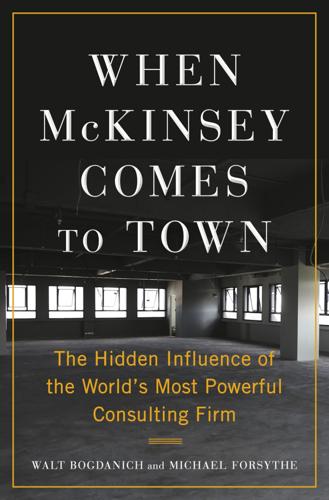
When McKinsey Comes to Town: The Hidden Influence of the World's Most Powerful Consulting Firm
by
Walt Bogdanich
and
Michael Forsythe
Published 3 Oct 2022
GO TO NOTE REFERENCE IN TEXT killed more than 900,000: “Coronavirus in the U.S.: Latest Map and Case Count,” New York Times, April 7, 2022. GO TO NOTE REFERENCE IN TEXT “From surviving to thriving”: Kevin Sneader and Bob Sternfels, “From Surviving to Thriving: Reimagining the Post-COVID-19 Return,” McKinsey & Company, May 1, 2020. GO TO NOTE REFERENCE IN TEXT his five Rs: Ibid. GO TO NOTE REFERENCE IN TEXT Within months of the pandemic’s arrival: Ian MacDougall, “How McKinsey Is Making $100 Million (and Counting) Advising on the Government’s Bumbling Coronavirus Response,” ProPublica, July 15, 2020.
…
McKinsey, perhaps recognizing the bad optics of hosting an event for federal contracting officials, recommended that GSA employees “consult with your GSA ethics officer as to the appropriateness of you participating.” McKinsey hastened to add that the conference had nothing to do with contract procurement, “so we hope it will be fine.” * * * — McKinsey closed out the last year of the Trump administration capitalizing on a dire health-care emergency—the coronavirus pandemic that as of March 2022 had killed more than 900,000 Americans. With the country convulsing from the pandemic, protests over police violence, and a bitter presidential election, McKinsey sought to stay in the spotlight by relentlessly churning out COVID-19 position papers, focusing less on how people should protect themselves and more on how companies could use lessons from the pandemic to improve their competitive standing.
…
“Our first concern,” they wrote in an April 2020 letter to the White House ethics officer, was that Jared Kushner, the president’s son-in-law, was managing a shadow task force on COVID that included private industry and “a suite of McKinsey consultants.” Apart from the lack of public accountability, the senators raised questions about who was in charge because Vice President Pence was already leading the official White House coronavirus task force. The legislators accused Kushner’s group of playing “a central role in the federal government’s ongoing fiasco of procurement and delivery of ventilators and personal protective equipment.” There was a silver lining, however. The task force apparently worked for free. * * * — For a company that expends so much effort presenting itself as a voice for health-care reform, McKinsey has remained silent on some of the most important health issues of our time.
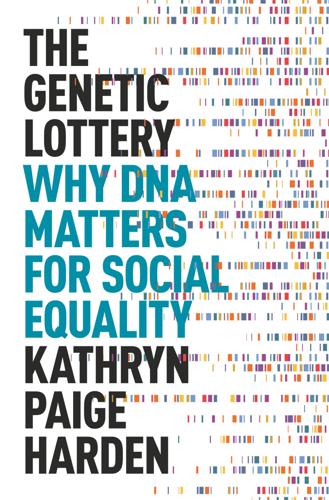
The Genetic Lottery: Why DNA Matters for Social Equality
by
Kathryn Paige Harden
Published 20 Sep 2021
Across many species, from rodents to rabbits to primates, animals who are higher in the pecking order of social hierarchy live longer and healthier lives.4 In the United States, the richest men live, on average, 15 years longer than the poorest, who have life expectancies at age 40 similar to men in Sudan and Pakistan.5 In my lab’s research, we found that children growing up in low-income families and neighborhoods show epigenetic signs of faster biological aging when they are as young as 8 years old.6 It might be easier for a camel to pass through the eye of a needle than a rich man to enter the gates of Heaven, but the rich man has the consolation of being able to forestall judgment day. These income inequalities are inextricable from inequalities in education. Even before the novel coronavirus pandemic, life spans for White7 Americans without a college degree were actually getting shorter.8 This historically unusual decline in life span, unique among high-income countries, was driven by an epidemic of “deaths of despair,” including overdoses from opioid drugs, complications from alcoholism, and suicides.9 The coronavirus pandemic made things worse. In the US, people with a college education are more likely to have jobs that can be done remotely from home, where they are more protected from exposure to a virus—and more protected from layoffs.10 In addition to living longer and healthier lives, the educated also make more money.
…
Sarah Bessey, an author and pastor, summarized the various recommendations given by public health officials as all being versions of the same message: “Love the vulnerable with your choices.” As a physically healthy woman in her thirties, with good access to medical care in a highly resourced urban area, I might not be particularly vulnerable to serious illness from coronavirus. But my elderly neighbor is, and her situation will be additionally worsened if the capacity of the medical system is overly taxed by too many people getting sick in the same way in the same place at the same time. Responding to the threat of pandemic illness involves us defining our responsibilities to each other in order to protect the most vulnerable among us.
…
Some people happen to inherit combinations of genetic variants that, in combination with environments provided by parents and teachers and social institutions, cause them to be more likely to develop a suite of skills and behaviors that are currently valued in the formal education systems of Western capitalist societies. They are not better people. They are not more inherently meritorious. They are, given the ways our society is currently constructed, the least vulnerable. And, if you are reading this book, you are probably one of them. As the threat of coronavirus ripples across the United States and the world, closing schools, shuttering businesses, socially responsible people are asking themselves: What do I need to do protect the most vulnerable in my community? This is the question we should be asking ourselves for long after the pandemic subsides. ACKNOWLEDGMENTS The epigraph for the book comes from The Witch Elm by Tana French, copyright ©2018 by Tana French, reproduced with permission of Penguin Books, an imprint of Penguin Publishing Group, a division of Penguin Random House LLC.

Cathedrals of Steam: How London’s Great Stations Were Built – and How They Transformed the City
by
Christian Wolmar
Published 5 Nov 2020
Hardback ISBN: 978-1-78649-920-2 E-book ISBN: 978-1-78649-921-9 Paperback ISBN: 978-1-78649-922-6 Map artwork by Jeff Edwards Endpaper image: Detail from The Railway Station by William Powell Frith, 1862. (Photo 12/Alamy Stock Photo) Printed in Great Britain Atlantic Books An imprint of Atlantic Books Ltd Ormond House 26–27 Boswell Street London WC1N 3JZ www.atlantic-books.co.uk Dedicated to my wife, Deborah Maby, with whom I was in lockdown during the coronavirus pandemic for nearly the whole period of writing this book, and who put up with me dodging the housework. Also to Sir John Betjeman, whose writing I sadly cannot match, but whose enthusiasm I can. CONTENTS List of Illustrations Maps Acknowledgements Introduction 1. Starting slowly 2.
…
Instead, by and large – with the odd exception – London’s terminuses have been greatly enhanced, even much unloved London Bridge, by refurbishments and additions, most notably the new side entrance to King’s Cross. This has been a happy book to write, a positive story for these hard times and one that John Betjeman, who features strongly in the last chapter, would greatly appreciate. The prospects for the future have only been darkened by the coronavirus pandemic sweeping through the country as I write. The effect on the railways has been devastating, with the government and the railway companies urging people not to use the railways, which until then had enjoyed more than two decades of almost uninterrupted growth, reaching record passenger numbers.
…
APPENDIX I Timeline for the opening of London’s terminus stations: London Bridge 1836 Euston 1837 Fenchurch Street 1840 Waterloo 1848 King’s Cross 1852 Paddington 1854 Victoria 1860 Charing Cross 1864 Cannon Street 1866 St Pancras 1868 Liverpool Street 1874 Marylebone 1899 APPENDIX II Passenger numbers in the year to 31 March 2019 at the London terminuses (before the coronavirus pandemic): (millions) Waterloo 94 Victoria 75 Liverpool Street 69 London Bridge 61 Euston 46 Paddington 38 St Pancras 36 King’s Cross 35 Charing Cross 30 Cannon Street 21 Fenchurch Street 19 Marylebone 16 Source: Office of Road and Rail SELECT BIBLIOGRAPHY THIS IS A highly selective bibliography focusing on the London terminus stations rather than on the capital’s railway system generally, on which there is a vast bibliography.

An Ugly Truth: Inside Facebook's Battle for Domination
by
Sheera Frenkel
and
Cecilia Kang
Published 12 Jul 2021
Within hours, the company went public with its plan to remove harmful misinformation, connect people to authoritative information on the virus, and give unlimited ad credits to the WHO and the CDC to run public service ads about the novel coronavirus. Facebook was the first company in Silicon Valley to issue a response. Zuckerberg was also one of the first American CEOs to shut down offices and authorize employees to work from home. He sent a memo to employees detailing how the coronavirus would affect every aspect of Facebook’s business. The company would likely lose revenue from advertisements as the pandemic crippled businesses across the economy. Facebook’s infrastructure, including its data centers, would be tested to the breaking point as billions of people were online at the same time.
…
In early April, the number of people who saw Facebook as “good for the world” began to show marked improvement for the first time since the Cambridge Analytica scandal. But at a White House briefing on April 23, Trump put the company to the test when he suggested that disinfectants and ultraviolet light were possible treatments for the novel coronavirus. His remarks, which were quickly debunked by doctors and health professionals, went viral. Within hours of Trump’s comments, more than five thousand posts on the topic sprang up on Facebook and Instagram, viewed by tens of millions of people. Facebook removed a few, but the source of the false and dangerous information, President Trump’s Facebook account, remained untouched.
…
Every January, for more than a decade: Mary Meisenzahl and Julie Bort, “From Wearing a Tie Every Day to Killing His Own Meat, Facebook CEO Mark Zuckerberg Has Used New Year’s Resolution to Improve Himself Each Year,” Business Insider, January 9, 2020. 16. “protecting our community”: Mark Zuckerberg, Facebook post, January 4, 2018. Chapter 14: Good for the World 1. COVID-19 virus was spreading: “WHO/Coronavirus International Emergency,” January 30, 2020 video can be viewed on UNifeed website. 2. seemed to criticize Twitter’s approach: Yael Halon, “Zuckerberg Knocks Twitter for Fact-Checking Trump,” Fox News online, May 27, 2020. 3. Three days later thirty-three former early employees: https://assets.documentcloud.org/documents/6936057/Facebook-Letter.pdf. 4.

MegaThreats: Ten Dangerous Trends That Imperil Our Future, and How to Survive Them
by
Nouriel Roubini
Published 17 Oct 2022
Jeffrey Ball, Angela Ortega Pastor, David Liou, and Emily Dickey, “Hot Money: Illuminating the Financing of High Carbon Infrastructure in the Developing World,” iScience 24, no. 11 (November 19, 2021), https://www.sciencedirect.com/science/article/pii/S2589004221013274. 30. Aaron Bernstein, “Coronavirus, Climate Change, and the Environment,” Harvard T.H. Chan School of Public Health, https://www.hsph.harvard.edu/c-change/subtopics/coronavirus-and-climate-change/. Accessed June 14, 2022. 31. Nicola Ranger, Olivier Mahul, and Irene Monasterolo, “Managing the Financial Risks of Climate Change and Pandemics,” One Earth 4, no. 10 (October 22, 2021): 1375–85, https://www.sciencedirect.com/science/article/abs/pii/S259033222100539X. 32.
…
Nouriel Roubini, “The Stagflation Threat Is Real,” Project Syndicate, August 30, 2021, https://www.project-syndicate.org/commentary/mild-stagflation-is-here-and-could-persist-or-deepen-by-nouriel-roubini-2021-08. 33. “State of Supply Chains: In the Eye of the Storm,” Accenture. Accessed June 14, 2022 https://www.accenture.com/us-en/insights/consulting/coronavirus-supply-chain-disruption?c=acn_glb_specialreportcogoogle_11296963&n=psgs_0720&gclsrc=aw.ds&gclid=CjwKCAjwo4mIBhBsEiwAKgzXONZcxu7dNt79FwcEdbb81uOeh2HArPmSX1kRZ—REY-ag1hZu9sZOxoCE1wQAvD_BwE. 34. Nouriel Roubini, “The Looming Stagflationary Debt Crisis,” Project Syndicate, June 30, 2021, https://www.project-syndicate.org/commentary/stagflation-debt-crisis-2020s-by-nouriel-roubini-2021-06.
…
Federal Reserve. https://www.federalreserve.gov/faqs/what-is-forward-guidance-how-is-it-used-in-the-federal-reserve-monetary-policy.htm. 11. “Size of the Federal Reserve’s Balance Sheet Since Quantitative Easing (QE) Measures Were Introduced from March 2020 to March 2022,” Statista, https://www.statista.com/statistics/1121416/quantitative-easing-fed-balance-sheet-coronavirus/. 12. “The QE Quandary,” Money Talks from The Economist (podcast), April 27, 2021. 13. Robin Harding, “US Quantitative Measures Work in Defiance of Theory,” Financial Times, October 13, 2014, https://www.ft.com/content/3b164d2e-4f03-11e4-9c88-00144feab7de 14. Paul Taylor, “Circumstances Have Pushed the E.C.B.
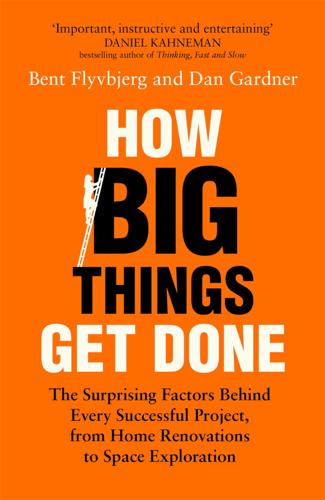
How Big Things Get Done: The Surprising Factors Behind Every Successful Project, From Home Renovations to Space Exploration
by
Bent Flyvbjerg
and
Dan Gardner
Published 16 Feb 2023
(Cambridge, UK: Cambridge University Press, 1984). 10. Author interview with Mike Green, June 5, 2020. 11. Benoit B. Mandelbrot, Fractals and Scaling in Finance (New York: Springer, 1997). 12. Erin Tallman, “Behind the Scenes at China’s Prefab Hospitals Against Coronavirus,” E-Magazine by Medical Expo, March 5, 2020, https://emag.medicalexpo.com/qa-behind-the-scenes-of-chinas-prefab-hospitals-against-coronavirus/. 13. Author interview with Ricky Wong, deputy head of Hong Kong’s Civil Engineering Office, September 16, 2021. 14. I wish to thank Carissa Véliz for alerting me to Sears Modern Homes as an early and excellent example of modularity in housing and construction.
…
Taleb, Nassim N., Yaneer Bar-Yam, and Pasquale Cirillo. 2022. “On Single Point Forecasts for Fat-Tailed Variables.” International Journal of Forecasting 38 (2): 413–22. Tallman, Erin. 2020. “Behind the Scenes at China’s Prefab Hospitals Against Coronavirus.” E-Magazine by MedicalExpo, March 5. https://emag.medicalexpo.com/qa-behind-the-scenes-of-chinas-prefab-hospitals-against-coronavirus/. Tauranac, John. 2014. The Empire State Building: The Making of a Landmark. Ithaca, NY: Cornell University Press. Teigland, Jon. 1999. “Mega Events and Impacts on Tourism; the Predictions and Realities of the Lillehammer Olympics.”

Recoding America: Why Government Is Failing in the Digital Age and How We Can Do Better
by
Jennifer Pahlka
Published 12 Jun 2023
If something didn’t change, the law’s effects on American health care would be the opposite of what its authors, and the people they represented, had in mind. * * * CHANGES IN MEDICARE reimbursement rules aren’t the kind of thing most Americans pay attention to. But you couldn’t miss what happened when our government tried to respond to a massive global pandemic. In early 2020, the novel coronavirus that had ravaged China, Italy, and other countries began sweeping across the US. The virus was devastating: by the end of the year it had killed over 385,000 Americans and had had significant long-term health effects on countless more. But its impact went far beyond the havoc it wreaked on the infected and their families.
…
For thirty-seven years, she rose through the ranks of the department, serving in the Tax Branch, the Field Audit and Compliance Division, the Tax Processing and Accounting Division, the Integrity Accounting Division, and the Directorate’s Office, all in roles heavily focused on compliance. At the end of 2019, when the administration offered her the chance to lead the department, unemployment in California was at a historic low. By the time her appointment was announced, in February 2020, concern about a novel coronavirus reaching the United States was slowly increasing. She’d been in her new role for just over a month when shelter-in-place orders led to an avalanche of job losses, and the EDD’s workload skyrocketed. It was not long before her name began to appear in front-page articles almost daily, and she was accused of everything from incompetence to intentional deception.
…
Clay Shirky, Here Comes Everybody: The Power of Organizing Without Organizations (New York: Penguin, 2008), 160. CHAPTER 1: ARCHAEOLOGY 1. Rebecca Rainey and Nolan D. McCaskill, “‘No Words for This’: 10 Million Workers File Jobless Claims in Just Two Weeks,” Politico, April 2, 2020, https://www.politico.com/news/2020/04/02/unemployment-claims-coronavirus-pandemic-161081. 2. Legislative Analyst’s Office, “Overview of Employment Development Department Response to COVID-19,” Presented to Assembly Budget Subcommittee No. 4 on State Administration, Hon. Jim Cooper, Chair, July 30, 2020, https://lao.ca.gov/handouts/state_admin/2020/Overview-of-Employment-Development-Department-Response-to-COVID-19–073020.pdf. 3.
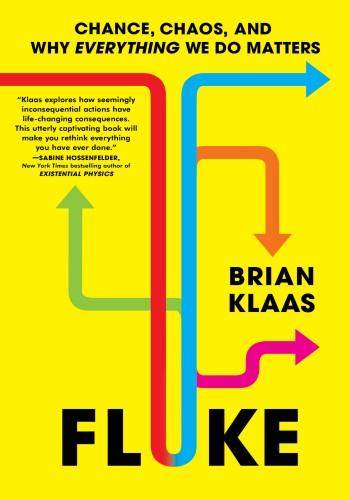
Fluke: Chance, Chaos, and Why Everything We Do Matters
by
Brian Klaas
Published 23 Jan 2024
Answering it relies on the implicit assumption that pandemics, across time and space, generally are the same, and you can apply the lessons from one to the other. During the COVID-19 pandemic, a surprising amount could be accomplished by office workers Zooming in their pajamas. Could you then infer, based on the coronavirus pandemic, how pandemics generally affect productivity? The answer becomes plain if you consider what might have happened if a novel coronavirus had spread in 1990 instead of 2020. Without personal computers, video conferencing, or the internet in most households, widespread working from home would’ve been impossible. If the same virus had emerged in Wuhan in 1950, it would have taken quite a while to move from China to the rest of the world.
…
Venture capitalists also deemed her ideas a waste of money. After these repeated failures, her university gave her an ultimatum: quit or face demotion. Karikó persisted. We should be thankful she did. Her work, on mRNA, would soon save countless millions of lives, as it was the basis of the most effective coronavirus vaccines during the COVID-19 pandemic. It wasn’t useful—until all of a sudden, the world changed, and it became the most useful scientific discovery in existence. She won a Nobel Prize. To decide who gets grant money (and in other similar decisions of irreducible uncertainty), we may be better off first setting a threshold to make sure that the proposals are serious and thoughtful.
…
H., 162 cascades, 94–95, 100, 102 Cassandra, myth of, 169, 171 Cat’s Cradle (Vonnegut), 74 cause–effect relationship, 7, 9, 30, 104, 199, 237 complex societies and, 88 deterministic universe and, 221, 225 Holy Grail of Causality, 216 multiple causes, 89 narrative bias and, 137, 138 pattern detection and, 70, 71 P-hacking and, 201 playing-God thought experiment and, 51 reverse causality, 88 storytelling and, 73–74 superstition and, 75 timing and, 193 cDa29 (human tetrachromat), 69 certainty, 7, 16, 20, 248 ceteris paribus (“all else being equal”), 189, 190 Chalmers, David, 109 chance, 11, 12, 18, 27, 201 attributed to machinations of the gods, 22 chaos contrasted with, 114 convergence and, 15, 16 evolution and, 16 games of chance, 106 seen as brief diversion from normality, 20 change, 5, 7, 28, 37, 247 accumulation of small changes, 28 ascribed to machinations of the gods, 22 chance and chaos as drivers of, 13 chaos theory and, 26 in contingency versus convergence, 15–16 interconnectedness and, 28 Laplace’s demon and, 23 time travel and, 6 uncertainty and, 12 chaos, 11, 12, 27, 73 Dionysus as agent of, 253 embrace of, 38 paradox of the swarm and, 83, 84, 87 chaos, edge of, 92, 93, 252 financial crises and, 95 swarms and, 83. See also cascades tipping points chaos theory, 26, 116, 123, 178 determinism and, 224 history and, 161, 162 cheetahs, genetic bottleneck of, 59n chemistry, 88, 207 Chen Jing, 188 Chilton, R. H., 168 China, 106, 118, 150 coronavirus outbreak in Wuhan, 101, 190 “mandate of heaven,” 163 Mao’s Four Pests campaign, 97, 252 Chinese mythology, 46 Chödrön, Pema, 26 choices. See decisions/decision-making Christianity, 32, 33–34 chromosomes, 17 Circumcellions, 132n city-states, Greek, 147–48 Civil War: free will and obsession with, 235–36, 240 role of contingency in, 167–69 “Cleopatra’s nose,” 175n climate change, 12, 122, 147 Clinton, Hillary, 116, 167, 208–9 clockwork universe, 24, 25, 26 Coase, Ronald, 200 cognitive biases, 171 coincidences, 20, 100, 137, 248 coin flips, 118–19, 143, 201, 209 Colbert, Stephen, 213 Colchester, Charles, 171 colonialism, 151, 154, 242 Comey, James, 208 comfort zone, departure from, 62 communication technologies, 102–3 compatibilism, 234, 236, 237 complexity and complex systems, 12, 191, 215, 252 basins of attraction and, 91–92 Black Swan events and, 124 complicated versus complex, 90 designed for flexibility, 102 edge of chaos and, 95 nonlinearity of, 94 path dependency and, 90–91 complexity science, 88, 91, 203 computers, 24, 26, 66, 103, 224 Comte, Auguste, 108 consciousness, 91, 109, 251, 257 conspiracy theories, 12, 76, 140–41 constellations, cross-cultural stories about, 70 continental axis theory, 152 contingency, 10, 27, 42, 104, 171 conception of children and, 159–60 criticality and, 98 English language and, 191 geography and, 145 global instability and, 87 human space-time contingency, 149, 156 religious belief and, 135 self-organized criticality and, 96 storytelling and, 139 timing and, 181, 183, 190 weather forecasting and, 123 contingency–convergence debate, 13–16, 46 contingent convergence, 57, 63, 253 evolutionary biology and, 49–51, 53–56 history and, 51–52, 56 control, illusion of, 4, 22, 101, 247 choices/decisions and, 19, 20, 30 interconnectedness and, 29 invisible pivot points and, 5 quest for hyperproductive efficiency and, 248, 262 scientific knowledge and, 109 self-help industry and, 249–50, 251 time and, 184 as trap, 263 unexpected interactions and, 27 convergence, 13–16, 46 coin flips and, 118–19 science and, 16, 174, 176.
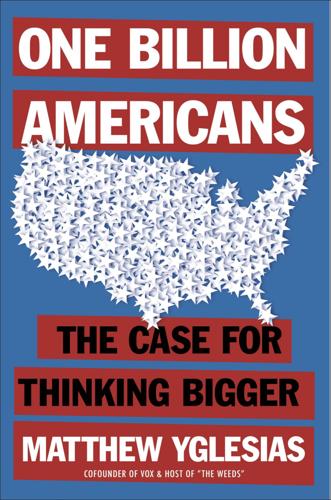
One Billion Americans: The Case for Thinking Bigger
by
Matthew Yglesias
Published 14 Sep 2020
Both San Francisco mayor London Breed and California governor Gavin Newsom were quick to issue social distancing orders in mid-March, while New York City mayor Bill de Blasio was slower to take equally robust action and New York governor Andrew Cuomo stepped in as the main leader of the response only once the situation was already out of control. Under the circumstances, the focus on density looks suspiciously like an effort to deflect attention from policy failures rather than a real diagnosis of the situation. That’s especially true because the places generally cited as having the strongest coronavirus responses are generally the developed Asian countries—especially Hong Kong, Singapore, South Korea, and Taiwan—all of which are more than ten times as dense as the United States. As of this writing, experts continue to disagree as to exactly what the key to Asian success at containment is. But on a broad sociological level it seems clear that jurisdictions that had more experience with SARS earlier in the twenty-first century did a better job at managing the less deadly but harder-to-track COVID-19 outbreak.
…
For other crops—including asparagus, strawberries, lettuce, celery, and cucumbers, for example—mechanization techniques were not available, and production simply fell. Wages did not rise; instead, Americans learned to live with reduced produce variety. It’s striking that even the Trump administration has come to recognize the broad social value of seasonal agricultural workers, responding to the coronavirus crisis by streamlining the visa process out of fear that shutting down American consulates in Mexico would make it impossible to recruit enough workers. The same impact on variety exists on the retail and service side of the economy as well. If you visit a place with few immigrants from Mexico—France or Fargo or what have you—you don’t find that taqueria workers are earning vastly more money than their counterparts in Texas.
…
This worked very well for years, but it ran into trouble in 2008–2009 when they cut rates all the way down to zero and that still wasn’t enough. Then, over a decade later, with the unemployment rate low, interest rates were still at what would have traditionally been considered emergency levels. That meant that when the coronavirus pushed the global economy back into recession, there was only so much room to respond with rate cuts—raising the risk that high unemployment will persist even once the public health emergency passes. Population growth does not figure that centrally in Summers’s writing on secular stagnation, but it was at the heart of Hansen’s original analysis.

Curbing Traffic: The Human Case for Fewer Cars in Our Lives
by
Chris Bruntlett
and
Melissa Bruntlett
Published 28 Jun 2021
People claimed the road space back, and started walking in the middle of the road without fear.” She also recalls speaking to some of her neighbors for the very first time, who—when they learned she worked in transportation—admitted that they liked their street without all of the traffic. Dr. Wang insists that this is another key ingredient in meaningful change: “Coronavirus is an opportunity to transform not only the city, but also the mindset of the people.” But she’s quick to clarify that it doesn’t need to be revolutionary: “The point of ‘resilience thinking’ is not to overhaul the entire system, but to introduce multiple stable regimes. Not to transform into something else, but to become more transformable, and find somewhere in between as a ‘new normal.’”
…
“In ecology, resilience is not just about the capability of the system to get back to what is considered as normal after disruption, but also about the capability to be able to transform when it becomes impossible to return to normal,” Wang explains, reiterating that it will take a change in both policy and mindset. “If our system cannot get back to normal after a disturbance such as the coronavirus crisis, then this is our opportunity to transform ourselves and the city together,” she insists. One such opportunity consists of enabling increased walking and cycling among children, which has no negative effect but which has proven difficult due to our long-term “normal” equilibrium induced by a car-dependent transport network.
…
These options for hyperlocal, sustainable delivery meant these entrepreneurs—many of whom were our neighbors—could compete with the Amazons and Uber Eats of the world, and a situation that might have forced them to close their shutters allowed them to thrive. The question that now remains is whether the COVID-19 pandemic and the ongoing climate crisis will be enough for car-dependent regions to pivot and create a “new normal.” But their reaction to the coronavirus lockdown, and the unique conditions experienced by people across the planet, has allowed for some optimism. In the book Resilient Cities: Overcoming Fossil Fuel Dependence, Peter Newman and colleagues write, “Resilience is built on hope, which gives us confidence and strength. Hope is not blind of the possibility of everything getting worse, but it is a choice we can make when faced with challenges.
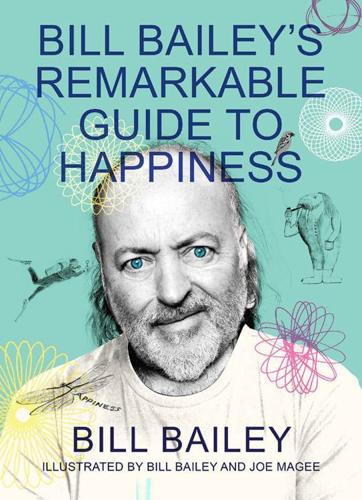
Bill Bailey's Remarkable Guide to Happiness: THE FEELGOOD BOOK OF THE YEAR
by
Bill Bailey
Published 14 Oct 2020
To my family and friends, and all those who have shared in these adventures CONTENTS Foreword 1 Crazy Golf 2 A Clear-out 3 Wild Swimming 4 Little Things 5 Music 6 Caring for Plants 7 Restraint 8 Singing 9 Sport 10 Art 11 Personal Reflection 12 Swearing 13 The Unexpected 14 Playing the Gamelan 15 Laughing 16 Equations 17 Paddleboarding 18 Reading 19 Trees 20 Confronting Your Fears (Part 1) 21 Dogs 22 Confronting Your Fears (Part 2) 23 Birdsong 24 Dancing 25 Pleasure 26 Jogging 27 Cycling 28 Being Someone to Rely On 29 Walking 30 Letter Writing 31 Generosity 32 Belonging 33 Being in Nature 34 Speaking Another Language 35 Simplicity 36 Love About Bill Bailey Thank you FOREWORD This book was written during the coronavirus pandemic, largely while we were in lockdown. During this unexpected quiet time at home, I finally got around to archiving my comedy shows, and I was struck, firstly by how much longer my hair was back in the day, and secondly by how much happiness has been a subject that I have explored in my sketches and gigs over many years, to the point that it appears as a constant thread running through it all.
…
It wows us with its unfathomable strangeness, but also sometimes catches us off guard with how closely it mirrors our own experience, how it speaks directly to us in our everyday lives. Magical while being disarmingly real, like watching your breath disappear on a cold day, or feeling the sun’s warmth on your face. PERSONAL REFLECTION 11 It’s a hot spring day in late April and it feels almost like summer. We are in lockdown due to the coronavirus. The air is drowsy and still with no hint of breeze, and as the heat begins to rise our hens seek out the shady patch of our garden in a hollow under the birch tree. They jostle and bicker and eventually shimmy their backsides into the cool earth to make themselves comfortable, then, suitably ensconced, they doze comically, their red-combed heads drooping, then jerking upright, only to droop once again.

Belgium - Culture Smart!: The Essential Guide to Customs & Culture
by
Bernadett Varga
Published 14 Aug 2022
Despite the fact that most households own a car, online shopping is very popular for both personal and household items. On average people in the Charleroi area have a higher preference for shopping by car and favor hypermarkets such as Cora or the other big supermarket-chains. Others in the Louvain/Leuven area also prefer shopping by car and tend to patronize smaller chains such as Delhaize. The coronavirus pandemic, however, has changed the shopping behavior of many—a quarter of Belgians have been prompted to use a different retailer, store, or Web site, and approximately 60 percent have tried something new when shopping. Cash payment is still available in most stores; however, card payment is well established in every supermarket and store.
…
Cloakroom attendants and restroom attendants (the latter known locally as Madame Pipi) also both expect to be tipped about €1. Taxi drivers are generally given 15 to 20 percent of the fare. Hairdressers, who are quite expensive, tend not to be tipped. Food Delivery One result of the recent coronavirus pandemic was that home food delivery became very popular. Apps such as Takeaway.com, Deliveroo, and Uber Eats offer the delivery of restaurant meals in the main cities. THE ARTS Every cultural taste is catered to in Belgium, and most of them in Brussels. Cinemas, homegrown music of all kinds, and resident theater, opera, and dance companies are all well patronized.
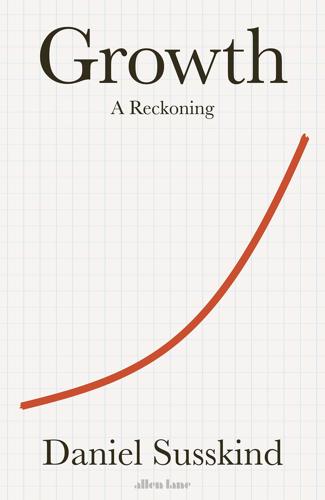
Growth: A Reckoning
by
Daniel Susskind
Published 16 Apr 2024
Here, though, the ‘Pre-Covid-19’ entry is the average percentage between 1 January 2001 to 1 January 2019. 12 Tomas Pueyo, ‘Coronavirus: Why You Must Act Now’, Medium.com, 10 March 2020, tomaspueyo.medium.com/coronavirus-act-today-or-people-will-die-f4d3d9cd99ca. 13 Stuart Thompson, ‘How Long Will a Vaccine Really Take?’, The New York Times, 30 April 2020. 14 www.ox.ac.uk/news/2020-11-23-oxford-university-breakthrough-global-covid-19-vaccine; Carolyn Johnson, ‘Pfizer’s Coronavirus Vaccine is More than 90 Per Cent Effective in First Analysis, Company Reports’, The Washington Post, 9 November 2020. 15 Jon Cohen, ‘“Absolutely Remarkable”: No One Who Got Moderna’s Vaccine in Trial Developed Severe COVID-19’, Science, 30 November 2020. 16 David Autor and Elisabeth B.
…
v=1sP291B7SCw. This was a riff on a remark that was first made several decades before that by none less than an economist, Kenneth Boulding: quoteinvestigator.com/2019/07/11/exponential/. 4 Noah Smith, ‘The Metaverse and (Near-)infinite Growth’, Substack, 9 November 2021; Benedict McAleenan, ‘The Coronavirus Crisis Reveals the Misery of “Degrowth”’, The Spectator, 27 March 2020; Tom Chivers, ‘Who Would Kill Children to Save the Planet?’, Unherd, 13 August 2021: twitter.com/timparrique/status/1430155819404963841. 5 John Cassidy, ‘Can We Have Prosperity Without Growth?’, The New Yorker, 3 February 2020. 6 Editorial, ‘Are There Limits to Economic Growth?
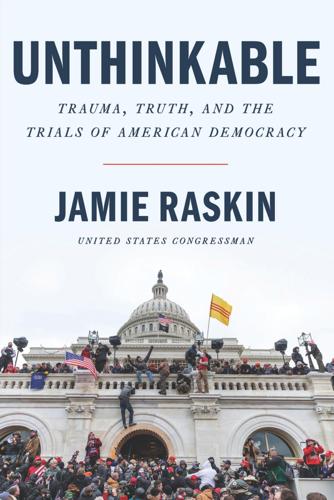
Unthinkable: Trauma, Truth, and the Trials of American Democracy
by
Jamie Raskin
Published 4 Jan 2022
Then, quickly, the economic calamity of all the shutdowns overcame us, and we needed to address the impending tidal wave of unemployment insurance claims, rental evictions, mortgage foreclosures, and business collapses. Speaker Pelosi named me to the new Select Subcommittee on Response to the Coronavirus Crisis, under the great Jim Clyburn of South Carolina, whose painstaking decision to endorse Joe Biden in the South Carolina Democratic primary pretty much cleared the field and put Biden on the glide path to victory. My legislative and district staffs worked as a team of patriots on both legislation and individual cases to address COVID-19, and I worked with Clyburn and our team to press real public health measures and accountability with regard to the large sums of money we were being forced to spend to rescue public health and our floundering state and local governments.
…
Hard-core Republicans made a point of not wearing their masks to committee meetings, apparently to model to the Fox News audience some kind of dubious statement about tyranny and freedom, prompting partisan brawls over the efficacy of masks and our duty to set a responsible example for the public. Amazingly, the coronavirus response subcommittee, to which Speaker Pelosi appointed me on April 29, spent large chunks of our precious meeting time simply fighting about whether members of the subcommittee itself should wear masks during our hearings. This kind of surreal and slapstick schoolyard brawl spread through the committee system.
…
Amazingly, the party that had invented and railed against mythical “death panels” in the Affordable Care Act was now defending Donald Trump and his monstrous mismanagement of COVID-19 that would come to cause hundreds of thousands of unnecessary American deaths, according to Trump’s own COVID-19 point person, Dr. Deborah Birx, the White House coronavirus response coordinator. My Republican colleagues went from collaborating with Trump’s sinister denial of the threat of COVID-19 to covering up for his bizarre promotion of quack medical cures (like hydroxychloroquine and injecting oneself with bleach) to the outrageous embrace of “herd immunity” as the nation’s strategy, which meant just letting the disease wash over the population and kill untold numbers of vulnerable people.
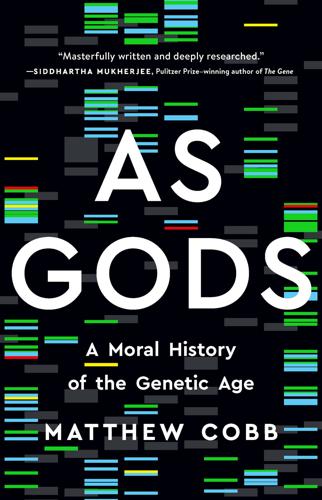
As Gods: A Moral History of the Genetic Age
by
Matthew Cobb
Published 15 Nov 2022
The sequencing work, which involved extracting viral DNA from body parts kept in formalin and from an Alaskan victim who had been buried in the permafrost in November 1918, was carried out at the US Armed Forces Institute of Pathology. Scientific and public awareness of the possibility of a natural global pandemic was high, given that the world had dodged a bullet in 2002–2003 when a SARS coronavirus epidemic emerged in southern China. The origin of this coronavirus was a spillover event from bats (it took fifteen years to identify the source) – the outbreak resulted in over 8,000 infections with an alarming 10 per cent mortality rate before being stifled by basic public health measures.64 Whereas sequencing the influenza virus was dangerous but could be justified, resurrecting it seemed dangerous but pointless.
…
If society, the intelligent layperson, understood what was going on, they would say ‘What the F are you doing?’102 Four months later, after the CDC anthrax biosecurity failure became known, the US government imposed a moratorium on the funding of eighteen gain-of-function experiments designed to increase viral pathogenicity in influenza, SARS or MERS viruses. (MERS was another coronavirus early warning we did not properly heed – the outbreak began in the Middle East in 2012 and has rumbled on since, killing over 800 people.) At the time there was a feverish atmosphere in the United States – in a completely unrelated incident, nursing staff treating a patient with Ebola in Los Angeles had recently contracted the disease, causing a nationwide wave of panic that was completely out of proportion to the actual threat.
…
Despite some kick-back from gain-of-function researchers highlighting the importance of their research for the development of treatments for COVID-19, the fundamental way we have responded to the pandemic was not guided by these studies.122 Furthermore, these same researchers have highlighted the danger from the sudden influx of laboratories into the field of coronavirus research, much as happened in the early years of the century. As viral gain-of-function pioneer Ralph Baric has warned, some of these new researchers may have ‘less respect for the inherent risk posed by this group of pathogens’.123 In 2004, George Poste, a bioterrorism expert at Arizona State University, referenced what happened to physics after the creation of the atomic bomb and predicted: ‘Biology is poised to lose its innocence.’124 Thankfully, that has not yet happened and we can still stop it.

12 Bytes: How We Got Here. Where We Might Go Next
by
Jeanette Winterson
Published 15 Mar 2021
On the Right, though, there was plenty of thought, not new, but ready for a rebrand. It was the usual story. Deregulate. Everyone will be ‘free’ to sell their labour at the ‘market’ price. That was the factory system during the Industrial Revolution. Welcome back. * * * As I write this, in 2021, the coronavirus has shut down the world economy. We have never seen anything like this before. The only way of saving Western economies has been socialism on the dream-scale. The state is paying our wages, backing business loans, guaranteeing jobs. At the opposite end of the dream-scale, tech companies have enriched themselves.
…
The Sixth Great Extinction is well underway, undermining the network of linked life-support systems – from bees to birds to hedgerows to rivers – that humanity relies on. 98% of available agricultural land is already in use or degraded beyond repair. Meanwhile the human population grows. Nature’s methods of culling humans – and coronavirus is one – are seen as tragedies, not the inevitable outcome of how we live – and perhaps an outcome we have to accept as the start of real change. I do not believe that human life is more valuable than other kinds of life on Planet Earth, or more valuable than Earth herself. And neither will any government, when it is expedient to fight the next war.
…
Lower down the food-chain, and mostly in the USA, survivalist projects range from family bunkers with enough food, water and ammunition for a year, to something that would be called a commune if the politics were different. People clubbing together to buy land, store fuel, grow their own food. There’s a pioneer tradition behind them in the USA. Vivos is the world’s largest prepper community. In West Dakota, this used to be a military site. Now it’s in private hands and plot sales have soared since coronavirus. 575 bunkers sit inside 18 square miles of chain-fenced land (that’s the size of Manhattan). Security guards patrol the 100 miles of private roads. Your bunker fit-out can include LED windows to simulate outdoor views. Once inside, you and your family will be safe from chemical, biological or nuclear warfare, viruses, environmental disaster, rogue militias, and temporary dictatorships.
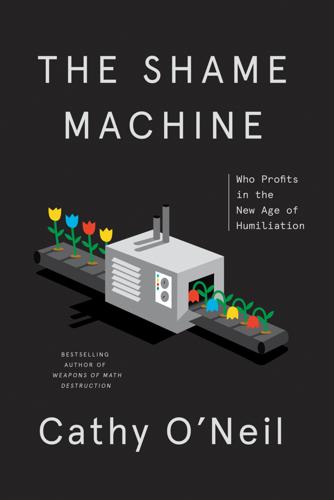
The Shame Machine: Who Profits in the New Age of Humiliation
by
Cathy O'Neil
Published 15 Mar 2022
Karpf would go on to teach the encounter in his media classes, he wrote, as a case study of the so-called Streisand Effect:[*8] when authority figures attempt to repress online content but instead their actions draw massive attention to it. This happens with predictable frequency. Those on top protect their own interests, and shame their antagonists, under the guise of defending the greater good. In July 2020, as protests against police abuses crested around the world and the novel coronavirus swept the globe, a group of 151 authors, artists, and intellectuals put together what they saw as a written defense of free speech. They published it in Harper’s Magazine, the 170-year-old standard of liberalism. “The democratic inclusion we want can be achieved only if we speak out against the intolerant climate that has set in on all sides,” they wrote.
…
In June 2020, a twenty-three-year-old recluse living near Kobe admitted to killing three family members with a crossbow and injuring a fourth. But the vast majority of them simmer in their loneliness. This they share with too many others. Loneliness is a growing epidemic in the industrialized world, and the coronavirus exacerbated it, leading to a spike in suicides and overdoses. This is typical of shame in many of its manifestations, and it’s a natural response. Whether their shame is stoked by obesity, poverty, addiction, or sexual inadequacy, people who feel vulnerable to judgment shield themselves from others.
…
Dreyfus,“Why Some Orthodox Jewish Women Won’t Get Vaccinated,” The New York Times, June 11, 2021, https://www.nytimes.com/2021/06/11/nyregion/orthodox-jewish-vaccinations.html. GO TO NOTE REFERENCE IN TEXT angry Hasidic men burned their masks: T. Armus,“Brooklyn’s Orthodox Jews Burn Masks in Violent Protests as New York Cracks Down on Rising Coronavirus Cases,” The Washington Post, October 8, 2020, https://www.washingtonpost.com/nation/2020/10/08/orthodox-jews-protest-covid-brooklyn/. GO TO NOTE REFERENCE IN TEXT “There’s an anti-authority feeling in the world”: I. Derysh,“Fauci ‘Absolutely Not’ Surprised Trump Got COVID: He ‘Equates Wearing a Mask with Weakness,’ ” Salon, October 19, 2020, https://www.salon.com/2020/10/19/fauci-absolutely-not-surprised-trump-got-covid-he-equates-wearing-a-mask-with-weakness/.
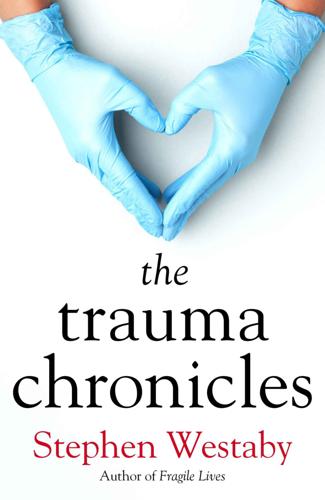
The Trauma Chronicles
by
Westaby, Stephen
Published 1 Feb 2023
The device is just what it says on the box: a long sausage shaped balloon, rhythmically inflated then deflated by helium gas to reduce the amount of work the left ventricle has to do. Sadly, it doesn’t pump much blood. We needed a different system for that known as ‘extra corporeal membrane oxygenation’ or ECMO, that I had pioneered for the UK, but the NHS wouldn’t pay for it even in heart surgery centres and my ‘freebies’ had run out. Many Coronavirus patients needed ECMO during the pandemic but the whole of the UK could only manage a total of thirty circuits in five hospitals. Desperately disappointing as it was proven to save lives. Death is cheap, and die he did, a couple of days later from heart failure. He never woke from his head injury.
…
Covid killed 100,000 people through lung and multi-organ failure in 2020 alone. Of course, the doctors, nurses and technical staff we did have made heroic efforts under terribly difficult circumstances. When members of the Doctors Association were polled with the question ‘do you feel that the NHS was prepared for Coronavirus?,’ 99.5% of responders replied ‘No.’ That hardly inspired confidence, nor did the availability of personal protective equipment. A ‘Dad’s Army’ of retired medical staff, including members of my own family, went back to the wards but it was difficult to make a difference without any acknowledged treatment for the lung failure.
…
It was C5 that I had measured for the first time in bypass patients. And just as we had employed steroids all those years ago, dexamethasone became the treatment of choice for Covid-19. I presented my arguments again in a surgical journal. The title of the paper was ‘A cardiac surgeon’s perspective on the treatment of Coronavirus’ with the subtitle ‘Can interventions that surgeons use for prophylaxis protect against the cytokine storm?’ Of course this had no influence. The pandemic was being managed by a committee of wise men whose eyes were closed to all but their own concepts. The small number of eminent virologists and statisticians provided their best advice to the government and sadly a huge pile of bodies followed.
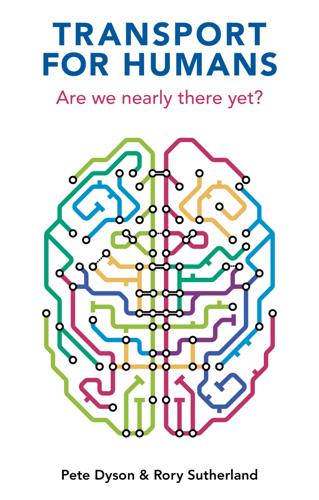
Transport for Humans: Are We Nearly There Yet?
by
Pete Dyson
and
Rory Sutherland
Published 15 Jan 2021
Exploring changes in active travel uptake and cessation across the lifespan: longitudinal evidence from the UK Household Longitudinal Survey. Preventive Medicine Reports 13, 57–61. 17 World Economic Forum. 2020. An overwhelming majority of people want real change after COVID-19. WEF website, September (www.weforum.org/agenda/2020/09/sustainable-equitable-change-post-coronavirus-survey/). 18 A recent addition to the literature in this area is C. R. Sunstein’s How Change Happens (MIT Press, 2019). 19 S. Bamberg and J. Rees. 2017. The impact of voluntary travel behavior change measures – a meta-analytical comparison of quasi-experimental and experimental evidence.
…
Behavioural science can help transport planners to communicate with the public to inspire confidence in project planning. One persistent source of optimism bias is the faith put in technological progress, which often overestimates the social impact of innovation, especially in the short term. Further reading Bottemanne, H., Morlaàs, O., Fossati, P., and Schmidt, L. 2020. Does the coronavirus epidemic take advantage of human optimism bias? Frontiers in Psychology 11, 26 August (https://doi.org/10.3389/fpsyg.2020.02001). Kay, J. A., and King, M. A. 2020. Radical Uncertainty. London: Bridge Street Press. Kreiner, K. 2020. Conflicting notions of a project: the battle between Albert O.
…
Business disruptions from social distancing. PLOS ONE 15(9), e0239113 (https://doi.org/10.1371/journal.pone.0239113). 33 Barrero, Bloom and Davis (2021). Why working from home will stick. 34 E. DeFilippis, S. M. Impink, M. Singell, J. T. Polzer and R. Sadun. 2020. Collaborating during coronavirus: the impact of COVID-19 on the nature of work. Working Paper 27612, July, National Bureau of Economic Research (www.nber.org/papers/w27612). 35 See Robert Whaples’s review of Benjamin Hunnicutt’s Kellogg’s Six-Hour Day (Temple University Press, Philadelphia, PA, 1998) in Humanities and Social Sciences Online, September (www.h-net.org/reviews/showrev.php?

Planes, Trains and Toilet Doors: 50 Places That Changed British Politics
by
Matt Chorley
Published 8 Feb 2024
Cummings the clairvoyant also claimed in his press conference that ‘only last year I wrote explicitly about the danger of coronaviruses’, except it turned out that a March 2019 blogpost had been edited to insert the reference to coronavirus and Chinese labs on 14 April 2020 – the day after he returned from Durham. There was also the question of the reason for the gallivanting. The story appeared to change when Cummings gave evidence in May 2021 to a parliamentary inquiry into coronavirus. He claimed that the escape to the country actually wasn’t about childcare after all, but because his home had been the target of a ‘gang of people outside saying that they were going to break into the house and kill everybody inside’.
…
Some 59 per cent thought Cummings should leave Number 10 (something he wouldn’t actually do for another six months, when Johnson sacked him in a wild power struggle involving his chief adviser, spin doctor and wife). Between April and June 2020 the proportion of people who said Johnson was doing well as PM fell from 66 per cent to 43 per cent, according to YouGov. The proportion who thought the government was handling the coronavirus well dropped by similar levels. ‘The whole thing was a complete disaster,’ Cummings said later. ‘It undermined public confidence in the whole thing.’ He suggested that if he and Johnson had come clean, the public would have understood. This is, arguably, doubtful. ‘We both made a terrible Horlicks of it in a very odd circumstance,’ he added.

Age of the City: Why Our Future Will Be Won or Lost Together
by
Ian Goldin
and
Tom Lee-Devlin
Published 21 Jun 2023
We next widen our aperture, in Chapter 7, to consider cities in poorer countries, including the unique challenges that arise from the speed with which they are growing, and the risk of urbanization without prosperity as the traditional manufacturing-led development path becomes increasingly difficult to follow in light of the accelerating pace of automation. Finally, we consider two existential risks confronting humanity – infectious diseases and climate change – and what they mean for cities. In Chapter 8, we look back at the relationship between infectious diseases and cities through history, reflect on the learnings from the coronavirus pandemic and define how cities can help make us more resilient against future pandemics. In Chapter 9, we explore the potential disruption that cities will face from climate change in the decades ahead, the actions that need to be taken to protect populations from the rising impact and frequency of flood, drought and heat extremes, and the role that cities must play in helping to accelerate decarbonization and slow climate change.
…
Still, for all its flaws, the London system is far superior to car-centric cities in the US like Los Angeles or Atlanta, where a distinctive lack of public transit options acts as a poverty trap for any resident unable to afford a car. In the next chapter, we ask if and how this story might change as a result of the surge in remote working following the coronavirus pandemic. Are we at the start of a new cyclical process of well-off workers fleeing urban centres for greener pastures? 5 Remote Work: The Threat to Cities Enthusiasm for the idea of remote working is nothing new. The first to systematically explore its potential in the modern world was the US physicist Jack Nilles, who in 1976 published a book titled The Telecommunications–Transportation Tradeoff.1 Writing against a backdrop of soaring oil prices and growing excitement about the personal computer, Nilles argued that society was approaching a tipping point.
…
The second was the subsequent fall in infectious diseases over the past two centuries thanks to rapid advances in our understanding of the underlying mechanisms behind these pathogens. Some epidemiologists believe we are now entering a third transition, in which the emergence of contagious diseases is accelerating towards a speed we can no longer control.22 The coronavirus pandemic, as destructive as it has been, may prove merely a precursor for what is still to come. Ian’s 2014 book The Butterfly Defect explored how the world was becoming more vulnerable to risks like pandemics. Cities, by bringing the world together, have played a central role in this. About 250 people can fit into a single carriage on the New York subway, greater than the size of a typical medieval village.23 In 2019, prior to the pandemic, the global aviation industry completed 4.5 billion passenger journeys, nearly all of which departed and arrived in cities.24 Only through cities can an outbreak of a novel disease in central China cascade in a matter of weeks into a global pandemic.
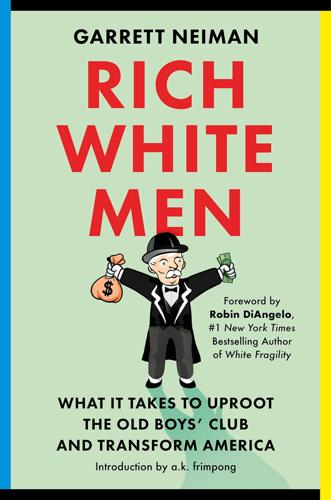
Rich White Men: What It Takes to Uproot the Old Boys' Club and Transform America
by
Garrett Neiman
Published 19 Jun 2023
Ashlea Ebeling, “IRS Announces 2016 Estate and Gift Tax Limits: The $10.9 Million Tax Break,” Forbes, October 22, 2015, https://www.forbes.com/sites/ashleaebeling/2015/10/22/irs-announces-2016-estate-and-gift-tax-limits-the-10-9-million-tax-break/. 41. Taylor Nicole Rogers, “Meet Bill Ackman, the Controversial Hedge-Fund Manager Who Made $2.6 Billion off the Coronavirus Market Crash in March,” Business Insider, April 9, 2020, https://www.businessinsider.com/bill-ackman-billionaire-hedgefund-manager-made-billions-off-coronavirus-crash-2020-4. 42. Benjamin I. Page, Larry M. Bartels, and Jason Seawright, “Democracy and the Policy Preferences of Wealthy Americans,” Perspectives on Politics 11, no. 1 (March 2013): 51–73, https://doi.org/10.1017/S153759271200360X. 43.
…
“Why Women Governors May Be Better Crisis Leaders: A Study of States during COVID-19,” Wisconsin School of Business, July 14, 2020, https://business.wisc.edu/news/leadership-during-the-pandemic-states-with-women-governors-had-fewer-covid-19-deaths/. 20. Jon Henley, “Female-Led Countries Handled Coronavirus Better, Study Suggests,” The Guardian, August 18, 2020, https://www.theguardian.com/world/2020/aug/18/female-led-countries-handled-coronavirus-better-study-jacinda-ardern-angela-merkel. 21. Quoted in “Barack Obama: Women Are Better Leaders Than Men,” BBC News, December 16, 2019, https://www.bbc.com/news/world-asia-50805822. 22. James C. Collins, Good to Great: Why Some Companies Make the Leap—and Others Don’t (New York: Harper Business, 2001); Travis Bradberry, Jean Greaves, and Patrick Lencioni, Emotional Intelligence 2.0 (San Diego, CA: Talent Smart, 2009); Bill George and Warren G.

The Power Law: Venture Capital and the Making of the New Future
by
Sebastian Mallaby
Published 1 Feb 2022
This is certainly true sometimes: Impossible Foods is an example. On the other hand, video games and social media promote screen addiction and fake news, even as they entertain, inform, and allow Grandma to admire pictures of her distant grandchildren. The gap between VC rhetoric and VC practice is easily mocked. In April 2020, in the throes of the coronavirus pandemic, the venture capitalist Marc Andreessen proclaimed that it was “time to build.” “Where are the high-speed trains, the soaring monorails, the hyperloops, and yes, the flying cars?” he demanded.[37] The following month Andreessen’s partnership invested in Clubhouse, an invitation-only social-media app.
…
Toward the end of the 2010s, Sequoia began to lay on workshops for entrepreneurs: an event called Base Camp gathered founders for weekends in the mountains, featuring campfires, wigwam tents, and speakers on everything from technology to architecture. Another offering called the Company Design Program featured courses taught by the firm’s partners. Amid the coronavirus pandemic of 2020, the partnership launched a founders’ app called Ampersand. Sequoia-backed entrepreneurs used it to stay in touch with one another and test management ideas. Should they adjust compensation when workers went remote? How to help team members whose mental health deteriorated?[25] Three years after Goetz and Botha had been informally promoted, at the start of 2012, Leone got a strange message from Moritz.
…
The recent bankruptcy of a hardware-based communications software company, Avaya, suggested that the cloud’s moment was arriving. The hedge funders duly made three cloud-communications bets: Twilio, RingCentral, and the videoconferencing company Zoom. The first two generated 4x and 5x over the next two years. Assisted by the coronavirus pandemic, Zoom emerged as one of the breakout tech companies of 2020, generating 9x. Meanwhile, Sequoia’s hedge fund was short legacy telecom companies that would lose out from the transition to the cloud. One thematic insight had generated multiple winning positions. By the beginning of 2021, Sequoia Capital Global Equities had $10 billion under management.
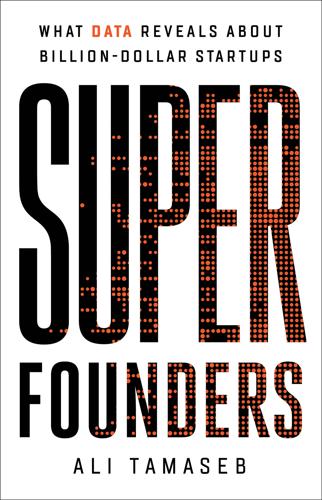
Super Founders: What Data Reveals About Billion-Dollar Startups
by
Ali Tamaseb
Published 14 Sep 2021
This is because Eric knew exactly what shortcomings he needed to fix—he was working at a company he would soon be competing against. He was laser focused on the product, and he made it his mission to satisfy his customers. In 2018, Zoom became the industry leader in both market share and customer satisfaction, with ratings more than two times the industry average. The coronavirus-related pandemic of 2020, which led to many companies and schools adopting work- and teach-from-home policies, significantly boosted Zoom’s business, doubling its revenues in one quarter and quadrupling its valuation in the public markets. In 2011, Cisco and Polycom owned the majority of the enterprise videoconferencing market.
…
The total amount of venture capital investment was reduced from over $40 billion in 2008 to less than $30 billion a year later, affecting startups raising money in 2009 and 2010. More starkly, those startups had to take investments at lower valuations. Pre-money valuations dropped from an average of $40 million for a series C round in 2007 to about $25 million in 2009. Similarly, the coronavirus-related lockdown in 2020 temporarily reduced investment activity by about 25 percent, but it quickly bounced back to normal and then increased even higher afterward. Overall, booms and busts in the economy, including in the stock market, have an impact both on the amounts invested by VC firms and on valuations, with later-stage startups getting hit harder.
…
Michael Arrington, “Benchmark Capital Advises Startups to Conserve Capital, Look for Opportunities,” TechCrunch, October 9, 2008, https://techcrunch.com/2008/10/09/benchmark-capital-advises-startups-to-conserve-capital/. 3. Don Butler, “Pre-Money Valuation” (chart), Forbes, March 17, 2020, www.forbes.com/sites/donbutler/2020/03/17/this-downturn-will-be-different-what-we-expect-in-a-recession-marred-by-coronavirus/#201610ad2cd7. 4. Todd McKinnon, “Why I’m Not Crazy,” Scribd, accessed July 30, 2020, www.scribd.com/document/440970657/Why-I-m-Not-Crazy-Todd-McKinnon-Okta-002#from_embed. CHAPTER 15: CAPITAL EFFICIENCY 1. Forbes, “How Katrina Lake Defied the Investment World to Build a $3 Billion Business,” video, August 9, 2018, www.youtube.com/watch?
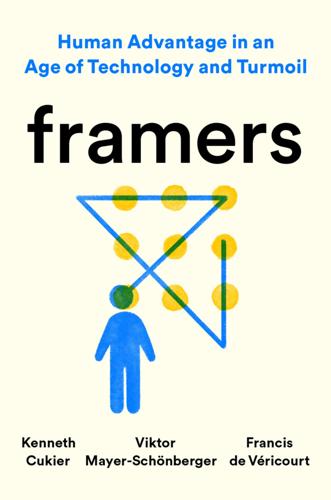
Framers: Human Advantage in an Age of Technology and Turmoil
by
Kenneth Cukier
,
Viktor Mayer-Schönberger
and
Francis de Véricourt
Published 10 May 2021
Now, fast-forward to 2020. When the novel coronavirus blipped onto public health authorities’ radar early that year, it wasn’t clear what sort of disease the world was dealing with. Seven coronaviruses were then known to affect humans, with a wide range of infection rates and lethality. Some cause the common cold. Others, like SARS (in Asia in 2002 to 2004) and MERS (in the Middle East in 2012), proved to have harsher symptoms, longer incubation periods, and case fatality rates of 10 percent and 35 percent, respectively. Yet the world had endured coronavirus outbreaks before, and they were squelched, just as Ebola had been.
…
New Zealand’s brilliant Covid response: Interview by Kenneth Cukier with Michael Baker, health adviser to the government, June 2020. Britain’s pathetic Covid response: “Britain Has the Wrong Government for the Covid Crisis,” Economist, June 18, 2020, https://www.economist.com/leaders/2020/06/18/britain-has-the-wrong-government-for-the-covid-crisis. Britain’s Covid performance in June: “Coronavirus: UK Daily Deaths Drop to Pre-lockdown Level,” BBC News, June 8, 2020, https://www.bbc.co.uk/news/uk-52968160. UK data on deaths and cases: “COVID-19 Pandemic Data in the United Kingdom,” Wikipedia, accessed October 30, 2020, https://en.wikipedia.org/wiki/Template:COVID-19_pandemic_data/United_Kingdom_medical_cases_chart.
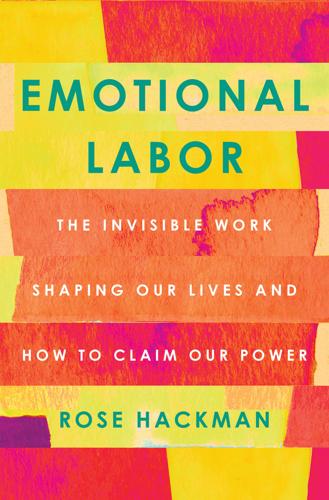
Emotional Labor: The Invisible Work Shaping Our Lives and How to Claim Our Power
by
Rose Hackman
Published 27 Mar 2023
The effects of this draining emotional labor seep into her private life, where she is trying to complete a graduate degree while providing a steady, loving environment for her sixteen-year-old daughter. “People say whatever happens at work stays at work. That doesn’t work with me,” she says of the supposed clear separation between work life and private life, a complaint that became nearly universal to working women with families during the initial years of the coronavirus pandemic. At home, as a single mother of a dark-skinned Black female teenager, Bri, Ashley doesn’t just juggle all of the domestic duties and bills; she is also sole counselor to and champion for her daughter, whose basic needs she feels the system is failing. After some boys started bullying her for her looks, Ashley noticed her young daughter internalizing more and more negative messages about herself.
…
Lucy, a New Orleans native and patient care technician, remembers hearing about the first cases in the news on a Tuesday, but they weren’t at the top of her mind when she headed into work the following Saturday in one of the city’s thirty-one hospitals. It wasn’t until she got to the doors of her unit and read a sign stating RESTRICTED AREA that she began to understand. “You didn’t know?” a colleague asked on their way in, seeing her sudden motionlessness. “This is the quarantine unit. This is where people with coronavirus go.” Lucy’s mind raced, overwhelmed. She sat down, focused on breathing, and slowly calmed herself, preparing for what was ahead. That first COVID-19-pandemic shift, there was little reassurance outside of her own to be found. No one had a plan; the nurses around her, her immediate superiors, were scared; and there weren’t enough gloves or masks to go around.
…
It is the only country among the world’s twenty wealthiest to not provide affordable universal health care to its citizens.8 Among forty-one developed nations, the United States is the only country to still not guarantee its citizens—mothers or fathers—any paid parental leave at all.9 In March 2021, after a year of economic crisis during which unemployment doubled because of the coronavirus pandemic that by then had killed half a million people in the United States, President Joe Biden signed into effect a $1.9 trillion COVID-19 relief package that was set to create the largest expansion to the social safety net in a generation. Among the policies introduced was an expanded child tax credit that would provide families up to $3,600 a year per child.
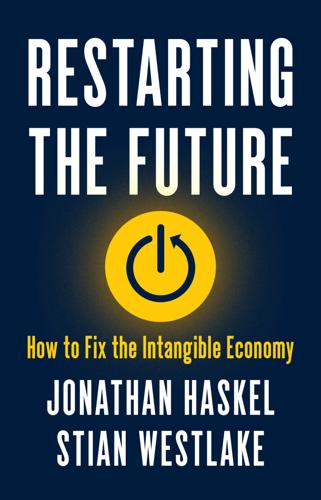
Restarting the Future: How to Fix the Intangible Economy
by
Jonathan Haskel
and
Stian Westlake
Published 4 Apr 2022
,” Bank Underground, January 13, 2020, https://bankunderground.co.uk/2020/01/13/whats-been-driving-long-run-house-price-growth-in-the-uk/. 11. Fischel 2005. See also Pennington 2001. 12. Max Nathan and Henry Overman discuss the impacts of COVID-19 on cities in “Will Coronavirus Cause a Big City Exodus?,” Economics Observatory, September 22, 2020, https://www.coronavirusandtheeconomy.com/question/will-coronavirus-cause-big-city-exodus. 13. Forth 2018. 14. Paul Krugman, “The Gambler’s Ruin of Small Cities (Wonkish),” New York Times, December 30, 2017, https://www.nytimes.com/2017/12/30/opinion/the-gamblers-ruin-of-small-cities-wonkish.html. 15.
…
Joel Mokyr has advanced the view that perhaps the growth impact of ICT on health via personalised medicine, gene therapy, and other technologies is yet to play out because these areas have so much promise but are very hard to apply new technology to.30 Technology has not yet lost its ability to surprise us for the better: early in 2020 many wondered if a COVID-19 vaccine would be years off. As it happened, not only were several safe, effective vaccines developed within a matter of months, but progress was made towards generalisable coronavirus vaccines, and an apparently effective malaria vaccine emerged, too. Education: Is Growth Over? A second explanation for the productivity growth slowdown is the contribution of education. Some details of Vollrath’s calculation are worth discussing. As he explains, we can account for growth in output per capita by growth in inputs per capita.

Badvertising
by
Andrew Simms
Unfortunate, then, that pollution from petrochemicals is particularly bad for all of those. Ineos is a multinational petrochemical company founded and owned by Sir Jim Ratcliffe, the UK’s richest man, who recently relocated to tax-free Monaco, and whose fortune is estimated at £17.5 billion, and almost doubled in value during the global coronavirus pandemic.15 Sir Jim’s pro-nationalist sentiment, him being a staunch and vocal Brexit supporter, manifested in Ineos’ recent sponsorships of prestigious UK cycling and sailing teams, as part of an apparent strategy to elevate and align the company to ‘Brand Britain’. It was a move to prove controversial given subsequent business decisions (as we shall see).
…
These enormous vehicles, ostensibly built for rural, off-road work, are mostly being bought by people in towns and cities. The part of the UK where the largest and most powerful four-wheel-drive SUVs – so-called ‘Chelsea Tractors’ – are most popular is indeed the inner London borough of Kensington & Chelsea, where there are no opportunities for off-roading.8 Public awareness of this incongruity grew during the coronavirus pandemic, when we needed as much space on our streets as possible for pedestrians and cyclists to get around and commute to work safely. Many urban centres are struggling to provide functional transit systems based on majority public transport or active travel because our infrastructure is drowning in unmanageable volumes of private cars.
…
US airlines successfully lobbied for huge public bailouts which were intended to protect jobs, but frequently wound up lining the pockets of shareholders.41 Some European airlines went bust, while others fired employees en masse, only to scramble clumsily to rehire them on worse contracts when demand for air travel returned. In the aftermath of the pandemic, there is now a massive effort on behalf of airlines to push governments and airports around the world to roll back environmental taxes and set up bailout funds after the coronavirus crisis. Even as the world’s borders closed in 2020, a strategy document produced by the airline industry shows it lobbying for public money to be poured into funds to restart or maintain air travel, and for any planned tax increases to be delayed. The International Air Transport Association (IATA) document detailed lobbying strategies for Europe, the Americas, Asia and the Pacific, North Asia, Africa and the Middle East.
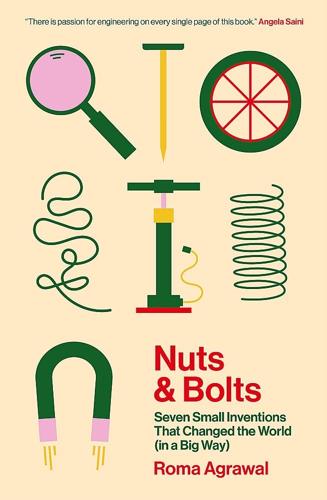
Nuts and Bolts: Seven Small Inventions That Changed the World (In a Big Way)
by
Roma Agrawal
Published 2 Mar 2023
https://doi.org/10.1038/news030818-7. Willson, Tayler. ‘Meet the Emerging Brand Making Sneakers From Coffee Grounds’. Hypebeast, 12 August 2021. https://hypebeast.com/2021/8/rens-sneaker-brand-coffee-grounds-sustainability-interview-feature. World Health Organization. ‘Coronavirus Disease (COVID-19): Masks’. 5 January 2022. https://www.who.int/news-room/questions-and-answers/item/coronavirus-disease-covid-19-masks. ‘Wool: Raw Wool Specification’. Encyclopedia of Polymer Science and Technology, Wood Composites, vol. 12. Wragg Sykes, Rebecca. Kindred: Neanderthal Life, Love, Death and Art. Bloomsbury, 2020. Pump 1001 Inventions. ‘5 Amazing Mechanical Devices from Muslim Civilisation’.
…
Contemporary Physics, vol. 56, no. 2, 3 April 2015. https://doi.org/10.1080/00107514.2015.1028753. Al-Khalili, Jim. ‘Doubt Is Essential for Science – but for Politicians, It’s a Sign of Weakness’. Guardian, 21 April 2020. https://www.theguardian.com/commentisfree/2020/apr/21/doubt-essential-science-politicians-coronavirus. Al-Khalili, Jim. ‘In Retrospect: Book of Optics’. Nature, vol. 518, no. 7,538, February 2015. https://doi.org/10.1038/518164a. Al-Khalili, Jim. Pathfinders: The Golden Age of Arabic Science. Penguin Books, 2012. UC Museum of Paleontology, University of Berkeley. ‘Antony van Leeuwenhoek’. https://ucmp.berkeley.edu/history/leeuwenhoek.html.
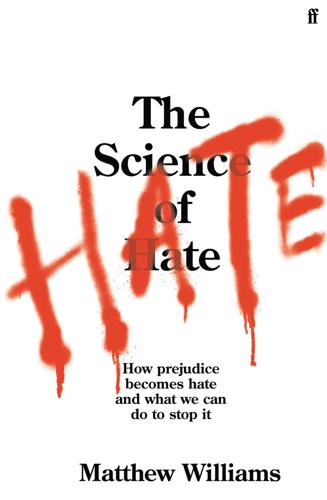
The Science of Hate: How Prejudice Becomes Hate and What We Can Do to Stop It
by
Matthew Williams
Published 23 Mar 2021
Parkin, ‘“A Threat to Health Is Being Weaponised”: Inside the Fight against Online Hate Crime’, Guardian, 2 May 2020; K. Paul, ‘Facebook Reports Spike in Takedowns of Hate Speech’, Reuters, 12 May 2020. 5. EU vs Disinfo, ‘EEAS Special Report Update: Short Assessment of Narratives and Disinformation around the Covid-19/Coronavirus Pandemic’, 24 April 2020, euvsdisinfo.eu/eeas-special-report-update-2-22-april; C. Miller, ‘White Supremacists See Coronavirus as an Opportunity’, Southern Poverty Law Center, 26 March 2020. * ‘Average’ white middle-class boys, or more generally people from Western, Educated, Industrialised, Rich and Democratic (WEIRD) societies, make up the bulk of subjects in scientific studies on human behaviour.
…
Newman et al., ‘The Trump Effect: An Experimental Investigation of the Emboldening Effect of Racially Inflammatory Elite Communication’, British Journal of Political Science, 2020, 1–22. 27. H. Cheung, Z. Feng and B. Deng, ‘Coronavirus: What Attacks on Asians Reveal About American Identity’, BBC News, 27 May 2020; C. P. Hong, ‘The Slur I Never Expected to Hear in 2020’, New York Times, 16 April 2020. 28. C. Choi, ‘In Six Weeks, STOP AAPI HATE Receives over 1700 Incident Reports of Verbal Harassment, Shunning and Physical Assaults’, STOP AAPI HATE Reporting Center, 13 May 2020. 29. Home Affairs Committee, ‘Oral Evidence: Home Office Preparedness for Covid-19 (Coronavirus), Hc 232’, London: House of Commons, 2020. 30. Human Rights Watch, ‘Covid-19 Fueling Anti-Asian Racism and Xenophobia Worldwide’, 12 May 2020, www.hrw.org/news/2020/05/12/covid-19-fueling-anti-asian-racism-and-xenophobia-worldwide. 31.

What We Owe the Future: A Million-Year View
by
William MacAskill
Published 31 Aug 2022
The economic cost will amount to more than $10 trillion.16 And billions of people have lived under lockdown for months on end, unable to see their family and friends in person, even when dying in hospital. But, despite the toll of COVID-19, in some respects we’ve gotten off easily. We know that viruses (like Ebola) can be deadlier than the new coronavirus, and some (like the measles) can be more transmissible. If the new coronavirus had been ten times as deadly, then the death toll could have amounted to hundreds of millions or more. Looking to the future, the threat posed by pandemics may be much greater still. This greater threat comes not from naturally arising pathogens but from diseases that we ourselves will design, using the tools of biotechnology.
…
For example, both the Moderna and the Pfizer-BioNTech vaccines were designed by mid-January 2020 over the course of a few days.121 Not a single country allowed human challenge trials of the many vaccines developed in 2020, where willing volunteers would be vaccinated and then deliberately infected with the coronavirus in order to very quickly test the vaccine’s efficacy. Not a single country allowed the vaccine to be bought on the free market, prior to testing, by those who understood the risks, even on the condition that they report whether they were subsequently infected.122 I’m not going to argue here that any particular policy was better than another.
…
She found funding for a master’s degree in epidemiology to build career capital in the area. When COVID-19 broke out, she found a neglected solution: challenge trials, which can greatly speed up the development of vaccines by deliberately infecting healthy and willing volunteers with the novel coronavirus in order to test vaccine efficacy. So she co-founded 1DaySooner, a nonprofit that signed up thousands of volunteers for human challenge trials in order to speed up vaccine approval. The world’s first challenge trial for COVID vaccines started in the UK in early 2021.30 There is sometimes a trade-off between exploring and investing.
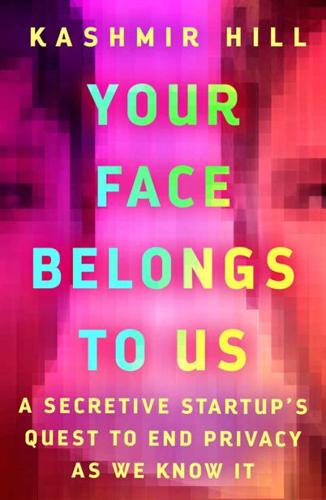
Your Face Belongs to Us: A Secretive Startup's Quest to End Privacy as We Know It
by
Kashmir Hill
Published 19 Sep 2023
GO TO NOTE REFERENCE IN TEXT reports emerged that South Korea: Sangmi Cha, “S.Korea to Test AI-Powered Facial Recognition to Track COVID-19 Cases,” Reuters, December 13, 2021. GO TO NOTE REFERENCE IN TEXT China: “Facial Recognition Tech Fights Coronavirus in Chinese City,” France 24, July 13, 2021. GO TO NOTE REFERENCE IN TEXT Russia: “Moscow Deploys Facial Recognition Technology for Coronavirus Quarantine,” Reuters, February 21, 2020. GO TO NOTE REFERENCE IN TEXT After traveling abroad: Patrick Reevell, “How Russia Is Using Facial Recognition to Police Its Coronavirus Lockdown,” ABC News, April 30, 2020. GO TO NOTE REFERENCE IN TEXT tried to pass a bill: Ed Chau, “Facial Recognition Regulation: AB 2261 Is a Long Overdue Solution,” CalMatters, June 2, 2020.
…
A pandemic took priority over privacy. Clearview AI, as if disappointed to fall out of the news cycle, sought to capitalize on the crisis. In March 2020, The Wall Street Journal reported that the company was “in discussions” with unnamed state agencies “about using its technology to track patients infected by the coronavirus.” The unverified claim sounded like startup hype, but it was true that the company’s software could theoretically be used for tracking people with Covid-19 and anyone they came into contact with. Reports emerged that South Korea, China, and Russia were tracking faces to try to control the spread of the virus.

Rationality: What It Is, Why It Seems Scarce, Why It Matters
by
Steven Pinker
Published 14 Oct 2021
Our World in Data. https://ourworldindata.org/economic-growth. Roser, M., Ortiz-Ospina, E., & Ritchie, H. 2013. Life expectancy. Our World in Data. https://ourworldindata.org/life-expectancy. Roser, M., Ritchie, H., Ortiz-Ospina, E., & Hasell, J. 2020. Coronavirus pandemic (COVID-19). Our World in Data. https://ourworldindata.org/coronavirus. Rosling, H. 2019. Factfulness: Ten reasons we’re wrong about the world—and why things are better than you think. New York: Flatiron. Roth, G. A., Abate, D., Abate, K. H., Abay, S. M., Abbafati, C., et al. 2018. Global, regional, and national age-sex-specific mortality for 282 causes of death in 195 countries and territories, 1980–2017: A systematic analysis for the Global Burden of Disease Study 2017.
…
Once again, the violation of the axioms of rationality spills over from private choices into public policy. In an eerie premonition, forty years before Covid-19 Tversky and Kahneman asked people to “imagine that the U.S. is preparing for the outbreak of an unusual Asian disease.”31 I will update their example. The coronavirus, if left untreated, is expected to kill 600,000 people. Four vaccines have been developed, and only one can be distributed on a large scale. If Miraculon is chosen, 200,000 people will be saved. If Wonderine is chosen, there’s a ⅓ chance that 600,000 people will be saved and a ⅔ chance that no one will be saved.
…
Acta Psychologica, 43, 239–51. https://doi.org/10.1016/0001-6918(79)90028-3. Walker, C., Petulla, S., Fowler, K., Mier, A., Lou, M., et al. 2019. 10 years. 180 school shootings. 356 victims. CNN, July 24. https://www.cnn.com/interactive/2019/07/us/ten-years-of-school-shootings-trnd/. Wan, W., & Shammas, B. 2020. Why Americans are numb to the staggering coronavirus death toll. Washington Post, Dec. 21. https://www.washingtonpost.com/health/2020/12/21/covid-why-we-ignore-deaths/. Warburton, N. 2007. Thinking from A to Z (3rd ed.). New York: Routledge. Wason, P. C. 1966. Reasoning. In B. M. Foss, ed., New horizons in psychology. London: Penguin. Weber, M. 1922/2019.
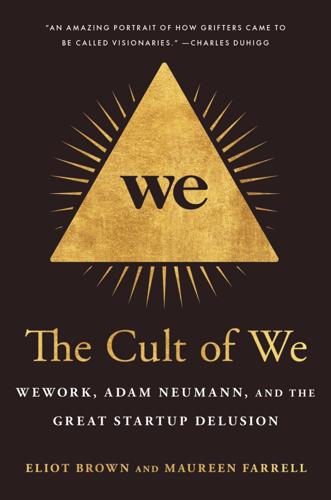
The Cult of We: WeWork, Adam Neumann, and the Great Startup Delusion
by
Eliot Brown
and
Maureen Farrell
Published 19 Jul 2021
The onset of the pandemic sent the ride-hailing market into a tailspin, reversing an early 2020 rally in Uber’s shares. Son, again on his back foot, took to PowerPoint. In May 2020, during a call with investors, he featured a slide of horses stampeding into what he called “the valley of the coronavirus” with some unicorns flying out. Some companies would die, he said. Others would fly out stronger. Amid the storm, he had to admit the obvious: the dream was dead. SoftBank announced it was shelving its fund-raising plans for Vision Fund 2. It would use only its own money for the fund, until it could show the world some good results.
…
The marching orders were to keep slimming down and turn profitable. There would be no more Summer Camp, no sprawling events team, no surf pools or divisions that advised Fortune 500 companies on culture. WeWork was in the subleasing business. Claure predicted that WeWork would be generating more cash than it consumed by 2021. Then came the coronavirus. When the virus spread around the globe in March, many of WeWork’s defining features suddenly became vulnerabilities. WeWork’s offices were all about social interaction—they were about high density and about going into the office rather than staying at home. And on the business side, they were flexible, easily canceled often with just days’ or weeks’ notice.
…
Even though Nikola wasn’t yet manufacturing trucks, Milton inspired investors by painting a picture of how its design would remake the whole enormous trucking sector. Public market investors, including novices using the app Robinhood—some first-time stock pickers bored and looking for entertainment during the coronavirus shutdown—rushed into the frenzy. Nikola’s valuation eclipsed that of Ford, topping $30 billion. There were eerie parallels to WeWork and Neumann. Milton sold $94 million of stock as the company prepared to go public. Under his watch, Nikola bought a Jet Ski company. He purchased a private plane.

Fear Is Just a Word: A Missing Daughter, a Violent Cartel, and a Mother's Quest for Vengeance
by
Azam Ahmed
Published 26 Sep 2023
GO TO NOTE REFERENCE IN TEXT a negative diagnosis can be a death sentence Rocio Garcia-Diaz, “Effective Access to Health Care in Mexico,” BMC Health Services Research, August 12, 2022, https://bmchealthservres.biomedcentral.com/articles/10.1186/s12913-022-08417-0. GO TO NOTE REFERENCE IN TEXT public health system Nathaniel Parish, “Is Mexico Prepared to Confront Coronavirus?,” Americas Quarterly, March 17, 2020, https://www.americasquarterly.org/article/is-mexico-prepared-to-confront-coronavirus/. GO TO NOTE REFERENCE IN TEXT The Shriners Hospital for Children Shriners Children’s, “Financial Assistance. Shriners Children’s Provides Care for Families Regardless of Financial Circumstances,” https://www.shrinerschildrens.org/en/patient-information/billing-insurance-and-financial-assistance/financial-assistance; Shriners Children’s, “Shriners Hospitals for Children Recognized Six Times by U.S.
…
Páez, Alejandro, “10 entidades del país concentran más de la mitad de desaparecidos y no localizados en México,” Crónica, July 17, 2022, https://www.cronica.com.mx/nacional/10-entidades-pais-concentran-mitad-desaparecidos-localizados-mexico.html. Parish, Nathaniel, “Is Mexico Prepared to Confront Coronavirus?,” Americas Quarterly, March 17, 2020, https://www.americasquarterly.org/article/is-mexico-prepared-to-confront-coronavirus/. Peralta, Concepción, “Masacre de San Fernando: Fredy Lala sigue huyendo de la muerte,” Pie de Página, September 17, 2015, https://enelcamino.piedepagina.mx/ruta/masacre-de-san-fernando-fredy-lala-sigue-huyendo-de-la-muerte/.
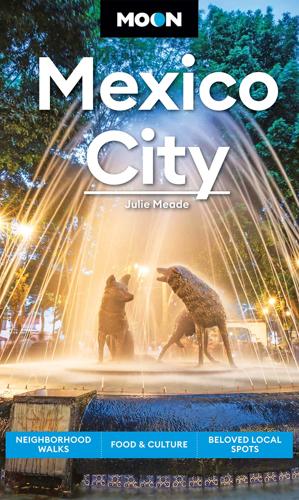
Moon Mexico City: Neighborhood Walks, Food & Culture, Beloved Local Spots
by
Julie Meade
Published 7 Aug 2023
More information about the current situation, as well as lists of COVID test providers, can be found at the US Embassy in Mexico’s website (https://mx.usembassy.gov) or at local consulate sites. The Mexican government provides health and safety updates (in Spanish) at https://coronavirus.gob.mx [URL inactive]. You can also get updated Coronavirus stats at the World Health Organization’s Mexico Coronavirus Dashboard (https://covid19.who.int). MEDICAL ASSISTANCE The quality of basic medical treatment, including dentistry, is high in Mexico City. Large hotels usually have a doctor on staff or a list of recommended physicians in the neighborhood.
…
H1N1, or swine flu, was a major health concern in Mexico City in the spring of 2008, but it is no longer a major health concern in Mexico. To date, the mosquito that carries the Zika virus is not found in Mexico City, owing to the city’s high altitude. COVID-19 At the time of writing in the fall of 2022, Mexico City had mostly stabilized from the effects of the coronavirus, but the situation is constantly evolving. Now more than ever, Moon encourages readers to be courteous and ethical in their travel. Get vaccinated if your health allows, make an effort to follow all Mexican health protocols and customs, and if possible, test regularly before, during, and after your trip to ensure you continue to test negative for COVID-19.
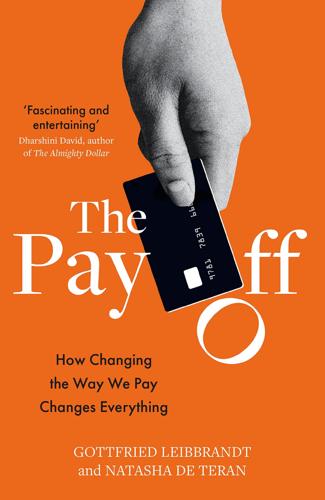
The Pay Off: How Changing the Way We Pay Changes Everything
by
Gottfried Leibbrandt
and
Natasha de Teran
Published 14 Jul 2021
Salaries in Albania, drastic gap between the minimum and maximum pay (https://balkaneu.com/salaries-albania-drastic-gap-minimum-maximum-pay/) Data on cash usage in various countries from McKinsey: ‘Attacking the cost of cash’ (2018). www.mckinsey.com/industries/financial-services/our-insights/attacking-the-cost-of-cash For more on access to cash in Bristol, see: ‘Mapping the availability of cash – a case study of Bristol’s financial infrastructure’, University of Bristol, http://www.bris.ac.uk/geography/research/pfrc/themes/finexc/availability-of-cash/ Figures on cost of cash taken from: ‘Access to Cash Review’, final report (2019). www.accesstocash.org.uk/media/1087/final-report-final-web.pdf For the quotes on printing money, see: www.nytimes.com/2020/03/23/upshot/coronavirus-fed-extraordinary-response.html; https://twitter.com/AsILayHodling/status/1241008225924845568; www.reuters.com/article/us-health-coronavirus-ecb-qe/ecb-primes-money-printing-gun-to-combat-coronavirus-idUSKBN21D0J4 For the story on Sweden’s cash decline and resistance, see www.spink.com/media/view?id=338; Kontant Upproret, ‘The cash uprising – the voice of cash in society’ (www.kontantupproret.se) Björn Eriksson was quoted in D.
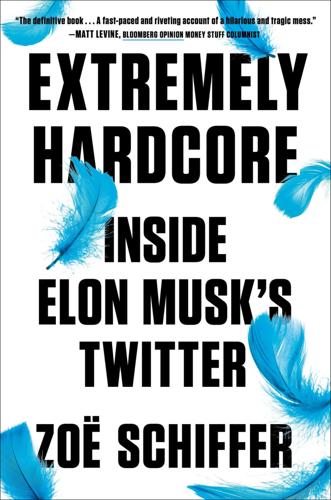
Extremely Hardcore: Inside Elon Musk's Twitter
by
Zoë Schiffer
Published 13 Feb 2024
As a result of the settlement, Musk was also required to have his tweets approved by a “Twitter sitter,” a securities lawyer at Tesla, if they contained material business information about the automaker. If there were lessons to be learned from tweeting indiscriminately, Musk did not care to learn them. In fact, his posts soon became even more inflammatory. In 2020, he denied the seriousness of the Covid-19 pandemic (“The coronavirus panic is dumb”), and shared transphobic beliefs (“Pronouns suck”), cultivating fandoms on right-wing corners of the internet. The successes of SpaceX and Tesla buoyed his reputation. Sure, he was posting in a manner that would get most other CEOs ousted, but his companies were innovative—and Tesla’s share price continued to reflect that.
…
GO TO NOTE REFERENCE IN TEXT “Am considering taking Tesla”: Elon Musk, Twitter post, August 7, 2018, 12:48 p.m., twitter.com/elonmusk/status/1026872652290379776. GO TO NOTE REFERENCE IN TEXT he did not respect the SEC: Lesley Stahl, “Tesla CEO Elon Musk: The 60 Minutes Interview,” CBS News, December 9, 2018, cbsnews.com/news/tesla-ceo-elon-musk-the-2018-60-minutes-interview/. GO TO NOTE REFERENCE IN TEXT “The coronavirus panic”: Elon Musk, Twitter post, March 6, 2020, 3:42 p.m., twitter.com/elonmusk/status/1236029449042198528. GO TO NOTE REFERENCE IN TEXT shared transphobic beliefs (“Pronouns suck”): Elon Musk, Twitter post, July 24, 2020, 11:42 p.m., twitter.com/elonmusk/status/1286869404874088448.
…
GO TO NOTE REFERENCE IN TEXT did not go unnoticed by the FTC: Interim Staff Report, “The Weaponization of the Federal Trade Commission: An Agency’s Overreach to Harass Elon Musk’s Twitter,” Committee on the Judiciary and the Select Subcommittee on the Weaponization of the Federal Government, March 7, 2023, judiciary.house.gov/sites/evo-subsites/republicans-judiciary.house.gov/files/evo-media-document/Weaponization_Select_Subcommittee_Report_on_FTC_Harrassment_of_Twitter_3.7.2023.pdf. GO TO NOTE REFERENCE IN TEXT Chappelle got Covid after hanging: Emily Kirkpatrick, “Dave Chappelle Tests Positive for COVID-19 After Hanging Out with Grimes, Elon Musk, and Joe Rogan,” Vanity Fair, January 22, 2021, vanityfair.com/style/2021/01/dave-chappelle-tests-positive-coronavirus-joe-rogan-grimes-elon-musk. GO TO NOTE REFERENCE IN TEXT “Anyone recognize this person”: Elon Musk, Twitter post, December 14, 2022, 10:50 p.m., twitter.com/elonmusk/status/1603235998263123969. GO TO NOTE REFERENCE IN TEXT “locate his target”: Drew Harwell and Taylor Lorenz, “Musk Blamed a Twitter Account for an Alleged Stalker.

Capitalism and Its Critics: A History: From the Industrial Revolution to AI
by
John Cassidy
Published 12 May 2025
Any prediction of capitalism’s demise needs to take account of its powers of rejuvenation, which Marx himself pointed to, and the ability of governments to manage it through sticky patches. Although Keynesian policies are out of fashion today, they invariably reappear whenever capitalism is under serious threat. In 2020, as many countries shuttered large parts of their economies to control the coronavirus pandemic, global GDP fell by 2.7 percent, according to the IMF. This was first worldwide recession since 2009 and the deepest since World War II. But in 2021, after many Western governments introduced large stimulus packages and scientists discovered vaccines for Covid-19, global GDP rebounded strongly, rising 6.5 percent.
…
Although White House officials described these measures as limited and targeted, they provided a stark demonstration of how attitudes toward trade and globalization had shifted in the quarter of a century since the US government had championed China’s entry to the World Trade Organization.42 In this changed environment, some economists argued that globalization was in wholesale retreat; others said the reversal had been exaggerated. Despite Brexit, the rising popularity of protectionist measures, and the coronavirus shutdowns in many countries, the volume of world trade and international capital flows, two standard metrics of globalization, had continued to rise. In 2022, according to the World Trade Organization, the overall value of merchandise trade (imports and exports of all goods) reached a new record of $25.3 trillion,43 before falling back slightly in 2023 as the global rebound from the pandemic slowed.44 Data on capital flows is incomplete, but cross-border lending by banks and other financial intermediaries had also continued to expand.
…
If you looked at the volume of trade in goods relative to the size of the world economy as a whole, rather than in dollar terms, it peaked in 2008, at about 50 percent, then fell back to about 42 percent in 2020.46 According to the OECD, the level of foreign direct investment—cross-border purchases of ownership stakes in companies or projects—relative to world GDP was lower in 2023 than it was in 2013.47 During the same period, rising threats of protectionism and the coronavirus pandemic’s exposure of the fragility of international supply chains had led to a wave of “onshoring,” in which multinational companies moved production or input sourcing closer to home. According to Barclays investment bank, the number of companies mentioning onshoring in their communications quadrupled between 2020 and 2022.48 The political pressures that were driving this turnaround showed no signs of relenting.

100 Years of Identity Crisis: Culture War Over Socialisation
by
Frank Furedi
Published 6 Sep 2021
It seeks to justify itself on the basis of expertise and process rather than political vision. It self-consciously eschews politics and attempts to de-politicise controversial issues by outsourcing their management and decision making to expert institutions, courts and international bodies such as the International Monetary Fund. Except in unusual circumstances, such as during the coronavirus pandemic, when politicians explicitly gave way to scientists, technocratic governance rarely exists in a pure form. And with good reason: on its own, technocratic governance cannot motivate or inspire people. This is why a technocracy relies for its credibility on policies and ideals that are external to itself.
…
Their leaders advocate ‘technoscientific means to achieve happiness, a total control of emotions, and an improvement of human character’.755 Moral neuroenhancement, unlike previous forms of moral engineering, ‘operates by altering brain states or processes directly’, through the application of drugs or the use of brain modulation techniques.756 Although occasionally there are outcries against the influence and power of experts, technocratic and therapeutic governance itself is rarely a focus of political dispute. During the coronavirus pandemic the different sides of the argument over the efficacy of lockdown and quarantine measures sought to legitimate their argument by justifying it on the ground of their mental health impact. All sides of the debate appeared to have internalised the fundamentals of the therapeutic ethos but drew different political conclusions from it.
…
Technocrats are constantly asking the question ‘which nudging techniques can we use to further increase awareness?’764 They believe that through psychological manipulation they can create public awareness that ensures that ‘very large numbers of people form powerful groupings, like a “swarm”, to produce massive social outcomes’.765 The extensive use of nudging and behavioural economics during the coronavirus pandemic illustrates how the engineering of people’s ‘decision making’ rapidly displaced open politically informed guidance and leadership. The ethos and practice of raising awareness is based on the unstated and often unacknowledged assumption that behavioural change is important for both the individual and for society.

Can We Talk About Israel?: A Guide for the Curious, Confused, and Conflicted
by
Daniel Sokatch
Published 18 Oct 2021
-facilitated normalization of relations with two tiny, wealthy, not particularly democratic Persian Gulf states, the United Arab Emirates and Bahrain. In March 2020, after yet another inconclusive election, Netanyahu once again managed to remain prime minister (and, he hoped, avoid criminal prosecution while in office) by forming a coalition government with his chief rival, the centrist Blue and White Party, ostensibly to combat the coronavirus pandemic. Bibi’s political wizardry is unmatched in Israeli history. But all this has come at a price—and the price has been the quality and character of Israel’s democracy. For the last decade or so, the Economist Intelligence Unit’s “Democracy Index” has consistently ranked Israel as a “flawed democracy,” not a full one.
…
A few months later, in January 2020, the Trump administration released its “Peace to Prosperity” plan for Israel and the Palestinians, which seemed to offer Israel a green light to annex territory on the West Bank. In March 2020, Israel held a third inconclusive election. Once again, Bibi pledged that, if elected, he would begin to annex. In April 2020, Netanyahu and opposition leader Benny Gantz announced their intention, in the face of the coronavirus pandemic sweeping the world, to form a unity government, with the two men rotating the prime ministership; they would be committed to working together on just two issues: fighting the virus and beginning to annex land in the West Bank. In August, the United Arab Emirates, a tiny, oil-rich Gulf state, and Israel announced that they would normalize relations; this announcement was followed by the news that Bahrain, another small, oil-rich Gulf state, would follow suit.
…
Tag Meir hosts solidarity meetings and events that bring Jews and Arabs together: marches, candle lighting during Chanukah, and joint iftars.* We operate student chapters at several universities. The students engage in Tag Meir activities, like giving out dates to break the Ramadan fast, helping out families of foreign workers, and assisting elderly people during the coronavirus pandemic. During the first COVID-19 lockdown, we handed out tens of thousands of masks in Bnei Brak.** Our representatives visit sites of hate crimes as promptly as possible to stand in solidarity with the victims and to offer emotional, financial, and moral support. For example, in Sakhnin, in northern Israel, two large Christmas trees outside one of the largest churches in the city were set on fire.
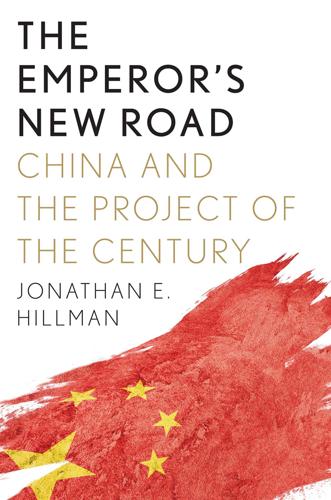
The Emperor's New Road: How China's New Silk Road Is Remaking the World
by
Jonathan Hillman
Published 28 Sep 2020
The question is whether the BRI will add to China’s power or detract from it. That hinges on China having the discipline to choose the right projects and walk away from the wrong ones. In the BRI’s first six years, its mission has not merely creeped but cascaded. Mistakes were surfacing even before the coronavirus pandemic paralyzed the global economy in 2020, exacerbating the BRI’s preexisting conditions and revealing how the very connections it aims to strengthen carry both promise and peril. As the following chapters show, the BRI is an imperial project in the rewards that China could reap as well as in the risks it faces.
…
If the BRI was magically paused and no more projects were announced, its current footprint would still take years to unfold. Ultimately, China’s economy will determine how long the BRI continues and in what form. China’s foreign reserves have dropped substantially since the BRI was launched, and it faces rising costs and shrinking revenues at home. Even before the coronavirus pandemic, there were indications of a pullback on BRI-related projects, suggesting that project announcements could be slimmed down in the coming years. That is bad news for China’s massive state-owned firms, but scarcity may also make oversight easier and encourage Beijing to increase the quality of its projects.
…
Early mistakes along the BRI occurred in a relatively forgiving global economy, and as Warren Buffet is fond of saying, “you only find out who is swimming naked when the tide goes out.”33 The risks are probably greater than Chinese officials appreciate. Most infrastructure booms have gone bust. The coronavirus pandemic is laying bare the BRI’s flaws, even as it creates new needs that China could exploit. Developing and emerging economies that borrowed heavily are being pushed beyond the brink. The same instinct for secrecy that hides the terms of China’s deals along the BRI concealed the outbreak. Most troubling for Xi’s vision, China shared the virus with the world through the very connections the BRI aims to strengthen.
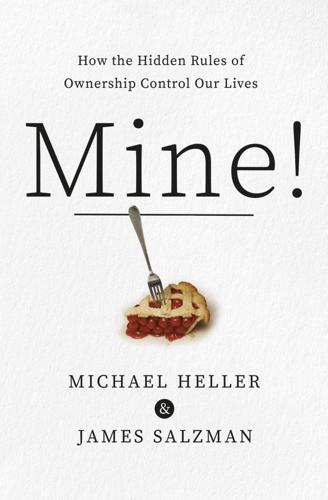
Mine!: How the Hidden Rules of Ownership Control Our Lives
by
Michael A. Heller
and
James Salzman
Published 2 Mar 2021
The conflicts are growing more acute: as beach-spreaders are pushing the boundaries of possession, rising sea levels are shrinking New Jersey beaches. Local residents pay for lifeguards and beach upkeep and get mad when beach-spreaders keep them away from the water. Regional variations in beach possession symbols matter even more in the COVID-19 era. That’s why White House coronavirus adviser Deborah Birx urged beachgoers to defend circles of sand around their umbrellas: “Remember that is your space, and that is the space you need to protect.” She was arguing for uniform beach spacing nationwide. Bad ownership design can have deadly consequences in New Jersey, Florida, and elsewhere.
…
It never happens: Researchers do remove items from strangers’ carts in psychology experiments; see Jodi O’Brien, “Building and Breaching Reality,” in Jodi O’Brien, ed., The Production of Reality: Essays and Readings on Social Interaction, 6th ed. (Thousand Oaks, Calif.: Sage Publications, 2016), 451–52; and on television prank shows, see “Butterfly Crime Scene,” Impractical Jokers, TruTV, season 1, episode 2, December 15, 2011. On toilet paper filching, see Jordan Reynolds, “Coronavirus Panic-buyers ‘Stealing from Trolleys’ at Black Country Cash and Carry,” Express and Star (Wolverhampton, UK), March 11, 2020. The real rule is “Finders give it back”: There are many stories like this one: Mariel Padilla, “Teenager, an Aspiring Detective, Returns $135,000 He Found,” New York Times, May 9, 2020.
…
The Anticommons in Biomedical Research,” Science 280 (May 1998): 698–701. gene-editing technologies: Jorge L. Contreras, “The Anticommons at Twenty: Concerns for Research Continue,” Science 361 (July 2018): 335–37. Innovations using these tools could save your life: Giorgia Guglielmi, “First CRISPR Test for the Coronavirus Approved in the United States,” Nature, May 8, 2020. Indeed, the Supreme Court decided: eBay Inc. v. MercExchange, L.L.C., 547 U.S. 388 (2006). “I was a single mom”: Chavie Lieber, “Fashion Brands Steal Design Ideas All the Time. And It’s Completely Legal,” Vox, April 27, 2018. “Splurge vs.
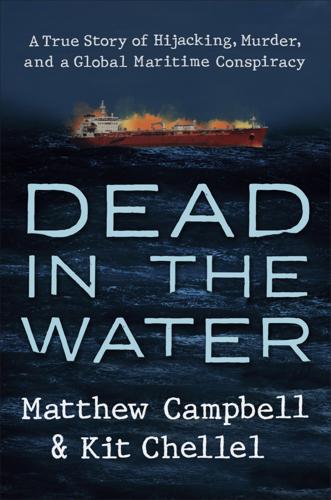
Dead in the Water: A True Story of Hijacking, Murder, and a Global Maritime Conspiracy
by
Matthew Campbell
and
Kit Chellel
Published 2 May 2022
To some in the Lloyd’s orbit, selling insurance, even in this roundabout way, to someone who’d deliberately wrecked at least one tanker, and probably two, was hard to stomach. To others it wasn’t so surprising. The same moral flexibility had allowed the market to survive scandals and financial mishaps for more than three hundred years. The newest threat to the occupants of One Lime Street was the novel coronavirus, which was expected to cost Lloyd’s members at least 6 billion pounds as companies claimed on policies covering unexpected business interruption. Globally, the insurance industry responded with increasingly creative ways to avoid having to compensate clients. Early in the pandemic, an American law firm asserted that since the virus was microscopic and could only survive temporarily outside the human body, the damage it caused wasn’t physically quantifiable.
…
GO TO NOTE REFERENCE IN TEXT Early in the pandemic: David Yaffe-Bellany, “U.S. Businesses Are Fighting Insurers in the Biggest Legal Battle of the Pandemic,” Bloomberg Businessweek, Nov. 2, 2020, https://www.bloomberg.com/news/features/2020-11-02/should-insurers-have-to-compensate-businesses-for-coronavirus-lockdowns. GO TO NOTE REFERENCE IN TEXT In the UK, Lloyd’s members: Lucca de Paoli and Jonathan Browning, “Insurers Face More Covid Payouts as U.K. Court Appeal Fails,” Bloomberg News, Jan. 15, 2021, https://www.bloomberg.com/news/articles/2021-01-15/insurers-face-covid-payouts-as-appeal-of-u-k-court-ruling-fails.
…
Talbot Underwriting Ltd & Others Brillante Virtuoso investigations breach of contract legal strategy to fight Suez Fortune, 118–19 cargo insurers settle salvor claims, 128–29 Christos and informant Theodorou, meetings with and information received from, 163–74 conflict between Veale/Conner and lawyers, 186–88 Conner hired by Veale, 120 fire and explosives experts’ findings, 87–88 Iliopoulos arrested on suspicion of fraud, 160–61 Iliopoulos stonewalling in lawsuit, 145–46 inquest into Mockett’s death, 91–97 insurance syndicates refusal to work with one another and, 118 insurer reluctance to accuse Iliopoulos of wrongdoing, 131–32 insurer syndicate market meeting and, 127–29 law enforcement investigations, lack of progress in, 233, 240–41 Marquez account of Brillante attack, 179–82 Mockett hired to provide damage survey, 44–45 Mockett murdered by car bomb, 60–63 Mockett’s diary and Brillante dossier stolen, 78–79 Mockett’s examination of Brillante, 52–55 Norton Rose security breach and threats against Lallis, 142–45 piracy expert’s report concluding attack by Somali pirates unlikely, 79 Piraeus Bank as co-assured on Brillante’s hull insurance, 162–63 Plakakis’ account of Brillante plot, 198–204 Plakakis and family rescue arranged by Conner, 208–13 Plakakis statement to police, 188–90 separate investigations by hull and cargo insurers, 79–80, 117–18 Sloane oversees ship-to-ship transfer of oil from, 84, 86–88, 89 Stokes, suspicious death of, 125–26, 238 summons to testify in Brillante case, 147, 155 Theodorou account and negotiations with insurers, 166–74 Theodorou evidence and expert analysis, differences between, 186 USS Philippine Sea, statements of Brillante crew given to, 131–32 Veale and Conner advocate for aggressive approach, 136 Veale and Conner rebuffed in request for British law enforcement evidence, 130–31 Veale’s 2013 meeting with insurers, 133 Veale’s Project Tundra investigation, 113–19 Zavos’ and insurer’s strategy for trial, 132–33 Zavos given investigative oversight, 138–39 Britannia, 4 Browder, Bill, 217 bunkering, 193 Bureau Veritas, 152 C Captain Phillips (film), 15, 29–30 cargo insurance, 35, 42, 117–18, 127–29 Carter-Ruck, 243 Castro, Fidel, 5 catastrophic hogging, 115 Central Mare, 32, 33–34, 114 Chevriot, Nigel, 49 Christos (pseudonym), 163–64, 166, 167, 169–74 City of London police, 128, 137, 142, 160–61, 178, 188, 189, 190, 209–13, 233, 239–40 coffin ships, 102 Columbus, 230 Conner, Michael background and law enforcement career of, 120–23 belief British law enforcement could do more against Brillante fraudsters, 233–34 contacts Cynthia Mockett with verdict, 226–27 coordinates rescue of Plakakis in Greece, 208–13 Greek complaint against, 232 hired by Veale to investigate Brillante attack, 120 investigation by, 123–26 at judgment in trial, 216–17 Marquez gives official statement on Brillante attack, 179–82 meetings with Christos and informant Theodorou, 163–74 mixed feelings about verdict of, 226 Plakakis statement to police and, 188–90 provides protection for Lallis, 145 visits Mockett’s grave, 231–32, 233, 234–35 visits with and keeps Cynthia Mockett informed of investigation, 124–26, 141–42 Zavos and, 136–37, 178–79 container ships, 11–12 coronavirus. See COVID-19 pandemic coroners, 92 Costoulas, George, 192 COVID-19 pandemic Iliopoulos’s purchase of passenger vessels during, 230 Lloyd’s members, liabilities of, 231 Cunningham, Paul, 38, 39–40, 114, 115, 116, 138–39 breach of contract legal strategy to fight Suez Fortune, 118–19 Christos and informant’s offer to help insurers and, 163–64 Christos and informant Theodorou, meetings with, 170–72 discussions about Plakakis testimony in court, 205–6 hires Veale to investigate Brillante attack, 75–76 Plakakis, meetings with, 213 verdict in Suez Fortune case and, 226 D Dawson, Charles, 81 Death Ship, The (Traven), 103 Deepwater Horizon, 87 Demosthenes, 100 Despina Andrianna, 229–30 disclosure, 146 Drake, Francis, 38 E East India Company, 4 Economist, The, 9 Eggers, Peter MacDonald, 216, 217, 221–24 Egypt, 4 Elli, 114, 115, 117, 118, 129, 154, 195 European Business Information Services (EBIS), 73–74, 113, 187 F Facey, Roy, 49, 61, 64–67, 205–6 identified as potential target by British embassy and evacuated, 66–67, 238 Mockett discusses Brillante case with, 57–58 prepares report on Mockett’s background for Yemeni police, 66 Fagan, Michael, 71 Far Eastern Regional Investigation Team (FERIT), 106 Financial Conduct Authority, 137 Five Oceans Salvage, 115, 118, 202 flagging of vessel, 31–32, 150 Flaux, Julian, 135, 157, 159, 160, 161–62 foenus nauticum (maritime interest), 100 Foreign & Commonwealth Office (FCO), 62–63, 94 G Gadani breaking yards, 89–90 Gaisman, Jonathan clients of, 217 examination of Iliopoulos at pretrial by, 158, 159–60 as insurers’ advocate at trial, 217–21, 224–25 Gate of Tears (Bab el-Mandeb), 15 Gen.

Not the End of the World
by
Hannah Ritchie
Published 9 Jan 2024
‘Flygskam’ or ‘flight shame’ was born as an environmental movement in Sweden in 2018. But people have been talking about flying less for as long as I can remember. It’s a very reasonable position to take: most people in the world have never flown. It’s a luxury of the few. Some people had got used to hopping on a plane to attend a one-hour meeting. If the coronavirus pandemic taught us anything, it’s that most of these meetings can be done just as well online. It’s perfectly sensible that those who do fly should cut back. But aviation has given the world too much to cut it out completely. It has offered people the opportunity to migrate from one country to another.
…
Since the early days of the pandemic my team at Our World in Data have been collecting, visualising and sharing the global data on the evolution of the pandemic, updating every day, for every country, for as many metrics as possible. We quickly became the pandemic go-to for politicians, journalists, researchers and the general public. Even Donald Trump would pull out crumpled printouts of our charts to hold up to the camera on Fox News. People underpin all of these coronavirus metrics. Patients suffering, loved ones mourning, heroic doctors, nurses, volunteers and scientists saving lives with treatments and vaccines. But plastic underpins them all too. It’s there in the masks we wear to stop the virus spreading, the tests we do to check if we’ve been infected, the vials our vaccines are delivered in, and the oxygen tubes that keep those in hospital breathing.
…
It’s only then – when the image of ‘environmentally friendly’ behaviours line up with the effective ones – that being a good environmentalist might stop feeling so bad. (2) Systemic change is the key The reality is that we will not fix our environmental problems through individual behaviour change alone. This became obvious during the coronavirus pandemic. The world spent most of 2020 at home, at a huge cost to the quality of life for millions of people. Our lives were stripped back to the bare minimum. There were hardly any cars on the roads or planes in the sky. Shopping malls and entertainment venues were shut. Economies across the world tanked.
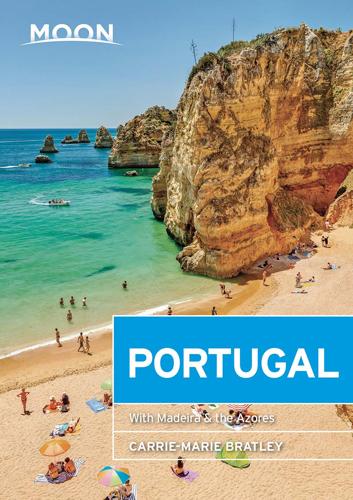
Moon Portugal
by
Carrie-Marie Bratley
Published 15 Mar 2021
From Spain: There are two overnight sleeper trains: the Lusitania Hotel Train (www.cp.pt), linking Madrid’s Chamartin Station to Lisbon in about 10 hours, and the Sud Expresso (www.cp.pt), which connects Lisbon to San Sebastian in Spain and Hendaye in southern France in about 11 hours. In Northern Portugal, a high-speed train, the Celta IC (www.cp.pt), links Porto to Vigo in 3.5 hours. Coronavirus in Portugal At the time of writing in February 2021, Portugal was significantly impacted by the coronavirus, but the situation was improving. Periodic lockdowns over the course of 2021 appeared to be causing a noticeable improvement. However, smaller local businesses have been hard hit by the pandemic, as was the country’s tourism scene, particularly in the Algarve, where the unemployment rate skyrocketed.
…
Contemporary Times Modern-day Portugal is a prospering and socially stable country despite the severe impact of the 2008 global economic crisis. Years of austerity ensued, but Portugal remained true to its resilient roots, and its recovery and payback of its €78 billion bailout have been exemplary. Prior to the 2020 coronavirus pandemic, Portugal had been enjoying a period of financial reestablishment, social and economic recovery, record-breaking tourism, and dropping unemployment, and the country had yet again managed to get back on its feet following a debilitating blow. A number of reforms are in place to underpin future growth.
…
BEFORE YOU GO • Check local websites (listed below) for restrictions and the overall health status of the destination and your point of origin. If you’re traveling to or from an area that is currently a COVID-19 hotspot, you may want to reconsider your trip. • Get vaccinated if your health status allows, and if possible, take a coronavirus test with enough time to receive your results before your departure. Some destinations may require proof of vaccination or a negative COVID test result before arrival, along with other tests and potentially a self-quarantine period, once you’ve arrived. Check local requirements and factor these into your plans
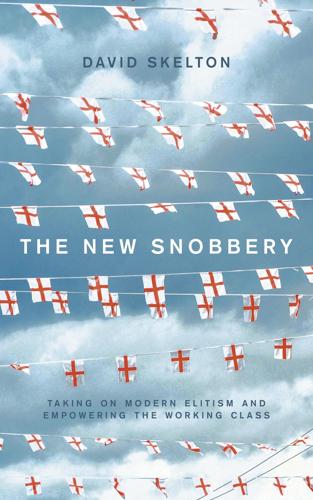
The New Snobbery
by
David Skelton
Published 28 Jun 2021
Notes 1 Jeremy Bohonos, ‘Critical race theory and working-class white men’, Gender, Work and Organization (2020), vol. 28, no. 1. 2 Mason, ‘Corbynism is over’. 3 David Brooks, ‘The problem with wokeness’, Seattle Times, 8 June 2018. 4 Helen Pluckrose and James Lindsay, Cynical Theories: How Activist Scholarship Made Everything About Race, Gender and Identity – And Why This Harms Everybody (North Carolina: Pitchstone Publishing, 2020), p. 12. 5 Rory Tingle, ‘Outrage as controversial taxpayer-funded black studies professor who says Britain is “built on racism” claims Churchill was “a white supremacist” in debate’, Daily Mail, 12 February 2020. 6 Dan Falvey, ‘Oxford lecturer doesn’t want UK to find coronavirus vaccine due to political correctness’, Daily Express, 24 April 2021. 7 Edward Said, ‘A window on the world’, The Guardian, 2 August 2003. 8 Trevor Phillips, ‘When you erase a nation’s past, you threaten its future’, The Times, 18 September 2020. 9 Craig Simpson, ‘Churchill college panel claims wartime PM was a white supremacist leading an empire “worse than the Nazis”’, Daily Telegraph, 11 February 2021. 10 ‘Keele manifesto for decolonizing the curriculum’, Pluto Journals (2018), vol. 5, nos 1–2, pp. 97–9. 11 See the ‘Decolonise Education’ section of the NUS website. 12 Gurminder K.
…
Hayek, The Constitution of Liberty (Oxford: Routledge, 2006). 12 Michael Young, ‘Down with meritocracy’, The Guardian, 29 June 2001. 13 Quoted in Wheen, ‘Satirical fiction is becoming Blair’s reality’. 14 Patrick Deneen, ‘A Tyranny Without Tyrants’, American Affairs, 20 February 2021. 15 Sandel, The Tyranny of Merit. 16 David Goodhart, ‘Middle May: the premier is one of the first to recognise Britain’s emerging political fault line’, The Spectator, 20 May 2017. 17 Quoted in ‘Classic podium: the Tories’ historic mission’, The Independent, 2 October 1998. 18 Quoted in Jonty Bloom, ‘The European Coal and Steel Community turns sixty’, BBC News, 10 August 2012. 19 Aditya Chakrabortty, ‘Why doesn’t Britain make things any more?’, The Guardian, 16 November 2011. 20 JJ Charlesworth, tweet, 5.40 p.m., 14 October 2020, https://twitter.com/jjcharlesworth_/status/1316418588207648774 21 ‘Covid-19: low-skilled men have highest death rate of working age adults’, BMJ (2020), no. 369; ‘Coronavirus related deaths by occupation, England and Wales: deaths registered between 9 March and 28 December 2020’, ONS, 25 January 2021. 22 ‘You can’t buck the market’, The Independent, 5 April 1998. 23 ‘Tony Blair’s conference speech 2005’, The Guardian, 27 September 2005. 24 ‘Gordon Brown’s Mansion House speech’, The Guardian, 22 June 2006; ‘Gordon Brown – 2007 Mansion House speech’, Political Speech Archive. 25 The Observer, 18 October 2008. 26 ‘Pope Francis: Politics cannot be “slave” to economy, finance’, The Hill, 24 September 2015. 27 Quoted in David Goodhart, ‘How to make low-skilled jobs seem more attractive’, BBC News, 17 February 2013. 28 Jonathan Cribb, ‘How are younger generations faring compared to their parents and grandparents’, Institute for Fiscal Studies, 17 October 2019

Futureproof: 9 Rules for Humans in the Age of Automation
by
Kevin Roose
Published 9 Mar 2021
McKinsey, the giant consulting firm, dubbed it “the great acceleration.” Microsoft CEO Satya Nadella claimed that the company had experienced “two years’ worth of digital transformation in two months.” In March 2020, a survey by the accounting firm EY found that 41 percent of corporate executives were investing more in automation to prepare for a post-coronavirus world. David Autor, an MIT economist and leading automation expert, called the pandemic an “automation-forcing event,” and predicted that it would usher in technological trends that would persist long after the virus was gone. The pandemic has shown us some of the benefits of automation more clearly than any Davos panel could have.
…
By 2017, three in four American adults believed Gallup and Northeastern University, “Optimism and Anxiety: Views on the Impact of Artificial Intelligence and Higher Education’s Response,” 2017. Tyson Foods, the meat producer Jacob Bunge and Jesse Newman, “Tyson Turns to Robot Butchers, Spurred by Coronavirus Outbreaks,” Wall Street Journal, July 10, 2020. FedEx started using package-sorting robots Christopher Mims, “As E-Commerce Booms, Robots Pick Up Human Slack,” Wall Street Journal, August 8, 2020. Shopping centers, apartment complexes, and grocery stores Michael Corkery and David Gelles, “Robots Welcome to Take Over, as Pandemic Accelerates Automation,” New York Times, April 10, 2020.
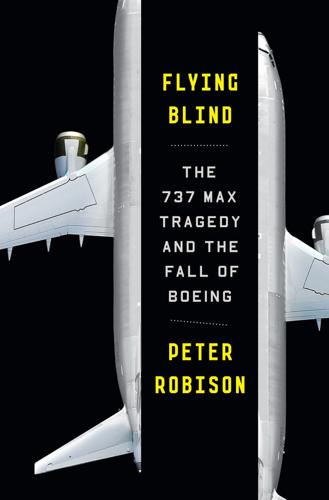
Flying Blind: The 737 MAX Tragedy and the Fall of Boeing
by
Peter Robison
Published 29 Nov 2021
One alternative on the table was shutting down one of the last well-functioning parts of Boeing’s battered commercial aircraft operation—the giant plant in Everett, Washington, that had helped produce a record number of Dreamliners the previous year. Weeks earlier, Boeing’s top market forecaster had told people at a Singapore conference that the novel coronavirus might have a temporary, manageable impact on travel, akin to the SARS epidemic of 2002. But after overwhelming hospitals in China, then Iran, and then Italy, the virus found its first U.S. epicenter in late February at a nursing home in a Seattle suburb (not unlike the place where Morton had only just made his presentation).
…
At least twice, ambulances appeared in the huge open bays of the Everett factory taking away workers who’d fallen sick; their sections were cleaned and work continued. Auto plants in Detroit closed on March 18. Everett remained open. Boeing finally said it would shut the plant five days later, a day after a fifty-seven-year-old worker there died from the coronavirus and his family sent out a plea for its closure over Facebook. In April, at the height of lockdowns around the world, passenger traffic fell a stunning 95 percent from the same month a year earlier. Airlines parked two-thirds of their global fleet, the brightly painted planes stretching for miles in neat formation in one desert storage yard in California.
…
On March 10: David Gelles, “The Emotional Wreckage,” New York Times, March 9, 2020. “They’re terrified”: Author interview with Nadia Milleron, March 2021. Early that month: Author interviews with anonymous sources, March 2020. Boeing finally said: Dominic Gates, “Boeing Worker at Everett Plant Dies from Coronavirus Infection,” Seattle Times, March 22, 2020. Boeing had to: Paula Seligson, “Boeing Plans Full Drawdown of $13.825 Billion Loan,” Bloomberg, March 11, 2020. Calhoun even considered: Douglas MacMillan, “Nikki Haley Quits Boeing Board, Citing Disagreement with Company’s Bailout Request,” Washington Post, March 19, 2020.
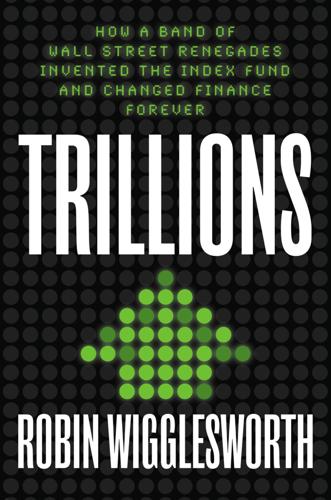
Trillions: How a Band of Wall Street Renegades Invented the Index Fund and Changed Finance Forever
by
Robin Wigglesworth
Published 11 Oct 2021
The financial crisis of 2008 was a particularly hard blow to efficient-markets proponents, even though Fama himself had shown that markets are prone to improbable “fat tail” meltdowns, and later did seminal work on factors that have in the long run made investors above-market returns (research we will return to later). Fama notes that markets are rarely perfectly efficient, and acerbically argues that the theory “is only controversial among people that don’t want to believe in it.” His view is that events like the dotcom bubble, the financial crisis of 2008, or the wild post-coronavirus market rally of 2020–21 might show that prices may not always be “right,” but it is in practice impossible to know when they aren’t before the fact. Yet the best argument for the enduring value of the efficient-markets hypothesis comes from the eminent twentieth-century British statistician George Box, who is said to have quipped that “all models are wrong, but some are useful.”
…
Regardless, it is abundantly clear that for the foreseeable future, the gushing inflows into traditional index funds and ETFs are going to continue—even though the impact on markets, the investment management business, and the finance industry as a whole is also becoming more apparent. Chapter 16 THE NEW CAPTAINS OF CAPITAL TESLA’S STOCK WENT ON A wild ride in 2020, powered by the devotion of the electric car company’s army of ordinary investors, who were suddenly stuck at home and day-trading their stimulus checks to pass time while the coronavirus pandemic raged. But in November, the rally received another huge jolt that would help make Elon Musk’s company one of the most valuable in the world. Despite its dramatic stock market gains over the past decade, S&P Dow Jones Indices—one of the biggest providers of financial benchmarks—had long refrained from adding Tesla to its flagship index, the S&P 500, for one simple reason: To be included, a company has to be consistently profitable, a requirement that Tesla had struggled to meet.
…
I have also learned an enormous amount from working with or admiring from afar financial journalists like John Authers, Gillian Tett, James Mackintosh, Philip Coggan, and Jason Zweig, as well as industry experts such as Deborah Fuhr, Ben Johnson, Eric Balchunas, and David Nadig. They are all titans upon whose shoulders I nervously perch. But someone closer to home deserves the biggest acknowledgment. In the middle of the coronavirus-induced lockdown, my daughter wrote a riddle and proudly presented it to me. Scrawled on the page, it said, “What works and works and is never finished?” To my horror I realized that the answer was me. I’m one of the lucky people who truly loves their job. Unfortunately, that can come at a cost to those around me.
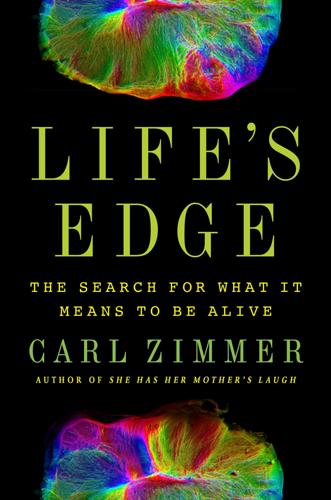
Life's Edge: The Search for What It Means to Be Alive
by
Carl Zimmer
Published 9 Mar 2021
F., Shirin Ghods, and Bernd H. A. Rehm. 2017. “Pseudomonas aeruginosa Lifestyle: A Paradigm for Adaptation, Survival, and Persistence.” Frontiers in Cellular and Infection Microbiology 7. doi:10.3389/fcimb.2017.00039. Mortensen, Jens. 2020. “Six Months of Coronavirus: Here’s Some of What We’ve Learned.” New York Times, June 18. https://www.nytimes.com/article/coronavirus-facts-history.html (accessed July 25, 2020). Moseley, Henry N. 1892. Notes by a Naturalist: An Account of Observations Made During the Voyage of H.M.S., “Challenger” Round the World in the Years 1872–1876. New York: Putnam. Moss, Helen E., Lorraine K.
…
See also hibernation Boesch, Christophe, 38 Bohr, Niels, 182, 287 Bonnet, Charles, 130 bonobos, 20 botany, 137, 138, 188 Brack, André, 271 brain function and physiology brain tumors, 59 brain waves, 13–14, 33–34 causes of brain death, 50–51 cerebral cortex, 8, 14 and coma dépassé, 51–52 and definitions of life, 275 legal/medical standards of brain death, 53–55, 55–62 and organoid research, 7–16 and organ transplants, 51–54 and perception of life, 16–20 and recognition of life, 268–69 Buchanan, John, 164 Buchner, Eduard, 169, 184 Buddhism, 41 Buffon, Georges Louis Leclerc, Comte de, 144–45 Burke, John Butler and culture of Cavendish Laboratory, 192 and origins of life theories, 219 physics training, 217 and radiobes, xiii–xviii, 167, 219, 267, 269 on viruses, 203 Burmese pythons, 75–76 cadavers, research using, 52–53, 137–38, 141, 149 Calne, Roy, 53 Campbell, George Granville, 152 Campbell, Norman Robert, xvi Campos, Luis, xviii cancers, xi, 181 Cannon, Walter B., 93 Cape Verde Islands, 152–53 Caplan, Arthur, 56 Carpenter, William, 159 Cartesian worldview, 129–30 Cassini probe, 260–61 Castoe, Todd, 75 catalysts, 284–86 Cavendish Laboratory, ix–x, xiii, xv–xviii, 192–93, 195 Cech, Thomas, 232 Chakrabarti, Ajoy, 233–34 Challenger Deep, 261 Chambliss, Clyde, 31–32 Chan, Benjamin, 122 Chang, Sherwood, 227 Children’s Hospital Oakland, 57 chimeras, 29 chimpanzees, 20, 37, 40 chlorophyll, 103–4 Choi, Charles, 258 chromosomes, 23, 27–30, 105–6, 113, 184–85, 187, 190, 193 Cleland, Carol, 275–81 Clinton, Bill, 257 cluster analysis, 275 coccoliths, 156, 160 Cold War, 178 Coleridge, Samuel Taylor, 146–47 coma dépassé, 51–52 computer modeling, 283–84 conjoined twins, 137 Connecticut College Arboretum, 102–4, 106 consciousness, 14–15, 54 Conte, Silvio, 255 Cooper, Leon N., 287 Cooper, Vaughn, 116 coronavirus, 203–9, 226 Cotard’s syndrome, 16–17 Creative Evolution (Bergson), 172 Crick, Francis, 191–95, 195–99, 224 Cronin, Lee, 267, 268–69, 287–92 cryptobiosis, 47–48 crystal structures, 190–91, 193, 195, 262, 263 Curie, Marie, x–xi, xii Curie, Pierre, x–xi cystic fibrosis, 112, 123 cytosine, 71 Czapek, Friedrich, 179 Damer, Bruce, 238 Dartmouth Medical School, 61 Darwin, Charles, xv, xviii, 37, 114, 156–57, 159, 217–18, 245 Darwin, Erasmus, 146–47, 148, 157, 218 Dayman, Joseph, 156 Deamer, David on alkaline vent theory, 247–48 astrobiology/exobiology research, 258 autocatalytic set research, 286 DNA-reading technology, 229–31, 240–42 lipid and liposome research, 226, 227–29, 231–36, 242–45 research background, 225–26 RNA-based drugs, 248–49 volcanic hot springs research, 216–17, 236–39, 243–44, 247 death cell death, 26 and coma dépassé, 51–52 cultural approaches to, 36–37 early scientific study of, 42–48, 49–55 fear of premature burial, 48–49 and human evolution, 40–41 and lost pregnancies, 30–31 medical definitions of, 51–55, 55–62 and organ transplants, 51–54 and primate thanatology, 36–40 decision-making, 81–82, 88–89 definitions of life and the abortion debate, 21–27 and astrobiology/exobiology, 265 Bohr on, 182–83 and brain death, 42, 53–55 and Burke, ix and complex chemistry, 219–20 complexity of, 282–83 current challenges, 269–72 NASA definition, 199–200, 209–10, 256–57, 270, 273, 278 philosophical approaches to, 272–75, 275–82 and Schrödinger’s Trinity College lectures, 189, 191 and Szent-Györgyi, 179–80 and viruses, 207–10 Delbrück, Max, 182, 184, 186–90, 199 Descartes, René, 129, 145 Descent of Man, The (Darwin), 37 diabetes insipidus, 59 dietary balance, 86 digestion, 72–77, 87–88 DNA and assembly theory, 292 and astrobiology/exobiology research, 262, 278 and bacteriophages, 123 and cell function, 26–28 and cryptobiosis, 47–48 and definitions of life, 27, 272, 274–75 discovery of, 191–95, 195–96 and disease resistance, 101 DNA-reading technology, 229–31, 240–42, 269 and electric charge within cells, 181 and embryonic development, 31–32 and eukaryotes, 113 and hibernation, 94, 101 and metabolic function, 71–72, 75–76 and molecular vitalism, 198 and origins of life theories, 227–34, 239–44, 249, 282–83 and prebiotic chemistry, 224 and Pseudomonas research, 120 and red blood cells, 211–12 and reproduction, 105 and Schrödinger’s aperiodic crystals, 191 and slime molds, 88 and viruses, 208–9, 215 Double Helix, The (Watson), 195 Down syndrome, 30 DropFactory, 290–92 drug resistance, 208, 211 Duclaux, Émile, 170 Dujardin, Félix, 158 Dussutour, Audrey, 86 earcockle disease, 44–45 East India Company, 35 Ebola, 242 Eccles, John, 198 echolocation, 94–95 Edsall, John, 181 EEGs, 13, 54 eggs, 45–46 Einarsdóttir, Ólöf, 231 Einstein, Albert, 287 élan vital, 172.

Cheap Land Colorado: Off-Gridders at America's Edge
by
Ted Conover
Published 1 Nov 2022
After a while I took it off so as not to stand out as the weirdo city person (and also, perhaps, to stop thinking about the widening gulf in the United States concerning everything from vaccines to racism). A lot of what my neighbors had to say about the pandemic echoed what was being said on Fox News at the time (e.g., “not much different from the common flu, which is also a coronavirus”). As one had written on Facebook, “I am NOT afraid of this stupid virus. I have NOT missed the fact that more people died in america in 2009 from swine flu than have died worldwide from coronavirus—so we can quit with the whole ‘deadly’ nonsense. I DO roll my eyes every time another anything in any state is shut down for this—nothing shut down in 2009 and they still managed to get it under control.”
…
As Bo presses on, ignoring rules and coming into contact with people who are clearly sick, I simultaneously wondered whether he would make it home with the goods and dreaded finding out what would happen if he did. As one critic wrote in 2020, “Bo, a rambunctious avatar of the unconfined, can-do spirit of the West, is a mortal danger to everyone around him.” Eventually the coronavirus made its way around the San Luis Valley. It started in towns, especially Alamosa, and enclosed agricultural facilities such as potato warehouses. La Puente implemented the measures Judy had shared with me over breakfast. But the group’s managers hadn’t anticipated that the run on canned goods and other groceries that accompanied the start of the pandemic nationwide would affect its network of food banks.

A Hunter-Gatherer's Guide to the 21st Century: Evolution and the Challenges of Modern Life
by
Heather Heying
and
Bret Weinstein
Published 14 Sep 2021
Why, for instance, if masks are pointless, are they exactly the equipment used by health professionals when trying to avoid infection from respiratory ailments? When the directives were later reversed, people who had followed them based on authority alone lost faith in those same authorities. It was then difficult to regain the public’s trust sufficiently to encourage a careful, nuanced approach to reducing the spread and impact of this novel coronavirus. Simple prescriptions make snappier sound bites, and they are easier to remember for those looking for set-and-forget solutions, but when they fail you, you are left with nowhere to stand, no ability to problem solve for yourself. Rather than blindly “trusting the science” or following the lead of authorities, learn to do at least some of the logic for yourself, and seek authorities who are willing to both show you how they arrived at their conclusions and admit when they have made mistakes.
…
Afterword In January of 2020 we went to the Tiputini Biodiversity Station in the Ecuadoran Amazon to finish our first draft of this book. When we emerged from our isolation—as our phones came alive for the first time in two weeks—we were confronted with a barrage of news, mostly trivial, of which we had been blissfully unaware. But in that onslaught there was one ominous report—a case of a “novel coronavirus” in Ecuador. The pathogen came from horseshoe bats, had jumped to people and then spread rapidly, first in Wuhan, China, and then beyond. As the two of us tried to make sense of these first hints of pandemic, it quickly became clear that there might be more to the story. Wuhan, we soon learned, housed a BSL-4 laboratory—it was, in fact, one of our planet’s two main centers of research on bat-borne coronaviruses.
…
Where once an epidemic might have been held back by barriers that limit human travel, humans now regularly transmit communicable diseases from their continents of origin to every corner of the globe. Much as people thought little about washing their hands prior to the germ theory of disease, we give no thought to the scale of misery caused by a given person transporting a new and nameless cold virus to some continent that was free of it the day before. “Novel Coronavirus” took advantage of that nonchalance before the pathogen even had a proper name. The COVID-19 pandemic is itself a symptom of another disease entirely. In the pages of this book, we call that disease “hyper-novelty.” It is caused by a rate of technological change so rapid that transitions in our environment outstrip our capacity to adapt.
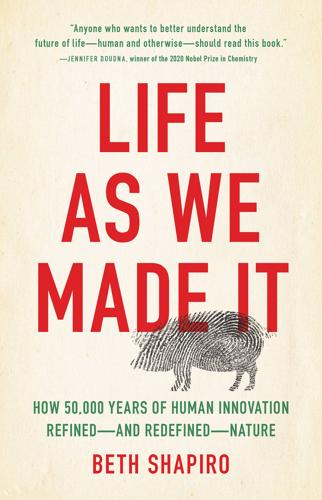
Life as We Made It: How 50,000 Years of Human Innovation Refined--And Redefined--Nature
by
Beth Shapiro
Published 15 Dec 2021
The virus responsible for the COVID-19 pandemic, SARS-CoV-2, belongs to a family of viral respiratory diseases called severe acute respiratory syndrome, or SARS. SARS-CoV-2 is a type of virus known as a coronavirus (CoV). Most coronaviruses cause mild and relatively unfrightening illnesses like the common cold. Sometimes, however, coronaviruses are more deadly. The first SARS outbreak happened when a coronavirus jumped into humans from civet cats, which probably got the virus themselves from bats. That outbreak lasted from November 2002 until July 2003, an eight-month window during which 8,098 people in 26 countries were infected and 774 people died.
…
I would also like to thank several people for feedback that helped to improve earlier drafts: Chris Vollmers, who was willing to read any chapter that loosely involved caves and also came up with the final title; Rachel Meyer, who also provided cocktails when necessary; Matt Schwartz, who needed something to do other than obsessively check the coronavirus statistics; my stepdad Tony Ezzell (of the Palm Coast Ezzells), who read the book to take his mind off the fact that his gym was closed because of the pandemic; and Sarah Crump, Katie Moon, Russ Corbett-Detig, and Shelbi Russell, who tolerated listening to me read paragraphs out loud as I tried to resolve unresolvable clunkiness.
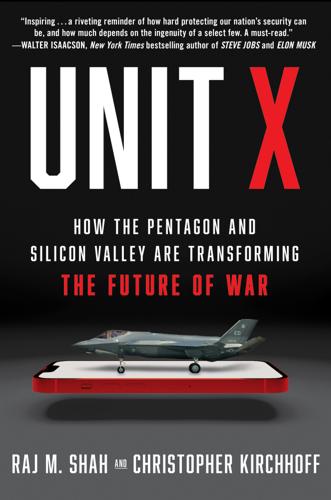
Unit X: How the Pentagon and Silicon Valley Are Transforming the Future of War
by
Raj M. Shah
and
Christopher Kirchhoff
Published 8 Jul 2024
high-tech fabs moved to Asia: Chris Miller, Chip War: The Fight for the World’s Most Critical Technology (Scribner, 2022). Chris, who had served on the White House Ebola Task Force: Christopher Kirchhoff, “Ebola Should Have Immunized the United States to the Coronavirus: What Washington Failed to Learn from the National Security Council’s Ebola Report,” Foreign Affairs, March 28, 2020, https://www.foreignaffairs.com/united-states/ebola-should-have-immunized-united-states-coronavirus. “attempted to discuss AI two years ago”: “Townhall on Artificial Intelligence,” Munich Security Forum, February 2, 2020, https://securityconference.org/en/medialibrary/asset/townhall-on-artificial-intelligence-20200215-1600/.
…
“Our Oppenheimer Moment: The Creation of A.I. Weapons.” New York Times, July 20, 2023. Kempner, Jesse, and Brooke Storkes. “Funding of Emerging-Technology Areas Pursued by Nontraditional Companies.” McKinsey & Company, September 23, 2022. Kirchhoff, Christopher. “Ebola Should Have Immunized the United States to the Coronavirus: What Washington Failed to Learn from the National Security Council’s Ebola Report.” Foreign Affairs, March 28, 2020. ———. “An Even Flatter World: How Technology Is Remaking the World Order.” The World Turned Upside Down: Maintaining American Leadership in a Dangerous Age. Proceedings of the Aspen Strategy Group, 2017, pp. 93−99. ———.

Insight Guides Iceland
by
Insight Guides
Published 6 Dec 2024
Having halted the practice back in 1989, Iceland walked out of the International Whaling Commission in 1992; after this it always seemed likely that whaling would resume at some point – and so it transpired. In 2019, however, whaling operations were halted amid decreasing demand from the Japanese market and stopped altogether the following year on account of coronavirus restrictions. Since then, the whaling industry has limped on with low quotas and arguments as to the “humane” way in which the whales are killed. At the time of writing, a working group is reviewing the regulatory framework surrounding whaling, with findings expected before the end of the year.
…
Doctors say that the reasons include an unpolluted environment, a healthy fish-based diet and exemplary public health care. Infant mortality in Iceland is, at 2.7 deaths per 1,000 children, among the lowest in the world, and certain aspects of preventative medicine, such as early detection of female cancers, are unmatched. Iceland was not spared by the coronavirus pandemic which swept the world in 2020, although it fared reasonably well compared to many other European countries. In total, there were just over 200,000 cases in Iceland, but only 229 deaths. Moments of acclaim In the last decade or so, Iceland has been hitting world headlines for all the wrong reasons, but it does have its quiet moments of acclaim.
…
These issues arguably became even more pertinent after deCODE was purchased by biopharmaceutical giant Amgen in late 2012, who formed a spin-off company around deCODE’s juicy genetics systems and database, which it then sold in 2015 to the Chinese biopharmaceutical company WuXi PharmaTech. During the coronavirus pandemic in 2020, deCODE worked closely with Iceland’s Directorate of Health in their successful approach to dealing with the virus. Looking to foreign shores One of the many paradoxes typical of Icelanders is that along with being insular, they are insatiably curious about the outside world, even to the most obscure detail.
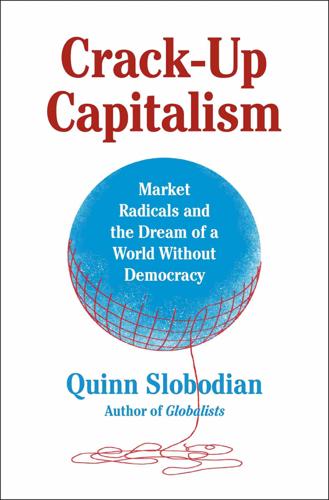
Crack-Up Capitalism: Market Radicals and the Dream of a World Without Democracy
by
Quinn Slobodian
Published 4 Apr 2023
Rowland Atkinson and Sarah Blandy, “A Picture of the Floating World: Grounding the Secessionary Affluence of the Residential Cruise Liner,” Antipode 41, no. 1 (2009). 71. Bell, Your Next Government?: From the Nation State to Stateless Nations, 56. 72. Madeline Berg, “Coronavirus: Even the World’s Largest Luxury Yacht Has Now Stopped Sailing,” Forbes, March 16, 2020, https://www.forbes.com/sites/maddieberg/2020/03/16/the-worlds-largest-luxury-yacht-suspends-operations-amid-coronavirus/?sh=6d497e7d5f78. For a similar observation see Simpson, “Cultural Political Economy of the Start-Up Societies Imaginary.” For an extraordinary story of another failed libertarian cruise ship venture see Sophie Elmhirst, “The Disastrous Voyage of Satoshi, the World’s First Cryptocurrency Cruise Ship,” Guardian, September 7, 2021, Global Newsstream. 73.
…
He rang the alarm early on the repercussions of the pandemic, foretelling a division of the world map into “green zones” that had contained the virus and “red zones” that had not. First used in West Africa during the Ebola epidemic, such zones, designated by public health officials, seemed poised to become the basis for a new political economy. Color-coded zones were rolled out to control the coronavirus in Malaysia, Indonesia, northern Italy, and France; the strategy was also considered by the White House. India divided its 1.3 billion people into a patchwork of green, yellow, and red zones, with different freedoms and restrictions in each. Global investors took note. The global citizenship broker Henley & Partners forecast that “as the curtain lifts, people will seek to move from poorly governed and ill-prepared ‘red zones’ to ‘green zones’ or places with better medical care.”61 Across the United States, regional “compacts” sprang up as competition intensified for lifesaving ventilators and protective equipment.
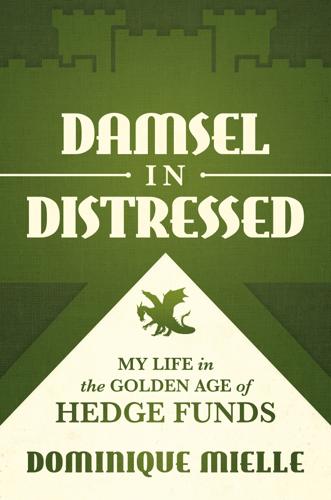
Damsel in Distressed: My Life in the Golden Age of Hedge Funds
by
Dominique Mielle
Published 6 Sep 2021
If the sum of the parts, in their estimation, is greater than the whole, activists will force management to split the company. In ACE’s case, management was proactively seeking to disassemble the pieces, starting by spinning off Aeroplan in 2005, then moving on to Jazz airlines. Have I mentioned that nothing is ever new on Wall Street? In 2020, gravely hit by the coronavirus pandemic, cash flow-bleeding airlines around the world raced to raise money in the capital markets and borrowed from the government. Mileage programs became, once again, a source of value once forgotten and unneeded as a distinct asset from the business of flying. Not anymore. In June 2020, United, American, and Spirit Airlines mortgaged their loyalty schemes as collateral for new debt.
…
By 2017, the company entered its distressed phase, crumbling over $2 billion of debt hardly supported by deteriorating earnings and a declining brand name. I got involved again, shortly but unprofitably this time. The most valuable brand had become Madewell rather than J.Crew, and equity holders were fighting to steal that value away from creditors. The story was heading toward an ugly end. It seemed wise to cut my losses. In 2020, the coronavirus spread to the U.S. and handed J.Crew its final blow; it filed for bankruptcy in May. I have no doubt that it will emerge, debt-free, and commence a third life under a “fresh-start accounting,” the nomenclature to account for a reorganization. It will likely spin off Madewell and return to square one, a smaller corporation with a single brand and considerably fewer stores.
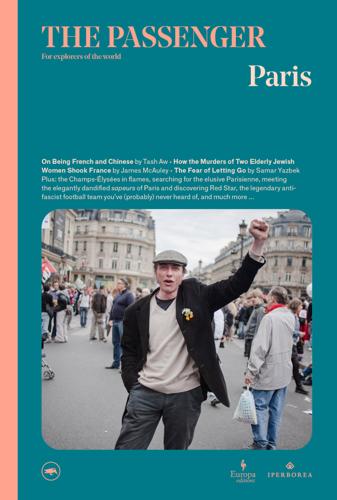
The Passenger: Paris
by
AA.VV.
Published 26 Jun 2021
The glare of the City of Light can be blinding, even for tourists: when faced with the reality of a city so different from the cherished image portrayed in films and books, some even develop a kind of culture shock known as Paris Syndrome. But the shadows seem to be lengthening, too: the Bataclan terrorist attacks, the protests of the gilets jaunes, unrest in the banlieues, Notre-Dame in flames, record heatwaves, unaffordable housing and the Coronavirus pandemic. This is not just a series of unfortunate events, these are phenomena – from overcrowding to climate change, from immigration to the repercussions of globalisation and geopolitics – that all the world’s major cities must face. Despite these challenges, the current mood in Paris remains one of renewal rather than defeat; this we can see in a new approach to environmentalism and urban planning – the dream of a city made up of numerous little centres, ultimately all interconnected – a younger generation of chefs fighting against the Michelin-star ‘class system’, the children of immigrants protesting on the streets for the right to be accepted as French and women casting off the stereotypes created for them by the world of fashion.
…
Yes, Paris and its art, its lights and its many layers that I had willingly and consciously chosen is what rekindled this excitement for me, without attempting to deceive me about what was taking place on its other, less agreeable face, one that most large and great cities also possess. Lately, and during the quarantine that followed the Coronavirus pandemic, as residents of Paris we were allowed to walk around the city only for a specific length of time over limited distances, I would go out for a walk wearing a mask for an hour in the morning and an hour in the evening. I saw the museums, the Eiffel Tower and the famous squares with their statues all deserted as if we were awaiting the Day of Judgement.
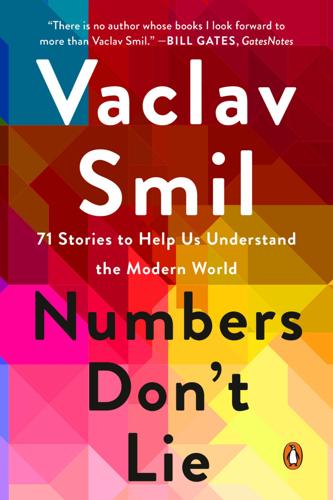
Numbers Don't Lie: 71 Stories to Help Us Understand the Modern World
by
Vaclav Smil
Published 4 May 2021
As expected, the laboratory-confirmed approach yielded the highest risk (mostly between 100 and 5,000 deaths), while the symptomatic approach had the range of 5–50 deaths, and the estimated infections in the denominator yielded risks of just 1–10 deaths per 100,000 people: the first approach showed fatalities being up to 500 times higher than the last one did! In 2020, with the spread of COVID-19 (caused by a coronavirus, SARS-CoV-2), we face the same uncertainties. The COVID-19 pandemic began in Wuhan, capital of China’s Hubei province, in late 2019. By March 30, 2020, when the worst seemed to be over, official Chinese statistics listed 50,006 cases in the city and 2,547 deaths. On April 17 the Chinese raised the death toll by a bit more than 50 percent to 3,869—but no new deaths were recorded by November 2020 while the cases rose only marginally to 50,340.
…
“Modeling the economic burden of adult vaccine-preventable diseases in the United States.” Health Affairs 35, no. 11 (2016): 2124–32. Why it’s difficult to predict how bad a pandemic will be while it is happening NHCPRC (National Health Commission of the People’s Republic of China). “March 29: Daily briefing on novel coronavirus cases in China.” March 29, 2020. http://en.nhc.gov.cn/2020-03/29/c_78447.htm. Wong, J.Y., et al. “Case fatality risk of influenza A (H1N1pdm09): A systematic review.” Epidemiology 24, no. 6 (2013). https://doi.org/10.1097/EDE.0b013e3182a67448. Growing taller Floud, R. et al. The Changing Body.
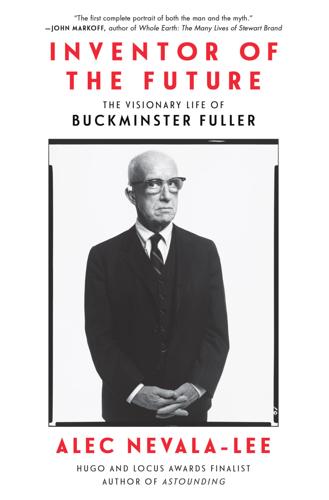
Inventor of the Future: The Visionary Life of Buckminster Fuller
by
Alec Nevala-Lee
Published 1 Aug 2022
Hurricane Katrina: Alice Rawsthorn, “Can Fuller Be Rehabilitated as a 21st Century Design Hero?,” New York Times, June 20, 2008. overflow morgues: Photo in Khaleda Rahman, “New York City Builds Makeshift Morgue to Handle Expected Rise in Coronavirus Deaths,” Newsweek, March 26, 2020, https://www.newsweek.com/nyc-erects-temporary-morgue-handle-rise-coronavirus-deaths-1494423 (accessed May 2021). “We’re talking about domes”: Soleil Ho, “SF Restaurant’s $200-Per-Person Dome is America’s Problems in a Plastic Nutshell,” San Francisco Chronicle, August 12, 2020, https://www.sfchronicle.com/restaurants/article/The-200-per-person-fine-dining-dome-is-15475555.php (accessed January 2021).
…
A glass sphere loomed over a factory that the Taiwanese technology company Foxconn promised but failed to establish in Wisconsin, while the notorious Fyre Festival offered lodging in “geodesic domes”—although they were actually repurposed tents from the Federal Emergency Management Agency. Because of their usefulness as temporary housing, domes had an uncanny way of appearing in news coverage during events that Fuller would have seen as opportunities for emergence through emergency. They served as shelters after Hurricane Katrina and overflow morgues for victims of the coronavirus, which exposed social disparities that design alone was unable to address. When a restaurant in San Francisco installed domes to allow patrons to dine outdoors during the pandemic without being troubled by the homeless, the food critic Soleil Ho observed, “We’re talking about domes because this country doesn’t take care of us.”
…
Millennials ephemeralized against their will, with rent replacing ownership and housing costs contributing to a fall in mobility. As Airbnb caused prices in its neighborhoods to rise, its single most popular property was a geodesic cabin in California. The greatest test of Fuller’s philosophy was the coronavirus pandemic, which initially seemed like a definitive moment of emergence through emergency. Fuller blamed his daughter’s death, which changed his life, on the conditions that contributed to the Spanish flu, and his views on decentralization, efficient manufacturing, online education, and remote working are more relevant now than ever.
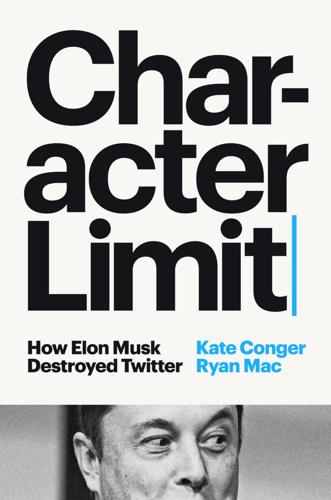
Character Limit: How Elon Musk Destroyed Twitter
by
Kate Conger
and
Ryan Mac
Published 17 Sep 2024
Business. nytimes.com/2020/02/29/business/dealbook/elliott-twitter-jack-dorsey.html. GO TO NOTE REFERENCE IN TEXT Chapter 6: A Polynesian Vacation Musk sent out a company-wide email: Mac, Ryan. “Elon Musk Told Workers They’re More Likely to Die in a Car Crash Than from Coronavirus.” BuzzFeed News, March 13, 2020. buzzfeednews.com/article/ryanmac/elon-musk-spacex-employees-car-crash-coronavirus. GO TO NOTE REFERENCE IN TEXT labeled some 300,000 tweets: Fung, Brian. “Twitter Says It Labeled 300,000 Tweets around the Election.” CNN, November 12, 2020. cnn.com/2020/11/12/tech/twitter-election-labels-misinformation/index.html.
…
Maybe the aches and chills were caused by the constant drinking and partying, but dozens of workers developed fevers and stayed away from their offices in the weeks following the event. They joked that they had the “OneVirus.” By late January, news reports were circulating on Twitter of a mysterious virus spreading rapidly across China. First detected in Wuhan, the capital city of the country’s central Hubei province, the COVID-19 coronavirus recorded its first U.S. case near Seattle on January 20, 2020. Had they perhaps contracted something other than the flu at OneTeam? Twitter employees wondered. Just as his employees rallied around him, Dorsey sent them away. On March 2, the company encouraged everyone to work from home. Twitter was one of the first major American corporations to do so—unsurprisingly, given that its chief executive already encouraged remote work.
…
The only tools they had were deleting tweets and suspending users, and they tried to reserve those punishments for the most dangerous posts—like ones encouraging fake “cures” that were, in fact, harmful. Among the do-your-own-research experts on Twitter was Musk. On March 6, he tweeted, “the coronavirus panic is dumb.” Two weeks later, on a day when the U.S. reported 2,000 known COVID cases, he posted that the country would be “close to zero new cases” by the end of April and that “kids are essentially immune” from the disease. (Children were not immune from the virus, and the U.S. averaged more than 20,000 daily COVID cases by the end of April.)

The Great Experiment: Why Diverse Democracies Fall Apart and How They Can Endure
by
Yascha Mounk
Published 19 Apr 2022
GO TO NOTE REFERENCE IN TEXT Welfare benefits are minimal: Abdul Majeed Labib, “The Islamic Republic of Afghanistan: Updating and Improving the Social Protection Index,” Asian Development Bank, August 2012, https://www.adb.org/sites/default/files/project-document/76049/44152-012-reg-tacr-01.pdf. GO TO NOTE REFERENCE IN TEXT Even before COVID-19 hit: “Coronavirus Pushing Millions into Poverty: SIGAR,” Al Jazeera, July 31, 2020. https://www.aljazeera.com/economy/2020/7/31/coronavirus-pushing-millions-of-afghans-into-poverty-sigar. GO TO NOTE REFERENCE IN TEXT There are whole stretches: “Afghanistan,” CIA World Factbook, April 21, 2021, https://www.cia.gov/the-world-factbook/countries/afghanistan.
…
GO TO NOTE REFERENCE IN TEXT from who should get loans at preferential rates: “Civil Rights, Fair Lending and Consumer Rights Organizations Urge a More Race-Conscious CRA,” National Community Reinvestment Coalition, February 16, 2021, https://ncrc.org/civil-rights-fair-lending-and-consumer-rights-organizations-urge-a-more-race-conscious-cra. GO TO NOTE REFERENCE IN TEXT who should first get access to life-saving vaccines: See Isaac Stanley Becker and Lena H. Sun, “Aiming for Fairness in the Coronavirus Fight,” Washington Post, December 20, 2020, https://www.washingtonpost.com/health/2020/12/18/covid-vaccine-racial-equity/, and Yascha Mounk, “Why I’m Losing Trust in the Institutions,” Persuasion, December 23, 2020, https://www.persuasion.community/p/why-im-losing-trust-in-the-institutions. GO TO NOTE REFERENCE IN TEXT Joe Biden vowed that his administration’s “priority”: The White House (@WhiteHouse), “Our priority will be Black, Latino, Asian, and Native American owned small businesses, women -owned businesses, and finally having equal access to resources needed to re-open and re-build,” Twitter, January 10, 2021, 5:55 p.m., https://twitter.com/WhiteHouse/status/1348403213200990209.

Chokepoint Capitalism
by
Rebecca Giblin
and
Cory Doctorow
Published 26 Sep 2022
Mark Paul, William Darity Jr., and Darrick Hamilton, “The Federal Job Guarantee—A Policy to Achieve Permanent Full Employment,” Center on Budget and Policy Priorities, Mar. 9, 2018, https://www.cbpp.org/research/full-employment/the-federal-job-guarantee-a-policy-to-achieve-permanent-full-employment. 29. Andrew Van Dam, “The U.S. Has Thrown More Than $6 Trillion at the Coronavirus Crisis. That Number Could Grow,” Washington Post, Apr. 16, 2020, https://www.washingtonpost.com/business/2020/04/15/coronavirus-economy-6-trillion. 30. Stephanie Kelten, The Deficit Myth: Modern Monetary Theory and the Birth of the People’s Economy (New York: Public Affairs, 2020). 31. A country has “monetary sovereignty” if it (a) issues its own currency and (b) borrows primarily in that currency.
…
One 2018 analysis estimated a full guarantee for US workers would cost $543 billion per year, or 3 percent of GDP.28 In exchange, we’d have everyone who wanted a job but couldn’t otherwise get one working to make society better, adding to community stability and purpose. To put that into context, US government spending in response to just the first few months of the coronavirus pandemic in 2020 is estimated at over $6 trillion,29 about twelve times as much, of which substantial portions are going straight into billionaires’ pockets via stock buybacks, special dividends, executive bonuses, and service on debt that’s held by the company’s investors, who borrowed from the company to pay themselves dividends that will worsen inequality at the public’s expense.

Visual Thinking: The Hidden Gifts of People Who Think in Pictures, Patterns, and Abstractions
by
Temple Grandin, Ph.d.
Published 11 Oct 2022
IndustryWeek, 2015. https://www.industryweek.com/talent/education-training/article/22007263/why-america-has-a-shortage-of-skilled-workers. “Construction Workforce Shortages Reach Pre-Pandemic Levels Even as Coronavirus Continues to Impact Projects & Disrupt Supply Chains.” The Construction Association, September 2, 2021. https://www.agc.org/news/2021/09/02/construction-workforce-shortages-reach-pre-pandemic-levels-even-coronavirus-0. “Conveyor Systems: Dependable Cost-Effective Product Transport.” Dematic.com. https://www.dematic.com/en/products/products-overview/conveyor-systems/. Coudriet, C. “The Top 25 Two-Year Trade Schools.”
…
ScienceDaily, May 16, 2012. https://www.sciencedaily.com/releases/2012/05/120516195408.htm. Zeman, A., et al. “Phantasia—The Psychological Significance of Lifelong Visual Imagery Vividness Extremes.” Cortex 130 (2020): 426–40. doi:10.1016/j.cortex.2020.04.003. Zhang, W., et al. “The Use of Anti-Inflammatory Drugs in the Treatment of People with Severe Coronavirus Disease 2019 (COVID-19): The Perspectives of Clinical Immunologists from China.” Clinical Immunology 214 (2020): 108393. Zimmer, C. “Many People Have a Vivid ‘Mind’s Eye,’ While Others Have None at All.” New York Times, June 8, 2021. https://www.nytimes.com/2021/06/08/science/minds-eye-mental-pictures-psychology.html. 2.

Strength in Numbers: How Polls Work and Why We Need Them
by
G. Elliott Morris
Published 11 Jul 2022
In contrast to the previous election, when national polls were “very close to spot-on, there was a two percentage point bias on the presidency, and [the pattern in] state bias was identical to what it was in 2016.” This suggests both that pollsters did not fix the underlying issues from 2016 and that something else got worse across the board.18 The causes of these errors were twofold, according to Shor. “First was overestimating support among non-college whites. Then there was a second error, due to coronavirus making Democrats stay at home,” where they were more likely to answer a pollster’s calls or fill out a survey online. Eventually, the latter bias faded as people returned to work and pandemic-era public health measures were lifted. But the first bit of error will persist, in a way that weighting for education apparently did not fix.
…
“And there will be another thing,” Shor warns; there is always the possibility that something pollsters can’t predict ahead of time will cause their polls to err. “Differential nonresponse is shockingly volatile,” Shor says. “Take social trust: It used to be relatively uncorrelated with partisanship, and then in 2016 it was correlated with partisanship.” Then, in 2020, coronavirus caused new problems. There is no way of adjusting for everything ahead of time. Shor warns that the traditional RDD polling model, and phone polling in general, “has really fundamental problems. . . . People who answer phone surveys are much, much more politically engaged than the general population.
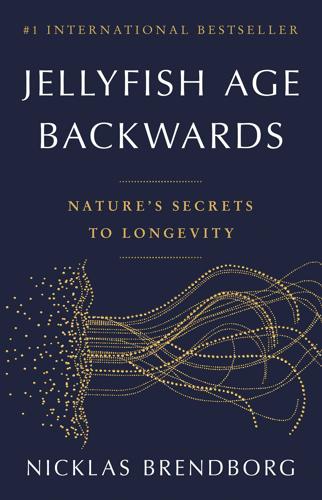
Jellyfish Age Backwards: Nature's Secrets to Longevity
by
Nicklas Brendborg
Published 17 Jan 2023
Besides, CMV and EBV are probably just the tip of the iceberg. Consider, for instance, that the rate of premature babies plummeted around the world during the early coronavirus lockdowns. This was a notoriously hard time for various pathogens, as we made it a lot more difficult for infections to spread. So maybe the reason for the lack of premature babies is that premature birth has an as-yet unidentified viral cause or contributor. Or consider the coronavirus itself, which seems to increase the risk of developing everything from diabetes to various heart conditions. As a whole, there are countless viruses that target humans, including ones we don’t know about yet.

Chokepoints: American Power in the Age of Economic Warfare
by
Edward Fishman
Published 25 Feb 2025
GO TO NOTE REFERENCE IN TEXT confusing and false message: Zeynep Tufekci, “Why Telling People They Don’t Need Masks Backfired,” The New York Times, March 17, 2020, www.nytimes.com/2020/03/17/opinion/coronavirus-face-masks.html. GO TO NOTE REFERENCE IN TEXT controlled its own COVID outbreak: Peter Hessler, “How China Controlled the Coronavirus,” The New Yorker, August 10, 2020, www.newyorker.com/magazine/2020/08/17/how-china-controlled-the-coronavirus. GO TO NOTE REFERENCE IN TEXT terms like “Wuhan virus”: Rogin, Chaos under Heaven, 265–66. GO TO NOTE REFERENCE IN TEXT risked its access to Chinese-made masks: “US Warned Not to Squeeze Huawei,” Global Times, March 11, 2020, www.globaltimes.cn/content/1182273.shtml.
…
GO TO NOTE REFERENCE IN TEXT ban travelers from China: Josh Rogin, Chaos under Heaven: Trump, Xi, and the Battle for the 21st Century (Boston: Houghton Mifflin Harcourt, 2021), 257–59. GO TO NOTE REFERENCE IN TEXT sparing no effort to contain the outbreak: “China’s Xi Tells Trump No Effort Spared in Coronavirus Fight,” Reuters, February 6, 2020, www.reuters.com/article/us-china-health-xi-trump/chinas-xi-tells-trump-no-effort-spared-in-coronavirus-fight-idINKBN2010CZ. GO TO NOTE REFERENCE IN TEXT “Fifteen days to slow the spread”: Will Feuer and Noah Higgins-Dunn, “A Year Later, Trump’s ‘15 Days to Slow the Spread’ Campaign Shows How Little We Knew about Covid,” CNBC, March 16, 2021, www.cnbc.com/2021/03/16/covid-a-year-later-trumps-15-days-to-slow-the-spread-pledge-shows-how-little-we-knew.html.
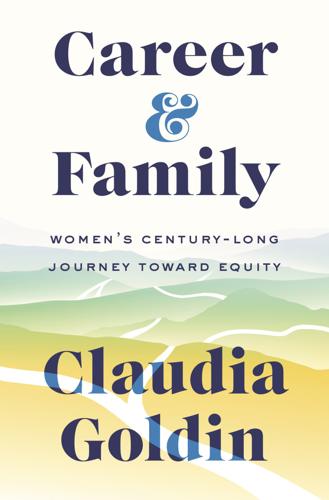
Career and Family: Women’s Century-Long Journey Toward Equity
by
Claudia Goldin
Published 11 Oct 2021
“Social and Demographic Trends Project, 2012 Gender and Generations Survey.” November/December. Pew Research. 2017. “Gender Discrimination Comes in Many Forms for Today’s Working Women.” Kim Parker and Cary Funk. July/August. Pew Research. 2020. “How the Coronavirus Outbreak Has—and Hasn’t—Changed the Way Americans Work.” Kim Parker, Juliana Horowitz, and Rachel Minkin. December. https://www.pewresearch.org/social-trends/2020/12/09/how-the-coronavirus-outbreak-has-and-hasnt-changed-the-way-americans-work/. Preston, Samuel H., and Michael R. Haines. 1991. Fatal Years: Child Mortality in Late Nineteenth-Century America. Princeton, NJ: Princeton University Press.
…
The other method has hours for parents with the youngest children closer to BCE hours and those with school-aged children closer to DC hours, reflecting the fact that daycares were open when public schools were not. 230 about 60 percent of all college graduates had headed back One of the special questions asked of employed persons in the CPS beginning in May 2020 is “Have you teleworked or worked at home for pay at any time in the last four weeks because of the coronavirus?” In May 2020, 60 percent of all college graduates answered that they had been working from home. In September 2020, just about 40 percent were. The published data are not broken down by gender, but a higher fraction of women in general were working for pay from home than were men in both months. 230 “It’s especially difficult for banks …” Elisa Martinuzzi and Marcus Ashworth, “Banker Culture Slips in the Pandemic,” Bloomberg Opinion, September 25, 2020, https://www.bloomberg.com/opinion/articles/2020-09-25/why-wall-street-wants-bankers-back-in-the-office. 230 “Those who don’t go into a place of work …” Handley (2020). 230 in the DC and AC/DC worlds have been about 1.7 times … from about 60 percent BCE to around 73 percent AC/DC See the previous discussion of the AC/DC calculation.

The Bookshop: A History of the American Bookstore
by
Evan Friss
Published 5 Aug 2024
GO TO NOTE REFERENCE IN TEXT In her inaugural: Allison Hill, “A Letter from ABA CEO Allison Hill,” American Booksellers Association (website), March 10, 2020, https://www.bookweb.org/news/letter-aba-ceo-allison-hill-576717. GO TO NOTE REFERENCE IN TEXT While they were at: Elizabeth A. Harris, “How to Sell Books in 2020: Put Them Near the Toilet Paper,” NYT, July 22, 2020, https://www.nytimes.com/2020/07/22/books/books-coronavirus-retail-walmart-target-costco.html. GO TO NOTE REFERENCE IN TEXT As the owner: Ellen Driscoll and Ryan Mavity, “Dewey, Rehoboth, Lewes Cautious [as] Phase 1 Reopening Begins,” Cape Gazette, June 2, 2020; and Alex George, “Bookstores Are ‘Essential Businesses.’ Let Us Stay Open—Safely,” WP, April 2, 2020.
…
GO TO NOTE REFERENCE IN TEXT By the summer of 2021: Ed Nawotka, “Bookshop.org Continues to See Strong Sales,” PW, July 8, 2021, https://www.publishersweekly.com/pw/by-topic/industry-news/bookselling/article/86828-bookshop-org-continues-to-see-strong-sales.html; Alexandra Alter, “Bookstores Are Struggling. Is a New E-Commerce Site the Answer?,” NYT, June 16, 2020, https://www.nytimes.com/2020/06/16/books/bookshop-bookstores-coronavirus.html. GO TO NOTE REFERENCE IN TEXT The things that booksellers: Deutsch, In Praise of Good Bookstores, 166. For more on the feeling of being “book-wrapt,” see Reid Byers, The Private Library: The History of the Architecture and Furnishing of the Domestic Bookroom (New Castle, DE: Oak Knoll Press, 2021).
…
Harris, “Your Local Bookstore Wants You to Know That It’s Struggling,” NYT, October 15, 2020. GO TO NOTE REFERENCE IN TEXT Hill described the: Hillel Italie, “Indie Bookstores Avoid the Worst—So Far—from Pandemic,” AP, May 27, 2021, https://apnews.com/article/amazoncom-inc-health-coronavirus-pandemic-business-arts-and-entertainment-ede783f276dae54ad4eb4f2c8a7d1138. GO TO NOTE REFERENCE IN TEXT The pandemic only: James Daunt, interview by the author, October 2021. GO TO NOTE REFERENCE IN TEXT Most (nineteen out of twenty-four): Claire Kirch, “Will Indie Bookstores Sell a Trump Title?
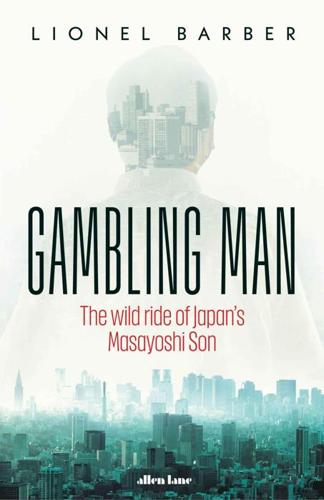
Gambling Man
by
Lionel Barber
Published 3 Oct 2024
The merger allowed SoftBank to shed around $40bn of Sprint debt, and finally realized Masa’s vision of creating a ‘third force’ through consolidation in the US telecoms market. It was a stunning achievement, the result of patience, persistence and a stubborn refusal to give in to the sceptics who said the mega-merger would never happen. Yet there was bad news, too. A coronavirus first detected in Wuhan, China, was spreading like wildfire across the globe. At an earnings presentation, on that day, Masa ignored the threat and talked up SoftBank’s prospects. The tide is turning, he declared, as he stood next to a slide with a crashing wave drawing from the famed Hokusai woodcut.
…
Like Alexander the Great and Napoleon, he said, without a trace of irony, he had the luxury of having no serious competitors.1 When Masa made that hubristic claim, he was still top dog. He’d raised the biggest venture capital fund the world had ever seen. Everyone wanted to meet him; no one could afford to turn down his money. Then, in the blink of an eye, came the collapse of WeWork, the coronavirus pandemic and SoftBank’s brush with corporate death. Twelve months on, Masa was desperate to mount yet another comeback. His plan was to shift into public markets with a focus on Big Tech stocks such as Amazon, Facebook, Google, Microsoft and Netflix. He was at least seven years late to the party; but the fact that the man he chose to lead his new investment venture was Akshay Naheta, one of the least trusted people inside SoftBank, was an even greater surprise.
…
‘He was largely [author italics] making transactions based on my direction. So if anybody should be criticized it’s me … They were just executing my strategy and my strategy was bad with the timing and so on.’6 As the Northstar strategy unravelled, Masa spoke of a winter storm enveloping SoftBank and the global economy. The coronavirus pandemic disrupted global supply chains, reminding the West about the dangers of dependency on China, where many believed the virus had originated. For more than a quarter of a century, SoftBank had been a leading beneficiary of China’s opening to the rest of the world. Alibaba was the golden goose which had laid a multitude of eggs.
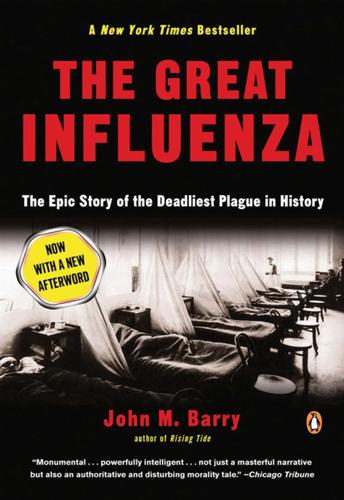
The Great Influenza: The Story of the Deadliest Pandemic in History
by
John M. Barry
Published 9 Feb 2004
Still, even with the best modern care, even with for example dramatically more efficient and effective administration of oxygen than in 1918, the mortality rate for ARDS patients in different studies ranges from 40 to 60 percent. Without intensive care—and hospitals have few beds in intensive-care units—the mortality rate would approach 100 percent. (In 2003 a new coronavirus that causes SARS, “Severe Acute Respiratory Syndrome,” appeared in China and quickly spread around the world. Coronaviruses cause an estimated 15 to 30 percent of all colds and, like the influenza virus, infect epithelial cells. When the coronavirus that causes SARS does kill, it often kills through ARDS, although since the virus replicates much more slowly than influenza, death from ARDS can come several weeks after the first symptoms.)
…
It invades cells that have energy and then, like some alien puppet master, it subverts them, takes them over, forces them to make thousands, and in some cases hundreds of thousands, of new viruses. The power to do this lies in their genes. In most life forms, genes are stretched out along the length of a filament-like molecule of DNA, deoxyribonucleic acid. But many viruses—including influenza, HIV, and the coronavirus that causes SARS (Severe Acute Respiratory Syndrome)—encode their genes in RNA, ribonucleic acid, an even simpler but less stable molecule. Genes resemble software; just as a sequence of bits in a computer code tells the computer what to do—whether to run a word processing program, a computer game, or an Internet search, genes tell the cell what to do.
…
It is this adaptability that explains why these quasi species, these mutant swarms, can move rapidly back and forth between different environments and also develop extraordinarily rapid drug resistance. As one investigator has observed, the rapid mutation “confers a certain randomness to the disease processes that accompany RNA [viral] infections.” Influenza is an RNA virus. So is HIV and the coronavirus. And of all RNA viruses, influenza and HIV are among those that mutate the fastest. The influenza virus mutates so fast that 99 percent of the 100,000 to 1 million new viruses that burst out of a cell in the reproduction process are too defective to infect another cell and reproduce again. But that still leaves between 1,000 and 10,000 viruses that can infect another cell.
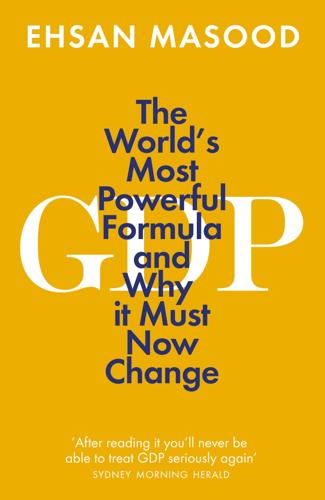
GDP: The World’s Most Powerful Formula and Why It Must Now Change
by
Ehsan Masood
Published 4 Mar 2021
Strong Seven: “As Vulgar as GDP” Eight: Exporting Shangri-La Nine: $33 Trillion Man Ten: Stern Lessons Eleven: “Nothing Is More Destructive of Democracy” Epilogue: Unfinished Revolution A Note on Symbols Acknowledgments Bibliography Index About the Author Copyright PREFACE TO THE SECOND EDITION The world of 2021 seems barely recognizable from 2016 when the first edition of this book (under its original title The Great Invention), was published in the United States. As I write this (at the start of 2021), the coronavirus pandemic has taken close to 2 million lives and infected nearly 100 million people, and continues to decimate economies. Most of the world, with the exception of East Asia, is in some form of lockdown. Hundreds of millions, especially the lowest-paid workers in service industries, have become jobless.
…
IMF World Economic Outlook, October 2020: https://www.imf.org/en/Publications/WEO/Issues/2020/09/30/world-economic-outlook-october-2020#Full%20Report%20and%20Executive%20Summary (accessed 21 December 2020). 2. Working paper from Martin de Ridder of the University of Cambridge: http://covid.econ.cam.ac.uk/de-ridder-government-expenditures-during-coronavirus-pandemic (accessed 17 December 2020. 3. G. Ceballos, P. R. Ehrlich, P.H. Raven, “Vertebrates on the brink as indicators of biological annihilation and the sixth mass extinction,” Proceedings of the National Academy of Sciences, June 2020, 117 (24) 13596–13602; DOI: 10.1073/pnas.1922686117 (accessed 4 January 2021). 4.
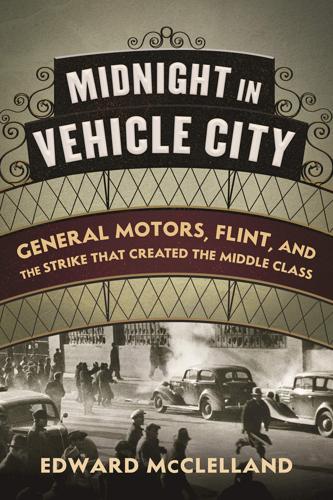
Midnight in Vehicle City: General Motors, Flint, and the Strike That Created the Middle Class
by
Edward McClelland
Published 2 Feb 2021
The notion of self-regulation, or the removal of traditional standards of behavior (which were seen as tools of racial prejudice, sexism, elitism, and/or protection of privilege) in favor of market-based standards of behavior became popular in the social, then the political, and finally, the economic realms. Can the middle class rise again? During the coronavirus crisis of 2020, workers at an Amazon delivery center in Chicago organized a movement that led to the company’s granting paid time off to all employees, both full and part time. Amazon workers also walked off the job to demand that the company shut down the facility after an employee tested positive for covid-19.
…
See also Wagner Act Combs, Prince, 25 Communist Party of the United States (CPUSA): affiliation with, repercussions, 14, 27; and early labor organizing, 21–22; “What to Do in Case of a Sit Down” (Weinstone), 52 company unions, 15–17, 35, 159 Congress of Industrial Organizations (CIO), formation of, 18. See also labor organizing, unions; Lewis, John L.; United Auto Workers of America (UAWA/UAW) Connelly, Leo, 29–30 Connolly, William, 76, 87 Coolidge, Calvin, 100 Cooper, Don, 186 coronavirus crisis, impact on workers in 2020, 192 Crapo, Henry Howland, 1 Cronk, Ed, 139–40, 142, 145, 147 Dalrymple, Sherman H., 35 Debs, Eugene, 13 Devitt, Joe, 36, 51 Dewey, James Frank, 99, 172 Dodge Main, Hamtramck, Michigan, 179 Dremon, Leo, 146 Durant, William Crapo, 1–3, 129–30 eight-hour work-day standard, 21, 109, 115 Emory, Mr., 146 Estrada, Cynthia, 189 families of strikers: dependence on GM, 29; importance of strike to, 54, 65, 59, 92–93, 95, 120; relief funds, assistance given to, 66, 94, 123–24; response to strike, 42, 64–66, 91, 106, 109; strike widows, 52.

Women and Other Monsters: Building a New Mythology
by
Jess Zimmerman
Published 9 Mar 2021
They’re not invested in children, or even in mothers—the same people generally oppose paid maternity leave, subsidized child care, universal health care, social support programs benefiting mothers with kids, and sometimes public schools. They’re not invested in reducing abortion—the same people oppose comprehensive sex education and accessible contraception. They’re not even invested in reducing deliberate death. Anyone who still believes the “pro-life” spin after months of watching the GOP downplay coronavirus, kneecap efforts to supply hospitals or limit spread, and call for the sacrifice of tens of thousands on the altar of the economy is using a twisted definition of “life.” What they are invested in is birth: the conversion of a woman into a mother, after which she and her baby can be left to struggle.
…
When I said I was a worried person, this is what I meant—that I go through our cabinets wondering how long we’ll be able to survive on dry noodles; that I fret about how accessible our windows are from the street, not because of crime but because of a post-apocalypse Purge. (All of this was in some way put to the test during the long nightmare of coronavirus, though food shortages and roving bandits weren’t as much of a problem as I’d imagined. It turns out I was right in most respects. No amount of dry noodles is enough to feel safe, but it’s better to be together.) That anxiety is not only compounded by the addition of a child; it’s increased exponentially, because not only do I have yet another life to worry about, a life I will by all accounts be even more disastrously concerned about than I am about my husband or dog, but I am virtually guaranteed that even if the end doesn’t come in my lifetime, it will in theirs.
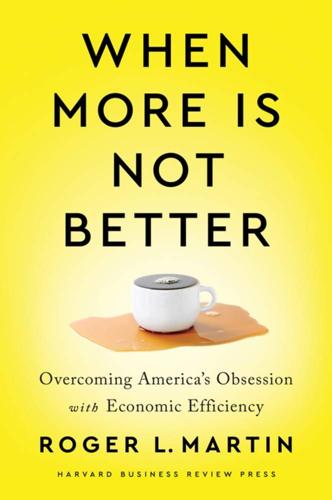
When More Is Not Better: Overcoming America's Obsession With Economic Efficiency
by
Roger L. Martin
Published 28 Sep 2020
An Agenda for Political Leaders 8. An Agenda for Educators 9. An Agenda for Citizens 10. Closing Thoughts Notes Index Acknowledgments About the Author Foreword Roger Martin turned in the final draft of this book on January 19, 2020, right around the time that most of us were first hearing about the novel coronavirus and first finding ways to believe that it posed no great threat to our lives or plans. Two months later, most Western nations were in lockdown and almost everything about the future was suddenly unknown. As I write these words, confined to my apartment in New York City, the national death toll from COVID-19 is approaching 20,000, and tens of millions of our fellow citizens are facing financial ruin.
…
Yet one of the most promising reactions to this global catastrophe has been the growing realization that it offers us a once-in-a-lifetime chance to change things—big things that seemed immutable just a few months ago. Things like the nature of American capitalism and democracy. Martin’s book does not mention the coronavirus, yet it is the most essential book I know of for building a better postpandemic America, with important lessons for all Western democracies. Martin shows us how the mental model we’ve been using to think about our economy is wrong, disastrously wrong. The economy is not a machine that experts can fine-tune for maximum efficiency.

Cultish: The Language of Fanaticism
by
Amanda Montell
Published 14 Jun 2021
Tupperware: Cristen Conger, “How Tupperware Works,” HowStuffWorks, July 25, 2011, https://people.howstuffworks.com/tupperware2.htm. The Federal Trade Commission sent warnings: Lisette Voytko, “FTC Warns 16 Multi-Level Marketing Companies About Coronavirus .” Forbes, June 9, 2020, https://www.forbes.com/sites/lisettevoytko/2020/06/09/ftc-warns-16-multi-level-marketing-companies-about-coronavirus-fraud/?sh=12d56c827b9d. to throw plastic confetti: Lawrence Specker, “It Wasn’t Easy, But Mobile Now Has a 21st Century Confetti Policy,” Mobile Real-Time News, August 7, 2018, https://www.al.com/news/mobile/2018/08/it_wasnt_easy_but_mobile_now_h.html.

Death Glitch: How Techno-Solutionism Fails Us in This Life and Beyond
by
Tamara Kneese
Published 14 Aug 2023
Despite death startup companies’ presentation of self-care as a way of managing mortality, essential workers, many of whom are immigrants or from marginalized groups, are not protected from death. Uber drivers and other gig workers are classified as independent contractors, so if they die from the coronavirus or something else on the job, the company that employs them cannot be held responsible and owes nothing to their family members left behind. In 2020, the Bureau of Labor Statistics reported that gig workers account for nearly one in eight worker deaths in the United States.32 Worker-led groups are pushing platforms to recognize their workers as employees, which also means caring for them and their families after they die.
…
The communities who are dying are disproportionately Black, Latinx, Indigenous, and disabled. In response to such state and institutional neglect, people are using crowdfunding campaigns and social media–propelled mutual aid to provide community-based care to sick, dying, and grieving people. From the start of the pandemic, coronavirus-related campaigns flooded crowdfunding platforms, as individuals, cultural institutions, and activist organizations struggled to raise money for their survival.33 Like passing the collection basket in a place of worship or offering other in-person material assistance such as food, flowers, or hugs as part of collective mourning, crowdfunded funeral campaigns provide a way for communities to bury their dead with dignity.
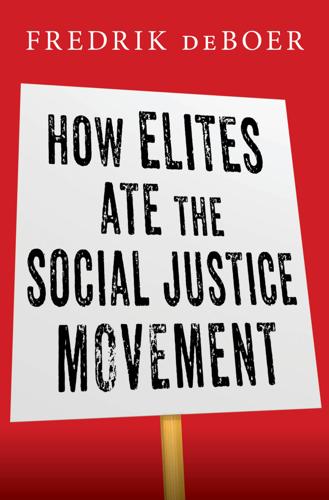
How Elites Ate the Social Justice Movement
by
Fredrik Deboer
Published 4 Sep 2023
In 2020, a year that was sold at the time as a moment of unique political foment—as a “reckoning”—we saw the American progressive movement drift from the essential to the inconsequential, from the material to the illusory, in much the same way. Early that year, an unprecedented global pandemic bloomed in front of our eyes. The novel coronavirus Covid-19 exploded out from China and across the face of the globe in the span of a few months. There have been deadlier diseases, and there have been diseases that have wrought more havoc, but there had never before been a disease that so took advantage of a globalized and interconnected Earth, of our now-small world.
…
“it is an error to jump”: Jonathan Chait, “The Still-Vital Case for Liberalism in a Radical Age,” New York, June 11, 2020, https://nymag.com/intelligencer/2020/06/case-for-liberalism-tom-cotton-new-york-times-james-bennet.html. “For years, I’ve been among”: Wesley Lowery, “A Reckoning Over Objectivity, Led by Black Journalists,” New York Times, June 23, 2020, https://www.nytimes.com/2020/06/23/opinion/objectivity-black-journalists-coronavirus.html. Take, for example, the fact: Ian Thomsen, “The Research Is Clear: White People Are Not More Likely Than Black People to Be Killed by Police,” Northeastern Global News, July 16, 2020, https://news.northeastern.edu/2020/07/16/the-research-is-clear-white-people-are-not-more-likely-than-black-people-to-be-killed-by-police/.

Science Fictions: How Fraud, Bias, Negligence, and Hype Undermine the Search for Truth
by
Stuart Ritchie
Published 20 Jul 2020
Since a preprint can be posted online without any oversight, we should certainly be extra sceptical about them, while scientists should have the intellectual humility not to publicise their work before it’s been at least looked over by their peers.86 As the scientific ecosystem changes, journalists will become more aware that there are different ‘stages’ of scientific publication and that they should be particularly cautious of papers that are still at the earlier ones. Soon after the start of the coronavirus (COVID-19) pandemic in early 2020, preprints appeared on a major biological preprint server that sparked widespread discussion about the origins and effects of the virus. Some of the papers were of obviously low quality, rushed out to capitalise on the media frenzy about the pandemic. Others included phrasing that, whether inadvertently or otherwise, seemed to stoke conspiracy theories about the virus having been designed deliberately as a biological weapon.
…
Although preprints can act as a vector for erroneous information, it’s unlikely we could design a system that eradicated all mistakes. We need to weigh the downsides of preprints against the upsides that they bring of increased openness, transparency and rapidity. Indeed, for virologists and epidemiologists responding to the coronavirus crisis, the preprinting revolution has brought forth a wave of new data that substantially accelerates science, producing a research culture that’s utterly different from those during previous disease outbreaks. Not having to wait for formal peer review, being able to comment instantly on drafts of new findings, and sharing important null results that wouldn’t normally survive the publication-bias process has – despite the rare misleading claims given us a scientific literature that’s months, or maybe years, ahead of where it would be otherwise.
…
ABC News abortion Abu Ghraib prison abuse (2003) accidental discoveries Acta Crystallographica Section E acupuncture Afghan hounds Agence France-Presse AIDS (acquired immune deficiency syndrome) Alchemist, The (Bega) Alexander, Benita Alexander, Scott algorithms allergies Alzheimer, Aloysius Alzheimer’s Disease Amazon American Journal of Potato Research Amgen amygdala amyloid cascade hypothesis anaesthesia awareness Fujii affair (2012) outcome switching Anaesthesia & Analgesia animal studies antidepressants antipsychotics archaeology Arnold, Frances arsenic artificial tracheas asthma austerity Australia Austria autism aviation Babbage, Charles Bacon, Francis bacteria Bargh, John Bayer Bayes, Thomas Bayesian statistics BDNF gene Before You Know It (Bargh) Bega, Cornelis Begley, Sharon Belgium Bell Labs Bem, Daryl benzodiazepines bias blinding and conflict of interest De Vries’ study (2018) funding and groupthink and meaning well bias Morton’s skull studies p-hacking politics and publication bias randomisation and sexism and Bik, Elisabeth Bill & Melinda Gates Foundation Biomaterials biology amyloid cascade hypothesis Bik’s fake images study (2016) Boldt affair (2010) cell lines China, misconduct in Hwang affair (2005–6) Macchiarini affair (2015–16) meta-scientific research microbiome studies Morton’s skull studies Obokata affair (2014) outcome switching preprints publication bias replication crisis Reuben affair (2009) spin and statistical power and Summerlin affair (1974) Wakefield affair (1998–2010) biomedical papers bird flu bispectral index monitor black holes Black Lives Matter blinding blotting BMJ, The Boldt, Joachim books Borges, Jorge Luis Boulez, Pierre Boyle, Robert brain imaging Brass Eye vii British Medical Journal Brock, Jon bronchoscopy Broockman, David Brown, Nick Bush, George Walker business studies BuzzFeed News California Walnut Commission California wildfires (2017) Canada cancer cell lines collaborative projects faecal transplants food and publication bias and replication crisis and sleep and spin and candidate genes carbon-based transistors Cardiff University cardiovascular disease Carlisle, John Carlsmith, James Carney, Dana cash-for-publication schemes cataracts Cell cell lines Cell Transplantation Center for Open Science CERN (Conseil Européen pour la Recherche Nucléaire) chi-squared tests childbirth China cash-for-publication schemes cell line mix-ups in Great Famine (1959–1961) misconduct cases in randomisation fraud in chrysalis effect Churchill, Winston churnalism Cifu, Adam citations clickbait climate change cloning Clostridium difficile cochlear implants Cochrane Collaboration coercive citation coffee cognitive dissonance cognitive psychology cognitive tests coin flipping Colbert Report, The Cold War collaborative projects colonic irrigation communality COMPare Trials COMT gene confidence interval conflict of interest Conservative Party conspicuous consumption Cooperative Campaign Analysis Project (CCAP) ‘Coping with Chaos’ (Stapel) Cornell University coronavirus (COVID-19) Corps of Engineers correlation versus causation corticosteroids Cotton, Charles Caleb creationism Crowe, Russell Csiszar, Alex Cuddy, Amy CV (curriculum vitae) cyber-bullying cystic fibrosis Daily Mail Daily Telegraph Darwin Memorial, The’ (Huxley) Darwin, Charles Das, Dipak datasets fraudulent Observational publication bias Davies, Phil Dawkins, Richard De Niro, Robert De Vries, Ymkje Anna debt-to-GDP ratio Deer, Brian democratic peace theory Denmark Department of Agriculture, US depression desk rejections Deutsche Bank disabilities discontinuous mind disinterestedness DNA (deoxyribonucleic acid) domestication syndrome doveryai, no proveryai Duarte, José Duke University duloxetine Dutch Golden Age Dutch Organisation for Scientific Research Dweck, Carol economics austerity preprints statistical power and effect size Einstein, Albert Elmo Elsevier engineering epigenetics euthanasia evolutionary biology exaggeration exercise Experiment, The exploratory analyses extrasensory perception faecal transplants false-positive errors Fanelli, Daniele Festinger, Leon file-drawer problem financial crisis (2007–8) Fine, Cordelia Fisher, Ronald 5 sigma evidence 5-HT2a gene 5-HTTLPR gene fixed mindset Food and Drug Administration (FDA) Food Frequency Questionnaires food psychology Formosus, Pope foxes France Francis, Pope Franco, Annie fraud images investigation of motives for numbers Open Science and peer review randomisation Freedom of Information Acts French, Chris Fryer, Roland Fujii, Yoshitaka funding bias and fraud and hype and long-term funding perverse incentive and replication crisis and statistical power and taxpayer money funnel plots Future of Science, The (Nielsen) gay marriage Gelman, Andrew genetically modified crops genetics autocorrect errors candidate genes collaborative projects gene therapy genome-wide association studies (GWASs) hype in salami-slicing in Geneva, Switzerland geoscience Germany Getty Center GFAJ-1 Giner-Sorolla, Roger Glasgow Effect Goldacre, Ben Goldsmiths, University of London Golgi Apparatus good bacteria Good Morning America good scientific citizenship Goodhart’s Law Goodstein, David Google Scholar Górecki, Henryk Gould, Stephen Jay Gran Sasso, Italy grants, see funding Granularity-Related Inconsistency of Means (GRIM) grapes Great Recession (2007–9) Great Red Spot of Jupiter Green, Donald Gross Domestic Product (GDP) Gross, Charles ground-breaking results groupthink ‘Growth in a Time of Debt’ (Reinhart and Rogoff) growth mindset Guzey, Alexey gynaecology h-index H5N1 Haldane, John Burdon Sanderson Hankins, Matthew HARKing Harris, Sidney Harvard University headache pills heart attacks heart disease Heathers, James height Heilongjiang University Heino, Matti Henry IV (Shakespeare) Higgs Boson Hirsch, Jorge HIV (human immunodeficiency viruses) homosexuality Hong Kong Hooke, Robert Hossenfelder, Sabine Houston, Texas Hume, David Huxley, Thomas Henry Hwang, Woo-Suk hydroxyethyl starch hype arsenic life affair (2010) books correlation versus causation cross-species leap language and microbiome studies news stories nutrition and press releases spin unwarranted advice hypotheses Ig Nobel Prize images, fraudulent impact factor India insomnia International Journal of Advanced Computer Technology Ioannidis, John IQ tests Iraq War (2003–11) Italy Japan John, Elton Journal of Cognitive Education and Psychology Journal of Environmental Quality Journal of Negative Results in Biomedicine Journal of Personality and Social Psychology journals conflict of interest disclosure fraud and hype and impact factor language in mega-journals negligence and Open Science and peer review, see peer review predatory journals preprints publication bias rent-seeking replication studies retraction salami slicing subscription fees Jupiter Kahneman, Daniel Kalla, Joshua Karolinska Institute Krasnodar, Russia Krugman, Paul Lacon, or Many Things in Few Words (Cotton) LaCour, Michael Lancet Fine’s ‘feminist science’ article (2018) Macchiarini affair (2015–16) Wakefield affair (1998–2010) language Large Hadron Collider Le Texier, Thibault Lewis, Jason Lexington Herald-Leader Leyser, Ottoline Lilienfeld, Scott Loken, Eric Lost in Math (Hossenfelder) low-fat diet low-powered studies Lumley, Thomas Lysenko, Trofim Macbeth (Shakespeare) Macbeth effect Macchiarini, Paolo MacDonald, Norman machine learning Macleod, Malcolm Macroeconomics major depressive disorder Malaysia Mao Zedong MARCH1 Marcus, Adam marine biology Markowetz, Florian Matthew Effect Maxims and Moral Reflections (MacDonald) McCartney, Gerry McCloskey, Deirdre McElreath, Richard meaning well bias Measles, Mumps & Rubella (MMR) measurement errors Medawar, Peter medical research amyloid cascade hypothesis Boldt affair (2010) cell lines China, misconduct in collaborative projects Fujii affair (2012) Hwang affair (2005–6) Macchiarini affair (2015–16) meta-scientific research Obokata affair (2014) outcome switching pharmaceutical companies preprints pre-registration publication bias replication crisis Reuben affair (2009) spin and statistical power and Summerlin affair (1974) Wakefield affair (1998–2010) medical reversal Medical Science Monitor Mediterranean Diet Merton, Robert Mertonian Norms communality disinterestedness organised scepticism universalism meta-science Boldt affair (2010) chrysalis effect De Vries’ study (2018) Fanelli’s study (2010) Ioannidis’ article (2005) Macleod’s studies mindset studies (2018) saturated fats studies spin and stereotype threat studies mice microbiome Microsoft Excel Milgram, Stanley Mill, John Stuart Mindset (Dweck) mindset concept Mismeasure of Man, The (Gould) Modi, Narendra money priming Mono Lake, California Moon, Hyung-In Morton, Samuel Motyl, Matt multiverse analysis nanotechnology National Academy of Sciences National Aeronautics and Space Administration (NASA) National Institutes of Health National Science Foundation Nature cash-for-publication and cell line editorial (1981) impact factor language in Obokata affair (2014) Open Access and open letter on statistical significance (2019) replication research Schön affair (2002) Stapel affair (2011) Nature Neuroscience Nature Reviews Cancer NBC negligence cell line mix-ups numerical errors statistical power typos Netflix Netherlands replication studies in Stapel’s racism studies statcheck research neuroscience amyloid cascade hypothesis collaborative projects Macleod’s animal research studies replication crisis sexism and statistical significance and Walker’s sleep studies neutrinos New England Journal of Medicine New York Times New Zealand news media Newton, Isaac Nielsen, Michael Nimoy, Leonard No Country for Old Men Nobel Prize northern blots Nosek, Brian Novella, Steven novelty Novum Organum (Bacon) Nuijten, Michèle nullius in verba, numerical errors nutrition Obama, Barack obesity Obokata, Haruko observational datasets obstetrics ocean acidification oesophagus ‘Of Essay-Writing’ (Hume) Office for Research Integrity, US Oldenburg, Henry Open Access Open Science OPERA experiment (2011) Oransky, Ivan Orben, Amy Organic Syntheses organised scepticism Osborne, George outcome-switching overfitting Oxford University p-value/hacking alternatives to Fine and low-powered studies and microbiome studies and nutritional studies and Open Science and outcome-switching perverse incentive and pre-registration and screen time studies and spin and statcheck and papers abstracts citations growth rates h-index introductions method sections results sections salami slicing self-plagiarism university ranks and Parkinson’s disease particle-accelerator experiments peanut allergies peer review coercive citation fraudulent groupthink and LaCour affair (2014–15) Preprints productivity incentives and randomisation and toxoplasma gondii scandal (1961) volunteer Wakefield affair (1998–2010) penicillin Peoria, Illinois Perspectives in Psychological Science perverse incentive cash for publications competition CVs and evolutionary analogy funding impact factor predatory journals salami slicing self-plagiarism Pett, Joel pharmaceutical companies PhDs Philosophical Transactions phlogiston phosphorus Photoshop Physical Review physics placebos plagiarism Plan S Planck, Max plane crashes PLOS ONE pluripotency Poehlman, Eric politics polygenes polyunsaturated fatty acids Popper, Karl populism pornography positive feedback loops positive versus null results, see publication bias post-traumatic stress disorder (PTSD) power posing Prasad, Vinay pre-registration preclinical studies predatory journals preprints Presence (Cuddy) press releases Prevención con Dieta Mediterránea (PREDIMED) priming Princeton University Private Eye probiotics Proceedings of the National Academy of Sciences prosthetic limbs Przybylski, Andrew psychic precognition Psychological Medicine psychology Bargh’s priming study (1996) Bem’s precognition studies books Carney and Cuddy’s power posing studies collaborative projects data sharing study (2006) Dweck’s mindset concept Festinger and Carlsmith’s cognitive dissonance studies Kahneman’s priming studies LaCour’s gay marriage experiment politics and preprints publication bias in Shanks’ priming studies Stanford Prison Experiment Stapel’s racism studies statistical power and Wansink’s food studies publication bias publish or perish Pubpeer Pythagoras’s theorem Qatar quantum entanglement racism Bargh’s priming studies Morton’s skull studies Stapel’s environmental studies randomisation Randy Schekman Reagan, Ronald recommendation algorithms red grapes Redfield, Rosemary Reflections on the Decline of Science in England (Babbage) Reinhart, Carmen Rennie, Drummond rent-seeking replication; replication crisis Bargh’s priming study Bem’s precognition studies biology and Carney and Cuddy’s power posing studies chemistry and economics and engineering and geoscience and journals and Kahneman’s priming studies marine biology and medical research and neuroscience and physics and Schön’s carbon-based transistor Stanford Prison Experiment Stapel’s racism studies Wolfe-Simon’s arsenic life study reproducibility Republican Party research grants research parasites resveratrol retraction Arnold Boldt Fujii LaCour Macchiarini Moon Obokata Reuben Schön Stapel Wakefield Wansink Retraction Watch Reuben, Scott Reuters RIKEN Rogoff, Kenneth romantic priming Royal Society Rundgren, Todd Russia doveryai, no proveryai foxes, domestication of Macchiarini affair (2015–16) plagiarism in salami slicing same-sex marriage sample size sampling errors Sanna, Lawrence Sasai, Yoshiki saturated fats Saturn Saudi Arabia schizophrenia Schoenfeld, Jonathan Schön, Jan Hendrik School Psychology International Schopenhauer, Arthur Science acceptance rate Arnold affair (2020) arsenic life affair (2010) cash-for-publication and Hwang affair (2005) impact factor LaCour affair (2014–15) language in Macbeth effect study (2006) Open Access and pre-registration investigation (2020) replication research Schön affair (2002) Stapel affair (2011) toxoplasma gondii scandal (1961) Science Europe Science Media Centre scientific journals, see journals scientific papers, see papers Scientific World Journal, The Scotland Scottish Socialist Party screen time self-citation self-correction self-plagiarism self-sustaining systems Seoul National University SEPT2 Sesame Street sexism sexual selection Shakespeare, William Shanks, David Shansky, Rebecca Simmons, Joseph Simonsohn, Uri Simpsons, The skin grafts Slate Star Codex Sloan-Kettering Cancer Institute Smaldino, Paul Smeesters, Dirk Smith, Richard Snuppy social media South Korea Southern blot Southern, Edwin Soviet Union space science special relativity specification-curve analysis speed-accuracy trade-off Spies, Jeffrey spin Springer Srivastava, Sanjay Stalin, Joseph Stanford University Dweck’s mindset concept file-drawer project (2014) Prison Experiment (1971) Schön affair (2002) STAP (Stimulus-Triggered Acquisition of Pluripotency) Stapel, Diederik statcheck statistical flukes statistical power statistical significance statistical tests Status Quo stem cells Stephen VI, Pope stereotype threat Sternberg, Robert strokes subscription fees Summerlin, William Sweden Swift, Jonathan Swiss Federal Institute of Technology Sydney Morning Herald Symphony of Sorrowful Songs (Górecki) t-tests Taiwan taps-aff.co.uk tax policies team science TED (Technology, Entertainment, and Design) Texas sharpshooter analogy Thatcher, Margaret theory of special relativity Thinking, Fast and Slow (Kahneman) Thomson Reuters Tilburg University Titan totalitarianism toxoplasma gondii trachea translational research transparency Tribeca Film Festival triplepay system Trump, Donald trust in science ‘trust, but verify’ Tumor Biology Turkey Tuulik, Julia Twitter typos UK Reproducibility Network Ulysses pact United Kingdom austerity cash-for-publication schemes image duplication in multiverse analysis study (2019) National Institute for Health Research pre-registration in Royal Society submarines trust in science university ranks in Wakefield affair (1998–2010) United States Arnold affair (2020) arsenic life affair (2010) austerity Bargh’s priming study (1996) Bem’s precognition studies California wildfires (2017) Carney and Cuddy’s power posing studies Center for Nutrition Policy and Promotion climate science in creationism in Das affair (2012) De Vries’ drug study (2018) Department of Agriculture Dweck’s mindset concept Fryer’s police brutality study (2016) image duplication in Kahneman’s priming studies LaCour affair (2014–15) Morton’s skull studies Office for Research Integrity Poehlman affair (2006) pre-registration in public domain laws Reuben affair (2009) Stanford Prison Experiment Summerlin affair (1974) tenure Walker’s sleep studies Wansink affair (2016) universalism universities cash-for-publication schemes fraud and subscription fees and team science University College London University of British Columbia University of California Berkeley Los Angeles University of Connecticut University of East Anglia University of Edinburgh University of Hertfordshire University of London University of Pennsylvania unsaturated fats unwarranted advice vaccines Vamplew, Peter Vanity Fair Vatican Vaxxed Viagra vibration-of-effects analysis virology Wakefield, Andrew Walker, Matthew Wansink, Brian Washington Post weasel wording Weisberg, Michael Wellcome Trust western blots Westfall, Jake ‘Why Most Published Research Findings Are False’ (Ioannidis) Why We Sleep (Walker) Wiley Wiseman, Richard Wolfe-Simon, Felisa World as Will and Presentation, The (Schopenhauer) World Health Organisation (WHO) Yale University Yarkoni, Tal Yes Men Yezhov, Nikolai Z-tests Ziliak, Stephen Zimbardo, Philip Zola, Émile About the Author Stuart Ritchie is a lecturer in the Social, Genetic and Developmental Psychiatry Centre at King’s College London.
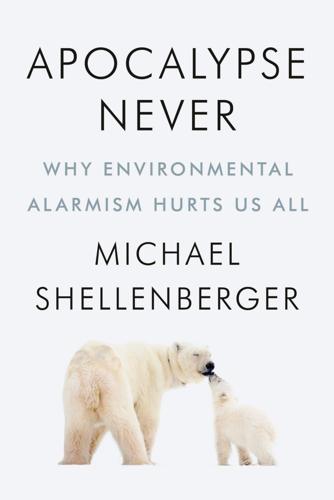
Apocalypse Never: Why Environmental Alarmism Hurts Us All
by
Michael Shellenberger
Published 28 Jun 2020
Nick Perry, “Death toll from New Zealand volcano rises to 21 as victim dies from injuries nearly two months later,” Independent, January 29, 2020, https://www.independent.co.uk. 111. “ ‘Stealth Transmission’ Fuels Fast Spread of Coronavirus Outbreak,” Mailman School of Public Health at Columbia University, February 26, 2020, https://www.mailman.columbia.edu/public-health-now/news/stealth-transmission-fuels-fast-spread-coronavirus-outbreak. 112. Kerry Emanuel (climate scientist, MIT) in discussion with the author, November 15, 2019. 113. International Energy Agency, “Global CO2 Emissions in 2019,” February 11, 2020. European Commission, “Progress Made in Cutting Emissions,” accessed March 2, 2020.
…
See also Virunga National Park author’s visit, 6–9, 16–19, 281–82 bushmeat, 141–42 economic development in, 16–19, 70–72 habitat conservation, 68–69, 73–74 hydroelectric power, 70–71, 83–84, 245–46, 276 need for fossil fuels, 81–83 palm oil, 112, 276 wood fuel use, 6–9, 68–70 Conservation Refugees (Dowie), 74 Consumer boycotts, 28–29, 87–88 Consumer Watchdog, 215 Convention on International Trade in Endangered Species of Wild Fauna and Flora (CITES), 62 Conway, Erik, 250–51, 252 Cook, James, 36 Cooper, Bradley, 222 Cornell University, 43–44, 74 Corn ethanol, 61, 193 Coronavirus, 25 Corporate Crime Reporter, 208–9 Costa Rica, 28–29, 45, 52 Council on Foreign Relations, 157 Crockford, Susan, 253 Cronkite, Walter, 108 Crop-raiding, 17–18, 74–75, 78, 79 Cuban Missile Crisis, 172 Cumberbatch, Benedict, ix Curie, Marie, 241 Curie, Paul, 241 Current TV, 214 Cybernetics, 262–63 Da Silva, Benedita, 29 Da Silva, Luiz Inácio “Lula,” 29, 42 Da Vinci, Leonardo, 123 Davis-Besse Nuclear Power Station, 166 Day After, The (film), 270 Death symbolism, 267–69, 278–79 Deepwater Horizon oil spill, 150 Deerfield Wind Project, 198 Deforestation, 32–33, 86 of Amazon rainforest, 28–32, 34, 35, 38–42, 303n fire and food, 36–38 DeGeneres, Ellen, 223 Delhi, India, 64, 237 Democratic Republic of the Congo.
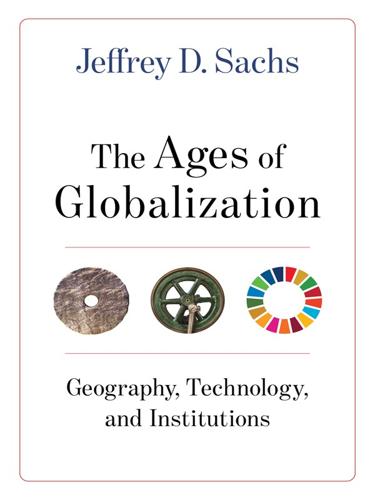
The Ages of Globalization
by
Jeffrey D. Sachs
Published 2 Jun 2020
I delight in having visited these places as well, and have enjoyed their rich cultures and great natural beauty. I have learned from such visits and my work that human kindness, our aspirations for our children, and our enjoyments of life are common to all humanity, no matter how diverse our backgrounds and our material conditions. The new coronavirus reminds us yet again that the benefits of global trade and travel have always been accompanied by the global spread of disease and other ills. In this book, I will discuss how Adam Smith, the father of modern economics, viewed the voyages of discovery of Christopher Columbus and Vasco da Gama. He wrote that the discoveries of the sea routes from Europe to the Americas and to Asia were the most important events of human history, because they linked all parts of the world in a web of transport and commerce, with vast potential benefits.
…
This “Columbian Exchange” united the world in trade while dividing the world in new kinds of inequalities of wealth and power. The excess mortality of Native Americans caused by Old World diseases was devastating. The native populations were “naïve” to the Old World pathogens, and hence unprotected immunologically. In the same way, the world population today is immunologically naïve, and hence vulnerable, to the new coronavirus sweeping the planet. It is highly likely, thank goodness, that the illnesses and deaths caused by COVID-19 will be far less severe than the epidemics that ravaged Native American societies in the sixteenth century. Nonetheless, the current pandemic will influence global politics and society as other diseases have in the past.
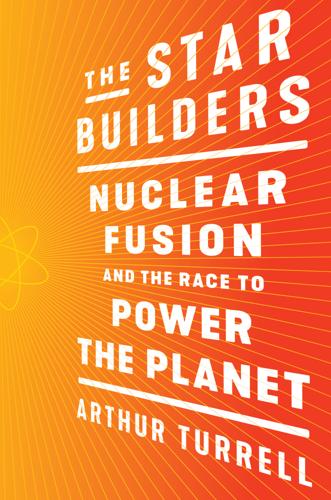
The Star Builders: Nuclear Fusion and the Race to Power the Planet
by
Arthur Turrell
Published 2 Aug 2021
Sibylle steadily ascended the ranks, becoming head of theory (a position for which seriously strong mathematical ability is required), then a director, and finally, in 2011, the scientific director. “I saw how important good management is and how much it takes to secure a sufficient budget,” she tells me digitally as we cope with a coronavirus-induced lockdown. “By being the director I have many opportunities to influence our big projects and I can change those things I only complained about earlier.” Although she describes herself as a very impatient person, Sibylle is understated; the consummate professional scientist giving both sides of the argument and being honest about any limitations.
…
The liquid lithium will absorb the neutrons, making precious tritium that can be used as fuel. Heat energy carried by the neutrons that gets into the lithium will be exchanged into another medium like water. Ultimately, the water will be turned to steam to drive a turbine. The whole process will repeat somewhere between every five or every forty seconds. Before coronavirus struck, First Light Fusion had a plan to perform a net-energy-gain experiment by 2024, and they say they’re about to reach the temperatures where fusion reactions first become detectable. But what both Gianluca and Nick are keen to stress is that they’re not in the net-energy-gain business: they’re in the power business.4 “It’s the world’s largest problem,” Nick tells me, referring to achieving fusion.
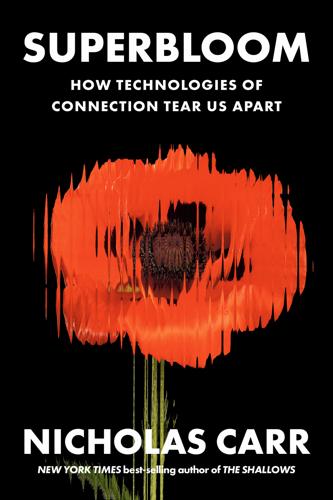
Superbloom: How Technologies of Connection Tear Us Apart
by
Nicholas Carr
Published 28 Jan 2025
—RENÉ GIRARD Chapter 7 The Dislocated I Contagion The poppies returned on schedule to the slopes of Walker Canyon in early 2020, though a dry winter kept their numbers down. Even if they had bloomed as profusely as they had the year before, few would have been around to bear witness. By the time the first buds opened, a very different sort of superbloom—that of the novel coronavirus, as we called it then—was under way. No one wanted to risk infection by congregating in a field of flowers to take pretty Instagram shots, however many hearts they might rack up. Even the influencers stayed home. Shortly after the World Health Organization declared the outbreak a pandemic on March 10, Walker Canyon was closed to the public.
…
The most successful posts and memes are the most infectious ones, the ones that go viral. The word influencer shares an etymological root with influenza. When, years ago, Mark Zuckerberg needed a code name for Facebook’s automated advertising system, he chose Pandemic.2 But with the arrival of the coronavirus, the contagion metaphor took an unexpected turn. When a real pathogen is on the loose, we discovered, social media turns into an antiviral. It allows people to socialize without physical proximity, to gather together while remaining apart. If there was anything fortunate about Covid’s arrival, it was the timing.
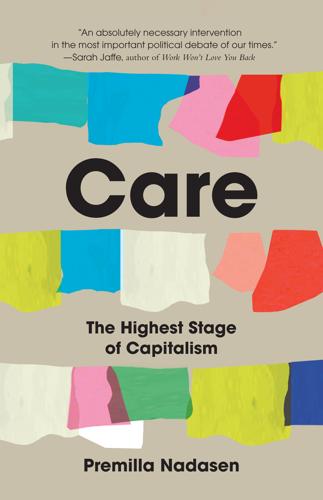
Care: The Highest Stage of Capitalism
by
Premilla Nadasen
Published 10 Oct 2023
See Swinth, Feminism’s Forgotten Fight. 27. Avery Hartmans, “Free Childcare, Flexible Schedules, and Months Off: How Silicon Valley Is Switching Up Lavish In-office Perks to Benefit Parents Working from Home,” Business Insider, October 1, 2020, https://www.businessinsider.com/silicon-valley-parenting-perks-benefits-coronavirus-pandemic-google-facebook-amazon-2020-10. 28. Billy Perrigo, “Inside Facebook’s African Sweatshop,” Time, February 14, 2022, https://time.com/6147458/facebook-africa-content-moderation-employee-treatment/. 29. Julia Carrie Wong, “Revealed: Google Illegally Underpaid Thousands of Workers Across Dozens of Counties,” Guardian, September 10, 2021, https://www.theguardian.com/technology/2021/sep/10/google-underpaid-workers-illegal-pay-disparity-documents. 30.
…
Alec MacGillis, “Jared Kushner’s Other Real Estate Empire in Baltimore,” New York Times, May 23, 2017, https://www.nytimes.com/2017/05/23/magazine/jared-kushners-other-real-estate-empire.html?smid=fb-share. 18. Tithi Bhattacharya, “Turning a Profit from Death: On Modi’s Pandemic Response in Neoliberal India,” Spectre Journal, May 3, 2021, https://spectrejournal.com/turning-a-profit-from-death/. See also John Nichols, Coronavirus Criminals and Pandemic Profiteers: Accountability for Those Who Caused the Crisis (New York: Verso Books, 2022). 19. Regeneron Pharmaceuticals Inc., “Regeneron Announces Manufacturing and Supply Agreement for Barda and U.S. Department of Defense for Regn-COV2 Anti-Viral Antibody Cocktail,” PR Newswire, July 7, 2020, https://investor.regeneron.com/news-releases/news-release-details/regeneron-announces-manufacturing-and-supply-agreement-barda-and; Jacob Jarvis, “Fact Check: Regeneron Monoclonal Antibody Costs Government $2,100 Per Dose,” Newsweek, October 12, 2021, https://www.newsweek.com/fact-check-regeneron-regen-cov-covid-monoclonal-anti-body-cost-1637526. 20.

Who Will Defend Europe?: An Awakened Russia and a Sleeping Continent
by
Keir Giles
Published 24 Oct 2024
Parts for Spitfires could be fabricated in bicycle factories. The same cannot be said of an F-35. Rearmament has also been held back because the need for it comes at a financially inconvenient moment. Many European governments are already coping with high levels of public debt following the emergency spending during the coronavirus pandemic. And their economies, like their societies, have transformed rapidly, leaving far less scope for government-mandated reinvestment in defence than in previous decades. But that obscures the fact that countries like the United Kingdom have previously rearmed at times when their financial position was much worse – not only when emerging from the economic trauma of the early 1930s, but also in the early 1950s when the country was still crippled with debt from the Second World War.
…
That objective depended, like so much else, on eroding Russia’s military forces faster than they can be regenerated. Estonia calculated that the cost of maintaining the necessary level of attrition was within 0.25% of GDP for each NATO member – a figure far less than that already spent by Estonia and other leading backers of Ukraine, and vastly less than the sums spent by the EU on tackling the coronavirus pandemic or even on targeted relief for high energy bills. Crucially, the plan’s backers observed, the price tag would be infinitely smaller than the cost of the strategic loss of Ukraine in this war – and Europe would bear that cost if Ukraine fell. Overall, Europe’s smaller nations have assumed leadership roles based not on their economic capacity, but rather their willingness to recognise the urgency of the moment and take steps to meet it.

Fancy Bear Goes Phishing: The Dark History of the Information Age, in Five Extraordinary Hacks
by
Scott J. Shapiro
he had two more to go: Transcript, Case 1:14-cr-10162-MLW. Bill Barr announced: Attorney General William Barr, “Memorandum for the Director of Bureau Prisons,” March 26, 2020, https://www.bop.gov/coronavirus/docs/bop_memo_home_confinement.pdf; Ian MacDougall, “Bill Barr Promised to Release Prisoners Threatened by Coronavirus—Even as the Feds Secretly Made It Harder for Them to Get Out,” ProPublica, May 26, 2020, https://www.propublica.org/article/bill-barr-promised-to-release-prisoners-threatened-by-coronavirus-even-as-the-feds-secretly-made-it-harder-for-them-to-get-out. managed to contact him: Second interview with CL. to grant him access: US v.

2034: A Novel of the Next World War
by
Elliot Ackerman
and
James Admiral Stavridis
Published 15 Mar 2021
Before Chowdhury could reach any conclusions, Lin Bao was again on the line. “Have you considered our offer?” Chowdhury thought of his own larger questions. Ever since the mid-2020s, when Iran had signed onto the Chinese “Belt and Road” global development initiative to prevent financial collapse after the coronavirus pandemic, they had helped project Chinese economic and military interests; but what was the scope of this seemingly new Sino-Iranian alliance? And who else was a party to it? Chowdhury didn’t have the authority to trade an F-35 for what would seem to be a Chinese spy ship. The president herself would decide whether such a swap was in the offing.
…
Like a child who can tell whether he is in trouble from the inflection of a parent’s voice, Chowdhury could tell immediately that Wisecarver was upset with him for speaking out of turn in the meeting. Chowdhury began to equivocate, apologizing for his outburst and making assurances that it wouldn’t happen again. More than a decade before, Wisecarver’s young son had perished in the coronavirus pandemic, an event many attributed to Wisecarver’s hawkish political awakening and that made him adept at projecting fatherly guilt onto those subordinates he treated as surrogate children. “Sandy,” repeated Wisecarver, though his voice was different now, a bit softer and more conciliatory.
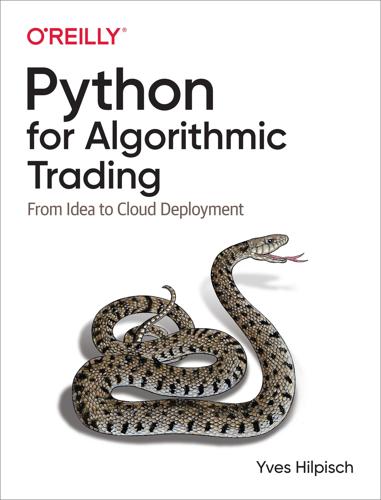
Python for Algorithmic Trading: From Idea to Cloud Deployment
by
Yves Hilpisch
Published 8 Dec 2020
The company was supposed to launch these products at the March event along with the iPhone SE. But due to the ongoing pandemic coronavirus, the event got cancelled. It is expected that Apple will launch the AirPods Pro Lite and the 13-inch MacBook Pro just like the way it launched the iPhone SE. Meanwhile, Apple has scheduled its annual developer conference WWDC to take place in June. This year the company has decided to hold an online-only event due to the outbreak of coronavirus. Reports suggest that this year the company is planning to launch the all-new AirTags and a premium pair of over-ear Bluetooth headphones at the event.
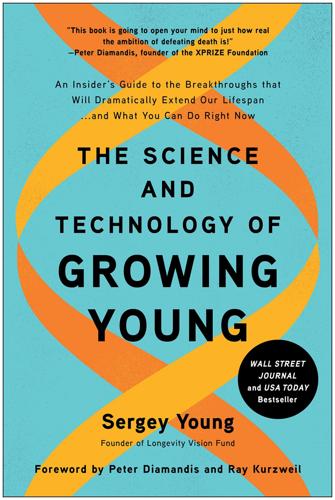
The Science and Technology of Growing Young: An Insider's Guide to the Breakthroughs That Will Dramatically Extend Our Lifespan . . . And What You Can Do Right Now
by
Sergey Young
Published 23 Aug 2021
Gene sequencing is already helping us achieve advances in disease diagnostics and personalized medicine, identify the genes associated with longer lifespans, and develop drugs more quickly, cheaply, and effectively. This usefulness was demonstrated most recently during the first weeks of the COVID-19 outbreak. On January 12, 2020, China publicly shared the genetic sequence of the novel coronavirus, just twelve days after Wuhan Municipal Health Commission, China, reported a cluster of cases of pneumonia in Wuhan, Hubei Province. Some ten to fifteen years ago that would have been completely unthinkable. Perhaps the most consequential aspect of gene sequencing as concerns our Longevity Revolution, however, is that it makes all manner of gene engineering possible.
…
“Yes,” Alex replies, “we’re going to work on the six that we think are the most promising, and release the rest to the global community. We’re closing in on this thing.” The “six” that Alex refers to are six molecular compounds identified at the time as having the most promise to stop the novel coronavirus. Another ninety-four candidates were published on Insilico’s website for other researchers to work on. And it took just three weeks to find all of them. How Insilico did that is a big part of the reason I am so certain we will see multiple longevity drugs emerge within the Near Horizon of Longevity.

Net Zero: How We Stop Causing Climate Change
by
Dieter Helm
Published 2 Sep 2020
The predictions of the peak-oilers have turned out to be nonsense, the price of oil (and gas) has fallen back and, whatever their advocates claim, renewables are not yet subsidy-free once all the costs have been taken into account. What I had not anticipated was that no serious progress would yet have been made on the fundamental problem, and that the concentration of carbon in the atmosphere would still just keep on going ever upwards, without so much as a blip, and, if anything, slightly accelerate. Only the Covid-19 coronavirus pandemic has made a difference, and this is likely to be temporary. When set against the enormity of the consequences of climate change, the only rational response is anger. If this failure to achieve anything much in the last 30 years had been the consequence of not trying, it would be bad but at least understandable.
…
acid rain 25, 194 Africa xiv, xv, 2, 25, 30, 38, 44, 45, 47, 48, 51, 137, 229 agriculture 2, 6, 12, 13, 14, 23, 35–6, 43, 44–5, 70, 76, 86, 87–8, 95, 100, 102, 109, 116, 146–7, 149, 159, 163–80, 181, 183, 192, 197, 198, 206, 220 baseline, the 164–8 biodiversity loss and 2, 5, 100, 164, 165, 168, 169, 171, 172, 174, 180 biofuels and 197–8 carbon emissions and 2, 12, 13, 35–6, 76–7, 146–7, 163–80 carbon price and 167–70, 171, 172, 173, 180 China and 28–9, 35, 45, 180 economics of 76, 165, 166–7, 171, 174 electricity and 13, 166, 168, 174, 178, 180 fertiliser use see fertiliser lobby 14, 110, 164, 165, 169, 170, 197 methane emissions 23, 84, 177, 178, 179 net gain and 172–4 net value of UK 76, 166 new technologies/indoor farming 87–8, 174–9, 180, 213 peat bogs and 2, 179 pesticide use see pesticides petrochemicals and 166 polluter-pays principle and 76, 168–70, 172, 173 pollution 36, 86, 163, 165–6, 168–70, 172, 173, 177–8, 230 public goods, agricultural 170–4, 180 sequestering carbon and 12, 95, 163, 166, 168, 169, 170, 171, 172, 173–4, 177, 179, 180 soils and 2, 146, 163, 164, 165, 166, 168, 169, 171, 172, 175, 179 subsidies 14, 76, 102, 109, 116, 164, 165, 166, 167, 169, 170, 172, 180, 228 25 Year Plan and 179–80 Agriculture Bill (2018), UK 170 air conditioning 135–6, 224, 233 air quality xiii, 13, 25, 46, 52, 61, 70, 135, 153, 177, 180, 201, 216, 230, 232 air transport 3–4, 6, 11, 13, 22, 50, 53, 73, 87, 88, 92, 107, 125, 128, 129, 132, 133, 134, 149, 156–7, 186, 195, 201, 203–5 aluminium 7, 117 Amazon rainforest 2, 34, 35, 95, 145, 149–50, 151, 155, 229, 230 ammonia 35, 137, 191 anaerobic digesters 35, 165, 230 animal welfare 167, 177 antibiotics 93, 165, 174 Arctic 26, 46, 114, 178 artificial intelligence (AI) 32, 175, 220, 231 autonomous vehicles 13, 129, 132, 175, 189–90, 231 Balkans 137–8 Bank of England 121 batteries 6, 31, 131, 135, 141, 183, 184, 185–90, 191, 199, 204, 213, 214, 219, 220, 221, 225, 231 beef 5, 95, 116, 117, 167, 230 Berlin, Isaiah 104 big 5 polluter products 117–18, 120 bin Salman, Mohammad 27 biocrops 36 biodiversity xiv, 2, 5, 12, 13, 28, 35, 51, 76, 94, 100, 148, 149, 152, 153, 158, 159, 164, 165, 168, 169–70, 171, 172, 174, 180, 227, 233 bioenergy 31, 34–5, 36 biofuels 21, 35, 49, 50, 67, 70, 95, 135, 183, 184, 197–8, 210, 230 biomass 32, 34, 49, 50, 67, 69, 109, 146, 147, 151, 210, 217 bonds, government 220 BP 27, 149, 187, 199 Deepwater Horizon disaster, Gulf of Mexico (2010) 147 Brazil 2, 35, 38, 44–5, 47, 95, 145, 149–50, 155, 198 Brexit 42, 47, 56, 117, 165 British Gas 102, 139 British Steel x, 194 broadband networks 6, 11, 90, 92, 125, 126, 127–8, 130–1, 132–3, 135, 140–1, 199, 201, 202, 205, 211, 214, 231, 232 Brundtland Commission 45 BT 127–8, 141 Openreach 214 Burn Out (Helm) ix, xiv Bush, George W. 36, 48, 53, 103 business rates 76, 165 Canada 52, 191, 193 capitalist model 26, 42, 99, 227 carbon border tax/carbon border adjustment xii, 11, 13, 60, 80, 115–20, 194–6, 204 carbon capture and storage (CCS) xiv, 12, 75–6, 95, 109, 146, 147–8, 149, 154, 159, 203–4, 207, 209, 222, 223 Carbon Crunch, The (Helm) ix, xiv, 221 carbon diary 4–5, 8, 10, 11, 64–6, 83, 86, 116, 143, 144, 155, 156, 167, 180, 181, 185, 203, 205 carbon emissions: agriculture and see agriculture by country (2015) 30 during ice ages and warm periods for the past 800,000 years 21 economy and 81–159 electricity and see electricity global annual mean concentration of CO2 (ppm) 19 global average long-term concentration of CO2 (ppm) 20 measuring 43–6 since 1990 1–14, 17–37 transport and see individual method of transport 2020, position in 36–7 UN treaties and 38–57 unilateralism and 58–80 see also unilateralism carbon offsetting xiii–xiv, 4, 5, 12, 34, 45, 72, 74, 79, 94–6, 97, 105, 143–59, 192, 201, 203, 207, 214, 222, 223, 234 for companies 148–50 for countries 151–5 for individuals 155–7 markets 71–2, 110–13, 117, 144, 157–9, 208 travel and 156, 201–3 see also sequestration carbon permits 71–2, 79, 110–13, 117, 144, 208 carbon price/tax xii, xiii, xv, 8, 11, 12, 13, 26, 60, 61, 71, 72, 77, 79, 80, 84, 85–6, 102–3, 105, 106–24, 134, 143, 146, 147, 150, 151–4, 157, 159, 192, 197, 198, 199, 203, 227–30, 232, 234 agriculture and 167, 168, 169–70, 171, 173, 180 domain of the tax/carbon border adjustment xii, 11, 13, 60, 80, 115–20, 121, 124, 192, 194–6, 197, 204, 227 electric pollution and 216–18 ethics of 107–10 floor price 115, 117, 208 for imports 11, 13 prices or quantities/EU ETS versus carbon taxes 110–13 setting 113–15 transport and 192–9 what to do with the money 121–4 where to levy the tax 119–20 who fixes the price 120–1 carbon sinks 2, 5, 166, 169, 203 carboniferous age 34 cars 1, 3, 4, 7, 20, 22, 36, 44, 70, 73, 114, 129, 181, 182, 183, 184–5, 190, 191, 193, 196, 197, 198, 199 see also electric vehicles cartels 39, 40, 43, 45, 46, 47, 56 cattle farming 35, 36, 95, 150, 166, 167, 173, 177, 198 Central Electricity Generating Board (CEGB) 102, 139, 218 cement 6, 7, 26, 29, 34, 87, 117, 171 charging networks, electric vehicle 91, 129–30, 141–2, 184, 185–90, 199, 200, 202, 219 Chernobyl 78 China xi, xv, 1–2, 5, 8, 18, 42, 46, 47, 48, 64, 66, 74, 101, 180, 229 Belt and Road Initiative 28, 45 coal use 1–2, 8, 23–4, 24, 28, 31, 38, 117, 154, 206, 208 Communist Party 2, 27, 42, 46 demand for fossil fuels/carbon emissions 1–2, 8, 18, 20, 22, 23–4, 24, 25, 27–31, 36, 38, 51, 73, 117, 154, 206, 208 export market x–xi, 5, 9, 64, 66, 117, 155, 194 fertiliser use 35 GDP xv, 27, 29 nationalism and 42 petrochemical demand 22 renewables companies 9, 32, 73, 74, 77, 79 Tiananmen Square 42 unilateralism and 58, 59 UN treaties and 46, 47, 48, 53, 54, 55, 58, 59 US trade war 56, 118 Churchill, Winston 183 citizen assemblies 99–101 climate change: carbon emissions and see carbon emissions 1.5° target 38, 57 2° target 1, 10, 22–3, 28, 30, 38, 39, 45, 47, 54, 55, 57, 108, 122, 155, 206 see also individual area of climate change Climate Change Act (2008) 66, 74–7 Clinton, Bill 40, 48 Club of Rome 98 coal 1–2, 5, 8, 13, 20, 23–5, 28, 29, 30, 31, 32, 34, 36, 38, 50, 52, 53, 60–1, 67, 72, 77, 78–9, 101, 109, 112, 116, 117, 119, 134, 136, 145, 147, 148, 151, 154, 155, 182, 183, 194, 196, 206–9, 210, 212, 214, 216, 217, 218, 229, 230 coastal marshes 146, 159 colonialism 45 Committee on Climate Change (CCC), UK x–xi, 7, 74–5, 120, 164, 166, 169, 217, 235 ‘Net Zero: The UK’s Contribution to Stopping Global Warming’ report x–xi conference/video calls 6, 129, 156, 202, 205 Conference of the Parties (COP) xii, 10, 48, 50, 53–4, 55, 59, 205 congestion charges 198 Copenhagen Accord 48, 53–4, 59 Coronavirus see Covid-19 cost-benefit analysis (CBA) 71, 108, 110, 114, 138 cost of living 116 Covid-19 x, xi–xii, 1, 3, 6, 9, 18, 19, 22, 25, 27, 30, 37, 44, 46, 50, 57, 65, 69, 80, 89, 93, 129, 135, 148, 171, 201, 202, 204, 232 CRISPR 176 crop yields 172, 177 dams 2, 36, 52–3, 179 DDT (Dichlorodiphenyltrichloroethane) 100 deforestation 2, 5, 34, 35, 36, 38, 43, 44, 47, 55, 87, 95, 145, 146, 149–50, 155, 172–3, 179, 197–8, 229 Defra (Department for Environment, Food and Rural Affairs) 170 deindustrialisation x, 29, 46, 52, 54, 59, 72–4, 218 Deng Xiaoping 27 Denmark 69–70, 136–7 desalination 135–6, 179 diesel 4, 20–1, 70, 76, 86, 109, 119, 121, 129, 132, 164, 165, 166, 174, 175, 178, 179, 181, 182, 185, 186, 191, 192, 196–7, 208, 217, 230 ‘dieselgate’ scandal 196–7 digitalisation 1, 8, 11, 13, 33, 92, 117, 136, 174, 175, 180, 206, 211, 215, 221, 228–9, 231 DONG 69 Drax 147, 151, 154, 218 economy, net zero 10–12, 81–159 delivering a 96–103 intergenerational equity and 96–7 markets and 103–5 net environmental gain see net environmental gain political ideologies and 98–101 polluter-pays principle see polluter-pays principle public goods, provision of see public goods, provision of technological change and 98 EDF 139, 218 Ehrlich, Paul 98 electricity 1–2, 4, 6, 11, 12, 13, 23, 31, 32, 49, 53, 61, 65, 66, 68, 70, 73, 77, 78, 79, 91, 92, 101, 102, 109, 117, 125, 127, 128, 129–30, 131–2, 134, 135, 136, 137, 139, 140, 141, 149, 158, 166, 168, 174, 178, 180, 182, 183, 228, 229, 231, 232, 234, 235 coal, getting out of 206–7 electric pollution and the carbon price 216–18 electric vehicles 4, 6, 13, 20, 23, 49, 61, 91, 92, 94, 121, 125, 128, 129–30, 131–2, 134, 141, 183–92, 193, 194, 197, 200, 201, 202, 206, 219, 228 equivalent firm power auctions and system operators 210–16 future of 206–25 gas, how to get out of 207–9 infrastructure, electric 185–90, 218–20 low-carbon options post-coal and gas 209–10 net gain and our consumption 222–5 R&D and next-generation renewables 220–2 renewable see renewables Energy Market Reform (EMR) 219 equivalent firm power (EFP) 212–16, 217, 220 ethanol 35, 71, 95, 197 eucalyptus trees xiv, 152 European Commission 60, 71, 72, 112 European Union (EU) xiv, 2, 7, 8, 9, 37, 42, 44, 46, 47, 117, 137, 165, 166, 197; baseline of 1990 and 51–2 Common Agricultural Policy (CAP) 76, 165 competition regime and customs union 56 deindustrialisation and 46, 52, 54, 59, 72–4 directives for 2030 66 Emissions Trading System (EU ETS) 71–2, 73, 79, 110–13, 117, 144, 208 importing carbon emissions 59 Internal Energy Market (IEM) 68, 71 Kyoto and 9, 51, 59, 66–7 Mercosur Agreement 44, 95 net zero target for 2050 66, 115, 143, 155, 167, 180 Paris and 54 Renewable Energy Directive 68–71, 73, 109 2020 targets signed into law 66 2020–20–20 targets 67, 69, 74 unilateralism and 59, 66–71, 80 Eurostar 133 externalities 104, 170, 180, 196 Extinction Rebellion 6 farmers 14, 26, 35, 36, 43, 71, 76, 86, 95, 102, 109, 110, 146–7, 164, 165, 166, 169, 170, 174, 175, 196, 197, 198 fertiliser 4, 6, 7, 26, 29, 35, 61, 73, 86, 87, 116, 117, 119, 163, 165, 169, 174, 175, 178, 179, 191, 194, 197 fibre/broadband networks 6, 11, 90, 92, 125, 126, 127–8, 130–1, 132–3, 135, 140–1, 201, 202, 205, 211, 214, 231, 232 financial crisis (2007/8) 1, 19, 69 first-mover advantage 75 First Utility 199 flooding 13, 77, 149, 152, 153, 159, 170, 233 food miles 167 food security 170–1 food waste 178, 180, 231 Forestry Commission xiv Formula One 186, 196 fossil fuels, golden age of 20–5 see also individual fossil fuel France 46, 47, 52, 56, 73, 78, 101, 113, 130, 136, 138 free-rider problem 39–40, 43, 62–4, 106, 119 fuel duty 121, 195–6 fuel efficiency 197 fuel prices 26, 112–13, 209 fuel use declaration 195 Fukushima Daiichi nuclear disaster (2011) 52, 78 Fukuyama, Francis: The End of History and the Last Man 40–1 gardens 6, 43, 143, 156 gas, natural ix, 2, 5, 8, 20, 23, 24, 25, 26, 29, 31, 32, 36, 50, 52, 68, 69, 79, 102, 109, 117, 119, 129, 136, 137, 146, 147–8, 149, 183, 190, 193, 194, 207–9, 210, 211, 214, 216–17 G8 47 gene editing 172, 176, 231 general election (2019) 121 genetics 98, 172, 174–6, 231 geoengineering 177 geothermal power 137, 178 Germany 9, 30, 47, 52, 59, 60, 62, 66, 67, 69, 70, 71, 72, 73, 75, 77–80, 83, 91, 101, 112, 136, 137, 138, 144, 206, 208, 209 Energiewende (planned transition to a low-carbon, nuclear-free economy) 59, 69, 77–80, 112, 144, 208 Gilets Jaunes 101, 113 GMOs (genetically modified organisms) 176, 177 Great Northern Forest, Britain 151 Green and Prosperous Land (Helm) xiii, xiv, 165, 169, 234 greenbelt 173 greenhouse effect 17 green new deal 90, 102, 234 green parties/green votes 69, 77, 78 green QE (quantitative easing) 102–3 green walls 153, 231 greenwash 156 gross domestic product (GDP) xii, xv, 1, 25, 27, 29, 41, 57, 59, 73, 76, 83, 93, 98, 103, 133, 165, 207, 227, 229, 233 growth nodes 133 G7 47 G20 47 Haber-Bosch process 35, 163 Hamilton, Lewis 186 ‘hands-free’ fields 175 Harry, Prince 6 Heathrow 133, 134 hedgerow 76, 166, 167, 172 Helm Review (‘The Cost of Energy Review’) (2017) ix, 120, 141, 200, 210, 212, 215, 217, 220, 238 herbicide 163 home insulation 102 House of Lords 170 housing 101, 223–4 HS2 92, 125, 132–4, 138, 202 Hume, David 49 hydrogen 13, 49, 92, 125, 128, 135, 137, 183, 184, 190–2, 199, 200, 204, 206, 213, 228 hydro power 31, 35, 36, 50, 52–3, 70, 136, 137, 191 Iceland 137, 178 imports x–xi, xiii, 5, 8, 10, 11, 12, 13, 62, 68, 70, 117–18, 155, 167, 178, 173, 180, 196, 227 income effect 72, 111 income tax 121, 122, 232 India xiv, xv, 25, 30, 31, 38, 43, 44, 47, 48, 51, 54, 55, 57, 154, 229 individuals, net zero for 155–7 Indonesia 2, 35 indoor farming 87–8, 177–8, 180, 213 indoor pollutants 223, 232 Industrial Revolution 1, 18, 19, 25, 47, 116, 145 INEOS Grangemouth petrochemical plant xi information and communications technology (ICT) 117, 202, 231 infrastructures, low-carbon xiii, xiv, 11–12, 14, 28, 60, 62, 65, 66, 90, 91–4, 96, 105, 109, 123, 125–42, 143, 147, 151, 154, 159, 171, 184, 186, 187, 190, 199–200, 214, 218–20, 228, 230, 231–2, 234–5 centrality of infrastructure networks 128–30 electric 125–41, 218–20 making it happen 141–2 net zero national infrastructure plan 130–6 private markets and 125–8, 141–2 regional and global infrastructure plan 136–7 state intervention and 126, 127–8, 141–2 system operators and implementing the plans 138–41 inheritance tax 76, 165 insects 164, 177, 231 insulation 102, 224 Integrated Assessment Models 114 intellectual property (IP) 75 Intergovernmental Panel on Climate Change (IPCC) 17–18, 47, 55, 57, 108, 172 internal combustion engine 13, 22, 181–2, 183, 184, 200, 221, 228 Internal Energy Market (IEM) 68, 71, 138 International Energy Agency (IEA) 25, 207 International Monetary Fund (IMF) 51 internet banking 131, 213 internet-of-things 128, 175 Iran 27, 42, 113, 137 Iraq 56, 192 Ireland 43, 157 Italy 137, 182 Japan 27, 28, 30, 52, 73, 78, 101, 185 Jevons Paradox 224 Johnson, Boris 89–90 Kant, Immanuel 104 Keynes, John Maynard 89, 102, 103, 105 Kyoto Protocol (1997) xii, 2, 7, 9, 13, 17–18, 37, 38, 39, 40–1, 47–8, 49, 51, 52–3, 59, 66–7, 119 laissez-faire 104, 138, 188 land use 35, 61, 95, 172, 237 LED (light-emitting diode) lighting 87, 178, 179, 180, 213 liquefied natural gas (LNG) 136, 183 lithium-ion battery 185 lobbying 10, 14, 33, 69, 71, 109, 110, 111–12, 115, 121, 157, 169, 170, 187, 197, 209, 223, 227, 228 location-specific taxes 194 maize 35, 165, 197 Malaysia 2, 229 Malthus, Thomas 98 Mao, Chairman 27, 42 meat xi, 65, 164, 177, 180, 232 Mekong River 2, 28, 179, 229 Mercosur Agreement 44, 95 Merkel, Angela 78 methane 4, 23, 84, 177, 178, 179, 216 microplastics 22 miracle solution 49–50, 55, 209 mobile phone 5, 125, 185 National Farmers’ Union (NFU) 110, 164, 165, 169, 170, 171 National Grid 139, 141, 189, 200, 211, 214, 219 nationalisations 101–2, 126–7 nationalism 41, 43, 55, 56, 138 nationally determined contributions (NDCs) 54–5 natural capital xiii, 14, 33–6, 51, 85, 86, 88, 90, 94, 97, 154, 158, 168, 171, 173–4, 236 Nature Fund 123, 169, 234 net environmental gain principle xiii, xiv, 10, 12, 62, 84, 94–6, 105, 143–59, 169, 172–4, 192, 201–3, 222–5 agriculture and 169, 172–4 carbon offsetting and see carbon offsetting electricity and 222–5 principle of 94–6, 143–4 sequestration and see sequestration transport and 192, 201–3 Netherlands 138 Network Rail 214 net zero agriculture and see agriculture defined x–xv, 3–14 economy 10–12, 81–159 see also economy, net zero electricity and see electricity transport and see individual method of transport 2025 or 2030 target 89 2050 target x, xi, 5, 59, 66, 74, 75, 115, 120, 135, 143, 155, 167, 169, 180, 184, 216, 217, 222, 226, 230, 231, 232 unilateralism and see unilateralism NHS 65 non-excludable 91, 93, 126, 170 non-rivalry 91, 93, 126, 170 North Korea 42 North Sea oil/gas 9, 40, 75, 97, 102, 137, 139, 147, 148, 193 Norway 130, 137, 191 nuclear power 5, 9, 12, 18, 23, 52, 60, 73, 77–9, 109, 125, 128, 129, 136, 140, 178, 194, 199, 206, 207, 208, 209–10, 212, 214, 216, 218, 219, 222, 228 Obama, Barack 48, 53, 54, 59 oceans 2, 14, 22, 33, 85, 86, 88, 148, 163, 231 offsetting see carbon offsetting offshore wind power 31, 69, 75–6, 208, 212, 219, 221 Ofgem 220 oil ix, 2, 20, 22–3, 25, 26, 27, 31, 32, 33, 36, 39, 40, 50, 67, 69, 86, 97, 117, 119, 129, 136, 137, 146, 147, 148–9, 150–1, 152, 181–3, 184, 185, 187, 189, 190, 192–4, 196, 197, 199, 206, 209, 210, 216–17, 229 OPEC 39, 40, 193 Orbán, Viktor 41, 42 organic food 61, 87, 178 Ørsted 70 palm oil 2, 5, 6, 35, 36, 66, 71, 167, 173, 197–8, 230 pandemic see Covid-19 Paris Climate Change Agreement (2015) xii, 2, 10, 13, 18, 30, 37, 38, 39, 48, 49, 54–5, 56, 57, 58, 66, 80, 105, 106, 118, 119, 227 peat bogs xiv, 2, 13, 14, 33, 35, 36, 43, 109, 146, 169, 179 pesticides 4, 26, 61, 163, 165, 169, 174, 178, 231 petrochemicals xi, 7, 8, 20, 22–3, 29, 73, 80, 86, 117, 166, 182 petrol 4, 86, 119, 121, 129, 185, 186, 187, 191, 192, 199 photosynthesis 34, 197 plastics 1, 22, 28, 35, 43, 66, 86, 87, 119, 143, 166, 184, 231 polluter-pays principle xiii, xv, 84–90 agriculture and 76, 168–70, 172, 173 carbon price and see carbon price/tax generalised across all sources of pollution 86 identifying polluters that should pay 86 importance of 10–11, 13, 61, 62, 65 intergenerational balance and 96–7 net environmental gain and 94 sequestration and see sequestration, carbon sustainable economy and 96–7, 105, 106 transport and 192–5, 198–9 see also individual type of pollution population growth 93, 97, 177, 178, 179, 232 privatisation 127, 140, 218–19, 220 property developers 94 public goods, provision of xiii, 10, 11–12, 62, 75, 84, 90–4, 96, 104, 105, 109, 122, 123, 126, 128, 141, 147, 151, 153, 159, 164, 168, 173–4, 180, 192, 199–200, 202, 218, 229, 230 agricultural 170–4, 180 low-carbon infrastructures see infrastructures, low-carbon research and development (R&D) see research and development (R&D) Putin, Vladimir 27, 41, 42, 89 railways 11, 13, 13, 87, 91, 92, 94, 125, 128, 129, 130, 131, 132–3, 138, 139, 156, 182, 183, 187, 202, 212, 214, 232 rainforest 2, 5, 34, 35, 36, 38, 44, 47, 55, 87, 95, 145, 149, 155, 173, 179–80, 197, 229 rationalism 40–1 Reagan, Ronald 103 red diesel 76, 109, 164, 165, 196 regulated asset base (RAB) 127, 141, 215, 220 remote working 128, 156, 201–2, 205 renewables ix, 6, 8, 9–10, 18, 19, 21, 26, 31–5, 36, 49, 50, 55, 61, 67, 72, 77, 79, 85, 86, 109, 110, 112, 123, 125, 128, 131, 135, 138, 140, 144, 149, 178, 188, 191, 194, 197, 199, 207, 209–10, 211, 212, 213, 214, 215, 216, 217, 219, 220–2, 224, 228 Chinese domination of market 9, 32, 73, 74, 77, 79 cost-competitiveness of 9–10, 49, 51, 61, 68 failure of, 1990-now 19, 31–3, 36 modern global renewable energy consumption measured in TWh per year 32 miracle solution and 49–51 Renewable Energy Directive 68–71, 73, 109 subsidies ix, 9, 10, 50, 68–9, 71, 79, 80 see also individual renewable energy source Renewables UK 110 research and development (R&D) xiv, 12, 13, 14, 62, 65, 66, 90, 93–4, 104, 109, 123, 165, 172, 192, 200, 218, 220–2, 223, 228, 234 reshoring businesses 8, 204 rivers 2, 22, 28, 86, 128, 152, 165, 169, 179, 214, 230 roads 11, 28, 45, 91, 92, 125, 129, 131–2, 140, 165, 182, 189, 194, 198, 202, 232 robotics 32, 175, 204, 206, 231 Rosneft 26 Royal Navy 183 Russia 26, 27, 30, 40, 42, 44, 45, 46, 47, 48, 50, 52, 55, 56, 192, 193 RWE 139, 218 Ryanair 156–7 rye grass 35 salmon 169, 177 Saudi Arabia 26, 33, 40, 42, 50, 137, 192, 193 Saudi Aramco 26, 50 seashells 34 sequestration, carbon xi, xiv, 12, 61, 66, 85, 90, 95, 143–59, 228, 229, 231, 232 agriculture and 12, 163, 166, 168, 169, 170, 171, 172, 173, 176–7, 179, 180 baseline definition and 146–7 biofuels and 35, 146, 217 carbon capture and storage (CCS) xiv, 12, 75–6, 95, 109, 146, 147–8, 149, 154, 159, 203–4, 207, 209, 222, 223 companies, net zero for 148–51 countries, offsetting for 151–5 electricity and 222, 223 gas and 207 individuals, net zero for xi, xiv, 155–7 markets, offsetting 157–9 natural capital destruction and 2, 19, 33–6, 44, 45, 51 natural sequestration xi, xiii, 2, 7, 12, 14, 33–6, 37, 45, 52, 66, 85, 90, 94–6, 105, 143–59, 163, 168, 171, 173, 176–7, 179, 180, 203, 206, 207, 222, 223 net gain principle and 143–4, 146, 149–50 offsetting principle and 143–5 peat bogs and see peat bogs principle of xi, xiii, 2, 7, 12–13 soils and see soils transport and 185, 190, 203 tree planting and see trees, planting/sequestration and types of 145–8 wetlands/coastal marshes and 146, 159, 233 shale gas 8, 208 Shell 27, 149, 199 shipping 8, 13, 22, 28, 36, 49, 114, 125, 137, 181, 182–3, 191, 194–5, 203–5, 217 Siberia 2, 46 smart appliances 128, 129, 132 smart charging 11, 13, 128, 129, 130, 139, 214, 219 soils xiii, 2, 5, 7, 12, 14, 33, 35, 36, 43, 55, 76, 109, 146, 149, 152, 156, 159, 163, 164, 165, 166, 168, 169, 171, 172, 175, 179, 203, 228 solar panels/solar photovoltaics (PV) 5, 6, 9, 12, 13, 21, 31, 32, 33, 49, 53, 68, 69, 71, 74, 79, 87, 91, 135, 136, 137, 178, 179, 188, 204, 207, 208, 209, 210, 211, 213, 214, 216, 217, 221, 222, 223, 224–5 Sony 185 Soviet Union 18, 40, 52, 67–8, 89 soya 95 Spain 69, 130, 137 sport utility vehicles (SUVs) 106, 121, 192 spruce xiv, 152, 170 standard of living xv, 1, 5, 8, 10, 11, 14, 229, 233 staycations 201 steel x–xi, 6, 7, 8, 26, 28, 29, 53, 66, 73, 80, 87, 116, 117, 118, 119, 171, 184, 194–5 Stern, Nicholas: The Economics of Climate Change 41, 63 subsidies ix, 9, 10, 14, 32, 50, 51, 52, 53, 69, 71, 76, 79, 80, 89, 102, 109, 110, 113, 116, 123, 140, 154, 164, 165, 166, 167, 169, 170, 172, 180, 193, 196, 198, 209, 215, 221, 222, 228, 230 sugar cane 35, 71, 95, 197, 198 sulphur pollution 22, 25, 28, 78, 191, 194, 197, 230 sustainable economic growth xv, 10, 12, 14, 61, 83, 92, 94, 97, 98, 105, 227, 233 Taiwan 42 taxation xii, 11, 62, 71, 72, 76, 80, 87, 89, 90, 91, 92, 97, 101, 102, 103, 106–24, 126, 127, 130, 133, 147, 150, 151–2, 153–4, 157, 159, 165, 169, 170, 192–6, 197, 198, 199, 203, 232, 234 technological change 98, 127, 141, 174–5, 221 Thatcher, Margaret 17 Thompson, Emma 6 3D printing 175, 204 Thunberg, Greta 6, 205 tidal shocks 159 top-down treaty frameworks 13, 38–57, 80, 110, 119 tourism/holidays 6, 22, 36, 88, 94, 107, 114, 128, 156, 201, 204–5 transport, reinventing 181–205 aviation 195, 201, 203–5 see also air transport batteries and charging networks 185–90 biofuels 196–8 electric alternative 183–5 hydrogen and fuel cells 190–2 innovation, R&D and new infrastructures 199–200 internal combustion engine 181–2 net gain and offsets (reducing travel versus buying out your pollution) 201–3 oil 183–4 polluter pays/carbon tax 192–6 shipping 203–5 urban regulation and planning 198–9 vehicle standards 196–8 see also individual type of transport Treasury, UK 120–2 trees, planting/sequestration and xi, xiii, xiv, 2, 7, 13, 14, 33, 34, 45, 76, 85, 94–6, 146, 148, 149–51, 152–3, 155, 156, 157, 158, 159, 168, 169, 172, 179, 203, 231 trophy project syndrome 133 Trump, Donald 2, 8, 41, 42, 48, 89, 99, 103, 121 25 Year Environment Plan xiii, 153, 170, 179–80 UK 47, 69 agriculture and 164, 166, 167, 173 carbon emissions (2015) 30 carbon price and 115, 120 Climate Change Act (2008) 66, 74–7 coal, phasing out of 24–5, 60–1, 77, 208 Committee on Climate Change (CCC) x–xi, 7, 74–6, 120, 164, 166, 169, 217, 235 deindustrialisation and 72–4 80 per cent carbon reduction target by 2050 74 electricity and 206, 208, 218, 219, 224 Helm Review (‘The Cost of Energy Review’) (2017) ix, 120, 141, 200, 210, 212, 215, 217, 220, 238 infrastructure 125, 132–3, 134, 137, 139–40 net zero passed into law (2019) 66 sequestration and 145, 150, 153, 154, 155, 156 transport and 195–6, 197, 198 unilateralism and 58–9, 60–1, 65, 66, 69, 72–7, 80 unilateralism xi, 8, 10, 11, 25, 58–80, 83, 105, 106, 119, 125, 143, 144, 155, 164, 167, 197, 203, 227 in Europe 66–80 incentive problem and 58–60 morality and 62–6 no regrets exemplars and/showcase examples of how decarbonisation can be achieved 60–2 place for 80 way forward and 80, 83 United Nations xi, xii, 6, 10, 17, 37, 38, 118 carbon cartel, ambition to create a 39–40, 43, 45, 46–7, 56 climate treaty processes xi, 6, 10, 13, 17–18, 36, 37, 38–57, 59, 80, 110, 118, 119, 204–5 see also individual treaty name Framework Convention on Climate Change (UNFCCC) 17–18, 36, 38, 59 miracle solution and 50–1 origins and philosophy of 41 Security Council 46, 47, 57 United States 8, 74, 139, 206 agriculture in 175, 176, 197 carbon emissions 8, 29, 30 China and 27–8, 42, 118 coal and 2, 24, 28, 29, 208 economic imperialism 45 energy independence 50 gas and 8, 20, 23, 24, 29, 50, 208 oil production 40, 50, 193 pollution since 1990 29 unilateralism and 58, 59, 74 UN climate treaty process and 38, 40–1, 44, 45, 46, 47, 48, 53, 54, 56 universal service obligations (USOs) 92, 126, 131, 202 utilitarianism 41, 63–4, 108, 110 VAT 117, 119–20, 121, 122, 232 Vesta 69 Volkswagen 196–7 water companies 76, 214, 230 water pollution/quality xiv, 12, 22, 61, 76, 152, 153, 165, 169, 170, 171, 172, 175, 177, 178, 179, 180, 232 Wen Jiabao 53, 59 wetlands 159, 233 wildflower meadow 164, 184 wind power 5, 9, 12, 21, 31, 32, 33, 49, 53, 68, 69–70, 71, 74, 75, 76, 78, 79, 91, 135, 136, 137, 138, 139, 178, 188, 191, 207, 208, 209, 210, 211, 212, 213, 214–15, 216, 217, 219, 221, 222 wood pellets 67, 217, 230 Woodland Trust 156, 158 World Bank 51 World Trade Organization (WTO) 52, 56, 118 World War I 183 World War II (1939–45) 78, 90, 92, 101, 106, 171 Xi Jinping 27, 41, 42 ACKNOWLEDGEMENTS So much is now discussed, written and published about climate change that it is impossible to keep track of all the ideas and conversations that have influenced my understanding of the subject.

Spooked: The Trump Dossier, Black Cube, and the Rise of Private Spies
by
Barry Meier
Published 17 May 2021
The law had plenty of exceptions and loopholes—private spies didn’t have to notify their targets, for instance, when they were gathering material for use in litigation or employee disputes. Still, the new rules provided people unfairly targeted by operatives-for-hire with the opportunity to seek recompense. As the Alfa Bank–related lawsuit was starting in March 2020, another development was unfolding—a deadly novel form of coronavirus was spreading around the world. In response to the growing pandemic, parts of the United States and Europe had shut down but Britain was late to do so and the case against Orbis Business Intelligence proceeded. When he took the witness stand, Christopher Steele quickly found himself under attack.
…
“I agree that one of the points made is false.” Steele never got to complete his testimony in the case. Midway through his second day on the witness stand, he was notified that his wife had been taken to a hospital near their home in Farnham after showing symptoms of COVID-19, the disease caused by the novel coronavirus. He was excused so he could join her and the case was completed without him. Several months later, the judge overseeing the case issued his ruling. He found that Orbis had not violated the Data Protection Act, the law under which the oligarchs had sued. But when it came to the most serious allegation in Steele’s report—the claim that Alfa Bank’s principals had bribed Putin—the judge held that Steele had failed to take reasonable steps to ascertain whether the charge was true.
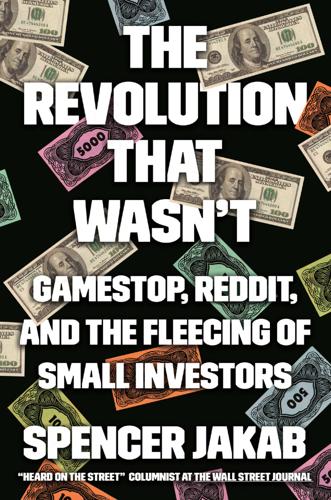
The Revolution That Wasn't: GameStop, Reddit, and the Fleecing of Small Investors
by
Spencer Jakab
Published 1 Feb 2022
I remember being young and idealistic. Then I got older and I realized that the government excels at two things: theft and murder.” “The SEC is probably waiting for DFV to slip up and charge him with manipulating markets. Yet no charges were brought on the senators who blatantly did insider trading when coronavirus started.” As it turned out, WallStreetBets hadn’t heard the last of Gill. He resumed his updates following the February 18 congressional hearing, and in the interim he had used some of his cash to buy even more GameStop shares. He really did “like the stock.” Gill’s final update was posted on the day that his options expired, on April 16.
…
BACK TO NOTE REFERENCE 10 u/never_noob, “Official WSB Survey Results are in!,” Reddit, 2017, www.reddit.com/r/wallstreetbets/comments/52tfrg/official_wsb_survey_results_are_in. BACK TO NOTE REFERENCE 11 Graham Flanagan, “Barstool Sports Founder Switches from Gambling to Day Trading during Coronavirus—and He Says He’s Down $647,000,” Insider, April 20, 2021. BACK TO NOTE REFERENCE 12 Dave Portnoy (@stoolpresidente), “I’m sure Warren Buffett is a great guy, but when it comes to stocks he’s washed up. I’m the captain now #DDTG,” Twitter, June 9, 2020, 9:41 a.m., twitter.com/stoolpresidente/status/1270350291653791747.
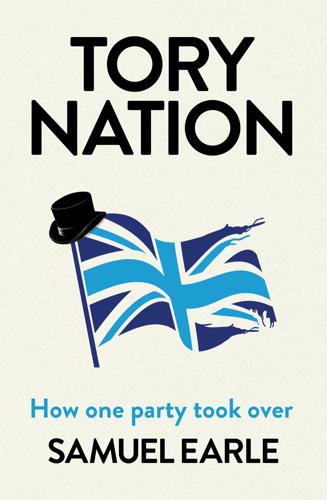
Tory Nation: The Dark Legacy of the World's Most Successful Political Party
by
Samuel Earle
Published 3 May 2023
The Conservative leader William Hague spoke of a ‘Common Sense Revolution’ in 2001. Ten years later, as the Tories pursued austerity, David Cameron declared: ‘Let this be our message – common sense for the common good.’ Johnson often invoked it, even declaring that ‘common sense’ was the ‘single greatest weapon’ against the coronavirus, as opposed to scientific models or social measures. In the summer of 2020, a group of Tory backbenchers launched the ‘Common Sense Group’, trumpeting a new ‘exclusive’ finding that ‘84% of the public agree with the statement: “We need to restore some common sense in this country”’. Truss was once declared their ‘Common Sense Champion’.
…
The Labour figures who preferred a Conservative win to Corbyn extending his stay as party leader achieved their ambition. ‘People might ask me in 30 years, “what did you achieve in your time in politics?”’ Gavin Shuker, a former Labour MP who left to join Change UK and now works as the CEO of a credit card company, reflected a few months after the election, as the coronavirus pandemic was unfolding. ‘I will be able to say I helped prevent Jeremy Corbyn from leading us through a huge national crisis. And to be honest, I’ll take that.’32 * * * Johnson’s boosterish bravado, coupled with his indifference to the details, made him an ideal leader for Britain in the age of Brexit – a realm of fantasy where the details, with all their real-world consequences, were swept aside, and all the nation needed was a bit of self-belief.

The Undertow: Scenes From a Slow Civil War
by
Jeff Sharlet
Published 21 Mar 2023
“Recognize what is before your eyes,” the Gospel of Thomas advises, “and that which is hidden will be revealed.” One needs no diplomas to know truth, no “data” contrived by “experts.” Knowledge lies not in scholarship or information but within, “the gut,” as Trump had long maintained, or “right here,” as he said at one of his coronavirus briefings, tapping his temple to show us “the metric” by which he would know when it was safe for us to go outside, when we could gather again by the thousands to adore him. 3. In Bossier City, the line wound through a parking lot, a sluggish serpent that moved only in hiccups and burps.
…
“There’s a lot of drops,” Pastor Dave told me by phone after we met in Bossier City. By “drops” he meant clues. The pandemic was in full and terrible blossom, and tens of thousands of Americans had already died from a virus that Trump had attempted to laugh off. His rallies temporarily suspended, he’d stumbled on daily televised coronavirus briefings as a form of mass spectacle, a way to continue attacking the media and dismissing the experts and disseminating secret codes. The two-hour performances weren’t meant to inform or comfort or unite. They were Trump’s rallies for what would prove to be an all-too-brief era of social distancing.
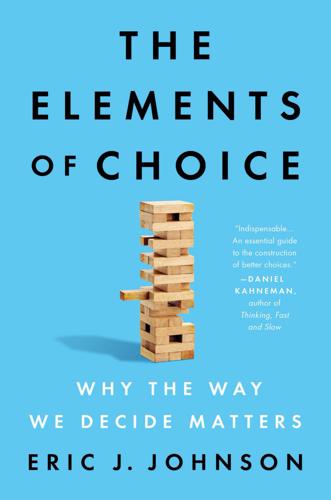
The Elements of Choice: Why the Way We Decide Matters
by
Eric J. Johnson
Published 12 Oct 2021
If we understand mind writing, we may be a step ahead. 4 Goals of Choice Architecture In the early spring of 2020, everyone wanted to talk to their doctor. COVID-19 changed many things, but right then, many people—too many people—had a single question: “I think I have symptoms of the coronavirus. What should I do?” Implicit in the question was a choice among several options: doing nothing, self-isolating (including from family), trying to get a test, or going to the emergency room. There was a no shortage of information. Indeed, there was a tsunami of stories, theories, information, facts, and fantasy.
…
Independent, January 4, 2017. https://www.independent.co.uk/news/world/europe/french-citizens-organ-donors-france-opt-out-donation-hospital-healthcare-doctors-a7508576.html. Elgot, Jessica. “Commons May Never Return to Packed Chamber Debates, Says Speaker.” Guardian, July 26, 2020. https://www.theguardian.com/politics/2020/jul/26/lindsay-hoyle-commons-may-never-return-to-packed-chamber-debates-says-speaker-coronavirus. Empson, Rip. “Practice Fusion Continues to Reach Beyond Digital Health Records, Adds Free Expense Tracking to New Booking Engine.” TechCrunch, May 22, 2013. https://techcrunch.com/2013/05/22/practice-fusion-continues-to-reach-beyond-digital-health-records-adds-free-expense-tracking-to-new-booking-engine.

The Alternative: How to Build a Just Economy
by
Nick Romeo
Published 15 Jan 2024
This avoids triggering pension liabilities. 6 The World’s Largest Worker-Owned Cooperative In March of 2020, Jorge Vega Hernández, a young mechanical engineer working in northwestern Spain, started to feel sick after a business trip. When he called a government health line, he was advised to stay home; he had the symptoms of the novel coronavirus that was overwhelming the medical system. Without leaving the house for a test, however, he lacked proof of illness. And if he was not officially sick, he had no excuse to stay home. A week after he got sick, his company fired him. Alone and newly jobless during the lockdown, Hernández, who was thirty-two at the time, took stock of his life.
…
Chantel McGee, “Only 4% of Uber Drivers Remain on the Platform a Year Later, Says Report,” CNBC, April 20, 2017, https://www.cnbc.com/2017/04/20/only-4-percent-of-uber-drivers-remain-after-a-year-says-report.html. 20. Matthew Lavietes and Michael McCoy, “Waiting for Work: Pandemic Leaves U.S. Gig Workers Clamoring for Jobs,” Reuters, October 19, 2020, https://www.reuters.com/article/us-biggerpicture-health-coronavirus-gigw-idUSKBN2741DM. 21. Statista, “Number of Freelancers in the United States from 2017 to 2028” (chart), Statista Research Department, September 30, 2022, https://www.statista.com/statistics/921593/gig-economy-number-of-freelancers-us/. 22. Nicholas Watt, “Welfare Reform: Government Backs System of Working in ‘Slivers of Time,’” Guardian (Manchester, UK), November 14, 2010, https://www.theguardian.com/politics/2010/nov/14welfare-reform-working-slivers-of-time. 23.
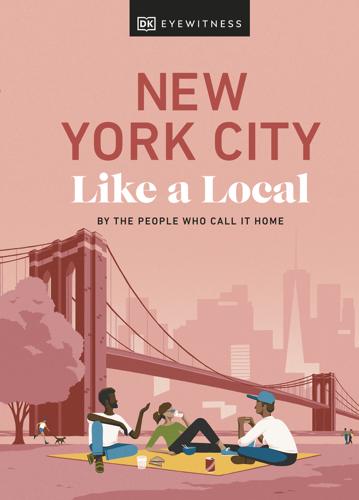
New York City Like a Local
by
Dk Eyewitness
www.health.ny.gov Resource detailing hospitals and their services throughout the state. TRAVEL SAFETY ADVICE Before you travel – and while you’re here – always keep tabs on the latest regulations in New York City, and the US. www.cdc.gov National public health institute offering disease prevention and guidance. www.coronavirus.health.ny.gov COVID-19 news and advice from New York State. www1.nyc.gov New York Police Department website, including precinct news and information on how to report various crimes. https://portal.311.nyc.gov The city’s official information hotline, with details on how to retrieve lost property.
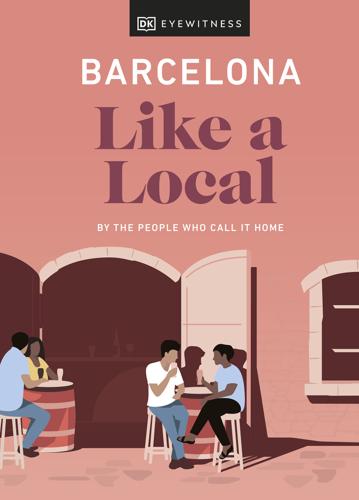
Barcelona Like a Local: by the People Who Call It Home
by
Dk Eyewitness
https://ajuntament.barcelona.cat/guardiaurbana The website of the city’s municipal police force (the Guàrdia Urbana), providing assistance in the case of an incident. www.mossos.gencat.cat Online crime reporting for Catalunya’s police force (Mossos d’Esquadra), plus a list of police stations in the city. www.spth.gob.es The latest coronavirus-related requirements for travelling to Spain, directly from the government. ACCESSIBILITY Barcelona is always improving when it comes to accessibility, but some of its winding medieval streets and old infrastructure can prove tricky for wheelchair users. Here are some useful websites and resources.

Blood and Oil: Mohammed Bin Salman's Ruthless Quest for Global Power
by
Bradley Hope
and
Justin Scheck
Published 14 Sep 2020
Imran headed home, calling Malaysian prime minister Mahatir Mohamad to inform him he was canceling his participation. “He’s a spoiled brat,” Imran told an advisor afterward. “We can’t afford to stand up to him.” Epilogue Decisive Storm As leaders around the world were just coming to understand the magnitude and economic devastation that the novel coronavirus would bring in 2020, Mohammed bin Salman was distracted by a niggling family drama and frustrated by the low price of oil. To achieve his grandest economic dreams, he needed much more money—hundreds of billions of dollars, not the mere $25.6 billion he earned from the Aramco IPO. Standing in his office in a plain thobe speaking to advisors and ministers, he was frustrated with the pace of the 2030 transformation.
…
In the spring of 2020, the Jabri family would hire a Trump-connected lobbyist in a desperate effort to get the US government to pressure Mohammed to let the detained relatives leave Saudi Arabia. All Mohammed’s plans for the year fell to the wayside in early 2020 as bad news out of China rippled around the globe. The novel coronavirus required the world economy to halt for months, while billions of people sheltered in place to stop the exponential spread of the virus and the collapse of medical systems. Weeks after his oil war pushed prices under $20 a barrel, close to a two-decade low, he agreed to rapidly cut back production following conversations with Jared Kushner, who also spoke with Russian counterparts about ending the disagreement.

The Key Man: The True Story of How the Global Elite Was Duped by a Capitalist Fairy Tale
by
Simon Clark
and
Will Louch
Published 14 Jul 2021
Mallya also lived in the U.K. and was fending off attempts to extradite him to India, where he faced charges of fraud. Arif’s lawyers returned to Westminster Magistrates’ Court in June 2020 for his extradition trial. Arif wasn’t required to attend the trial in person because of changes to the court system that were introduced to help contain the coronavirus pandemic. Instead, he was allowed to participate via a video link from his apartment. But the video connection in Court One wasn’t working, so Hugo called his client on a mobile phone. Arif’s face peered out of the screen. His cheeks and chin were covered in white stubble and his white hair flopped uncharacteristically forward onto his forehead from a center parting.
…
Naqvi on FaceTime,” Hugo said. Days earlier, Sev appeared in court and agreed to extradition. Prosecutors expected him to plead guilty. His lawyer declined to comment. Arif was still resisting extradition. Hugo said his client was suffering from poor health after spending time in hospital with suspected coronavirus. He argued that Arif shouldn’t be sent to New York for two reasons. First, Arif could be tried for his alleged crimes in London. Second, the prison conditions in New York’s jails, where Arif might end up in pretrial detention, were so appalling they would violate Arif’s human rights and increase the risk of him committing suicide.

Number Go Up: Inside Crypto's Wild Rise and Staggering Fall
by
Zeke Faux
Published 11 Sep 2023
A documentary filmmaker, his producer, and their cameraman arrived. They were looking for Pierce too. In the kitchen, an older guy with a leathery tan sneakily filled up his water bottle from a handle of whiskey. Someone complained that their shoes had been stolen. A doctor from Boise, Idaho, and a Bitcoiner were talking about the coronavirus vaccine and “medical freedom.” The Bitcoiner refused to tell me his name. “Real G’s move in silence,” he told me, with a high-pitched laugh. Six young women with long straightened hair wearing short skirts or sequined dresses arrived in a group. One of them sat at the piano and played a song.
…
CHAPTER THIRTEEN Play to Earn The Axie Infinity craze started with an ad on Facebook, seen by a twenty-eight-year-old in a hot, dusty city about seventy miles north of Manila. His name was Arthur Lapina, but his friends always called him Art Art. He was a chubby man, with a buzz cut and glasses. It was March 2020. Cabanatuan City, like most of the world, was suddenly on lockdown after the global coronavirus outbreak. The shutdown meant Lapina had just lost his job at the bar where he had been working as an assistant cook, chopping up pig ears and jowls to make sisig and preparing other bar snacks. What caught Lapina’s attention about the Facebook ad was Axie’s colorful creatures—they’re based on the bizarre-looking axolotl, a type of salamander native to Mexico City, which one writer aptly described as a “cheerful tube sock.”
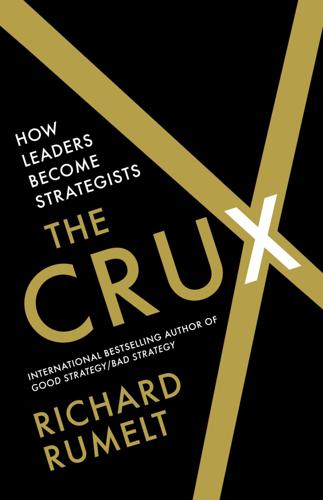
The Crux
by
Richard Rumelt
Published 27 Apr 2022
In 2019 China was Intel’s largest market, accounting for 28 percent of its revenue. In addition, almost one-tenth of its fabrication facilities are located in China. In late 2019, China created a $29 billion state-backed fund to advance its chip industry and reduce reliance on US technology. The 2020 coronavirus outbreak also generated uncertainty about this deep relationship. Would demand in China diminish? Would world demand for Chinese products containing Intel chips diminish? Would new trade disputes break out between China and the United States? • Culture. Robert Swan became Intel CEO in early 2019.
…
As with so many strategic plans, the necessary grit to actually carry it forward was lacking at all levels. In addition to plans, a number of nongovernmental bodies have carried out studies of possible pandemics. Only two years ago, the Center for Strategic and International Studies Risk and Foresight Group ran a scenario about a novel highly transmissible coronavirus. Their summary conclusions are both wise and foolish. Their wishful thinking is on display when they conclude that “establishing trust and cooperation domestically and internationally among governments, companies, workers and citizens is important before crisis strikes. . . . A critical ingredient for addressing pandemics is public order and obedience to protocols, rationing, and other measures that might be needed. . . .
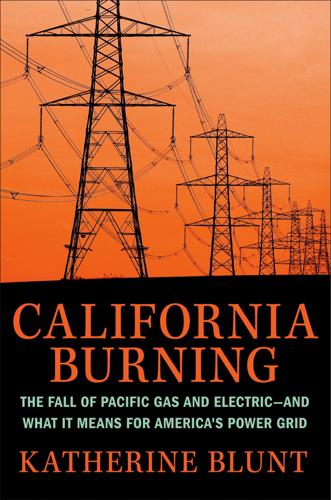
California Burning: The Fall of Pacific Gas and Electric--And What It Means for America's Power Grid
by
Katherine Blunt
Published 29 Aug 2022
In that case, PG&E would either have to go back to the drawing board or persuade Montali to approve the plan anyway, something he would have been disinclined to do. “It’s not the voting day for you and thousands of other people,” Montali said. “And if they vote the plan down, there are consequences.” * * * By mid-March, circumstances had changed in a way few could have foreseen. The coronavirus pandemic had closed the courthouse and upended the stock market. Shares in PG&E fell from about seventeen to seven dollars and plateaued from there. Its value had rarely been lower. By then, PG&E had come up with a $59 billion plan to finance its exit from bankruptcy. It would emerge with $38 billion in debt, up from $22 billion when it first appeared in front of Montali, a remarkable use of the restructuring process.
…
One prominent law firm that had once supported the deal decided that it could no longer do so. It advised its clients—several thousand victims—to shoot it down. “Unfortunately, the hedge funds that have hijacked these bankruptcy proceedings (all to their significant financial benefit), did not care about your concerns BEFORE the coronavirus pandemic, nor do they care about them now,” the firm wrote in a letter to clients. “Your concerns MUST be kept in the forefront of this case.” * * * Watts, meanwhile, was leading a relentless campaign pushing his sixteen thousand clients—and anyone else within earshot—to vote in favor of the settlement.

The Power of Geography: Ten Maps That Reveal the Future of Our World
by
Tim Marshall
Published 14 Oct 2021
Then came Covid-19, and respect for the government took another blow. President Rouhani’s administration consistently played down the threat of the virus and, when it spread, covered up the number of cases and botched public-health messages. The Revolutionary Guard didn’t help. Its chief claimed the Guard had invented a device that could detect coronavirus symptoms from 100 metres away. Amid nationwide hilarity, the Physics Society of Iran ridiculed the idea as a ‘science-fiction story’. The clerics played their part. The learned Ayatollah Hashem Bathaei-Golpaygani announced he’d tested positive but had cured himself using an Islamic remedy. He died two days later.
…
They pour reinforcements into a certain area for, say, twelve hours, then overwhelm a government army outpost, before disappearing again.’ One of the worst cases came in December 2019, when an attack on an army base in Niger killed seventy-one soldiers. In January 2020 another eighty-nine were killed, and then in late March, as the world’s attention fixated on the coronavirus pandemic, Boko Haram ambushed a military encampment of Chadian soldiers near Lake Chad. In a seven-hour battle they killed at least ninety-two heavily armed troops, making it the deadliest attack ever suffered by the Chadian military. Questions began to be asked about how the country can hold together.

Strange Sally Diamond: A BBC Between the Covers Book Club Pick
by
Liz Nugent
Published 2 Mar 2023
I heard her deep sigh at the end of the phone. I desperately wanted her to deny it. But she said nothing. I hung up. Everyone in the train carriage was staring at me. In the taxi from the train station to Farnley Manor, the radio was on and the taxi driver tried to engage me in conversation about the headlines: ‘First case of coronavirus confirmed in the Republic of Ireland. The man, from the eastern part of the country, recently travelled from Italy. A statement from the Minister for Health is imminent.’ I turned up for work just in time. I had never needed the piano more. Lucas asked me if I was all right. I guess my eyes were puffy and I was not communicative.
…
I realize now that the only way to make that connection I seek is to take a woman and keep her until she submits. I’m prepared to wait. I won’t force her to love me. I haven’t found her yet. She won’t be a child. I’m not my father. 56 Sally The country is in lockdown. Despite the two-kilometre limit on movement, Mark and I were called to the garda headquarters in Dublin twice. The coronavirus has knocked most other stories off the news agenda so little has been said about the discovery of another child of Denise Norton and Conor Geary, or of my birth father’s death in New Zealand in 1985 and his links to the drowning of a boy called Rangi Parata and the abduction of Linda Weston. It is not yet public knowledge that Peter is the father of Linda Weston’s child, Amanda Heron, though there is an international search for him.

Cities in the Sky: The Quest to Build the World's Tallest Skyscrapers
by
Jason M. Barr
Published 13 May 2024
“Every building aims to be a landmark, and the developers and city planners try to achieve this goal by going extreme in novelty and strangeness.” In the last few years, real estate companies have also revealed themselves to be over-leveraged. In August 2020, Beijing introduced policies aimed at reducing excessive borrowing by big developers. All seemed to be going according to plan, but then the spread of the Omicron variant of the coronavirus in early 2022 drove the central government to implement a “zero-COVID” policy. The lockdown froze the real estate market. Developers struggled to pay their debts, while also abandoning large housing projects that were only half-finished. Homeowners who prepaid for their units lost their money. Beijing abandoned the strict COVID controls in December, but the eagerly awaited economic boom never materialized.
…
If not, that’s fine too. The quest for skyscrapers and skylines can only work if it makes us better and more productive people. If history is any guide, however, the journey will remain ever upward. Epilogue Cities and Skyscrapers in a Post-COVID World IN EARLY FEBRUARY 2020, when news about the coronavirus began to percolate in America, I remember blithely quipping to my wife that by Christmas the whole thing would be forgotten. Little did I know what lay ahead. A few days after the World Health Organization officially declared a global pandemic on March 11, my wife and I took a drive through Times Square and, like a scene in an eerie sci-fi movie, all that was left were the flashing neon lights.

Mood Machine: The Rise of Spotify and the Costs of the Perfect Playlist
by
Liz Pelly
Published 7 Jan 2025
“Very quickly, everyone had all of these different visions of what a different music industry could look like when it was being built collectively by the workers involved,” the group’s guitarist, Joey DeFrancesco, who is also a labor history scholar with a background organizing hotel workers, told me in a 2020 interview.2 During the first months of lockdown, UMAW’s growing membership formed working groups on topics like venue relations, political education, police abolition, and streaming. From the start, the group zeroed in on the idea that music-related issues, such as debates over royalties and streaming models, don’t exist in a political vacuum. Before even choosing a name, its first campaign focused on the expansion of pandemic unemployment benefits under the Coronavirus Aid, Relief, and Economic Security Act, mobilizing hundreds of musicians to circulate letters to Congress. “That was how we started—thinking, How are music workers and gig workers going to be protected during this time?” Josephine Shetty, one of the original UMAW musician-organizers, told me at the time.
…
Abbey, Michael, 209–12 AI (artificial intelligence) AI DJ, 97, 106–8, 116 Boomy, 125–28, 183 ethics of, 130–31 to identify new talent, 90–91 military use of, 146–47 mood data collected by, 144–45 music generated by, 66, 75, 125–36 training of, 94–96, 126 Akiyama, Kuniharu, 46 algorithms, viii, ix, 92–94, 96–104, 115–16, 120, 122–23 Allen, Lance, 172–73, 184 Almanac Singers, 205 Amazon, 4, 65, 133–34, 170–71, 197, 198–99 American Federation of Musicians (AFM), 207–8 American Music Fairness Act, 234 Andasun, Mat, 72–73 Anderson, Chris, 166–67 Anderson, Jim, 158–9 Anjali, 204–5 Ann Arbor District Library, 225–26, 228 Anohni, 54 Antipiratbyrån, 2 Apple, 4, 200–201 See also iTunes Arctop, 135 Arm, Mark, 43 artist-centric payment system, 156–57, 187–88, 194 Artist Compensation Royalty Fund, 212 Artistic Freedom Voucher, 7–8 Artists Rights Alliance, 192–93 Ashikawa, Satoshi, 46 Association for the Advancement of Creative Musicians, 220–21 Attali, Jacques, 30, 123–24 Audio Auras, 102–3 Audio Home Recording Act (AHRA), 211–12 Austin, Preston, 224 Autoplay, 98–99, 186–88 AWAL, 131–32, 178–80, 183, 261nn4–5 background music, 26, 35–38, 41–2, 57–58, 68–78 See also chill music; Muzak/muzak; PFC; stock music Bandcamp, 20, 225, 243n2 Basic Income for the Arts, 231–32 Bertelsmann AG, 3 Billboard, 16, 81, 87–88, 202–3 billboards, 169–71 BitTorrent, 14–15 Blake, James, 134 blogs, mp3, 21–22, 173–74 Boomy, 125–28, 183 Bowker, Geoffrey C., 111 Brion, Lina, 30 Burba, Zach, 228 ByteDance, 87 Campaign Kit, 190–91 capitalism, 5–6, 51–2, 54, 105, 137, 176 Carter, Troy, 178–79 Catalini Smith, Henry, 213–14 Catalog Incentive Program, 188 Catalytic Sound, 218–24 Cavetown, 181 CCPA (California Consumer Privacy Act), 201 Center for Economic and Policy Research, 7–8 Cheek, Taja, 115–16 chill music, 39–42, 44–56, 62–63, 82–83, 112 See also functional music; Muzak/muzak; PFC Citerman, Ty, 207 Cole, Henderson, 211 collectives/cooperatives, 217–23 copyrights, 3, 6–9, 126 Cornils, Kristoffer, 30 Coronavirus Aid, Relief, and Economic Security Act, 206 COVID-19 pandemic, 205–6, 229 Cramer, Jim, 51–52 creators, 164–67, 176 Danilova, Nika, 221 data, 94–96, 115–16 “Every Noise at Once” map, 108–9, 113, 118, 122, 143 fandom as, 117–24 and surveillance, 137–47 and tagging, 64–65, 98, 122–23, 128 See also under Spotify Davis, Clive, 15–16 Davis, Fred, 15–16 deep listening, 36–37, 133, 218 Deerhoof, 176 DeFrancesco, Joey, 205–6, 208 DeNora, Tia, 37 Digital Millennium Copyright Act, 206–7 Digital Performance in Sound Recordings Act (DPRA), 212 Dilla, J, 48 Discovery Mode, viii, 186–94, 200 Dissecting the Digital Dollar, 151–52 Doctorow, Cory, 132 Dominguez, Michael, 261n11 Doran, Spencer, 46–47 Dorgan, Angela, 232 Dreier, Olaf, 6 Drew, Rob, 30–31 Drott, Eric, 142 DSPs (digital service providers), 66–67 See also streaming Dubourg, Nicolas, 232 Echo Nest, 93–95, 96, 108–9, 111 Edison, Thomas A.

Power and Progress: Our Thousand-Year Struggle Over Technology and Prosperity
by
Daron Acemoglu
and
Simon Johnson
Published 15 May 2023
Zhang, Liang, Andrew Nathan, Perry Link, and Orville Schell. 2002. The Tiananmen Papers. New York: PublicAffairs. Zhong, Raymond, Paul Mozur, Aaron Krolik, and Jeff Kao. 2020. “Leaked Documents Show How China’s Army of Paid Internet Trolls Helped Censor the Coronavirus.” ProPublica, December 19. www.propublica.org/article/leaked-documents-show-how-chinas-army-of-paid-internet-trolls-helped-censor-the-coronavirus. Zuboff, Shoshana. 1988. In the Age of the Smart Machine: The Future of Work and Power. New York: Basic Books. Zuboff, Shoshana. 2019. The Age of Surveillance Capitalism: The Fight for a Human Future at the New Frontier of Power.
…
Educational attainment of US workers for 2016 is from the Bureau of Labor Statistics, included in Brundage (2017). Optimism, with Caveats. The discussion of the heliocentric system and its acceptance is covered in https://galileo.ou.edu/exhibits/revolutions-heavenly-spheres-1543. On Moderna’s vaccine development, see www.bostonmagazine.com/health/2020/06/04/moderna-coronavirus-vaccine. On February 24, 2020, Moderna announced it had shipped the first batch of mRNA-1273 forty-two days after sequence identification. For steam engines, see Tunzelmann (1978). On the social credit system in China, see www.wired.co.uk/article/china-social-credit-system-explained. On the 2018 Facebook algorithmic change, see www.wsj.com/articles/facebook-algorithm-change-zuckerberg-11631654215.

Korea--Culture Smart!
by
Culture Smart!
Published 15 Jun 201
He is an Associate Fellow at the Royal Institute of International Affairs (Chatham House), and an Honorary Research Associate, Centre of Korean Studies, School of Oriental and African Studies, University of London. He is a past president of the Royal Asiatic Society, Korea Branch, and of the British Association for Korean Studies. COVID-19 The coronavirus pandemic of 2020 affected millions of people around the world, causing unprecedented social and economic disruption. As the impact of this global crisis continues to unfold, in many countries social norms are being challenged, and enduring changes will be reflected in future editions of Culture Smart!
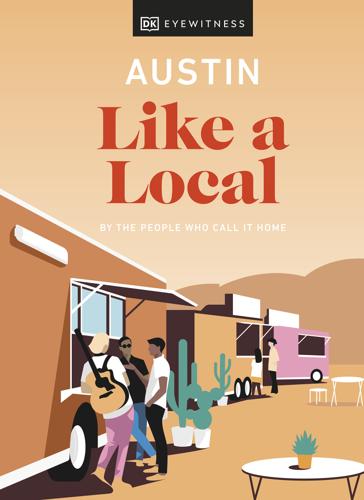
Austin Like a Local
by
DK
www.waterloocounseling.org A nonprofit that provides affordable mental health counseling and therapy to all, with support groups for members of the LGBTQ+ community. TRAVEL SAFETY ADVICE Before you travel – and while you’re here – always keep tabs on the latest regulations in Austin and the US. www.austintexas.org/plan-a-trip/visitor-health-safety The city’s official information site. www.dshs.state.tx.us/coronavirus/travelers.aspx Up-to-date COVID-19 news and advice from Texas’s Department of State Health Services. www.texasready.gov Weather forecasts and advisories, including flood and hurricane alerts. www.travel.state.gov Latest travel safety information from the US government. ACCESSIBILITY Austin is often hailed as being one of the most accessible cities in the US, and most venues and services are accessible to all people.

Together
by
Vivek H. Murthy, M.D.
Published 5 Mar 2020
In the first weeks of 2020, the COVID-19 pandemic turned physical human contact into a potentially mortal threat. The novel coronavirus was on the loose, like an invisible stalker, and any of our fellow human beings could have been its carrier. Almost overnight, it seemed, getting close enough to breathe on another person became synonymous with danger. The public health imperative was clear: to save lives, we’d need to radically increase the space between us. As I write these words, we are still in the middle of this pandemic. With health workers at risk, hospital equipment in short supply, and death rates from the coronavirus spiking by the day, governments the world over have mandated “social distancing,” closed schools and most businesses, and ordered everyone but essential service workers to stay home.
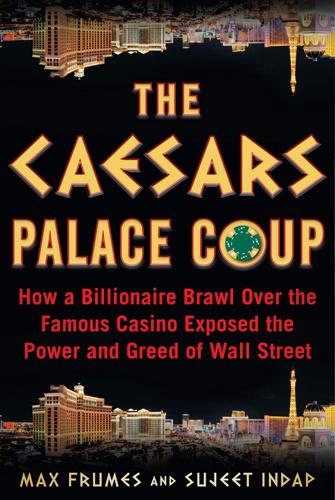
Palace Coup: The Billionaire Brawl Over the Bankrupt Caesars Gaming Empire
by
Sujeet Indap
and
Max Frumes
Published 16 Mar 2021
Oaktree continued as a standalone unit, and Marks continued to write his periodic public letters on financial markets. Ken Liang retired from Oaktree in 2018 and moved to Seattle to become a tech investor. In 2020, Kaj Vazales was promoted to co-head of the Oaktree North American distressed debt group. As the impact of the coronavirus tore through the global economy in early 2020, Apollo would pounce, always priding itself as a canny buyer in times of tumult. It quickly struck rescue financing deals for the likes of Expedia and United Airlines. David Sambur, who in 2019 had been promoted to co-head of Apollo’s private equity group, was the key player in many of these deals.
…
There was a question, once again, about whether the big banks would fulfill their lending commitments to ensure the deal could be funded. Several state regulators also were taking a hard line on the competition effects of the merger. Still, even as casinos across America were largely shuttered by the coronavirus lockdowns, the nearly $10 billion in deal financing, as well as state regulatory approvals, finally came through, and the deal closed in July 2020. Canyon Capital, the LA-based hedge fund that had bet big on both gaming and the bankruptcy of Caesars, would net over $1 billion in profits by remaining patient in its Caesars trade.
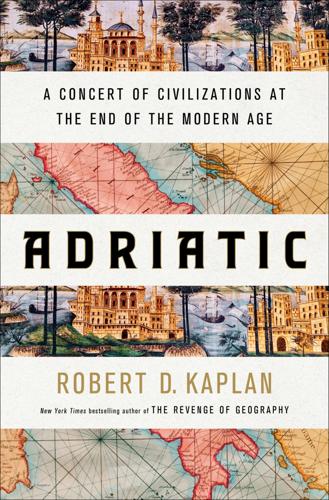
Adriatic: A Concert of Civilizations at the End of the Modern Age
by
Robert D. Kaplan
Published 11 Apr 2022
The future, I have learned, is often prepared by what cannot be mentioned or admitted to in fine company. The future lies inside the silences. * * * — I see vast stores of disposable wealth everywhere in Rimini, and yet the headlines about Europe’s economic and political crisis spell doom, soon to be accentuated by the coronavirus. Even the headlines, moreover, obscure a difficult historical truth to which few will admit, but which I know from my memories of Sfax and the rest of southern Tunisia. What the headlines will not say is that Europe’s stability and consequent prosperity for almost two-thirds of a century following World War II required, in part, isolation from its own near-abroad.
…
See Mark Mazower, Governing the World: The History of an Idea, 1815 to the Present (New York: Penguin Press, 2012), p. 156. To David Leeming and the late Charles Boer Author’s Note This book arose from travel and diaries between 2016 and 2018. Publication was held up because of a biography that I wrote in the interim, which itself appeared late because of the effect of the coronavirus on the publishing industry. Nevertheless, the descriptions and issues raised herein, and therefore the conversations conveyed, I hope stand the test of time. Indeed, the fate of Europe is a question that is obviously with us still. And the hunt for worthy and often obscure books that assist in a journey—the other major theme of these pages—has been a lifelong pursuit of mine.

The Equality Machine: Harnessing Digital Technology for a Brighter, More Inclusive Future
by
Orly Lobel
Published 17 Oct 2022
Beyond its direct significance in bringing innovation to specific health challenges, big data pivots the narrative about inequality by offering a more complete picture of the systemic exclusions that have long been embedded in our health systems. It can help us move the challenge of inequality (and hence the solutions) from a “beast” mindset to a “virus” mindset. The lens of an infectious virus surely captures our imagination as the world recovers from the global coronavirus pandemic. A virus can only survive when there are hosts. A virus mutates. A virus infects the more vulnerable in patterned ways. And a virus requires collective action to prevent its spread, to treat the sick, to educate and ensure access for all, and to develop and disseminate vaccinations. When we think about the potential good and potential risks of technology, we can leverage technology itself to understand the multiple lenses that have shaped our public debates and to identify who is gaining, who is left behind, and how the benefits of technology can spread to benefit all of us.
…
In 2016, life imitated art when a man in Hong Kong created a robot based on the image of Scarlett Johansson, raising questions about our rights to our image and persona. Celebrity or not, should others be allowed to use your likeness, your face and character, to create smart machines? In 2020, amid the loneliness of coronavirus lockdown, some users admitted to being attracted to Alexa. One relationship expert attributed the attraction to Alexa’s “sexy voice with low tones to it.” It does go both ways: the woman in Alexa’s Super Bowl ad was very obviously lusting after Michael B. Jordan, even if she was only hearing his voice.

Flowers of Fire: The Inside Story of South Korea's Feminist Movement and What It Means for Women's Rights Worldwide
by
Hawon Jung
Published 21 Mar 2023
Vogels, “The State of Online Harassment,” Pew Research Center, January 13, 2021, https://www.pewresearch.org/internet/2021/01/13/the-state-of-online-harassment/ 13“Readout of the White House Task Force to Address Online Harassment and Abuse Launch,” The White House Statements and Releases, June 17, 2022, https://www.whitehouse.gov/briefing-room/statements-releases/2022/06/17/readout-of-the-white-house-task-force-to-address-online-harassment-and-abuse-launch/ 14“The Biden Plan to End Violence Against Women,” JoeBiden.com, accessed on August 12, 2022, https://joebiden.com/vawa/ 15Sophie Davies, “Revenge porn soars in Europe’s coronavirus lockdown as student fights back,” Thomson Reuters Foundation News, May 5, 2020, https://news.trust.org/item/20200505165904-e8umi 16Naimul Karim, “Police in Bangladesh launch all-woman team to fight digital abuse,” Thomson Reuters Foundation News, November 16, 2020, https://news.trust.org/item/20201116134414-24q4p/ 17The Korean National Police Agency (KNPA), 2013 [Crime Statistics in 2013], August 2014, p. 74 KNPA, 2014 [Crime Statistics in 2014], October 2015 p. 116 KNPA, 2015 [Crime Statistics in 2015], 2016, p. 122 KNPA, 2016 [Crime Statistics in 2016], 2017, p. 112 KNPA, 2017 [Crime Statistics in 2017], 2018, p. 120 KNPA, 2018 [Crime Statistics in 2018], 2019, p. 120 KNPA, 2019 [Crime Statistics in 2019], 2020, p. 120 KNPA, 2020 [Crime Statistics in 2020], 2021, p. 120 18Ibid 19Baek Gwang-Gyun, 3 [The 3rd symposium of the Sentencing Study Group-Digital Sex Crimes and Sentencing], The Supreme Court Sentencing Committee, June 3, 2019, p. 32 Kim Bo-Yeong, , 5 [Spycam porn sexual criminals grew both among men and women for the past five years], Asia Today, October 28, 2019, https://www.asiatoday.co.kr/view.php?
…
Women eating disorder patients 4 times (of men)], press release, September 27, 2019 13Park Ji-Yun, Lee Nu-Ri, and Seo Dong-Ju, “38kg 70kg [From 38kg to 70kg … the table of “abuse” targeting the bodies of eating disorder patients], Hankook Ilbo, June 24, 2021, https://www.hankookilbo.com/News/Read/A2021062315480001630?did=NA 14Joori Roh, “As end to pandemic mask-wearing nears, South Koreans scramble to arrange cosmetic surgery,” Reuters, January 4, 2021, https://www.reuters.com/article/us-health-coronavirus-southkorea-cosmeti/as-end-to-pandemic-mask-wearing-nears-south-koreans-scramble-to-arrange-cosmetic-surgery-idINKBN2980RL 15International Society of Aesthetic Plastic Surgery, “ISAPS International Survey on Aesthetic/Cosmetic Procedures Performed in 2015,” July 26, 2016, https://www.isaps.org/wp-content/uploads/2017/10/2016-ISAPS-Results-1.pdf [URL Inactive] 16Dong-Sik Kim, Youngtaek Kim, Cheyon Tong, Da-Eun Jung, and Sook-Yi Kim, (III): [Gender and Health Inequality in Korea: Focusing on Body Obsession and Aesthetic Plastic Surgery], Korea Women’s Development Institute, December 31, 2019, p. 174–175, https://www.kwdi.re.kr/publications/reportView.do?

The Coming Wave: Technology, Power, and the Twenty-First Century's Greatest Dilemma
by
Mustafa Suleyman
Published 4 Sep 2023
The Singapore case was down to a graduate student unaware of the presence of SARS. In Taiwan a research scientist mishandled biohazardous waste. In Beijing, the leaks were attributed to poor deactivation of the virus and handling in non-biosecure labs. And all that’s before you even mention Wuhan, home to the world’s largest BSL-4 lab and a center for coronavirus research. Even as the number of BSL-4 labs booms, only a quarter of them score highly on safety, according to the Global Health Security Index. Between 1975 and 2016, researchers cataloged at least seventy-one either deliberate or accidental exposures to highly infectious and toxic pathogens.
…
GO TO NOTE REFERENCE IN TEXT As we’ve seen, even wealthy nations “2021 GHS Index Country Profile for United States,” Global Health Security Index, www.ghsindex.org/country/united-states. GO TO NOTE REFERENCE IN TEXT Yet a catalog of disastrous decisions Edouard Mathieu et al., “Coronavirus (COVID-19) Deaths,” Our World in Data, ourworldindata.org/covid-deaths. GO TO NOTE REFERENCE IN TEXT National budgets for such things For example, compared with during the 1957 Asian flu, the U.S. federal budget is vastly bigger, in absolute terms of course, but also as a percentage of GDP (16.2 percent versus 20.8 percent).

Empty Vessel: The Story of the Global Economy in One Barge
by
Ian Kumekawa
Published 6 May 2025
Preface Early in 2020, I first learned that New York City operated a prison ship, known colloquially as “the Boat,” moored off the South Bronx. My future wife, a public defender then working in the South Bronx, had a client who had just been incarcerated there: a squat gray vessel on which the novel coronavirus was rapidly spreading. Perhaps because I am a historian trained in British imperial history, “the Boat” immediately called to mind images of prison hulks, the notorious facilities that were a hallmark of the British penal system of the eighteenth and nineteenth centuries. I thought of Pip peering at the looming hulks over the marshes of the Thames estuary with fear and horror at the beginning of Charles Dickens’s Great Expectations.
…
To make matters worse, while the effects of the oil crisis were cascading around the world, the United States was tightening its monetary policy in an effort to face down mounting inflation. Under Paul Volcker, the Federal Reserve raised short-term interest rates to levels that today seem hard to believe. In May 1981, they topped out at over 16 percent. By comparison, when the Fed raised interest rates to fight inflation after the coronavirus pandemic, the short-term interest rate stayed well under 6 percent. For relatively poor and cash-strapped countries like Argentina—countries then commonly deemed “developing”—the one-two punch of skyrocketing oil prices and high global interest rates was devastating. Countries in eastern Europe and Latin America had little choice but to pay higher prices for imported oil, but they lacked the economic resources to do so.

How I Invest My Money: Finance Experts Reveal How They Save, Spend, and Invest
by
Brian Portnoy
and
Joshua Brown
Published 17 Nov 2020
The current income provided by investing in dividend stocks simply provides me with a level of emotional comfort. Knowing that income will flow into my portfolios through thick and thin (as it has through the financial crisis of 2008/09, the US debt downgrade of 2011, the taper tantrum of 2013, the oil price plunge of 2015/16, the flash bear market of 2018, and now the coronavirus crisis) brings me comfort, conviction and confidence. As we all know, in times of trouble, cash becomes king. I do also invest heavily in myself and my business. I have had the same babysitter for my kids since the day my daughter was born in 2007—back then, I was just starting up at Gilman Hill and had to subsidize the expense with proceeds from my retirement account, but I knew that having the flexibility of that kind of childcare was the only way I could fully focus on my career and considered it a major investment in my family’s future.
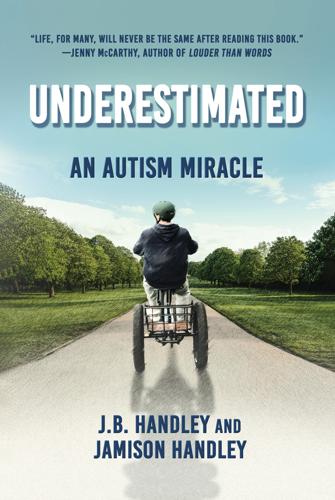
Underestimated: An Autism Miracle
by
J. B. Handley
and
Jamison Handley
Published 23 Mar 2021
Thanks to Cora, we’re riding a tandem kayak, which Jamie had identified during that Zoom meeting with her as another activity he’d be really interested in trying. The kayak arrived two weeks ago, and we’ve been out on the lake almost every day. It made me so happy when he spelled, “I love being in nature and being on the water.” In early July, Victory was able to start in-person summer school with some modest restrictions due to the coronavirus. Mercifully, Jamie’s day goes from 12:30 to 4:30 p.m., which means he’s been able to maintain summer sleeping hours. For Jamie, returning to Victory has been an incredible roller coaster of emotions. On his first day back, we asked him how his day had gone, and he explained, “It was the best day of my life at Victory.”
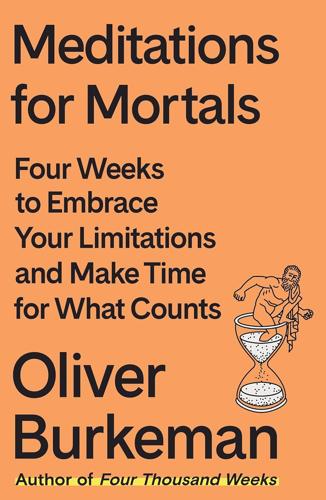
Meditations for Mortals: Four Weeks to Embrace Your Limitations and Make Time for What Counts
by
Oliver Burkeman
Published 8 Oct 2024
It’s entirely possible, Loomans notes, ‘to give someone your undivided attention while telling them you don’t have time right now,’ and far more pleasant for all involved than attempting to keep part of your focus on whatever it was you were just doing. When you try that, ‘you get tense and the other person doesn’t feel heard. They might even stay longer and keep pressing their point.’ And speaking of children bursting into rooms: at the time of writing, almost 60 million people have watched the moment during the coronavirus pandemic when the two small children of Robert Kelly, an expert on Korean politics based in Busan in South Korea, entered the study where he was giving a live interview to the BBC and capered wildly for several seconds, before his wife acrobatically managed to extract them. Is anyone seriously going to claim this interruption turned out to be a bad thing?
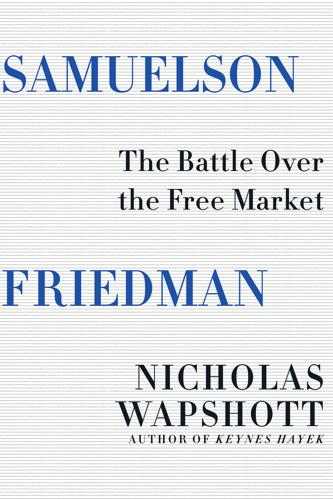
Samuelson Friedman: The Battle Over the Free Market
by
Nicholas Wapshott
Published 2 Aug 2021
The paper noted that “Samuelson frequently crossed swords with the monetarist Milton Friedman,” but that “in 2008, when the world slipped into the steepest downturn since the Great Depression, it was Samuelson’s prescriptions, rather than Friedman’s, that carried the day.”39 NEITHER MAN was alive to witness the next catastrophic threat to the world’s prosperity: the emergence in China in November 2019 of the coronavirus COVID-19, a highly contagious pneumonia-like disease that often proved fatal, particularly to the elderly or patients with debilitating conditions. Using the authoritarian powers vested in it as the sole legitimate political force in a one-party communist state, the Chinese government imposed a strict curfew on the citizens of Wuhan, Hubei, a city of 11 million.
…
Li Wenliang and seven other doctors who express alarm at the spread of the disease were punished by Chinese authorities for “spreading false rumors.” 41.By the end of July 2020, 35,107 Italians had died of COVID-19. 42.Steven Terner Mnuchin (December 21, 1962–), American investment banker. U.S. Treasury Secretary 2017–2021. 43.https://datausa.io/coronavirus. 44.In January, the total of reported unemployed in the U.S. was 74.8 million. https://nypost.com/2021/01/14/us-jobless-claims-965000-filed-amid-pressure-from-covid-19/. 45.Franklin Delano Roosevelt (January 30, 1882–April 12, 1945). Thirty-second president of the United States. 46.See Amity Shlaes, The Forgotten Man: A New History of the Great Depression, HarperCollins, 2007. 47.
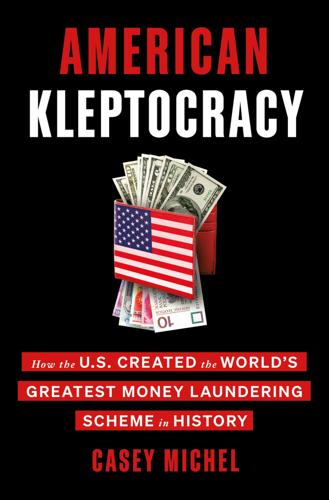
American Kleptocracy: How the U.S. Created the World's Greatest Money Laundering Scheme in History
by
Casey Michel
Published 23 Nov 2021
q={%22search%22:[%22The+Improving+Laundering+Laws+and+Increasing+Comprehensive+Information+Tracking+of+Criminal+Activity+in+Shell+Holdings%22]}&r=1&s=6&searchResultViewType=expanded. 46. Nate Sibley, “Failure to Confront China’s Corruption Will Exacerbate Coronavirus Crisis,” Hudson Institute, 20 March 2020, https://www.hudson.org/research/15846-failure-to-confront-china-s-corruption-will-exacerbate-coronavirus-crisis. 47. Oliver Bullough, “Oligarchy Newsletter,” Coda Story, 2 December 2020, https://mailchi.mp/codastory/oligarchy-december-2. INDEX The index that appeared in the print version of this title does not match the pages in your e-book.

More Everything Forever: AI Overlords, Space Empires, and Silicon Valley's Crusade to Control the Fate of Humanity
by
Adam Becker
Published 14 Jun 2025
This is the real appeal behind the modern idea of the Singularity: the seductive promise of all questions, needs, and desires fitted to the single Procrustean solution of code and compute. * * * In the first few weeks of 2020, I came across a disturbing graph depicting what was, unquestionably, exponential growth. The graph was attached to a tweet, part of a thread I’d stumbled upon about the new coronavirus, COVID-19. Case rates in the United States were still quite low at the time, with only a handful of cases reported. But this tweet pointed out, although there weren’t many cases yet, that was poised to change, fast: left unchecked, cases in the United States would grow to the hundreds of thousands by the end of March.
…
,” Wall Street Journal, May 19, 2017, archived June 1, 2017, at the Wayback Machine, https://web.archive.org/web/20170601130235/www.wsj.com/articles/whos-in-charge-of-outer-space-1495195097. 90 Walkowicz interview. 91 “It Is Difficult to Get a Man to Understand Something When His Salary Depends Upon His Not Understanding It,” Quote Investigator, November 30, 2017, https://quoteinvestigator.com/2017/11/30/salary/?amp=1. 92 Loren Grush, “Jeff Bezos’ Space Company Is Pressuring Employees to Launch a Tourist Rocket During the Pandemic,” The Verge, April 2, 2020, www.theverge.com/2020/4/2/21198272/blue-origin-coronavirus-leaked-audio-test-launch-workers-jeff-bezos; Ronan Farrow, “Elon Musk’s Shadow Rule,” New Yorker, August 21, 2023, www.newyorker.com/magazine/2023/08/28/elon-musks-shadow-rule. 93 Elon Musk (@elonmusk), Twitter (now X), May 1, 2020, https://twitter.com/elonmusk/status/1256347698120159233. 94 Elon Musk (@elonmusk), Twitter (now X), July 12, 2021, https://twitter.com/elonmusk/status/1414782972474048516. 95 Walkowicz interview. 96 Ibid. 97 Sarah Knapton, “Human Race Is Doomed if We Do Not Colonise the Moon and Mars, Says Stephen Hawking,” Telegraph, June 20, 2017, www.telegraph.co.uk/science/2017/06/20/human-race-doomed-do-not-colonise-moon-mars-says-stephen-hawking/. 98 Hall, Flying Car, 107. 99 Andreessen, “Manifesto” (emphasis his). 100 Filippo Tommaso Marinetti, “The Futurist Manifesto,” 1909, Obelisk, accessed June 13, 2024, www.arthistoryproject.com/artists/filippo-tommaso-marinetti/the-futurist-manifesto/. 101 “swarthy,” “Effective Accelerationism.”

Fortune's Bazaar: the Making of Hong Kong: The Making of Hong Kong
by
Vaudine England
Published 16 May 2023
Only when a tiny group attacked the legislature physically did the government agree to drop the planned bill. By then it was too late, and through a long, hot, wet summer the movement grew. The more its demands were ignored, the more it grew and the more violence ensued. Finally, the early-2020 arrival of the coronavirus pandemic cleared the streets, and a crackdown followed, bolstered by the imposition of a new National Security Law. It was all a heady reminder of the spirit of a Hong Kong that refuses to bow down. Or it was the last foolishness of people who should have known better than to be so very provocative.
…
A gracious China coast aristocrat laughed sadly at the failure of democratic dreams in Hong Kong, knowing, from her family’s flight from Shanghai in the 1940s, what little chance there had been. And then came Covid-19. Suddenly medical science supported the banning of any gathering of more than two people. Jokes in the early days about what “Wu-flu” might mean—a name coined from the origin of the coronavirus in China’s huge city of Wuhan—soon fell flat. Political life was closed down along with the schools and universities, the bars and shops and restaurants within which communities would usually gather. Not that the government felt the need for any excuse—it had charged forty-seven persons, including former democratically elected legislators, with conspiracy to commit subversion for participating in an unofficial primary election organized by democracy supporters in 2020.
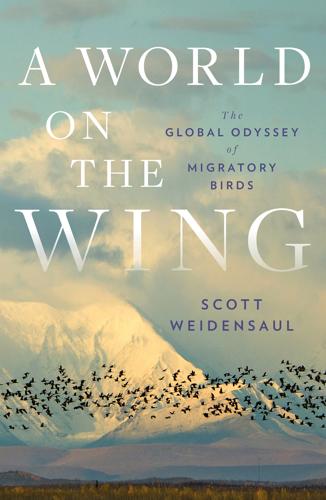
A World on the Wing: The Global Odyssey of Migratory Birds
by
Scott Weidensaul
Published 29 Mar 2021
Not a rat or a sign of a rat was found, and conservationists were delightfully shocked by how quickly the island’s imperiled birds responded to the release from predatory pressure. After years of preparation, and some delays caused by its incredibly remote location, a similar eradication campaign was poised to begin on Gough Island in February 2020 when the coronavirus pandemic struck. The team of 12 Royal Society for the Protection of Birds conservationists had to be evacuated, and the eradication program was delayed by at least a year. Assuming its success, however, the same folks will then shift their attention to Marion Island, home of the bird-scalping mice.
…
See CABS condors, California, 230–32 conservation of Amur falcons, 316–17, 324–29, 337, 338–39 climate change and, 190 on cusp of catastrophe, 128–29 eBird and, 140–43 in Europe, 148 forest fragmentation and, 12 habitat protection and, 35–36 habitat restoration and, 134, 145, 149 important stopover sites and, 134–35 radar used for, 132, 134 song bird trapping on Cyprus and, 307 of spoon-billed sandpipers, 50–51, 57–58, 61 stopover sites and, 123–24 of urban land, 145 Yellow Sea coast and, 31, 33–34, 35, 50–51, 55, 60, 61–62 Conservation India, 324, 325 continental shelf, 247, 252, 254, 256 Cooper, Nathan, 158–60, 163–68, 170, 172, 173–74, 179–80, 181, 182–86 cordgrass, 53, 59, 62 Corey, Ed, 249, 268 Cornell Lab of Ornithology, 105, 109, 132, 133, 136, 137, 138–40, 145, 147, 150, 177, 195 coronavirus pandemic, 276 Corophium, 72 Costas, 291–92 cowbirds, brown-headed, 11–12, 101, 163 Cry1a, 86–87, 88 cryptochrome, 8–9, 86, 87 curlews, Eskimo, 112, 294 Cyprus, 285. See also songbird trapping in Cyprus desiring EU membership, 283, 298–99 political situation in, 278–79 Dalvi, Shashank, 324 Davies, Ian, 150, 152–56 deforestation, tropical, 11, 13, 100, 106, 123 Denali National Park, 1–7, 19–20, 121, 124, 341, 344, 346 blackpoll warblers in, 4, 5, 119, 344, 345–46 De Voe, Thomas F., 295–96, 297 diablotíns, 255–56 distance flown in a year, by seabirds, 10–11, 255, 256 Dockrill, Craig, 259 Dongling mudflats, 27, 33–34, 38, 39, 58–60, 62 Doppler radar, 21–22, 128, 131–35 Canadian sites filtering out birds, 152, 153–54 population loss in North American birds and, 147, 156 stopover sites and, 134–35, 142 urban lights and, 144–45 doves, turtle, 82–83 dragonflies birds feeding on, 322n radio transmitters on, 19, 95 Drew (Bingrun Zhu), 45 drought in California, 142 climate change and, 191 in the Sahel, 124, 175, 191, 194, 200 ducks hunting of, 148 mallards, 3, 79, 98 Ducks Unlimited, 148 Duncan, Charles, 263–64 dunlin, 26, 31, 35–36, 54, 202 dynamic soaring, 254–55, 255n of sooty shearwaters, 260 eagles bald, 189 golden, 7, 20, 229, 293 East Asian–Australasian Flyway (EAAF), 28–29, 29, 45, 47, 52, 54, 57 eBird, 138–43, 150, 152–53, 154 climate change and, 195, 196 climate modeling and, 173 edge predators, 11, 101, 107 egrets, great, 134 endangered species list, Kirtland’s warbler on, 163 energy.
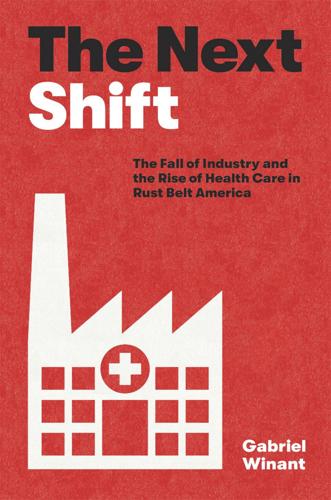
The Next Shift: The Fall of Industry and the Rise of Health Care in Rust Belt America
by
Gabriel Winant
Published 23 Mar 2021
Ryan Deto, “UPMC Workers to Participate In One-Day Strike on Oct. 4,” Pittsburgh City Paper, September 24, 2018; US Department of Labor, Bureau of Labor Statistics, “Major Work Stoppages in 2018,” February 8, 2019. 14. “ ‘Fire through Dry Grass’: Andrew Cuomo Saw COVID-19’s Threat to Nursing Homes. Then He Risked Adding to It,” ProPublica, June 16, 2020; “Coronavirus Cases Rise Sharply in Prisons Even as They Plateau Nationwide,” NYT, June 16, 2020; “Black Americans Face Alarming Rates of Coronavirus Infection in Some States,” NYT, April 14, 2020; Centers for Disease Control COVID-19 Response Team, “Characteristics of Health Care Personnel with COVID-19—United States, February 12–April 9, 2020,” Morbidity and Mortality Weekly Report 69, no. 15 (April 17, 2020), 477–481. 15.
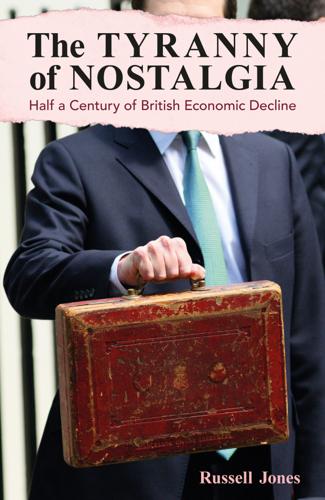
The Tyranny of Nostalgia: Half a Century of British Economic Decline
by
Russell Jones
Published 15 Jan 2023
A major implication of this history of the post-war period is that macro forecasting errors divide into a large number of comparatively small errors, made in the years when fluctuations were modest, and a few large errors, made following shocks that were both sizeable and novel. In this context, the only viable approach to understanding, and thence forecasting, the effects of a large shock such as the coronavirus pandemic is to take from past shocks anything that may be relevant – discarding all that which is not − and put together a composite analysis. And where there is no relevant evidence, one must fall back on a priori reasoning. Therefore, even if some quantitative assessment of the outlook is worthwhile, it should be the account of the forecast that matters most, rather than the numbers.
…
The year 2016 witnessed a record for FDI due to a few high-value mergers and acquisitions, but the number of inward FDI deals fell by more than 9% in 2017–18 and by another 16% in 2018–19. The number registered a small increase in 2019–20 but then fell again, by 17%, in 2020–21. The value of net FDI flows into the UK was £20 billion in 2021: the fifth successive year of decline since 2016. During the pandemic Boris Johnson talked of building on the success of the UK’s coronavirus vaccine programme (success that, it should be stressed, owed nothing to Britain’s departure from the EU regulatory framework), such that Britain would transform itself into a global science superpower. But R&D investment has fallen by around a fifth since 2014; the UK share of global investment in R&D projects in health and life sciences has dropped from 4.2% in 2014 to 3.4% in 2019; and the UK ranks eleventh in the OECD universe for total R&D spending.25 So far, the government’s new, tighter, post-Brexit migration regime has cut the net inward flow of workers to the UK from the EU from more than 180,000 a year to closer to 60,000, although there has been a compensatory increase in immigration from other areas.
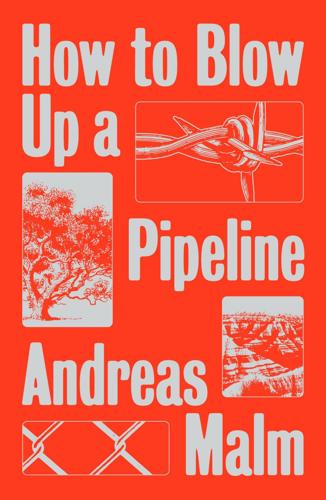
How to Blow Up a Pipeline
by
Andreas Malm
Published 4 Jan 2021
HOW TO BLOW UP A PIPELINE HOW TO BLOW UP A PIPELINE Learning to Fight in a World on Fire Andreas Malm First published by Verso 2021 © Andreas Malm 2021 All rights reserved The moral rights of the author have been asserted 1 3 5 7 9 10 8 6 4 2 Verso UK: 6 Meard Street, London W1F 0EG US: 20 Jay Street, Suite 1010, Brooklyn, NY 11201 versobooks.com Verso is the imprint of New Left Books ISBN-13: 978-1-83976-025-9 ISBN-13: 978-1-83976-027-3 (UK EBK) ISBN-13: 978-1-83976-026-6 (US EBK) British Library Cataloguing in Publication Data A catalogue record for this book is available from the British Library Library of Congress Cataloging-in-Publication Data A catalog record for this book is available from the Library of Congress Library of Congress Control Number: 2020936555 Typeset in Adobe Garamond by Hewer Text UK Ltd, Edinburgh Printed and bound by CPI Group (UK) Ltd, Croydon CR0 4YY Contents Preface 1.Learning from Past Struggles 2.Breaking the Spell 3.Fighting Despair Notes PREFACE No More Excuses for Passivity The manuscript for this book was completed before the coronavirus known as COVID-19 struck. As I write these words, the pandemic is killing some 2,000 individuals worldwide per day. It also has political victims, one of the first being the climate movement, whose high-flying popular mobilisations were punctured in an instant by the outbreak. The climate strikes that swept the globe in 2019 have been put on hold.

The Greek Revolution: 1821 and the Making of Modern Europe
by
Mark Mazower
Published 4 Nov 2021
But then I thought again: was it unreasonable – given the divisions that had opened up in Greece as a result of the years of austerity – to try to figure out what might bring people together in an understanding of the past that was inclusionary not exclusionary? Was that not better than acquiescing in the kind of political polarization that had torn Greece apart in the past? If this invitation thus made me reassess my stance towards the subject, what I really wanted to say about it became evident only during the coronavirus pandemic. Living in Manhattan at an epicentre of the catastrophe, I followed Greece’s response in those first months, which formed such a contrast with that of the United States. The two governments could scarcely have taken more different approaches. But the real differences lay deeper. There is nothing like a public health emergency to illuminate the degree of a people’s trust in their state.
…
abolitionism, 13, 236, 327, 336, 337–8, 382, 452 About, Edmond, 224 Acton, Lord, ‘Nationality’ (1862 essay), xxi Adam, Frederick, 412 Adams, John, 400 Aegean Islands, xxxi, 267, 269–70, 282–4 ambivalent response to revolution in, 143–5, 148–9 and civil war, 267 Etaireia’s activity in, 17, 70, 132, 133–5, 137–8, 144, 145, 146–7, 151–2 fiscal role of, 148–53, 155, 157–63 lack of Ottoman presence on, 136 meltemi (northern wind), 285 Ottoman warnings to, 143–4, 149 pirate raids on, 428 Ahmed, Deli, 389, 392 Aigina, island of, 363, 377, 381, 424–6, 434–5 orphanage on, 452 outbreak of bubonic plague (1828–9), 432 Aivalik, massacre at (June 1821), 35, 182, 183 Akarnania, 105, 166, 167 Akkerman, Treaty of (1826), 418 Albanians, xxviii–xxx, 38, 42, 50–51, 76, 82–6, 101, 115–19, 128–9, 166, 197–8, 208, 211, 348, 361–2, 375, 389, 439 ‘Ali Pasha’s men’, xxix–xxx, 39, 42, 83, 116–18 in Attica, 350 beys and death of Khurshid, 128–9 close ties between armatoles and beys, 115–16, 117–18 collapse of Albanian–Greek alliance, 118–19, 125 and crushing of 1770 rising, 51, 52, 167 Dramali’s troops, 127, 209 and Greek troops, xxix–xxx, 25, 26, 188 and Ibrahim’s campaign in the Morea, 291, 296–7 Kolokotronis’s close ties with, 51, 84–5, 86, 117, 209 massacre of leaders (1830), 303–4, 439 Nenekos’s background, 390 Ottoman troops, xxix–xxx, 51–2, 76, 82–5, 116, 119, 167–8, 198–9, 209–10, 279, 291, 296–7, 304, 307, 308, 358 ownership of Greek slaves, 342, 343 Porte’s anxieties over reliability, xxx, 119, 166, 198, 279, 307, 358 reputation as fighters, xxix–xxx retreat of Lala Muslims to Patras, 76 seamen of Hydra and Spetses, xxx, 132 and siege of Athens (1826–7), 358, 372–3, 375 and siege of Jannina, 42 at siege of Mesolonghi (1826–7), 304, 307, 318, 348 at siege of Patras, 389 at siege of Tripolitsa, 82–3, 84–5, 86, 119 slaughter of at Athens (1827), 372–3, 375 Ypsilantis’s mercenaries, 25, 26, 29 Aleppo, 43, 121, 152 Alexander I, Tsar, xxv, 3–7 and Anglo-Russian mediation, 406–7 and concept of humanitarian intervention, 398 at Congress of Laibach (1821), 28, 30, 35–6 conservatism of, 4, 7, 30, 35–6, 213, 398, 404–5 death of (1825), 10, 407 and Etaireia, 15, 17–18, 19, 36 and Orthodox solidarity, 6–7, 10, 213, 405 and outbreak of insurrection (March 1821), 69–70 prays in Greek church in Vienna, 7, 10 tensions with Metternich, 4, 406, 407 Ypsilantis claims support of, 19, 28, 29, 30–31, 59, 109, 211–12 Alexandria, 276, 277, 284–5, 300–302, 306–7, 335 Algeria French conquest of, 419 Ali Farmakis, 51, 386 Ali Pasha of Jannina, xxix–xxx, 37–45, 47, 83, 95, 170–71, 267, 383 alipashalides, 101–4 Byron visits court of, xxix, 255 death of (1822), xxx, 119–21, 125 and Etaireia, 21, 31, 37–8, 39–40, 43–5, 101–2 grave at Fethiye mosque, 120, 130 legendary fortune of, 43, 129 Muslim Albanian troops desert, 119 Ottoman campaign against, xxxi, 20, 40–43, 45, 73, 74, 101, 102, 116–20 son Veli Pasha as governor of the Morea, 53–4 Ali Tsekouras, 88, 184 Almack’s club, London, 406 Almyros, 177, 378 Amaury-Duval, Eugène, 431–2 Ambatzis, Taher, 118, 119 American Revolution, xxi, 113, 240 Amorgos, island of, 160 Anagnostaras (Christos Papageorgiou), 17, 57, 85, 196, 289 Anagnostopoulos, Panayiotis, 77–8, 83–4, 85, 95, 444 Analatos, Greek defeat at (1827), 373–4 Anatolia, 46, 145, 146, 149, 151, 387 Anatolikon, island-town of, 313 Andros, island of, 143, 144, 160, 322–3, 452 Androutsos, Eleni, 454 Androutsos, Odysseus, xxii–xxiii, 102, 117, 170–73, 188, 233, 350–51, 447 and Kolokotronis, 172–3 and literacy, 194 mistrusts reliance upon foreigners, 179–80 murder of (1825), 352 posthumous iconic status, 351 secret agreements with Ottomans, 171–2, 351–2, 387 and Stanhope, 261 Trelawny marries half-sister of, 170, 233, 257 Angistri, island of, 381 Arachova, battle of (1826), 361–3 archaeological museums, 13 Argos, 71, 74, 110, 126, 217, 224–5, 234, 439 battle at the Lerna mills (1825), 295–6 and civil war, 268 Dramali Pasha’s failure at, 127–8, 169, 171, 173, 209 French topographical survey of, 431 Greek irregulars clash with French (1833), 200–201, 440 places of refuge near, 206–7 provisional government flees from, 127 siege of (1822), 127, 195, 198 Arkadia (town), 62, 66–68 Arkadia (province), 272, 293, 388 armatoles, 102–4, 115–8, 164–7, 170–72, 176–7, 231–2, 267, 273, 321, 351–2 custom of constantly shifting allegiances, 103–4, 128, 165, 166–7, 168, 169–70, 349, 361, 387, 390 at Epidavros national assembly, 111 factionalism and regionalism of, 309, 324, 356 hesitancy over Greek cause, 102, 103 and principles of mountain warfare, 196 scribes of, 193 and siege of Mesolonghi (1825–6), 304, 307, 308, 309, 314, 316, 317 Arta, 165, 166, 167, 169, 200, 201 Ottoman army retakes, 125 siege of (1821), 117–18 associational life, 13–14 rise of in post-1815 Europe, 12–14 wide impact of Hellenism, 13 Astros, 174, 256 Astypalaia, island of, 252 Athens, 171, 188, 349–51, 358–61, 426, 442–3, 448, Elgin removes marbles from, 226, 349–50 Otto chooses as capital, xxi, 442, 443 Ottoman forces leave Acropolis (1833), 441 Athens, siege of (1826–7), 358–62, 366–7, 373–6, 383, 461 relief force at Elefsina, 358–9, 360, 366–7 slaughter of surrendering Albanians, 372–3, 375 strength of Greek forces, 371–2 strength of Ottoman forces, 372 town’s defences, 349, 351, 359, 371–3 Attica, 170, 171, 186, 196, 206, 350, 352–3 Austria, 375, 399, 429 Baleste, Joseph, 228–30, 234, 237, 239 Barbitsiotis, Zacharias, 52–3 Barère, Bertrand, 334 Bathurst, Walter, 417 Bavarians see Ludwig, King of Bavaria; Otto von Wittelsbach Beecher Stowe, Harriet, 452 Beirut, 322, 323 Belgium, 434 Bellios, Constantine, 444–5 Belloc, Louise, 223 Benjamin of Lesvos, 159 Bentham, Jeremy, 247–50, 251, 260–61 besa (personal oath), 84–5, 209 Bessarabia, 9, 10, 20–21, 24, 31 Bétant, Élie-Ami, 432, 435 Black, William, 378 Blaquiere, Edward, 246, 251, 254–5, 266 Blouet, Abel, 431 Boeotia, 352–3 Boigne, Comtesse de, 328 Bolívar, Simón, 222, 232, 253 Bollmann, Louis de, 236, 237, 241 Bonaparte, Joseph, 365 Bonaparte, Prince Paul Marie, 223 Bosnians, xxvii, xxix, 304 Botsaris, Kitsos, 440 Botsaris, Kostas, 289 Botsaris, Markos, 117, 165, 167, 168, 174, 209, 305 Botsaris, Notis, 196, 308, 316, 325 Boubouli, Eleni, 173 Bouboulina (Laskarina), 85, 173, 204 Boulgari, Stamati, 424, 431 Bourbaki, Constantin, 365–7 Bournias, Antonios, 149, 150 Bowring, John, 246–7, 248–9, 250, 251, 262, 263, 264–5 Boyer, Jean-Pierre, 337, 338 Bozikis, Simos, 269, 271, 334 Bradford, Cornelius, 335 Brajović, Vaso (Vasos the Montenegrin), 322–3, 447 Brazil, 434 Brengeri (Italian philhellene), 233, 234, 237–9, 240, 241 Britain 1st Regiment Greek Light Infantry, 54, 367 Alexandria occupied by (1807), 276 Anglo-Russian negotiations, 406–7 Codrington’s naval force, 394–5, 407, 409–15, 417, 418–19, 420–21, 427, 461 Greek distrust of, 179, 245–6, 260 and Greek piracy, 428 Greeks’ growing orientation towards, 352, 405–6 and Ionian Islands, xxxi, 7, 54, 245–6, 312, 367–8, 453–4 London Greek Committee, 247, 248–51, 254–5, 256, 259, 261–4, 368–9, 378 naval squadron in the Aegean, 297, 370–71 naval strength in the Levant, 252 recognizes Greeks as belligerents (1823), 262, 404 sends fleet to enforce Treaty of London, 409–18 senior officers arrive to lead Greeks (1827), 367–70 shifting policy over Greeks, 262–3, 279, 284, 346–7, 403–4 and slavery, 336 Browne, James Hamilton, 255, 257 Bulgarians, xxvii Byron, Lord, xxv–xxvi, xxix–xxx admires Ottoman way of life, xxxi, 236, 248, 256–7 and Ali Pasha, xxix, 37, 255 arrival in Mesolonghi (January 1824), 259 Chateaubriand’s influence on, 402 Childe Harold, 257 corpse returms to London, 262, 266 death of (1824), 223, 242, 259–60, 263, 305, 326–7, 332, 402 disdain for Benthamites, 248, 260 Don Juan, 256, 257 Ionian island base (1823), 256–9 and London Greek Committee, 248, 251, 255–6 Millingen as doctor of, 115, 290 and the Souliots, 199, 259, 380 HMS Cambrian, 262, 295, 297, 352, 370, 395, 412, 430, 458 camels, 192 Camp, Maxime du, 449–50 Campbell, Thomas, 251 Candolle, Augustin Pyramus de, 92–3 Canning, George, 213, 261, 262–3, 346–7, 403–4, 405–6, 453, 461 death of (1827), 409, 419, 422 and Ibrahim’s ‘Barbarization’ project, 346, 407 Canning, Stratford, 284, 346, 352, 405–6, 461 Capodistrias, Agostino, 438 Capodistrias, Count Ioannis arrives in Nafplion, 423–4 assassination of (1831), 437–8 and candidates for post-war kingship, 433–4, 438 centralization attempts, 435, 436 conspiracy theories over death of, 438 diplomatic offensive in Europe (1827), 407–9, 421–2 and Etaireia, 14–15, 16, 17–18, 19, 21–2, 30–31, 36, 61, 95–6, 397, 460 and Friends of the Muses, 7, 13, 17 granted full powers, 425–6 as Governor, 427–37 Greek presidency offered to, 370–71, 407–8, 421–5 on Greek victory, 461 heads anti-Ottoman war party in Russia, 35 Ionian island background of, 5, 7, 103 and Mavromihalis clan, 436–8 meets Codrington in Malta, 422–3 muzzles criticism, 435 opposition to, 435–7 and plight of orphans, 451–2 and principle of legitimacy, 403 Pushkin as protegé of, 24 in Russian service, 4–5, 7, 9, 10, 13, 14–15, 17–18, 19, 21–2, 30–31, 35–6, 407–9 semi-retirement in Geneva, 397 sidelined from Russian foreign ministry, 36, 397 technocratic approach to governance, 432 urges creation of provisional government, 108 at Vienna with the Tsar (1814), 4–5, 7, 10, 13 Carbonari, 12, 108, 112, 114 cartography, xxvi Castanis, Christoforos, 153–4 Castlereagh, Lord, 4, 6, 406 Catherine the Great, 4, 9 Catholic Church, xx, xxi, xxvii, 161–3, 251–2, 327, 438 Catholics in the Aegean, xx–xxi, 157–60, 161 Charles X, King of France, 327, 333, 334, 335, 419, 422, 434 Chateaubriand, Francois-René de, 222, 327, 328, 338, 399, 401–3 chieftains, Greek accumulating wealth, 203 ages of, 196 and Ali Pasha, 39, 40, 41, 117 in ascendant (spring 1823), 172–3, 174 attitude to regular forces, 321 close ties with Albanian chieftains, 51, 84–5, 86, 115–18, 209 depiction of as heroes, 449–50 family and locality as power base for, 205–6, 212 Indian summer of (early 1830s), 439–40 secretaries and scribes, 193–4 and Stanhope, 260–62 as threat to aid supplies, 380–81 and wave of submissions in the Morea, 391–3 wives of, 454 see also armatoles; Souliot bands; and entries for individuals Chios, island of, xxiv, 57, 140, 145–9, 150, 152, 154–5, 427–8 Lykourgos’s expeditionary force to, 149–52 massacre by Ottoman forces, 126, 151, 152–5, 159, 183, 450–51 not part of new state, 427, 428 refugees from, xx, 145, 150, 152, 154, 162, 457, 459 Church, Richard, 6, 54, 367–8, 370, 371, 372–3, 374, 375, 376, 433, 435, 454 civil war (1824–5) and deployment of the loans, 266, 267–8, 269–70, 271–2, 273 in the Morea, 176, 267, 268, 272–3, 287, 288, 292, 351, 355, 356, 388 and Rumeliot bands, 267, 268, 269–70, 272–3, 287–8, 292, 355, 388 Clot, Antoine, 277 Cochrane, Thomas, 367, 368–70, 372–5, 376, 411, 424, 427 Codrington, Admiral Sir Edward, 394–5, 407, 409–15, 417, 418–19, 420–21, 427, 461 attack on Grabousa, 430 and Egyptian evacuation plan, 430–31 meets Capodistrias in Malta, 422–3 warns Greeks over piracy, 429 Cohen, Leonard, 132 Constable, John, 332 Constant, Benjamin, 328 Constantinople, xxvii, xxx–xxxi anti-Christian violence/reprisals (spring 1821), 33–5, 36, 84, 88 Etaireia activity in, 14, 16, 21, 27 hostages in, 69 Papaflessas in, 57–8 Phanariot nobility in, 18–20, 23, 24–5, 33, 78–9, 91, 93–4 safety and feeding of, 208 slave markets in, 152 Cooper Union, New York, 452 Corfu, 5, 422–3, 438 Corinth, 71, 74, 111, 184, 187–8 clash of Notaras cousins, 357–8 European volunteers in, 230 Ottoman arrival in, 126 sack of, 200, 238–9 Corinth Canal, 455 coronavirus pandemic, xxxiv Coste, Pascale-Xavier, 277, 281 Crete, 182, 200, 202, 228, 278–9, 284, 286, 291, 298–9 Grabousa as pirate base, 429–30 Greek capture of Grabousa, 299–300 pirates from, 428, 429–30 Crimean War (1854–6), 448 Crown and Anchor tavern (the Strand), 250, 251, 263 Cyclades, xix–xx, 143–4, 155, 157–62, 429 Cyprus, 182, 190–91 Dalberg, Duchess of, 328–9 Damala, 370–71 Damas, Baron de, 397 Danubian Principalities, xxxi, 10–11, 35, 58, 79, 345, 404 and Russo-Turkish war (1828–9), 418, 433 Treaty of Akkerman (1826), 418 Danubian Principalities, Ypsilantis’s expedition into and Aegean Islands, 138, 146 anti-Christian violence/reprisals (spring 1821), 33–5, 36, 84, 88 attack on Galati, 26, 31, 32, 33, 183 claims of Russian support, 19, 28, 29, 30–31, 59, 109, 211–12 crossing of the Pruth, 26, 32, 191, 445 failure of, 31–6, 64, 81, 108, 109, 146, 207, 211–12 false rumours about, 60–61, 76, 100, 104 final stand of Sacred Battalion at Dragaşani, 31 Jaasy proclamations, 27–8 mass recruitments in southern Russia, 24–5 and Mavrokordatos, 99, 109 murder of Kamarinos, 22 news of outcome reaches the Morea, 81, 108, 109 orders sent to Constantinople, 27, 32 and Ottoman sense of vulnerability, 208 planning for uprising (October 1820), 20–21, 22–5, 58, 60, 144, 460 Romanian population turns against, 31 slow march south, 29–30 and Michalis Soutsos, 24–5, 26, 27–8, 31 strength/composition of Greek force, 28–9 Sultan’s response to, 32–6 Tsar denounces, 30–31, 32, 33 Delacroix, Eugène, 331–2 Greece on the Ruins of Missolonghi (1826), 332–3, 338 Scene of the Massacre at Chios (1824), 152, 332 Delecluze, Etienne-Jean, 328 Deliyannis, Kanellos, 48, 55–7, 70, 79–80, 82, 205, 296, 391, 445 and civil war, 272 and defeatist mood of locals, 72–3 disputes start date of revolution, 65, 66 gives military leadership to kapos and klefts, 74–5 and Khurshid Pasha’s harem, 86–7 memoirs of, 51, 71–2, 186 and Papoulakis’s preaching, 386 Tripolitsa siege negotiations, 83–4 on Dimitrios Ypsilantis, 78 Deliyannis, Theodoros, 445 Deliyannis clan (Peloponnese), 48, 55–6, 57, 62–3, 65, 70, 72–3, 287, 293, 296 smooth adaptation to new regime, 445–6 and spoils of Tripolitsa siege, 87, 88 Delphi, 361 Dervenakia, Battle of (1822), 127, 169, 171, 173 Didot, Firmin, 328 Dimitsana, 61 Disraeli, Benjamin, 130 Dodwell, Edward, 226 Dramali Pasha, Mahmud, 126–8, 169, 171, 173, 187, 198, 200, 209, 210 Dudley, Viscount, 411 Dumas, Alexandre, The Count of Monte Cristo, 37 Duras, Claire de, 337–8 Edirne, 34–5 Egypt, xxix, xxxi, 190, 197, 210, 213 Cairo slave market, 451 Etaireia’s influence in, 17, 182, 278 and France, 335, 339, 340–42, 369 Greek-speaking population in, 277–8 Mahmudiyya canal, 277 Mehmed Ali massacres the Mamelukes (1811), 276 Mehmed Ali’s modernizing rule, 277, 280–82 mollah of Egypt murdered by Hydriots, 140 Napoleon’s invasion of, 276, 286 nationalist takeover (1953), 276 peasant uprising (1824), 282 war with Ottomans (1831), 421 Egyptian forces army, 273–4, 280–82, 284–5, 287, 309 defeat at Navarino Bay (October 1827), 395, 406, 413–20, 423, 427 encampment at Methoni, 340–42 eradication of Kasos, 282–3 evacuation from the Morea, 430–31 fleet, 190, 270, 274, 282–3, 284–6, 309, 335, 369, 413–18, 419–20 Ibrahim’s campaign in the Morea, 286–7, 288–91, 292–9, 302, 340–42, 346–7, 349, 382, 383, 387–94, 412–13, 420, 461 invades the Morea (1825), 274, 284–6, 405 and siege of Mesolonghi (1825–6), 309–18 d’Eichthal, Gustave, 453 Elafonisos, island of, 378 Elefsina, 358–9, 360, 366–7 Elgin, Lord, and marbles, 226, 349–50 Ellice, Edward, 369 Elmaz Bey, 83, 84–5, 86, 118, 209 Emerson, James, 202, 268–9, 351 emigration, 10, 49, 455 Enlightenment learning, xxvii, xxviii, 13, 93, 112–13 Epidavros, 110–13, 352, 353, 381 Epiros, xxix, xxxi, 6, 20, 21, 39, 42, 44, 73, 123, 454 Etaireia’s influence in, 17, 45, 182 Ermioni, 363 Ermoupolis, xix–xx, 162–3 European politics/diplomacy, xxi, 213–14, 217–8, 250, 262–3, 279, 284, 327–35, 344–7, 397–8, 401–6, 429, 433–4, 438 Bourbon restoration, 30, 35, 96, 100, 108, 213, 221, 246, 247–8, 344–6, 398–9 Chateaubriand’s ‘Christianism’, 327, 403 Chateaubriand’s monarchism, 328, 399, 401–2 Mavrokordatos’s institutions appeal to, 94, 106–7, 108, 109, 114, 179, 180 Mesolonghi galvanizes opinion in, 310, 326, 327–35, 337–8, 344–5, 346–7 posthumous impact of Napoleon upon, 222–3, 326 power of public opinion, 12–13, 234–5, 242, 336, 345–6, 403–4 Evgenios II, Patriarch, 143–4 Evvia, island of, 145, 170, 177, 184, 186, 197, 321–2, 353 Eynard, Jean-Gabriel, 243, 369 Fabre, Jean-Raymond-Auguste, 329, 338–9 Fabvier, Charles, 321–2, 348, 359–60, 362, 365, 375, 376, 427 Ferdinand I of the Two Sicilies, 399 Ferdinand III, Grand Duke of Tuscany, 95 Ferdinand VII, King of Spain, 246 Fermor, Patrick Leigh, 193 Ferraios, Rhigas, 44 Filiki Etaireia (Friendly Society) and Aegean islands, 137–8, 145–6, 158–9 and Ali Pasha, 21, 31, 37–8, 39–40, 43–5, 101–2 alleged corruption/chaos in, 16 armatoles join, 101–2 associated with revolutionary radicalism, 70, 94, 108–9, 114 and Bavarian regency, 444–5, 448 black uniform of, 29, 82 and Capodistrias, 14–15, 16, 17–18, 19, 21, 30–31, 36, 61, 95–6, 460 claims of Russian backing, xxxiv, 17–19, 21–4, 28–31, 52, 59, 61–2, 67–8, 70, 81, 99–100, 104, 109, 211–12 decision-making under Ypsilantis, 20 in Egypt, 17, 182, 278 founding of in Odessa (1814), 8–9 and Galatis, 14–16 influence in the Morea, 17, 57–62, 65–6, 70 and klefts, 17, 54, 55, 57 lack of influence in Rumeli, 104–5 leaders visit Mavrokordatos in Pisa, 95 meeting at Ismail (October 1820), 20–21, 58, 144, 460 meeting at Vostitsa (January 1821), 59, 60, 64, 66, 70, 76 officially sanctioned assassinations, 16, 22 and Petrobey, 69 and philanthropy, 243 post-war poverty of founders, 444 religious basis of, 11, 13, 14, 448, 460 shut down in Odessa, 36 sidelined at Epidavros, 111, 114 and the Souliots, 44 split emerges in, 20 symbol and flag, 28 use of commercial codes/jargon, 11 and world of trade, 11 Ypsilantis accepts leadership of, 18–20, 95 Dimitrios Ypsilantis arrives in the Morea, 77–9 see also Danubian Principalities, Ypsilantis’s expedition into financial markets, global boom in sovereign bond issues (1824), 253–4 and Byron, 256 growth of City of London, 253–4, 256 London capital markets of 1820s, 249, 253–4, 256, 266 and Poyais swindle (1822), 254 Finlay, George, xxxii, 179, 208, 232, 233, 266, 270, 309, 372, 454 First World War, xxii Flaubert, Gustave, 449–50 Fotakos, 51, 61, 71, 72, 87, 88, 186, 195, 198, 378, 464 background of, 10, 50 as Kolokotronis’s adjutant, 90, 212, 454 view of foreign-born Greeks, 178 Fotylas, Asimakis, 63 foustanella, Greek, 72 France anti-Bourbon plots, 221 Armée de la Morée, 431 Bourbon restoration, 213, 221, 222, 327, 335, 398–9 Capodistrias advises (1826), 397–8 close relationship with Ottoman Sultan, 335, 338–9 Comité Grec, 327–9, 332, 333–5, 359, 366, 378–9 conquest of Algeria, 419 and Egypt, 335, 339, 340–42, 369 fleet at Navarino Bay (October 1827), 395, 411, 413–20 French Revolution (1789), xxi, 113, 240 growing anti-Bourbon sentiment, 327–9, 335, 401–2, 419 intervenes in Spain (1822), 399, 400 joins Anglo-Russian negotiations, 407, 408 joint fleet in Levant with Britain, 407 joint fleet to enforce Treaty of London, 409–18 and Knights of Malta, 252 Levant squadron, 161, 359–60, 375 Maison’s naval force, 430–31 and philhellenism, 218, 219–22, 226, 327–9, 332, 333–5, 359, 366, 378–9, 401–2 posthumous impact of Napoleon, 222–3 revolution (1830), 333, 434 right-wing nationalism today, xxxiii and slavery, 337–9 Francesco I, King of the Two Sicilies, 344–6 Frantzis, Ambrosios, 65, 66–7, 68, 184, 289, 386 Freedom’s Journal, 337 freemasonry, 8, 11, 12 Freud, Sigmund, 455 Friends of the Muses cultural society, 7, 13, 17 Galanos, Dimitrios, 13 Galati (Moldavian port), 22, 26, 29, 31, 32, 33, 183 Galatis, Nikolaos, 14–16 Galaxidi, 67, 99–100, 102, 137 Gallina, Vincenzo, 112, 114 Garrison, William Lloyd, 452 Gaston de Livron, Pierre, 335 Gay, Delphine, 397 Gazis, Anthimos, 13, 132 Genoa, republic of, 4 geography Greece’s geographical extent, xxvi–xxvii Résumé Géographique de la Grèce et de la Turquie d’Europe (1826), xxvi of war of independence, xxxi–xxxiii George I, King of Greece, 449, 454 George IV, King, 419, 422 Géricault, Théodore, 331 German lands, 218, 219, 224–5, 227 Germanos, Archbishop of Old Patras, 64, 108, 252, 351 Ghekas, Mustafa, 188 Gladstone, William, 453 Goderich, Lord, 422 Gordon, Thomas, 170, 179, 184, 235–6, 240, 243, 256, 366, 371, 372 Gosse, Louis-André, 432, 462 Gouras, Ioannis, 206, 272, 392 in Athens, 188, 350–51, 352–3, 358 death of, 360–61 and siege of Athens (1826–7), 188, 358–9, 360–61 Grabousa, fortress-island of, 299–300, 429–30 Greece, ancient, xxiv, xxvii, xxviii–xxix and Catherine the Great, 9 European obsession with, xxv, xxvi, xxviii, 13, 218–19, 226–7 European plunder of artefacts, 226 Greek language, xxvi, xxx, 318 Greek revolution celebrations of outbreak, 64–5, 445 children’s memories of, 450–51 impact on children, 207, 450–52 lack of bloodletting among Greeks, 113, 172–3, 205, 392 last Greek fighter of, 454–5 regionalism/factionalism as threat to cause, 82, 117, 177, 210–11, 263, 288, 309, 356–8, 363, 364 and pace of news, 191 wartime generation dies out, 453–4 Greek revolution CIVILIAN POPULATION agrarian economy disrupted in the Morea, 244 and Ali Pasha, 38, 383 as base of entire insurgency, 206, 390–91 brutal behaviour of klefts, 52–3, 383 brutal Ottoman treatment of, 206, 207, 208 brutality of Ibrahim’s forces, 297, 378, 382, 383, 387, 388, 393–4, 412–13, 420 Duval witnesses impact of war on, 431–2 extraordinary stamina/endurance, xxxiv, 182–3, 207, 358, 382–3, 387, 461 harvesting by, 195 international aid to non-combatants, 379–82, 451–2 international attention to suffering of, 378–9 international humanitarian intervention, 379–82, 451–2 signs of weakening popular resolve, 382–6, 387–90, 461 places of refuge for, 206–7 preyed on by Greek forces, 206, 322–3, 357–8, 382, 391, 393, 439–40 shepherds ignore new borders, 439 socio-economic reasons for submission, 390–91 submission as Ottoman endgame, 386 terror of Ottoman reprisals in early weeks, 72–3 and traditional campaigning season, 168, 195, 209, 210 vacuum of power and leadership during war, 383–4 wave of submissions in the Morea, 387–93 women’s funeral laments, 187 Greek revolution FINANCES/FUNDING, xxiv agrarian economy disrupted, 244 debased coinage issue, 271 difficulty of keeping men in the field, 199, 200, 229, 319–20, 324, 375, 392 financial legacy of war, 424–5, 443–4 funding of Etaireia, 16, 20, 27, 29, 57, 58, 59 funding of fleet, 110, 149, 155–63, 244, 267, 269–70, 273, 285, 291 fund-raising in France, 328–9, 333–5, 359, 365, 366, 378–9 fund-raising in German lands, 219 funds raised during siege of Athens, 365, 366, 371–2 Koundouriotis government runs out of funds, 312, 319–20, 323, 348, 355, 394 loan agreed in London (1824), 263–4 mercantile activity during war, 137 and need for national government, 110, 155–6, 244–5 payment of loan instalments to Greeks, 266–9, 270, 271–2, 287, 291, 306 philanthropy of wealthy philhellenes, 203, 243 Provisional government pledges during war, 443 second loan arranged (1825), 264–5, 270 tax collection, 156–63, 390–91, 424, 436 Greek revolution GOVERNANCE INSTITUTIONS Areios Pagos of Eastern Continental Greece, 107, 110, 170–71 Assembly of Western Continental Greece, 106–7 beginnings of state bureaucracy, 270 Capodistrias granted full powers, 425–6 Commission in Aegean, 157–63 constitutional division of powers, 174–5 declaration of independence (January 1822), 113–14 Executive accountability, 270–71 Greek parliament established (1844), 445–6, 448 legislature’s power enhanced (1823), 174–5 Messenian Assembly at Kalamata, 109, 227 national assembly at Damala (1827), 370–71 national assembly at Epidavros (1821–2), 110–13 national assembly at Epidavros (1826), 352, 353 and need for support of European powers, 94, 97, 106–7, 108, 109, 114 Peloponnesian Senate, 57, 76–7, 79, 80–81, 107, 109–10, 112, 244 preference for representative government, 80–81, 106–7, 109–10 prefectural rule, 156–7, 174, 178–9 provisional constitution (1822), 111, 112–13 provisional government flees from Argos, 127 provisional government formed, 112–13, 138, 155–6 regional assemblies formed, 106–7, 109, 110, 112 regional assemblies wound up (1823), 174, 177 revised constitution (spring 1823), 175, 178–9 second national assembly (March 1823), 172, 173–5 Senate of western Greece, 164, 244 traditions of local self-government, 48–9, 109–10, 145, 156–7, 173–4 Troezen constitution, 407–8, 425, 451–2 Vice-Governmental Commission, 377 Ypsilantis proclaims national assembly, 107–8 Greek revolution GREEK FLEET Aegean shipping islands, xxx, 110, 111, 131–46, 148, 149, 151–3, 155–8, 160, 161, 267, 269–70, 282–4 attack on Alexandria (1825), 300–301, 302 attacks on Muslim pilgrims, 140–41, 143 Cochrane commands, 370, 372–5 crews’ lack of discipline, 139, 140–43, 302 funding of, 110, 149, 155–63, 244, 267, 269–70, 273, 285, 291 Hydra and Spetses rivalry, 138 and Hydra’s ships, xxx, 60, 110, 132, 133 mercantile activity during war, 137 modern navy rejected by Koundouriotis, 273 payment of sailors, 139–40 Provisional Government’s commitment to, 155–7 revenue from Syros, 162–3 ships as privately owned, 110, 131, 135, 15–56, 424 and siege of Mesolonghi (1825–6), 306–7, 310, 311–12, 320 size of merchant marine, 131, 136–7 temptations of piracy, 140–42 treatment of captured crews, 140 and Turco-Egyptian flotilla (1824), 285 use of fireships (brulots), 147–8, 153, 209, 210, 230, 269, 285, 290–91, 300–301, 306–7, 374–5 Greek revolution MILITARY FORCES acute scarcity of arms, 71, 72 ambushes as preferred tactic, 196, 307 Bavarians contribute army (1832), 439, 440, 441–2 beginning of coordination (April 1821), 74–5 behaviour at Tripolitsa, 86–7, 88–9 behaviour of at Syros, xxii defeats on plain of Attica (1827), 196 difficulty of keeping men in the field, 199–200, 229, 319–20, 324, 375, 392 early besieging efforts, 72 experiment to form a regular army, 228–31 Fabvier’s reforms, 321, 359, 360, 362, 366 fear of fighting in the open, 359, 371, 374 fighters’ costume, 202 lack of funds for regular units, 229 lack of military experience, 71, 72, 210–11 locality as base of trust, 205–6, 212–13 massacres in by, 26, 31, 32, 33, 73, 183–4, 186, 291–2, 372–3, 375 meagreness of rations, 195–6, 200 moustaches of, 354 multi-national/ethnic nature of original force, 29 Muslim fighters in, 188 renewed attempt at national army, 321 Rumeliot–Moreot tensions, 177, 204, 267, 272–3, 287–8, 292, 353–5, 380–81 and rural population, 206, 357–8, 382, 391, 393, 439–40 senior British officers arrive to lead (1827), 367–70 shortage of command experience, 29, 210–11 size and organisation of, xxiv–xxv, 28–9, 182 tactics in early summer (1821), 76 victory at Arachova, 212–13 victory at Valtetsi (May 1821), 75 see also chieftains, Greek; Greek revolution, GREEK FLEET; philhellene volunteers Greek revolution POLITICAL ISSUES, xxi–xxii animosity towards ‘foreign-born’ (eterochthons), 174 assertion of civil supremacy over the military, 112, 174 civilian power over warlords, 112, 174 emerging sense of national belonging, xxi, xxxiii, 74–5, 80–81, 108–14, 185 freedom vs centralized government tension, xxxii, 79, 435, 447 Karaïskakis’s transition to the national, 363–4, 365 language of government, 178–9, 212 Mavrokordatos’s agreement with the armatoles, 105 need for form of centralization, 74–5, 82, 90–91, 94–5, 108–12, 435, 436 need for support of European powers, 213 new vision of a political community, xxviii–xxix, 74–5, 173–4, 185, 305, 325 notion of a centralized political authority, 108–12, 155–63, 271 Green, Philip, 302, 318 Gregorios V, Patriarch, 33–4, 84, 88, 141, 185 Grey, Earl, 406 Grivas, Theodorakis, 196, 204, 293, 392 continued preaching of war in 1840s, 448 as enemy of Kolokotronis, 202, 204, 355, 380–81, 391, 394 family of, 212, 354, 355, 365, 447 moustache of, 354 in Nafplion, 200, 354–5, 380–81, 423–4, 439 Guilford, Earl of, 98–9 Haitian revolution, xxi, 337, 338 Hamilton, Gawen, 295, 297–8, 352, 370–71, 395, 412–13, 430 Hastings, Frank Abney, 222, 371 Hay, Robert, 451 Hazlitt, William, 247 Heiden, Count, 409 Heine, Heinrich, 326 ‘Hellene’ (Ellinas), xxviii–xxix Hess, Peter von, xxiii Hobhouse, John, 255 Holy Alliance, 4, 35, 108, 114, 246, 279, 337, 402–3, 405 British policy to break-up, 404, 405–6, 407 meeting at Laibach, 28, 30, 35–6 mounting British resistance to, 250 and the New World, 399 public opinion as threat to, 13 weakening of, 213 Homer, xxv Hope, Thomas, Anastasius (novel, 1819), xxv–xxvi, 331–2 Howe, Samuel Gridley, 290, 293–4, 296, 300, 380, 381, 382, 451–2 Hugo, Victor, 326, 331, 333, 338 Humboldt, Alexander von, 397 Humphreys, William (W.
…
H.), 268 Hunt, Henry, 250 Hussain Bey, 282–3, 289, 312 Hydra, island of Albanian-speaking seamen of, xxx, 132 assumes authority over naval war, 145–6 attack on Alexandria (1825), 300–301, 302 behaviour of ships from, 140–41, 142–3, 302 and catastrophe on Chios, 151–2, 153, 155 caution of notables, 57, 60, 132–3, 135–6 class resentment on, 134–5 delay in entering war, xxiv, 57, 133, 135–6 depopulation after revolution, 455 and Etaireia, 59, 132, 133–5 exempted from prefectural rule, 156 fleet as core of Greek navy, xxx, 131–2, 134, 137 funding of fleet, 110, 149, 155–7, 161, 162, 244, 269–70, 273, 285, 291 funds from Byron, 259 Ibrahim prepates for attack on, 410–11, 420 joins uprising (April 1821), 136, 138 and the kodzabashis, 60, 64, 132, 133 long tradition of self-government, 145 Mavrokordatos’ alliance with, 110, 155–6, 176, 256, 273 mints producing fake coinage, 271 Moreots imprisoned on, 273, 287–8, 292 Muslims massacred on (1825), 291–2 national government based in, 163, 273 naval death toll (1825), 291–2 Nereus, explosion of (1825), 291–2 notables of, 57, 60, 132–6, 149, 155, 161, 292, 323, 429, 435–6 Oikonomou on (27–8 March 1821), 133–5 Ottoman administration of, 132, 134 under plague quarantine, 432 powerful shipowners on, 81, 110, 111, 132, 133, 134–6, 176, 177, 211, 258, 273, 435–6 precarious post-war position of, 435–6 provides sailors to Ottoman navy, 132, 137 troop reinforcements to (1825), 287 and Turco-Egyptian flotilla (1824), 285 Dimitrios Ypsilantis arrives at, 77, 78, 144–5 Ibrahim Edhem Pasha, 450–51 Ibrahim Pasha anti-guerrilla scorched-earth strategy, 296–7 campaign in the Morea, 286–99, 302, 340–42, 346–7, 349, 376, 382, 383, 387–94, 412–13, 420, 461 crushes Saudi revolt in the Hijaz, 277, 280, 420 environmental warfare, 393–4, 420 evacuation from the Morea, 430–31 invasion of the Morea (1825), 274, 284–5, 405 Nenekos earns trust of, 389 Porte orders to ignore allies (autumn 1827), 412, 419–20 prepares for attack on Hydra, 410–11, 420 and Sève, 280, 281–2 shows mercy to captive Greeks, 290 and siege of Mesolonghi (1825–6), 308, 309–18 talks with Codrington and de Rigny, 411, 412, 420 victory at Navarino (1825), 197, 289–91 wave of submissions to in the Morea, 387–93 Ignatios (Orthodox Metropolitan), 95–6, 100, 106, 108, 114, 178, 255–6, 460 as fundraiser for Greek causes, 244–5, 246 at Lefkada meeting (1807), 103 and principle of legitimacy, 403 industry, xx, 424 information and news, 190–94 intellectual/literate classes, xxiv, xxvii, xxviii–xxix, 13–14, 98–9, 112–13, 178 international affairs, xxii Anglo-Russian negotiations, 406–7 anti-Bourbon rebellions, 20, 30, 35, 96, 100, 108, 213, 246, 402 Austro-Russian hegemony, 219 concept of humanitarian intervention, 35, 236–7, 379–82, 398–9, 451–2 Congress system, 3–7, 8, 28, 30, 35–6, 398, 404–5 conservatism at Congress of Vienna (1814–15), 4, 5, 8 conservative leadership of Europe, 4, 5, 8, 108–9, 114, 218, 219, 246, 398–9, 404–5 coordinated anti-piracy campaign, 429, 435, 436 emergence of American interest, 399–400 Great Power warnings over piracy, 429 joint fleet to enforce Treaty of London, 409–18 liberal principle of non-intervention, 399–401 Mavrokordatos’s paper on the Ottomans, 97–8 Monroe Doctrine, 399–401 and plight of Greek non-combatants, 379–82, 451–2 post-1828 Great Power policy, 427–8 pre-national era, xxi, xxvi–xxvii, xxx Russo-Ottoman antagonism, 5–6, 32, 35, 404–5 the suffering non-combatant, 378–9 taboo against Great Power intervention broken, 426 Treaty of London (1827), 406, 408–10, 419–21, 423, 425, 427, 430, 448–9, 461 and violence of Ottoman reaction (spring 1821), 35 world of nation states, xxi, xxxii year of revolutions (1848), 453 Ionian islands, 4, 14, 16, 70, 137 1st Regiment Greek Light Infantry, 54, 367 Britain hands over (1860s), 453–4 Byron in (1823), 256–9 Kolokotronis’s exile in, 17, 53, 54–5 quasi-colonial British rule, xxxi, 7, 54, 245–6, 312, 367–8 Septinsular Republic, 5 Venetian rule, 5 Islam conversion to, 49–50 forced conversions to, 346 primacy of in Ottoman realm, xxiii–xxiv sheykh-ul-islam in Constantinople, 32–3 slave recruits in politics, 451 see also Muslim populations Italy Austrians in, 245 anti-Bourbon rebellions in, 30, 35, 96, 100, 213, 224, 399, 402, 452 Carbonari, 12, 108, 112, 114 constitutionalist revolt in Piedmont, 96, 100 Etaireia’s influence in, 17 and Greek maritime language, xxx nationalism in, 452–3 see also Garibaldi, Giuseppe; Naples; Papal States; Piedmont; Pisa Ithaca, 14, 16 Jannina, 38, 39, 40–45, 101, 102, 118, 119–20, 378 Jarvis, George, 217, 220, 232, 290, 380, 381 Jassy (Moldavian capital), 15, 25, 26, 27–9, 30, 31–2, 33, 64 Jefferson, Thomas, 401 Jews, xxvii, 85, 185 killed in Tripolitsa, 88 Jourdain, Philippe, 154, 184, 251–2 Kalamata, 49, 188, 394 falls to Ibrahim, 293 Messenian Assembly at, 109, 227 Petrobey seizes, 65, 69 philhellenes in, 227–9 Kalamos, island of, 304 Kalavryta, 65, 68, 184, 391, 392 Kaltezes, monastery of, 77, 110 Kamatero, battle at, 366–7 Kanakaris, Athanasios, 203, 446 Kanaris, Konstantine, 148, 153, 230, 283, 284, 300–301, 446, 449–50 Kantakuzinos, Prince Alexandros, 30, 77–8, 83, 106, 182, 183, 445 Kantakuzinos, Prince George, 29–30 kapaki (secret agreements with Ottomans), 170–71 Kapsalis, Mihalis, 317 Kara Ali (Kapudan Pasha), 132, 134, 151, 152, 153 Karaïskakis, Giorgios agreement with Kolokotronis (1826), 355–6, 364 attitude to money, 203 background and character of, 363, 364–5 bouts of ill health, 314, 364–5, 373 and campaign against Ibrahim, 289 chance meeting with Kutähı Pasha, 360, 365 and civil war, 272–3, 355, 356 under command of British officers, 367, 371, 372, 373–4 foul tongue, 364 ‘gypsy’ nickname, 194 joins uprising, 128 makes transition from local to national, 363–4, 365 in Nafplion, 349, 355–6 and siege of Athens (1826–7), 358–9, 360–61, 362, 367, 371, 372–4, 461 and siege of Mesolonghi (1825–6), 308, 314, 316, 317, 324, 353 urges unity with Moreots, 355 victory at Arachova, 212–13, 361–3 works with the Turks, xxxi, 117, 363 Karatzas, Prince Ioannis, 93, 95, 106, 445 Karavias, Vasilios, 22, 26, 29, 272, 371 Karpathos, island of, 162, 252, 283, 428 Karpenisi, 209 Karteria (paddle-steamer), xx, 369, 371 Karytaina, 69, 72, 74, 75, 87, 90, 392 Kasomoulis, Nikolaos, 88–9, 178, 188, 317 Kasos, island of, 137, 270, 282–3 Kassandra peninsula, 183 Kastellorizo, island of, 145 Katakazis, Gavriil, 448 Katakazis, Konstantin, 24 Kavala, 275–6, 277 Kefalonia, 159, 256, 258–9 Keratsini, 371, 372 Khalkidiki peninsula, 182 Khaznadar, Mustafa (Georgios Stravelakis), 451 Khurshid Pasha, xxxi, 43, 46, 47–8, 73, 85, 102, 130, 165, 210 and Albanians, 119, 209 background of, 121 and death of Ali Pasha, 119–20, 121, 125 fails to support Dramali, 127, 128 forces the Souliots out, 125 harem of, 85, 86–7, 121–5, 129 Mehmed Ali ousts in Egypt (1805), 276 sends reinforcements to the Morea, 73–4, 82 suicide of, 128–9, 168, 169, 461 Khusrev (Kapudan Pasha), 283, 285, 301–2, 303, 306–7, 451 Kiamil Bey, 47, 48, 53, 87–8, 126, 187–8, 189, 211, 243 Kishinev, 10, 23, 24, 26, 31, 43 klefts (brigands), xxiv, 49, 206, 324, 363 Zacharias Barbitsiotis, 52–3 Deliyannis gives military leadership to, 74–5 and Etaireia, 17, 54, 55, 57 exile in Ionian islands, 17, 53, 54, 367 and Kolokotronis’s background, xxiii, xxxi, 17, 53, 54, 75, 80, 87, 89, 367 military training of, 54 of the Morea, 17, 52–3, 54–6, 68, 74, 383, 388 Ottoman campaign against, 53, 89 and principles of mountain warfare, 196, 296 Kleisova, islet of, 312 Klenze, Leo von, 442–3 Knights of Malta, 252, 434 kodzabashis (Greek notables in the Morea) Androutsos’s dislike of, 172, 173 animosity to military leaders, 174, 175 and civil war, 272, 324 class anger towards, 78, 79–80 durability of, 112, 203, 356 at Epidavros national assembly, 111–12 and the Etaireia, 57, 59, 60–61, 76, 80–81 factionalism and regionalism of, 48–9, 54, 82, 324, 356–8, 364 and local organization of uprising, 71–2 opposed to effective central command, 82, 112 opposition to Capodistrias, 436 opposition to Veli Pasha, 53–4 and Ottoman regional government, 48–9, 50 Peloponnesian Senate, 57, 76–7, 79, 80–81, 107, 109–10, 112, 244 rise of Zaimis, 355–6 and Dimitrios Ypsilantis, 78–9, 80, 107 see also Deliyannis, Kanellos; Deliyannis clan (Peloponnese); Zaimis, Andreas Kokkinis, Mikhail, 305, 308, 317 Kokovilas, Nikolaos, 132, 134 Kolettis, Ioannis, 179, 203, 267, 269, 272, 273, 288, 293 Kolokotronis, Gennaios, 447 Kolokotronis, Theodoros acquisitive side of, 176, 191, 203–4, 240 ambitions for his family, 173, 203–5, 212 antipathy to the regulars, 229 arrested by government (1825), 273, 287, 292 and Richard Church, 54, 367–8 and civil war, xxxi, 268, 269, 272, 273 and clash of Notaras cousins, 356–7, 358 close ties with Albanian chieftains, 51, 84–5, 86, 88, 117, 209 as commander-in-chief in the Morea, xxxi, 17, 127, 174, 293–7, 321, 352 death of (1843), 448 defuses anti-kodzabashis tensions, 80 as enemy of Grivas, 202, 204, 355, 380–81, 391, 394 at Epidavros national assembly, 111, 112 at Ermioni national assembly, 363 exile in Ionian islands, 17, 53, 54–5 on French Revolution, 3 gains Bavarian royal favour, 447 greets Cochrane, 370 kleft background of, xxiii, xxxi, 17, 53, 54, 75, 80, 87, 89, 367 kodzabashis see as social inferior, 75, 78, 80, 87, 205 lays siege to Karytaina, 69 leads army against Ibrahim, 293–7 loathe to spill Greek blood, 172–3, 205, 392 marriage alliances, 203–5 military command in Karytaina district, 74, 75, 90 military experience of, 54 mistrusts reliance upon foreigners, 179, 352 opposes foreign loans, 245, 266, 272 orders death of Nenekos, 389–90 and Otto’s arrival in Nafplion, 440 and Papoulakis’s preaching, 386, 387 physical appearance of, 194, 195, 370 and post-war myth-making, xxiii, 75, 205, 449 power base as local, 90, 211 reputation for fierceness, 172–3, 205 revulsion for Tripolitsa, 89 rise to ascendency begins, 87 secretaries/scribes, 193–4 speech at Pnyx in Athens, 447 and spoils of Tripolitsa siege, 84–5, 86, 87–8, 89, 176 statue of in Nafplion, 454 style of dress, 205, 370 supreme commander post abolished, 175 threats against Mavrokordatos, 175–6, 256 tried for treason (1834), 446–7 and Tripolitsa siege negotiations, 83–5 victory at Dervenakia pass, 127, 169, 171, 173 and wave of submissions in the Morea, 387–8, 389–90, 391–3 weapons of, 202 web of family connections, 173, 203–5, 354, 365, 445 and Dimitrios Ypsilantis, 78–9, 90, 230 Korais, Adamantios, xxviii, 249 Koroni, 72, 286 Koundouriotis, Giorgios, 270–71, 286–9, 292, 309, 319–20, 321, 323 and Mavrokordatos, 110, 288, 292 opposition to Capodistrias, 435 see also Provisional Government of Koundouriotis Koundouriotis, Lazaros, 81, 135, 136, 211, 270–71, 273, 288, 435 Kravara, 206 Kriezotis, Nikolaos, 189, 360–61 Kütahı Pasha (Mehmed Reshid Pasha), 166, 347, 382 chance meeting with Karaïskakis, 360, 365 Cochrane captures harem of, 374 controls western Greece, 348, 353–4 deal with Androutsos, 351–2 as Grand Vizier, 439 marches to Athens, 349, 358 massacres Albanian leaders (1830), 303–4, 439 and siege of Athens (1826–7), 358, 360, 367, 372, 375, 376 ultimatum to central Greeks, 348–9 in western Greece (1822), 166, 168, 169, 304, 306–18 in western Greece (1825), 210, 303–4 Kutchuk-Kainardji, Treaty of (1774), 9 Kyparissia see Arkadia La Fayette, Marquis de, 335 Laibach, Congress of (1821), 28, 30, 35–6 Lakonia, 447 Lala, 71, 76, 187, 198 Lane, Edward, 451 Langadia, 72–3, 445 Larissa, 127, 128, 130, 304 Le Corbusier, 455 League of Nations, xxii Lefkada, 102, 103 Leonidion, 382 Leopold of Saxe-Coburg, 433–4, 443 Lerna Mills, Battle of (1825), 295–6 Levant Submarine Telegraph Company, xx Lieber, Francis, 92, 227–8, 232, 235, 241, 453 Lieven, Dorothea, 406–7 Livadeia, 170, 171, 188, 231, 351–2 Livorno, port of, 99, 100, 244 Logothetis, Lykourgos, 146–7, 148, 149–52 London, 176, 246, 250, 253, 329 capital markets of 1820s, 249, 253–4, 256, 266 London, Treaty of (1827), 406, 408–10, 419–21, 423, 425, 427, 430, 448–9, 461 London Greek Committee, 247, 248–51, 254–5, 256, 259, 261–4, 368–9, 378 Londos, Anastasios, 424–5 Londos, Andreas, 448 Londos clan (Peloponnese), 48, 271–2 Louis Napoléon Bonaparte, 223 Louis XVIII, King of France, 221, 222, 226, 327, 401, 402 Louriotis, Andreas, 98–9, 244, 245, 246, 251, 258, 263, 265 Louverture, Toussaint, 337 Ludolf, Guglielmo Costantino, 344–6 Ludwig, King of Bavaria, 365, 434, 438, 447 Macedonia, 182, 183 Magnesia, 177 Mahmud II, Sultan, xxxii commands Mehmed Ali to the Morea, 279–80, 303 core fiscal problem of, 49, 208, 210 and death of Ali Pasha, 119–21 and death of Khurshid Pasha, 128–9, 461 defiance after Navarino, 430 and Egypt, 278 Etaireia’s plans against, 21, 27 and international warning signs, 279 and Navarino Bay (1827), 421 orders brutal reprisals (1821–2), 32–6, 182–3, 206, 207, 208 orders invasion of the Morea, 126 and outbreak of insurrection (March 1821), 69–70 recognizes new Greek kingdom (1832), 439 refuses invitation to Vienna (1814), 6 rejects proposed armistice, 409, 410, 419 response to Ypsilantis’s uprising, 32–6 rupture with Ali Pasha, 20, 37, 39–43, 73 Maioulis, Antonios, 135, 196 Maison, Nicolas, 430–31 Makris, Dimitrios, 102, 118, 308–9, 314, 349 Makriyannis, Ioannis, xxxiv, 125, 206, 350–51, 356, 448 at battle at the Lerna mills (1825), 295 dances for Ludwig, 447 operation to liberate Athens, 366, 367, 371–2, 373, 374, 375–6 the Mani, 17, 50, 65, 211, 227–8, 296, 378 behaviour of fighters from, 82, 127, 200, 201, 393, 440 depopulation after revolution, 455 Egyptians checked at, 393 and Etaireia’s original plans, 21–2, 68–9 financing of troops, 200 Kolokotronis in (early 1821), 61, 75 Maniot chieftains, 53, 72, 286, 393, 395, 436–7 opposition to Capodistrias, 436–7 seizes Kalamata, 65, 69, 227–8 virtual self-government in, 48–9 see also Mavromihalis, Petros (Petrobey, Bey of the Mani) Maniaki, battle at (1825), 293, 294 marriage alliances, 203–5, 365 Marseille, 190, 217–18, 219–21, 224–5, 241, 242, 335, 369 Masson, Edward, 446 Mavrokordatos, Alexandros alliance with the Hydriots, 110, 155–6, 273 and armatoles of western Rumeli, 103–6, 107, 164–5, 166–7, 273 background, 93–6 and Bentham, 248, 249 briefing paper on the Ottomans, 97–8 and Byron, 257, 258, 259 and campaign against Ibrahim, 289, 290 circle of, 98–100 defeat at battle of Peta, 125, 165–6, 230–31, 241 elected president of provisional government (1822), 111, 138, 155, 164 and Etaireia, 95–6, 460 and European language of government, 178–9, 212 four terms as Prime Minister, 445, 446 and Grabousa negotiations, 430 Greek warlords’ hatred of, 93–4 greets Cochrane, 369 ignores the Etaireia, 104–5 Kolokotronis’s threats against, 175–6, 256 lack of military skills, 165, 210 in Mesolonghi, 100–101, 102–3, 118, 165, 167–9, 304–5 national assembly at Epidavros (1821–2), 110–13 sees need for support of European powers, 94, 97, 106–7, 108, 109, 114, 176, 179, 180 opposition to Capodistrias, 435 and Otto’s arrival in Nafplion, 440 and philhellenic troops, 230–31 presides over Senate of western Greece, 164 and principle of legitimacy, 403 as product of the Enlightenment, 93, 112–13 reaches Mesolonghi (December 1823), 259 refuge in Hydra, 176, 256 and second Provisional Government, 175–6, 256 seeks support of the islands, 110 and the Shelleys, 96, 97 and siege of Mesolonghi (1822–3), 167–9 and siege of Mesolonghi (1825–6), 320 and Stanhope, 261–2, 263–4 and Varnakiotis, 103–6, 164–5, 166–7 Mavromihalis, Georgios, 69, 121, 122–3, 124, 252, 436 assassinates Capodistrias, 437–8 execution of, 438 as Ibrahim’s hostage, 290, 296, 297–8 Mavromihalis, Konstantinos, 295, 437 Mavromihalis, Petros (Petrobey, Bey of the Mani), 17, 21–2, 48–9, 50, 51, 61, 79–80, 191 age of during fighting, 196 becomes president (1823), 175, 256, 258 clan’s involvement in piracy, 429, 436 and financing of troops, 200 opposition to Capodistrias, 436–8 and Peloponnesian Senate, 77 secret communication with Ibrahim, 296 seizes Kalamata, 65, 69, 227–8 sends reinforcements to Mesolonghi, 168–9 sons as hostages, 62, 69, 290, 296, 297–8 and spoils of Tripolitsa siege, 87 as state counsellor to Otto, 447 Tripolitsa siege negotiations, 83–4 yataghan of, 202 Mavroyeni, Apostolos, 454–5 Mavroyenous, Mando, 203 Maximilian, Habsburg Archduke, 449 Mayer, Johan Jacob, 317, 319 Mazzini, Giuseppe, 326 McPherson, Charles, 413–14, 416–17 Mega Spilaio monastery, Kalavryta, 391, 392 Megara, 371 Mehmed Ali (Pasha of Egypt) birth of in Kavala, 276 crushes uprising in Crete, 279 evacuation from the Morea, 430–31 forces British out of Alexandria, 276 and France, 190, 277, 281–2, 335, 369 hereditary rule over Egypt and Sudan, 421 launches expedition to the Morea, 284–5 massacres the Mamelukes (1811), 276 modernizing rule in Egypt, 213, 277, 280–82 and Navarino Bay (1827), 421 ousts Khurshid Pasha in Egypt (1805), 276 promoted to Grand Vizier, 302 pursues Greek fleet, 301–2 and Sève, 281–2 spies of, 190, 191 Sultan sends to the Morea, 279–80, 303 and Treaty of London, 410, 419 Mehmed Emin Pasha, 209, 210 Mesolonghi, xxiv Byron chooses over Tripolitsa, 258–9 Byron in, 248, 259 Byron’s death in, 223, 242, 259–60, 263, 305, 326–7, 332, 402 Greek recapture of (1829), 441 joins uprising (May 1821), 102, 118 Mavrokordatos in, 100–101, 102–3, 104, 105–6, 118, 165, 167–9, 304–5 Muslims murdered in (1821), 102, 118 Ottoman armies threaten (1822), 125, 165, 166, 167 Ottoman armies threaten (1823), 173, 177, 258, 259 poor defences of, 167, 304–5, 313, 318 regional administration formed in, 104, 106, 110 remains in Ottoman hands (1829), 426 siege of (1822–3), 167–9, 174, 196, 209, 279 Mesolonghi, siege of (1825–6) death toll in, 317–18 delegation to Nafplion, 319–20 Egyptian forces arrive at, 309–10 enslavement of Greek survivors, xxxiii, 313, 317, 337–8, 339–40, 341, 342, 343–4, 347, 379 final attempt to flee to mountains, 313–17, 318, 320–21, 325, 339, 454 Franklin gun emplacement, 306, 307 galvanizes European public opinion, 310, 326, 327–35, 337–8, 344–5, 346–7, 379 geography of, 167, 305–6 government’s failures over, 309, 310, 321–3 Greek bands in the mountains, 307, 308, 314, 316, 317, 324 Greek refusal to negotiate a surrender, 306, 310, 312, 313, 324–5 Greeks’ destruction of the earthworks, 307–8 Ottoman forces, 304, 306, 307, 311–12, 315, 318 and Spiromilios, 318–22 starvation at end of, 197, 311, 312, 324 supply route through lagoon, 305–6, 310 surviving soldiers, 169, 353, 354–5, 357, 444 town sacked at end of, 316–17, 326, 329, 332, 334–5, 348 town’s defences, 304–5, 308, 313, 317, 318 unity of Greeks during, 305, 308–9, 313, 324–5 women and children sold into slavery after, xxxiii Messenia, 57, 69, 286–98, 309, 392–5, 426, 439–40 Metaxas, Andreas, 353 Metaxas, Konstantinos, 159–60 Methoni, 286, 290–91, 297, 309, 340–41, 410, 431 Metsovon, 278 Metternich, Prince, xxvi, 31, 35–6, 78, 96, 123, 142, 397, 405 and Canning, 213, 404, 406, 407 at Congress of Vienna (1814–15), 4, 5, 6, 7, 8 detains Greek emissaries to Pope, 252 Mavrokordatos’s paper on the Ottomans, 97 public opinion as threat to, 13 and secret revolutionary network, 12, 69 tensions with Tsar Alexander, 406, 407 Meyer, William, 39, 42–3, 45, 118, 123, 125, 128, 129 Miaoulis, Admiral, 139, 153, 290–91, 302, 306–7, 310, 311, 312, 320, 369–70, 436 in Otto’s entourage, 440 Mihalbey, Garafilia, 452 Milios, Spiros (Spiromilios), 193, 318–21, 322, 325 Miller, Jonathan, 376, 380, 381, 382, 383, 452 Millingen, Julius, 115, 178–9, 290 Milos, island of, 146, 148, 160 Miltiades, Lukas, 452 Mistra, 71, 296, 297, 298 Mitropetrova (brigand chief), 388 Mitylene, 143 Modon, siege of, 270 Moldavia, Ottoman province of, 15, 18, 19, 22–3, 24–31, 32 Monemvasia, 50, 83, 186 Monroe, James, 399–401 Moore, Thomas (poet), 251 the Morea (Peloponnese), xxix, xxxi, xxxiii Albanian raids of late eighteenth century, 383 Albanian-speaking villages, 49–50 blood-brotherhood (adelfopoiisi) in, 51 and civil war, 176, 267, 268, 272–3, 287, 288, 292, 351, 355, 356, 388 districts (kazas), 48 Dramali pushes into, 126–7, 171, 187, 209 Egyptian invasion (1825), 274, 284–6, 405 elite regional class solidarity in, 53–4 eradication of Ottoman past, 186 Etaireia’s influence in, 17, 57–62, 65–6, 70 and Etaireia’s original plans, 21–2, 68–9 fall of Nafplion, 173 French topographical/scientific surveys, 431 hierarchical social structure, 49–50, 78–80 hostility to Phanariot newcomers, 106 Ibrahim Pasha’s campaign in, 286–99, 302, 340–42, 346–7, 349, 376, 382, 383, 387–94, 412–13, 420, 461 klefts of, 17, 52–3, 54–6, 68, 74–5, 383, 388 lack of Greek political leadership in, 76–7, 81–2, 90–91, 106 land ownership in, 47, 48–50 Muslim-Christian relations in, 50–51, 53–4, 55–6, 66–8 opposition to Capodistrias, 436 Ottoman administration in, 47–9, 50, 51–3, 55–6, 66–7 Ottoman capitulation in, 70–71 Ottoman counter-attacks (April 1821), 73–4 Ottoman fortresses of south-west, 46–7, 66, 69 Ottoman invasion of (1822), 126–8, 169, 171, 173, 187, 200, 209 outbreak of bubonic plague (1828–9), 432 outbreak of insurgency (late March 1821), 33, 64–70, 99–100 Peloponnesian Senate, 57, 76–7, 79, 80–81, 107, 109–10, 112, 244 and refugee crisis, 378 Russian-inspired uprising, 46, 47, 51–2 Sultan orders Mehmed Ali to invade, 279–80, 303 wave of local submissions in, 387–93 Ypsilantis awaited in, 26, 58–9, 60, 61, 63, 65 moustaches, 354 Müller, Christian, 241 Muslim populations, xxvii absence of in historiography, 186 baptism option in Greece, 188, 189 close ties between armatoles and beys, 115–16, 117–18 on Crete, 278–9 disdain towards Christian reaya, 184 excluded from provisional constitution, 113 Greek fleet attacks pilgrims, 141, 143 as Greek hostages, 72 killed on Santorini, 159–60 land ownership in Peloponnese, 47 mass killing of in Greek imagination, 185 massacre of at Galati, 26, 31, 32, 33, 183 massacre of in Langadia, 73 massacred on Hydra (1825), 291–2 minority population in Rumeli, 387 in the Morea, 46–8, 49–50, 51, 53–4, 55–6, 66–8, 71, 72–3, 74, 82–3, 86, 88, 183, 184, 186, 188–9, 236–40, 315 Muslim slaves kept by Greeks, 382 the Quran and slavery, 336 retreat of Lala Muslims to Patras, 76 slaughter of at Tripolitsa, 86, 88, 183, 184, 186, 315 Sultan incites violence by, 33, 35, 182–3, 206, 207, 208 survivors in western Greece, 186 n western Greece, 101, 102, 116–19 women enslaved by Greeks, 188–9 Musta Bey, 361–2 Mykonos, island of, 155, 160, 429 Nafpaktos, 201, 206 Nafplion arrival of loan in, 266, 268–9, 270 battle at the Lerna mills (1825), 295–6 brutality of Grivas in, 200, 423–4, 439 Capodistrias arrives in, 423–4 Capodistrias assassinated in (1831), 437–8 Dramali Pasha pushes towards (1822), 126–7 Egyptians approach, 294, 295 government based at, 292–3, 304, 310, 319–20, 324, 349, 353, 355–6, 363 holds out against Ibrahim, 302 humanitarian aid arrives at, 366, 380–82 Kolokotronis–Grivas conflict in, 204, 380–81, 391, 394 Koundouriotis’s departure ceremony, 288 looting of, 200 Mesolonghi survivors in, 353, 354–5, 357 Muslims in, 71, 74, 188, 189, 197, 430 Otto’s arrival in (1833), 440–41, 455 Rumeliot bands in, 204, 353–5, 439 siege of, 173, 197, 203, 230, 430 statue of Kolokotronis in, 454 Naoussa, 123, 183 Naples, 20, 54, 108, 213, 224, 318, 344–6, 399, 402, 452 Napoleon and Constantin Bourbaki, 365–6 death of (May 1821), 222, 281, 326 invasion of Egypt, 276, 286 Mehmed Ali’s regard for, 277, 281 posthumous impact of, 222–3, 326 Napoleonic Wars, 3, 4, 5–6, 16, 49, 53–4, 219, 369–70 demobilisation after, 54–5 nation state, notion of, xxi, xxxii, 178–9, 185, 363, 364, 365, 377–8 opposed at Congress of Vienna (1814–5), 4, 5, 8 and philhellenism, 218, 219 theory of nationalities, xxii Navarino, 197, 227, 286, 289–90, 309 Navarino Bay, battle of (October 1827), 395, 406, 413–20, 423, 427 Naxos, island of, 148, 157, 158, 428, 429, 459, 460 Neezer, Christopher, 441–2 Negris, Theodoros, 106, 107, 110, 111–12 Nenekos, Dimitrios, 388–90 Neokastro, 184, 289 Neroulos, Iakovaky, 445 Nesselrode, Count, 279, 406 New York City, 379, 380, 382, 452, 458 news and information, 190–94 Nicholas I, Tsar, 407, 408 and Russo-Turkish war (1828–9), 418, 432–3 Niebuhr, Barthold Georg, 92, 235 Nikitaras (Nikitas Stamatelopoulos, the ‘Turk-eater’), xxiii, 55–6, 69, 203, 288, 386, 393–4, 395 Notaras, Ioannis, 356–8, 366 Notaras, Panoutsos, 272, 356, 438–9 Notaras family, 204, 287, 293, 356–8, 365, 366, 381–2, 385, 436, 446 Odessa, 7–9, 10–11, 14, 20, 23–4, 25 Etaireia shut down in, 36 Gregorios V buried in, 34 news of rebellion celebrated in, 27 Oikonomos, Constantinos, 34 Oikonomou, Antonios, 133–5, 136, 141 Olympos, 200 Omer Vryonis Pasha, 116, 166–7, 168, 169, 170, 209, 210, 231, 304, 360 opium war, second, 246 Orlandos, Anastasios, 152 Orlandos, Ioannis, 176, 258–9, 263, 265 d’Orleans, Duc, 327–8, 333, 344, 434 Orthodox Church, xxi, xxvi, xxvii, xxx–xxxi in Aegean islands, 143–4, 163 bishops as Ottoman hostages, 62–3 collapse of hierarchy of (1820s), 459 ecclesiastical and Byzantine law, 113, 262 and the Etaireia, 11, 13, 144 Holy Synod, 459 Ottoman hanging of Gregorios V, 33–4, 84, 88, 141, 185 in Peloponnese, 46–51, 53–4, 55–6, 66–8 populations in Anatolia, 387 and provisional constitution (1822), 112, 113 Russia as protector of Orthodox populations, 9, 213–14 Russian solidarity, 6–7, 9, 10, 213–14 vision of kyr Daniel, 185 Otto von Wittelsbach (first king of Greece), xxiii, xxxi arrival of (1833), xxxii, 440–41, 455 and Bavarian patronage, 444 chooses Athens as capital, 442, 443 and the Etaireia, 444–5 flees Greece (1862), 449 formally offered the crown, 434 national assembly approves as king, 438–9 residence in Athens, 443 three regents of, 441, 443, 446 visits new church on Tinos, 458, 459 Ottoman Empire anti-Christian violence/reprisals (spring 1821), 33–5, 36, 84, 88 ayans (provincial potentates), 47 brutal crushing of Morea rising (1770), 51–2 fiscal crisis of, 49, 208, 210 hanging of Gregorios V by, 33–4, 84, 88, 141, 185 hostage taking by, 50, 51, 62–3, 68, 69, 70, 149 massacres as lawful in rebellious areas, 183 not at Congress of Vienna, 6 regional administration, 47–9, 50, 51–3, 55–6, 66–7, 169–70, 384 Russo-Turkish war (1828–9), 418, 421, 432–3, 461 Saudi revolt in the Hijaz, 277, 280, 420 sense of strategic vulnerability, 208–9 war against the Qajars, 207 war with Egypt (1831), 421 war with the Russians (1769), 10, 132 and Ypsilantis’s expedition, 23, 25, 26, 28, 30, 31, 32, 33 Ottoman fleet in Aegean, xxii, 159–60, 162, 456 in Alexandria, 301–2 at Chios, 150, 151, 152–5 crews from Hydra, 132, 137 destruction of Psara (1824), 131, 162, 270, 282, 283–4 firepower of, 131, 137 fireships used against, 147–8, 153, 209, 230, 269, 285, 290–91, 300–301, 306–7, 374–5 hesitancy in deployment of, 208–9 kapudan pasha (imperial admiral), xxii, 132, 134 at Navarino Bay (October 1827), 413–18, 419–20 poor command of, 213 and siege of Mesolonghi (1825–6), 306–7 sweeping reform of, 270, 283, 303 and Turco-Egyptian flotilla (1824), 285 Ottoman forces Albanian troops, xxix–xxx, 71, 76, 82–3, 84–5, 198–9, 209–10, 279, 291 arrival in Corinth, 126 in Arta, 125, 165 campaign against Ali Pasha, xxix, 20, 40–43, 45, 73, 74, 101, 102, 116–20 cavalry, 196 incompetence of campaign in Greece, 169 invasion of the Morea (1822), 126–8, 169, 171, 173, 187, 200, 209 janissaries eliminated (1826), 280 modernized on Egyptian model, 433 need for military reform, 280 outsourcing of soldier recruitment, 199, 210 peacetime garrisoning of the Morea, 73 in Peloponnese, 47, 73 quarrels among the Pashas, 210 resurgence of (spring 1822), 125–6, 165–6 and organization of, xxii–xxv, 42, 182, 207–8 ‘Turks’ fighting for, xxix weaknesses of, 207–8, 210, 213 d’Oysonville, Comte, 421 Palma, Count, 268 Papaflessas (Grigoris Dikaios), 57–60, 61, 66, 76, 132, 133, 203, 272 death of at Maniaki, 293, 294 marches towards Tripolitsa, 69 as minister of the interior, 175 Papatsonis family, 293 Papoulakis (holy man), 384–6, 387 Paros, island of, 148 Parry, William, 248, 259 Pasha of Skodra, 209 ‘Barbarization’ project, 346, 407 Patras, 100, 102, 126, 127, 190, 203, 309, 392 and Ali Pasha, 44–5 fighting breaks out in (March 1821), 64, 65, 68 French topographical survey of, 431 retreat of Lala Muslims to, 76 siege of, xxix, 195, 196, 197–8, 209–10, 245, 270, 271–2, 388–9, 426 Yusuf Pasha in, 73–4, 83, 209–10 the Peloponnese see the Morea (Peloponnese) Perraivos, Christoforos, 43–4, 45, 61, 111, 175, 193 Persat, Maurice, 222, 224, 235–6, 239, 240, 241 Peru, 368 Petala, island of, 310, 320–21 Petra, battle of (1829), 433 Phanariot nobility, 18–20, 78–9, 91, 175 and animosity towards the ‘foreign-born’, 59, 93–4, 106, 174 and elite impoverishment, 203 at Epidavros national assembly, 111–12 hospodars of Danubian Principalities, 23, 24–5 Karatzas family, 93, 95, 106, 205, 445 Ottoman theme of betrayal by, 33 positions of power in new Greece, 445 philhellene volunteers, xxv, 220, 224–8, behaviour of, 233 consciousness of a European public, 234–5 defeat at battle of Peta, 165, 230–31, 241 defence of Muslim women or children, 236–40 and experiment to form a regular army, 228–31 finances of, 219–20, 229, 233–4 former soldiers, 220, 221–2 hardships suffered by, 231–4, 235–6 influx of foreign fighters (1826–7), 365–8 journeys to Greece, 217–18, 219–21, 224 local attitudes to, 231–3 and lustre of heroism, 220, 223–4 Marseille as gathering point, 217–18, 219–21, 224–5, 242 no ideological uniformity, 224, 226 Ottoman treatment of captives, 231 posthumous impact of Napoleon upon, 222–3 return to Marseille, 241 sailing of the St Lucie (October 1821), 218 and Santa Rosa’s death at Sfakteria, 289–90 at siege of Mesolonghi (1822–3), 169 social make-up of, 219, 220, 221–2, 224–5 stories of disillusionment and dismay, 241–2 as witnesses to Greek atrocities, 236–40, 372–3 philhellenism fashion and clothing, 217 in France, 218, 219–22, 226, 327–35, 359, 366, 378–9, 401–2 funds raised during siege of Athens, 365, 366 Greek Committee of New York, 379, 380, 382, 452, 458 as international humanitarian intervention, 236–7, 379–82, 451–2 as mostly martial in orientation, 378–9 and the nation state, 218, 219 and racism, 338–9 tolerance of American slavery, 452 Piedmont, 20 constitutionalist revolt in, 96, 100, 108, 399, 452 piracy, xix–xx, xxii, 140–42, 162, 323, 428, 436 coordinated international campaign against, 429, 435, 436 Grabousa as base, 429–30 privateering licences, 323, 428–9 quasi-piracy of Greek forces, 322–3 Pisa, 95–7, 98–100, 178, 179, 244–5 plague, bubonic, 432, 434, 457, 458 Plapoutas (Dimitris Koliopoulos), 55–6, 111, 188, 205, 296, 440 tried for treason (1834), 446–7 Poland, 4, 434, 452, 453 political philosophy concept of legitimacy, xxi, 35, 75, 94, 105, 114, 123, 156, 272, 345, 402–3, 405 concept of sovereignty, xxi, xxxii, 402, 425–6 republicanism, xxiv, xxvii, 3, 140, 224, 249, 338, 399, 401, 402, 403, 433, 453 Polychroniades, Konstantinos, 98, 108–9, 178, 241 Polyzoidis, Anastasios, 111, 112, 249, 266 Poros, island of, 374, 436 Post, Henry, 381 Powers, Hiram, The Greek Slave, 452 Pradt, Abbé de, 234, 401, 403 Praïdis, Georgios, 98–9, 100, 257 Preveza, 115–16, 123, 209, 339 Prince Pückler-Muskau, 458 Provisional Government, first (1822–3) administrative apparatus, 156–63 commitment to a national fleet, 155–7 Mavrokordatos elected president, 111, 138, 155–6, 164 military chieftains marginalised, 175 Morea’s wealth outside reach of, 243–4 revenue-raising powers, 156–63 seeks foreign loans, 244–6, 251–3, 258–9, 262–3 Provisional Government of Koundouriotis (1823–6) based in Hydra, 163, 273 and civil war, 272–3, 287, 288 complacency over Egypt, 286–7 and deployment of the loans, 267, 268, 269–70, 271–2, 273, 285, 287, 291 and Executive accountability, 270–71 failure to improve fortifications, 269, 270, 286 formed by legislature (end of 1823), 177–8 and Ibrahim’s campaign in the Morea, 286–9 issues privateering licences, 323, 428–9 and redeeming of Greek slaves, 343 releases Moreot leaders from Hydra, 292–3 and siege of Mesolonghi (1825–6), 304, 309, 310, 319–20, 321 Provisional Government, second (1823–5) Mavrokordatos in, 175–6, 256 Mavromihalis as president, 175 splits (end of 1823), 177–8 Psara, island of Stratford Canning visits, 406 destruction of (1824), 131, 162, 270, 282, 283–4 exempted from prefectural rule, 156 hesitates to join rising, 137–8 and insurgency on Samos, 147 and refugees fleeing Ottomans, 145 Psychoundakis, George, 193 Pushkin, Alexander, 9, 24, 27, 31 Eugene Onegin, 326 Pylos, 431 Qajars, 207 Raghib Pasha, 451 Rangos, Ioannis, 454 ransom, economics of, 188 Raybaud, Maxime, 81–2, 84, 90, 103, 239–40, 241, 454, 456 refugee crisis aid, 379–82, 451–2 on Aigina, 377, 381 escapees from Chios, xx, 145, 150, 152, 154, 162, 457 escapees from Psara, 284 flight from Aivalik, 378 flight from Egyptian advance, 378, 382 flight from Notaras cousins, 381–2 and the Greek nation, 377–8 international attentiveness to, 379 and the Morea, 378 Rhodes, 143, 148, 252 Rigny, Henri de, 161, 295, 359–60, 375, 376, 407, 409, 411, 420 roads, 192, 431, 435 Romas, Dionysios, 243 Romanians, xxvii, 23, 27–8, 29 Romantic imagination Chateaubriand’s Atala, 401 and death of Byron, 326–7, 332 Lemaitre on, 222 posthumous impact of Napoleon upon, 222–3, 326 and siege of Mesolonghi (1825–6), 326–7, 331–2 Romei, Giovanni, 339–40 Romëiko, xxviii–xxix, 45, 64, 67, 71, 81, 185, 448, 456, 461 Romioi (Greek Orthodox Christians), xxvii, xxviii Ross, Ludwig, 440 Rossini, Gioachino, Le Siège de Corinthe, 329–31 Rumeli, xxvi, xxix alliance with the islanders, 112, 267, 269–70 Assembly of Western Continental Greece, 106–7 collapse of Albanian–Greek alliance, 118–19, 125 doubts about Greek cause in, 103–4, 109 Karaïskakis’s victories (1826–7), 361–3 mapping of frontier in, 439 Ottoman state reasserts itself, 439 Ottoman victory at Peta, 125, 165–6, 230–31, 241 philhellene volunteers in, 232 Senate of western Greece, 164, 244 strategic importance of Patras for, 73–4 Rumeliot bands chieftains, 103–4, 111, 116, 128, 177, 230, 270, 272–3, 305, 323, 324, 350 and civil war, 267, 268, 269–70, 272–3, 287–8, 292, 355, 388 and ‘Great Idea’ of a larger Greece, 448 and Kolettis, 267, 269, 272, 273, 288, 293 in Nafplion, 204, 292–3, 353–5, 380–81, 439 return north (1827), 394 return to homelands (1825), 292 Rumeliot–Moreot tensions, 177, 204, 267, 272–3, 287–8, 292, 353–5, 380–81 see also armatoles Russian Empire and Ali Pasha, 40, 41 Anglo-Russian negotiations, 406–7 army of, 24, 182 at Congress of Vienna (1814–5), 3–7 conquers the Crimea, 9 Etaireia’s influence in, 17 fleet at Navarino Bay (October 1827), 395, 413–20 fleet sails to Levant, 407, 408–9 Greek princely families in service of, 9–10 Greek settlers in Crimea, 9, 27 Greeks of southern Russia, 8–11, 17 joint fleet to enforce Treaty of London, 409–18 as protector of Ottoman Orthodox populations, 9, 213–14 push south to Black Sea, 6, 7–8, 9, 10 and ransoming of Greek slaves, 336, 343 Russo-Ottoman antagonism, 5–6, 32, 35, 404–5 and Ypsilantis’s expedition, 28, 30–31 Russo-Turkish war (1806–12), 23 Russo-Turkish war (1828–9), 418, 421, 432–3, 461 Safakas, Andritsos, 206 Sainte-Beuve, Charles Augustin, 223 Saint-Vincent, Bory de, 431 Salafatinos, Ilias, 461 Salamis, island of, 176, 360, 366–7, 375, 381 Salona, 102, 171, 304, 349 Salonica, 34–5 Samos, island of insurgency breaks out on, 146–7, 150–51 Lykourgos’s expeditionary force to Chios, 149–52 motives for Chios intervention, 149, 150 Ottoman efforts against, 147, 148 Samothraki, island of, 182, 183 Santorini, 144, 145–6, 148, 158–60, 302 Sardinia, 4 satire, political, 176 Schinkel, Karl Friedrich, 442 Second World War, 193 Sekeris, Panayiotis, 16, 17, 243, 244, 444 Selim III, Sultan, 136 Serbia, xxvii, 6, 20, 22–3, 25, 46, 121, 418 Serifos, island of, 144, 145, 428 Sève, Joseph Anthelme (Soliman Bey), 280–82, 309, 321, 341–2 Sfakteria, island of, 289–90 Shelley, Mary, 96, 99 Shelley, Percy, 224, 257 Hellas, 96, 97, 223 Ode to Liberty, 96–7 ‘Written on Hearing the News of the Death of Napoleon’, 223 shipping conditions in eastern Mediterranean, 137 coordinated anti-piracy campaign, 429, 435, 436 of Greek maritime islands, xxx, 110, 111, 131–46, 148, 149, 151–3, 155–8, 160, 161, 267, 269–70, 282–4 impact of piracy on, 428 mercantile activity during war, 137 Ottoman maritime policies, 136 prosperous shipowners, xxiv, 81, 110, 111, 132, 133, 134–6, 176, 177, 211, 258, 273, 435–6 size of Greek merchant marine, 131, 136–7 at Syros, xx, 436 see also Greek revolution, GREEK FLEET siege warfare, 196–8 Sifnos, island of, 144 Simi, island of, 283 Sisinis family, 293 Skopelos, island of, 160 Skoufas, Nikolaos, 8–9, 14, 16 Skyros, island of, 252 slavery, xxii, 50, 83, 121, 183, 283 auctions on Syros, 162 and brutality on Chios, 151, 152, 153–4, 335, 336, 450–51 Cairo slave market, 451 European hypocrisy over, 336–7 fate of Mesolonghi slaves, 339–40, 342, 343–4 and France, 337–9 Haitian revolution, 337, 338 and Ibrahim’s campaign in the Morea, 297 Ibrahim’s campaign in the Morea, 387, 388 as key issue in shifting European opinion, xxiii, 326, 336–8, 344, 345–7, 379 Muslim slaves kept by Greeks, 382 Ottoman history of, 335–7 Ottoman markets saturated, 335–6 and philhellenic racism, 338–9 prohibited by 1823 constitution, 162, 175 redeeming of Greek captives, 336, 343–4 and siege of Mesolonghi (1825–6), xxxiii, 313, 317, 337–8, 339–40, 341, 342, 343–4, 347, 379 Soliman Bey’s harem, 341–2 in USA, 452 Smyrna, 34–5, 141, 142, 143, 146, 150–51, 162 massacres of Greeks in, 182 slave markets in, 152, 153–4 Sofikos, 357–8, 381 Solomos, Dionysios, 284 Souliot bands and Ali Pasha, 44, 117, 118 and Byron, 199, 259, 380 and campaign against Ibrahim, 289 captives exchanged for Khurshid’s harem, 122, 123 chieftains, xxx, 44, 111, 117, 267, 289, 305, 308, 353; see also Botsaris, Markos; Tzavellas clan Christianity of, xxx, 44, 117, 118–19 death of Botsaris, 209 and defeat at Peta, 165 factionalism and regionalism of, 117, 364 Khurshid forces from homelands, 125, 129 Muslim Albanian leaders break with, 118–19, 125 in Nafplion, 353–4 and Perraivos, 44, 111 and siege of Athens (1826–7), 374 at siege of Mesolonghi (1822–3), 167–8, 174 at siege of Mesolonghi (1825–6), 305, 307, 308, 324 Tzavellas clan, 196, 204–5, 289, 312, 320, 343, 374, 454 South America independence movements, xxi, 222, 224, 232, 247, 253, 401, 452 new states of, 249, 399, 400 Soutsos, Michalis (hospodar of Moldavia), 24–6, 27, 28, 30, 31, 445 Spain constitution (1812), 4 constitutionalist coup in (1820), 20, 30, 35, 96, 108, 213, 246, 253–4, 399, 400, 402, 452 South American colonies, xxi, 222, 224, 232, 247, 253, 399, 400, 401, 452 Spanish Civil War (1936–9), 218 Spetses, island of behaviour of ships from, 142, 143 depopulation after revolution, 455 and Etaireia, 59, 133 exempted from prefectural rule, 156 fleet as core of Greek navy, xxx, 131, 137, 267 funding of fleet, 269–70 support for insurrection, 60, 132, 135–6, 138 troop reinforcements to (1825), 287 and Ypsilantis, 21 Spiliades, Nikolaos, 357 the Sporades, 200 spying, 190–91, 232–3 St Petersburg, Protocol of (1826), 406, 407–8 Stanhope, Leicester, 5th Earl of Harrington, 260–62, 263–4, 266, 267, 268 Stavros, Georgios, 436 Stefanitsis, Petros, 316 Stefanou, Panayiotis Marinos, 122, 123–4 Stendhal, 328–9, 332 Stourdza, Roxandra, 3, 9–10 Strangford, Lord, 336 Stuttgart, 219, 224–5 Swan, Charles, 297–8, 458 Symi, island of, 143, 145 Syros, island of, xix–xx, xxi asks Spetses for reinforcements, 145 Catholics on, 161 French Levant squadron at, 161 Hydriot flotilla at, 161–2 as key market in the Aegean, xxii, 162–3 notables continue paying Ottoman taxes, xxii, 161 Ottoman emissary to, 143 Ottoman fleet pays annual visit (1823), 162 as peacetime centre of maritime economy, 436 refugees from Chios on, xx refugees from Psara on, 284 Taganrog, monastery at, 10 Tarella, Pietro, 230 taxation, xxiv, 49, 53, 156–63, 358, 390–91, 424, 436 Tennant, Charles, 218 Tertsetis, Georgios, xix, 449 Thasos, island of, 182, 277 Thebes, 188, 351–2 Themelis, Dimitrios, 144–5, 147 Thessaly, 13, 27, 40, 111, 126, 127, 177, 182, 183, 304 Thrace, 182 Tinos, island of, 142–3, 148, 200, 429, 459 Chiot refugees on, 154, 459 convent on Kechrovouni mountain, 456–60 discovery of icon, 457 Kagkadis brothers on, 459–60 Pelagia’s church on, 457–60 Tocqueville, Alexis de, 379 Tombazis, Iakovos, 138, 142–3, 300–301 Tositsa, Michalis, 278 tourism to the Acropolis, 443, 455 first tickets in Athens (1835), 443 during war, 190, 233 trade and commerce continues during war, 189–90 downturn after Napoleonic Wars, xxiv financing of military effort, xxiii France’s Levant trading community, 219 grain trade, 10, 14 and Greek language, xxvi Greek merchants in Odessa, 7–8, 10–11 Greeks of southern Russia, 7–8, 10–11 growth of Syros, xx, xxi south Russian wheat trade, 136 and work of Etaireia, 11 Travels of the Young Anacharsis in Greece, xxvi Trelawny, Edward, 170, 233, 255, 256, 257, 258, 261, 266, 268, 454 Trikoupis, Spyridon, 98, 131, 132, 299–300, 446 Tripolitsa, 46, 47–8, 55, 56, 59–60, 61, 62–3, 66, 68, 71 epidemics in after fall of, 110 French topographical survey of, 431 hostage crisis, 62–3, 68, 69, 70 as Ibrahim’s centre of operations, 295, 296, 297, 298, 309 islanders/Rumeliots take (May 1824), 268 Kehayia Bey reinforces, 74 Kolokotronis enters (1825), 293–4 Kolokotronis in de facto control of, 173 Mavrokordatos smuggled out of, 176, 256 Mavrokordatos visits, 106 sack of, 200, 229, 235–6, 237, 239, 243 siege of, 75–6, 81, 82–7, 121, 123, 176, 188, 209, 228 slaughter in after fall of, 86, 183, 184, 186, 315 Troezen, 407–8, 425, 451–2 Troppau, Congress of (1820), 398 Tsakalof, Athanasios, 8–9, 14, 29, 95 Tsamados, Anastasios, 192, 289 Tunisia, 451 ‘Turk’ term, xxix Tzavellas clan, 204–5, 312, 320, 343, 374, 447, 448, 454 Tzia, island of, 141, 200, 322 United Nations, xxii United States of America aid to Greek non-combatants, 379–82, 451–2 American Civil War, 453 and Chateaubriand, 401, 402 coronavirus pandemic, xxxiv gaining of independence, xxi Greek Committee of New York, 379, 380, 382, 452, 458 Monroe Doctrine, 399–401 philhellene’s tolerance of American slavery, 452 presence in eastern Mediterranean, 429 Varnakiotis, Georgios, 103–4, 105–6, 116, 169 battle of Aetos, 166 chooses the Turks, 166–7, 169–70, 387 and Mavrokordatos, 103–6, 164–5, 166–7 Varvakis, Ioannis, 10, 243 Vasiladi, island of, 310, 320, 343 Vasiliki, Kyra (wife of Ali Pasha), 38, 119, 120, 129, 130 Velestinlis, Rhigas, xxvii Veli Pasha, 53–4 Venice, xxx, 4, 5 Venus de Milo, 226, 332 Verona, Congress of (1822), 404–5 Vervena, 74, 296, 297 Vienna, Congress of (1814–15), 3–7, 8, 336, 387 Vlachoyannis, Giannis, 149 Vladimirescu, Tudor, 25, 31 Vonitsa, 433 Vostitsa, 59–60, 64, 66, 70, 76, 221, 392 Voulgari, Stamati, 424 Voulgaris, Georgios, 134 Voutier, Olivier, 234, 240, 241, 332 Vrachori, 104 Vryzakis, Theodoros, 64 Waddington, George, 199–200, 265 Walker, David, 452 Wallachia, Ottoman province of, 15, 18, 22–3, 25, 31, 93 warfare economics of soldiering, 198–203 fighters’ access to food, 195–6, 200 Greek fear of fighting in the open, 359, 371, 374 international law of, 453 outsourcing of soldier recruitment, 199, 210 principles of mountain warfare, 196 and seasonal farming economy, 168, 195, 209, 210 sieges, 196–8 Wellington, Duke of, 419 Wilson, Samuel Sheridan, 268, 271 women, xxv barred from the Etaireia, 11 and Comité Grec, 328–9, 333–5 enslaved at Mesolonghi, 313, 317 enslaved by Egyptian forces, 283 fates of females enslaved, 451 and funeral laments, 187 of Khurshid Pasha’s harem, 85, 86–7, 121–5, 129 Muslims enslaved by Greeks, 188–9, 238–9 neglected by historians, 454 philhellenist fighters, 221 slaughter of at Tripolitsa, 86 Soliman Bey’s harem, 341–2 status in Ottoman lands, 124–5 Woolf, Leonard, xxii Woolf, Virginia, 455 Xanthos, Emmanuel, 8–9, 14, 18, 68–9, 444 Xenos brothers, 190, 320 Ypsilantis, Prince Alexander accepts leadership of Etaireia, 18–20, 95 as aide to the Tsar, 10 and Ali Pasha, 43 awaited in the Morea, 26, 58–9, 60, 61, 63, 65 character of, 19 and claims of Russian support, 19, 28, 29, 30–31, 59, 109, 211–12 first proclamation on Ottoman soil, 27–8 and Greek notables in Morea, 57, 59 idea of seeking a foreign loan, 244 Ignatios on, 96 letter to Stroganov in Constantinople, 27, 32 letter to the Tsar (spring 1821), 30–31 political ineptitude, 19, 28, 30–31, 32, 108–9 radical change of plan (October 1820), 22–4, 58, 60 sends brother Dimitrios to the Morea, 30, 77–9 uprising postponed until spring (November 1820), 24–5 Ypsilantis, Prince Dimitrios arrives at Hydra, 77, 78, 144–5 arrives in the Morea, 77–9 battle at the Lerna mills (1825), 295 death of (1832), 440 defends Argos, 127 elected president of Peloponnesian Senate, 110 at Epidavros national assembly, 111 financial problems, 243–4 heads for Patras, 83 on humane treatment of prisoners, 83, 183 and Ibrahim’s campaign in the Morea, 295, 296 Kolokotronis’s lack of respect for, 89, 90, 230 loss of political authority, 81–2, 89, 90–91, 106, 107–8, 111, 210, 211, 212, 230 Mavrokordatos’s contempt for, 109 mercenary attitude of troops of, 200 named commander-in-chief, 80 paternalism of, 107–8 powerless over Greek atrocities, 239, 240 proclaims national assembly, 107–8 Raybaud’s description of, 81–2 sent to the Morea, 30, 77–8 and siege of Tripolitsa, 81, 83, 89 victory at Petra (1829), 433 and western Greece, 104, 105 Yusuf Pasha, 73–4, 83, 209–10 Zachos, John, 452 Zaimis, Andreas, 79, 261, 272–3, 352, 356–8, 368, 386, 446 Directing Committee (Provisional Government) of, 352, 354, 355–6, 405, 406 Zakynthos, 17, 54, 243, 262, 266, 267 Zante see Zakynthos Zaporozhian Cossacks, xxix THIS IS JUST THE BEGINNING Find us online and join the conversation Follow us on Twitter twitter.com/penguinukbooks Like us on Facebook facebook.com/penguinbooks Share the love on Instagram instagram.com/penguinukbooks Watch our authors on YouTube youtube.com/penguinbooks Pin Penguin books to your Pinterest pinterest.com/penguinukbooks Listen to audiobook clips at soundcloud.com/penguin-books Find out more about the author and discover your next read at penguin.co.uk PENGUIN BOOKS UK | USA | Canada | Ireland | Australia New Zealand | India | South Africa Penguin Books is part of the Penguin Random House group of companies whose addresses can be found at global.penguinrandomhouse.com.

Last Best Hope: America in Crisis and Renewal
by
George Packer
Published 14 Jun 2021
A series of disasters, most of them self-inflicted, including Trump and the ravages of the pandemic, have thrown the shining city off its hill and down into the swarming world. Exceptional and Universal America finally ended in the early months of 2020, when the United States assumed (and would never relinquish) first place on the Coronavirus Worldometer, and Russia and Taiwan and the United Nations sent us humanitarian aid, and the world looked on in horror and pity. It was the pity that did it. We really weren’t doing so much worse than some others, but we were doing no better. Our quality of life placed us somewhere between Belgium and the United Arab Emirates.

The Psychology of Money: Timeless Lessons on Wealth, Greed, and Happiness
by
Morgan Housel
Published 7 Sep 2020
If you’re projecting your income, savings rate, and market returns over the next 20 years, think about all the big stuff that’s happened in the last 20 years that no one could have foreseen: September 11th, a housing boom and bust that caused nearly 10 million Americans to lose their homes, a financial crisis that caused almost nine million to lose their jobs, a record-breaking stock-market rally that ensued, and a coronavirus that shakes the world as I write this. A plan is only useful if it can survive reality. And a future filled with unknowns is everyone’s reality. A good plan doesn’t pretend this weren’t true; it embraces it and emphasizes room for error. The more you need specific elements of a plan to be true, the more fragile your financial life becomes.
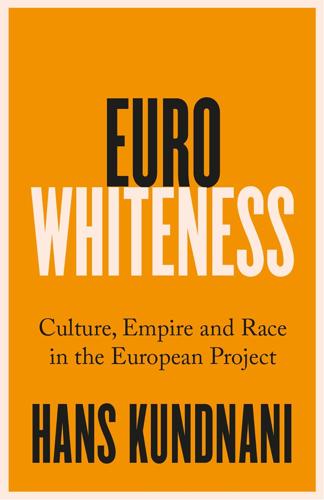
Eurowhiteness: Culture, Empire and Race in the European Project
by
Hans Kundnani
Published 16 Aug 2023
“‘Le nationalisme, c’est la guerre’, déclare François Mitterrand” [“‘Nationalism is war’, says François Mitterrand”], Le Monde, 19 January 1995, https://www.lemonde.fr/archives/article/1995/01/19/le-nationalisme-c-est-la-guerre-declare-francois-mitterrand_3835927_1819218.html (last accessed 31 March 2023). 37.Partha Chatterjee, The Nation and Its Fragments: Colonial and Postcolonial Histories (Princeton: Princeton University Press, 1993), p. 4. 38.Ibid., p. 3. 39.Amie Tsang, “E.U. Seeks Solidarity as Nations Restrict Medical Exports”, New York Times, 7 March 2020, https://www.nytimes.com/2020/03/07/business/eu-exports-medical-equipment.html (last accessed 31 March 2023). 40.Michael Peel, Jim Brunsden and Richard Milne, “EU to curb exports of protective gear for coronavirus”, Financial Times, 15 March 2020, https://www.ft.com/content/36fac94a-66b8–11ea-800d-da70cff6e4d3 (last accessed 31 March 2023). 41.Tweet by Ursula von der Leyen, 15 March 2020, https://twitter.com/vonderleyen/status/1239221732218744833?s=20&t=vAVoI3khYA823Xb6pEtIjA (last accessed 31 March 2023). 42.Tweet by Wolfgang Ischinger, 30 May 2020, https://twitter.com/ischinger/status/1266620632248320000?

Same as Ever: A Guide to What Never Changes
by
Morgan Housel
Published 7 Nov 2023
GO TO NOTE REFERENCE IN TEXT Clark Whelton, a former speechwriter: Clark Whelton, “Say Your Prayers and Take Your Chances,” City Journal, March 13, 2020, city-journal.org/1957-asian-flu-pandemic. GO TO NOTE REFERENCE IN TEXT Lori Freeman, CEO: Ed Yong, “How the Pandemic Defeated America,” Atlantic, September 2020, theatlantic.com/magazine/archive/2020/09/coronavirus-american-failure/614191. GO TO NOTE REFERENCE IN TEXT Parts of Lake Tahoe received: Admin, “Incredible 2017 Tahoe Snow Totals,” Tahoe Ski World, December 28, 2018, tahoeskiworld.com/incredible-2017-tahoe-snow-totals. GO TO NOTE REFERENCE IN TEXT It was called a superbloom: Associated Press, “Out in the California Desert, Tourists Make a Beeline for ‘Flowergeddon,’ ” Washington Post, March 31, 2017, washingtonpost.com/lifestyle/kidspost/out-of-the-california-desert-tourists-make-a-beeline-for-flowergeddon/2017/03/31/64313c3c-1620-11e7-833c-503e1f6394c9_story.html.
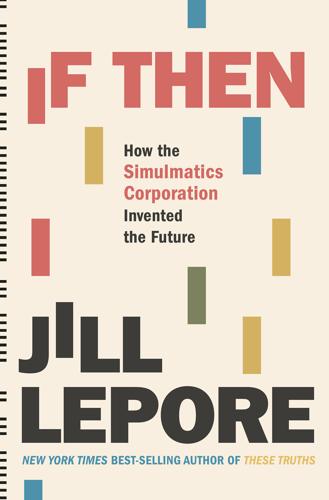
If Then: How Simulmatics Corporation Invented the Future
by
Jill Lepore
Published 14 Sep 2020
And yet Simulmatics’ legacy endures in predictive analytics, what-if simulation, and behavioral data science: it lurks behind the screen of every device. Simulmatics, notwithstanding its own failure, helped invent the data-mad and near-totalitarian twenty-first century, in which the only knowledge that counts is prediction and, before and after the coming of the coronavirus, corporations extract wealth by way of the collection of data and the manipulation of attention and the profit of prophecy. In a final irony, Simulmatics, whose very past has been all but erased, helped invent a future obsessed with the future, and yet unable to improve it. Simulmatics’ own origins lie still further back in time, in the early-twentieth-century science of psychological warfare: the control of people’s minds by assault, interruption, and distraction.
…
Kennedy and, 120, 167 — Johnson and, 75–76, 167, 182, 258 — reaction to space race and arms race, 78 — sit-ins, 101, 106, 196, 199, 234, 275 — Stevenson and, 42–43, 63, 66 Clark, Kenneth and Mamie, 85 Clinton, Bill, 303, 304 Clinton, Hillary, 303, 304 Cold War — as battle over the future, 35, 208–9 — beginning of, 15 — in Burdick’s fiction, 28 — effects of, 49–50, 135, 163 Coleman, James — American Sociological Association presidency, 303 — Bureau of Applied Social Research and, 84–85 — commodification of attention, 145 — Equality of Educational Opportunity (Coleman Report), 259, 303 — friendship with McPhee, 84–85, 87, 89, 137 — insufficiency of data for models, 145 — letter of support for Popkin, 310 — marketing for Simulmatics, 137, 142, 152 — preparation for 1962 Times election coverage, 154–55, 164, 362n — Project Camelot, 209 — resignation from Simulmatics, 271 — riot prediction project, 260–62 — simulation games designed by, 258–59, 377n — Simulmatics stock offering and, 139 — Simulmatics’ Urban Studies Division, 258–59 Coleman, John, 85 Coleman, Lucille (Lu) Ritchey, 84–85, 89, 144, 270 Coleman, Thomas, 85 Collingwood, Charles, 24–25 Collins, Ella, 252 Columbia Pictures, 173–74, 175, 364n Commission on Party Structure and Delegate Selection, 287 Committee for the Re-election of the President, 308, 309 Communications Act of 1934, 23, 316 compilers, 69, 70 “Computer Politics” (Kristol), 367n computer revolution — ARPANET, 284, 296, 310–11, 312, 313–15, 316, 318 — hackers, 312, 313, 326 — no safeguards on data collection and analysis, 315, 323 — personal computers, 310, 313, 318 — Pool, arguments against regulation, 315–17, 318 — Pool, writing about emerging technologies, 277–79, 299, 316–17, 318–19, 323 — Stewart Brand promotion of, 310, 311–12, 314, 317–18 — see also artificial intelligence computers, early — development during and after World War II, 68–70 — mainframe computer in 1956, 8 — presidential election of 1952, 24–26, 69, 122, 150 — see also specific topics Cook, Mike, 303 coronavirus and social distancing, 5, 322 Corrupt Practices Act, 23 Counterfeit World (Galouye), 187–88 counterinsurgency — McNamara’s theory, 208–9 — progress measurement by counting deaths, 212–13 — Simulmatics program, 49, 200, 209, 211, 213, 216, 258 Cronkite, Walter, 24–25, 267 Cuban Missile Crisis — aftermath, 163, 169 — Andrei Gromyko, 157, 160 — beginning of, 156 — end of, 162–63 — ExComm (Executive Committee of the National Security Council), 157, 162 — John F.
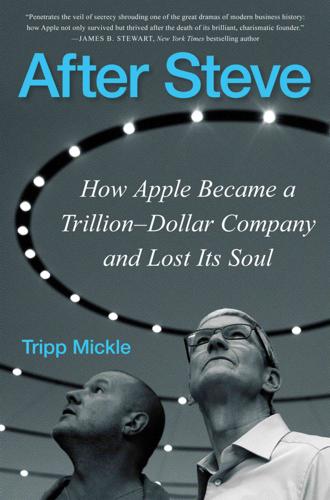
After Steve: How Apple Became a Trillion-Dollar Company and Lost Its Soul
by
Tripp Mickle
Published 2 May 2022
Manufacturing a $1 Billion Boost” (video), CNBC, May 3, 2017, https://www.cnbc.com/2017/05/03/exclusive-apple-just-promised-to-give-us-manufacturing-a-1-billion-boost.html. Cramer didn’t point out: Tripp Mickle and Yoko Kubota, “Tim Cook and Apple Bet Everything on China. Then Coronavirus Hit,” Wall Street Journal, March 3, 2020, https://www.wsj.com/articles/tim-cook-and-apple-bet-everything-on-china-then-coronavirus-hit-11583172087; Glenn Leibowitz, “Apple CEO Tim Cook: This Is the No. 1 Reason We Make iPhones in China (It’s Not What You Think),” Inc., December 21, 2017, https://www.inc.com/glenn-leibowitz/apple-ceo-tim-cook-this-is-number-1-reason-we-make-iphones-in-china-its-not-what-you-think.html.

The War Came to Us: Life and Death in Ukraine
by
Christopher Miller
Published 17 Jul 2023
“Can I be without mask?” he asked in English as he walked past me and gave a little bow before plopping down on his chair in front of a row of Ukrainian flags. It was a reminder that we hadn’t seen the end of one crisis while another one was looming. COVID was still ravaging Ukraine. Hospitals were full of coronavirus patients; ventilators were in short supply. Just about every foreign correspondent flying into the country caught it within 72 hours. An entire crew of some 20 CNN journalists were infected at the same time at the Intercontinental Hotel. I had had it in December and spent more than a week cooped up in my room at the Radisson Blu, dining on room service.
…
“Sir, the attack has begun,” his chief of staff said on the other end of the line. Kryvonozhko was in isolation, wheezing and aching. At one point several days earlier he had been close to being put on a ventilator. He still had an IV drip stuck in his arm. Now, with Russian fighter jets and cruise missiles in his skies, he didn’t care about any of that. “I was cured of coronavirus in that moment,” he would tell me later in early June, when we met for what would be his first interview since the invasion. He ripped the IV out of his arm as soon as he hung up the phone, threw on his clothes, and jumped into action, brushing off the concerns of his doctors. Ukraine’s air force wasn’t unprepared.
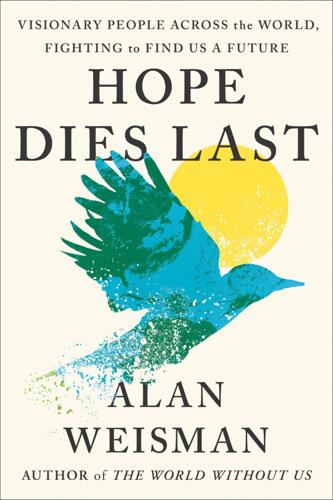
Hope Dies Last: Visionary People Across the World, Fighting to Find Us a Future
by
Alan Weisman
Published 21 Apr 2025
(The design dates to history’s first high-field magnet, built at MIT in the 1930s, which used copper conductors and water for coolant.) Each layer was built on an automated assembly line. “The idea,” said Mumgaard, “is to make 100,000 magnets a year someday. This can’t be a scientific curiosity. This needs to be an energy source.” Although COVID-19 had waned, an outbreak could foil everything, so they maintained coronavirus protocols, moving computer terminals outside beneath a tent to avoid crowding within. Others worked virtually. Mumgaard, now in his late 30s, had bet his career on this moment. His usual impish grin was hidden behind a white surgical mask, but his eyes beamed confidence. * * * — For a month, dozens worked eight-hour, continuous shifts.
…
Daily Star, January 2, 2020. https://www.thedailystar.net/opinion/environment/news/why-saving-the-sundarbans-so-urgent-1848145. Ratcliffe, Rebecca, Liz Ford, Lydia McMullan, Pablo Gutiérrez, and Garry Blight. “Cox’s Bazar Refugee Camps: Where Social Distancing Is Impossible.” The Guardian, June 29, 2020. https://www.theguardian.com/world/ng-interactive/2020/jun/29/not-fit-for-a-human-coronavirus-in-coxs-bazar-refugee-camps. Rezwan. “Bangladesh Reassesses Its Belt and Road Initiative Strategy with China as the US Offers a New Alternative.” Global Voices, February 28, 2023. https://globalvoices.org/2023/02/28/bangladesh-reassesses-its-belt-and-road-initiative-strategy-with-china-as-the-us-offers-a-new-alternative.
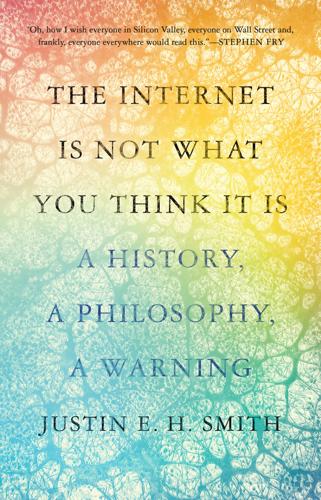
The Internet Is Not What You Think It Is: A History, a Philosophy, a Warning
by
Justin E. H. Smith
Published 22 Mar 2022
Today we hear of new lords and officers created, tomorrow of some great men deposed, and then again of fresh honours conferred; one is let loose, another imprisoned; one purchaseth, another breaketh: he thrives, his neighbour turns bankrupt; now plenty, then again dearth and famine; one runs, another rides, wrangles, laughs, weeps, &c. This I daily hear, and such like, both private and public news, amidst the gallantry and misery of the world. —ROBERT BURTON, THE ANATOMY OF MELANCHOLY Unconfined Thoughts I am writing, from New York City, during the coronavirus quarantine in the spring of the year 2020. I have in more recent weeks begun to venture out for short walks, though for more than two months I did not leave our cramped one-bedroom apartment in Fort Greene, Brooklyn. The New York Public Library, where I have a fellowship for a year of research, remains closed, and I am painfully cut off from my precious books.

The Passenger
by
AA.VV.
Published 23 May 2022
Meanwhile, if the past few fire seasons are any indication, farmworkers will continue to pick produce in ash-laden air, harvesting fields thick with smoke for the fifth year in a row. Global trade networks, already disrupted by the pandemic, have also been affected by extreme weather: in July 2021, an enormous typhoon shuttered ports across eastern China. Coronavirus outbreaks in Vietnam and Bangladesh caused factory shutdowns. A natural-rubber shortage seemed imminent, following China’s stockpiling the material for its national reserves, fungal leaf disease in Sri Lanka, and drought and floods in Thailand and Indonesia. There have been delays for farm machinery and for essential components such as box blades, microchips, plastics, pallets, and the foam required for tractor seats.
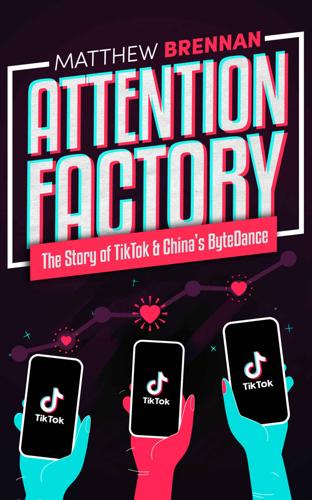
Attention Factory: The Story of TikTok and China's ByteDance
by
Matthew Brennan
Published 9 Oct 2020
ByteDance would be able to partially allocate advertising inventory to its own suite of products, accurately targeting and acquiring new users across the globe with speed and minimal cost without having to hand over money and data to the online advertising duopoly gatekeepers of Facebook and Google. As the coronavirus pandemic spread across the world in early 2020, people found themselves quarantined inside their homes for weeks, leading into months. While airlines, hotels, and restaurants went bankrupt, demand for online entertainment skyrocketed, causing downloads of TikTok to hit all-time highs. The app was the perfect fix for those desperate for distraction, locked inside suffering from the cruel combination of stress and boredom.
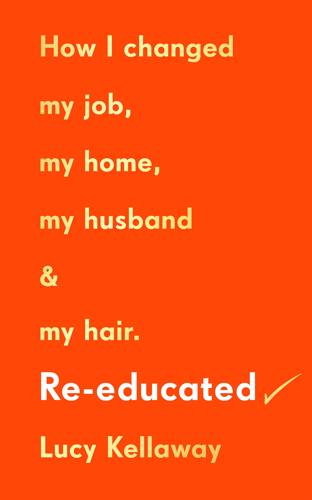
Re-Educated: Why It’s Never Too Late to Change Your Life
by
Lucy Kellaway
Published 30 Jun 2021
Or is it the people who are on the receiving end of me? In some ways I’m the highest authority, but equally I’m too close to the subject to be trusted. So I decide to put the question to people who know me best and let them settle the matter. On a whim, during the weird, thumb-twiddling days of the first coronavirus lockdown, when the school is closed and when I have little else to do, I fire off an email to a panel of 15 – my four children, my sister and my ten closest friends – and ask them point blank. Dearest best friends and family, Will you help me? I’m trying to write a book about reinvention and I’m interested in whether it is possible to change who you are as a result of changing your job.
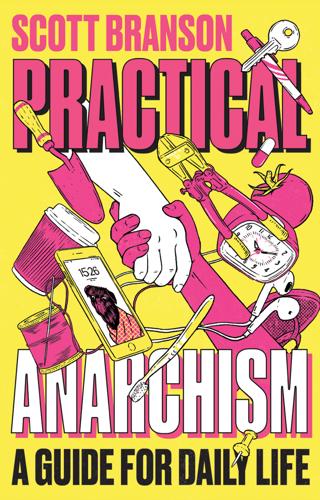
Practical Anarchism: A Guide for Daily Life
by
Scott. Branson
Published 14 Jun 2022
Our labor conditions may not be the tipping point to ending the complex systems of oppression, though arguably being out of work—and being involved in mutual aid—does seem to connect to the willingness to risk more when the racist violence becomes intolerable. For many, the pandemic precarity wasn’t new, just a solidified version of a long-term experience: tinder that needed a spark. On a hopeful note, the authors of the essay, “The Interregnum: The George Floyd Uprising, the Coronavirus Pandemic, and the Emerging Social Revolution,” argue that the phenomena after the uprising of the “Great Resignation,” which they rename the “Great Refusal,” of people giving up their low-paid, pointless jobs, was a furthering of the revolutionary fervor of the rebellion into more aspects of our daily life.
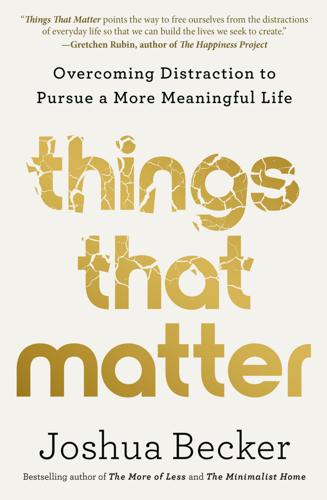
Things That Matter: Overcoming Distraction to Pursue a More Meaningful Life
by
Joshua Becker
Published 19 Apr 2022
And let me tell you, there are few things in life more inspirational than peering into the eyes of a man who does not fear his own death. Grandpa lived to be ninety-nine, mentally sharp and still working till the very end. In December 2020, he passed away after a brief battle with pneumonia. While accommodating coronavirus restrictions in place at the time, we held his funeral as he’d planned it. And that day, in my eulogy, I told the listeners about Grandpa’s example of living in such a way that you need have few regrets. His life was long enough, as Seneca declared, because he knew how to use it. The One Sentence You Need Each Day to Set Your Intention A former mentor of mine, Robert Thune Sr., was the first person to share the idea with me.
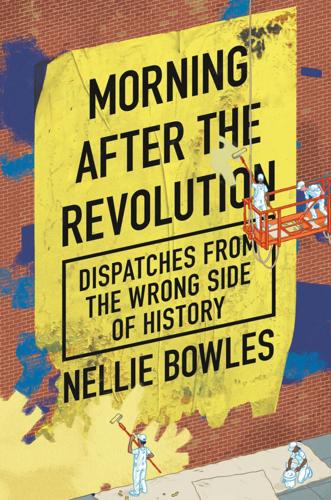
Morning After the Revolution: Dispatches From the Wrong Side of History
by
Nellie Bowles
Published 13 May 2024
During the first year or so of the pandemic, San Francisco County lost more than one in twenty residents. (I was among the departures.) Signs of the city’s pandemic decline were everywhere—the boarded-up stores, the ghostly downtown, the encampments. But walking these streets awakened me to how bad San Francisco had gotten even before the coronavirus hit—to how much suffering and squalor I’d come to think was normal. Stepping over people’s bodies, blurring my eyes to not see a dull needle jabbing and jabbing again between toes—it coarsened me. I’d gotten used to the idea that some people just want to live like that. I was even a little defensive of it: Hey, it’s America.

Not Working: Where Have All the Good Jobs Gone?
by
David G. Blanchflower
Published 12 Apr 2021
Second, searches ticked up in the United States from the start of November. The COVID rise in unemployment, just like the change in well-being, is much larger in the Great Pandemic than during the Great Recession. In the UK, the Office of National Statistics asked respondents between September 16 and 20, 2020, how difficult it had been before the coronavirus pandemic for them to pay their usual household bills; 7 percent said “difficult” or “very difficult.” When asked since the pandemic, 16 percent said this. When asked if their household could afford to pay an unexpected but necessary expense of £850, or around $1,000, 35 percent said no.7 In the UK, the Trussell Trust, which runs more than one thousand food banks, reports that nearly one hundred thousand recipients needed help with food for the first time during the lockdown.
…
Chronic pain was defined as pain on most days or every day in the past six months (Dahlhamer et al. 2018). 5. Blanchflower and Bryson 2020. 6. Thanks to Daisy Fancourt for kindly providing me with these data from the COVID-19 Social Study at University College London, https://www.covidsocialstudy.org/results. 7. Office for National Statistics, “Coronavirus and the Social Impacts on Great Britain,” https://www.ons.gov.uk/peoplepopulationandcommunity/healthandsocialcare/healthandwellbeing/datasets/coronavirusandthesocialimpactsongreatbritaindata. 8. Trussell Trust 2020. Jennifer Smith, “Pandemic, Growing Need Strain U.S. Food Bank Operations,” Wall Street Journal, July 16, 2020.

The Climate Book: The Facts and the Solutions
by
Greta Thunberg
Published 14 Feb 2023
What we do know, however, is that most pandemics do come from animals; they are zoonotic diseases. In fact, 75 per cent of all new infectious diseases originate from wildlife. Natural habitats should work as a protecting shield, but once you strip back too much of that natural barrier we are exposed to increasing levels of risk. So maybe the coronavirus did spread from animals to humans, or maybe it did not. Either way, our destruction of nature is laying the perfect groundwork for the creation of new – and potentially much deadlier – pandemics. Since the global outbreak in February 2020, the scientific community has been clearly spelling this out.
…
. / 5.14 Lessons from the Pandemic David Wallace-Wells In early December 2019, just weeks after 2 million climate strikers gathered around the world to protest the business-as-usual beginning of the COP25 conference in Madrid, the first human case of SARS-CoV-2 was registered in Wuhan. In January, as the World Economic Forum in Davos tried to rebrand itself as a ‘climate conference’, the first deaths were recorded. In February, as the world outside of China began to panic about the ‘novel coronavirus’ and the way it might threaten and upend the lives of many millions, 2,718 people died globally of the disease. That same month, approximately 800,000 died globally from the effects of air pollution produced by the burning of fossil fuel. As the year wore on, the pandemic toll grew gruesomely large, though each new mortality milestone often seemed to produce less horror and outrage than the one before, following the dispiriting if familiar rhythm by which disaster is quickly normalized.

Nexus: A Brief History of Information Networks From the Stone Age to AI
by
Yuval Noah Harari
Published 9 Sep 2024
Pope Francis, “Homily of His Holiness Pope Francis ‘Return to God and Return to the Embrace of the Father,’ ” March 20, 2020, www.vatican.va/content/francesco/en/cotidie/2020/documents/papa-francesco-cotidie_20200320_peri-medici-ele-autorita.html; Philip Pullella, “Rome Catholic Churches Ordered Closed due to Coronavirus, Unprecedented in Modern Times,” Reuters, March 13, 2020, www.reuters.com/article/us-health-coronavirus-italy-rome-churche-idUSKBN20Z3BU. CHAPTER 2: STORIES: UNLIMITED CONNECTIONS 1. Thomas A. DiPrete et al., “Segregation in Social Networks Based on Acquaintanceship and Trust,” American Journal of Sociology 116, no. 4 (2011): 1234–83; R.
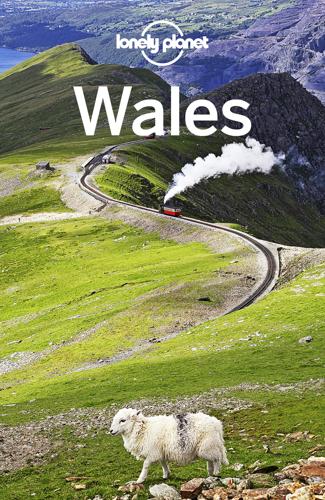
Lonely Planet Wales
by
Anna Kaminski;Hugh McNaughtan
Wales Contents Plan Your Trip Welcome to Wales Wales’ Top Experiences Need to Know Accommodation Month by Month Itineraries The Great Outdoors Family Travel Regions at a Glance On The Road CARDIFF Sights Activities Tours Festivals & Events Sleeping Eating Drinking & Nightlife Entertainment Shopping Vale of Glamorgan Penarth Barry (Y Barri) BRECON BEACONS & SOUTHEAST WALES Brecon Beacons National Park Abergavenny Black Mountains Hay-on-Wye Talgarth Crickhowell Llangorse Lake Talybont-on-Usk Llanfrynach Brecon Western Brecon Beacons & Black Mountain Monmouthshire & Southeast Wales Chepstow Lower Wye Valley Monmouth Caerleon South Wales Valleys Merthyr Tydfil Blaenavon Caerphilly SWANSEA, GOWER & CARMARTHEN-SHIRE Swansea The Mumbles Gower Peninsula Parkmill & Around Oxwich Bay Port Eynon Rhossili Llangennith Reynoldston Llanmadoc Carmarthenshire Kidwelly Carmarthen Laugharne Llanarthne Llandeilo Llandovery Pumsaint Newcastle Emlyn & Around ST DAVIDS & PEMBROKESHIRE North Pembrokeshire St Davids Solva Porthgain Fishguard Cwm Gwaun Newport Preseli Hills St Dogmaels South Pembrokeshire Saundersfoot Tenby Manorbier Stackpole Angle Pembroke Narberth Haverfordwest Skomer, Skokholm & Grassholm Islands Little & Broad Haven Newgale Marloes Sands MID-WALES Ceredigion Cardigan Aberporth & Around New Quay Aberaeron Tregaron Aberystwyth Around Aberystwyth Powys Machynlleth Corris Rhayader Elan Valley Llanwrtyd Wells Builth Wells Llandrindod Wells Presteigne Knighton Newtown Montgomery Berriew Welshpool SNOWDONIA & THE LLŷN North Wales Borderlands Ruthin Llangollen Snowdonia National Park Bala Dolgellau Cader Idris Tywyn Barmouth Harlech Blaenau Ffestiniog Penmachno Betws-y-Coed Capel Curig Ogwen Valley Llanberis Snowdon Beddgelert Porthmadog Llŷn Peninsula Criccieth Pwllheli Abersoch Aberdaron Bardsey Island Nant Gwrtheyrn ANGLESEY & THE NORTH COAST The North Coast Caernarfon Bangor Conwy Llandudno Isle of Anglesey Menai Bridge Southwest Anglesey Beaumaris Moelfre Church Bay Holyhead Rhosneigr UNDERSTAND History Culture The Welsh Table The Natural Environment SURVIVAL GUIDE Directory A–Z Accessible Travel Customs Regulations Discount Cards Climate Electricity Health Insurance Internet Access Legal Matters LGBTIQ+ Travellers Maps Money Opening Hours Post Public Holidays Safe Travel Telephone Toilets Tourist Information Visas Volunteering Women Travellers Work Transport Getting There & Away Entering the Country Air Land Sea Getting Around Air Bicycle Boat Bus Car & Motorcycle Taxi Train Language Behind the Scenes Our Writers COVID-19 The economic and social impacts of COVID-19 (coronavirus) will continue to be felt long after the virus has been contained. Many businesses, services and events referenced in this guide will have experienced restrictions leading to loss of customers, income and employees; some will unfortunately have closed their doors permanently. We suggest you check with venues before visiting for the latest information.
…
The Tower Colliery in Hirwaun had been bought and operated successfully by a workers’ collective since the National Coal Board had deemed it uneconomic in 1994. 2011 A further referendum is held asking whether the Welsh Assembly should be able to make laws without the approval of the UK Parliament; 64% of the population vote ‘yes’. 2016 The UK holds a referendum regarding continuing its membership of the European Union. A slim majority (52% to 48%) votes to leave. 2018 Welshman Geraint Thomas wins what is generally considered to be sport’s very toughest individual test: the Tour de France. 2020 In February, the first instance of Covid-19 coronavirus is recorded in Wales. In March, the UK heads into lockdown as the death toll rises. Culture Cultural debate in Wales coalesces on one theme: identity. What is the identity of Wales in the 21st century? What are the defining elements of Welsh culture? Historically, Wales struggled to overcome negative stereotypes about its lack of sophistication.
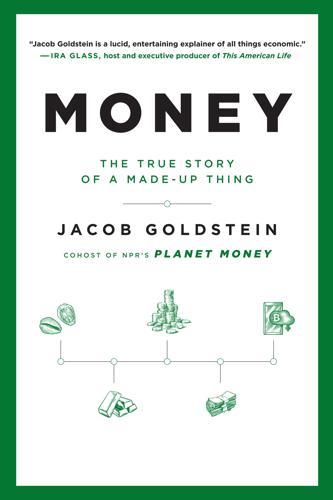
Money: The True Story of a Made-Up Thing
by
Jacob Goldstein
Published 14 Aug 2020
But funds for ordinary investors still use the same accounting methods to show a constant dollar value for investors. People can still write checks on their accounts. Money-market funds are not regulated like banks, but for most people money in a money fund still feels like money in the bank. In the spring of 2020, as the coronavirus pandemic spread around the world, people once again started frantically pulling billions of dollars out of money-market funds. And the US government once again rushed to protect the funds. “It’s just frustrating that we never really fixed this stuff to begin with,” Sheila Bair, a former regulator, said.
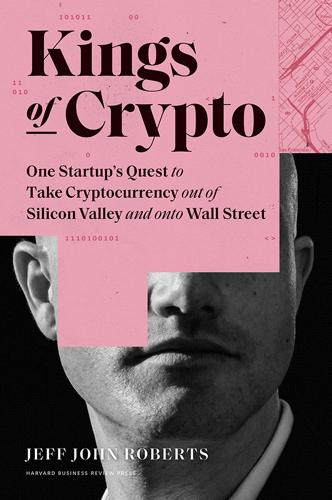
Kings of Crypto: One Startup's Quest to Take Cryptocurrency Out of Silicon Valley and Onto Wall Street
by
Jeff John Roberts
Published 15 Dec 2020
• • • In San Francisco, Coinbase’s founder waited out the pandemic in his penthouse in the city’s tallest building, where his neighbors included NBA star Kevin Durant and other members of the Golden State Warriors. Brian had grasped the implications of the Covid-19 crisis early, and Coinbase’s work-from-home blueprint had been shared widely among companies in the Valley and beyond. But he was hardly the first from the crypto world to warn about what was coming as coronavirus emerged—that designation belonged to Balaji Srinivasan, Coinbase’s former CTO who had almost burned the company to the ground in order to save it. Months before the virus hit the United States with full force, Balaji had been tweeting like a maniac about the disease spreading out of Wuhan, China.

Internet for the People: The Fight for Our Digital Future
by
Ben Tarnoff
Published 13 Jun 2022
“Digital redlining”: Communications Workers of America and the National Digital Inclusion Alliance, “AT&T’s Digital Redlining: Leaving Communities Behind for Profit,” October 2020. 31, Home broadband is not … 17 percent of US adults: Anderson, “Mobile Technology and Home Broadband 2019.” 2015 Pew survey: Aaron Smith, “Searching for Work in the Digital Era,” Pew Research Center, November 19, 2015. 32, The COVID-19 crisis greatly magnified … Finding internet in the parking lot: Tony Romm, “‘It Shouldn’t Take a Pandemic’: Coronavirus Exposes Internet Inequality among US Students as Schools Close Their Doors,” Washington Post, March 16, 2020; Cecilia Kang, “Parking Lots Have Become a Digital Lifeline,” New York Times, May 5, 2020. 32, But not everyone could make it … One in five school-age children: Monica Anderson and Andrew Perrin, “Nearly One-in-Five Teens Can’t Always Finish Their Homework Because of the Digital Divide,” Pew Research, October 26, 2018. 33, “I hope that there is a lesson …” Quoted in Kang, “Parking Lots Have Become a Digital Lifeline.” 33, Democracy is a form of life … “Is the name …”: Wendy Brown, Undoing the Demos: Neoliberalism’s Stealth Revolution (New York: Zone Books, 2015), 178. 33, The philosopher John Dewey once … Dewey’s understanding of freedom and “resources necessary …”: John Dewey and James Hayden Tufts, Ethics (New York: Henry Holt and Company, 1908), 437–38.
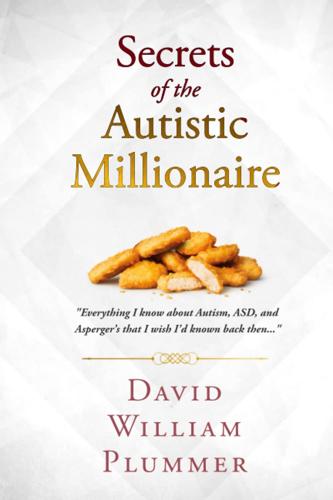
Secrets of the Autistic Millionaire: Everything I Know Now About Autism and Asperger's That I Wish I'd Known Then
by
David William Plummer
Published 14 Sep 2021
Not only does she perceive a value or utility in learning everything there is to be learned about other people, but she also puts that information all to good productive use when some school or community event needs to be organized. People like my wife seem to have an incredibly strong social sense and drive, and in fact, will actually crave such interaction if they are denied it too long. As I write this section, we are in the midst of the 2020 Coronavirus lockdowns. If these are trying times for individuals with autism, primarily due to their difficulty in accepting 303 change, then they are also a very trying time for those neurotypical people who could accurately be described as “social butterflies.” Even before the lockdown, by the end of the day if my wife has not had a specific need to go out and interact with anyone, I am convinced she will formulate one and run to the store simply to get out of the house and see other people –– the more she knows whoever it is she sees, the better.
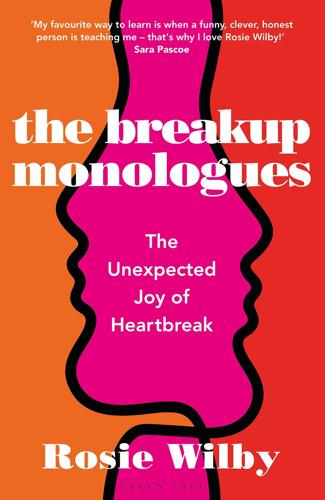
The Breakup Monologues: The Unexpected Joy of Heartbreak
by
Rosie Wilby
Published 26 May 2021
I’m not getting paid.’ ‘Oh, I know. But it’s good to just give it a go.’ ‘Yes, I suppose it might get my creative juices flowing.’ ‘Yeah…that…and it’ll mean that you’ll wash your hair and put makeup on.’ During my final months of writing this book, the UK is plunged into lockdown due to the coronavirus pandemic. The changes to society and how we can interact are unprecedented. Early suggestions from sociologists are that the pandemic has completely reshaped our close relationships. In every country that has had a lockdown, divorce rates have surged. Perhaps that is no surprise. Divorces normally peak just after holiday seasons at Christmas and summertime when people have had no escape from one another.

Working Identity, Updated Edition, With a New Preface: Unconventional Strategies for Reinventing Your Career
by
Herminia Ibarra
Published 17 Oct 2023
Lots: arts boards, philanthropy, a dog, a great marriage, a Jewish faith, Pilates, dance class … Windows of Opportunity Of course, sabbaticals can create their own problems because they are rarely long enough for us to figure out what we want to do next and then land an opportunity that fits the bill. The same goes for unexpected events or shocks—like the coronavirus pandemic—that create fertile conditions for major life and career changes by sparking reflection about our desires and priorities. Enough transpires during the time-out period to make us keenly aware of what we no longer want. But the problem is this: more appealing, feasible alternatives have yet to materialize.
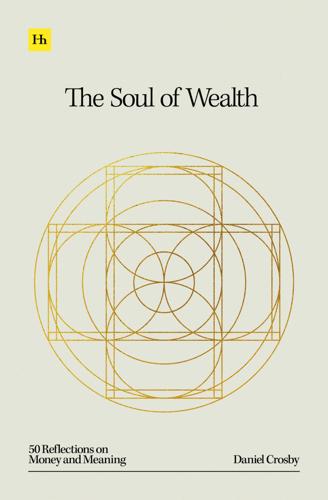
The Soul of Wealth
by
Daniel Crosby
Published 19 Sep 2024
* * * 173 “How Hyundai Sells More When Everyone Else Is Selling Less,” Knowledge at Wharton (June 10, 2009). 174 Kristina Monllos, “‘Right thing to do at the right time’: The definitive oral history of Hyundai’s assurance program,” Digiday (March 31, 2020). 175 Dale Buss, “Hyundai Reprises ‘Assurance’ Program For Coronavirus Era,” Forbes (March 31, 2020). Not Being Dumb Beats Being Brilliant The jangly guitar hook begins, and before you know it, you are tapping your feet. But then, the lyrics kick in, “Dumb ways to die, so many dumb ways to die.” Wait a minute, what? This earworm, which you’ve likely encountered as part of some social media ‘fail’ compilation, has a storied past as one of the most important prevention campaigns of all time.

Fodor's Essential Israel
by
Fodor's Travel Guides
Published 2 Aug 2023
Shops sell Dead Sea cosmetics, hats, and swimwear, along with locally made products like wine. There is also a juice bar. While the winding path down to the Dead Sea shore is well-kept and not too difficult to navigate, there are also regular free shuttles. Towels are available to rent or purchase; lockers are also available. Massage rooms and a spa have closed since the coronavirus. Amenities: food and drink; lifeguards; parking (free); showers; toilets. Best for: swimming; walking. E Kalia Beach, 3 km (2 miles) north of Qumran j Near Kibbutz Kalia off Rte 90 P 02/994–2391 wkaliabeach.com/en A NIS 45 including parking. Neve Midbar Beach BEACH | FAMILY | Just south of Biankini Beach, this well-kept stretch offers a large swimming pool, a wading pool, and several food venues.
…
Please check your government’s travel advisory before visiting these areas. Christmas in Bethlehem s Christmas is the most popular time of year for travelers to visit Bethlehem, the town where Jesus is said to have been born. In fact, the holiday celebration draws more than 1 million tourists annually, though coronavirus travel restrictions took a deep toll during the pandemic. In Bethlehem, Christmas is celebrated three times: December 25 by the Roman Catholics and Protestants; January 6 by the Greek, Coptic, and Russian Orthodox; and January 19 by the Armenian Orthodox. For nearly a month, Manger Square is brilliantly illuminated with lights.
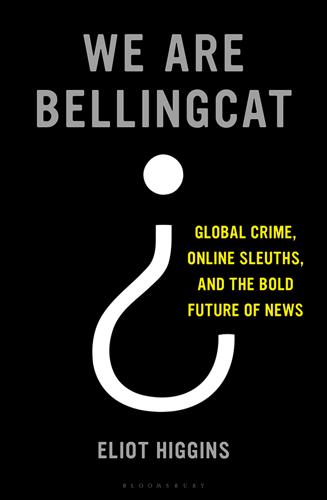
We Are Bellingcat: Global Crime, Online Sleuths, and the Bold Future of News
by
Eliot Higgins
Published 2 Mar 2021
More than ever, news events prompt people to scour the internet for immediate insights, and we are seeking to mobilise this public in the push for credible evidence. For example, within a month of the World Health Organization designating Covid-19 a pandemic in March 2020, Bellingcat produced a range of material to involve citizens in online sleuthing on the subject, including a guide to debunking coronavirus disinformation; an article on scammers exploiting the disease on Facebook and YouTube; and a video segment on applying open-source tools to studying a world gone still during lockdown.96 When a police officer in Minneapolis killed an African-American suspect, George Floyd, setting off protests across the United States and beyond, we produced an explanatory article on the Boogalo movement that hoped unrest would degenerate into a second American civil war; we compiled an exhaustive list of attacks on journalists, geolocated and plotted onto an interactive map to involve the public in absorbing the dimensions of the efforts to suppress information; and we sought to inform citizens of our techniques via a new podcast, BellingChat.

Too Much and Never Enough: How My Family Created the World's Most Dangerous Man
by
Mary L. Trump
Published 13 Jul 2020
While thousands of Americans die alone, Donald touts stock market gains. As my father lay dying alone, Donald went to the movies. If he can in any way profit from your death, he’ll facilitate it, and then he’ll ignore the fact that you died. Why did it take so long for Donald to act? Why didn’t he take the novel coronavirus seriously? In part because, like my grandfather, he has no imagination. The pandemic didn’t immediately have to do with him, and managing the crisis in every moment doesn’t help him promote his preferred narrative that no one has ever done a better job than he has. As the pandemic moved into its third, then fourth month, and the death toll continued its rise into the tens of thousands, the press started to comment on Donald’s lack of empathy for those who have died and the families they leave behind.
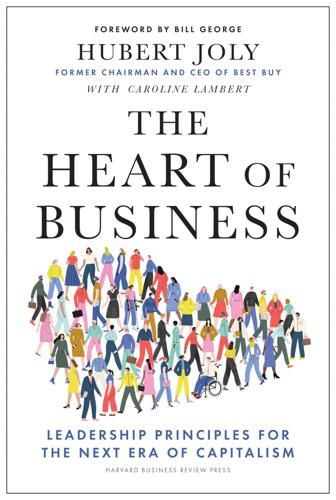
The Heart of Business: Leadership Principles for the Next Era of Capitalism
by
Hubert Joly
Published 14 Jun 2021
See also specific businesses call for action for, 233 finances of (see finances) leadership of (see leadership) purpose of, 4–5, 6–7, 51, 63–65, 233 (see also purposeful human organizations) stakeholders of (see customers; employees; shareholders; stakeholders; suppliers) work at (see work) Business Roundtable, 55, 75, 242n10, 242n14 Cales, Amber, 139–140 call for action for boards of directors, 234 for business education institutions, 235 for businesses, 233 for industry sector and community leaders, 234 for investors, analysts, regulators, and rating agencies, 235 for leaders, 232 overview of, 231–232, 236 Calvin, John, 26, 238n5 Canon, 86 capitalism in crisis, 4, 54, 240n1 financial incentives in, 126 leadership for next era of, 5–7 (see also leadership) reinvention of, 62, 65, 73, 74–77 social discord and, 4, 53–54 stakeholder capitalism, 74, 76, 231 Cargill, 111 Carlson, Curt, 224 Carlson Companies challenges as opportunities at, 201 exploring motivating forces at, 137, 222 incentives at, 125, 129 Joly’s departure from, 2 leadership at, 1, 160, 224 lifelong learning at, 191 participative process at, 174 perfectionism challenges at, 41 performance assessments at, 188–189 strategy at, 111, 174, 199 turnaround at, 111 values days at, 226 women in leadership at, 160 Carlson Nelson, Marilyn, 137, 160, 222 Carlson Wagonlit Travel challenges as opportunities at, 201–202 cutting costs not jobs at, 104–105 financial challenges for, 58 human connections at, 148–149, 151 participative process at, 174 perfectionism challenges at, 37, 39–41 positive environment at, 114 purpose at, 142–143 strategy at, 81–82, 174 women in leadership at, 160 work views at, 27 cathedrals, building, 31, 70–71, 73 Chanel, 89 Chaplin, Charlie, 19 Christensen, Clayton, 216–217, 218, 226–227 Churchill, Winston, 215 Cicero, 238n10 Circuit City, 2, 110 Citrin, Jim, 1–3, 13, 98, 195, 225 Clausewitz, Carl von, 201 coaching vs. training, 185–188, 191 Coalition for the American Dream, 91 codes of behavior, 154 codes of ethics, 144 cognitive dissonance, 40 commissions, 124–125, 127, 128 communities business connection to, 68, 72, 242n14 business support for thriving, 88–91 leadership in, 234 companies. See businesses Cook, Tim, 196 Covid-19 (coronavirus) pandemic agile work methods in, 176 business tied to community health in, 72 capitalism challenges in, 4 challenges as opportunities during, 202–203 human connections in, 149, 156 leadership during, 223, 227–228 purpose focus during, 204, 223 remote working in, 177 work-life balance in, 229 crisis response, 138–140, 223–224, 227.

Mini Farming: Self-Sufficiency on 1/4 Acre
by
Brett L. Markham
Published 14 Apr 2010
(As a side note, the virus causes a mild conjunctivitis in humans and is particularly toxic to cancer cells in humans while leaving normal cells practically unharmed. Research into this is ongoing.) So vaccinating your flock is a good idea. Meanwhile, while the Newcastle vaccine is available on its own, it can also be purchased as a combined vaccine for IB. IB is caused by a highly contagious coronavirus that mutates rapidly. While the immediate mortality rate from IB tends to be low, it can permanently damage the kidneys and reproductive tracts of chickens, hurts shell pigmentation, and makes the eggs unappetizing. Thus, especially if you visit the backyard flocks of other poultry owners, vaccinating your flock for IB makes sense.

Escape From Model Land: How Mathematical Models Can Lead Us Astray and What We Can Do About It
by
Erica Thompson
Published 6 Dec 2022
The bond class paying 6.9% was capped at 16.7% loss while the 11.1% returns were only offered to investors willing to shoulder a possible loss of 100% of the initial investment in the event of a pandemic. So, if it didn’t release any cash for Ebola, you are probably wondering what happened to the pandemic bond when Covid-19 came along, since a three-year bond issued in June 2017 reached maturity in 2020. The coronavirus family of diseases were – luckily! – specifically covered under the terms. The bond rapidly lost value in the early months of 2020 since investors could see the likelihood of the conditions being met, and indeed in the middle of April 2020 the mechanism was triggered. This released $195.84 million, which the World Bank split between sixty-four lower-income countries that at that point had reported cases of Covid-19.
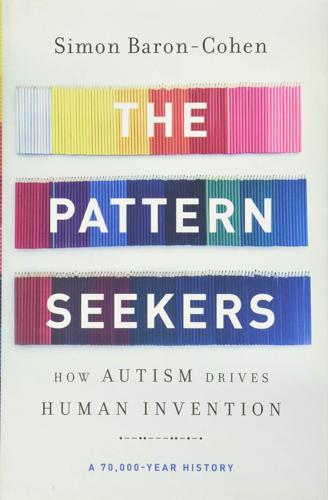
The Pattern Seekers: How Autism Drives Human Invention
by
Simon Baron-Cohen
Published 14 Aug 2020
Our thanks should go to people like Janus Fris, the Danish co-inventor of Skype, who had no formal education and dropped out of high school. And night and day, in molecular biology laboratories, hyper-systemizers are working tirelessly to invent a new vaccine that will outsmart the invisible killer that is COVID-19, the new coronavirus. And as we look beyond COVID-19 at the other major challenge our planet faces—climate destruction—we look to hyper-systemizers to invent new solutions. The great physicist Freeman Dyson wrote a book called Maker of Patterns to describe his life exploring patterns in mathematics and physics. This book joins the dots between pattern-seeking in our world’s greatest scientists and inventors, and pattern-seeking in autistic people.

Elon Musk
by
Walter Isaacson
Published 11 Sep 2023
“I’m just trying to get people to Mars, and enable freedom of information with Starlink, accelerate sustainable technology with Tesla, and free people from the drudgery of driving,” he said. “It’s certainly possible that the road to hell to some degree is paved with good intentions—but the road to hell is mostly paved with bad intentions.” 69 Politics 2020–2022 “Take the red pill” “The coronavirus panic is dumb,” Musk tweeted. It was March 6, 2020, and COVID had just shut down his new factory in Shanghai and begun to spread in the U.S. That was decimating Tesla’s stock price, but it was not just the financial hit that upset Musk. The government-imposed mandates, in China and then California, inflamed his anti-authority streak.
…
The factory would remain open. He wrote in a company-wide email, “I’d like to be super clear that if you feel the slightest bit ill or even uncomfortable, please do not feel obligated to come to work,” but then he added, “I will personally be at work. My frank opinion remains that the harm from the coronavirus panic far exceeds that of the virus itself.” After county officials threatened to force the plant to shut down, Musk filed suit against the orders. “If somebody wants to stay in their house, that’s great,” Musk said. “But to say that they cannot leave their house, and they will be arrested if they do, this is fascist.

Ask Your Developer: How to Harness the Power of Software Developers and Win in the 21st Century
by
Jeff Lawson
Published 12 Jan 2021
Die means recruiting great developers, but more important, putting faith in those developers, turning to them not just for code but for creative problem-solving. In other words, Ask Your Developer. As I was finishing the book something happened that made this transformation far more urgent. The coronavirus pandemic that struck in early 2020 forced the world to reconfigure itself in real time as cities shut down, children learned at home, companies sent workers home, hospitals were overwhelmed with patients, and more. Suddenly digital transformation projects slated to take place over several years were happening in days or weeks.

Built on a Lie: The Rise and Fall of Neil Woodford and the Fate of Middle England’s Money
by
Owen Walker
Published 4 Mar 2021
He was lucky in the past, but not this time. And we’re the ones that are suffering.’ What has been especially galling for Snelson and Hiscock is the daily reminder of the fortune Woodford amassed while mismanaging their money. Just a few streets from Snelson’s B&B in Salcombe, which she struggled to keep going through the coronavirus lockdown, is the luxury six-bedroom holiday home Woodford bought for £6.4 million in cash in 2017. Since then Woodford has added an expensive hot tub and bought a huge yacht in the bay. ‘The worst thing is living here and knowing he has that multi-million-pound house just minutes away. I pass it every day,’ Snelson adds.
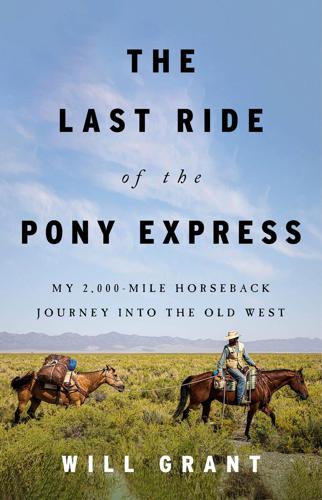
The Last Ride of the Pony Express: My 2,000-Mile Horseback Journey Into the Old West
by
Will Grant
Published 14 Oct 2023
The hard muscling of the Pony Express Trail faded from their shoulders and their hindquarters. Winter rolled into northern New Mexico, and hardly a day passed that I didn’t look up at the snowy mountains around town and be glad I wasn’t camped there. Spring brought strong westerlies that blew juniper pollen in yellow clouds, and along with the wind came the coronavirus pandemic and global lockdown. Claire pulled hard shifts in the hospital emergency room while I sat at my desk all day. I hardly left the house or the corrals. In the evenings, I’d go to the horses. I seldom rode either Chicken Fry or Badger, though whenever coyotes needed chasing out of the barnyard, Badger was the horse for the job—still the best at fast work and tight handling.

Butler to the World: How Britain Became the Servant of Tycoons, Tax Dodgers, Kleptocrats and Criminals
by
Oliver Bullough
Published 10 Mar 2022
It would have been the final act in the history of this overlooked, determinedly narky and generous group of ex-servicemen, who had all served in British bases along the Suez Canal. Sadly, with two weeks to go, and the rapid spread of COVID-19 making total lockdown inevitable, the membership secretary was forced to contact the handful of surviving veterans (and me), and inform them the event had been postponed indefinitely owing to the risk to the attendees posed by the coronavirus. As far as I could tell, no one outside the SVA noticed, which, considering how little attention anyone in power had paid to the group before, was entirely appropriate. The general indifference to the organisation’s end is curious considering how important these troops had once been to the United Kingdom, and for how long.
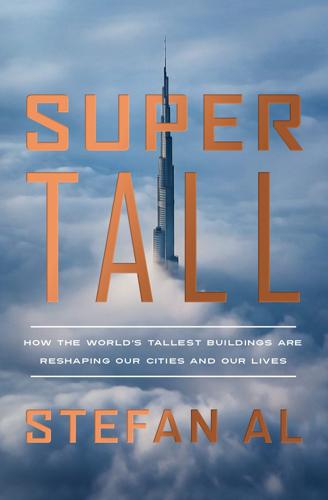
Supertall: How the World's Tallest Buildings Are Reshaping Our Cities and Our Lives
by
Stefan Al
Published 11 Apr 2022
Building,” Associated Press, November 12, 2013. 42.Stefanos Chen, “The Downside to Life in a Supertall Tower: Leaks, Creaks, Breaks,” New York Times, February 3, 2021. 43.Henry Petroski, “Super-Tall and Super-Slender Structures: Skyscrapers with Smaller Footprints Require Countermeasures to Wind and Sway,” American Scientist 107 (2019): 342–45. 44.Andrew Lawrence, “The Skyscraper Index: Faulty Towers,” Property Report, Dresdner Kleinwort Benson Research (January 15, 1999). 45.Emily Badger, “Density Is Normally Good for Us. That Will Be True after Coronavirus, Too,” New York Times, March 24, 2020. 46.Lewis Mumford, The City in History: Its Origins, Its Transformations, and Its Prospects (Boston: Houghton Mifflin Harcourt, 1961), 34. 47.Alan Berube, MetroNation: How US Metropolitan Areas Fuel American Prosperity, Metropolitan Policy Program at Brookings, 2007. 48.Enrico Berkes and Ruben Gaetani, “The Geography of Unconventional Innovation,” Rotman School of Management Working Paper 3423143 (2019). 49.Luís Bettencourt, José Lobo, Dirk Helbing, Christian Kühnert, and Geoffrey West, “Growth, Innovation, Scaling, and the Pace of Life in Cities,” Proceedings of the National Academy of Sciences 104, no. 17 (2007): 7301–6.
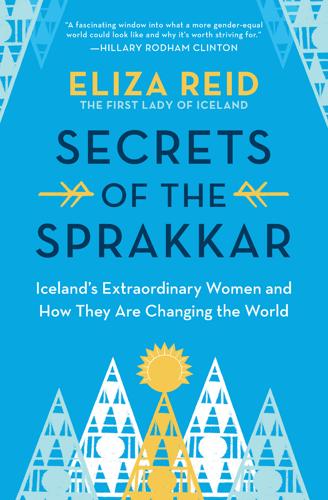
Secrets of the Sprakkar
by
Eliza Reid
Published 15 Jul 2021
They need to be in the room, because otherwise we’ll do something that won’t include them, and you’ll have the same dynamic as always.” My conversation with Ugla Stefanía took place on a sunny summer’s day, the year that locals took over the country for themselves as travel slowed to a masked trickle in the global coronavirus pandemic. Ugla and I donned rainbow masks provided by the Queer Association to move from place to place. There was a bittersweet feeling around having plenty of space to ourselves in some of the capital’s most interesting locations, knowing the paucity of visitors meant economic agony for many.

There's Got to Be a Better Way
by
Nelson P. Repenning
and
Donald C. Kieffer
Published 26 Aug 2025
Renegar, Nelson Repenning, Jorge Mastellari, “Refinery Maintenance: Achieving a Zen State by Leveraging ‘Lean Thinking’” (white paper, ARGO Consulting, March 2019), www.argoconsulting.com/wp-content/uploads/2019/04/Argo-FHR-Pull-White-Paper-1.pdf. Chapter 8. The Power of Leading with Principles: Static Structure Will Take You Only So Far 1. Carey Goldberg, “How a Science Giant Pivoted to Coronavirus Testing and Helped New England Colleges Salvage On-Campus Fall,” WBUR, October 2, 2020, www.wbur.org/news/2020/10/02/broad-covid-testing-cambridge-school-reopenings. 2. “2020 Bostonians of the Year,” Boston Globe, December 10, 2020. 3. Goldberg, “Science Giant.”
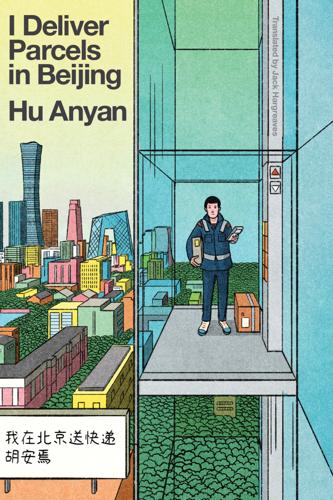
I Deliver Parcels in Beijing
by
Hu Anyan
Because the pursuit is more precious than the attainment, and this holds true for every person and for the world as a whole—like our ideals and our convictions, it is the fulcrum of our lives, not their content. * * * I returned to Beijing from the south after the Spring Festival in 2020. The sudden eruption of the Coronavirus epidemic almost emptied the streets of people for the longest time and left many of the stores I used to frequent shuttered or even closed for good. The feeling was as if the Spring Festival was dragging on, preventing people from resuming their normal lives. Some of my old colleagues had managed to find new jobs, and others were staying with their families, in their hometowns, waiting to see how things would unfold.
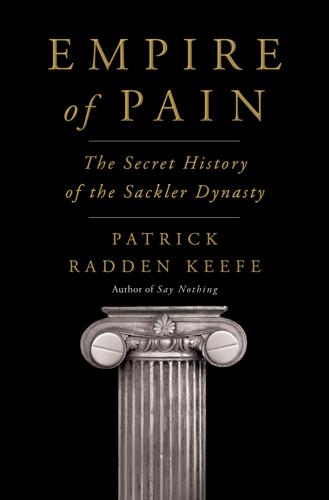
Empire of Pain: The Secret History of the Sackler Dynasty
by
Patrick Radden Keefe
Published 12 Apr 2021
But Caroline Maloney, the New York congresswoman who chaired the committee, sent a letter on December 8 indicating that if the family did not voluntarily accept her invitation, she would be forced to subpoena them. Nine days later, the hearing was convened. The proceedings would be held remotely, due to the Coronavirus pandemic, and that morning, David Sackler, dressed in a dark suit and sitting in a featureless fluorescent space that looked like a borrowed office, raised his right hand and was sworn in. When the family realized that some of them would have no choice but to appear, they had negotiated, offering David and Kathe, along with Craig Landau from Purdue.
…
“deep sadness about the opioid crisis”: “The Role of Purdue Pharma and the Sackler Family in the Opioid Epidemic,” Hearing before the House Oversight And Reform Committee of the U.S. House of Representatives, Dec. 17, 2020. intensified the opioid crisis: “The Opioid Crisis, Already Serious, Has Intensified During Coronavirus Pandemic,” Wall Street Journal, Sept. 8, 2020; “ ‘The Drug Became His Friend’: Pandemic Drives Hike in Opioid Deaths,” New York Times, Sept. 29, 2020. sold their East Seventy-Fifth Street town house: “Israel Englander Buys Sackler Townhouse for $38M,” Real Deal, Jan. 7, 2020. In a filing: Attachment to Consolidated Proof of Claim of States, Territories, and Other Governmental Entities, Purdue Pharma LP, et al, Debtors, United States Bankruptcy Court, Southern District of New York, Case No. 19-23649 (RDD), July 30, 2020.

Data Action: Using Data for Public Good
by
Sarah Williams
Published 14 Sep 2020
Private companies, including telecoms, Facebook, and Google, for example, can infer population data by analyzing their data exhaust, but they do not share it with people who could use it to improve society. For private companies to analyze data for such a purpose can be costly, and it is usually only done when there is a mutual benefit; for example, a widespread public health concern. We saw this happen in 2020 as the novel coronavirus pandemic became a global emergency. There are many cases in which NGOs and multilaterals obtain data from private and typically foreign companies and conglomerates to estimate basic social services because governments do not have the information. Data Is a Public Infrastructure Now let's look at the same idea in American and European contexts, where private companies currently hold and are set to hold exponentially more data about cities, their populations, and their communities.
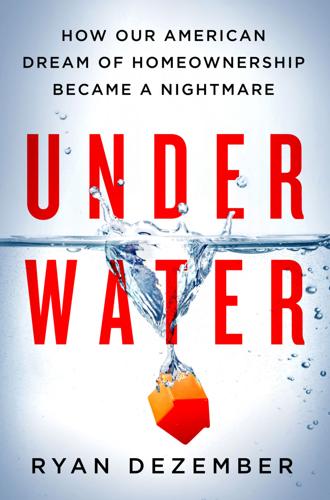
Underwater: How Our American Dream of Homeownership Became a Nightmare
by
Ryan Dezember
Published 13 Jul 2020
“Exactly how we would have done it,” he said. Between their savings and some early inheritance, they mustered a $95,000 downpayment. They agreed to pay $433,000 and gave $5,000 in earnest money to the seller. They were to pay another $5,000 in ten days, after an inspection. Before they got the keys, though, the coronavirus pandemic shut down much of the U.S. economy. Worried for his job as a church-affiliated marriage counselor, they decided not to make the second earnest payment. Days later he was furloughed. Their lender bailed. The seller let the McLaughlins out of the deal for the $5,000 they’d already handed over and another $2,000 to settle the second, skipped payment.
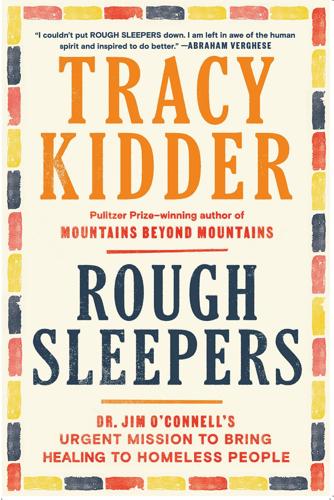
Rough Sleepers: Dr. Jim O'Connell's Urgent Mission to Bring Healing to Homeless People
by
Tracy Kidder
Published 17 Jan 2023
During the early months of Covid, Los Angeles moved a number of homeless people into motels, a temporary partial solution that has become permanent: Weber, C. “California Spending Billions to House Homeless in Hotels.” Associated Press, August 21, 2021. apnews.com/article/lifestyle-business-health-california-coronavirus-pandemic-835c2091c63c199d397346a497e7ae49. Confession Sources on Father Alan E. Caparella: “Assignment Record—Rev. Alan E. Caparella, o.f.m.” Waltham, Mass.: Bishop-Accountability.org. October 2, 2013. bishopaccountability.org/assign/Caparella_Alan_E_ofm.htm. “Franciscan Friars—OFM—185 Accused in This Religious Order.”

Nomad Century: How Climate Migration Will Reshape Our World
by
Gaia Vince
Published 22 Aug 2022
After each devastating fire comes an erosion of the community. Some places are simply not viable, the fire risk too great. Small communities are erased from the map, plans for expansion denied. The places where it is safe for people to live are shrinking in Australia. If it weren’t for the global coronavirus pandemic, 2020 would have been the year we woke up – shockingly – to the Pyrocene, a planetary age of fire.1 Millions of Australians spent the beginning of the year under a filthy pall of smoke, or confronting bushfires of a ferocity and scale never previously imagined. With hundreds of fire fronts burning, and record heat bearing down, more than 100,000 people were advised to leave high-risk zones in the nation’s biggest ever evacuation.
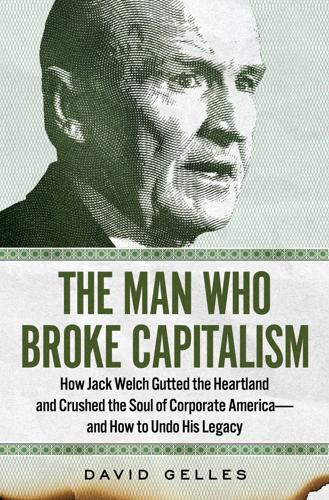
The Man Who Broke Capitalism: How Jack Welch Gutted the Heartland and Crushed the Soul of Corporate America—and How to Undo His Legacy
by
David Gelles
Published 30 May 2022
During this same time: Douglas MacMillan, Peter Whoriskey and Jonathan O’Connell, graphics by Chris Alcantara, “America’s biggest companies are flourishing during the pandemic and putting thousands of people out of work,” Washington Post, December 16, 2020, https://www.washingtonpost.com/graphics/2020/business/50-biggest-companies-coronavirus-layoffs/. “At Norwegian Cruise Line”: David Gelles, “C.E.O. Pay Remains Stratospheric, Even at Companies Battered by Pandemic,” New York Times, April 24, 2021, https://www.nytimes.com/2021/04/24/business/ceos-pandemic-compensation.html. “One study showed”: Jerry Useem, “Beware of Corporate Promises,” August 6, 2020, https://www.theatlantic.com/ideas/archive/2020/08/companies-stand-solidarity-are-licensing-themselves-discriminate/614947/.
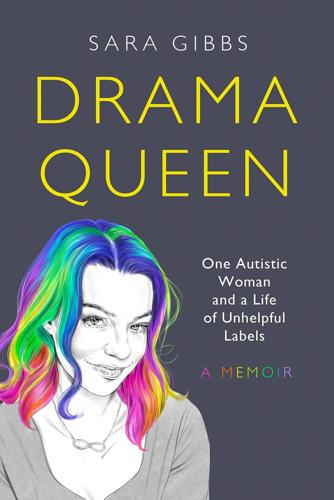
Drama Queen: One Autistic Woman and a Life of Unhelpful Labels
by
Sara Gibbs
Published 23 Jun 2021
I never take him anywhere. When I go on holiday, I leave him in a fireproof safe. If I ever got burgled, I can only imagine the thieves’ disappointment when they smash the thing open and the loot is just a tattered old pig with three decades’ worth of inbuilt diseases. I’m not saying Piggy is responsible for the coronavirus outbreak, but I can’t say the same for swine flu. If my attachment to inanimate objects seems unhealthy, it’s not a patch on how I feel about people. During my early childhood, I would walk past strangers and suddenly feel a pang of agony that I would never see them again. That was the lowest bar.
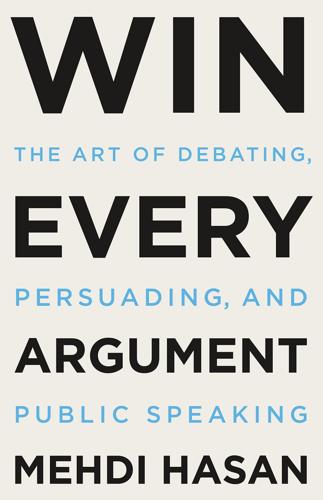
Win Every Argument: The Art of Debating, Persuading, and Public Speaking
by
Mehdi Hasan
Published 27 Feb 2023
“that’s what we want you to vote for”: Intelligence Squared, “Debate: The West Should Cut Ties with Saudi Arabia.” “religious establishment in China”: Al Jazeera English, “What Is the Human Cost to China’s Economic Miracle?|Head to Head,” YouTube video, 49:12, March 15, 2019, https://www.youtube.com/watch?v=yZs4PqKlph0. “And today, he tweeted”: “Trump on Coronavirus: ‘We Closed It Down, We Stopped It’; Mulvaney Out as Trump’s Acting Chief of Staff; Former Senator Al Franken to 2020 Democrats: Focus on Trump. Aired 9–10p ET,” CNN, March 6, 2020, accessed May 2, 2022, http://edition.cnn.com/TRANSCRIPTS/2003/06/CPT.01.html. “Resisting a more powerful opponent”: Kanō Jigorō, Mind over Muscle: Writings from the Founder of Judo, trans.
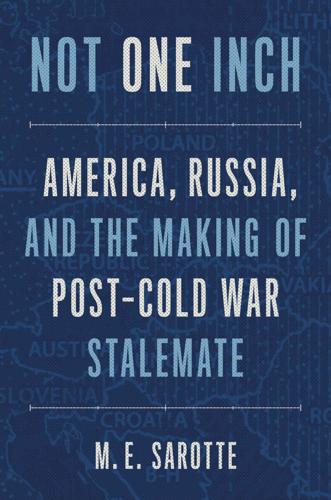
Not One Inch: America, Russia, and the Making of Post-Cold War Stalemate
by
M. E. Sarotte
Published 29 Nov 2021
Kozyrev later recalled that he preferred a loose confederation, preserving the union in some form; see Kozyrev, Firebird, 39. 175. “The Secretary’s Meeting with Russian Federation President Yeltsin, St. Catherine’s Hall, December 16, 1991”; on Shaposhnikov, see “Last Soviet Defense Minister Dies from Coronavirus,” Moscow Times, December 9, 2020, https://www.themoscowtimes.com/2020/12/09/last-soviet-defense-minister-dies-from-coronavirus-reports-a72286. On the mid-December letter to Brussels, see Thomas Friedman, “Yeltsin Says Russia Seeks to Join NATO,” New York Times, December 21, 1991; Trenin, Post-Imperium, 102. 176. “The Secretary’s Meeting with Russian Federation President Yeltsin, St.
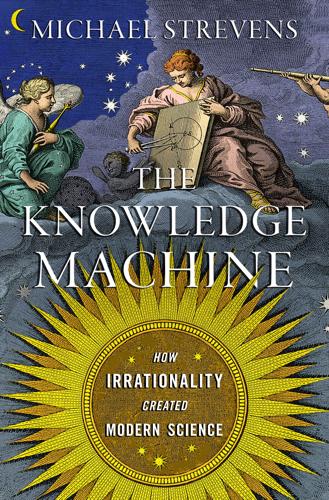
The Knowledge Machine: How Irrationality Created Modern Science
by
Michael Strevens
Published 12 Oct 2020
Exotic diseases—Ebola, AIDS, SARS, MERS, Zika, COVID-19, which is rampaging as I write—are vaulting from animals to humans every generation. Technology is decreasing in size and growing in power like an ever more tightly sprung trap. We’ve pampered and praised the knowledge machine, given it the autonomy it has needed to grow. Now we desperately need its advice. Figure 14.2. A cell heavily infected by SARS-CoV-2, the coronavirus that causes COVID-19 With enough evidence in—with Baconian convergence achieved or at least well on the way—there will exist a consensus among scientists that is functionally equivalent to science’s speaking with a single voice. But at the moment when some critical concern assumes maximum urgency, the evidence is often patchy and provisional: different scientists, bringing different plausibility rankings to bear on the same question, will express diverse opinions.
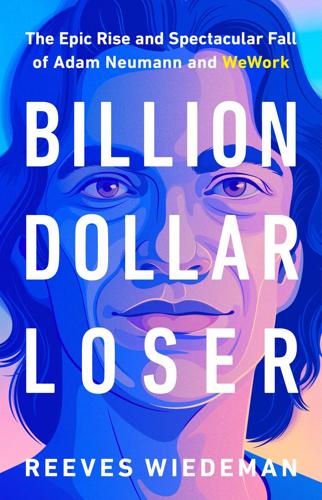
Billion Dollar Loser: The Epic Rise and Spectacular Fall of Adam Neumann and WeWork
by
Reeves Wiedeman
Published 19 Oct 2020
Masa’s second Vision Fund was teetering, but he asked for patience: on a conference call with investors, Masa said that he may be underappreciated in his time, much like Jesus Christ. During his presentation, Masa came to a slide showing several unicorns running up a hill. Halfway to the top, several of them fell into an unforeseen ditch: the Valley of Coronavirus. The good news was that he remained hopeful that some of his Vision Fund bets were well positioned for the future, and when he clicked to the next slide, it showed one of the unicorns sprouting wings. WeWork did not seem likely to take flight. SoftBank was marking down its investment to a new low—$2.9 billion, or just 6 percent of its valuation a year earlier.
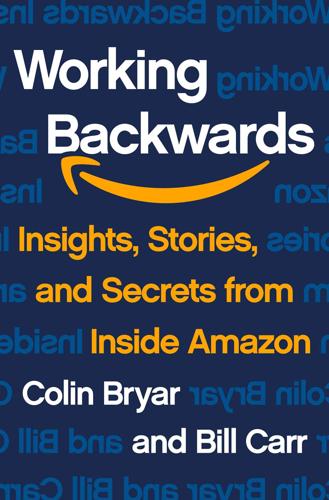
Working Backwards: Insights, Stories, and Secrets From Inside Amazon
by
Colin Bryar
and
Bill Carr
Published 9 Feb 2021
Classification: LCC HF5548.32 .B795 2021 | DDC 381/.14206573—dc23 LC record available at https://lccn.loc.gov/2020037477 eISBN 9781250267603 Our ebooks may be purchased in bulk for promotional, educational, or business use. Please contact the Macmillan Corporate and Premium Sales Department at 1-800-221-7945, extension 5442, or by email at MacmillanSpecialMarkets@macmillan.com. First Edition: 2021 * In his shareholder letter of April 16, 2020, shortly after the outbreak of the coronavirus pandemic, Jeff Bezos did address Amazon’s impact on multiple fronts. He described the company’s efforts to answer the increased demand on Amazon’s services by people in lockdown. He described safety measures at fulfillment centers, an accelerated Amazon program to ramp up testing, and the partnership of Amazon Web Services with the WHO and other health organizations.
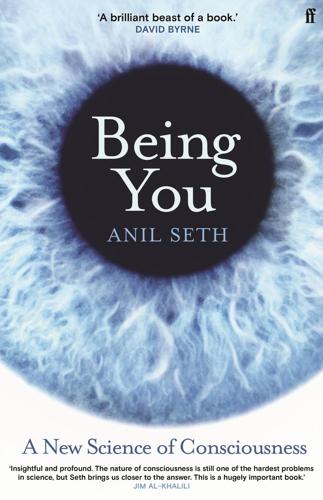
Being You: A New Science of Consciousness
by
Anil Seth
Published 29 Aug 2021
This is the so-called ‘Singularity’ hypothesis, popularised by the futurist Ray Kurzweil and motivated by the extraordinary growth in raw computational resources over the last few decades. Where are we on this exponential curve? The problem with exponential curves – as many of us learned during the recent coronavirus pandemic – is that wherever you stand on them, what’s ahead looks impossibly steep and what’s behind looks irrelevantly flat. The local view gives no clue to where you are. Then there are our Promethean fears that our creations will turn on us in some way or another – fears which have been recognised, repackaged, and sold back to us by any number of science fiction movies and books.
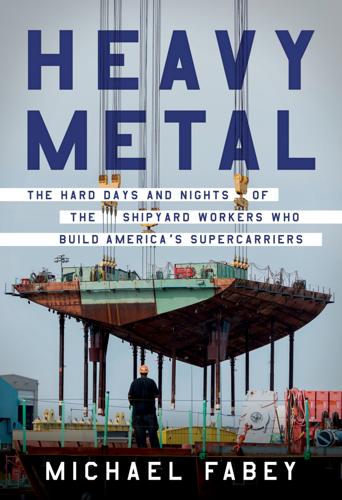
Heavy Metal: The Hard Days and Nights of the Shipyard Workers Who Build America's Supercarriers
by
Michael Fabey
Published 13 Jun 2022
“This is why we urge you to practice social distancing and wear a mask whenever you are in public.” She added, “Our cases will very likely continue to grow. We are in the process now of refining our long-term operations plan to address how we safely operate with no foreseeable end to Covid-19.” In the midst of this, Virginia became the first state to issue work safety standards for coronavirus—not the best environment for building a new aircraft carrier. For some, like supervisor Don Doverspike, tougher work rules created greater headaches. After the ship launch, Doverspike began to coordinate the building of the ventilation system—no small task for a small mobile city. Covid-19, though, forced him to work from his home in nearby Williamsburg.

Inheritance
by
Leo Hollis
John Mackay’s prospective map of the layout of the new development, 1723 Such an economic bust had a huge impact on all other forms of speculation. It is calculated that there has not been such a dramatic fall in economic activity in the three hundred years since, until the 2020 ‘lockdown’ as a consequence of the coronavirus. Work on Cavendish Square screeched to a halt. It was in the midst of the South Sea speculation that work eventually began on Grosvenor Square. The layout of the whole scheme was devised by Barlow. The surveyor created a large map with the new streetscape, and John Mackay set this out into a compelling projection in 1723.
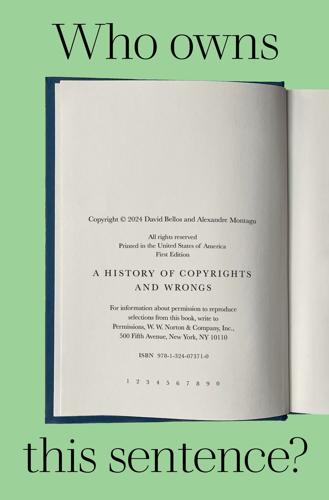
Who Owns This Sentence?: A History of Copyrights and Wrongs
by
David Bellos
and
Alexandre Montagu
Published 23 Jan 2024
Fox, Monopolies and Patents, Toronto, University of Toronto Press, 1947, p. 71. CHAPTER 4 AUTHORSHIP AND ANSWERABILITY 24Michael Warren and Jamie Gangel reporting for C.N.N. News, October 28, 2020, quoting a remark made on April 18 of that year. Accessed July 10, 2012 at https://www.cnn.com/2020/10/28/politics/woodward-kushner-coronavirus-doctors/index.html 25Michel Foucault, “What Is an Author?”, trans. Josué Harari, Société Française de Philosophie, 1969. 26Daniel Defoe, An Essay on the Regulation of the Press (1704), p. 21. Spelling modernised. 27https://www.facebook.com/terms.php, consulted on March 7, 2022. CHAPTER 6 WHERE DOES PROPERTY COME FROM?
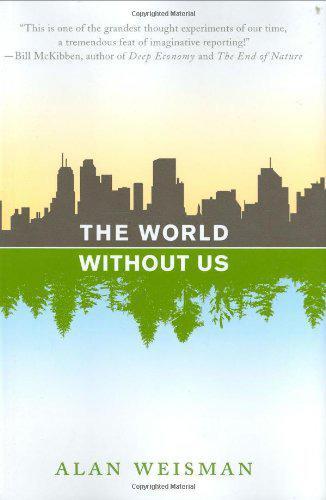
The World Without Us
by
Alan Weisman
Published 5 Aug 2008
Centers for Disease Control, is paid to worry that something could take out many millions of us. Ksiazek is a former army veterinary microbiologist and a virologist, and his consultations range from threats of biological attack to hazards that unexpectedly jump from other species, such as the SARS coronavirus he helped to characterize. Grim as those scenarios are, especially in an age when so many of us live in oversized Petri dishes called cities, where microbes congregate and flourish, he doesn’t see an infectious agent arising that could wipe out the entire species. “It would be unparalleled. We work with the most virulent, and even with those there are survivors.”
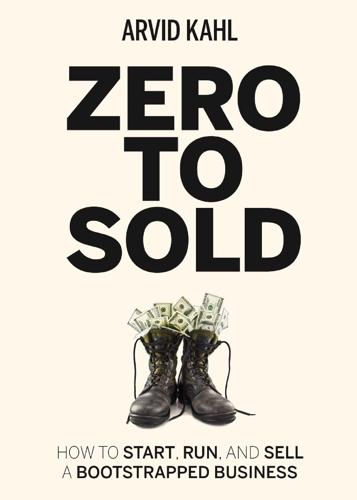
Zero to Sold: How to Start, Run, and Sell a Bootstrapped Business
by
Arvid Kahl
Published 24 Jun 2020
Referral systems are meant to support your marketing with an incentivized method of getting new users to try out your product. Make sure your product is shareable, your rewards incentivize your customers, and you provide plenty of information on how they can communicate the benefits to prospective customers. Surviving a Recession as a Bootstrapped Business Just a few weeks after the beginning of the Coronavirus outbreak in early 2020, the first SaaS businesses were reporting cancellations. The bootstrapped SaaS world may not have been affected by the pandemic as much as other industries, but we saw second-order effects appearing quickly. For example, you may not be affected by a temporary closure of bars and restaurants directly.
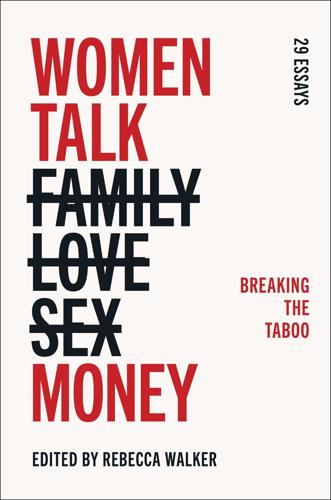
Women Talk Money: Breaking the Taboo
by
Rebecca Walker
Published 15 Mar 2022
I’m better enough that I am now completely off of asthma medications—not just the new ones I started to take when I spiraled in 2017, but all of them, every single one. I’m better enough to feel grateful for how much better I’ve become; to know how lucky I was that my health improved before the coronavirus struck; to think of the events of 2017 to 2018 as part of my past. I’m better enough to feel a sense of responsibility and anger on behalf of the many, many people who’ve been made sick, as I was, by environmental poisons—but who do not have the options I did; as well as the people who’ve put themselves in harm’s way this last year, in order to take care of the rest of us.

Drunk: How We Sipped, Danced, and Stumbled Our Way to Civilization
by
Edward Slingerland
Published 31 May 2021
This has to be taken into account when considering what is lost and what is gained in a world where human interaction more and more takes place only through the medium of our computer screens. A newspaper editorial39 published in the early months of 2020, as the Covid-19 pandemic caused governments to begin locking down multiple sectors of public life, observed that the post-coronavirus economy will be a much smaller, less productive one. “In a world where the office is open but the pub is not,” it noted, “qualitative differences in the way life feels will be at least as significant as the drop in output.” This has certainly been true, but it is equally important to note that the absence of pubs has had a direct effect on both the qualitative feeling of life and actual productivity.

Pure Invention: How Japan's Pop Culture Conquered the World
by
Matt Alt
Published 14 Apr 2020
Western toy industry sells increasing quantities of its products to adults: Harry Pettit, “The Rise of the Kidults: Growth in the Toy Market Is Being Driven by Millennials Playing with Children’s Games,” Daily Mail, April 11, 2017, https://www.dailymail.co.uk/sciencetech/article-4400708/1-11-toys-sold-bought-adult-themselves.html. A surge in demand at streaming services: Jacob Kastrenakes, “Sony will slow down PlayStation downloads in Europe, but says multiplayer will remain ‘robust,’ ” The Verge, March 24, 2020, https://www.theverge.com/2020/3/24/21192370/playstation-coronavirus-download-speeds-slowed-europe-multiplayer. It sold 11.77 million copies: Liam Doolan, "Animal Crossing: New Horizons Has Already Exceeded Nintendo's Lifetime Sales Predictions," Nintendo Life, May 10, 2020. http://www.nintendolife.com/news/2020/05/animal_crossing_new_horizons_has_already_exceeded_nintendos_lifetime_sales_predictions.
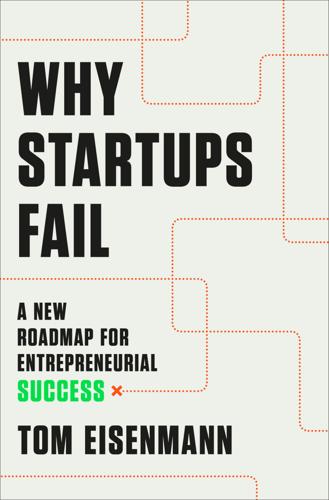
Why Startups Fail: A New Roadmap for Entrepreneurial Success
by
Tom Eisenmann
Published 29 Mar 2021
Measuring Performance My measure of performance was the change in the value of equity raised in a startup’s first major funding round: Did the value of this equity increase, stay roughly the same, or decrease—at the extreme, going to zero? Specifically, the founder/CEOs of startups still operating were asked, “As of December 31, 2019, before news of the coronavirus pandemic became widespread, how much would someone have paid for your startup’s first round equity/convertible notes?” The multiple-choice options were 1) >150 percent of the amount originally invested; 2) 50 percent to 150 percent; or 3) <50 percent. Respondents were also told, “We know that first round equity and convertible notes cannot normally be sold—but imagine that they could.

The Bond King: How One Man Made a Market, Built an Empire, and Lost It All
by
Mary Childs
Published 15 Mar 2022
In September 2020, he issued an Investment Outlook by press release, titled TATTOOED, in which he called his youngest son, his only child with Sue, a disappointment. “Guess there is always one tattooed (black) sheep in every family,” he wrote. “Nick is mine.” Then he pivoted to how the global economy had been “tattooed” by coronavirus. He was also in a fight closer to his literal home—or, rather, the beautiful home he’d bought for his then–“life partner,” Amy Schwartz. He’d met her through Bill Powers, of all people, in 2017; she was a former tennis pro in her late forties then. They loved to golf together. He’d gifted her a $1 million Dale Chihuly sculpture, which they’d installed in the yard of the beachfront mansion.

Invention: A Life
by
James Dyson
Published 6 Sep 2021
The Corrale uses battery power, so users are free to style their hair without needing to be near a power socket, convenient at home but also in the car, at work, or perhaps glamping. Although batteries do add weight and cost, there is not the tugging weight of the power cord. I was about to launch the Dyson Corrale straightener in New York in early March 2020. The venue was ready but then the coronavirus pandemic struck. Since I was in Paris at the time, the next day I did an online launch at our new Paris store facing the exuberant Paris Opéra. A camera followed me inside the shop while I explained how the Dyson Corrale straightener worked by gathering the tress and providing even tension, and how it worked using a much lower temperature than existing hair straighteners.
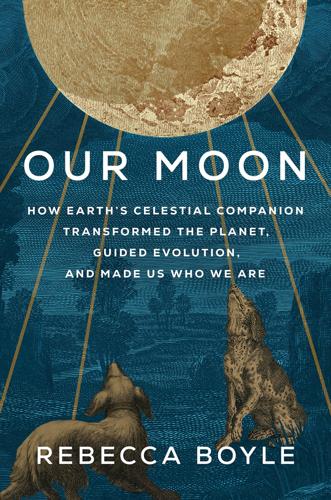
Our Moon: How Earth's Celestial Companion Transformed the Planet, Guided Evolution, and Made Us Who We Are
by
Rebecca Boyle
Published 16 Jan 2024
The Navajo Nation president at the time, Albert Hale, called the act “sacrilegious, a gross insensitivity to the beliefs of many Native Americans, to place human remains on the Moon.”4 I wanted to talk to the Dine people, who most white European descendants call the Navajo, about their vision of the Moon. And then the coronavirus pandemic shut everything down. Navajo lands were closed to outsiders as the virus rampaged through the population. As an alternative, I planned a road trip to the Bighorn Medicine Wheel, an ancient stone circle in northwestern Wyoming, built between three hundred and eight hundred years ago by the Plains Indians like the Cheyenne and Pawnee.

The Measure of Progress: Counting What Really Matters
by
Diane Coyle
Published 15 Apr 2025
Zenodo. https://doi.org/10.5281 /ZENODO.3831673 International Transport Forum. (2019). What is the value of saving travel time? ITF. https://www .itf-oecd.org/sites/default/files/docs/value-saving-travel-time.pdf Jamison, M. A., and Wang, P. (2021). Valuation of digital goods during the coronavirus outbreak in the United States. Telecommunications Policy, 45(5), 102–126. Jennings, F. (2023). What went so wrong in economics (MPRA Paper 117699). University Library of Munich, Germany. Jiang, B. (2023, July 13). P eople’s Daily unit issues first “data certificates” in China to prove data ownership and rights.

Boom: Bubbles and the End of Stagnation
by
Byrne Hobart
and
Tobias Huber
Published 29 Oct 2024
Postman, Amusing Ourselves to Death: Public Discourse in the Age of Show Business (London: Penguin, 2006). 89 Debord, Society of the Spectacle, 9–10. 90 Jean-François Lyotard, Libidinal Economy (Bloomington: Indiana University Press, 1993). 91 It’s important to note that prevailing orthodoxy is usually approximately correct. However, increased accuracy is impossible when the band of accepted debate is too narrow. Podcasts are not a great source of health care information relative to the CDC on average, but the niche podcasts obsessing over the novel coronavirus in January 2020 turned out to be much better sources than the establishment media outlets they challenged. The big question to ask in open debate is where the relative risks lie. 92 In science, this drive toward conformity has expressed itself, for example, in scientific self-censorship to avoid having politically incorrect research findings published.
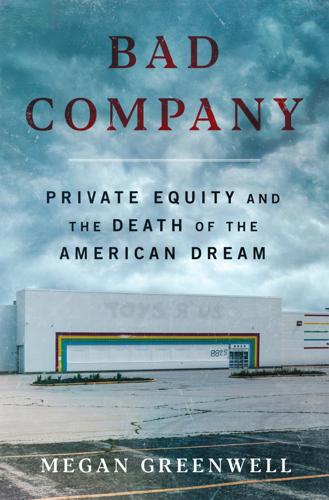
Bad Company
by
Megan Greenwell
Published 18 Apr 2025
After Princeton University’s Eviction Lab: Emily Badger and Quoctrung Bui, “In 83 Million Eviction Records, a Sweeping and Intimate New Look at Housing in America,” New York Times, April 7, 2018, https://www.nytimes.com/interactive/2018/04/07/upshot/millions-of-eviction-records-a-sweeping-new-look-at-housing-in-america.html. the state spent: Ben Finley, “Shame Put Virginia on Course to Stronger Tenant Protections,” Associated Press, August 22, 2021, https://apnews.com/article/health-coronavirus-pandemic-virginia-b22cd7738d74e2651674911f749c1127. Republican governor Glenn Youngkin: Dean Mirshahi, “After Bipartisan Vote, Tenant Protection Bill Fails in Virginia House Panel,” WAVY.com, January 26, 2023, https://www.wavy.com/news/politics/virginia-politics/after-bipartisan-vote-tenant-protection-bill-fails-in-virginia-house-panel/.
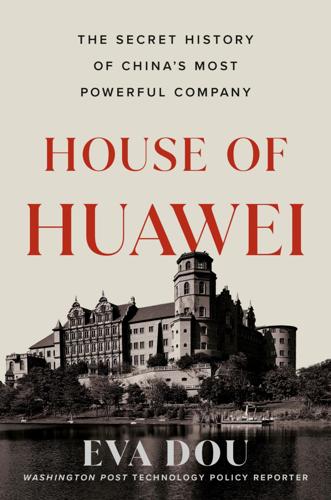
House of Huawei: The Secret History of China's Most Powerful Company
by
Eva Dou
Published 14 Jan 2025
Now, he’s kind of hanging out in a sweater, you know, having lattes by the lake.” As for Meng, she tried to make up for lost time. China had changed while she was gone. Pop-up COVID test stands now dotted the Shenzhen sidewalks, with residents required to take a test every few days to prevent the spread of the coronavirus. At convenience stores, customers could now pay by scanning their faces. And the rumors about Xi’s audacious ambitions turned out to be true: in March 2023, Xi was appointed to an unprecedented third presidential term by a unanimous vote of the rubber-stamp legislature, allowing him time to continue pursuing his dream of transforming China from a developing nation into a world leader.
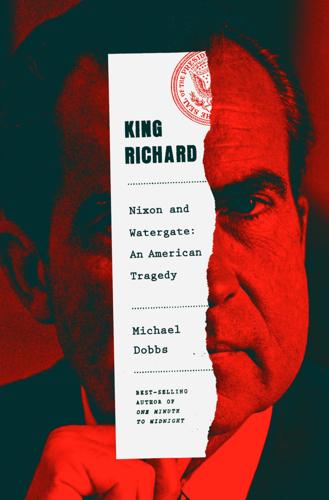
King Richard: Nixon and Watergate--An American Tragedy
by
Michael Dobbs
Published 24 May 2021
I would like to thank all the archivists at the Nixon Library, but particularly Ryan Pettigrew, who had the foresight to assemble a huge electronic database of the Nixon photo archive several years ago. This database proved invaluable when the library, along with other branches of the National Archives, was compelled to close its doors to researchers during the coronavirus pandemic. Without this electronic treasure trove and Ryan’s assistance, I would been unable to obtain many of the photographs that appear in this book in time for publication. My interest in Nixon and Watergate was sparked in part by my work for The Washington Post over more than two decades, as both a foreign correspondent and a member of the investigative staff.

Shielded: How the Police Became Untouchable
by
Joanna Schwartz
Published 14 Feb 2023
In June 2020, in the wake of the murder of George Floyd, Gallup announced that public confidence in the police had dipped below 50 percent for the first time in several decades, prompting a flurry of headlines about changing perspectives about law enforcement. But trust in the police had only dipped to 48 percent. And it had only moved from the third to the fourth most trusted institution; in the midst of the coronavirus pandemic, the medical system had taken third place. Of course, not all people trust the police, and the demographics of differences of opinion on this point are noteworthy. Gallup’s 2020 poll found that 82 percent of Republicans had confidence in the police, as compared with 28 percent of Democrats.

Why Machines Learn: The Elegant Math Behind Modern AI
by
Anil Ananthaswamy
Published 15 Jul 2024
Putting aside their bombast and snide remarks, we’ll focus on the precision and elegance of Minsky and Papert’s convergence proof. But first, we need to revisit Rosenblatt’s algorithm with more formal notations in hand. Let’s take a potentially real problem. Assuming we have learned from our disastrous experience with the coronavirus pandemic, let’s hope we can bring some smarts to how we react during the first months of the next pandemic involving a new infectious respiratory pathogen. (Fingers crossed it doesn’t happen anytime soon.) In this more enlightened scenario, hospitals worldwide diligently collect data about the patients they see early on in the pandemic.
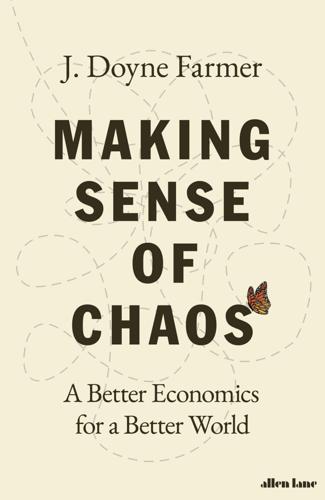
Making Sense of Chaos: A Better Economics for a Better World
by
J. Doyne Farmer
Published 24 Apr 2024
Davis, Marco Ajelli, Corrado Gioannini, Maria Litvinova, Stefano Merler, Ana Pastore y Piontti, Kunpeng Mu, Luca Rossi, Kaiyuan Sun, Cécile Viboud, Xinyue Xiong, Hongjie Yu, M Elizabeth Halloran, Ira M Longini Jr and Alessandro Vespignani. 2020. ‘The Effect of Travel Restrictions on the Spread of the 2019 Novel Coronavirus (COVID-19) Outbreak’. Science 368 (6489). Clark, Mills Gardner. 1956. The Economics of Soviet Steel. Cambridge: Harvard University Press, doi: 10.4159/harvard.9780674494268. Coeure, Benoit. 2014. ‘What’s the Right Size for the Financial Sector?’ World Economic Forum, 9 September 2014. https://www.weforum.org/agenda/2014/09/benoit-coeure-ecb-financial-sector/ Cohen, Joshua (ed.). 2019.
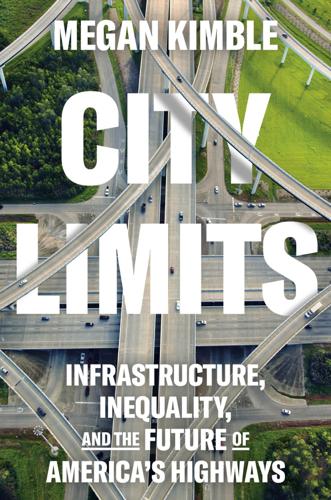
City Limits: Infrastructure, Inequality, and the Future of America's Highways
by
Megan Kimble
Published 2 Apr 2024
The new code would reduce the annual cost of transportation for most households from $11,200 to $8,500 and decrease transportation-related greenhouse gas emissions per household by 25 percent. But Austin did not get a new land development code. In early March 2020, as the threat of a novel coronavirus loomed, a group of nineteen homeowners sued the city, saying it had denied them the right to protest zoning changes that affected their properties. The City of Austin maintained those rights didn’t apply in a comprehensive zoning update, which affected every property owner in the city. A district judge sided with the homeowners.
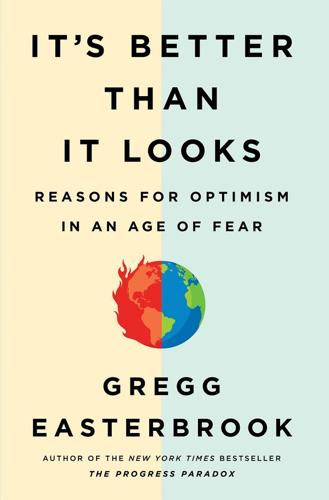
It's Better Than It Looks: Reasons for Optimism in an Age of Fear
by
Gregg Easterbrook
Published 20 Feb 2018
Other twenty-first-century disease outbreaks followed a similar pattern. In 2009, swine flu was widely believed to be proliferating relentlessly, predicted to cause millions of deaths. Instead, the 2009 swine flu killed around 18,000 people worldwide, which was terrible, but far less than the death toll from pneumonia that year. In 2012, a coronavirus was detected moving from camels to people in Saudi Arabia. The disease, Middle East respiratory syndrome (MERS), was declared an extraordinary threat. An official of the Council on Foreign Relations, citadel of the American establishment, said MERS could be the “new Black Death,” predicting that one-quarter of the population of Europe and Africa would die from the condition.

Billionaires' Row: Tycoons, High Rollers, and the Epic Race to Build the World's Most Exclusive Skyscrapers
by
Katherine Clarke
Published 13 Jun 2023
CHAPTER 24 New York on Pause On March 20, 2020, Kelly Kennedy Mack, the president of new development marketing at Corcoran Sunshine, sat on the edge of the sofa at her family’s home on Long Island, glued to the television. On the screen addressing a bank of cameras was New York governor Andrew Cuomo. He was announcing that he was taking the drastic step to put New York “on pause,” owing to the rapid rise in the city’s coronavirus case count. The new virus had burst into the public’s consciousness just weeks before, but to most it had seemed far off. Now the number of recorded cases was rising quickly across the state—at more than seven thousand, the total was seven times the number recorded in any other U.S. state. Now all nonessential workers were instructed to stay home effective immediately and not leave unless to seek food or medical care.

Lonely Planet Peru
by
Lonely Planet
He avoided impeachment due to a lack of votes – despite later evidence which showed his supporters were buying votes to save his presidency. He resigned prior to a second scheduled impeachment vote and was replaced by Vice President Martin Vizcarra in 2018. Scandals continued into 2020 compounded by the emergence of the coronavirus pandemic that hit Peru early and hard. With GDP falling 30% and the country logging a higher death rate per million than any other South American nation except Brazil, problems quickly mounted. President Vizcarra was impeached twice in 2020 on charges of ‘influence peddling’ and ‘moral incapacity’.
…
c 850 The Chimú begin development of Chan Chan, outside present-day Trujillo, a sprawling adobe urban center. 1100–1200 The Incas emerge as a presence in Cuzco; according to legend, they were led to the area by a divine figure known as Manco Cápac and his sister Mama Ocllo. 1438–71 The reign of Inca Yupanqui – also known as Pachacutec – represents a period of aggressive empire-building for the Incas; during this time, Machu Picchu and Saqsaywamán are built. 1492 Funded by the Spanish Crown, Genoa-born Christopher Columbus arrives in the Americas. 1493 Inca Huayna Cápac begins his reign, pushing the empire north to Colombia; his untimely death in 1525 – probably from smallpox – leaves the kingdom fatally divided. 1532 Atahualpa wins a protracted struggle for control over Inca territories; at virtually the same time, the Spanish land in Peru – in less than a year, Atahualpa is dead, executed by Francisco Pizarro. 1572 Túpac Amaru, the monarch who had established an Inca state independent of the Spanish at Vilcabamba, is captured and beheaded by colonial authorities. 1609 Mestizo writer and thinker El Inca Garcilaso de la Vega publishes Los comentarios reales (The Royal Commentaries), a celebrated narrative of Inca life before and after the conquest. 1611 Diego Quispe Tito, one of the most renowned painters of the so-called ‘Cuzco School’ movement of religious painting, is born in the southern highlands. 1613 Guamán Poma de Ayala pens a 1200-page missive to the Spanish king detailing poor treatment of indigenous people; it lies forgotten until 1908, when it’s discovered in a Danish archive. 1671 Santa Rosa de Lima, the patron saint of Peru and the Americas, is canonized by Pope Clement X. 1717 The Spanish Crown establishes the Viceroyalty of New Granada, covering modern-day Ecuador, Colombia and Panama – reducing the Peruvian viceroyalty’s power and reach. 1781 Inca noble Túpac Amaru II (born José Gabriel Condorcanqui) is executed by the Spanish in Cuzco after leading an unsuccessful indigenous rebellion. 1810 Painter Pancho Fierro, a watercolorist known for recording daily life, is born in Lima; his paintings helped define a uniquely Peruvian identity. 1821 José de San Martín declares Peru independent, but true sovereignty doesn’t come until Simón Bolívar’s forces vanquish the Spanish in battles at Junín and Ayacucho three years later. 1826 The last of the Spanish military forces depart from Callao, after which the country descends into a period of anarchy. 1845 Ramón Castilla begins the first of four nonconsecutive presidential terms, bringing some degree of stability to Peru. 1872 Scholar Ricardo Palma publishes the first of a series of books – known as the Tradiciones peruanas – that chronicle a distinctly criollo (Creole) folklore. 1879–83 Chile wages war against Peru and Bolivia over nitrate-rich lands in the Atacama Desert; Peru loses the conflict – in addition to its southernmost region of Tarapacá. 1892 Poet César Vallejo is born in the highlands; he lives for only 46 years, but his spare phrasing and socially conscious themes make him one of the continent’s transformative literary figures. 1895 Nicolás de Piérola is elected president, beginning a period of relative stability buoyed by a booming world economy. 1911 US historian Hiram Bingham arrives at the ruins of Machu Picchu; his ‘discovery’ of the ancient city is chronicled in National Geographic. 1924 Northern political leader Víctor Raúl Haya de la Torre founds APRA, a populist, anti-imperialist political party that is immediately declared illegal. 1928 Journalist and thinker José Carlos Mariátegui publishes the Seven Interpretive Essays on Peruvian Reality, which heavily critiques the feudal nature of his country’s society. 1932 More than 1000 APRA party followers are executed by the military at the ancient ruins of Chan Chan, following an uprising in Trujillo. 1948 General Manuel Odría assumes power for eight years, encouraging foreign investment and cracking down on the APRA movement. 1962 Mario Vargas Llosa publishes La ciudad y los perros (The Time of the Hero), an experimental novel set at a military academy in Lima. 1968 General Juan Velasco Alvarado takes power in a coup d’état; in his seven years in office, he promulgates a populist agenda that involves ‘Peruvianization’ of all industry. 1970 A 7.7-magnitude earthquake in northern Peru kills almost 80,000 people, and leaves 140,000 injured and another 500,000 homeless. 1980 Guerrilla group Sendero Luminoso (Shining Path) takes its first violent action – burning ballot boxes – in the Ayacucho region; the incident draws little notice from the press. 1980 Fernando Belaúnde Terry becomes the first democratically elected president after a 12-year military dictatorship, but his term is plagued by economic instability and violence in the Andes. 1983 In one of the more high-profile massacres of the internal conflict, eight journalists are murdered in the Andean town of Uchuraccay. 1985 Alan García becomes president, but his term is marked by hyperinflation and increased attacks by terrorist groups; he flees the country in 1992, plagued by allegations of embezzlement. 1987 Archaeologists working near Lambayeque uncover a rare, undisturbed tomb of a Moche warrior-priest known as El Señor de Sipán. 1990 Alberto Fujimori is elected president; his authoritarian rule leads to improvements in the economy, but charges of corruption plague his administration. 1992 Sendero Luminoso detonates truck bombs in Miraflores, Lima, killing 25 and wounding scores more; following this act, public opinion turns decisively against the guerrillas. 1992 Abimael Guzmán, the founder of Sendero Luminoso, is captured in Lima after he is found hiding out above a dance studio in the well-to-do neighborhood of Surco. 1994 Chef Gastón Acurio opens Astrid y Gastón in the Lima neighborhood of Miraflores; the restaurant helps catapult Peruvian cuisine to international levels. 1996 Guerrillas from the Movimiento Revolucionario Túpac Amaru (MRTA) storm the Japanese ambassador’s residence in Lima and hold 72 hostages for four months. 2000 Fujimori flees to Japan after videos surface showing his intelligence chief bribing officials and the media; the Peruvian legislature votes him out of office. 2001 Alejandro Toledo becomes the first indigenous person to govern an Andean country. 2003 The country’s Truth and Reconciliation Commission releases its final report on Peru’s internal conflict; estimates of the dead reach 70,000. 2005 Construction of the Interoceánica (Transoceanic Hwy), which opens an overland trade route between Peru and Brazil, begins in the southern Amazon Basin. 2009 Fujimori is convicted of embezzlement; this is in addition to prior convictions for authorizing an illegal search and ordering military death squads to carry out extrajudicial killings. 2011 Populist former army officer Ollanta Humala assumes the presidency after winning a tight run-off election against Fujimori’s daughter Keiko. 2011 A state of emergency is declared in four provinces following massive protests against mining projects, due to environmental concerns. 2016 Economist Pedro Pablo Kuczynski wins the presidential race against Keiko Fujimori. 2018 Facing scandals and impeachment, President Kuczynski resigns from office and is succeeded by Vice President Martín Vizcarra. 2020 Political crises, violent protests and the coronavirus pandemic see Peru getting through three presidents in less than two weeks. Peru’s Cuisine In Peru, fusion is a natural part of everyday cooking. Over the past 400 years, Andean stews have mingled with Asian stir-fries, and Spanish rice dishes have absorbed Amazonian flavors, to produce the country’s famed criollo cooking.
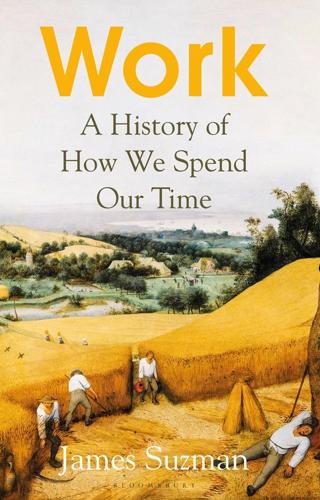
Work: A History of How We Spend Our Time
by
James Suzman
Published 2 Sep 2020
Included among them are a bucketload of gastrointestinal diseases, bacterial pathogens like anthrax and tuberculosis, parasites like toxoplasmosis, and viral pathogens like measles and influenza. And our history of consuming wild animals from pangolins to bats has introduced numerous pathogens to our species, including SARS and SARS-CoV-2 coronavirus. The difference is that in the deep past when human populations were considerably smaller and widely dispersed, these outbreaks usually died off as soon as they killed their hosts or their hosts developed an immunity to the pathogens. These microscopic pathogens are less mysterious now than they were in the past.
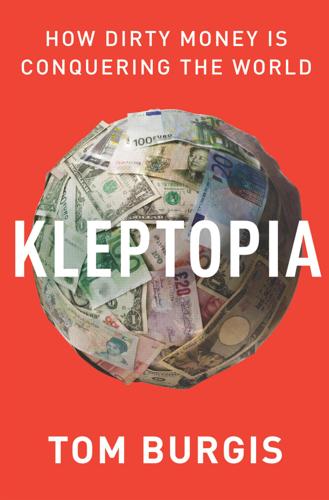
Kleptopia: How Dirty Money Is Conquering the World
by
Tom Burgis
Published 7 Sep 2020
What money he was managing to bring in came from ‘like-minded Kazakhs who share my political goals of overthrowing the dictatorial and undemocratic regime of Kazakhstan’. Those Kazakhs risked imprisonment for supporting him, Ablyazov wrote, and Nazarbayev’s surveillance was as constant as ever. So Ablyazov’s backers avoided communicating with him by phone or email and instead came to see him in France. Ablyazov told the judge the coronavirus lockdown had prevented his benefactors bringing him money. ‘I have no funds of my own,’ he wrote, not even enough to hire a lawyer. In Geneva, Iliyas Khrapunov was spending so much time fighting the Kazakhs’ lawsuits that he was practically a self-taught lawyer himself. Judges in Switzerland ruled Kazakhstan’s request for legal assistance in pursuit of Iliyas’s parents unlawful.

Make Your Own Job: How the Entrepreneurial Work Ethic Exhausted America
by
Erik Baker
Published 13 Jan 2025
The sad fact, however, was that entrepreneurship was simply “not a feasible reality for a vast majority of people.”46 These Redditors are not the only disaffected workers who have come to see entrepreneurship as a way to escape from a toxic, oppressive mainstream work culture. The resignation boom, it turns out, was accompanied by a similarly unprecedented spike in applications for new businesses. “‘The Great Resignation’ is creating more entrepreneurs,” Yahoo’s news service trumpeted. NBC was even more emphatic: “The coronavirus pandemic has created a landscape in which entrepreneurs and startups can thrive and new innovations can break ground.” While cautioning that not every pandemic startup would succeed, Jax Kirtley of the Wharton School still deemed pandemic entrepreneurship to be “fantastic in a lot of ways.” Quitters were not simply fed up with work, Kirtley argued, but in many cases had chosen to “embrace this opportunity to do something different.”47 Such celebrations of Covid’s unexpected entrepreneurial side effects often failed to mention that much of the spike in new business applications could be attributed to an influx of workers into the gig economy, because full-time “independent contractors” are required to obtain a business license in many states.
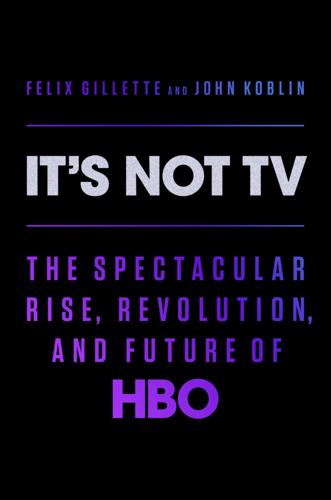
It's Not TV: The Spectacular Rise, Revolution, and Future of HBO
by
Felix Gillette
and
John Koblin
Published 1 Nov 2022
In the years that followed, Hehir would go on to direct a series of award-winning sport documentaries for ESPN’s 30 for 30 franchise. And in 2020, he would create The Last Dance, a multipart series about the Chicago Bulls for ESPN and Netflix, which would become the most watched documentary in ESPN’s history—and one of the biggest cultural hits in America during the early months of the coronavirus pandemic. For years, first under Bewkes, then Albrecht, HBO Sports had grown less and less central to the network’s mission. Now, thoroughly marginalized, HBO Sports was driving a budding star into the arms of a rival. “HBO Sports was at the time the antithesis of forward-thinking HBO,” Hehir says.
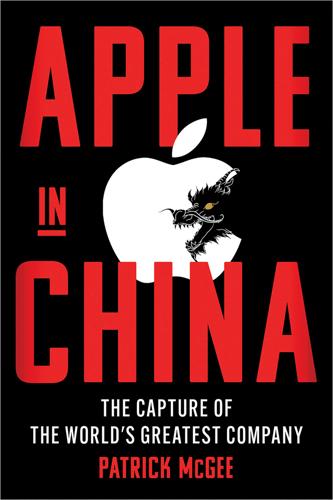
Apple in China: The Capture of the World's Greatest Company
by
Patrick McGee
Published 13 May 2025
“Quite simply, you don’t get to do business in China today without doing exactly what the Chinese government wants you to do. Period. No one is immune. No one.” CHAPTER 38 GLOBAL PANDEMIC An Apple engineer was in Wuhan with his wife when the city entered lockdown on January 23, 2020, an extreme measure designed to isolate a threat the authorities had ignored, downplayed, and covered up for weeks. A novel coronavirus called COVID-19 was rapidly spreading, leaving behind a trail of dead bodies and unanswered questions. The couple wanted to return to the United States but domestic flights from Wuhan to the East Coast of China were abruptly canceled. The authorities barricaded the streets, blocking cars from moving from one area to the next.
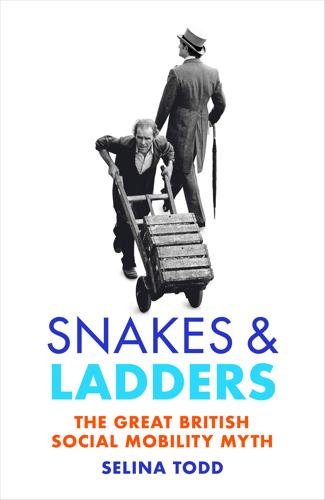
Snakes and Ladders: The Great British Social Mobility Myth
by
Selina Todd
Published 11 Feb 2021
Supermarket staff, paramedics, hospital cleaners and social care workers are essential to our society. Yet they are offered few material rewards and little scope for training or further education. Many are paid below the minimum wage.9 Staff sickness and turnover rates are very high in the social care sector. ‘Coronavirus has forced us to rethink who we value and how’, wrote the Financial Times correspondent Sarah O’Connor in April 2020. ‘Some of the workers we have left to languish in low-paid and insecure jobs are the very ones we cannot live without’.10 We therefore have some jobs that are highly desirable but to which entry is conditional on leaping social barriers, and others – equally demanding and at least as necessary – which often don’t pay people enough to live on.

Blood in the Machine: The Origins of the Rebellion Against Big Tech
by
Brian Merchant
Published 25 Sep 2023
A 2020 report from the Economic Policy Institute Lawrence Mishel and Jori Kandra, “CEO Compensation Surged 14 Percent in 2019 to $21.3 Million,” Economic Policy Institute, August 18, 2020. “CEOs now earn 320 times as much as a typical worker.” 10. “the richest 0.1 percent” David Leonhardt and Yaryna Serkez, “America Will Struggle after Coronavirus. These Charts Show Why,” New York Times, April 10, 2020. 11. “Why does everybody suddenly hate billionaires?” Roxanne Roberts, “Why Does Everybody Suddenly Hate Billionaires? Because They’ve Made It Easy,” Washington Post, March 13, 2019. 12. Polls conducted in 2021 Theodore Schleifer, “What Americans Really Think about Billionaires during the Pandemic,” Vox, Mar 30, 2021.

Lonely Planet Belgium & Luxembourg
by
Lonely Planet
While warring factions squabbled, a caretaker government managed day-to-day affairs. This was headed by Sophie Wilmès, who became Belgium’s first female prime minister when she took the reins in 2019. Expected to stay out of the limelight, Wilmès instead found herself grappling with the nation’s greatest crisis since WWII when the coronavirus pandemic claimed thousands of lives and the economy cratered – with GDP shrinking by 6.2% in 2020. Wilmès herself contracted the disease and spent nearly a week in intensive care. The political fighting finally came to an end in October 2020, when the 44-year-old Flemish Liberal Alexander De Croo became prime minister.

Fodor's Essential Belgium
by
Fodor's Travel Guides
Published 23 Aug 2022
The smell is something else entirely, but kids will love dressing up in the overalls and stomping around this hidden world. Know Before You Go GET YOUR COVID-19 PAPERWORK SORTED For as long as COVID-19 is with us, all travelers to Belgium, even if entering overland from a neighboring country, need to complete a Passenger Locator Form (PLF) online (travel.info-coronavirus.be) , no more than 48 hours before arriving, providing a local address and other information; you’ll be sent a QR code to present at passport control. The only exception to this is if you arrive overland and stay for less than 48 hours. Chances are you will also need proof of vaccination or recovery, and—if arriving by air—a negative PCR test before traveling.
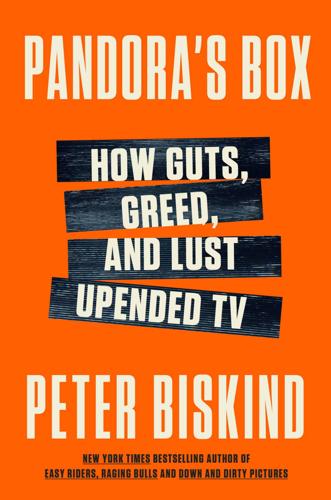
Pandora's Box: How Guts, Guile, and Greed Upended TV
by
Peter Biskind
Published 6 Nov 2023
She Is ‘Livid’ About What She Saw,” CNN Business, July 17, 2019, https://www.cnn.com/2019/07/16/media/abigail-disney-disneyland-undercover/index.html; Jordan Valinsky, “Abigail Disney on Disney Furloughs: ‘What the Actual F—?,’” CNN Business, July 22, 2020, https://www.cnn.com/2020/04/22/business/abigail-disney-furloughs-bonus-pay-coronavirus-trnd/index.html. 58. “Top filmmakers are dying”: Matthew Belloni, “It’s Time to Take Star Wars Movies Away from Kathy Kennedy,” Puck, November 14, 2021, https://puck.news/its-time-to-take-star-wars-movies-away-from-kathy-kennedy. 59. “borderline corporate negligence”: Matthew Belloni, “The Next Star Wars Movie Terrifies Lucasfilm,” Puck, October 23, 2022, https://puck.news/the-next-star-wars-movie-terrifies-lucasfilm. 60. recommended rewatching five films: Sarah Bahr, “What to Know Before Seeing Doctor Strange in the Multiverse of Madness,” New York Times, May 4, 2022, https://www.nytimes.com/2022/05/04/movies/doctor-strange-multiverse-of-madness-preview.html. 61.
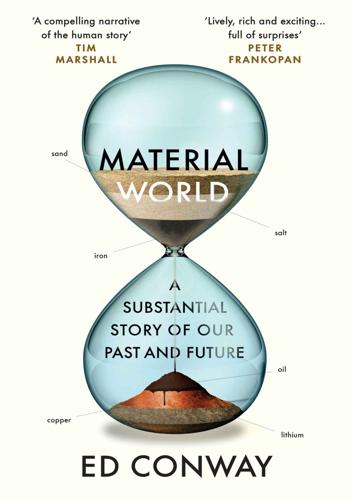
Material World: A Substantial Story of Our Past and Future
by
Ed Conway
Published 15 Jun 2023
The latest such chips can fit roughly 15 million transistors into a dot the size of a single full stop on this page. The transistors in today’s smartphones are not just smaller than a red blood cell (about a thousand times smaller, as it happens); they are smaller than the COVID-19 virus. Actually you could fit four of them inside a coronavirus, each transistor having about the same dimensions as one of the virus’s spike proteins, those club-like tendrils radiating out from its centre. It is tempting to describe these features as microscopic but, at the risk of being pedantic, today’s transistors are even smaller than the wavelength of visible light and are thus totally indiscernible to the naked eye through even the most powerful conventional microscope.

The Quiet Coup: Neoliberalism and the Looting of America
by
Mehrsa Baradaran
Published 7 May 2024
Melinda Cooper, Family Values: Between Neoliberalism and the New Social Conservatism (New York: Zone Books, 2017), 174. 57. Cooper, Family Values, 170–72. 58. Martha Ainsworth and A. Mead Over, “Confronting AIDS: Public Priorities in a Global Epidemic,” World Bank, 1997, 106. 59. Ainsworth and Over, “Confronting AIDS,” 105–6. 60. Isaac Chotiner, “The Contrarian Coronavirus Theory That Informed the Trump Administration,” New Yorker, March 30, 2020. 61. Ludwig von Mises, “Economic Nationalism and Peaceful Economic Cooperation,” in Money, Method, and the Market Process: Essays by Ludwig von Mises, ed. Richard M. Ebeling (Norwell, MA: Kluwer Academic, 1990). CHAPTER 6: THE CONSCIENCE OF CAPITALISM 1.

The Aristocracy of Talent: How Meritocracy Made the Modern World
by
Adrian Wooldridge
Published 2 Jun 2021
A Pew poll in 2019, for example, found that 73 per cent of Americans, including 62 per cent of African-Americans, say that colleges should refrain from taking race or ethnicity into account when making decisions about student admissions.5 Meritocracy straddles the East–West divide. In his address to the National Congress of the Communist Party of China in 2017 President Xi urged the Party to select officials ‘on the basis of merit regardless of social background’.6 His acolytes never miss an opportunity to point out that China’s relative success in fighting the Coronavirus pandemic compared with the West is proof of its superior ability to choose its leaders. Singapore pays top civil servants more than $1 million a year in salary and performance bonuses. South Koreans worship the American Ivy League even more fervently than Americans do themselves. And the divide between the public and private sectors too: successful civil services the world over have introduced elite streams and merit-based promotion; successful firms, such as McKinsey and Goldman Sachs, sell themselves on the basis of their brain power; the tech industry regards itself as meritocracy incarnate.
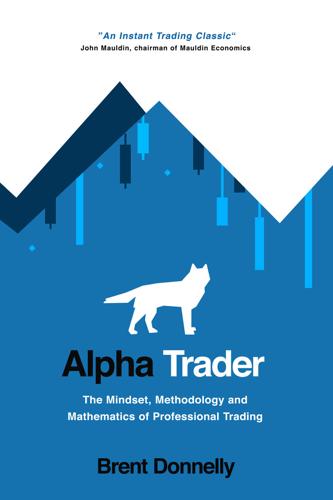
Alpha Trader
by
Brent Donnelly
Published 11 May 2021
Note in Figure 7.11 how USDJPY bashed against 108.00 four times (four arrows) before a huge false break and then it retested the 108.00 level again afterwards (fifth arrow). I am therefore adding a short USDJPY recommendation. You could either sell here or leave an offer at 107.75 with a stop at 108.26. With ISM and payrolls tomorrow, there is a decent chance you get done. And with Yield Curve Control on the horizon and the explosion of coronavirus cases in the US South, I doubt strong US data will impact yields much. Note by leaving an order to sell above market at 107.75 through nonfarm payrolls, I attempt to take advantage of the noisy volatility created by an event I think is meaningless to get set at a good level on a trade I like for a bunch of reasons.
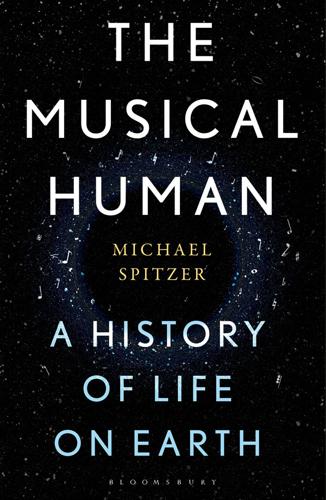
The Musical Human: A History of Life on Earth
by
Michael Spitzer
Published 31 Mar 2021
But digitisation gets at the very atoms of sound itself, transforming continuous soundwaves into a row of zeros and ones, into code.18 As binary data, sampled at a frequency of 44,100 cycles per second, music can be copied, pasted, manipulated, transmitted, downloaded and infinitely re-edited with no loss of data quality, making extinct the distinction between ‘original’ and ‘copy’.19 If everything is number, and the only reality is information flow, there is no difference between the Covid-19 virus, the coronavirus, computer code, the prime minister and the ‘Ode to Joy’. And yet, for all its shock, awe and wonder, the digital revolution is arguably no such thing: it is an evolution extrapolating old tendencies. The idea that the world was governed by mathematical proportions that music reveals goes back to the ancient Greeks and Babylonians, as we have seen (Chapter 6).

Generations: The Real Differences Between Gen Z, Millennials, Gen X, Boomers, and Silents—and What They Mean for America's Future
by
Jean M. Twenge
Published 25 Apr 2023
Millennials’ lives and mental health have been influenced by online interaction, but most spent their formative years before it completely took over. Who did spend their teen years in the age of the smartphone? That would be Gen Z. Event Interlude: The COVID-19 Pandemic At first, the news seemed far away to people in the U.S.: In January 2020, a novel coronavirus was sickening people in Wuhan, China, leading to a lockdown of the city and the quick construction of hospitals to quarantine the infected. The hope was that the virus might not spread widely in North America. When a man in Washington State tested positive for the virus on January 15, 2020, the CDC announced that the risk to the public “remains low at this time,” adding, “it’s unclear how easily this virus is spreading between people.”
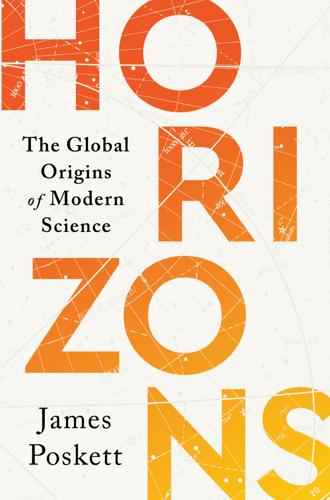
Horizons: The Global Origins of Modern Science
by
James Poskett
Published 22 Mar 2022
(Manchester: Manchester University Press, 2017) for a general account of both the geopolitics and the economics. 5Piketty, Capital in the Twenty-First Century, 31 and 412. 6‘Notice of the State Council: New Generation of Artificial Intelligence Development Plan’, Foundation for Law and International Affairs, accessed 12 December 2020, https://flia.org/wp-content/uploads/2017/07/A-New-Generation-of-Artificial-Intelligence-Development-Plan-1.pdf (translation by Flora Sapio, Weiming Chen, and Adrian Lo), ‘Home’, Beijing Academy of Artificial Intelligence, accessed 13 December 2020, https://www.baai.ac.cn/en, and Sarah O’Meara, ‘China’s Ambitious Quest to Lead the World in AI by 2030’, Nature 572 (2019). 7‘New Generation of Artificial Intelligence Development Plan’, and Kai-Fu Lee, AI Superpowers: China, Silicon Valley, and the New World Order (New York: Houghton Mifflin Harcourt, 2018), 227. 8Huiying Liang et al., ‘Evaluation and Accurate Diagnoses of Pediatric Diseases Using Artificial Intelligence’, Nature Medicine 25 (2019), and Tanveer Syeda-Mahmood, ‘IBM AI Algorithms Can Read Chest X-Rays at Resident Radiologist Levels’, IBM Research Blog, accessed 16 December 2020, https://www.ibm.com/blogs/research/2020/11/ai-x-rays-for-radiologists/. 9Lee, AI Superpowers, 14–17, and Drew Harwell and Eva Dou, ‘Huawei Tested AI Software That Could Recognize Uighur Minorities and Alert Police, Report Says’, Washington Post, accessed 16 December 2020, https://www.washingtonpost.com/technology/2020/12/08/huawei-tested-ai-software-that-could-recognize-uighur-minorities-alert-police-report-says/. 10Karen Hao, ‘The Future of AI Research is in Africa’, MIT Technology Review, accessed 16 December 2020, https://www.technologyreview.com/2019/06/21/134820/ai-africa-machine-learning-ibm-google/, and ‘Moustapha Cissé’, African Institute for Mathematical Sciences, accessed 13 December 2020, https://nexteinstein.org/person/moustapha-cisse/. 11Shan Jie, ‘China Exports Facial ID Technology to Zimbabwe’, Global Times, accessed 14 December 2020, https://www.globaltimes.cn/content/1097747.shtml, and Amy Hawkins, ‘Beijing’s Big Brother Tech Needs African Faces’, Foreign Policy, accessed 14 December 2020, https://foreignpolicy.com/2018/07/24/beijings-big-brother-tech-needs-african-faces/. 12Elizabeth Gibney, ‘Israel–Arab Peace Accord Fuels Hope for Surge in Scientific Research’, Nature 585 (2020). 13Eliran Rubin, ‘Tiny IDF Unit is Brains behind Israel Army Artificial Intelligence’, Haaretz, accessed 12 December 2020, https://www.haaretz.com/israel-news/tiny-idf-unit-is-brains-behind-israeli-army-artificial-intelligence-1.5442911, and Jon Gambrell, ‘Virus Projects Renew Questions about UAE’s Mass Surveillance’, Washington Post, accessed 12 December 2020, https://www.washingtonpost.com/world/the_americas/virus-projects-renew-questions-about-uaes-mass-surveillance/2020/07/09/4c9a0f42-c1ab-11ea-8908-68a2b9eae9e0_story.html. 14Agence France-Presse, ‘UAE Successfully Launches Hope Probe’, The Guardian, accessed 20 November 2020, http://www.theguardian.com/science/2020/jul/20/uae-mission-mars-al-amal-hope-space, and Elizabeth Gibney, ‘How a Small Arab Nation Built a Mars Mission from Scratch in Six Years’, Nature, accessed 9 July 2020, https://www.nature.com/immersive/d41586-020-01862-z/index.html. 15Gibney, ‘How a Small Arab Nation’, and Sarwat Nasir, ‘UAE to Sign Agreement with Virgin Galactic for Spaceport in Al Ain Airport’, Khaleej Times, accessed 16 December 2020, https://www.khaleejtimes.com/technology/uae-to-sign-agreement-with-virgin-galactic-for-spaceport-in-al-ain-airport. 16‘UAE Successfully Launches Hope Probe’ and Jonathan Amos, ‘UAE Hope Mission Returns First Image of Mars’, BBC News, accessed 16 February 2021, https://www.bbc.co.uk/news/science-environment-56060890. 17Smriti Mallapaty, ‘How China is Planning to Go to Mars amid the Coronavirus Outbreak’, Nature 579 (2020), ‘China Becomes Second Nation to Plant Flag on the Moon’, BBC News, accessed 4 December 2020, https://www.bbc.com/news/world-asia-china-55192692, and Jonathan Amos, ‘China Mars Mission: Tianwen-1 Spacecraft Enters into Orbit’, BBC News, accessed 16 February 2021, https://www.bbc.co.uk/news/science-environment-56013041. 18Çağrı Mert Bakırcı-Taylor, ‘Turkey Creates Its First Space Agency’, Nature 566 (2019), Sanjeev Miglani and Krishna Das, ‘Modi Hails India as Military Space Power after Anti-Satellite Missile Test’, Reuters, accessed 16 December 2020, https://uk.reuters.com/article/us-india-satellite/modi-hails-india-as-military-space-power-after-anti-satellite-missile-test-idUKKCN1R80IA, and Umar Farooq, ‘The Second Drone Age: How Turkey Defied the U.S. and Became a Killer Drone Power’, The Intercept, accessed 16 February 2021, https://theintercept.com/2019/05/14/turkey-second-drone-age/. 19John Houghton, Geoffrey Jenkins, and J.

The Library: A Fragile History
by
Arthur Der Weduwen
and
Andrew Pettegree
Published 14 Oct 2021
In the twenty years since its foundation, the new Alexandria library has settled into its role as a major cultural institution, host to conferences, seminars, concerts, theatrical performances and the Alexandria International Book Fair. Its fifteen permanent exhibitions and striking architecture draw a steady stream of visitors, 1.5 million a year before its temporary closure in the 2020 coronavirus pandemic. Its book collections remain stable at about 2 million copies, well below the 8 million capacity, as the Bibliotheca Alexandrina, like other libraries, shifts its focus towards serving a worldwide community of readers through digital access to its collections. Most of all, the Bibliotheca Alexandrina serves as a symbol: of a worldwide commitment to the value of education as a means of empowerment, and the place of information at its heart.

The Price of Time: The Real Story of Interest
by
Edward Chancellor
Published 15 Aug 2022
Furthermore, complex and costly new financial regulations created a false impression of security. Lord King concluded that we were sleepwalking towards another crisis. His talk was entitled ‘The World Turned Upside Down’.1 Little did he know what lay in store. On Thursday 12 March 2020, the world’s financial markets crashed. A natural response to the gathering coronavirus pandemic, one might think. But this wasn’t an ordinary market dislocation. If the global financial crisis resembled a slow-motion train wreck, this was ‘the fastest and most violent [crash] in history’.2 The Dow Jones lost 10 per cent of its value, and Italy’s MIB index fell nearly 18 per cent on a single day.

Slouching Towards Utopia: An Economic History of the Twentieth Century
by
J. Bradford Delong
Published 6 Apr 2020
In such circumstances, people will decide that they would rather hold extra cash instead of expensive and dubious investment vehicles. These decisions, in turn, will lead to an economy-wide excess demand for cash. With it comes the “general glut” of commodities, idle factories, and the high unemployment of a depression. The depressed state of the world economy during the 2020–2022 coronavirus pandemic—not the initial panic shutdown, but later—was such a Keynesian depression. People were willing to pay for financial investment vehicles, and so bond and stock prices were high and bond yields and stock earnings yields were low. But businesses were waiting for the pandemic to pass before they would begin to expand again.

The Singularity Is Near: When Humans Transcend Biology
by
Ray Kurzweil
Published 14 Jul 2005
Severe acute respiratory syndrome (SARS) was sequenced within thirty-one days of the virus being identified by the British Columbia Cancer Agency and the American Centers for Disease Control. The sequencing from the two centers differed by only ten base pairs out of twenty-nine thousand. This work identified SARS as a coronavirus. Dr. Julie Gerberding, director of the CDC, called the quick sequencing "a scientific achievement that I don't think has been paralleled in our history." See K. Philipkoski, "SARS Gene Sequence Unveiled," Wired News, April 15, 2003, http://www.wired.com/news/medtech/0,1286,58481.00.html?tw=wn_story _related.

Devil Take the Hindmost: A History of Financial Speculation
by
Edward Chancellor
Published 31 May 2000
The right-wing SVP remain the biggest party, but saw their share of the vote drop from 29.4 percent to 25.6 percent. Meanwhile, the percentage of women in the National Council rose from 32 to 42 percent, a ratio well above the governments in the UK and US. The year 2020 saw the global spread of the Covid-19 pandemic, with a total of 1.8 million coronavirus cases and around 12,600 deaths recorded in Switzerland at the time of writing. A total of 68.3 percent of the Swiss population has been fully vaccinated at the time of writing. As everywhere else, Switzerland’s tourism industry seriously suffered as a result of the pandemic in 2020. While in 2019, 31,565,550 overnight stays were recorded in Swiss hotels, in 2020 it was just 19,132,215, an almost 40 percent fall.

Israel & the Palestinian Territories Travel Guide
by
Lonely Planet
Symptoms of MERS include fever, coughing and shortness of breath; the illness is spread through close contact, meaning most people are not at risk. Almost one-third of those with confirmed cases of MERS have died, though most of those people had an underlying medical condition. For more details, see www.cdc.gov/coronavirus/mers. Rabies Rabies is rare but present in Israel and the Palestinian Territories so avoid contact with stray dogs and wild animals such as foxes. Spread through bites or licks on broken skin from an infected animal, rabies is fatal. Animal handlers should be vaccinated, as should those travelling to remote areas where a reliable source of post-bite vaccine is not available within 24 hours.
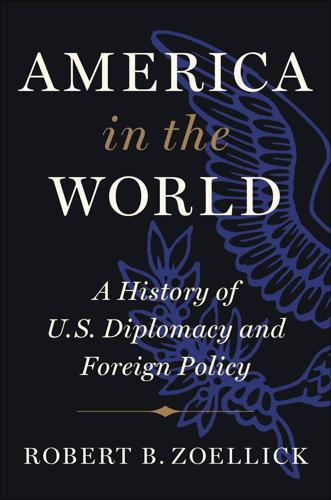
America in the World: A History of U.S. Diplomacy and Foreign Policy
by
Robert B. Zoellick
Published 3 Aug 2020
The president’s Emergency Action Plan for AIDS Relief became the largest international health initiative to combat a specific disease, and Bush’s malaria plan turbocharged the global effort to counter one of the world’s most debilitating diseases. Developments in science, health, and technology will necessitate new international regimes to encourage cooperative action and counter threats. Influenzas and contagious diseases such as SARS and the more recent coronavirus will require the type of initiative and precautions that Bush prioritized and Obama used against Ebola. Cybersecurity—and even warfare—also looms in the future. The “rules” for potential conflict are murky, just as they were for nuclear weapons when Vannevar Bush first contemplated how the atomic bomb would change diplomacy and war.
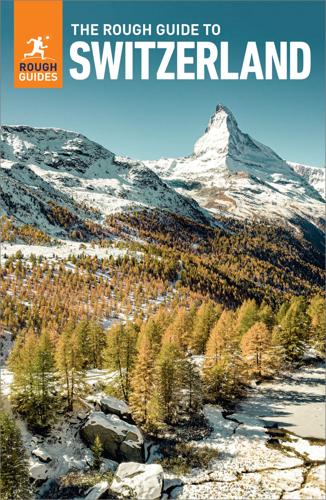
The Rough Guide to Switzerland (Travel Guide eBook)
by
Rough Guides
Published 24 May 2022
The right-wing SVP remain the biggest party, but saw their share of the vote drop from 29.4 percent to 25.6 percent. Meanwhile, the percentage of women in the National Council rose from 32 to 42 percent, a ratio well above the governments in the UK and US. The year 2020 saw the global spread of the Covid-19 pandemic, with a total of 1.8 million coronavirus cases and around 12,600 deaths recorded in Switzerland at the time of writing. A total of 68.3 percent of the Swiss population has been fully vaccinated at the time of writing. As everywhere else, Switzerland’s tourism industry seriously suffered as a result of the pandemic in 2020. While in 2019, 31,565,550 overnight stays were recorded in Swiss hotels, in 2020 it was just 19,132,215, an almost 40 percent fall.

Global Catastrophic Risks
by
Nick Bostrom
and
Milan M. Cirkovic
Published 2 Jul 2008
Coordination between countries is facilitated by the WHO's Global Outbreak and Response Network (GOARN), which links over 100 different health networks that provide support for disease detection and response. During the 2004 SARS outbreak, the WHO established laboratories to link efforts among different countries, which resulted in rapid identification of the disease agent as a coronavirus. The organization is in a position to provide similar support in the event ofdeliberate pandemics. Coordination within and between countries is also necessary to facilitate sharing of disease samples, which are used for production of vaccines and treatments. Determining whether an outbreak is intentional or natural can be difficult, unless forensic analysis can be performed on the genome or protein composition of the organism.

Growth: From Microorganisms to Megacities
by
Vaclav Smil
Published 23 Sep 2019
And the unpredictability of this airborne diffusion of contagious diseases was best illustrated by the transmission of the SARS virus from China to Canada, where its establishment among vulnerable hospital populations led to a second unexpected outbreak (PHAC 2004; Abraham 2005; CEHA 2016). A Chinese doctor infected with severe acute respiratory syndrome (caused by a coronavirus) after treating a patient in Guangdong travelled to Hong Kong, where he stayed on the same hotel floor as an elderly Chinese Canadian woman who got infected and brought the disease to Toronto on February 23, 2003. As a result, while none of other large North American cities with daily flights to Hong Kong (Vancouver, San Francisco, Los Angeles, New York) was affected, Toronto experienced a taxing wave of infections, with some hospitals closed to visitors.
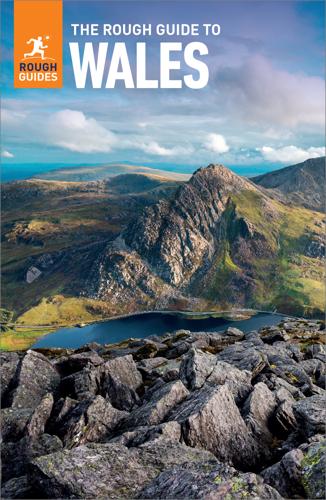
The Rough Guide to Wales
by
Rough Guides
Published 14 Oct 2024
There is also a non-emergency number for the police 101 (10p/call). Health The Covid-19 pandemic caused school closures and the cancellation of various festivals in 2020 and the first part of 2021. For ongoing restrictions, visitors to Wales should check the most up-to-date state guidance at; http://gov.wales/coronavirus, and it should be noted that the guidance in Wales may be different to that of other UK nations. No vaccinations are required for entry into Britain. Citizens of all EU countries are currently entitled to free medical treatment at National Health Service hospitals, though this may change following Brexit; citizens of other countries are charged for all medical services except those administered by accident and emergency units at National Health Service hospitals.

Wanderers: A Novel
by
Chuck Wendig
Published 1 Jul 2019
It wasn’t the worst death—Ebola and other hemorrhagic fevers took that crown—but struggling for breath as your organs failed wasn’t any picnic. Robbie was there as part of containment, but Benji and his team joined a WHO group to help figure out where the hell it was coming from in the first place. The SARS coronavirus was believed to come from bats, which in turn infected civet cats, from which in turn it jumped to humans in Guangdong Province in China, 2002. That led Benji to believe that MERS was similarly zoonotic. His instincts were right. It came from camels. Specifically, camel piss. Seeing the look of bewilderment on Sadie’s face, Benji tried to explain all this, but already Robbie was laughing about it so hard he was wheezing and his eyes were shining.

Palo Alto: A History of California, Capitalism, and the World
by
Malcolm Harris
Published 14 Feb 2023
Xu Lizhi, “I Fall Asleep, Just Standing Like That,” from “The Poetry and Brief Life of a Foxconn Worker: Xu Lizhi (1990–2014),” libcom.org, October 29, 2014, https://libcom.org/article/poetry-and-brief-life-foxconn-worker-xu-lizhi-1990-2014. 12. Lizhi, “A Screw Fell to the Ground,” from “The Poetry and Brief Life of a Foxconn Worker.” 13. “Foxconn to Raise Wages Again at China Plant,” Reuters, October 1, 2010. 14. Tripp Mickle and Yoko Kubota, “Tim Cook and Apple Bet Everything on China. Then Coronavirus Hit,” Wall Street Journal, March 2, 2020. 15. Paul Mozur, “Apple Puts Key Contractor on Probation over Labor Abuses in China,” New York Times, November 9, 2020. 16. David Barboza, “How China Built ‘iPhone City’ with Billions in Perks for Apple’s Partner,” New York Times, December 29, 2016. 17.
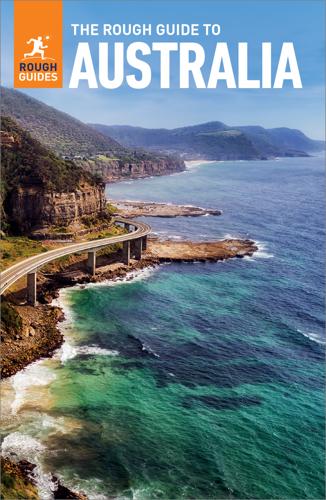
The Rough Guide to Australia (Travel Guide eBook)
by
Rough Guides
Published 14 Oct 2023
Held in March/April, with performances at over fifty venues around town. Melbourne Queer Film Festival http://mqff.com.au. Presents over a hundred LGBTQ+ features, shorts and documentaries, over the course of eleven days (see page 547). Moomba Festival http://moomba.melbourne.vic.gov.au. Held every March since 1955 (bar a small coronavirus-induced absence), this festival has a rather commercial approach, featuring events such as firework displays and dragon-boat races on the banks of the Yarra River in Alexandra Gardens and Docklands. PayPal Melbourne Fashion Festival http://melbournefashionfestival.com.au. An annual two-week-long celebration of fashion and design, with world-class runway shows featuring Australia’s established and emerging designers.